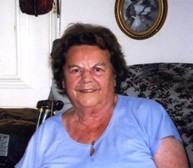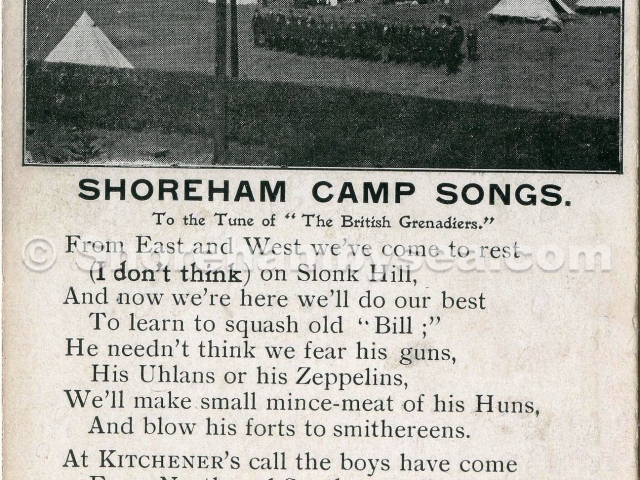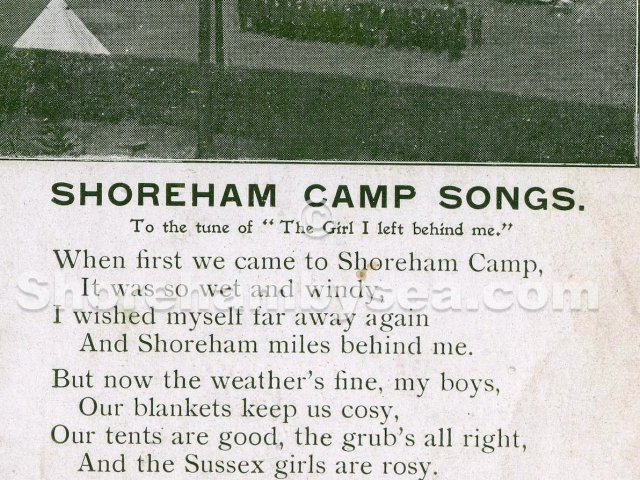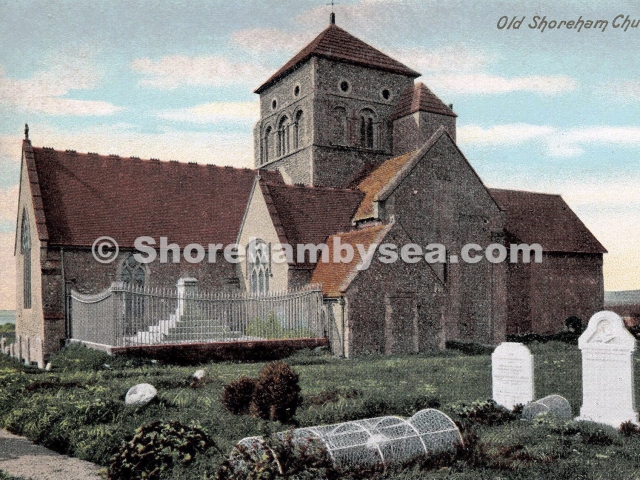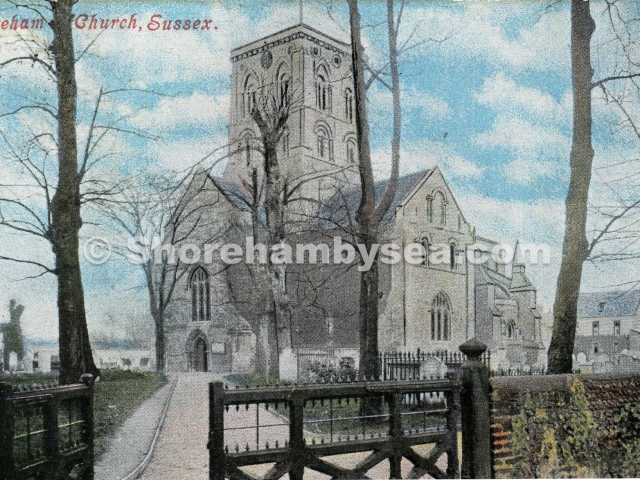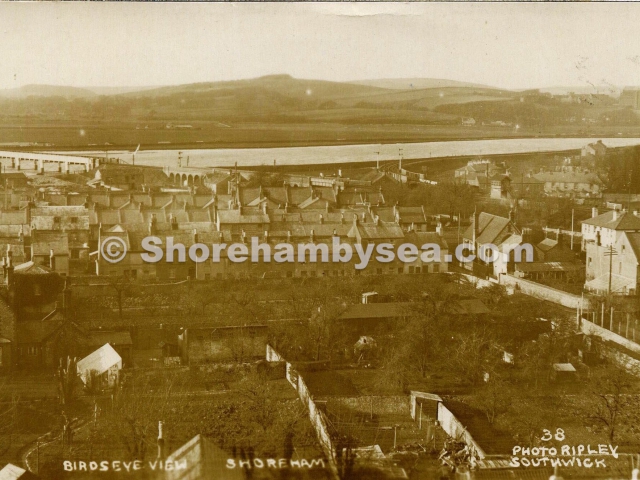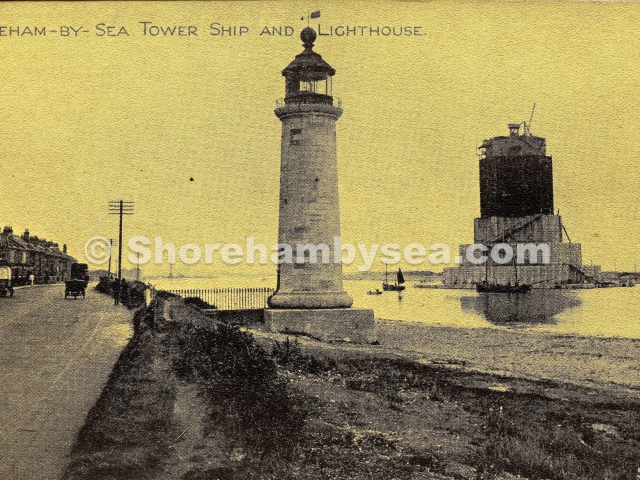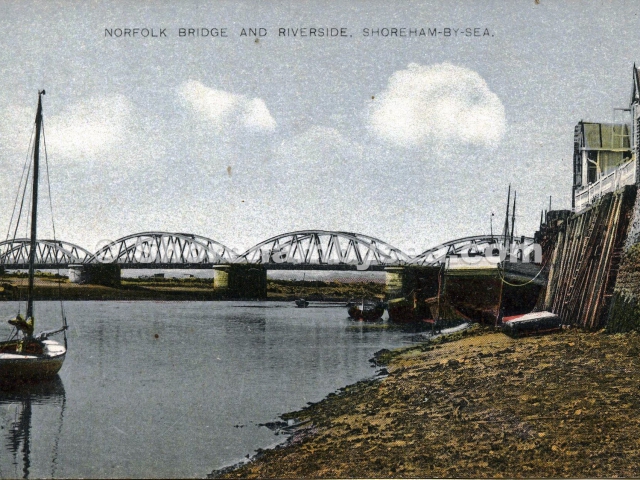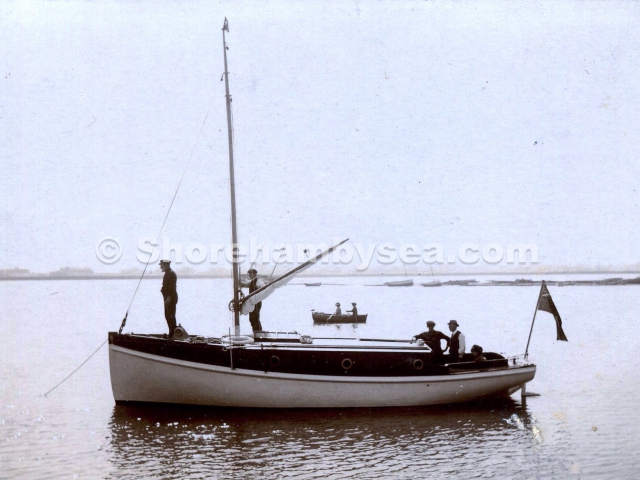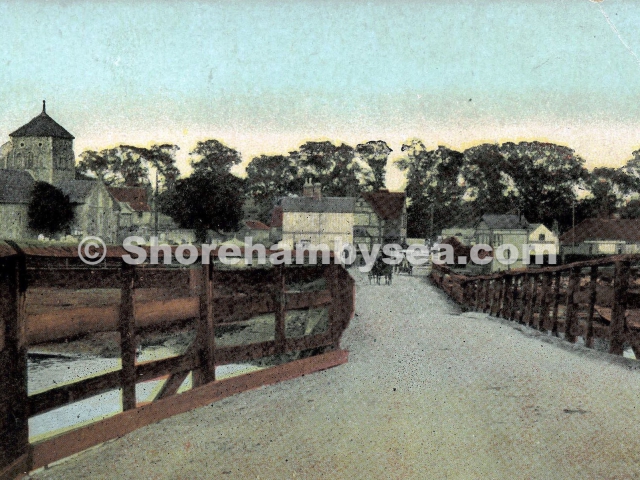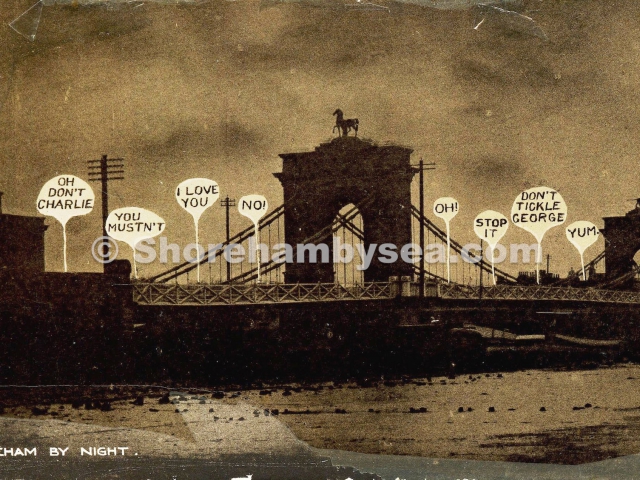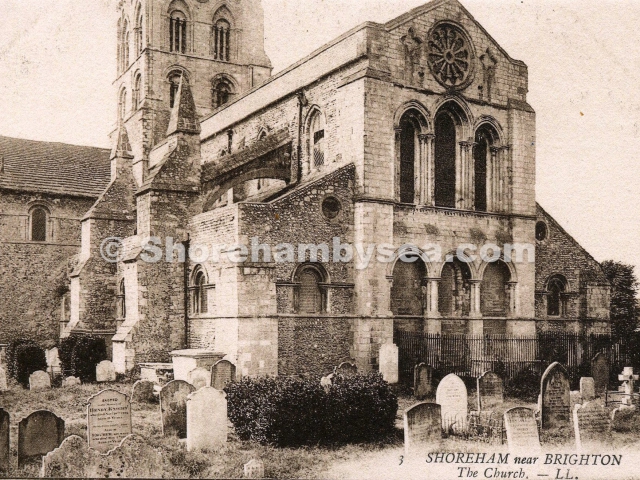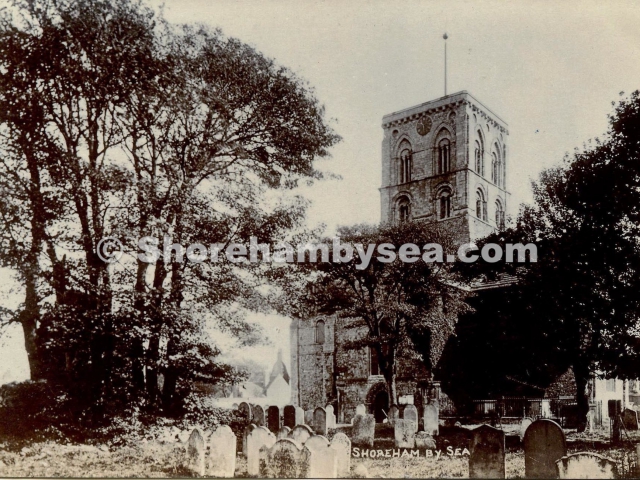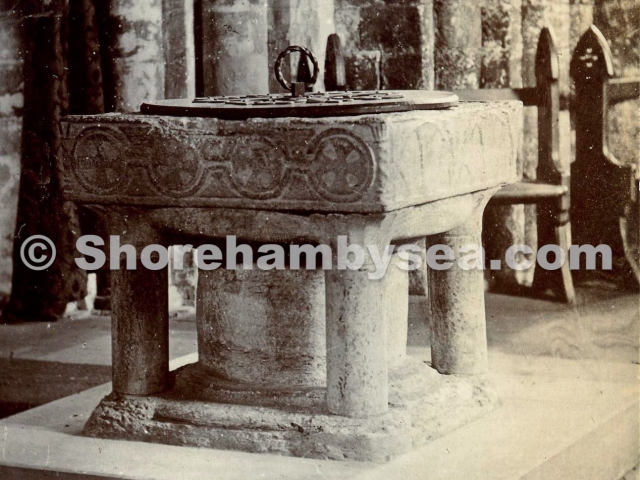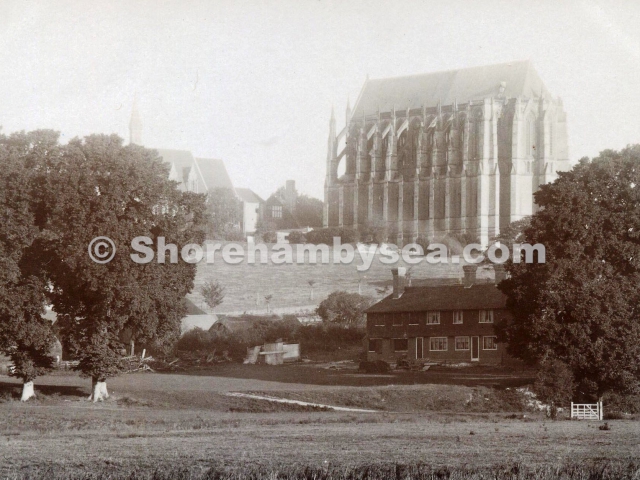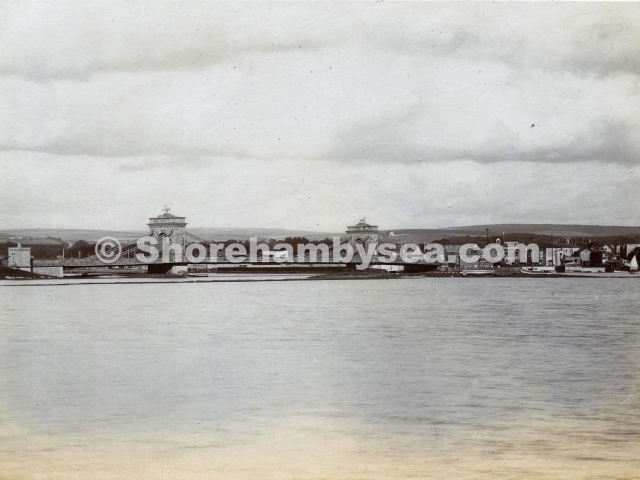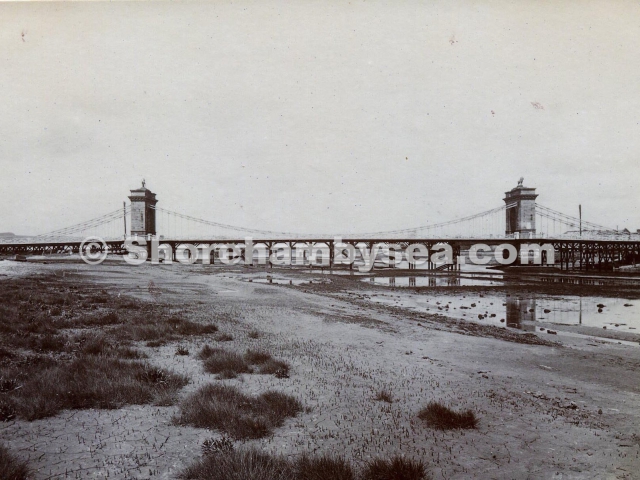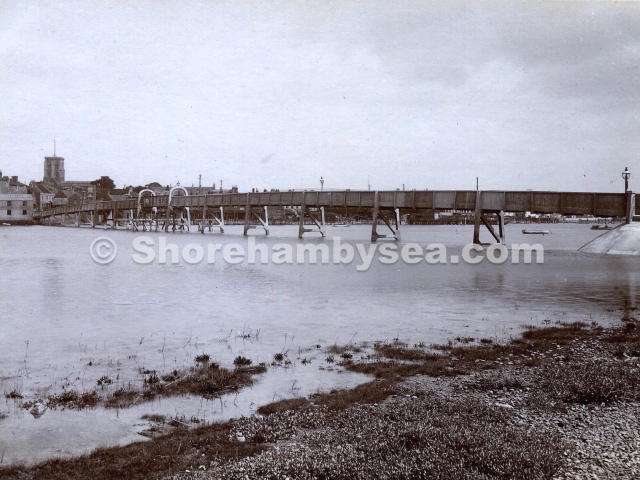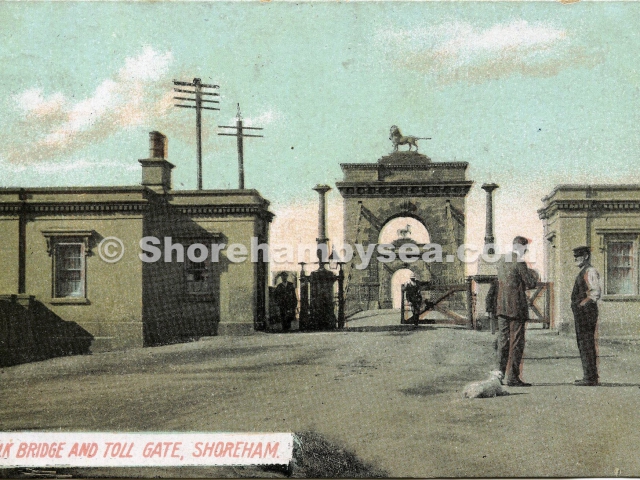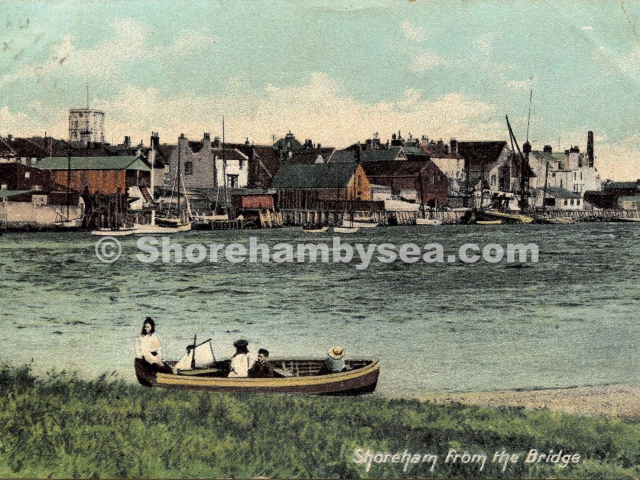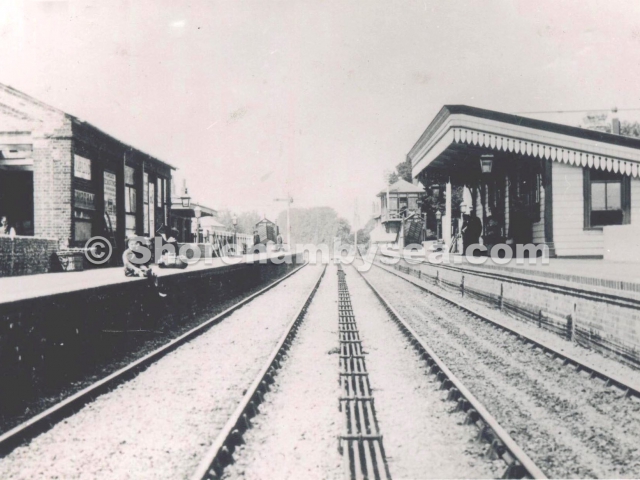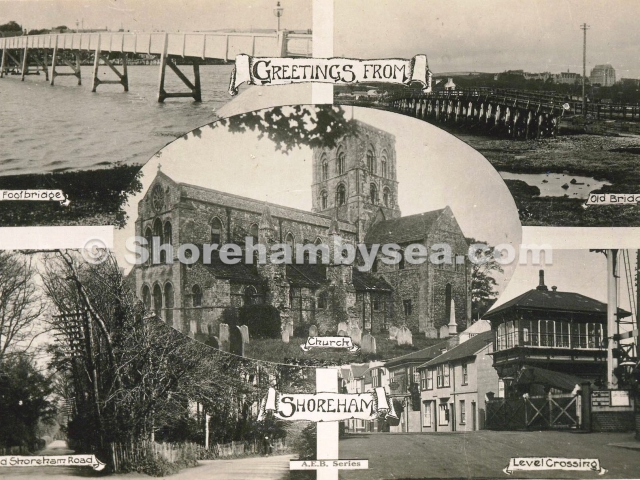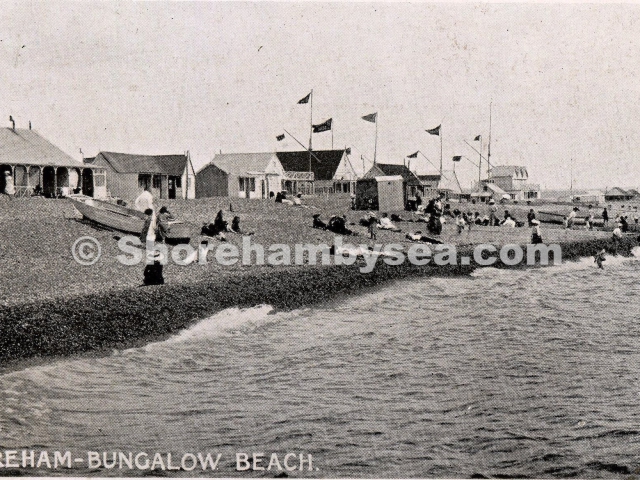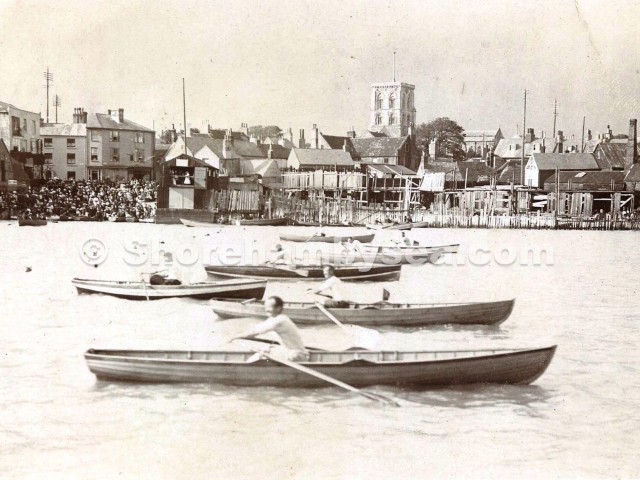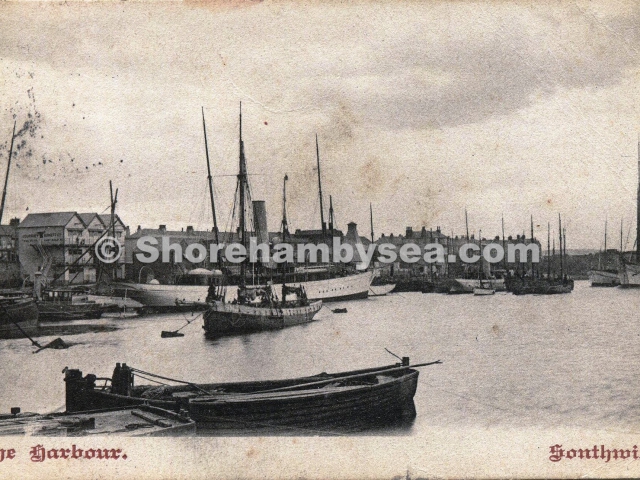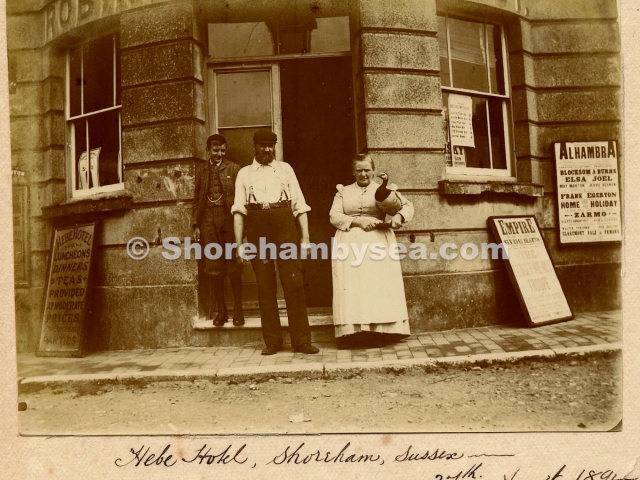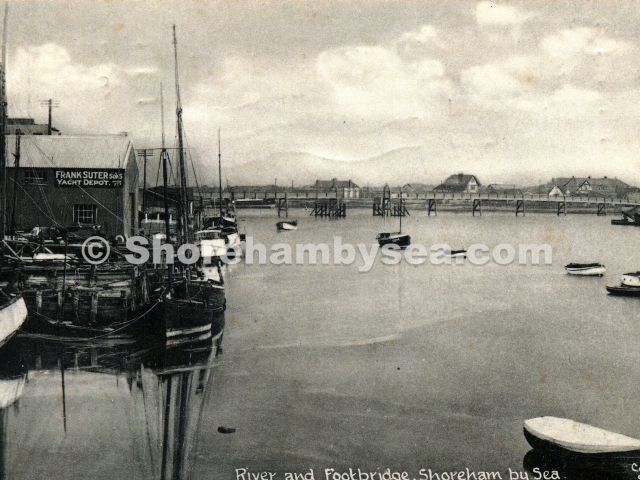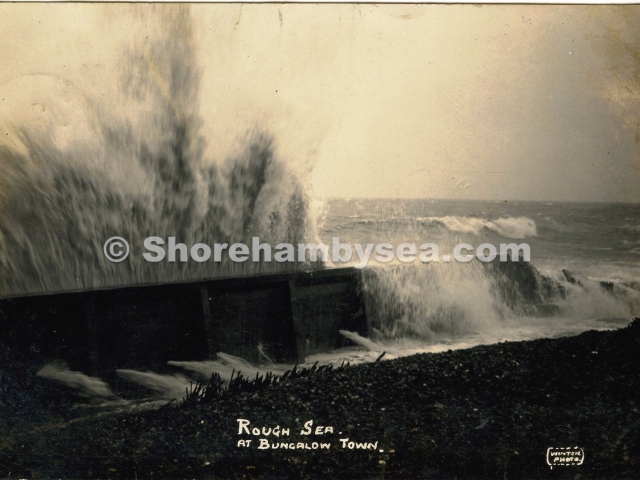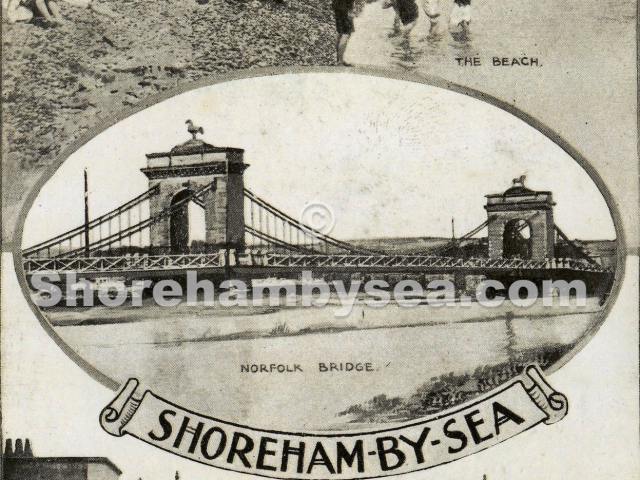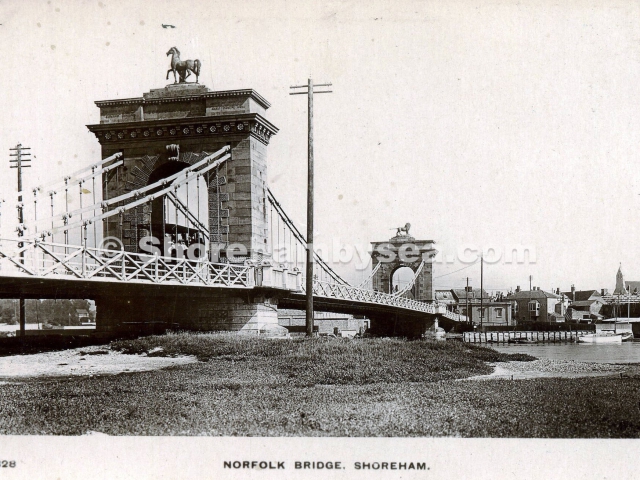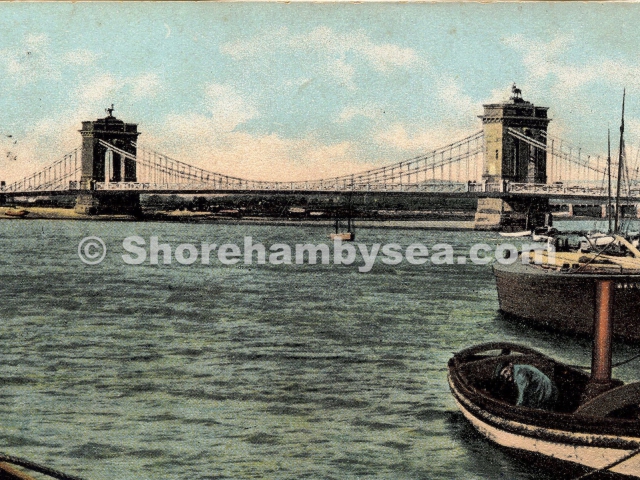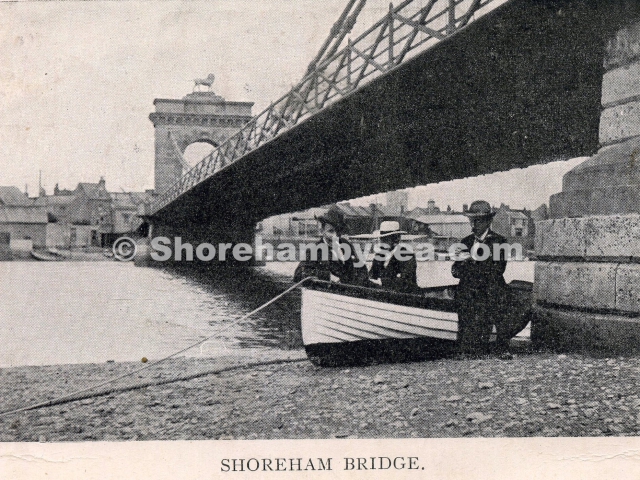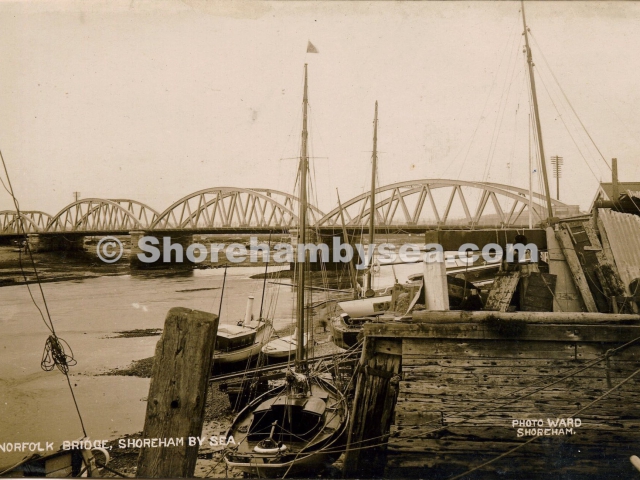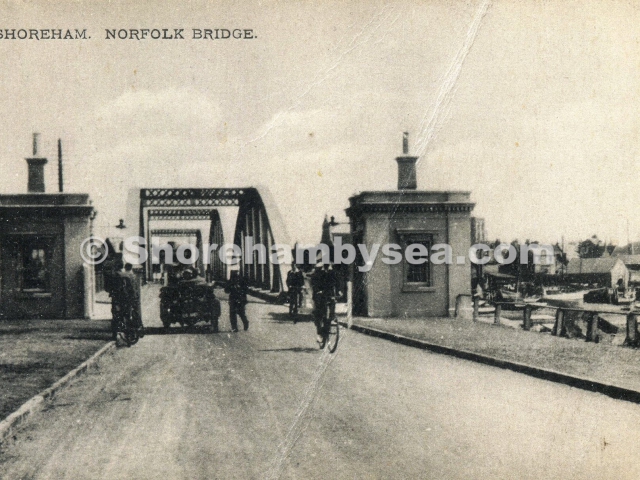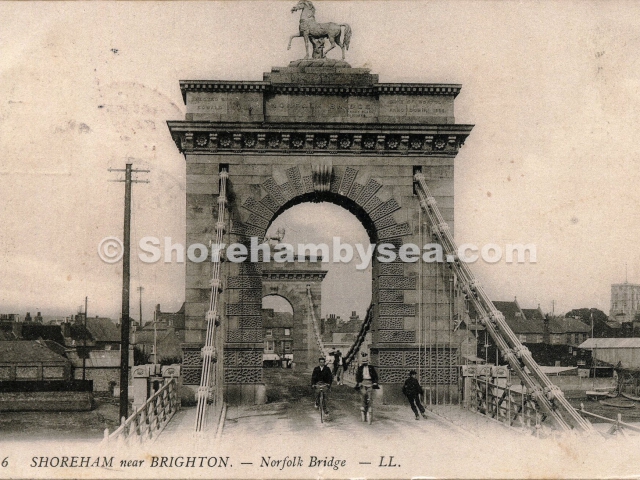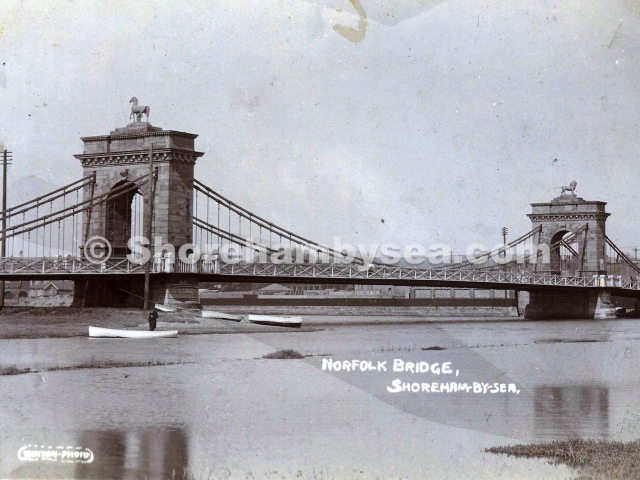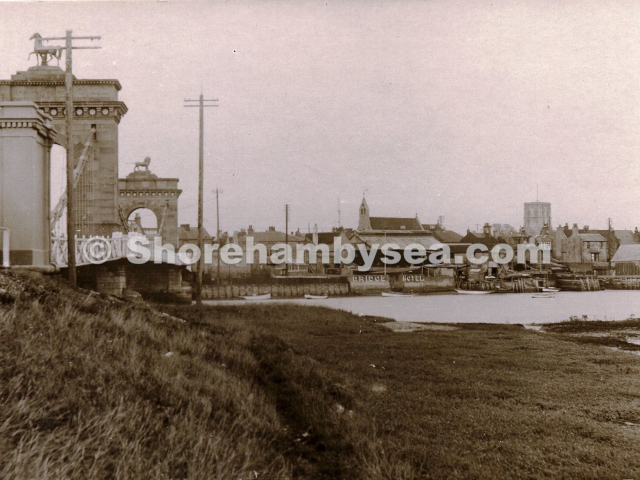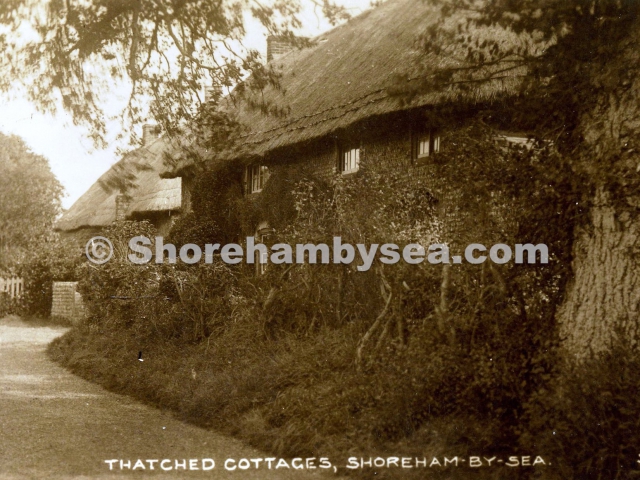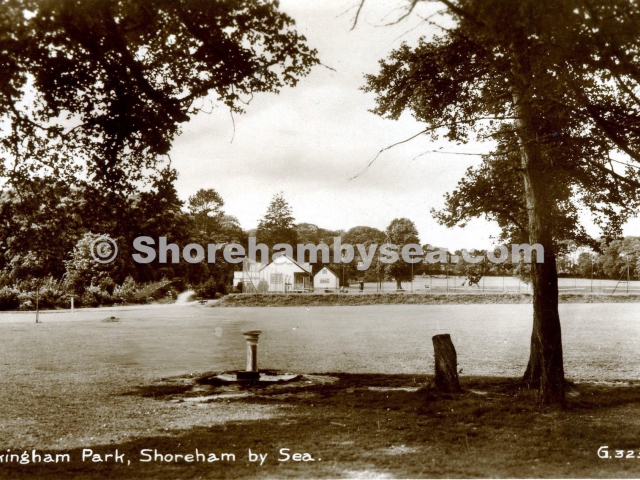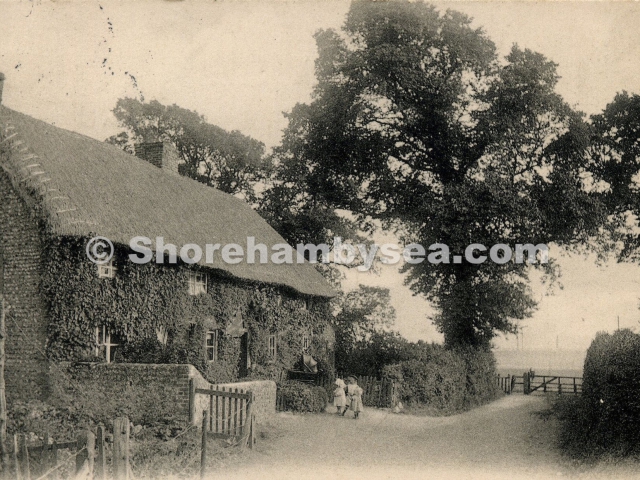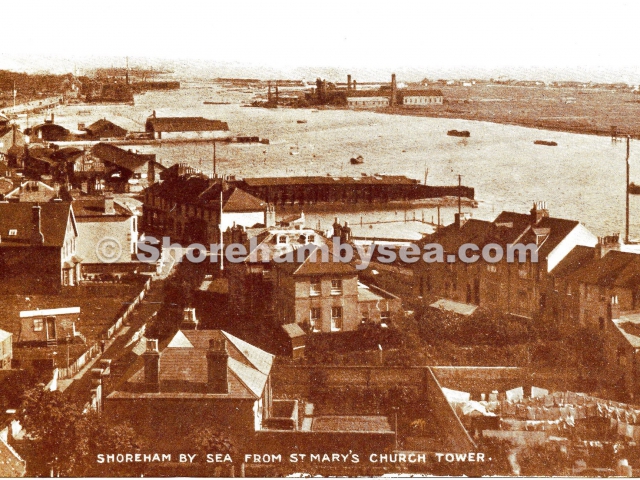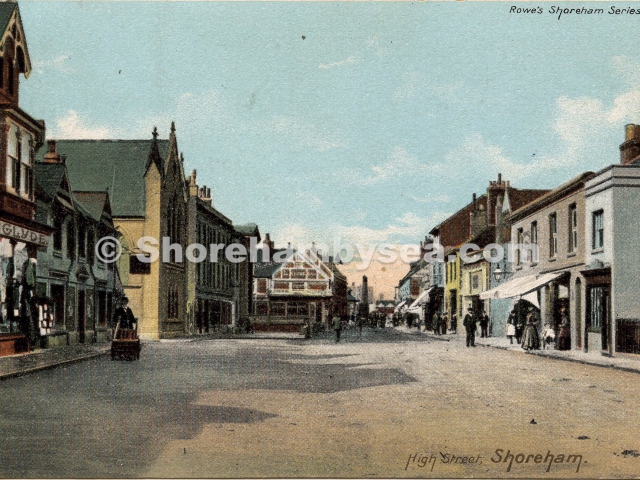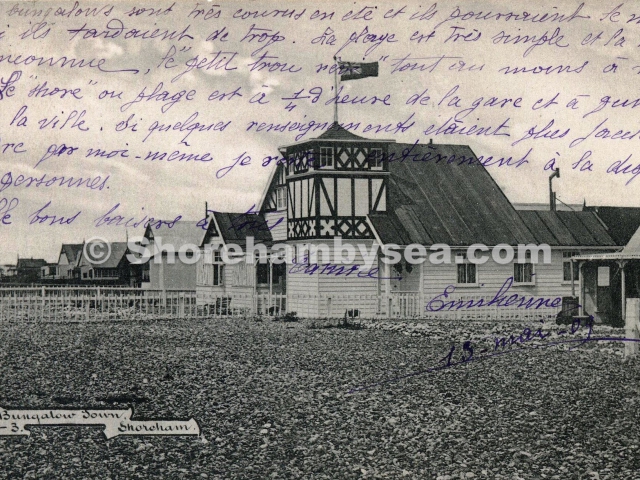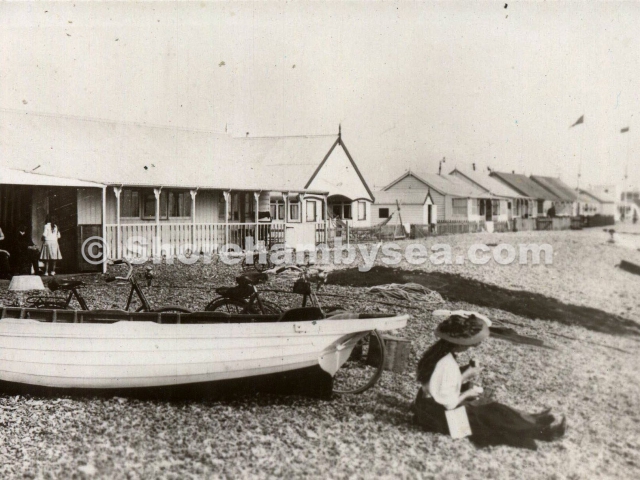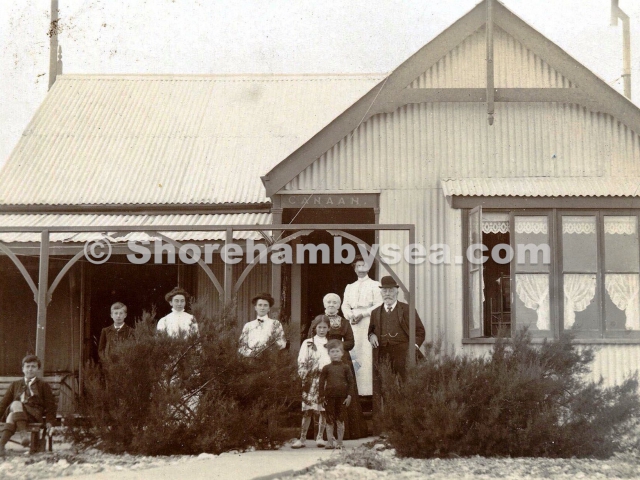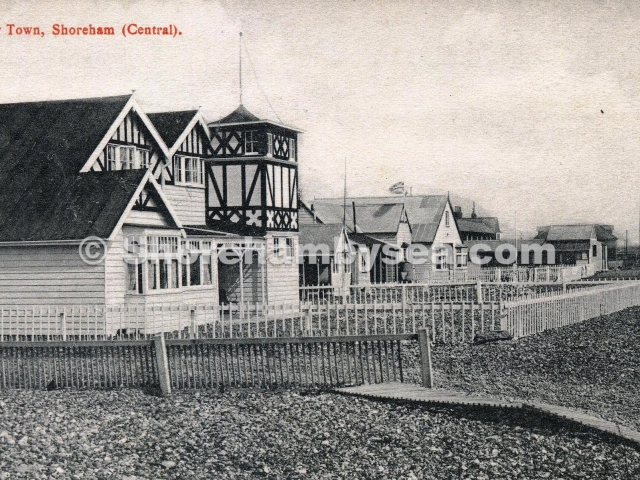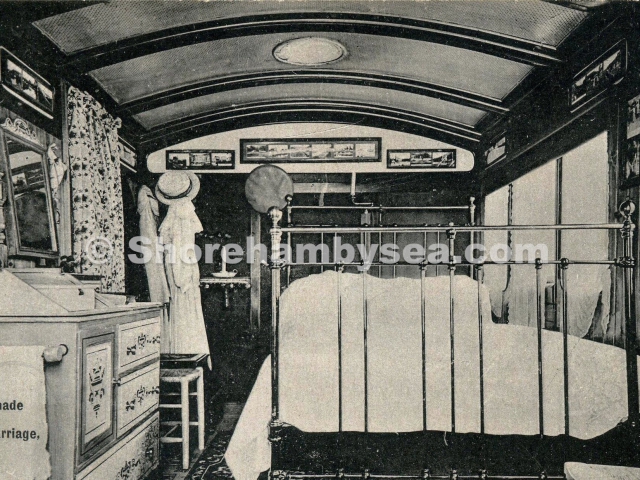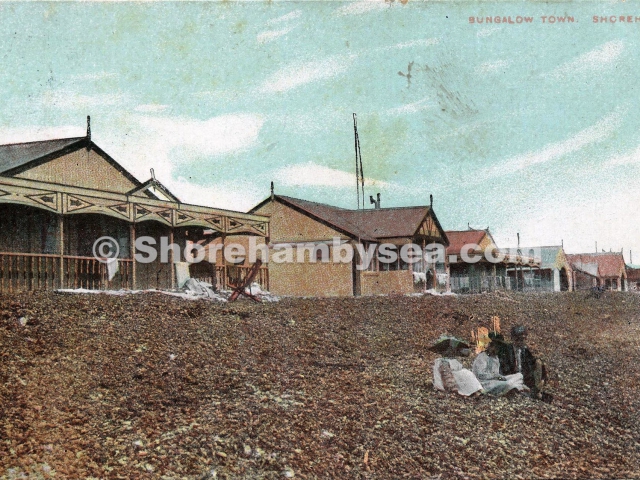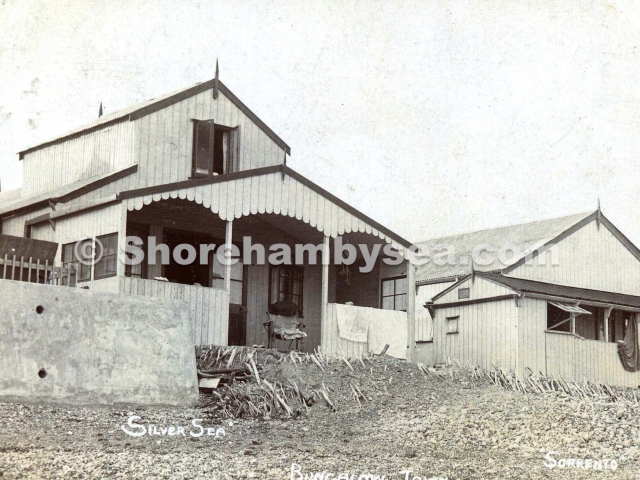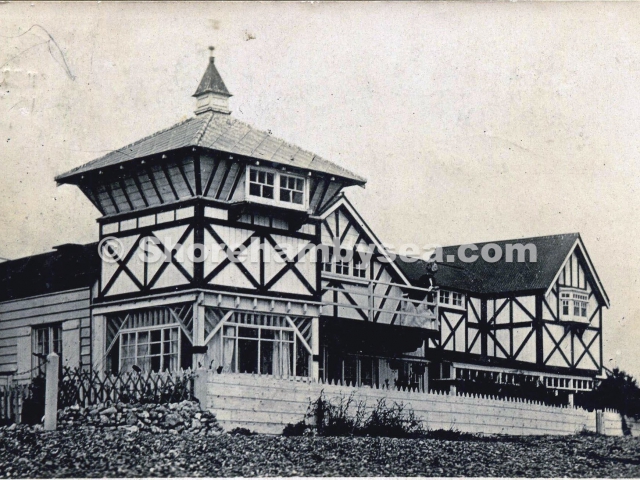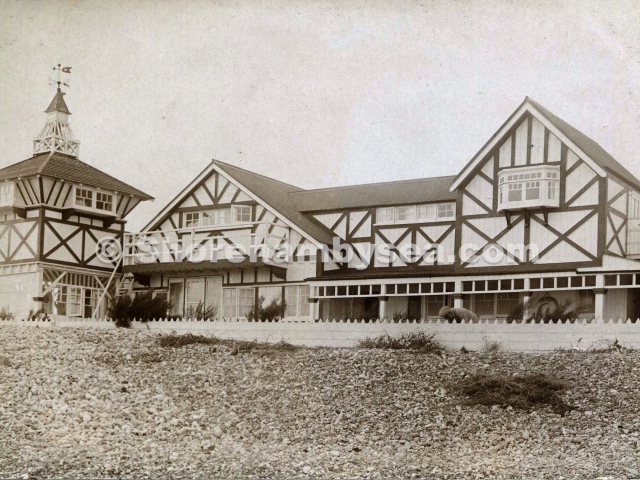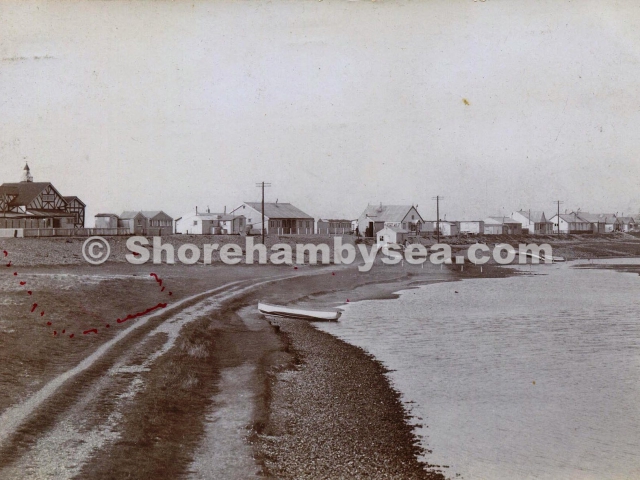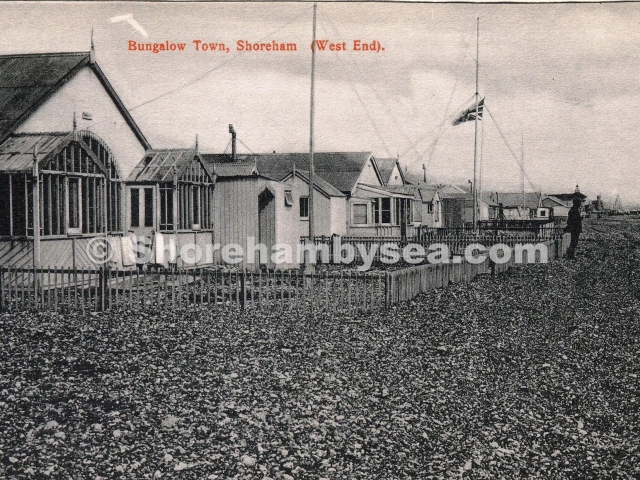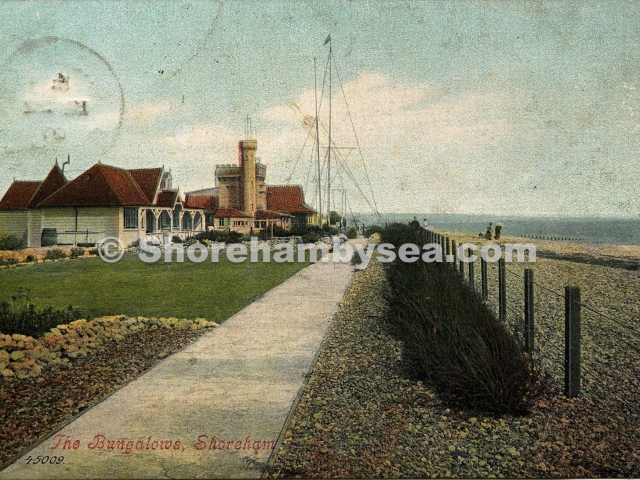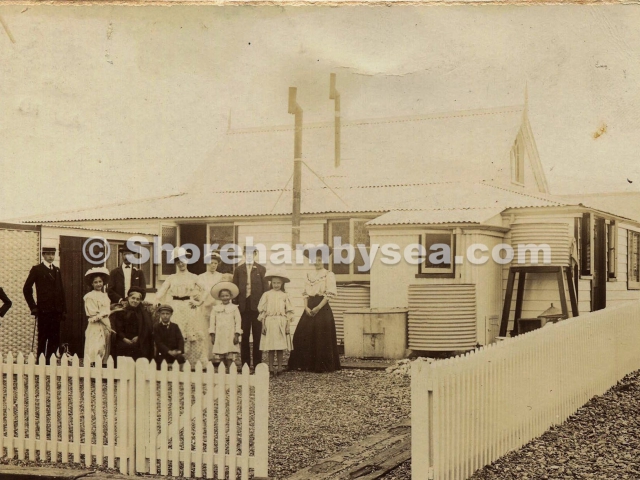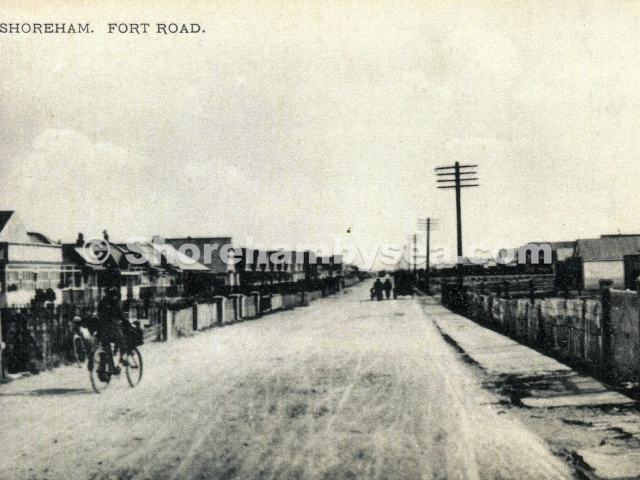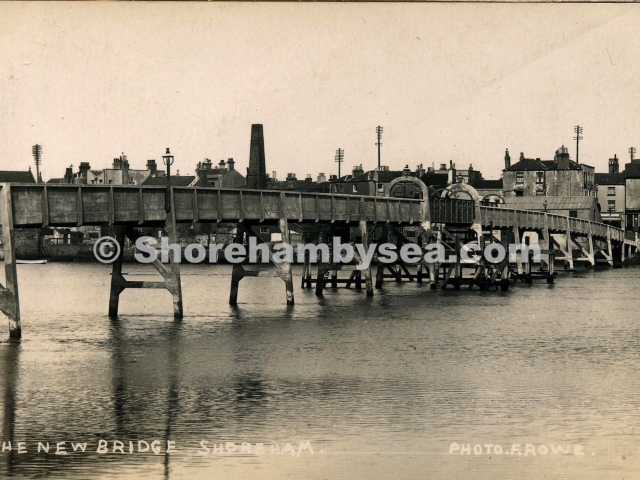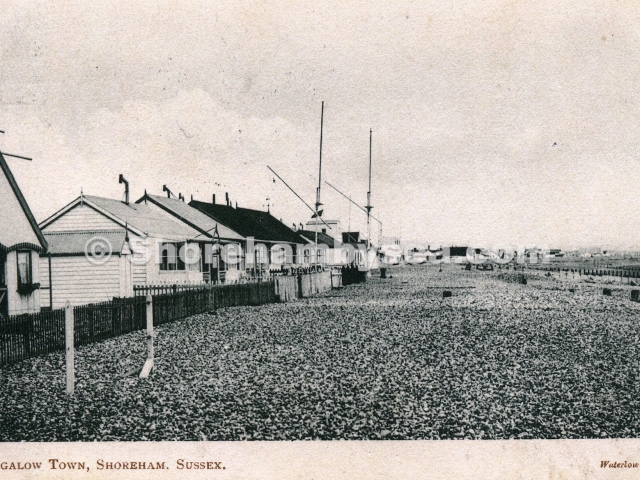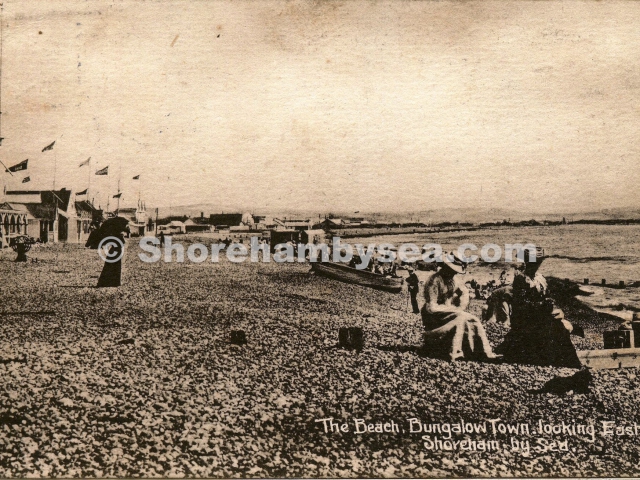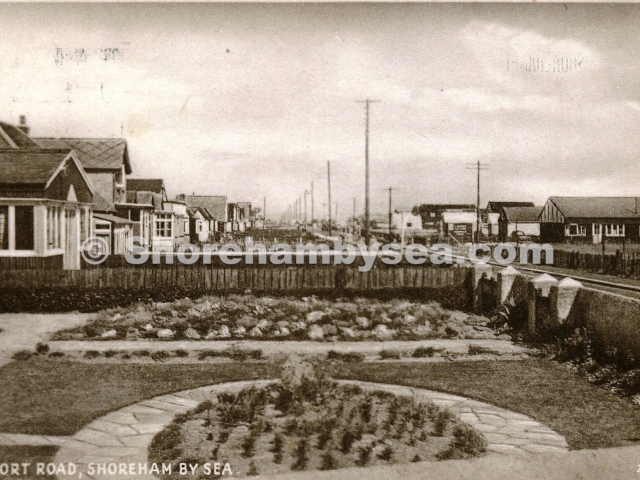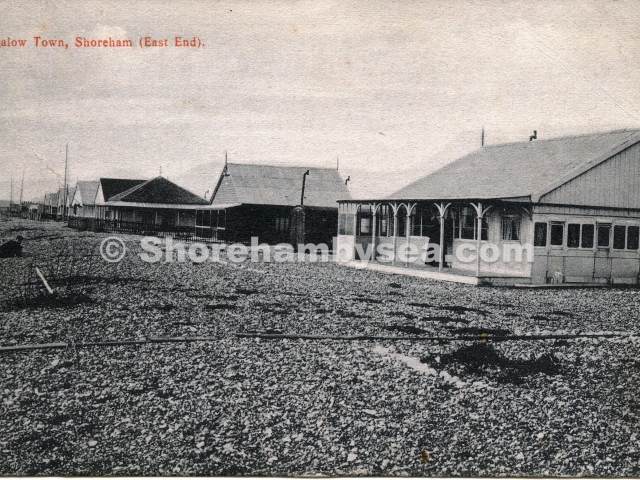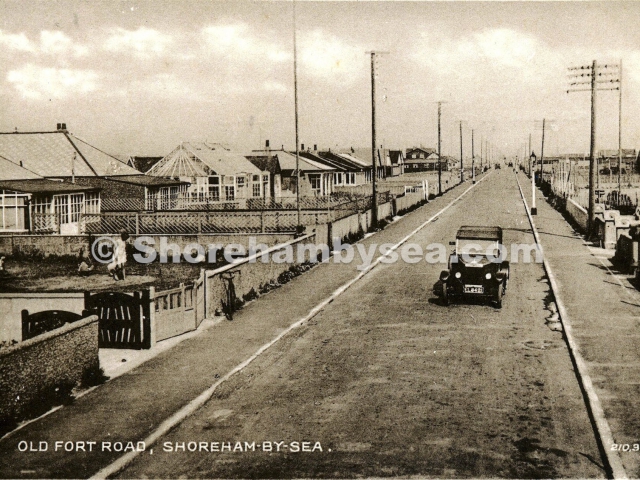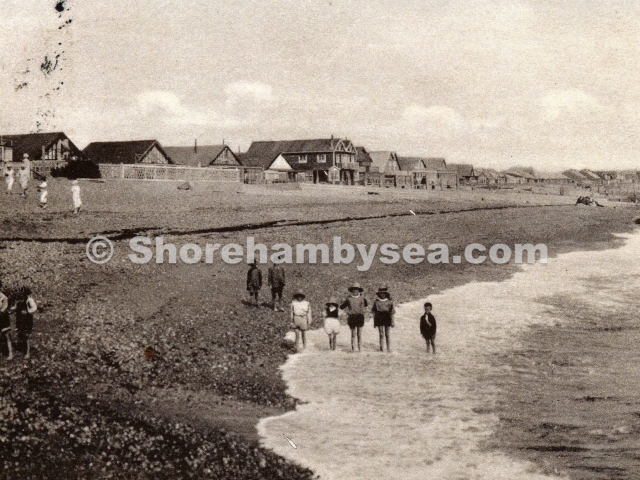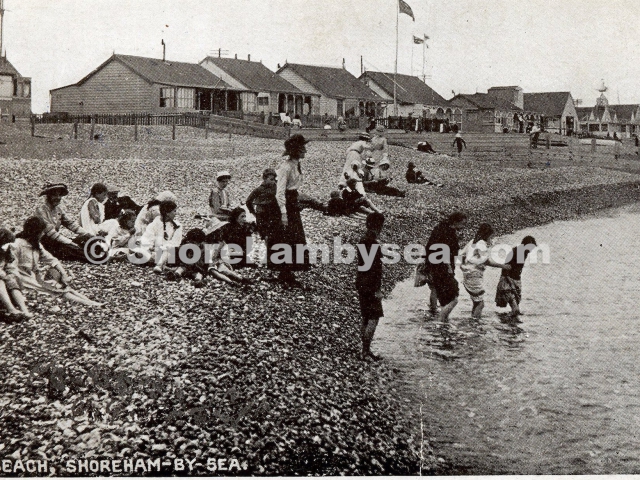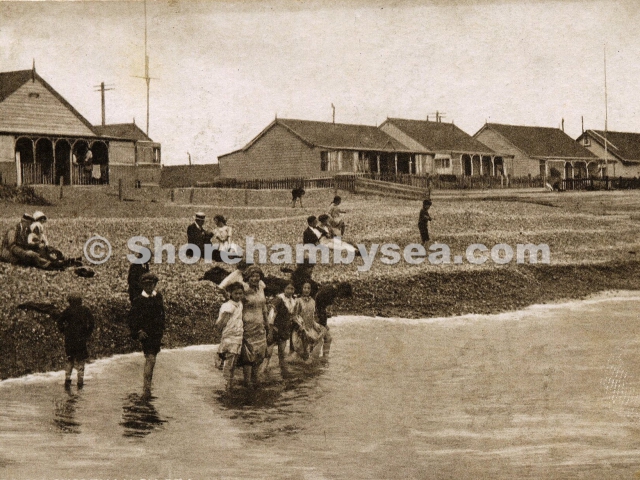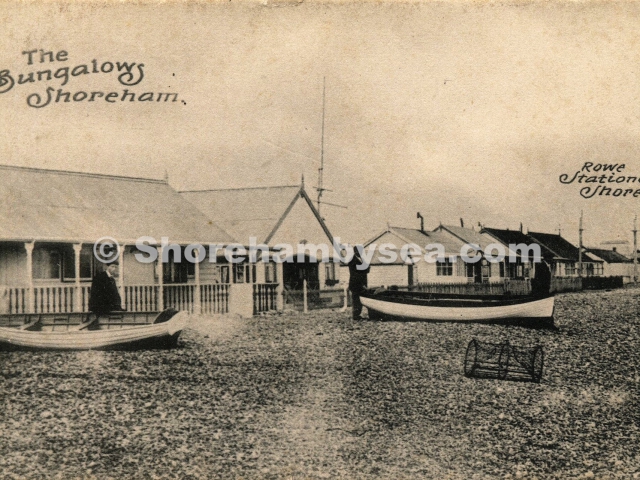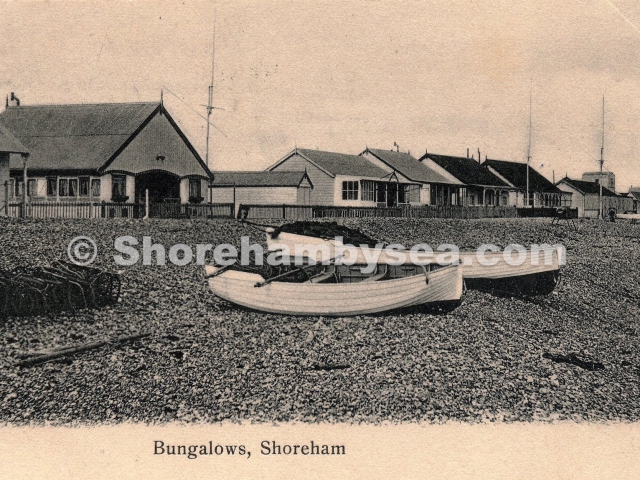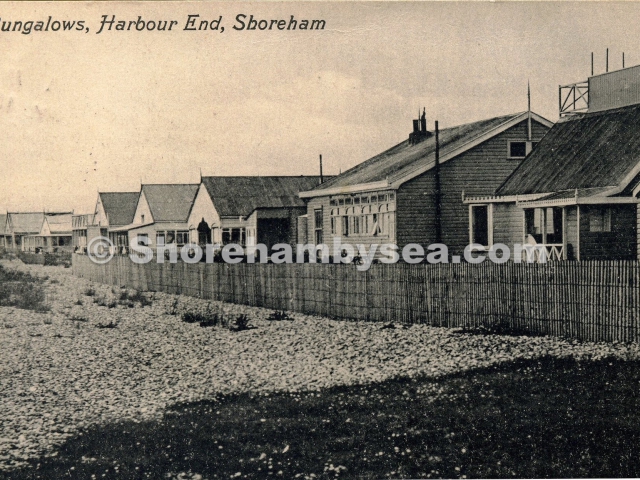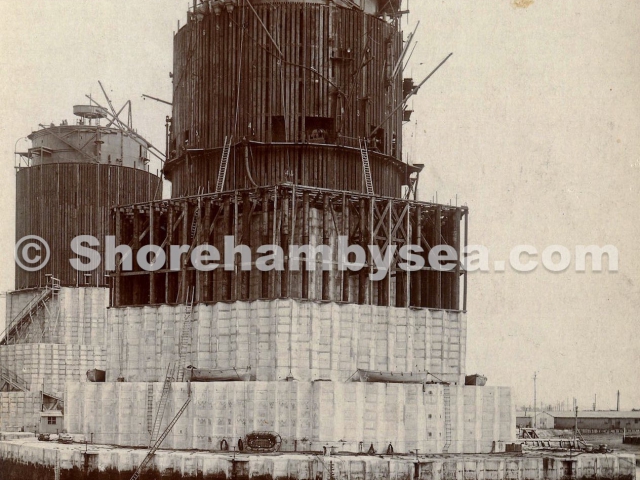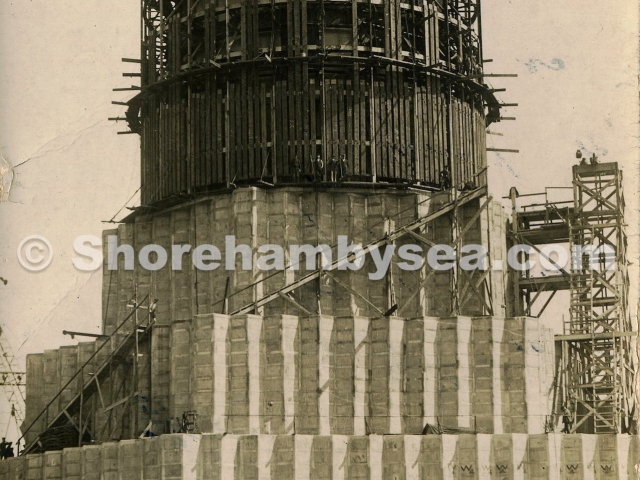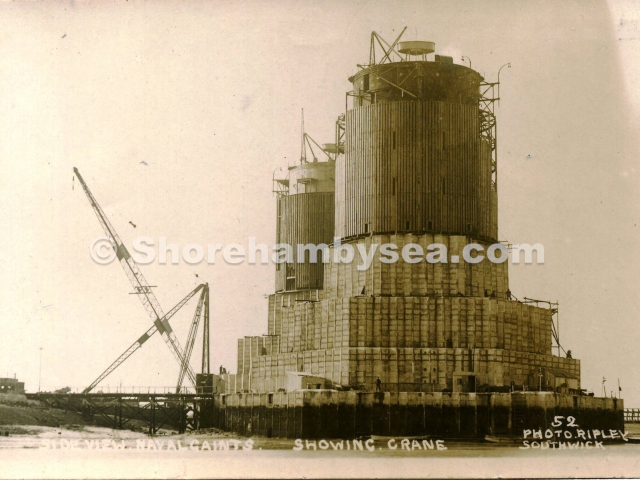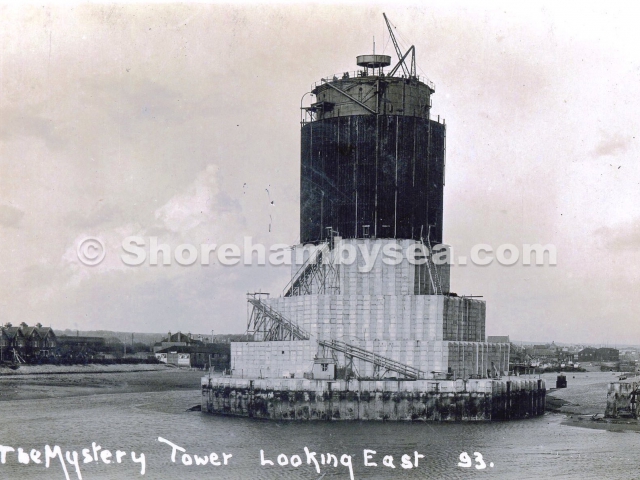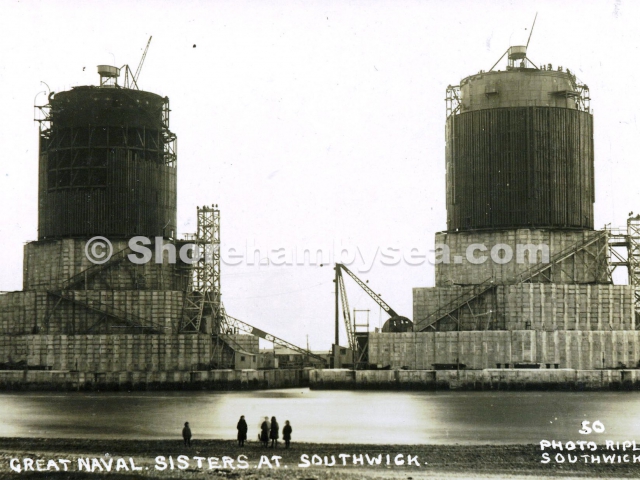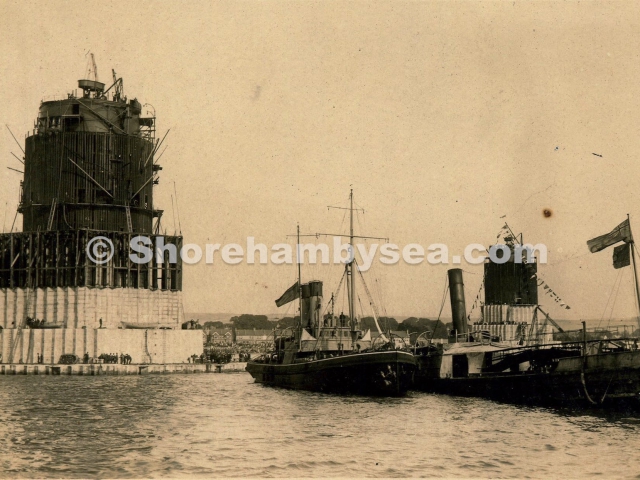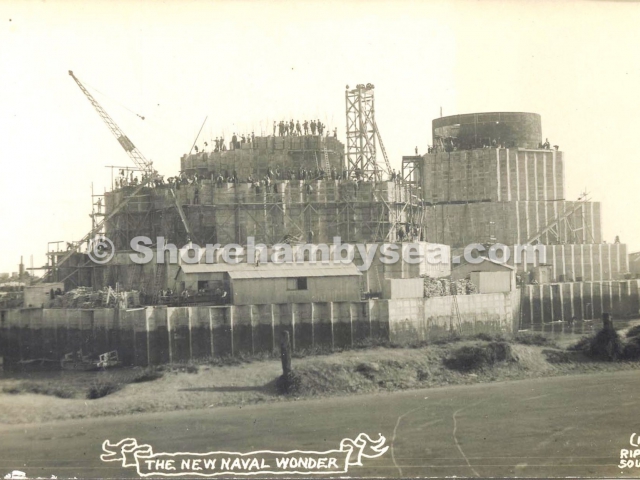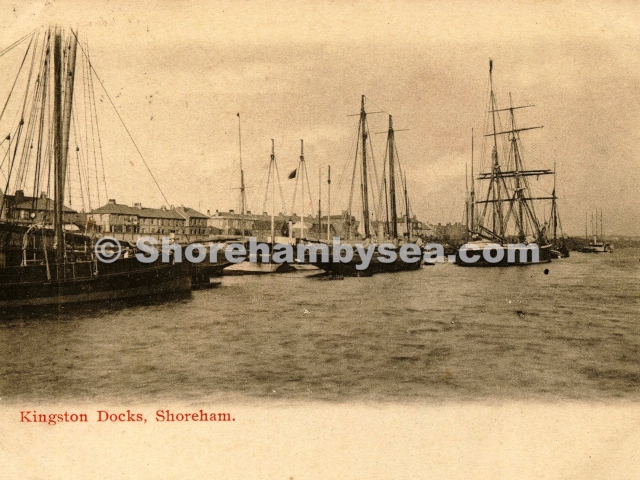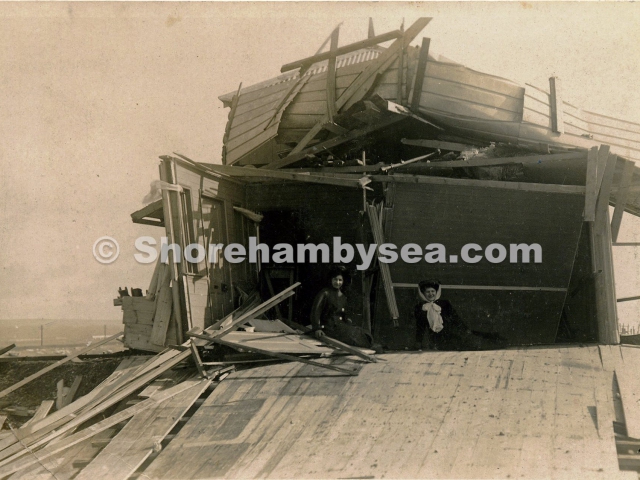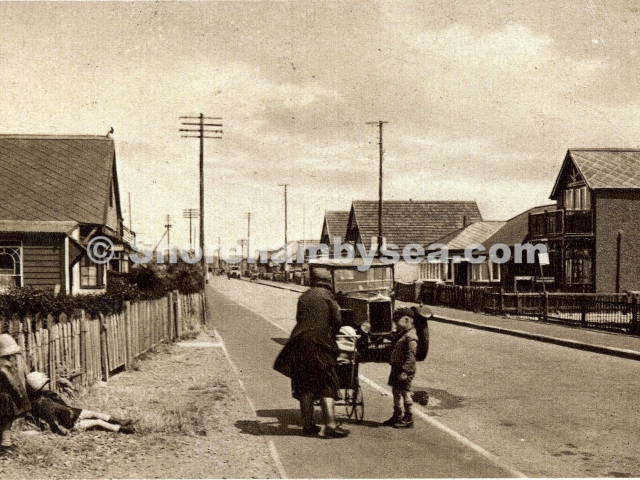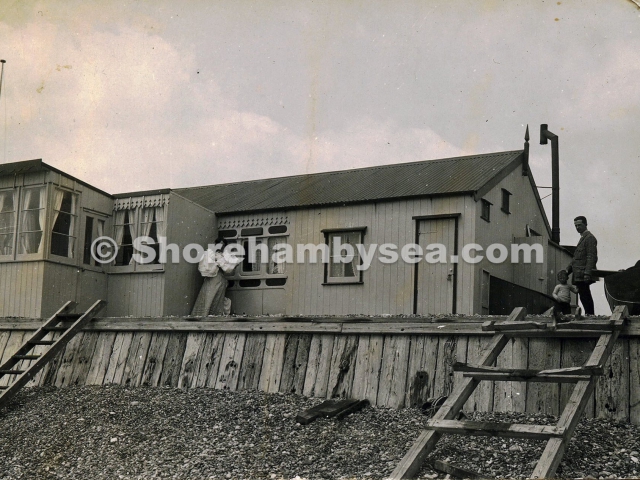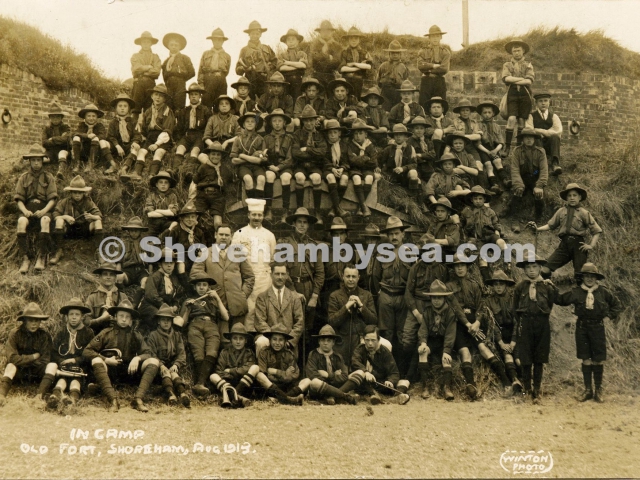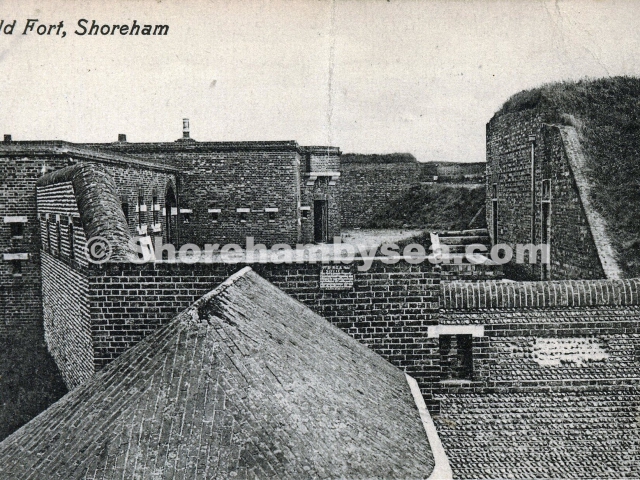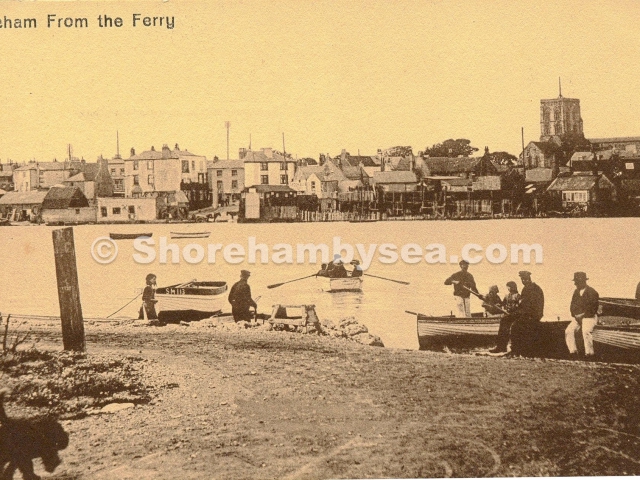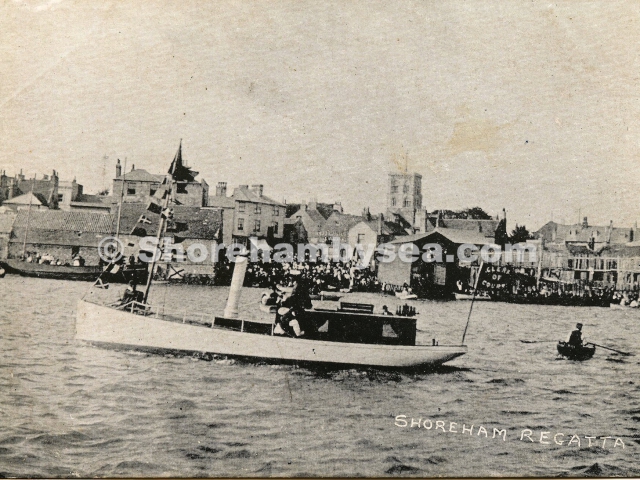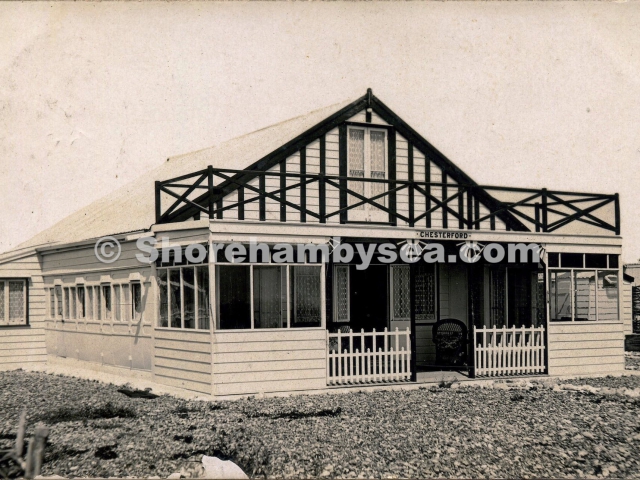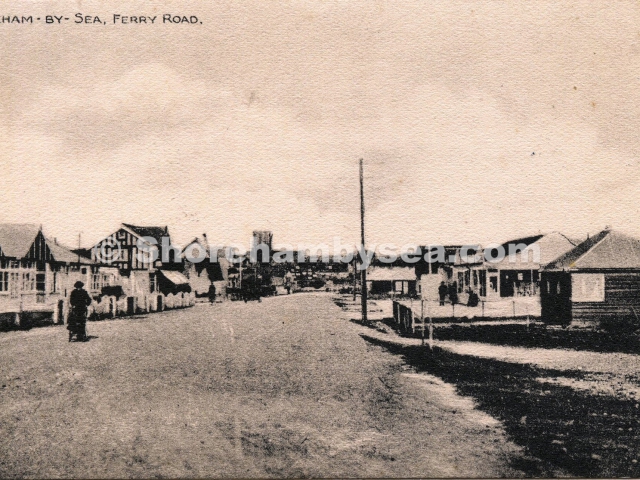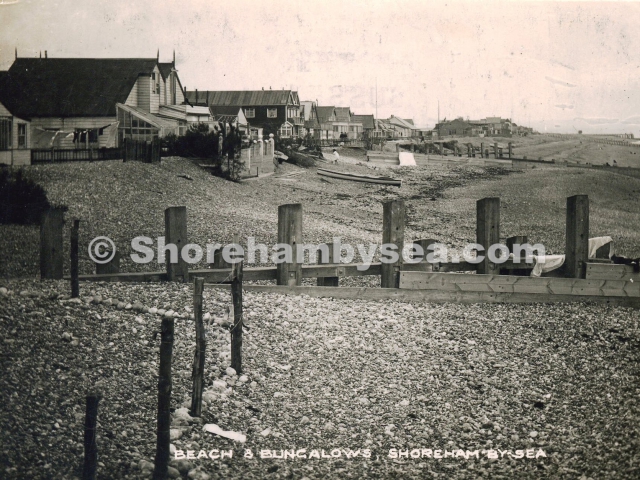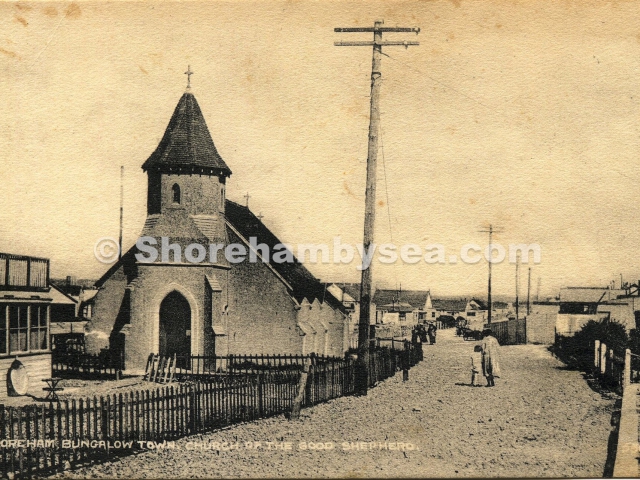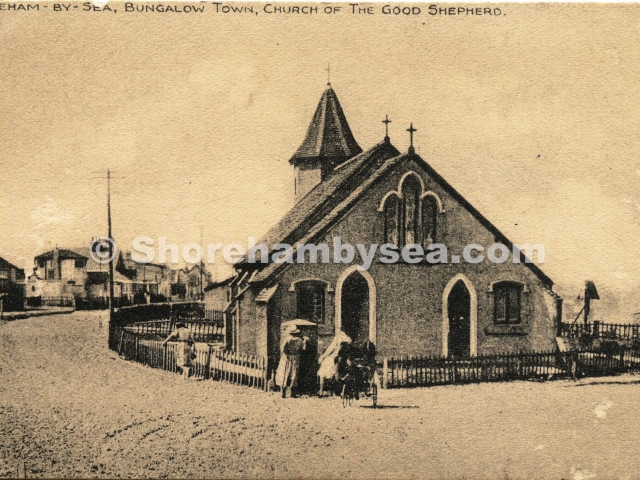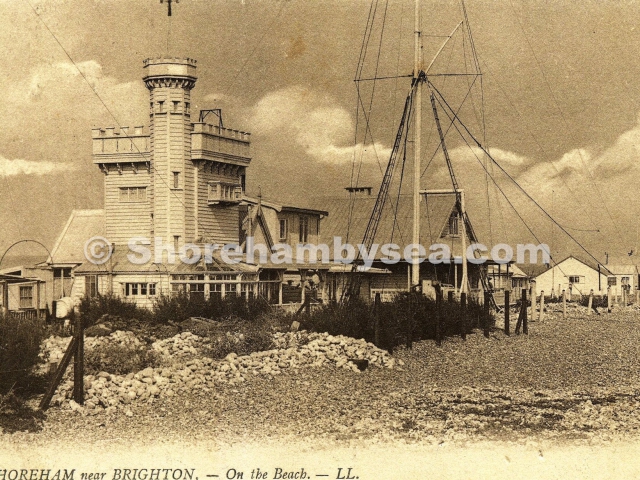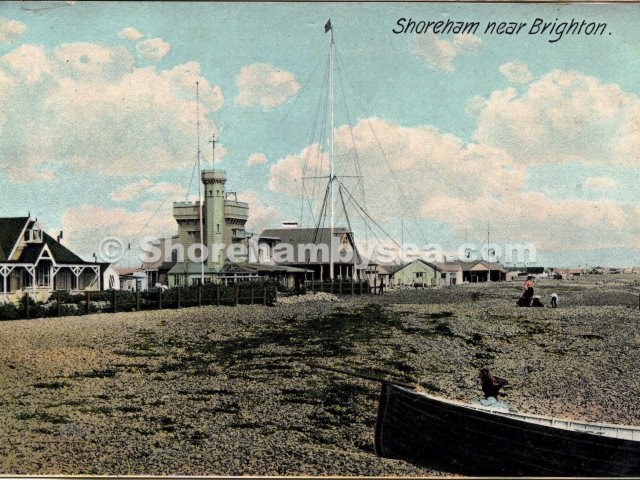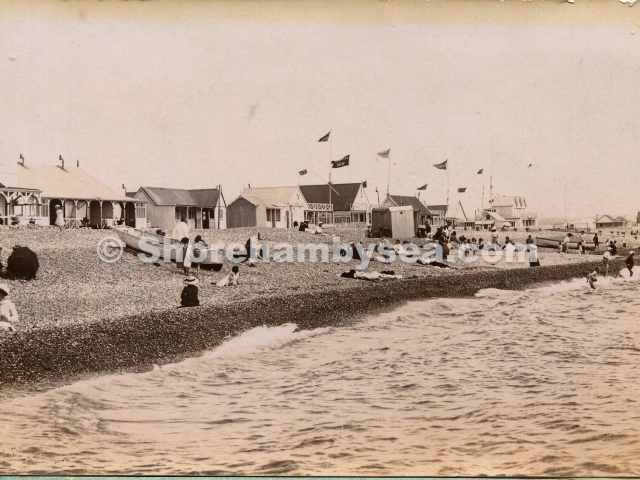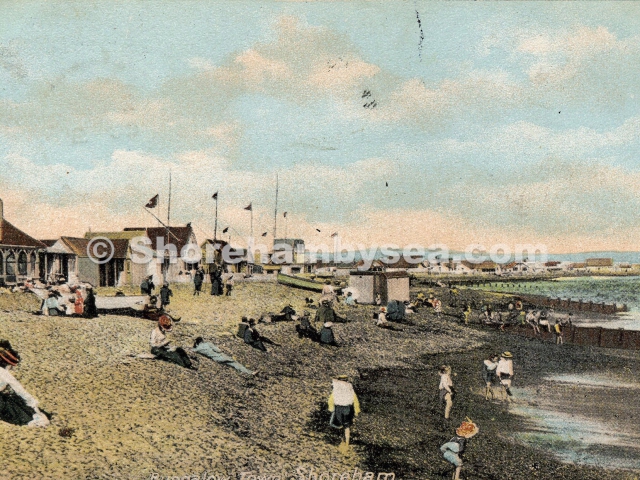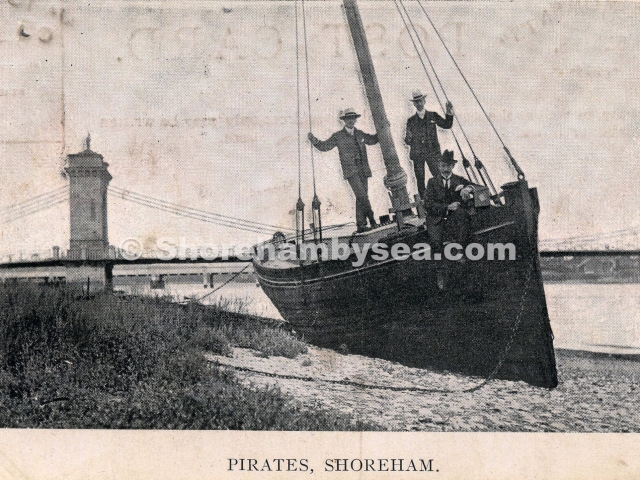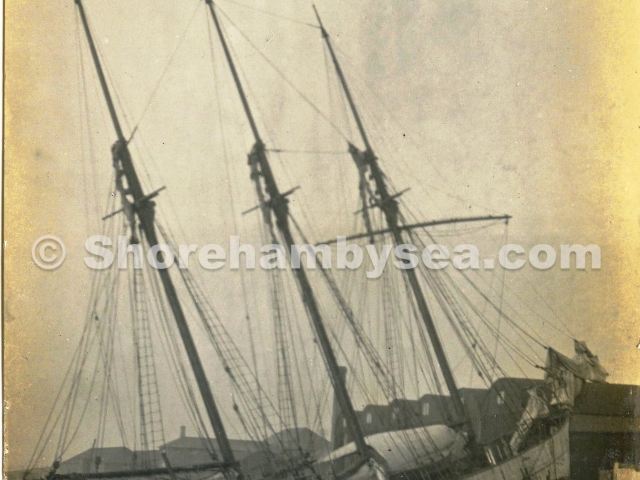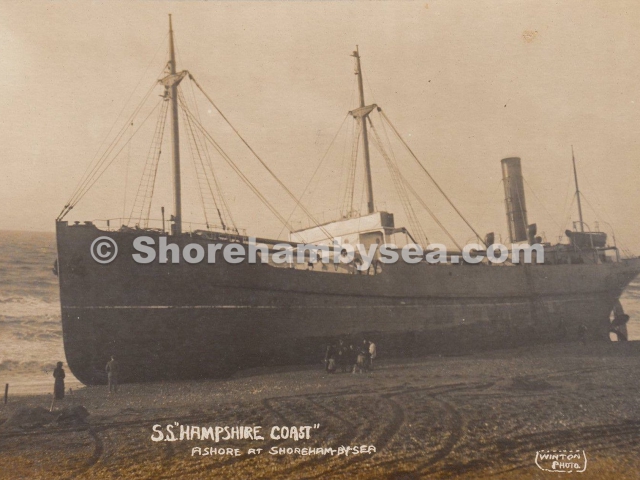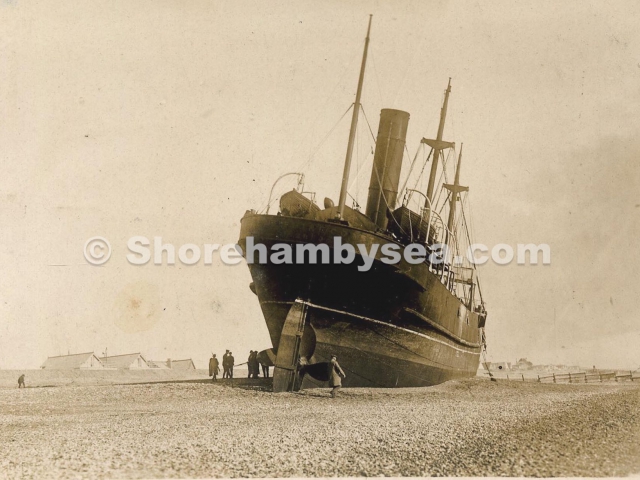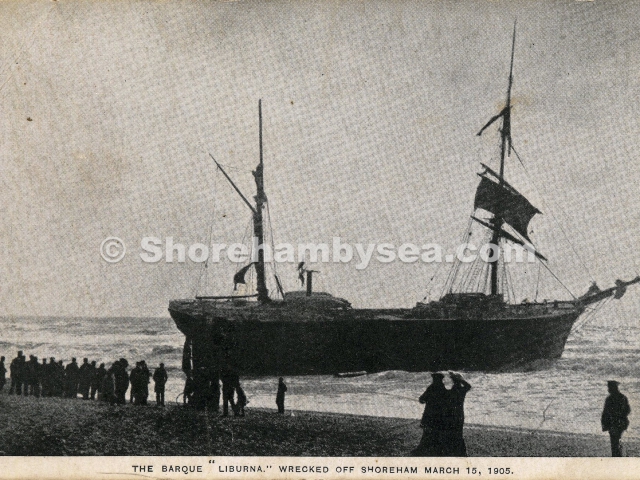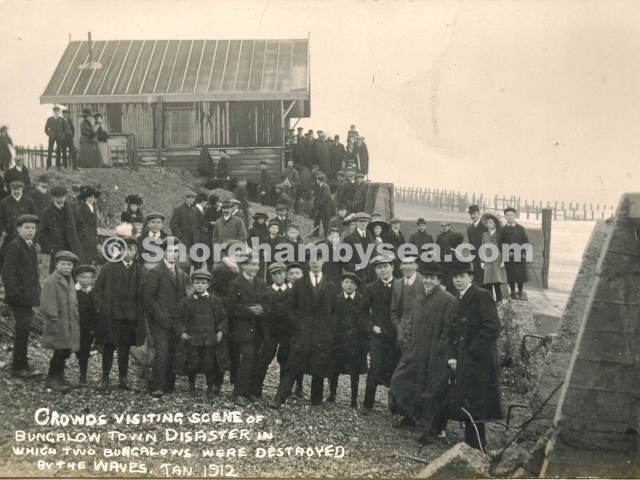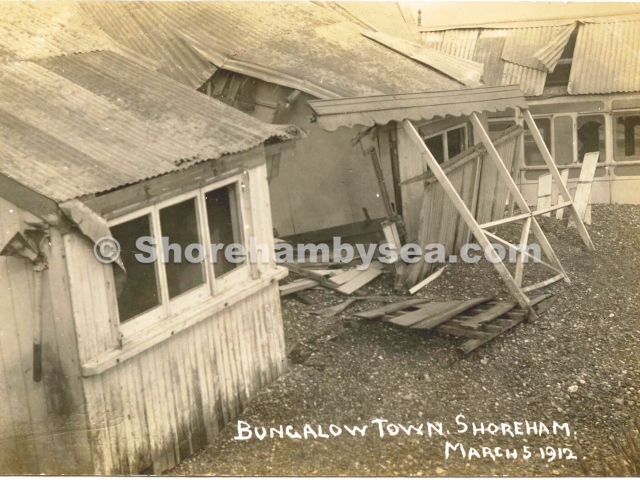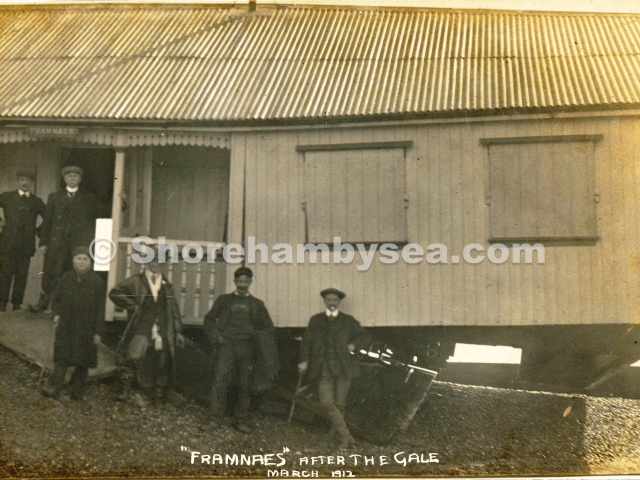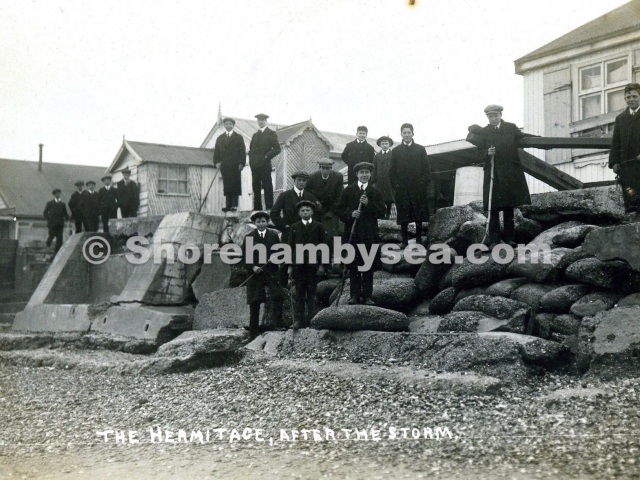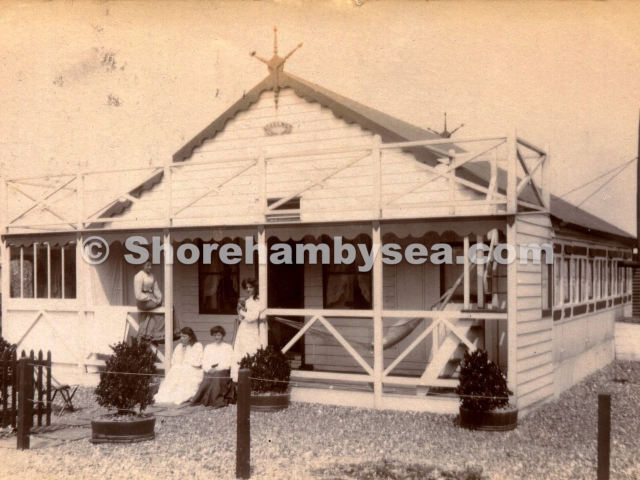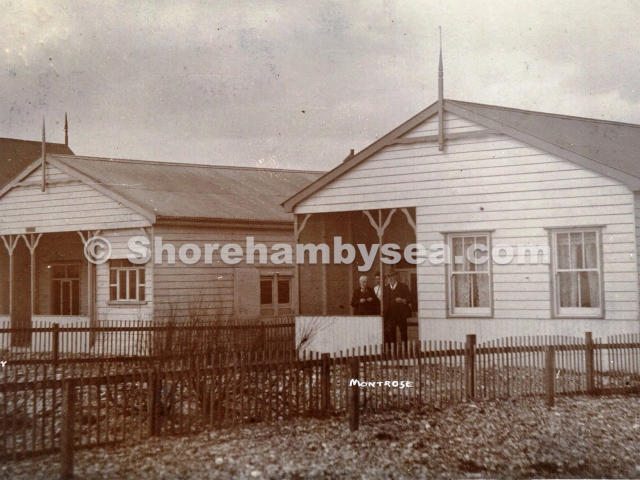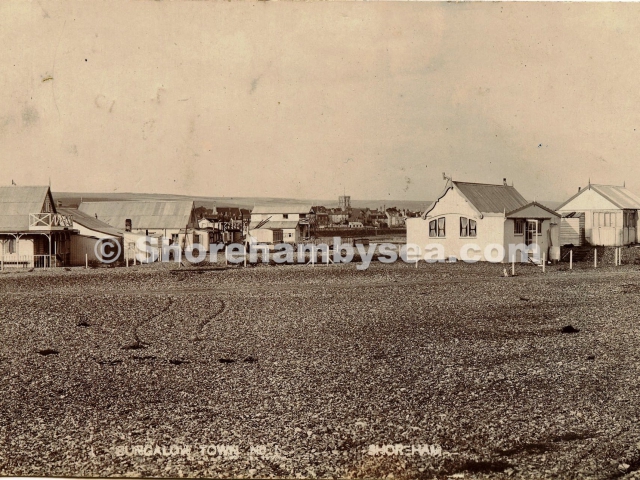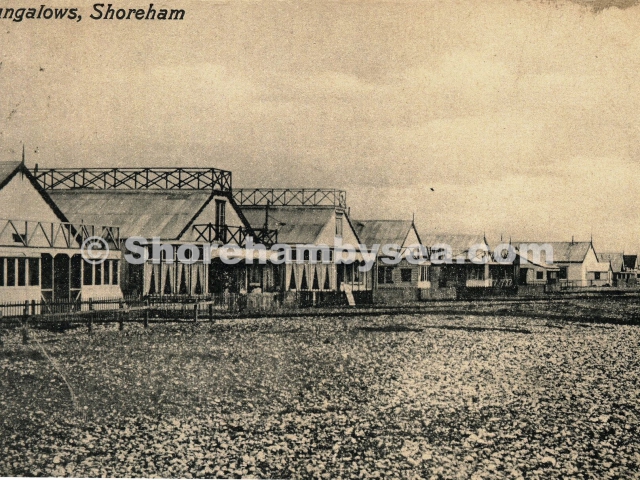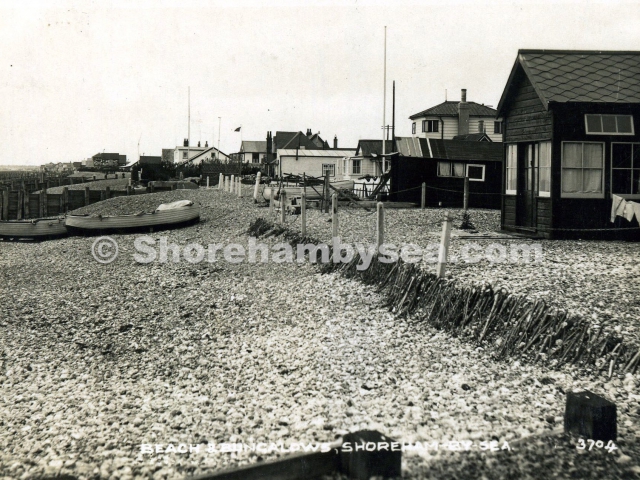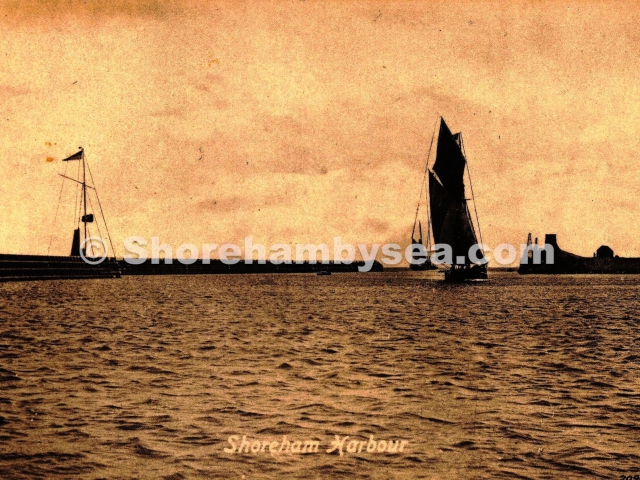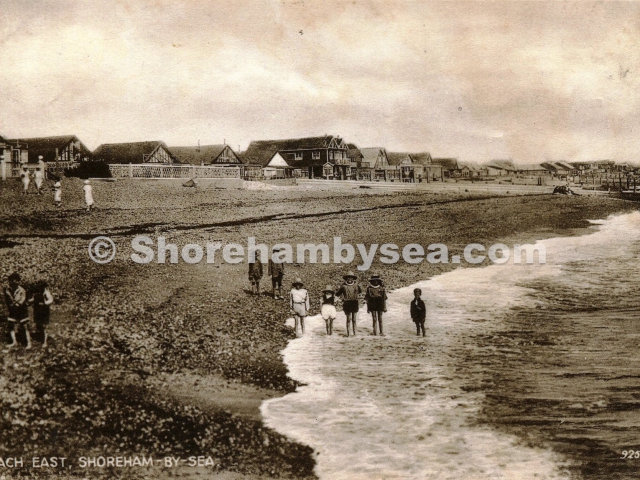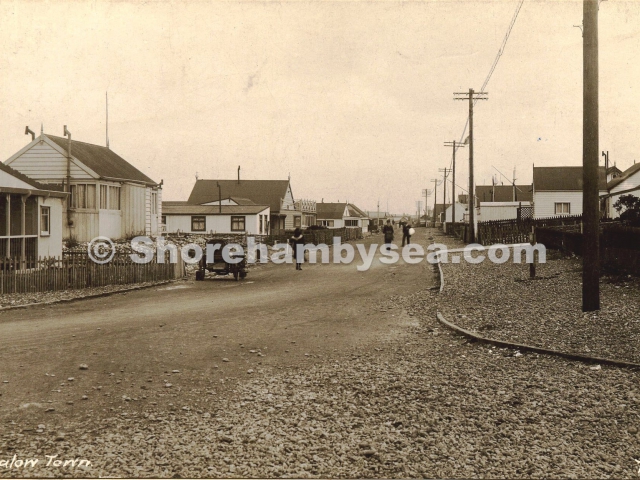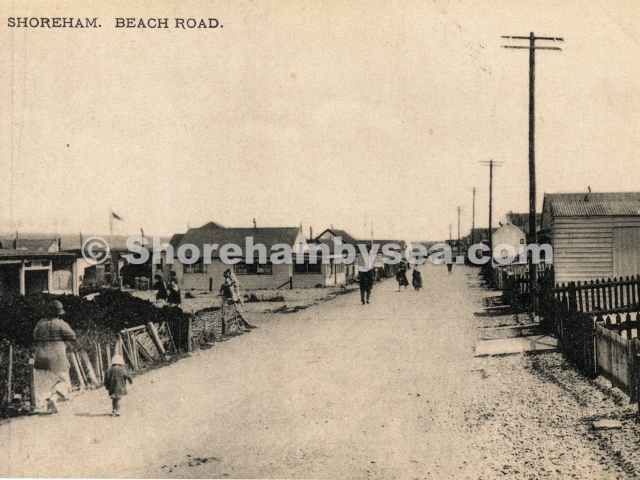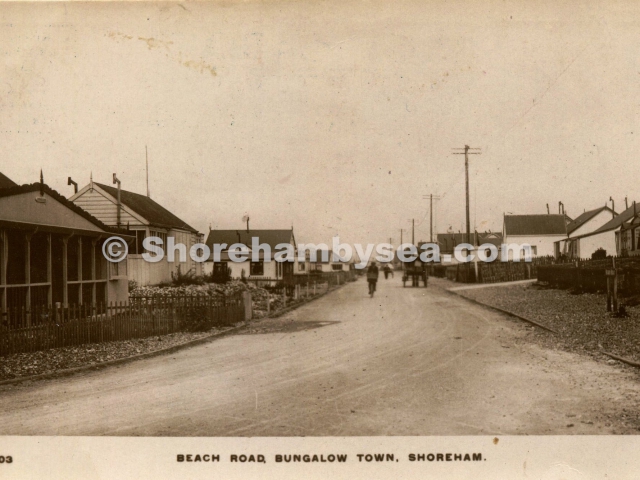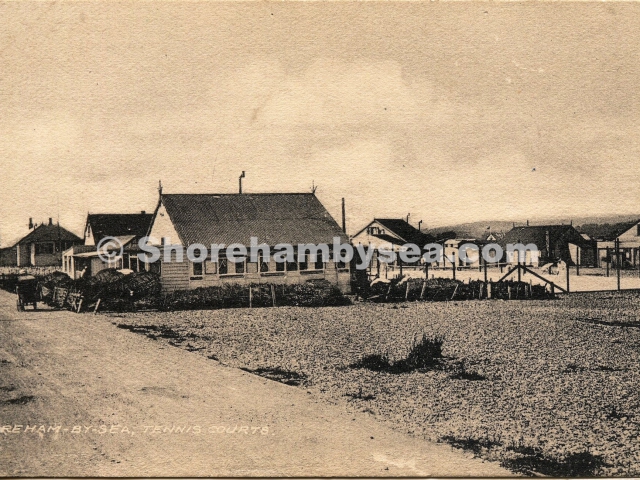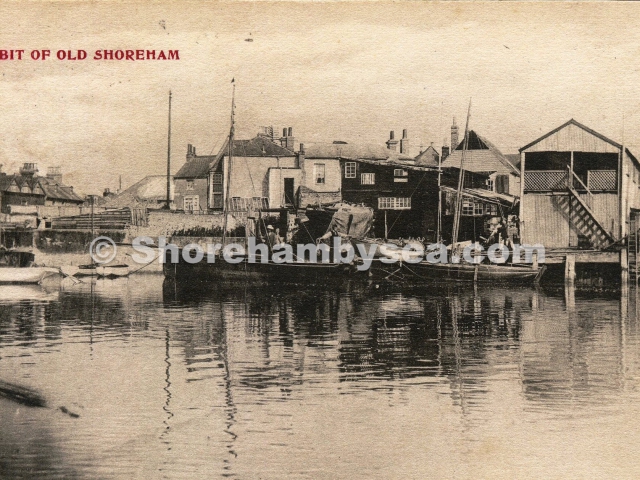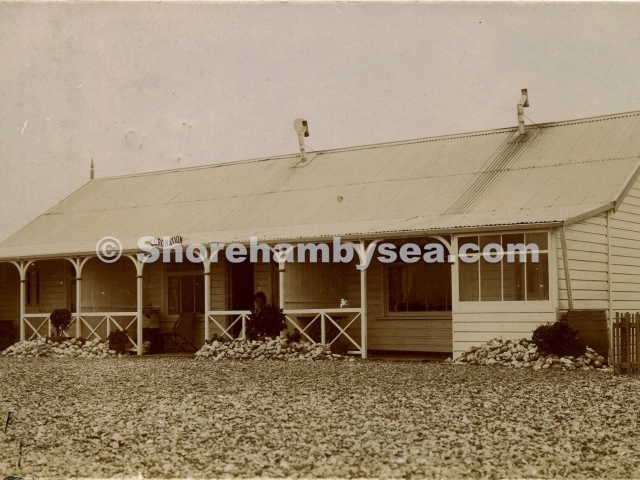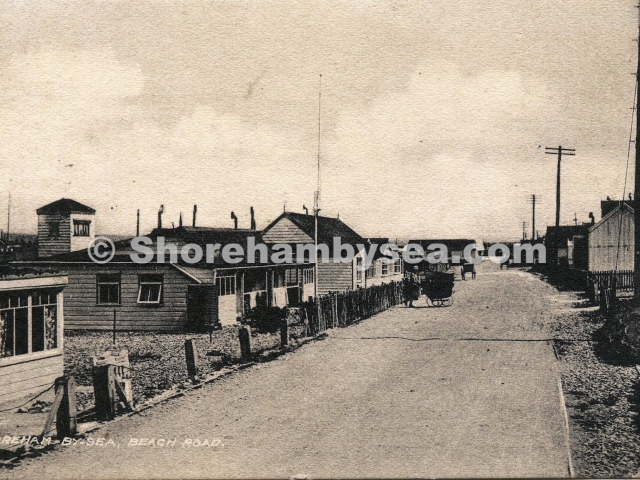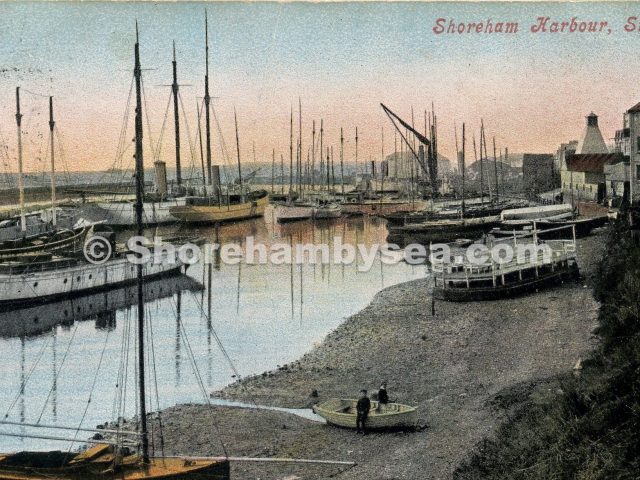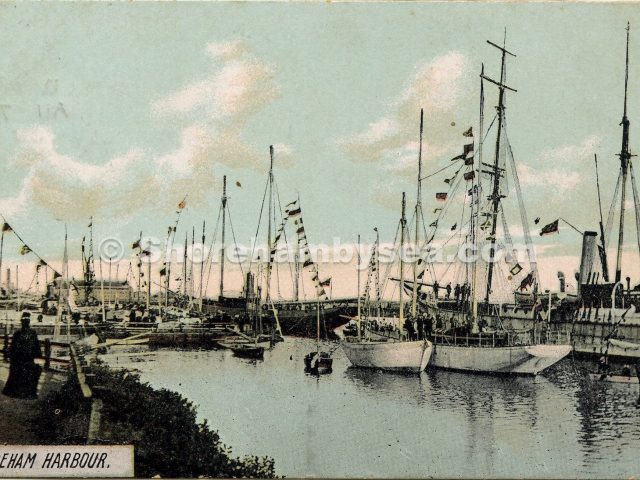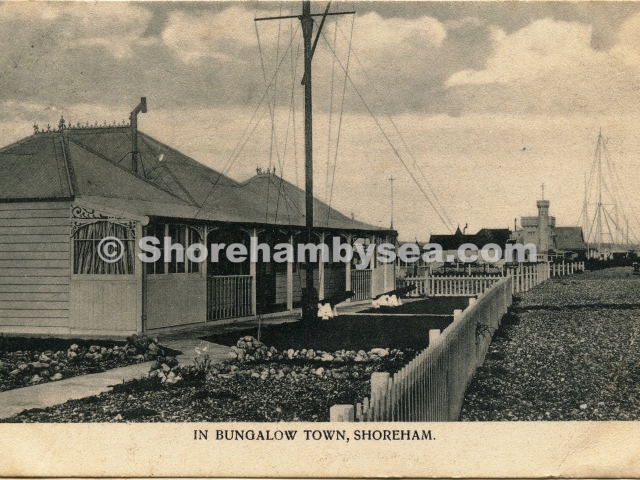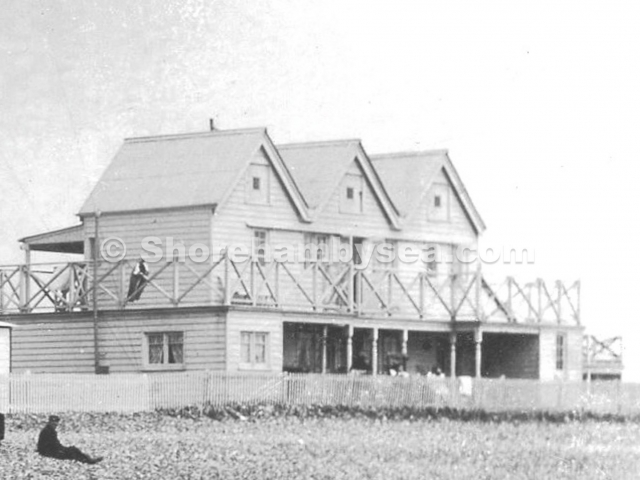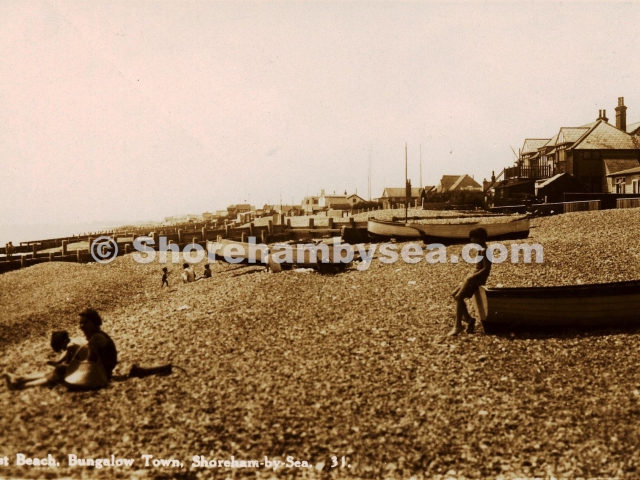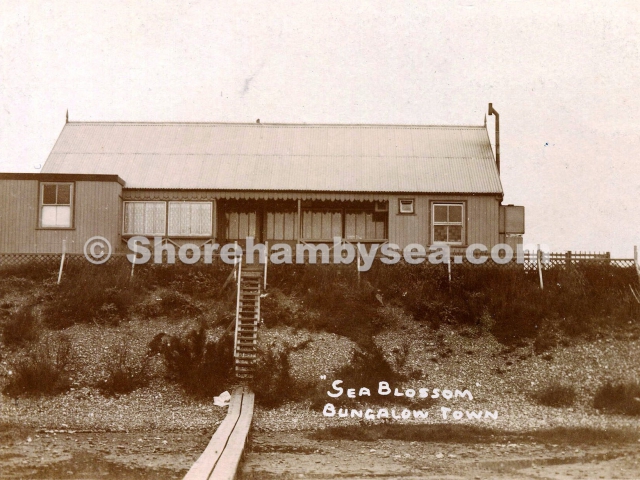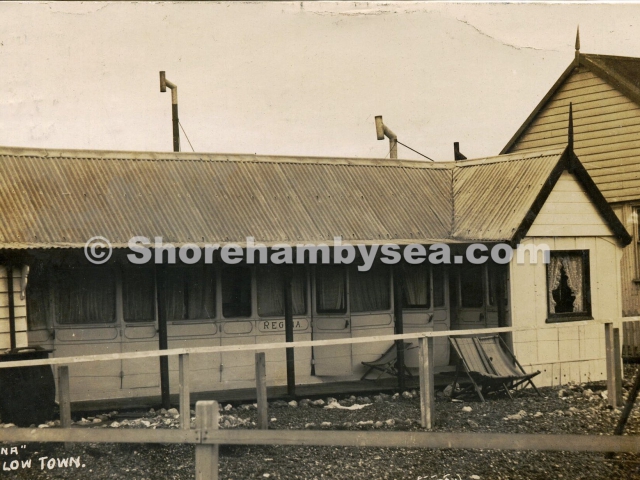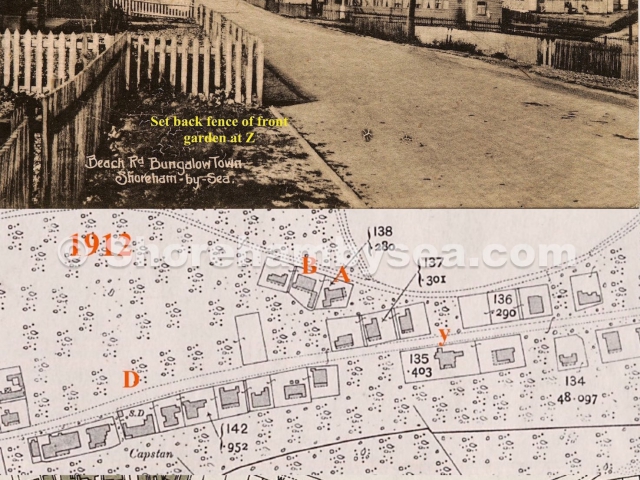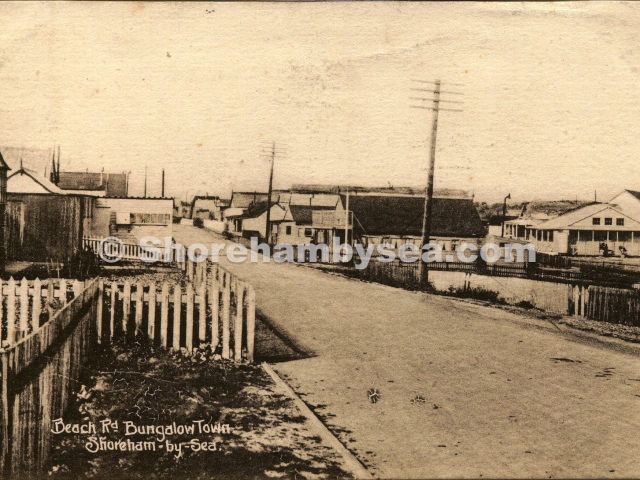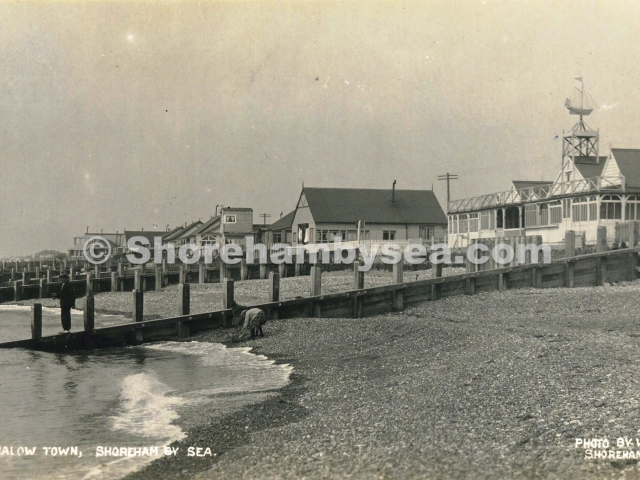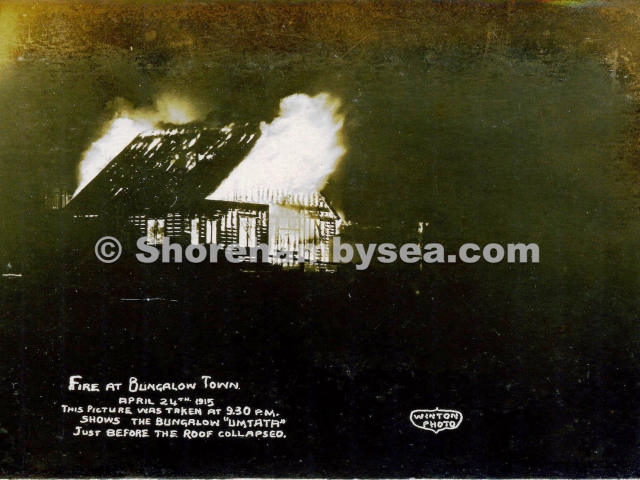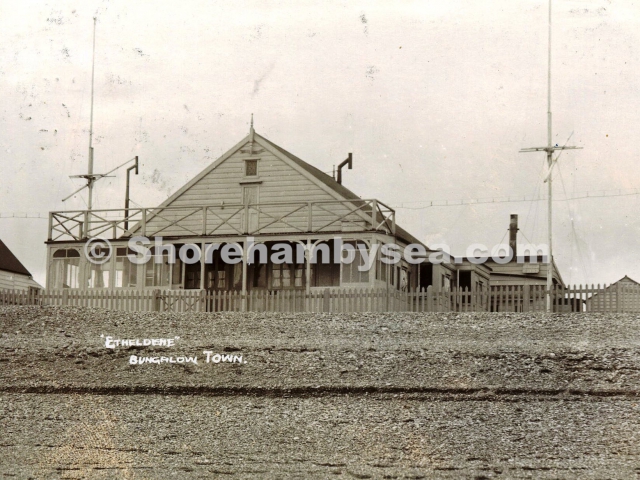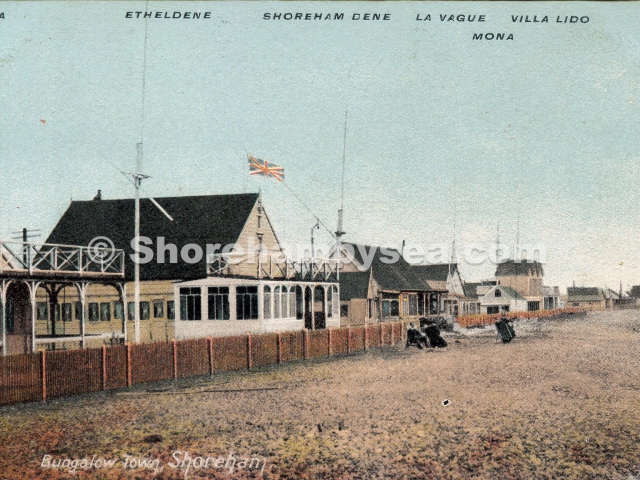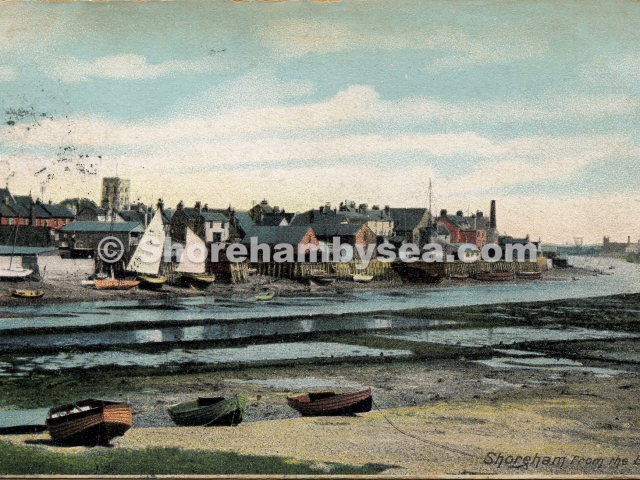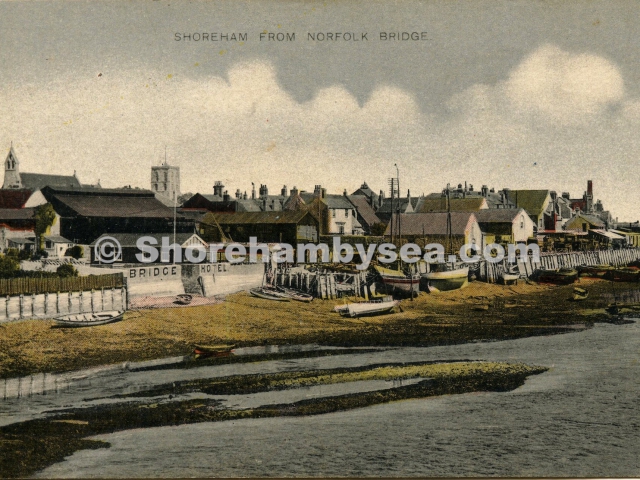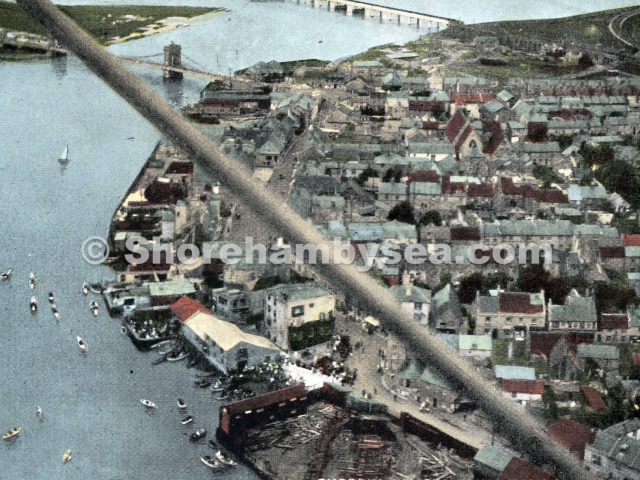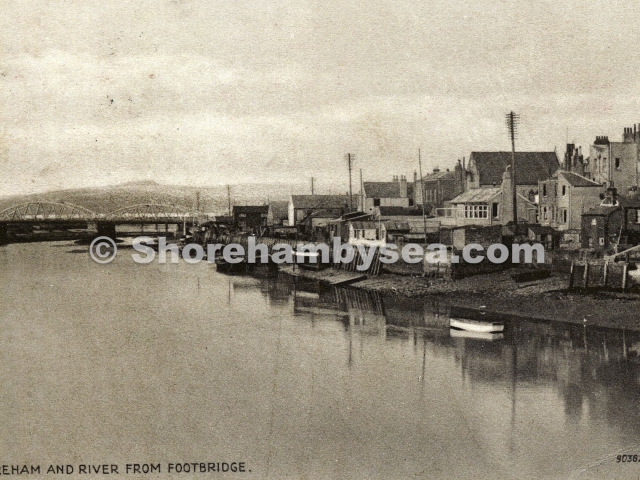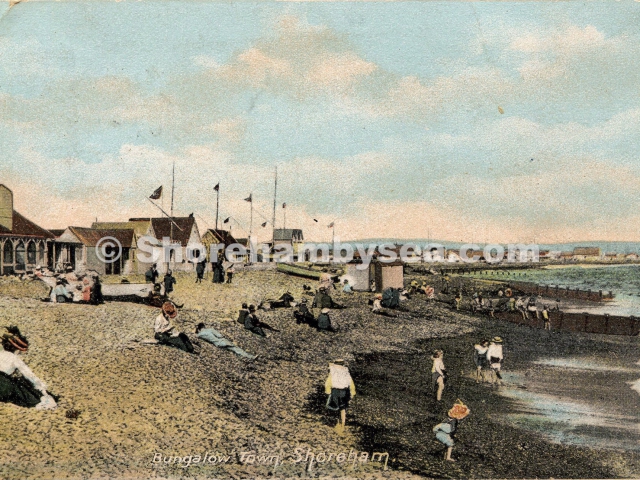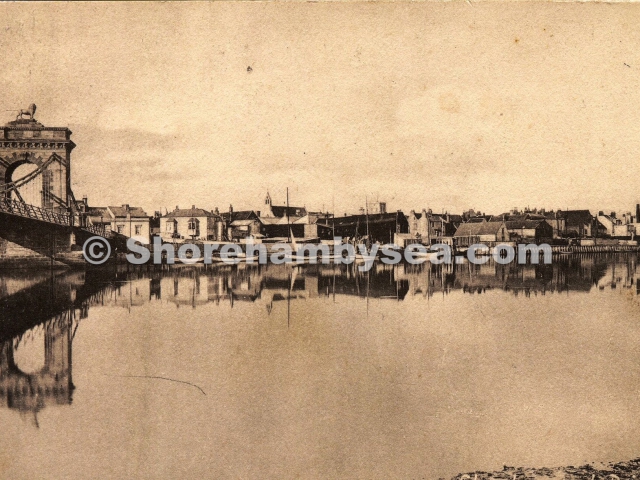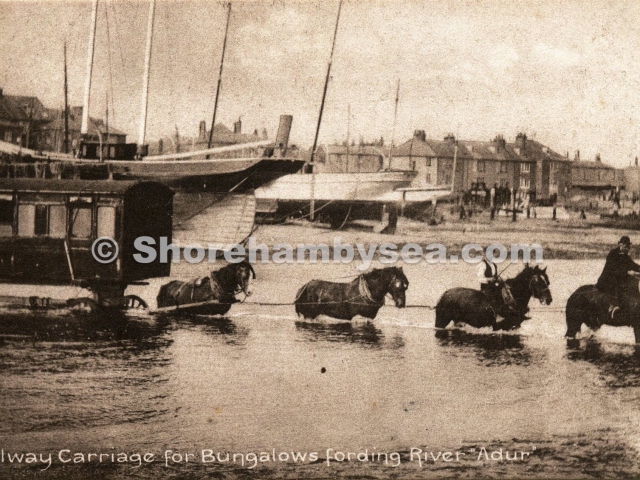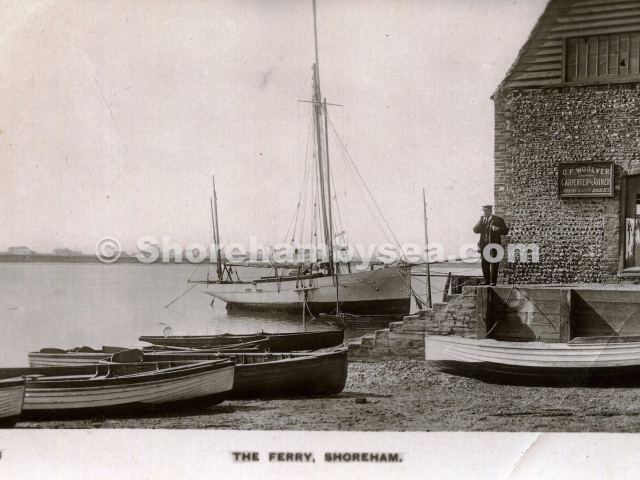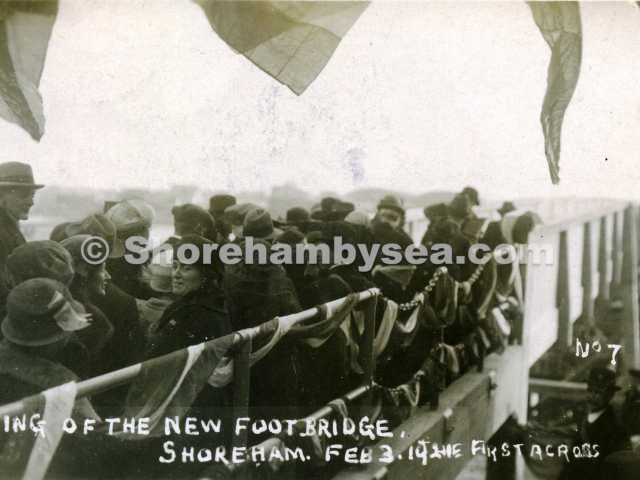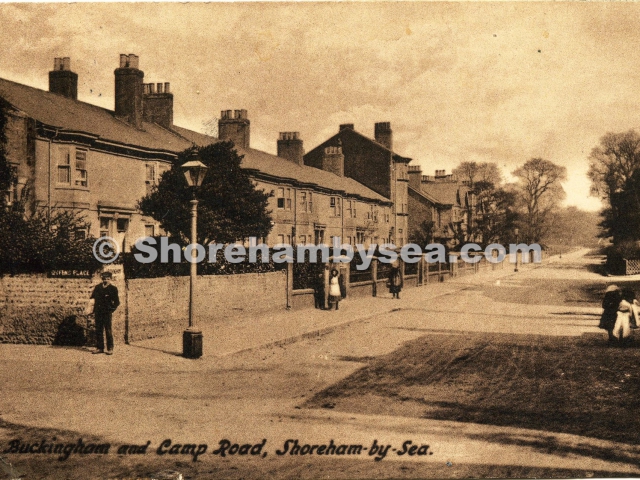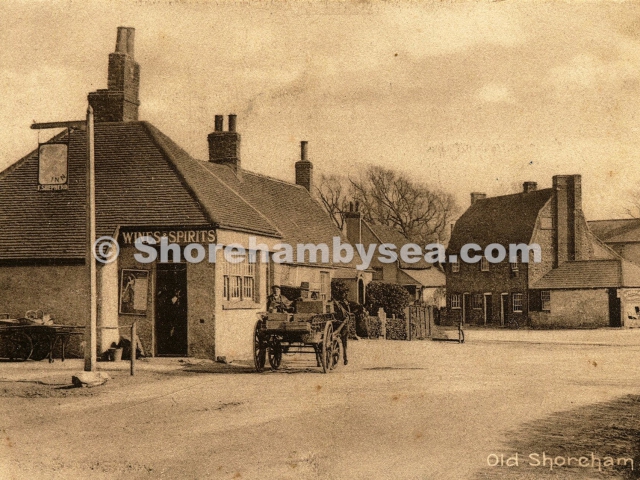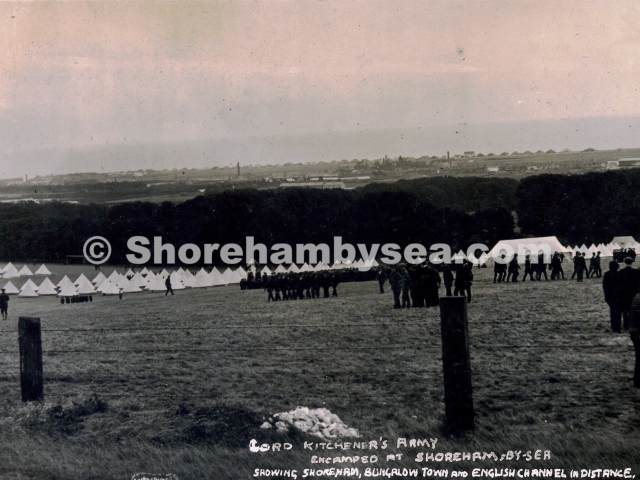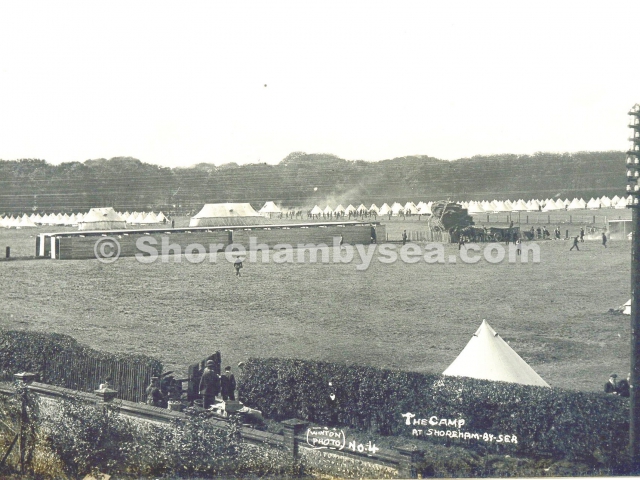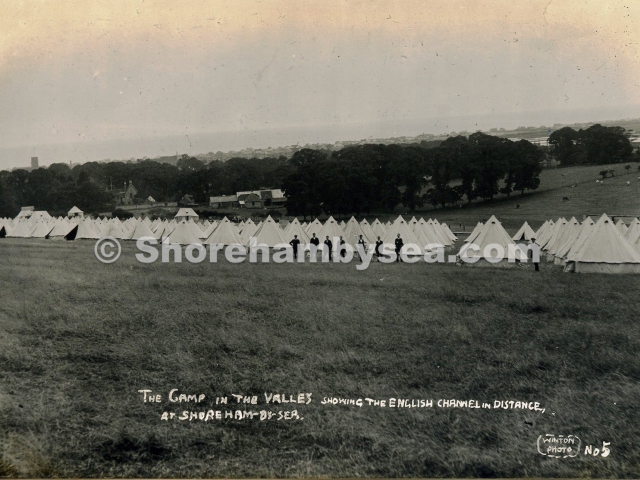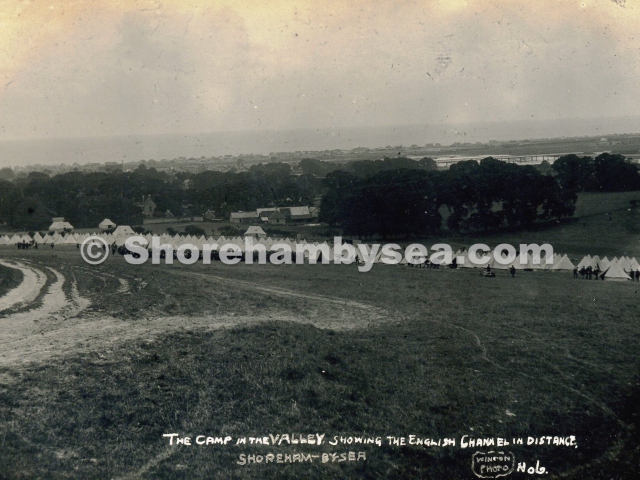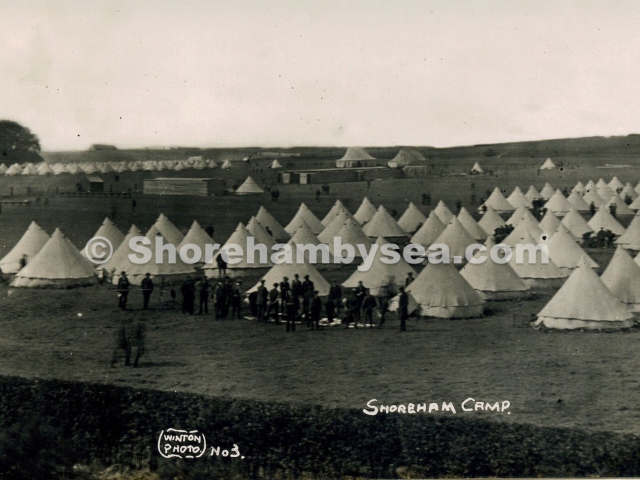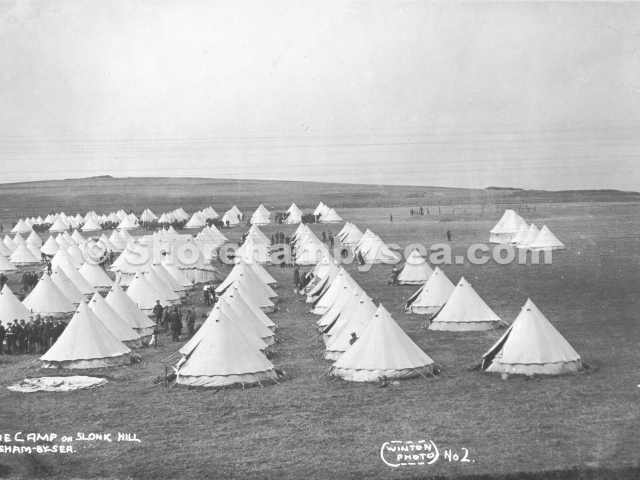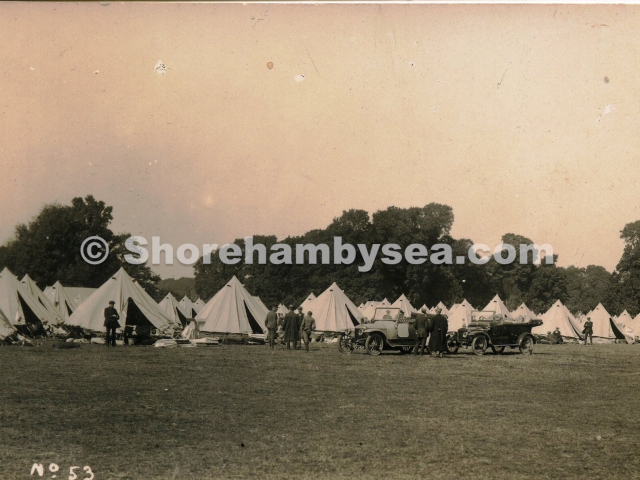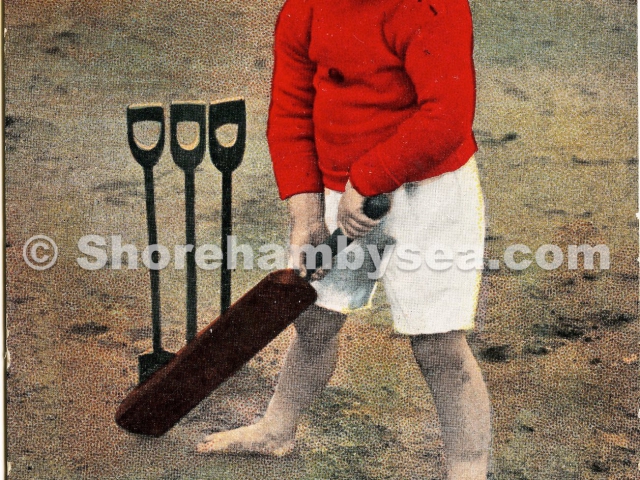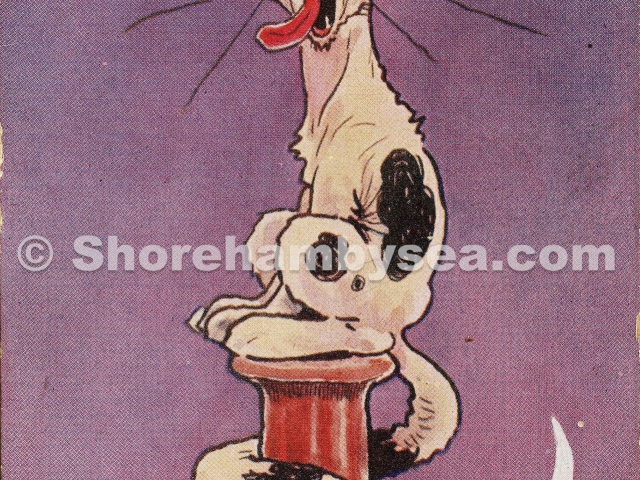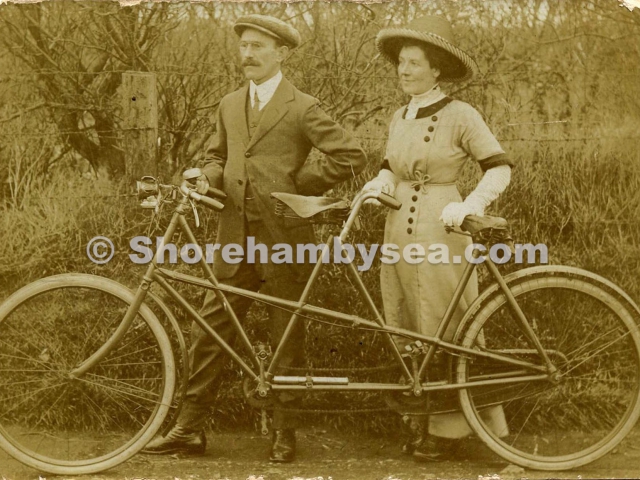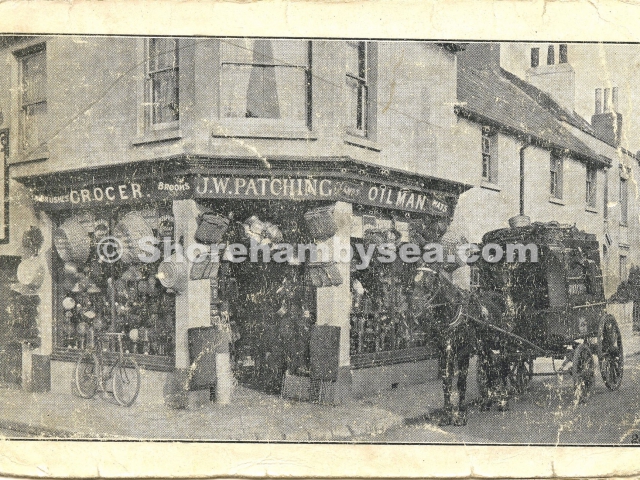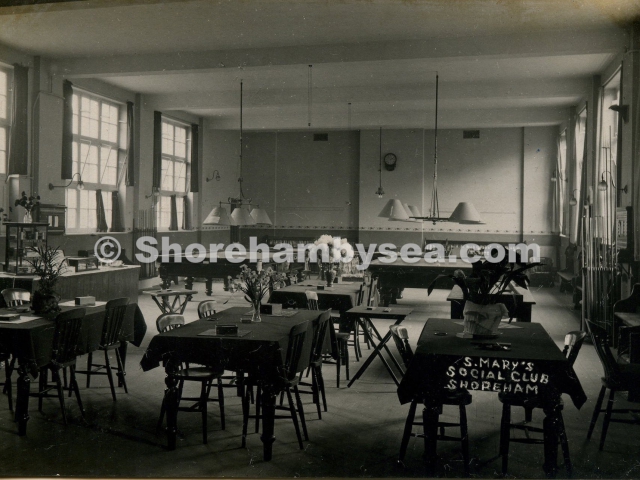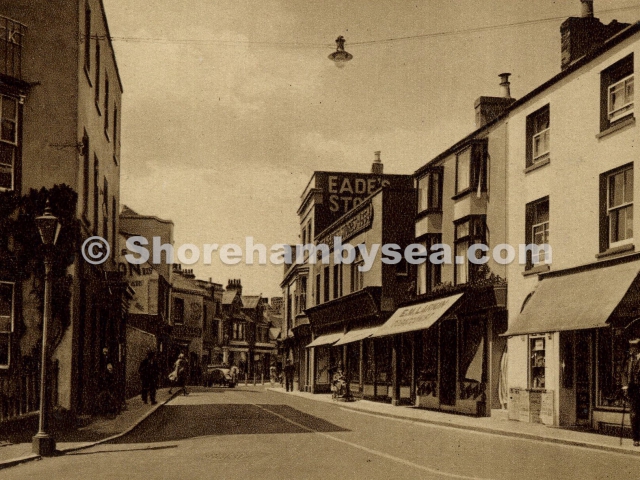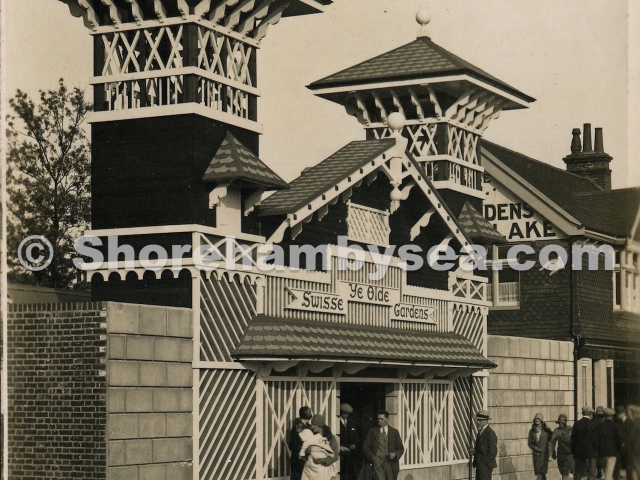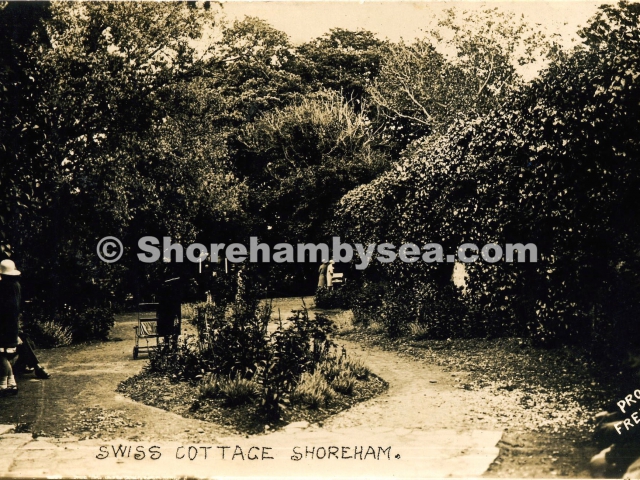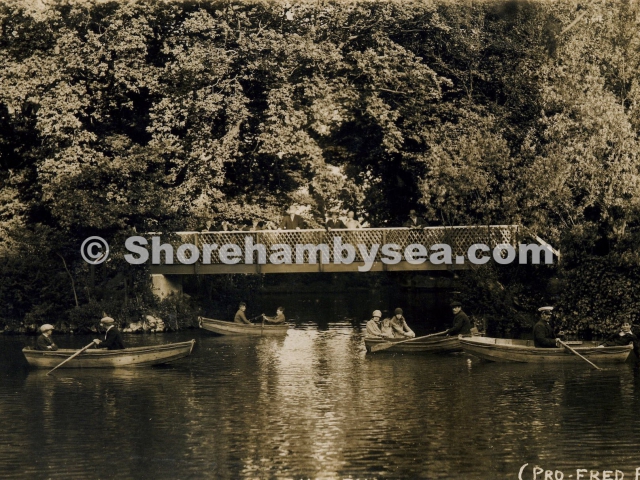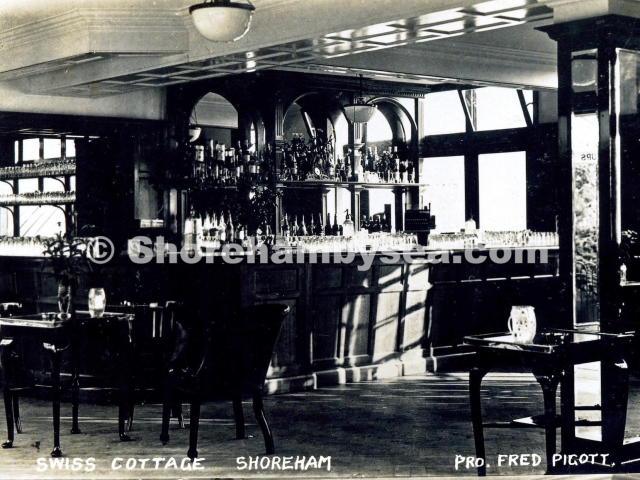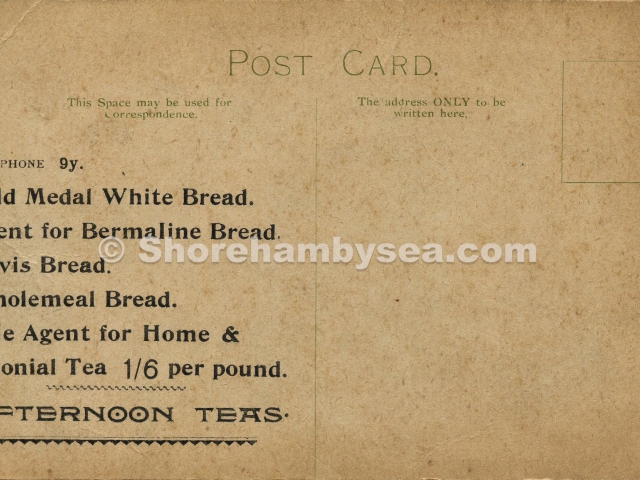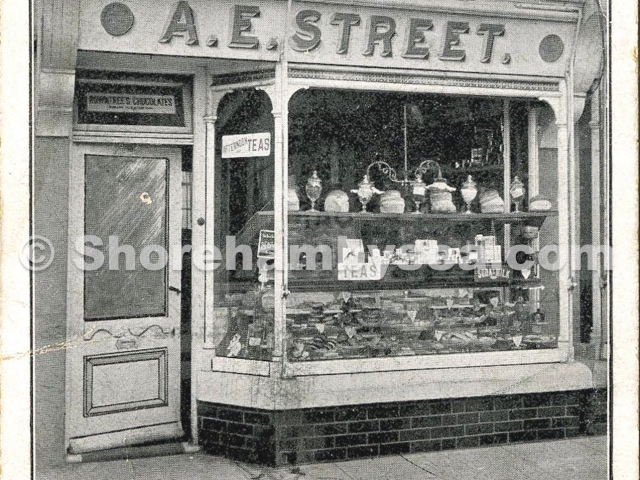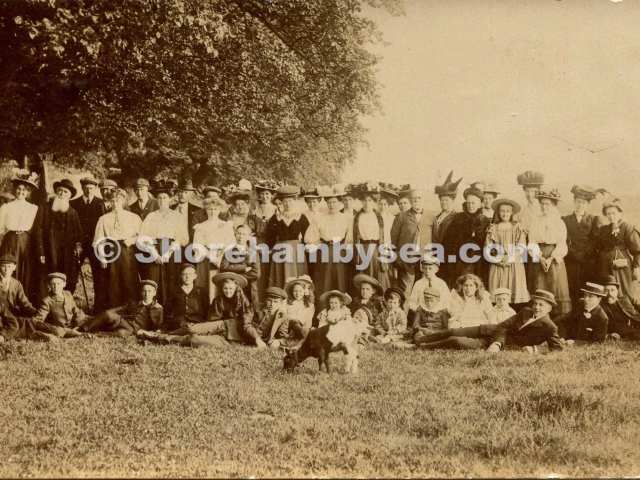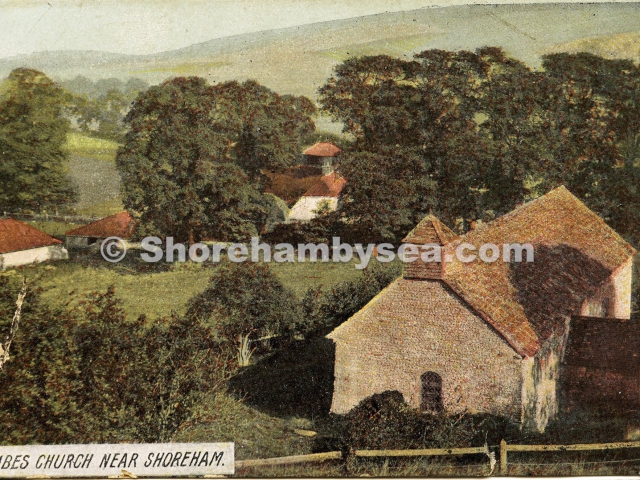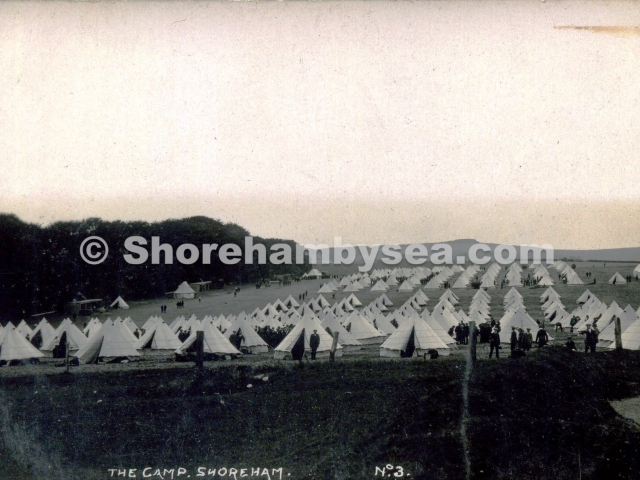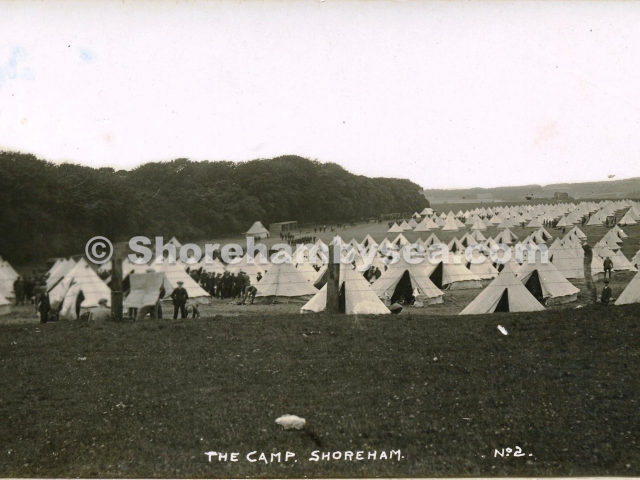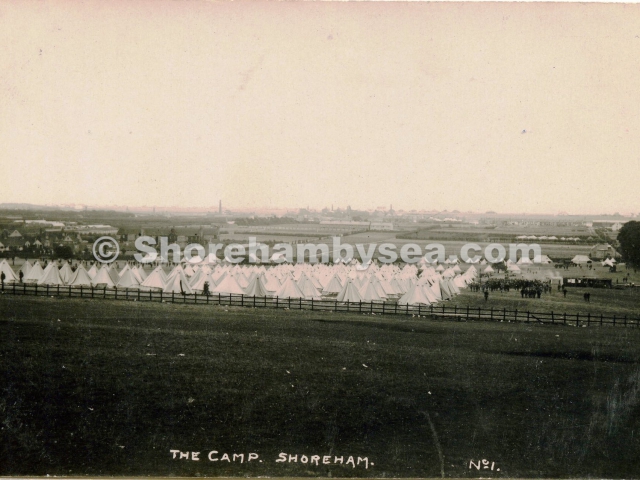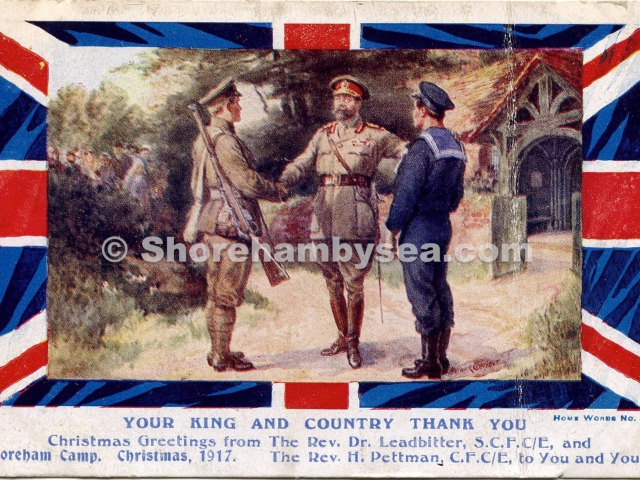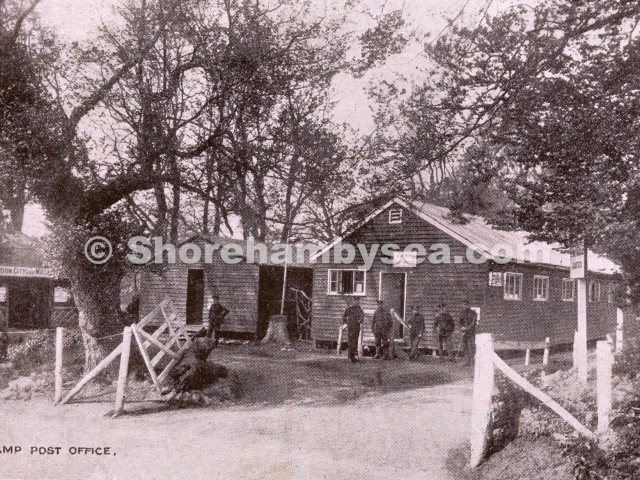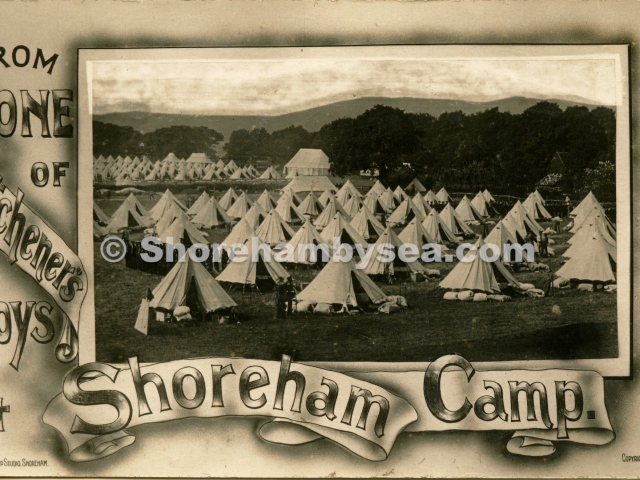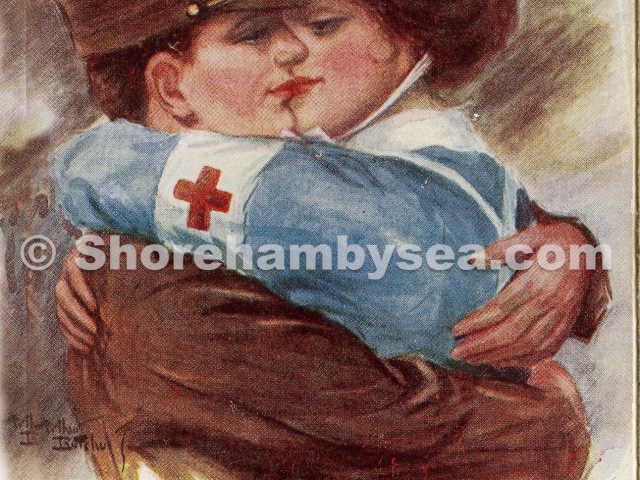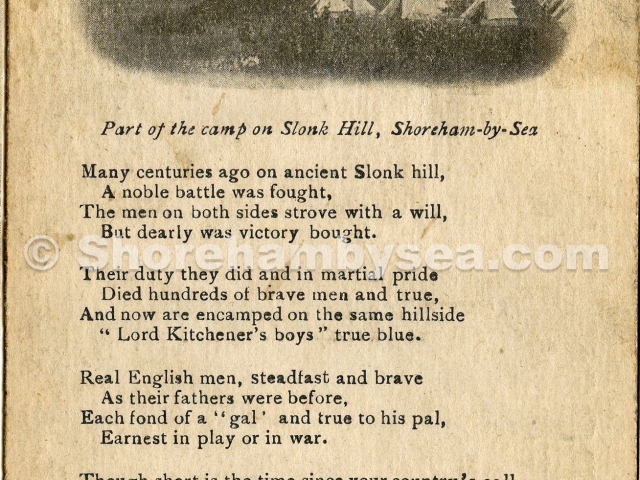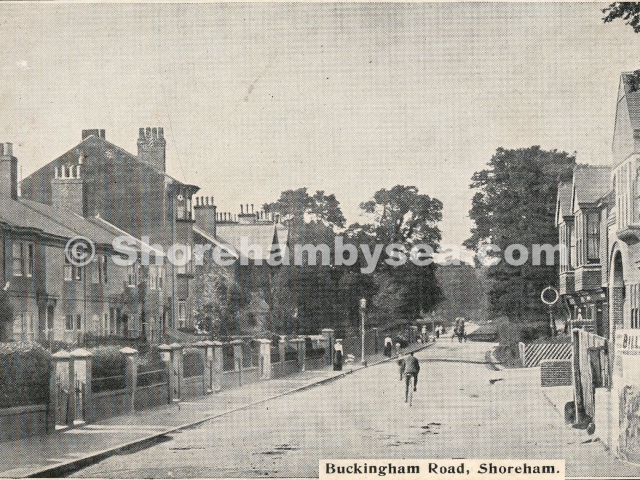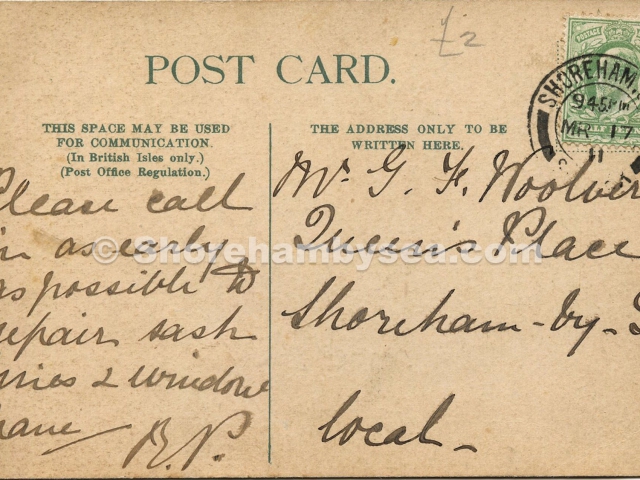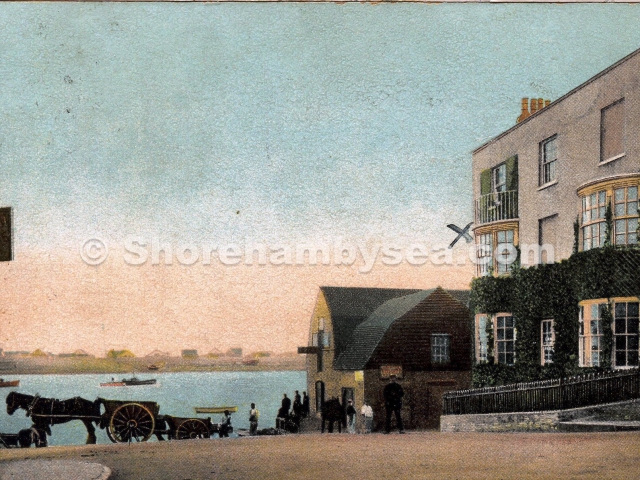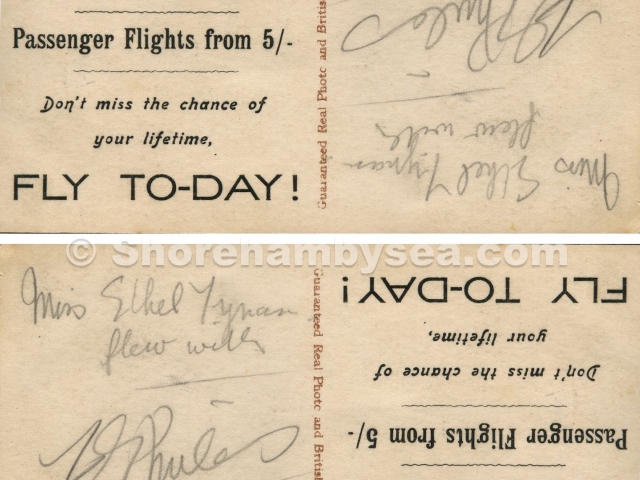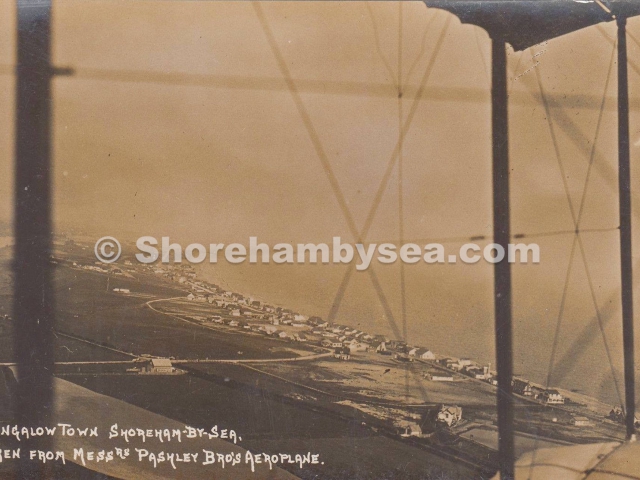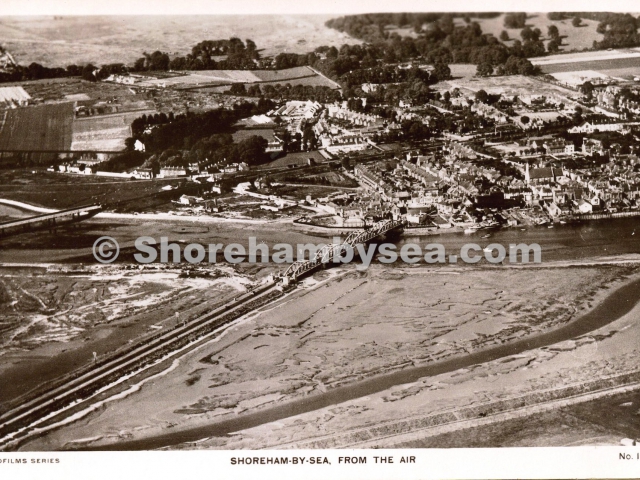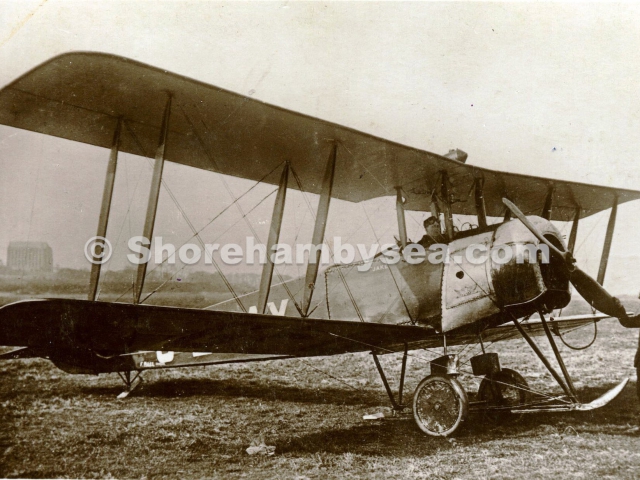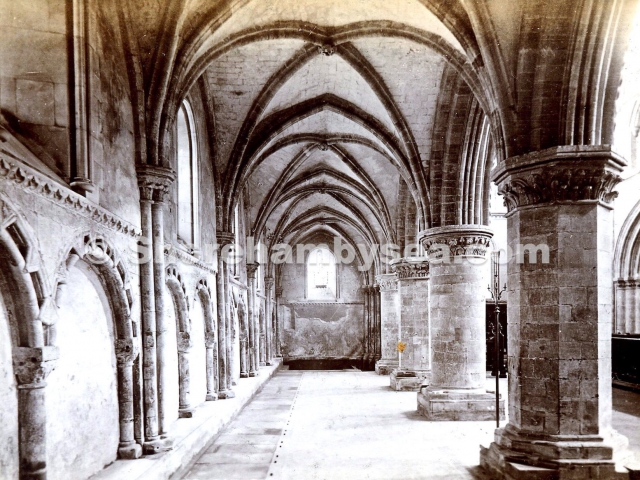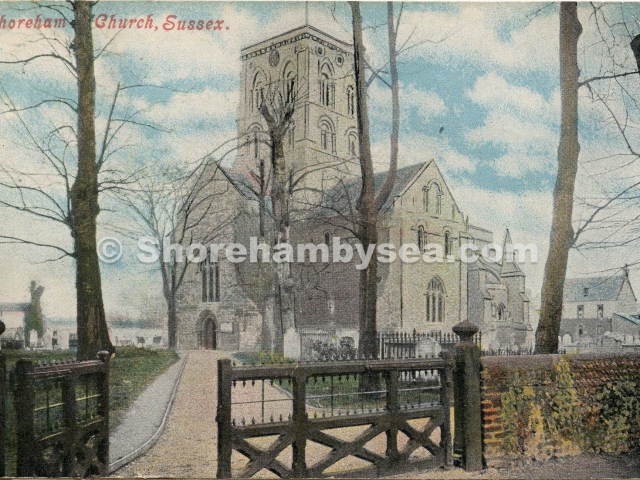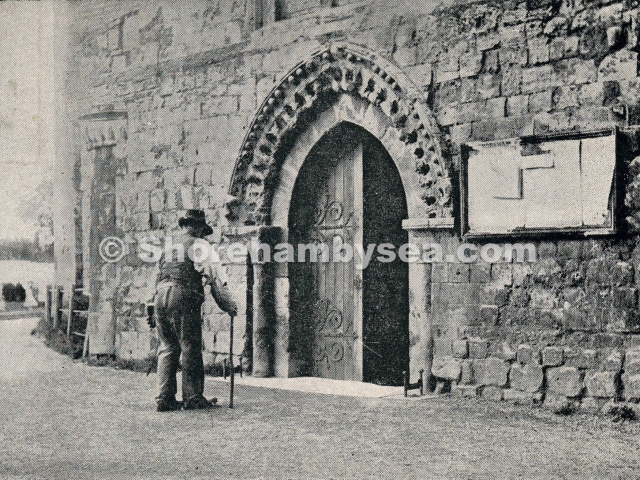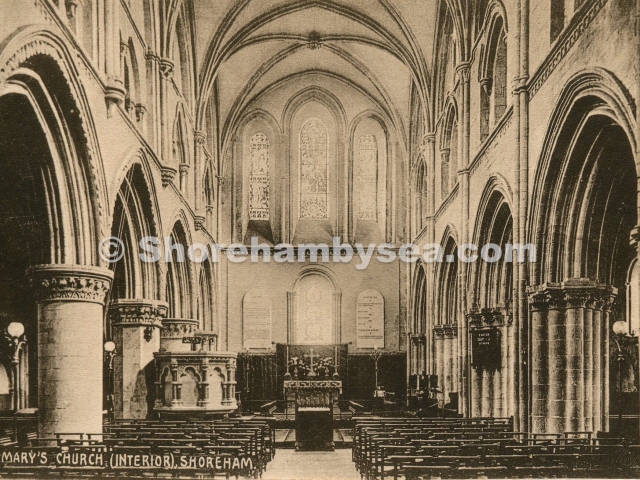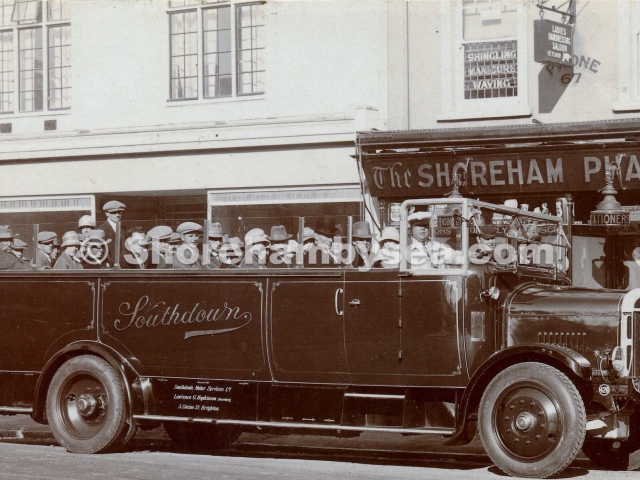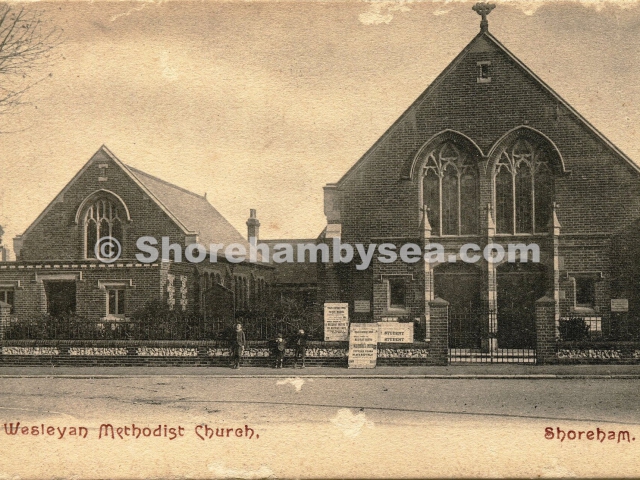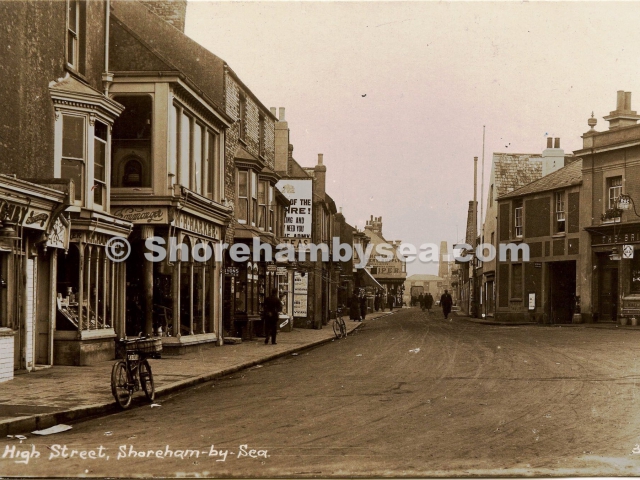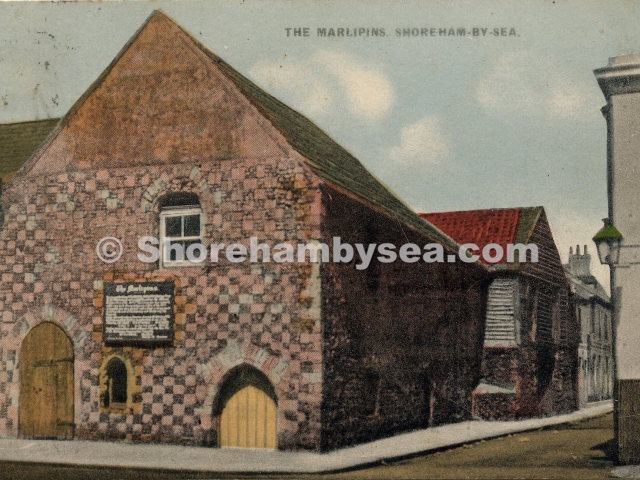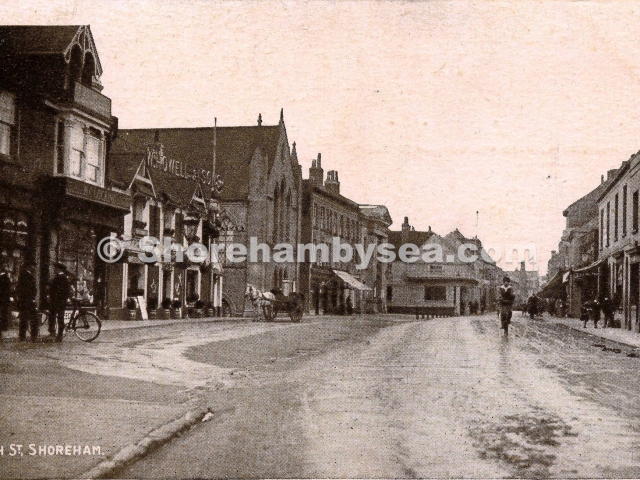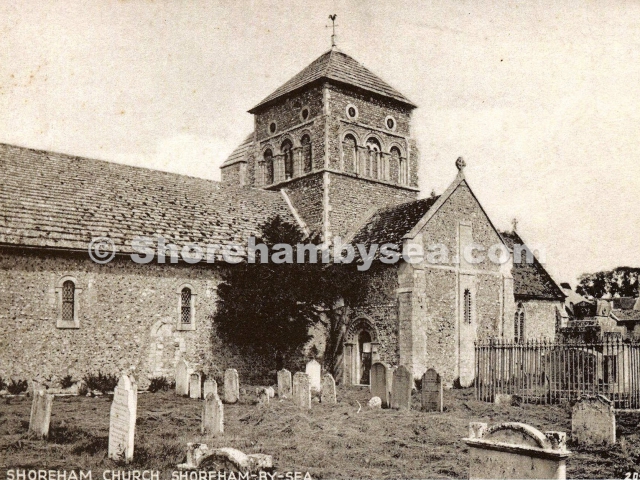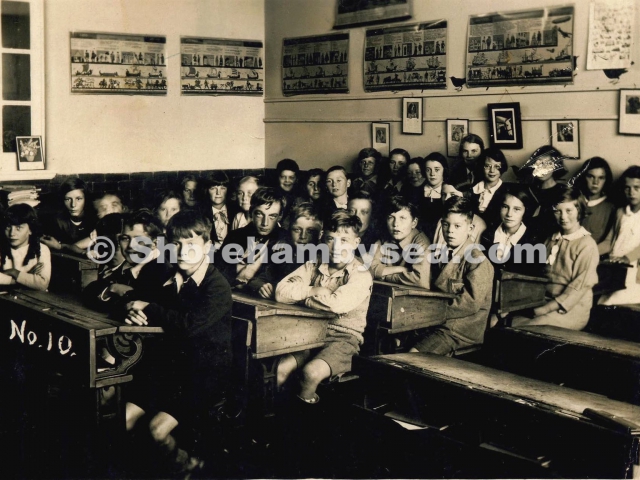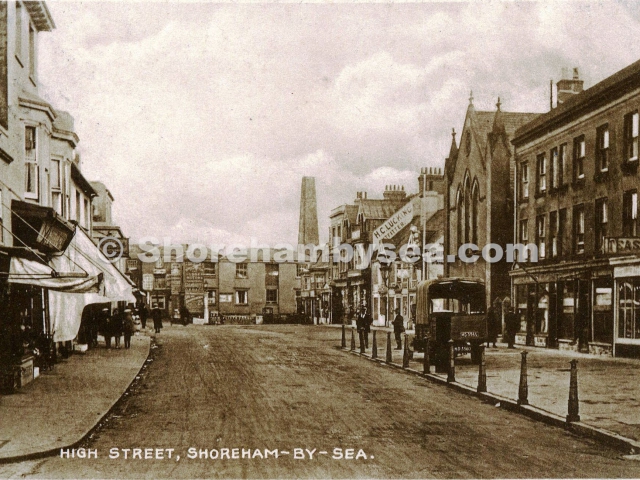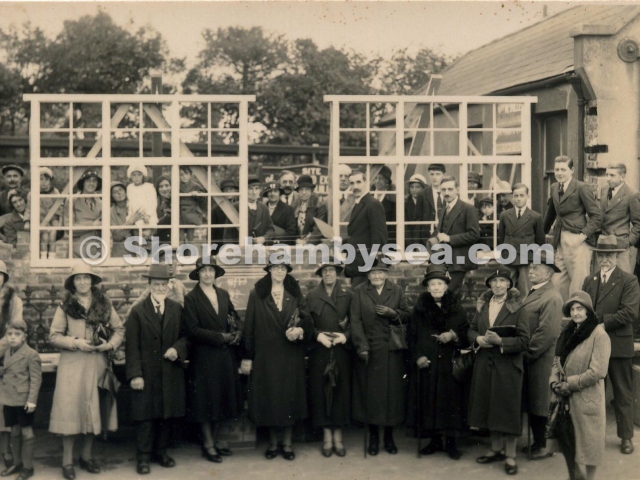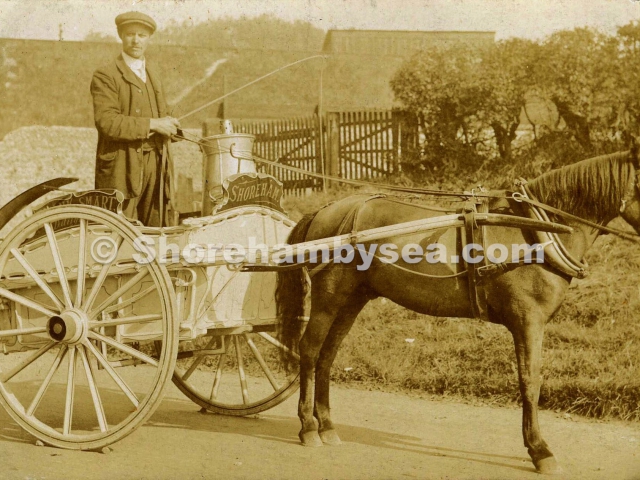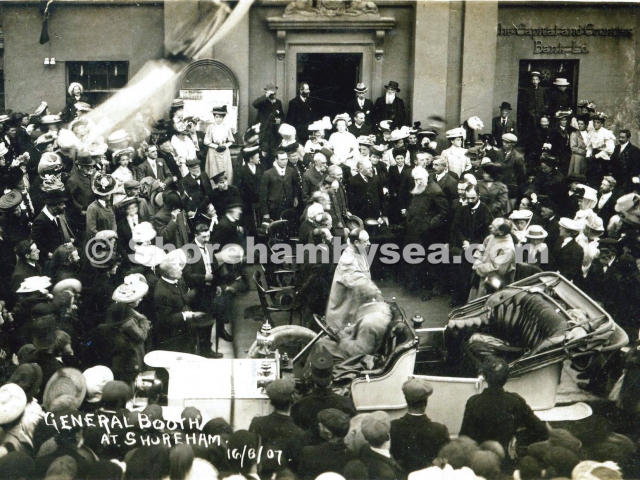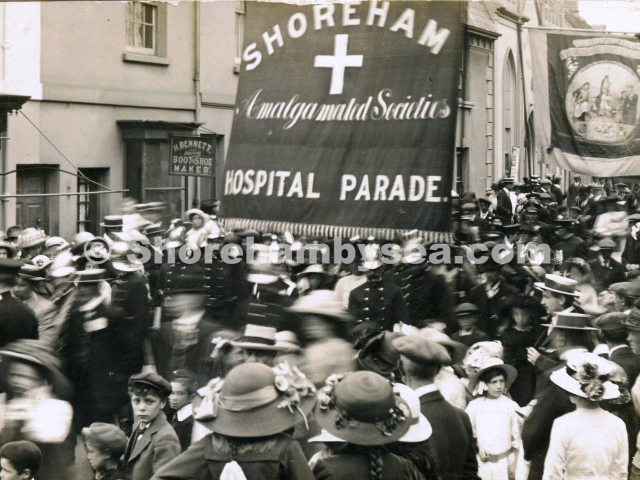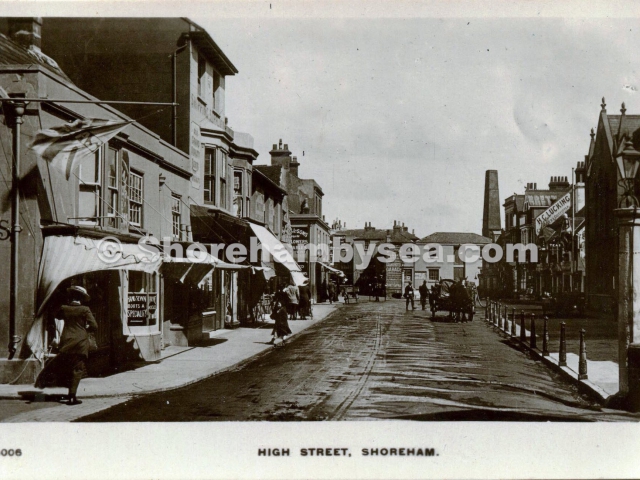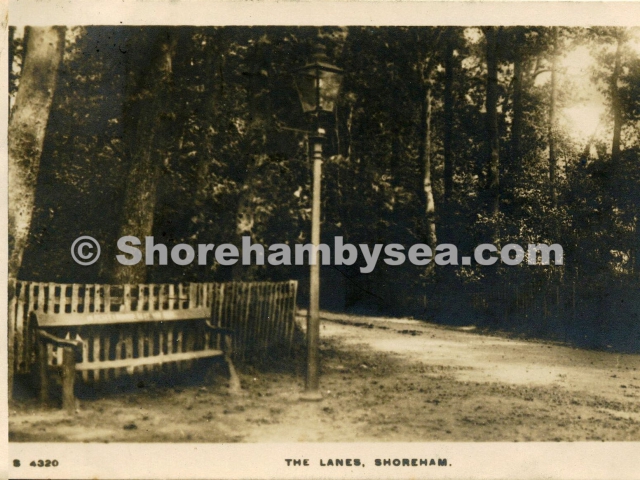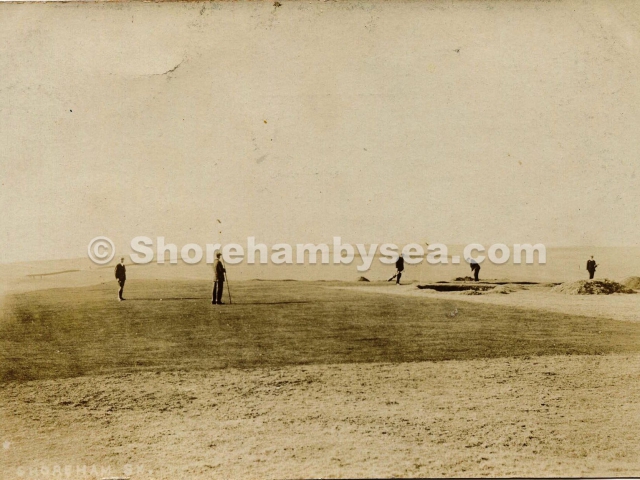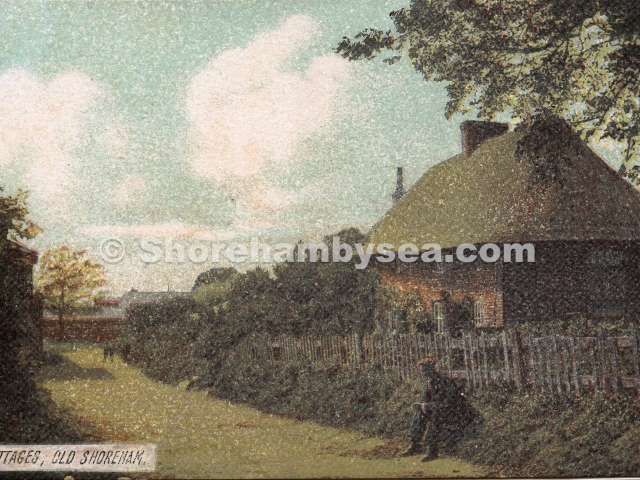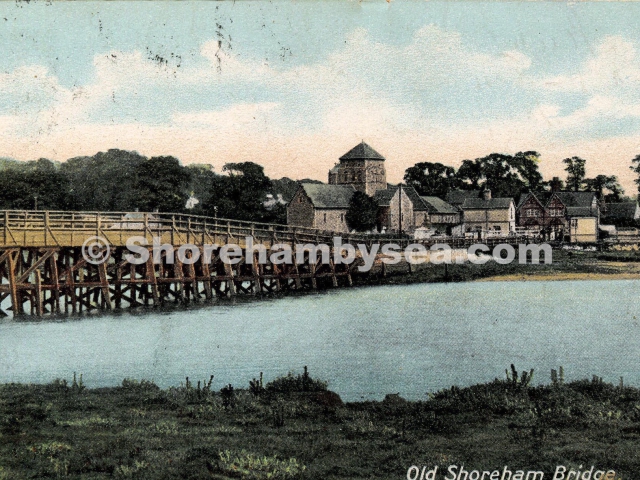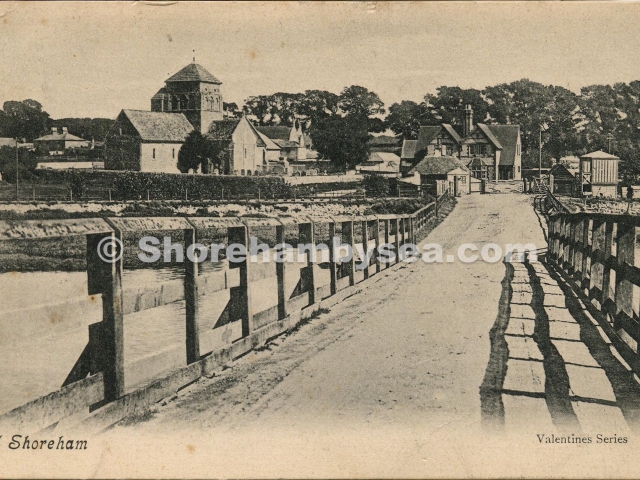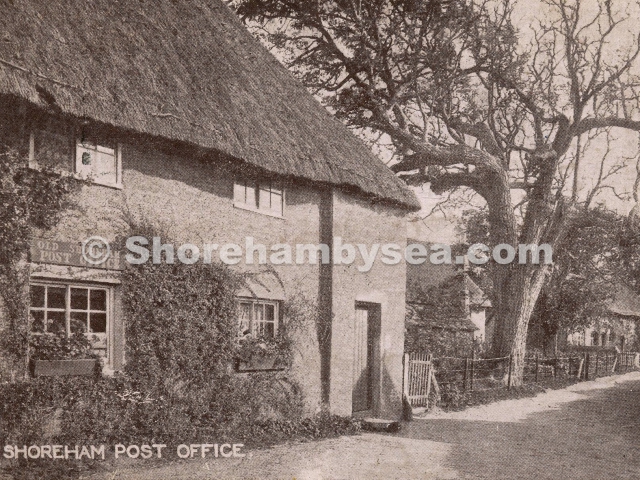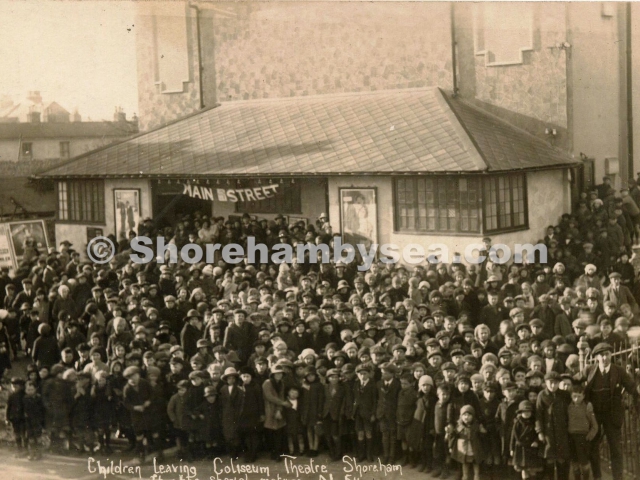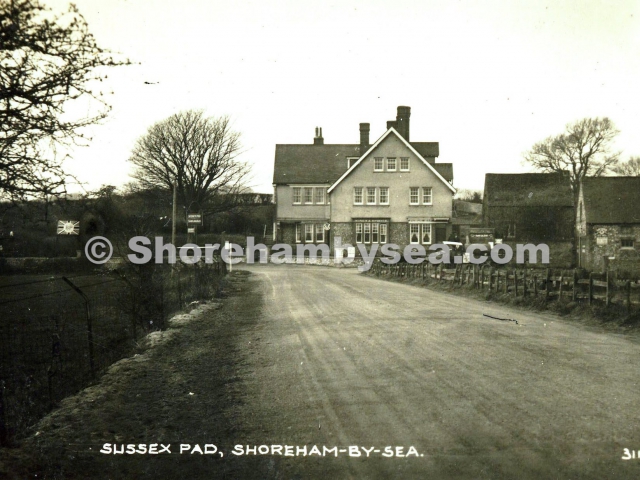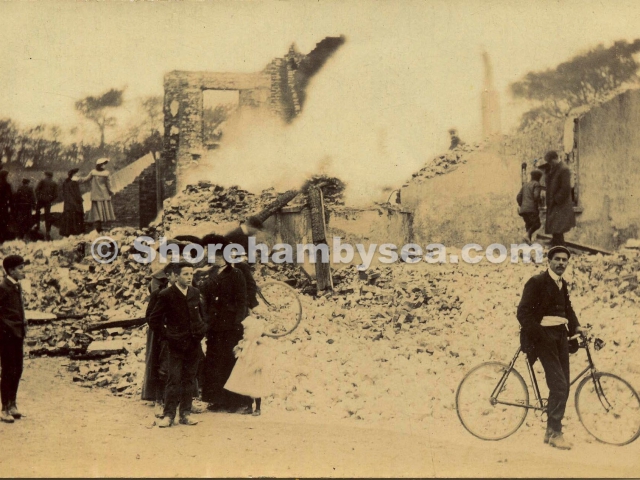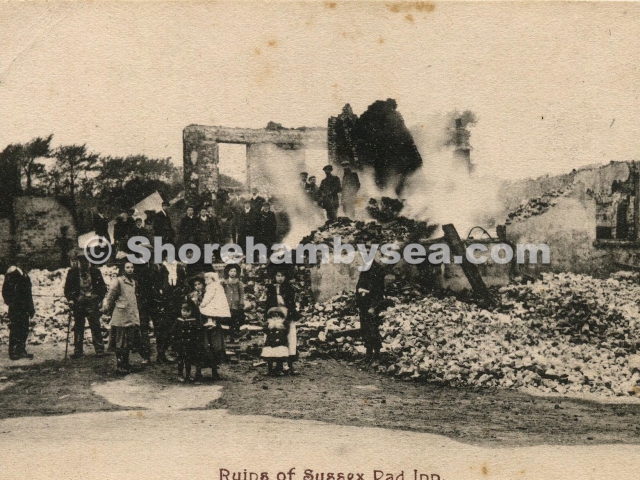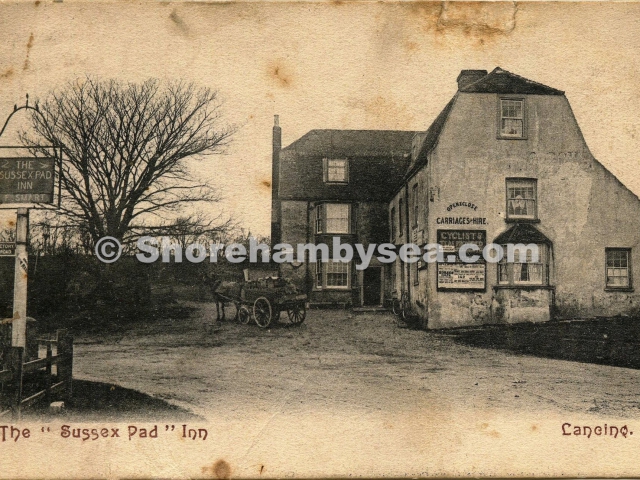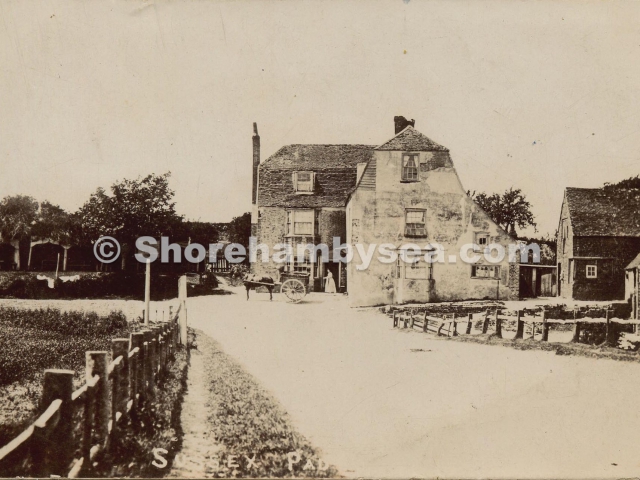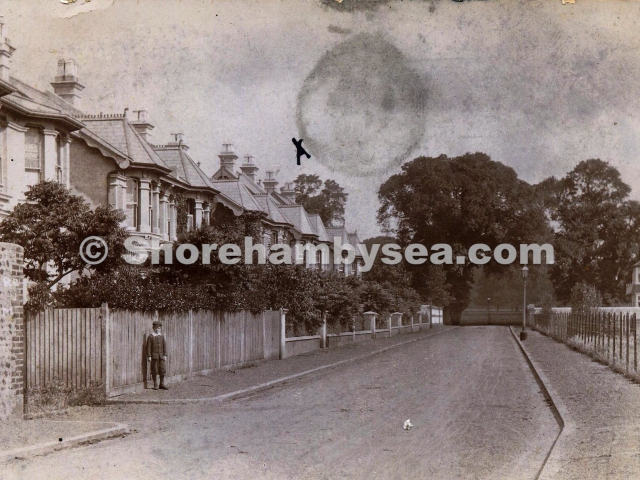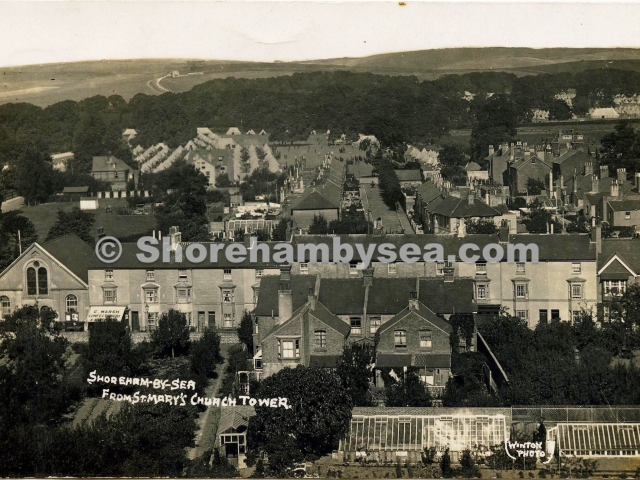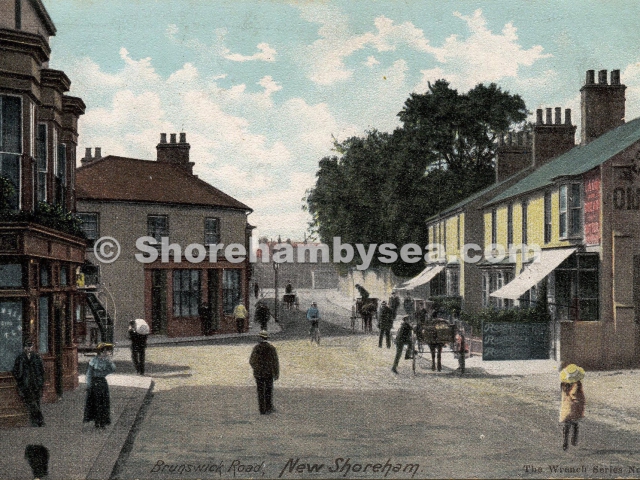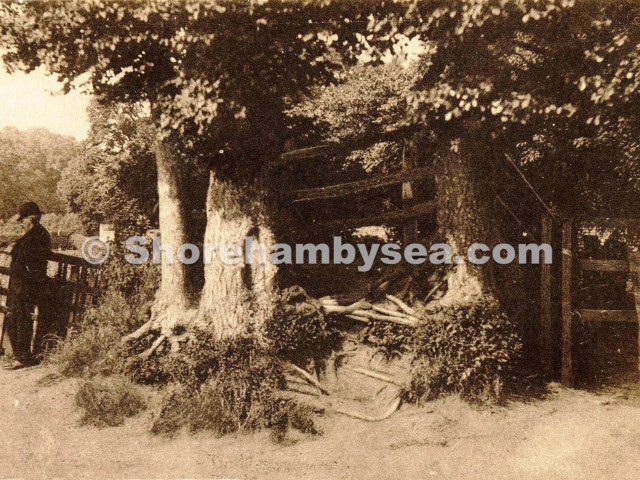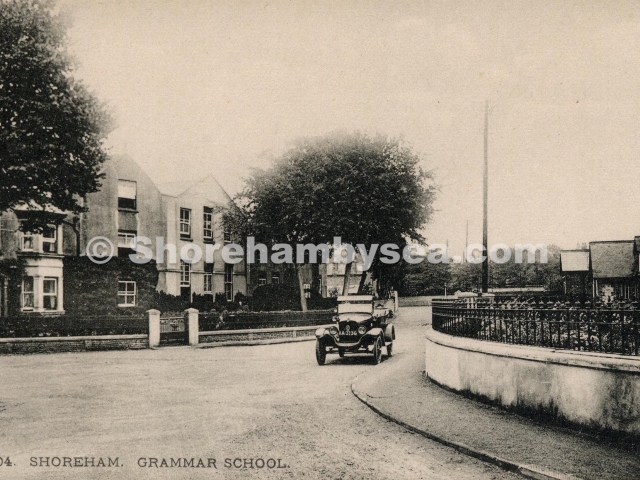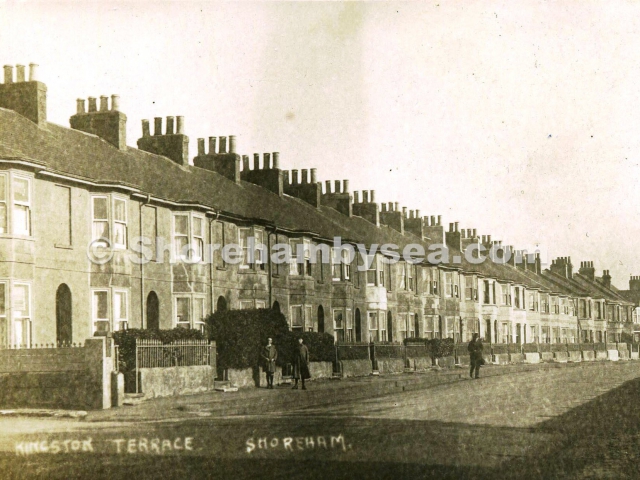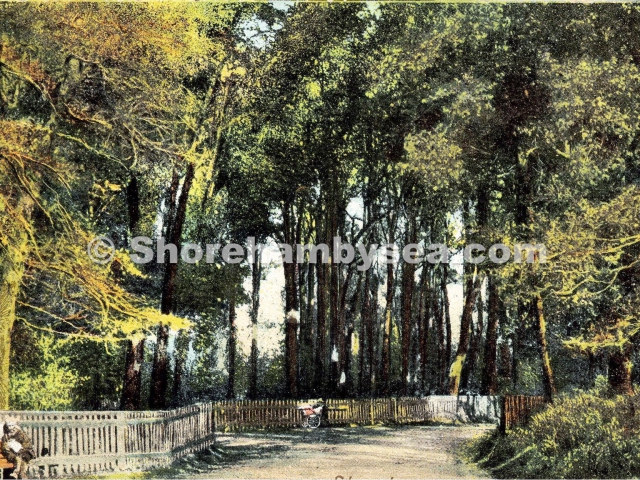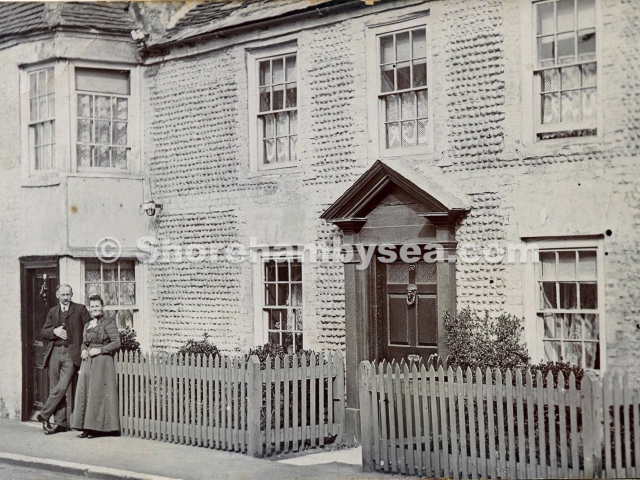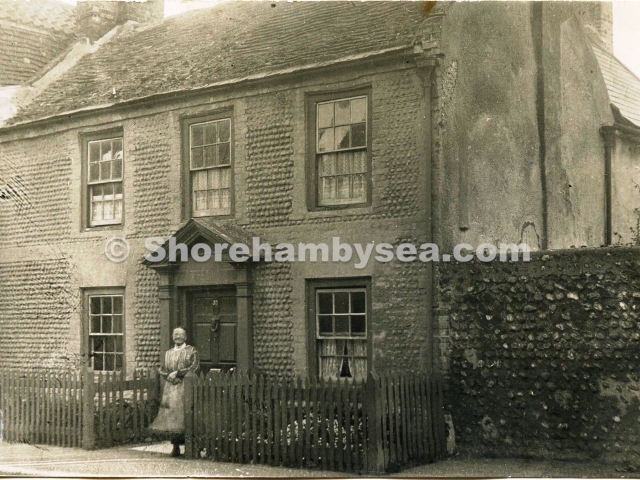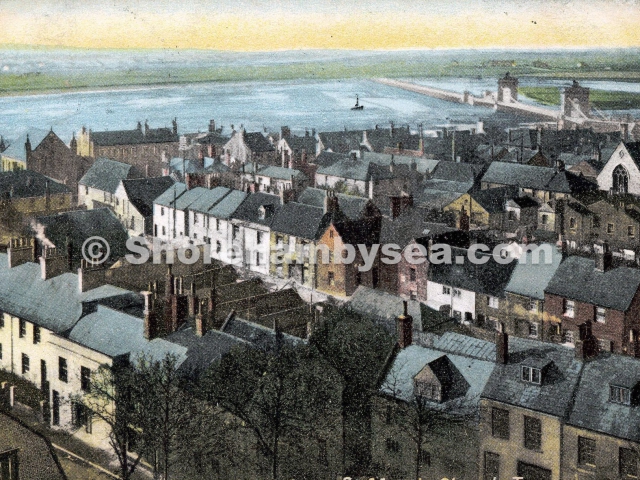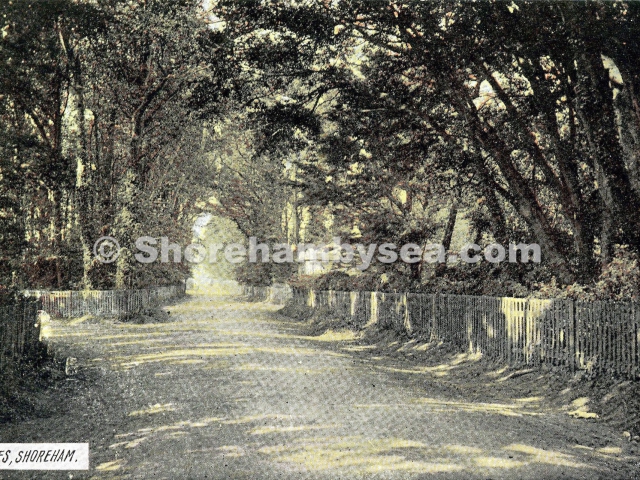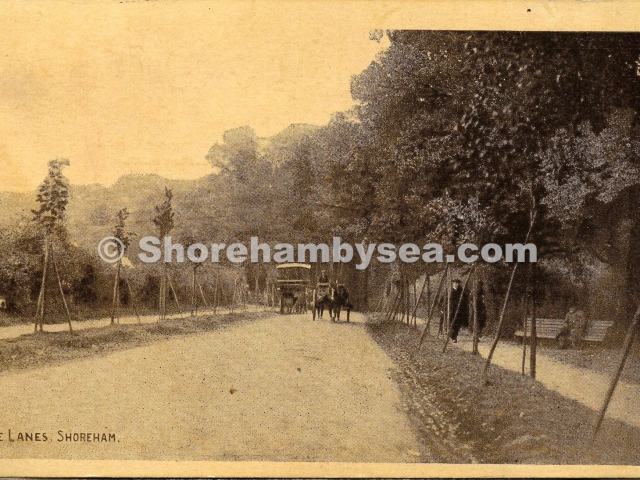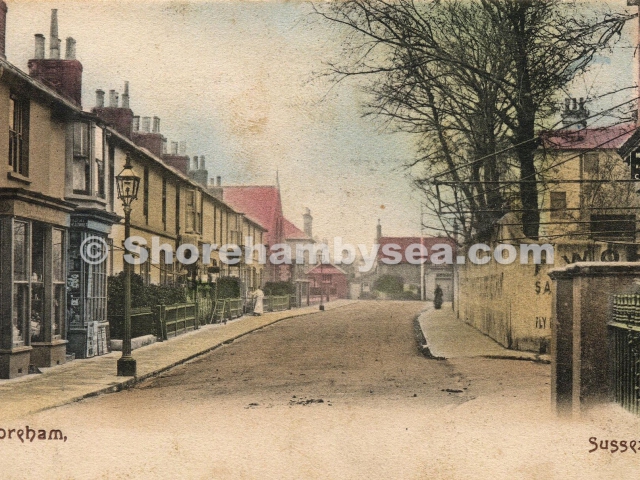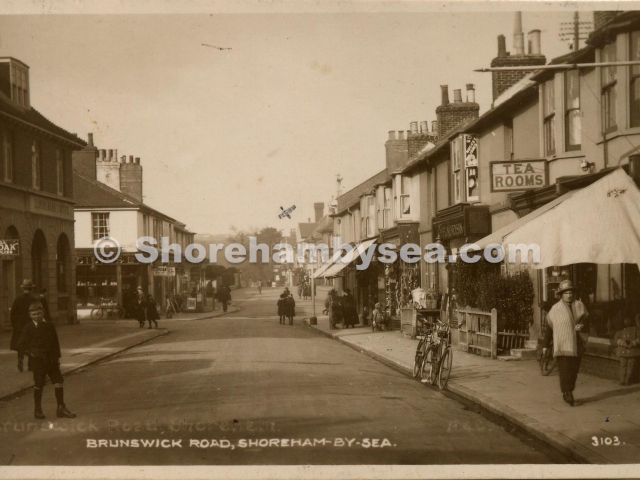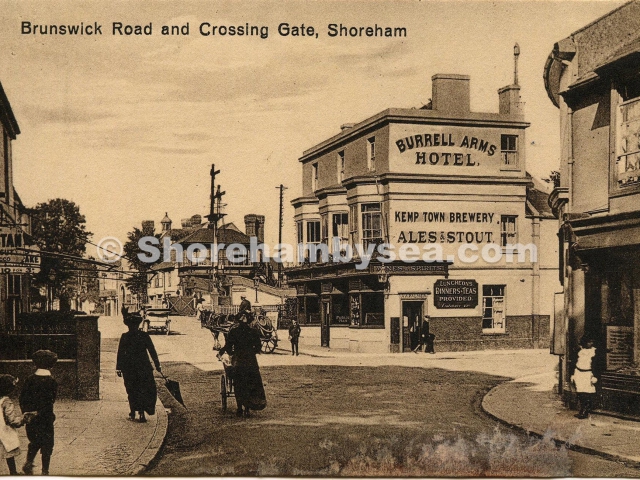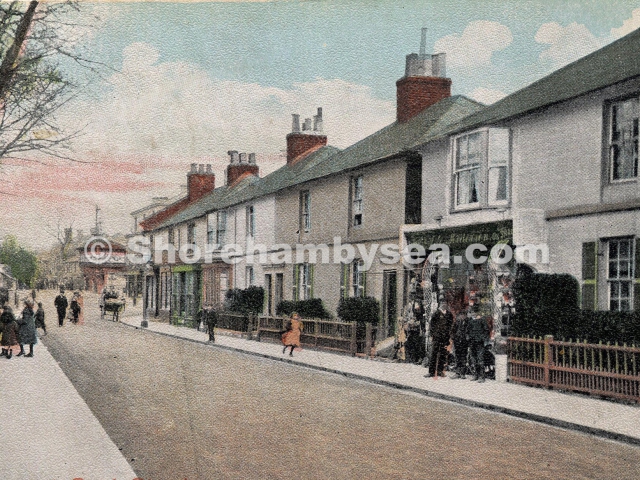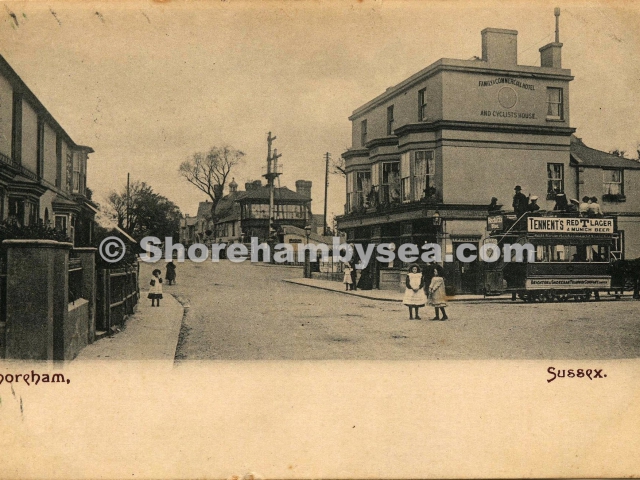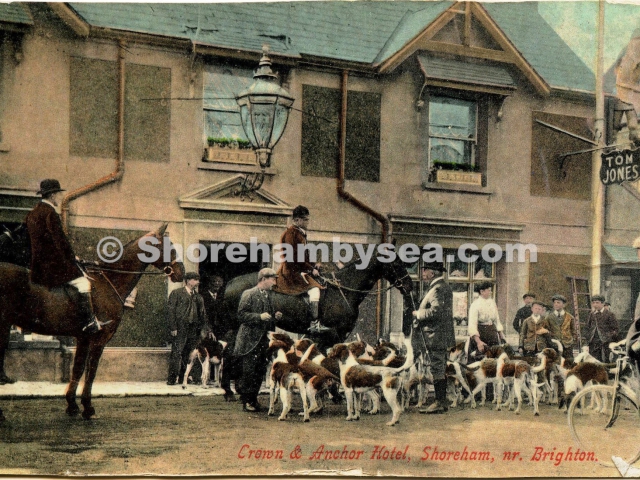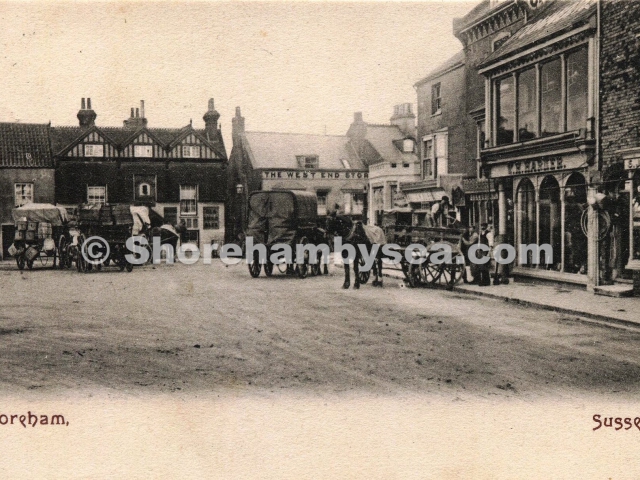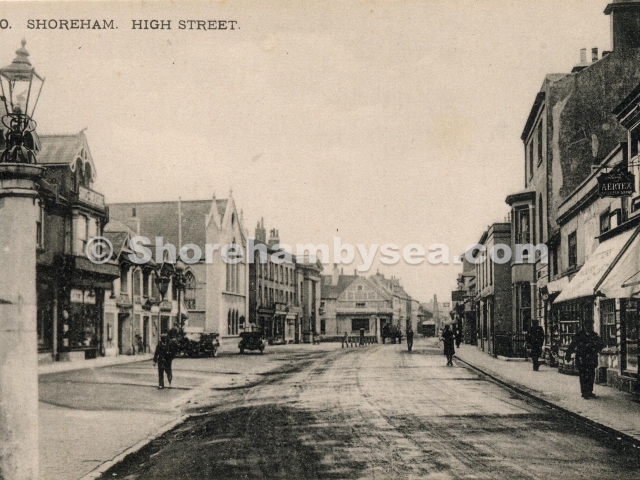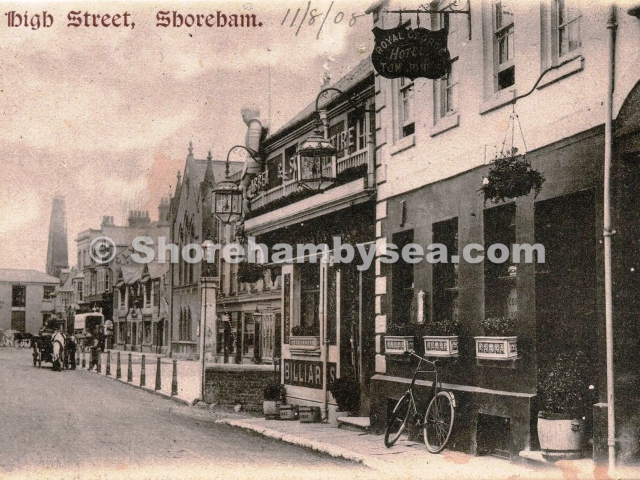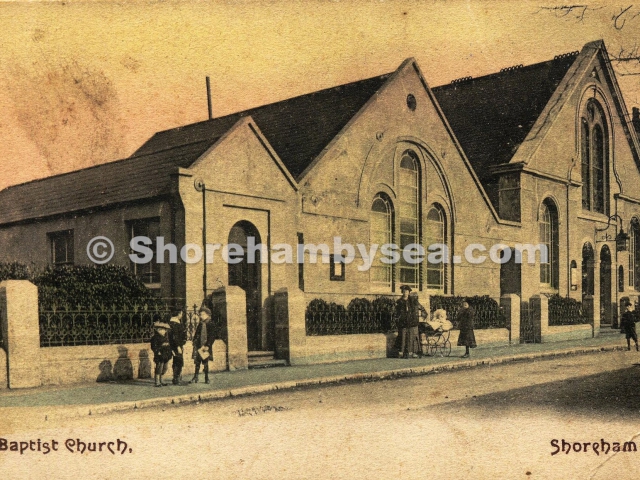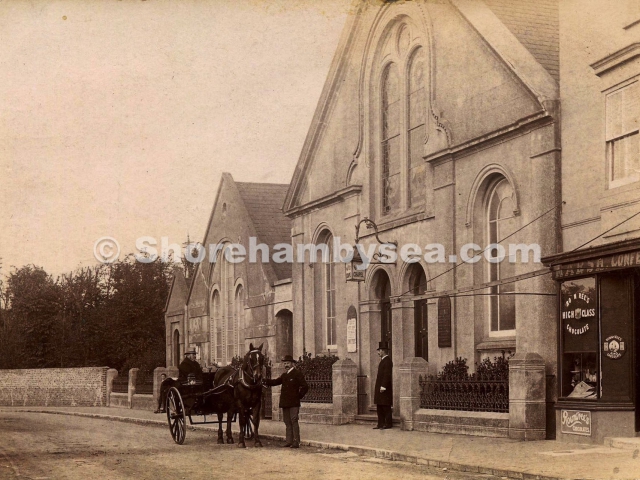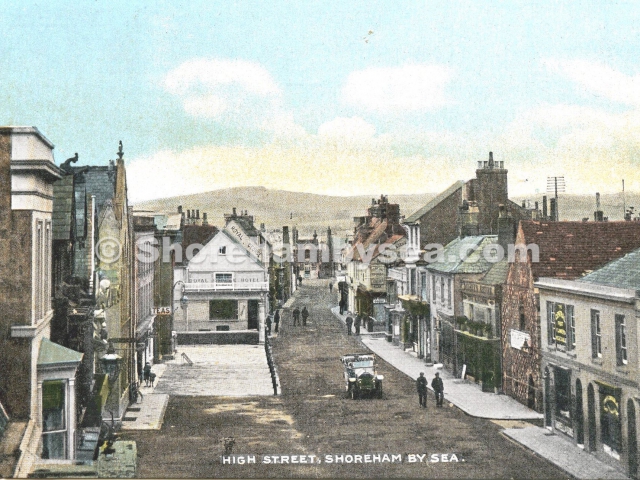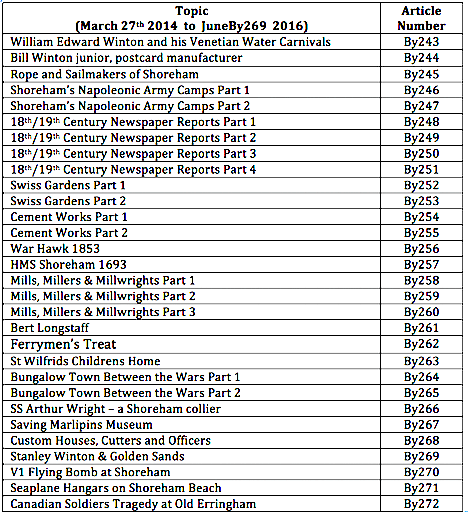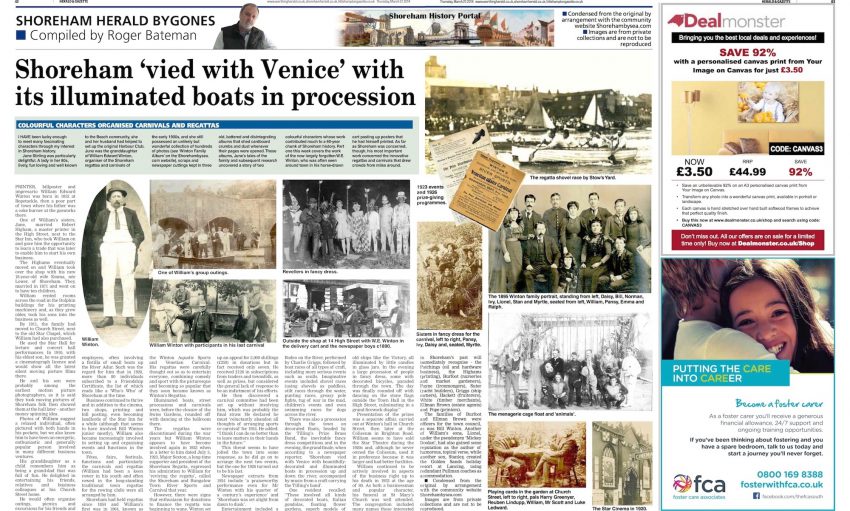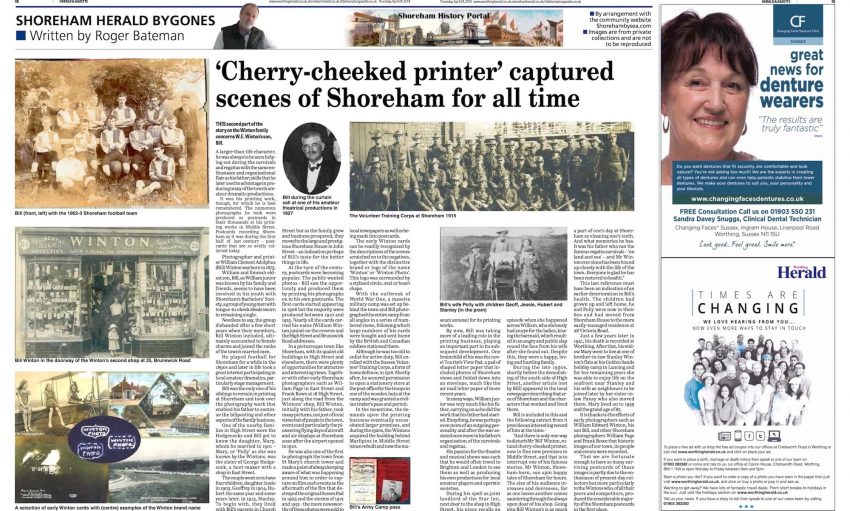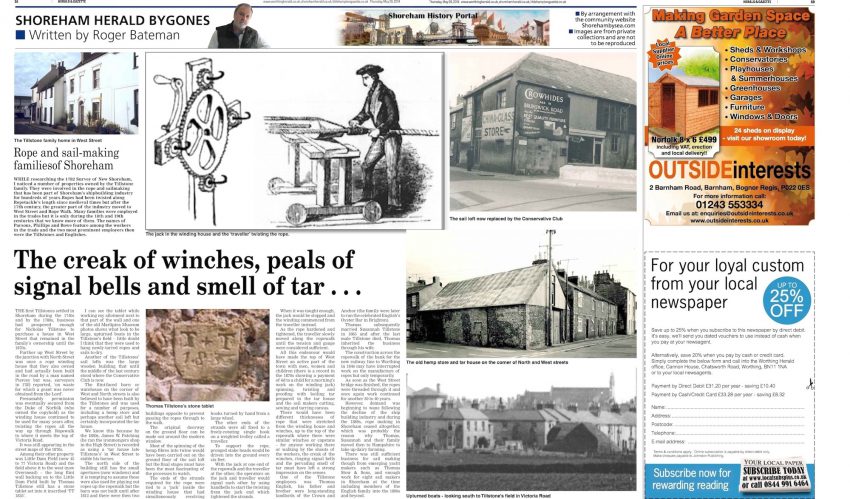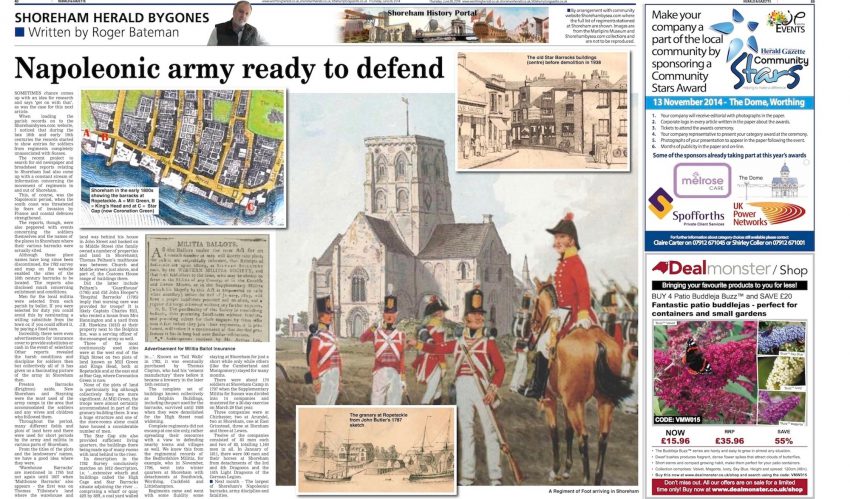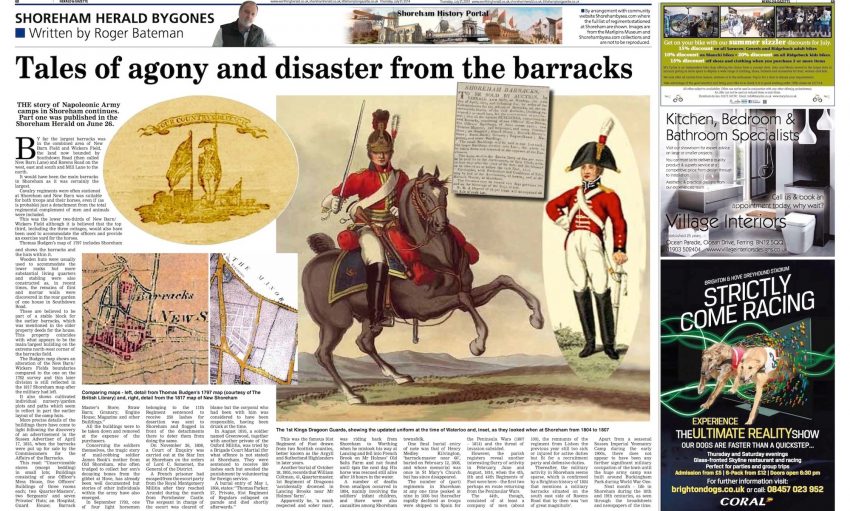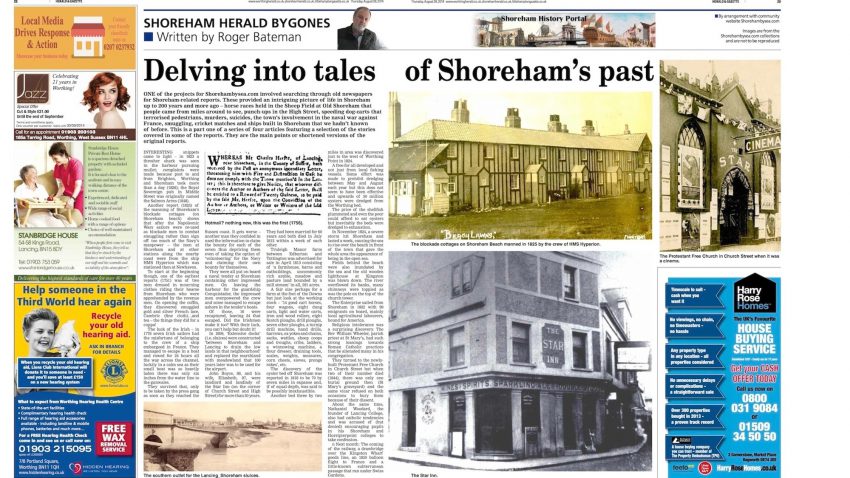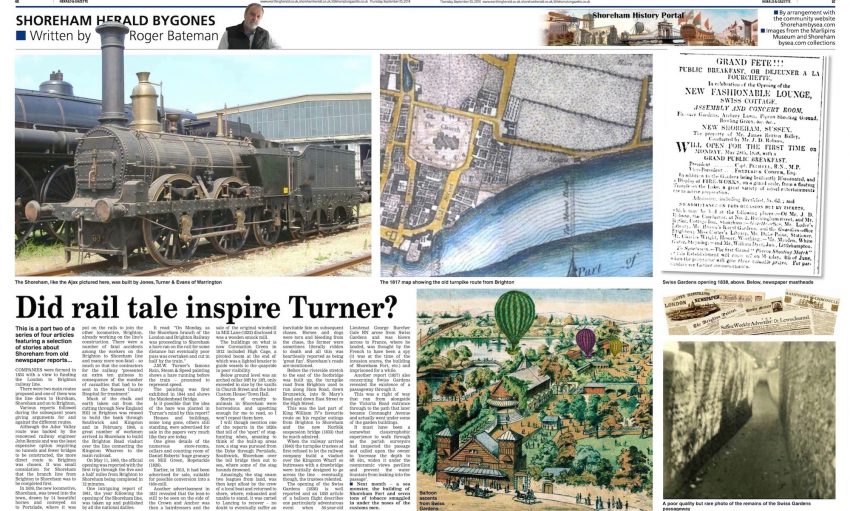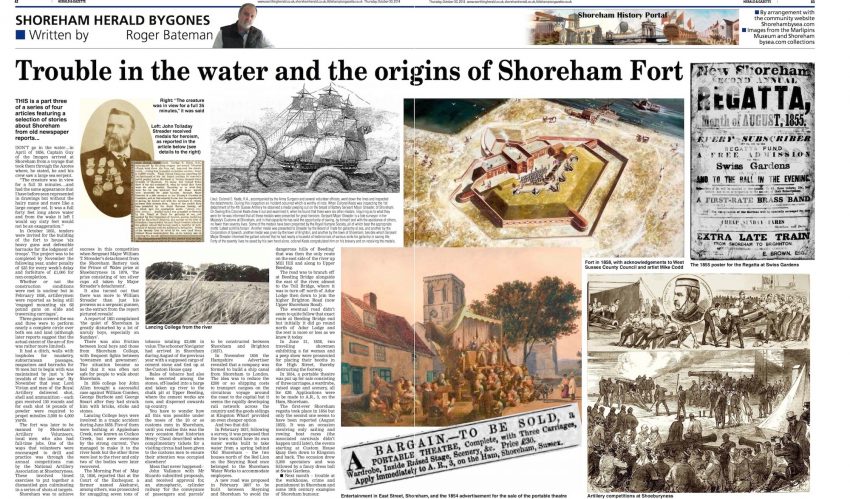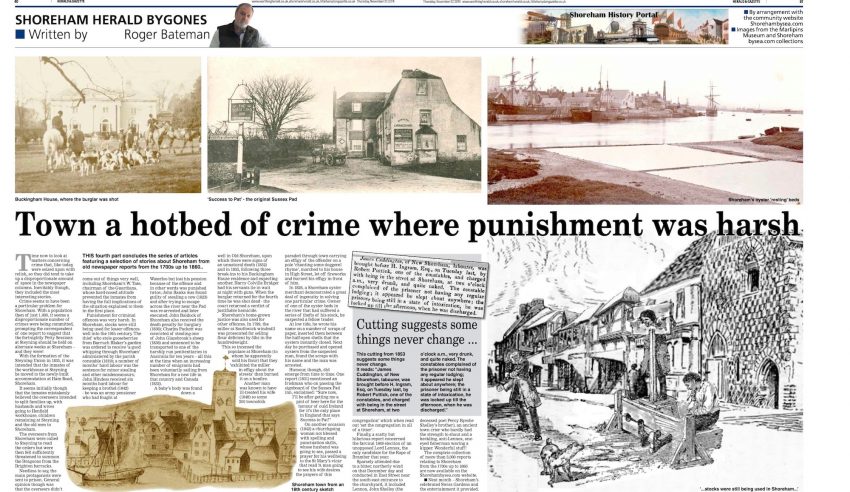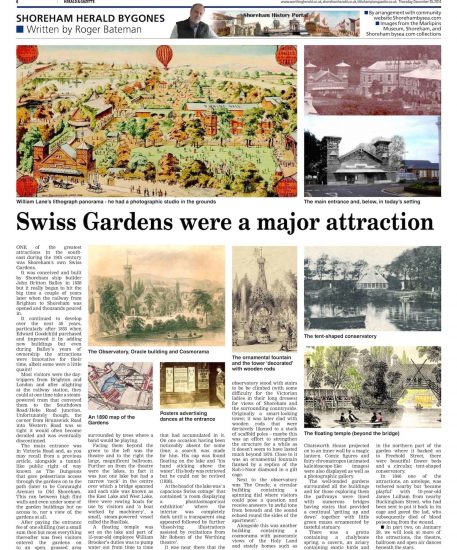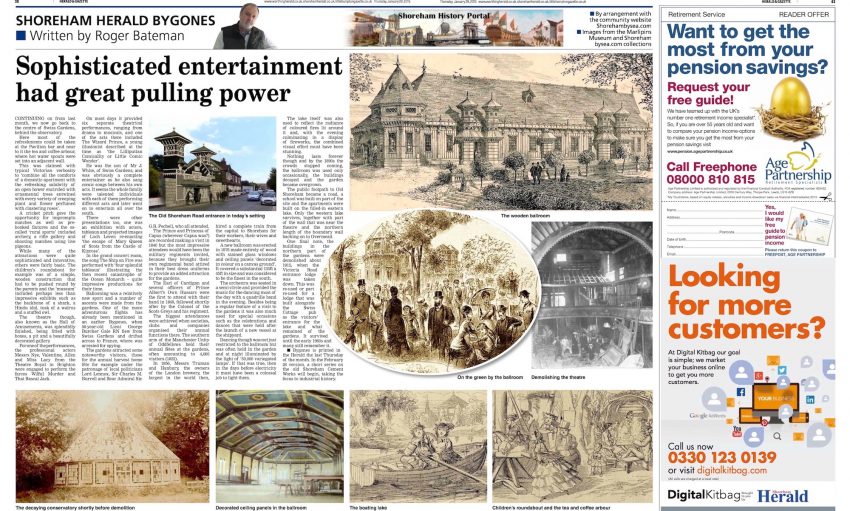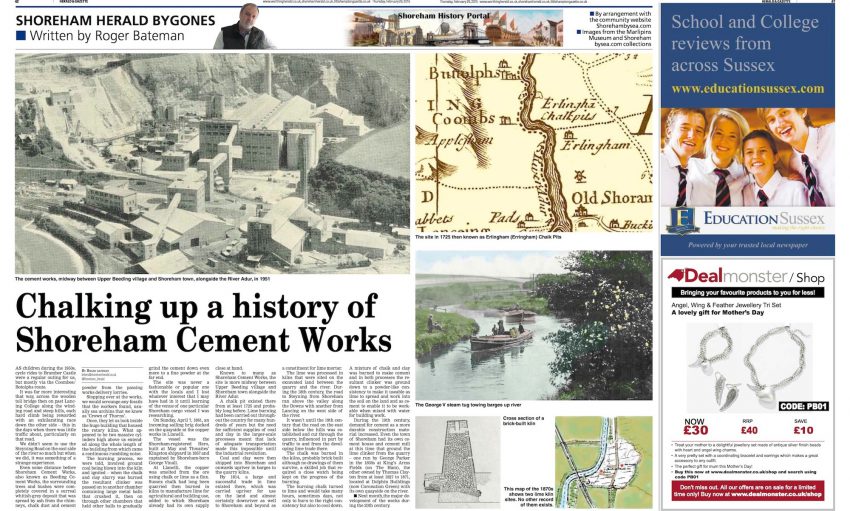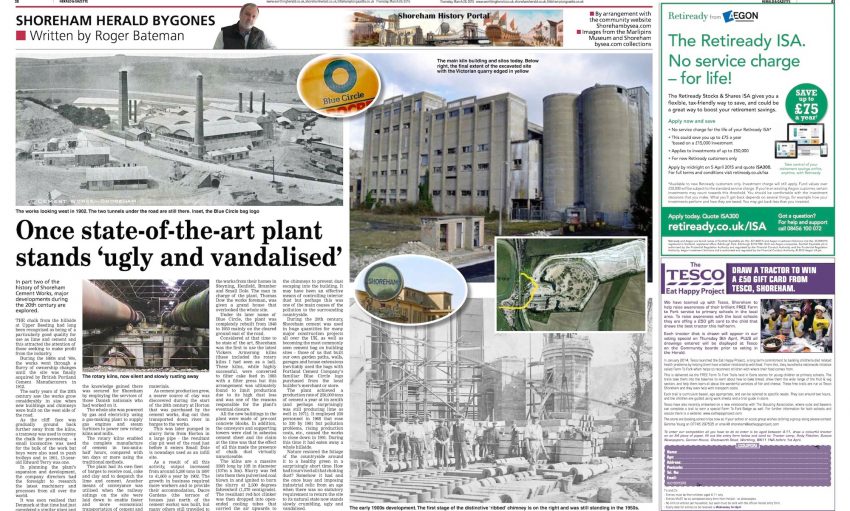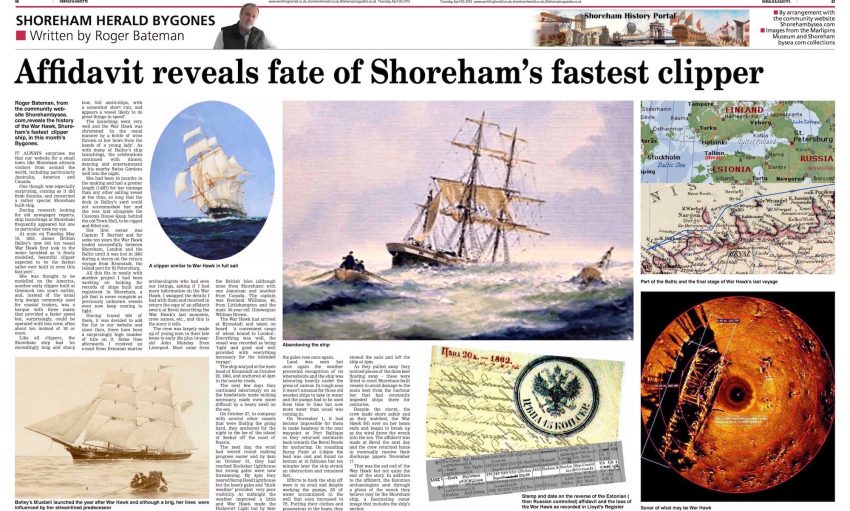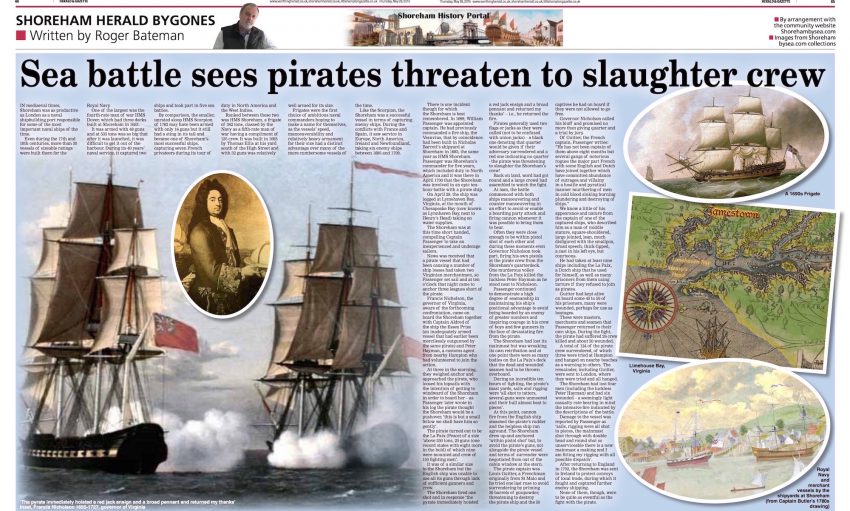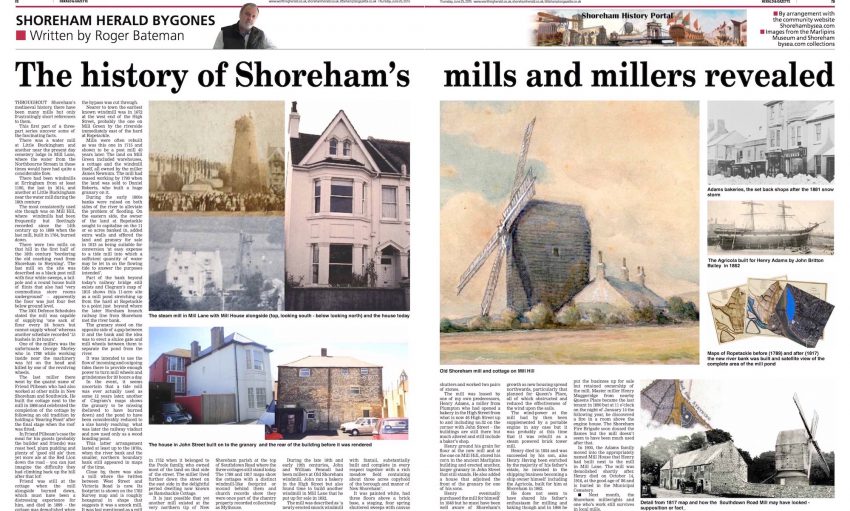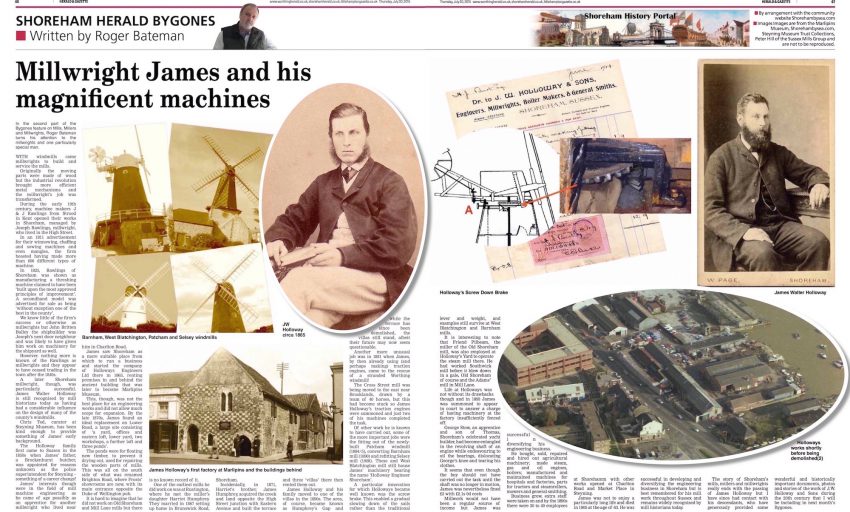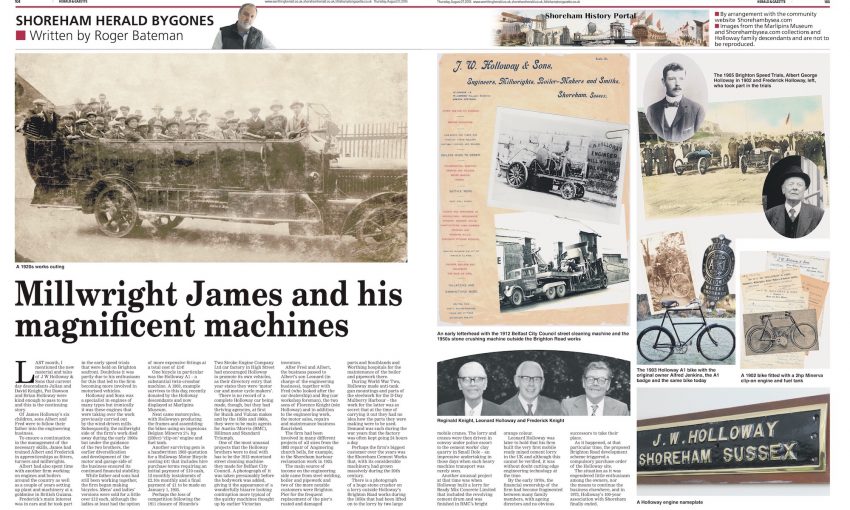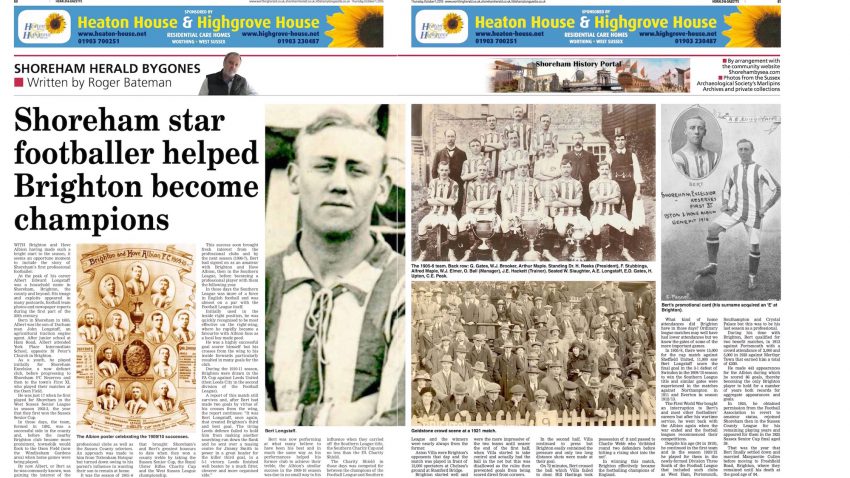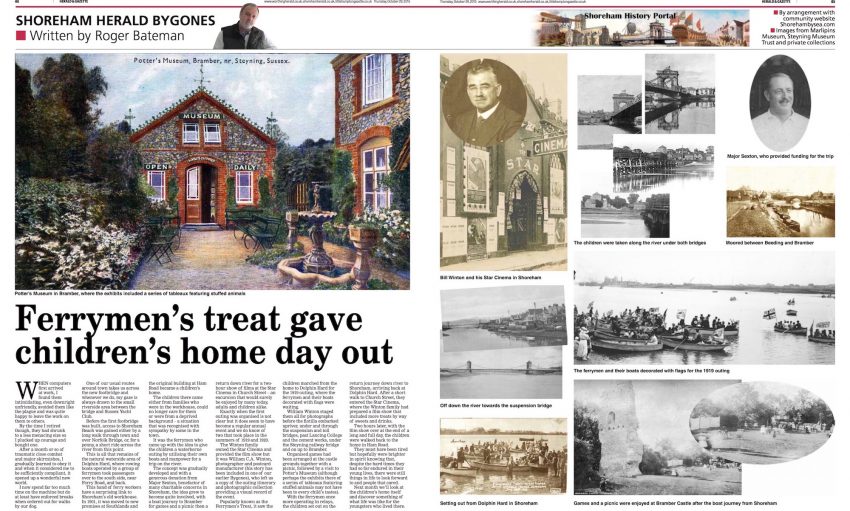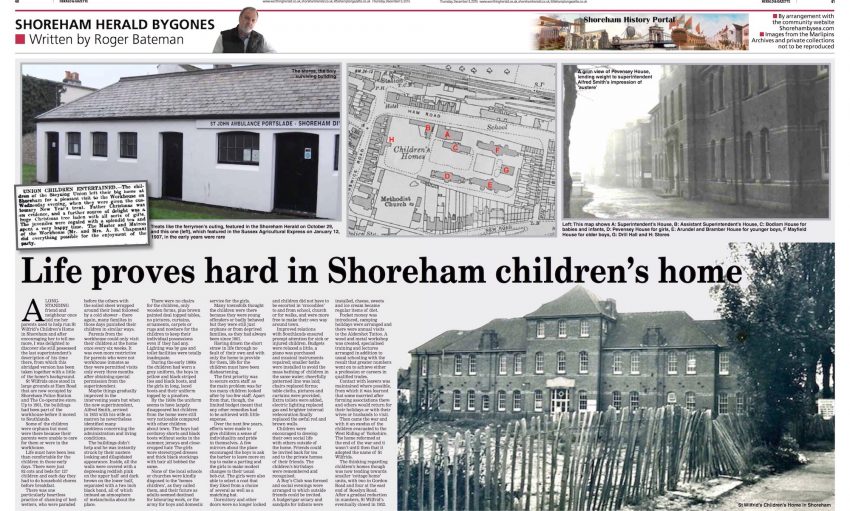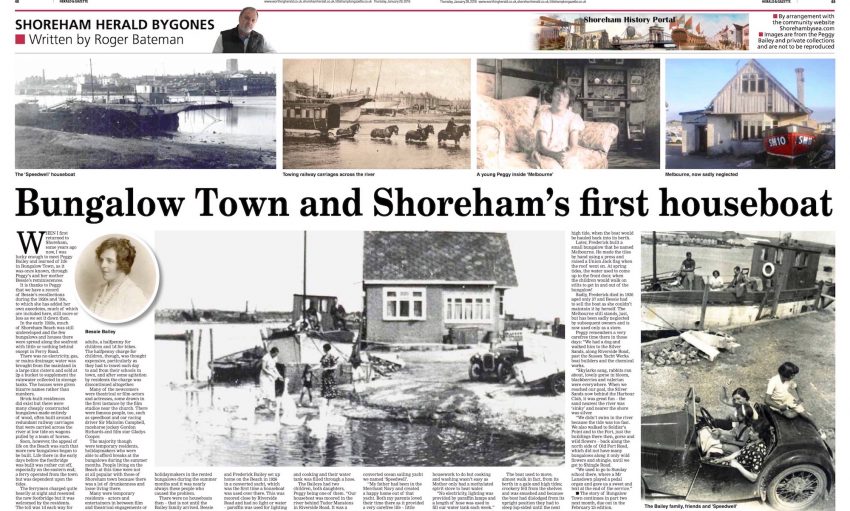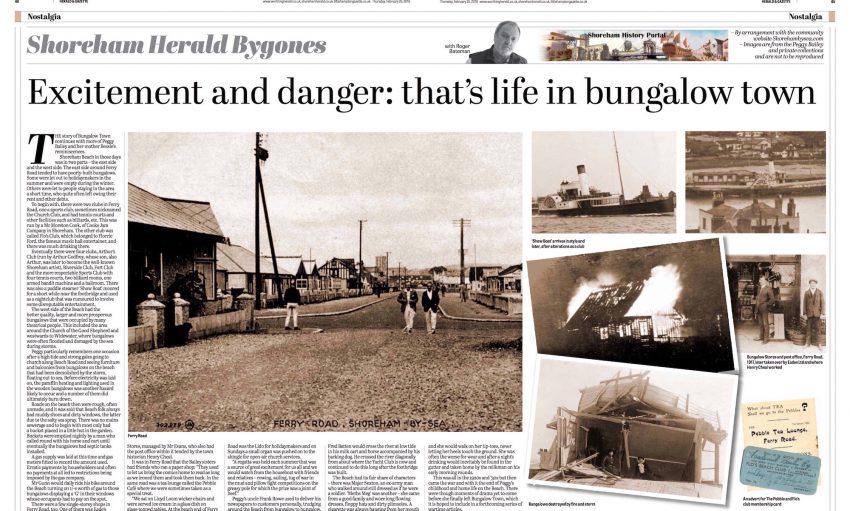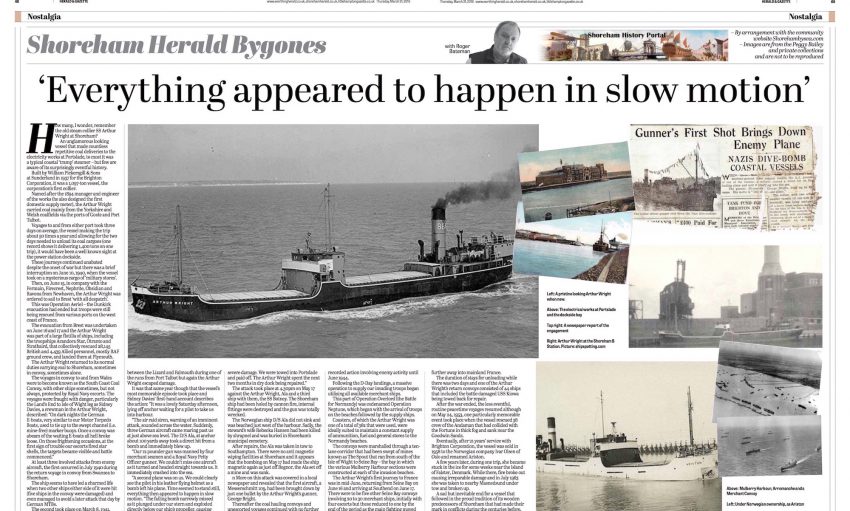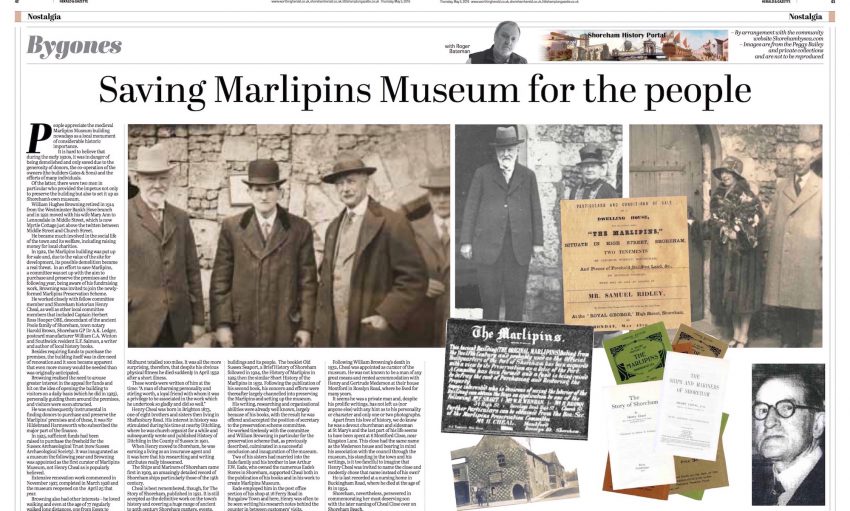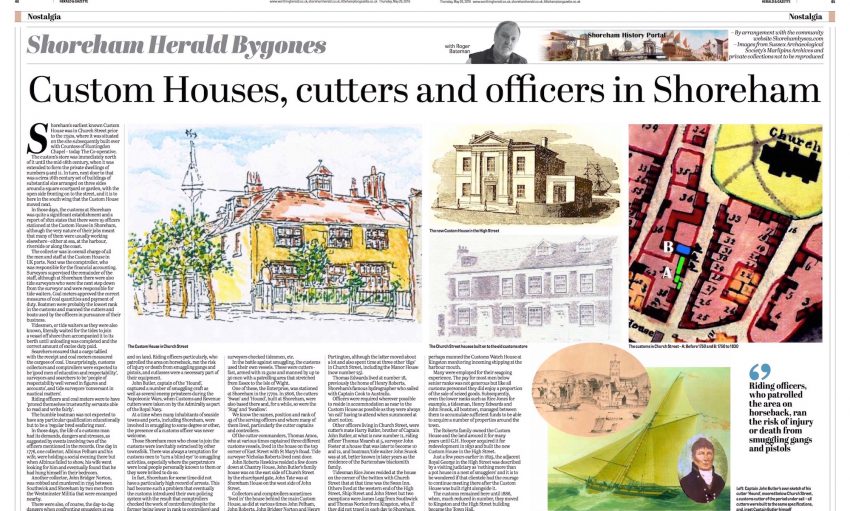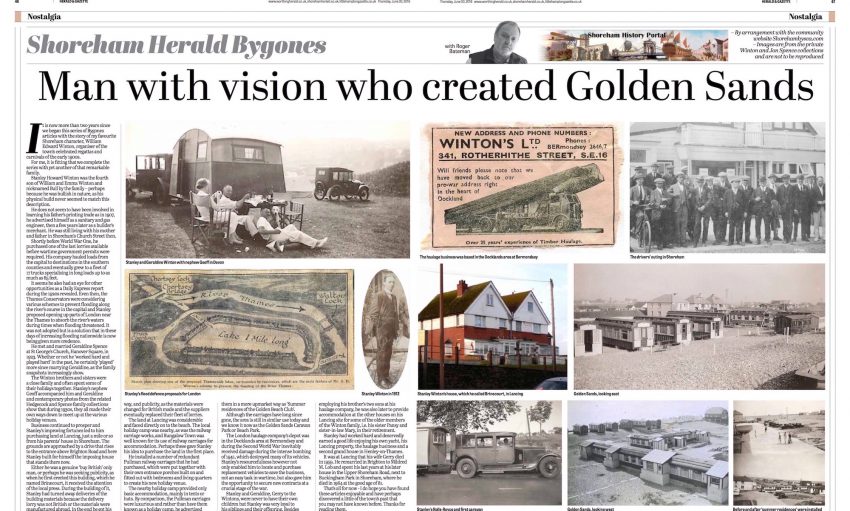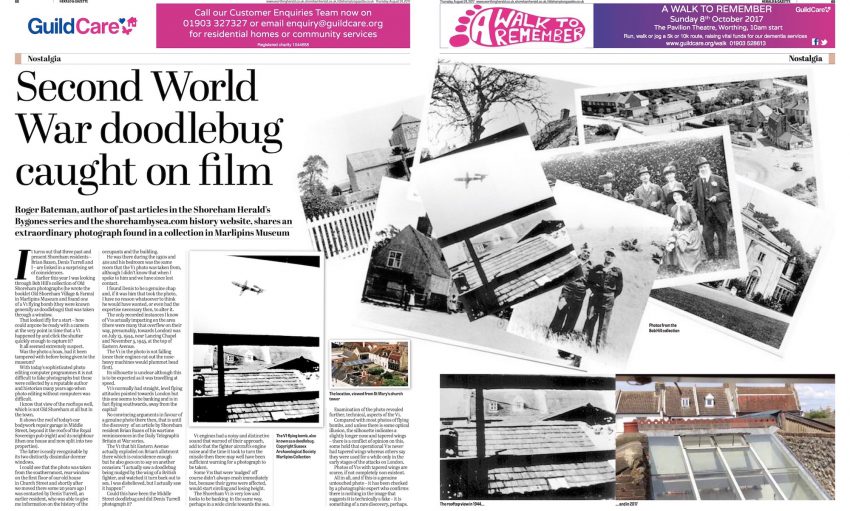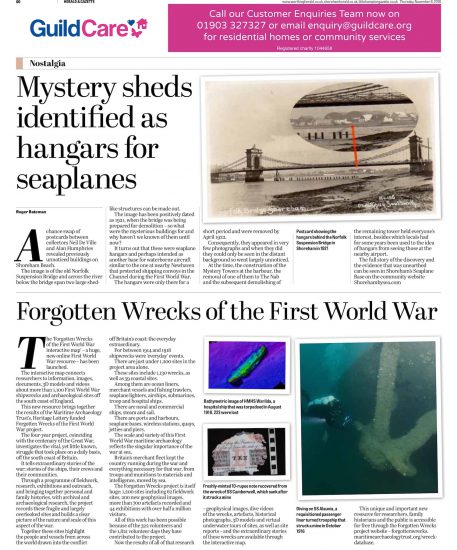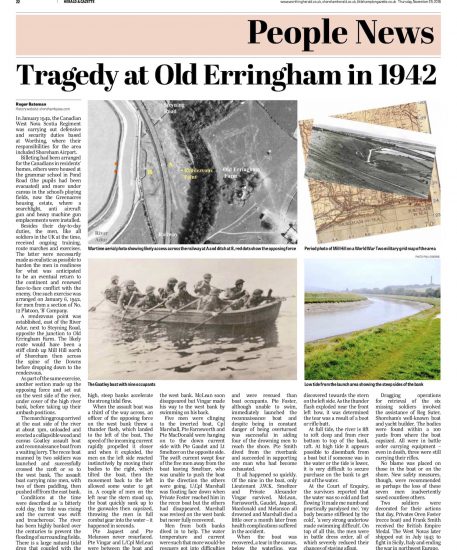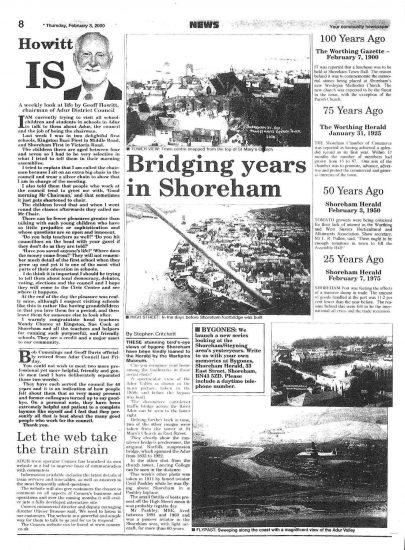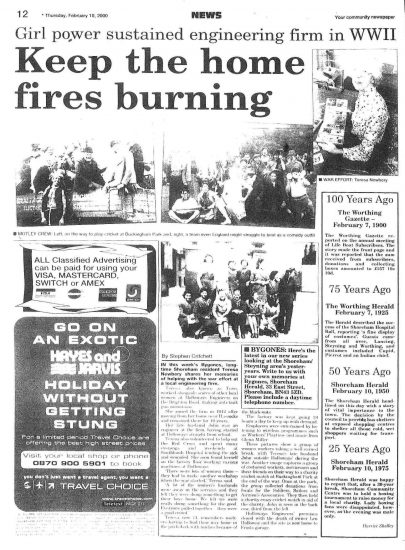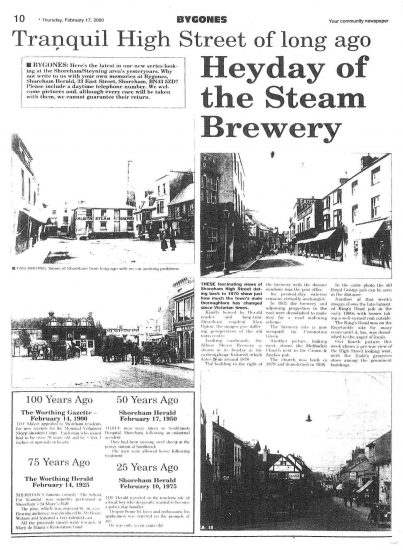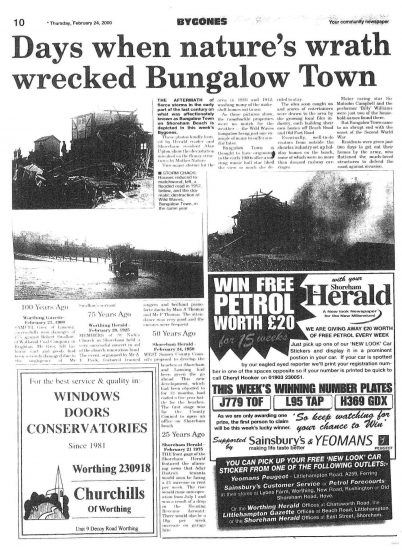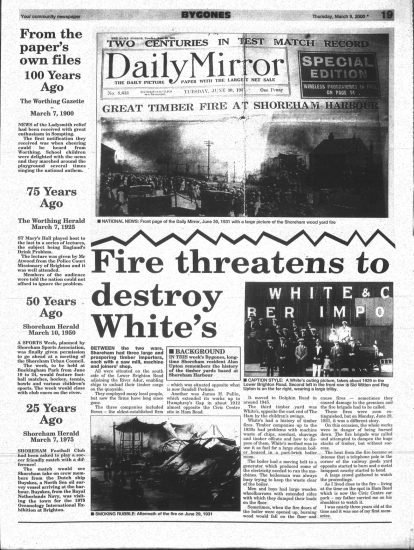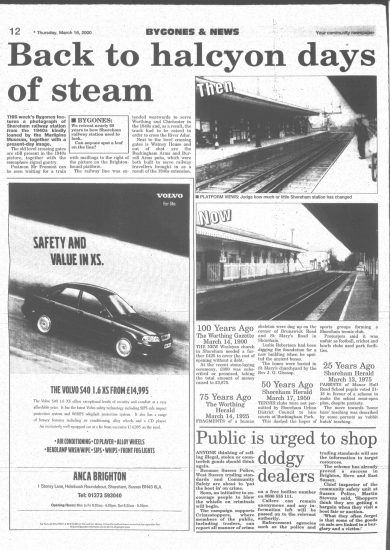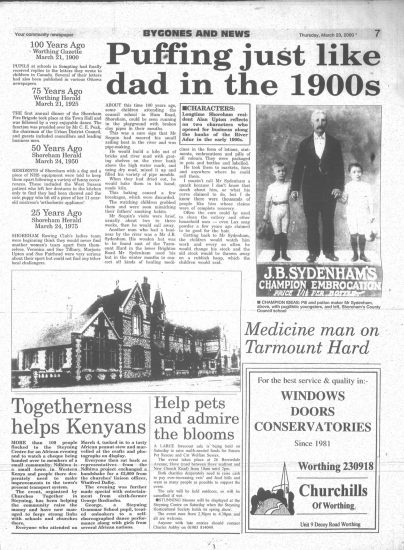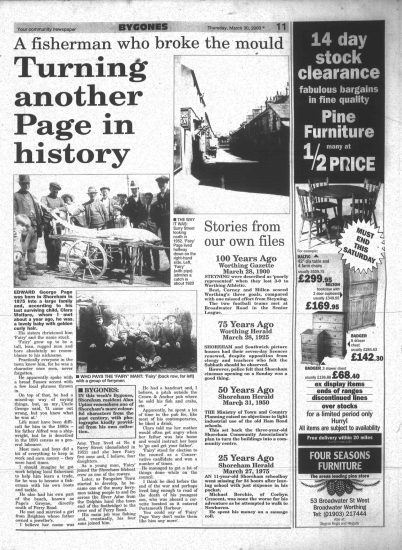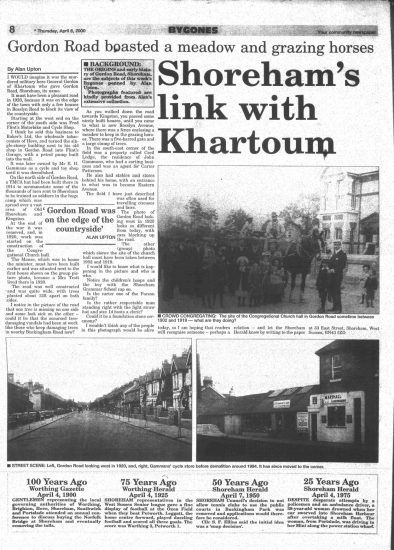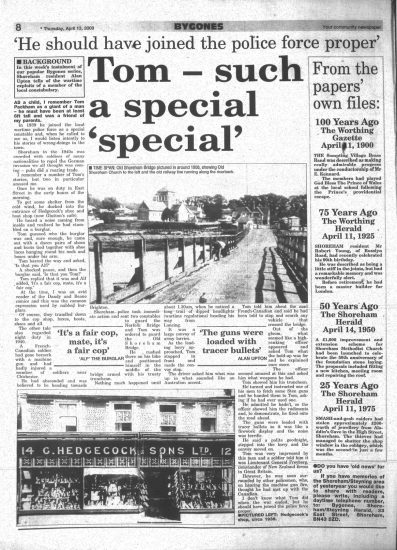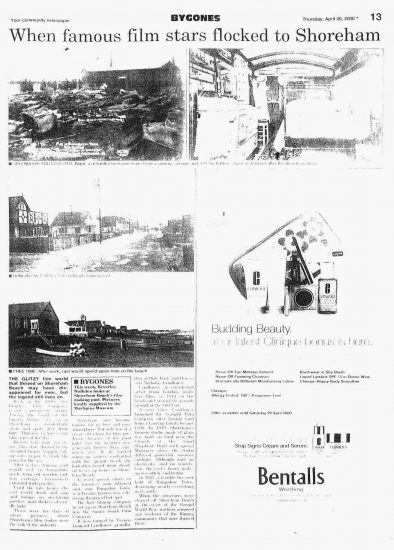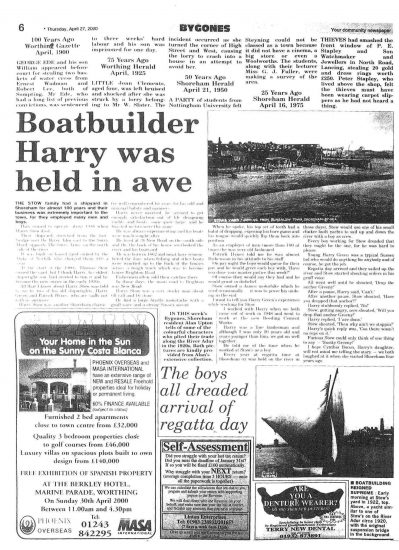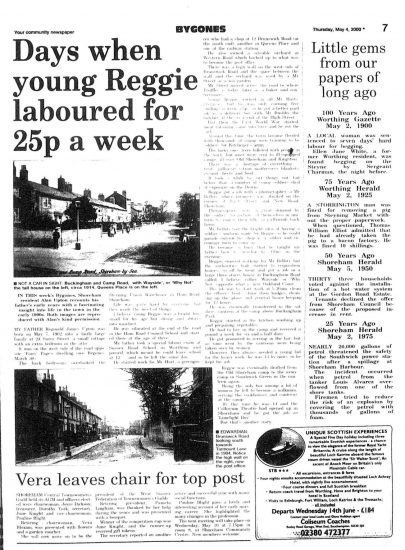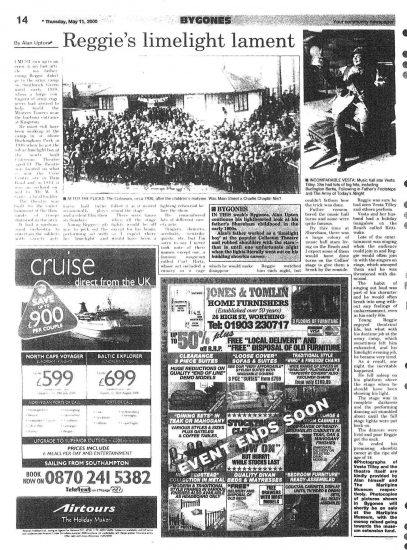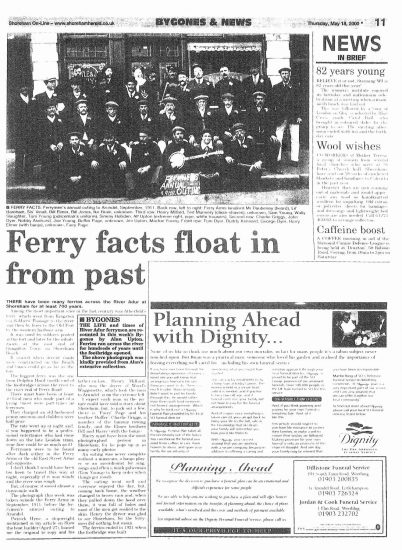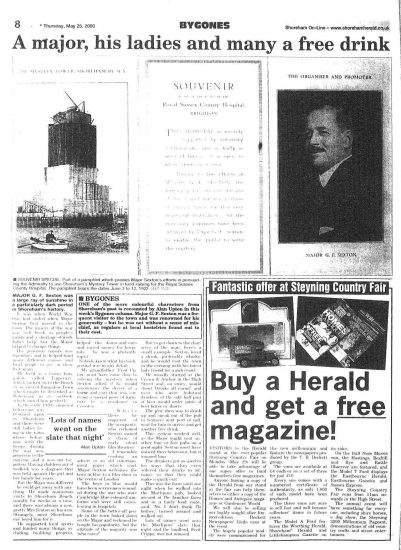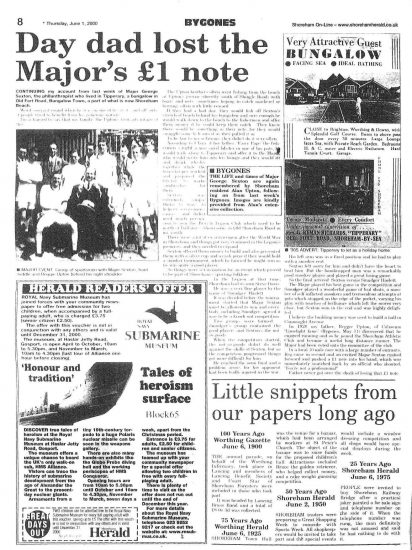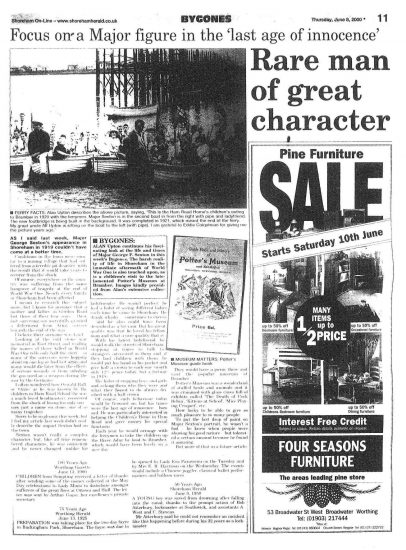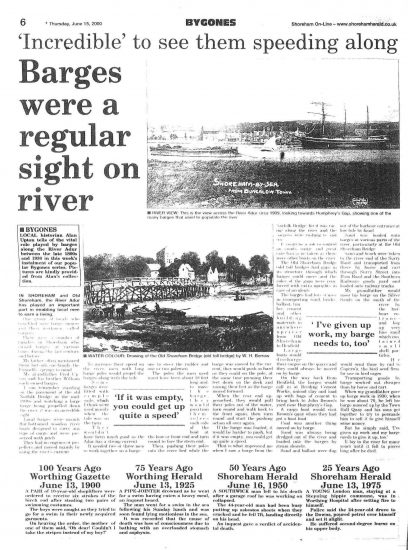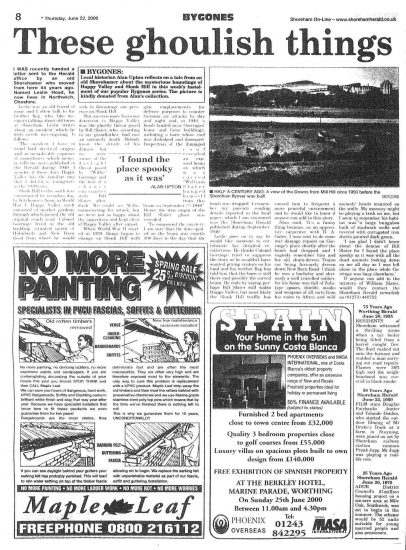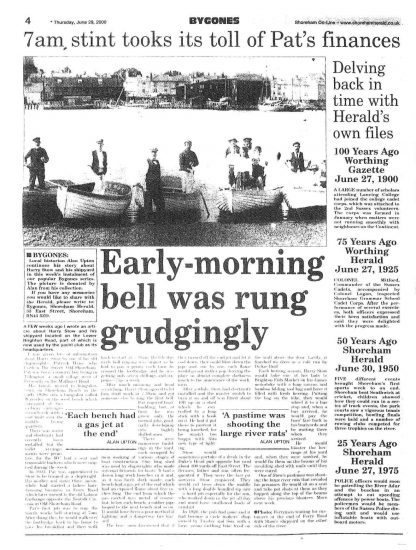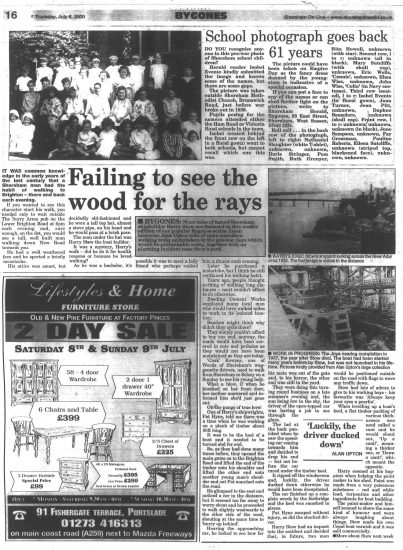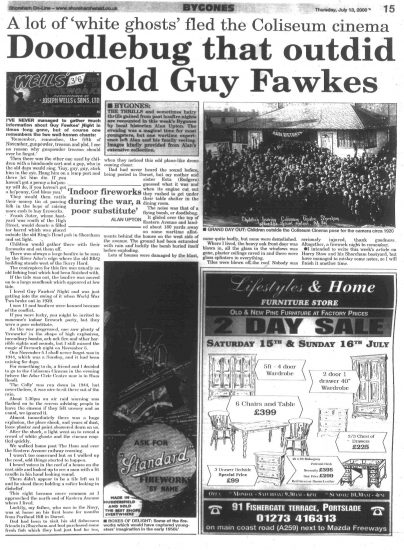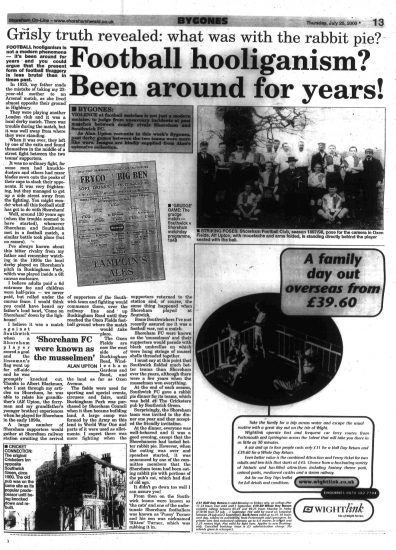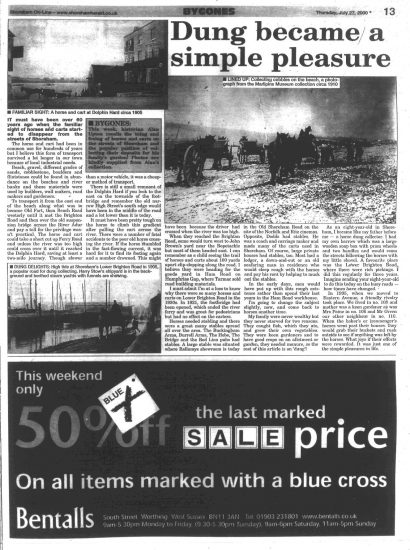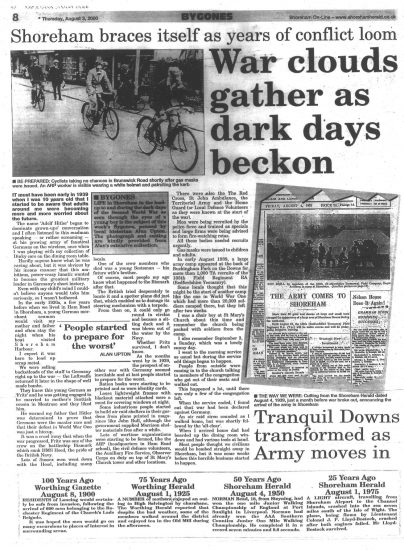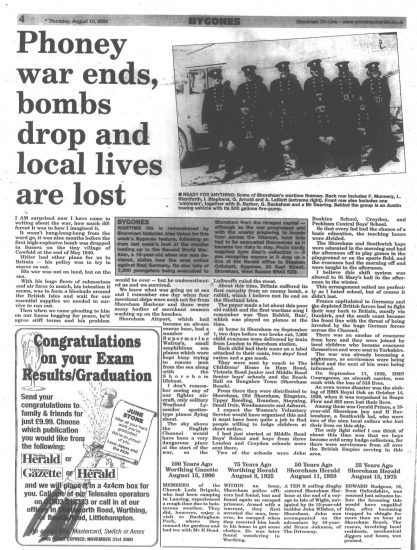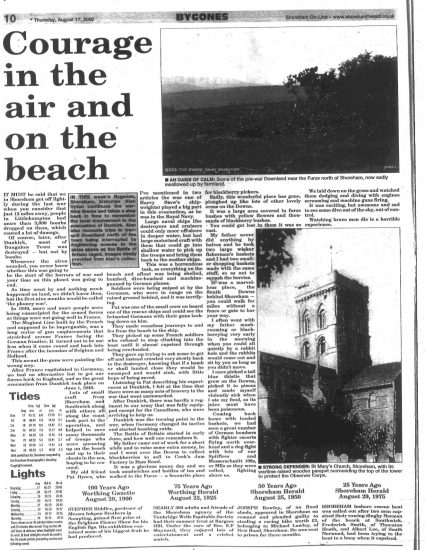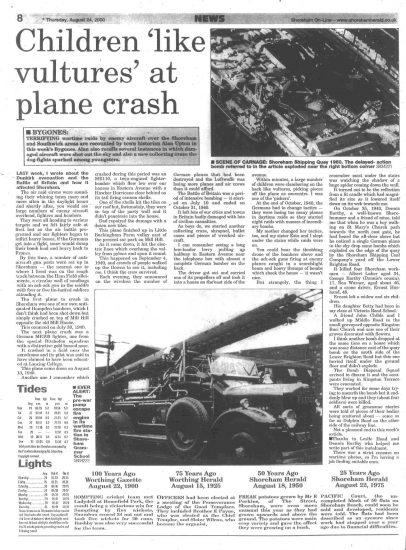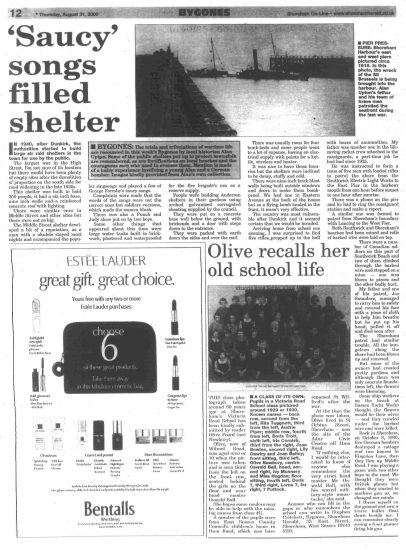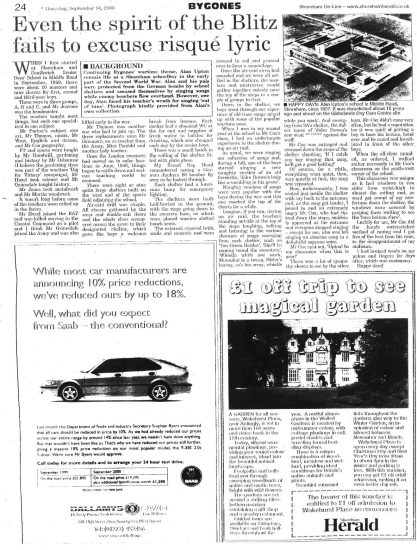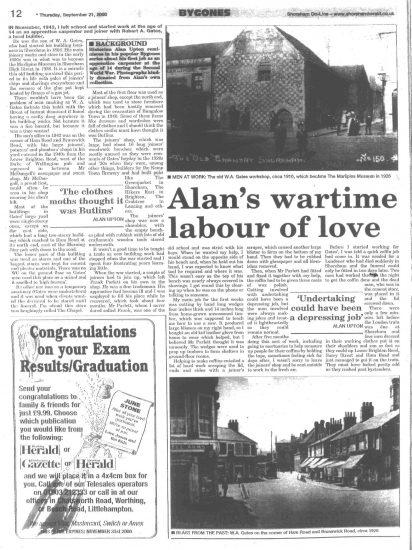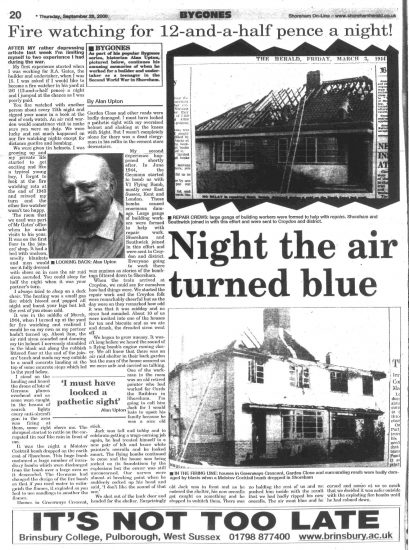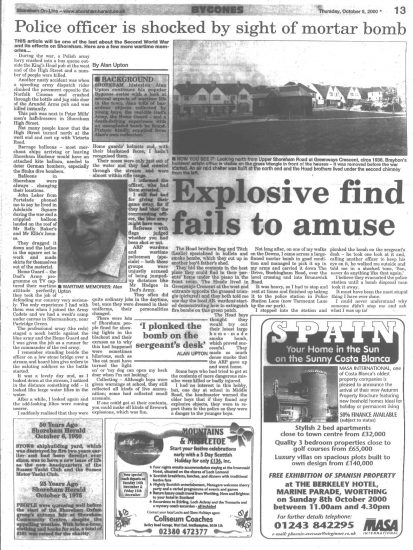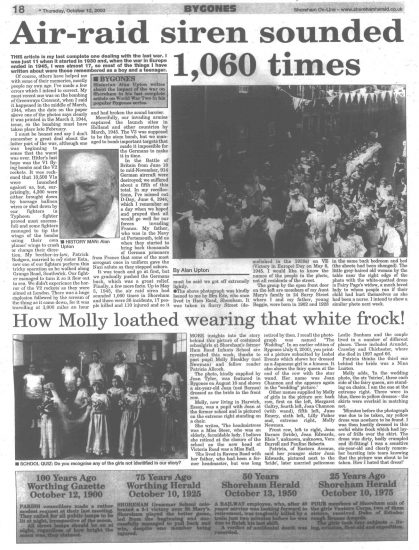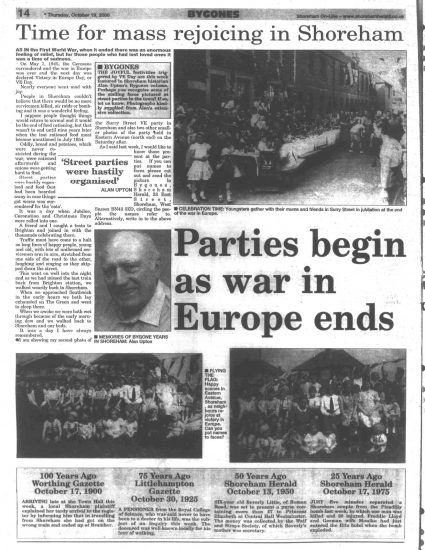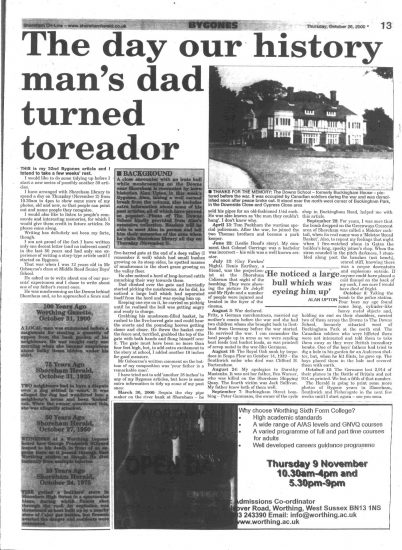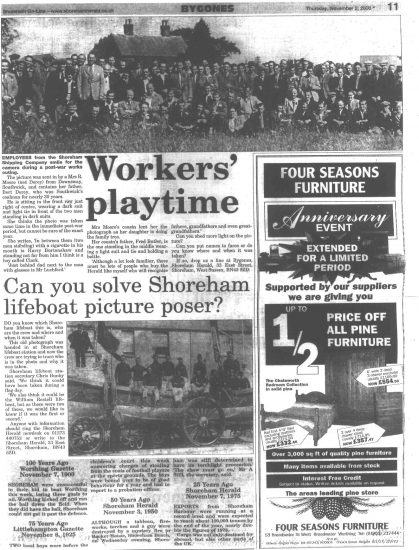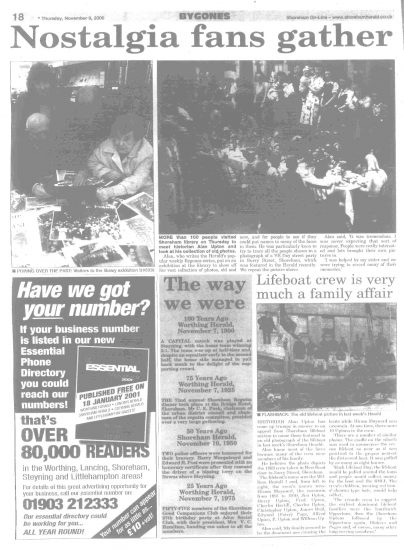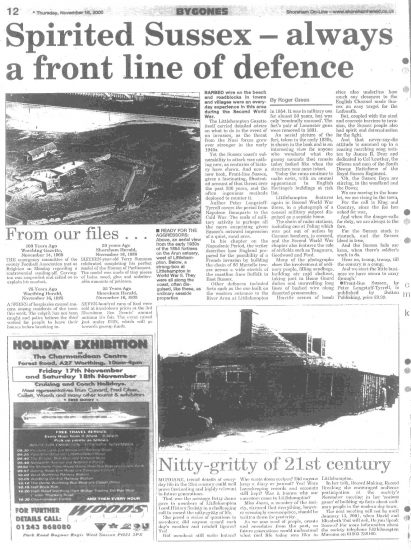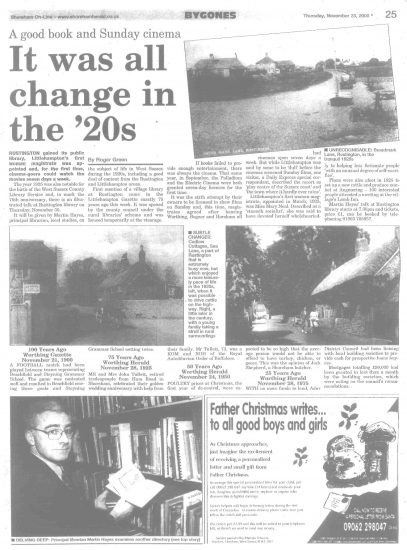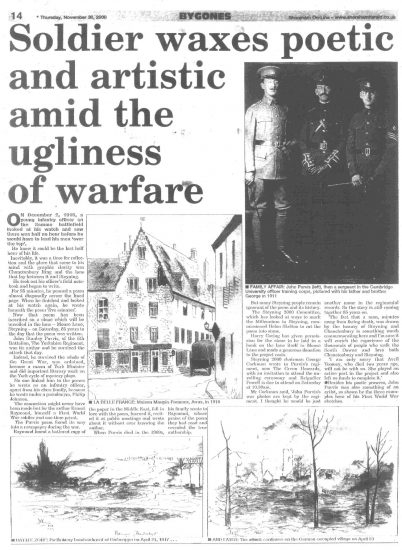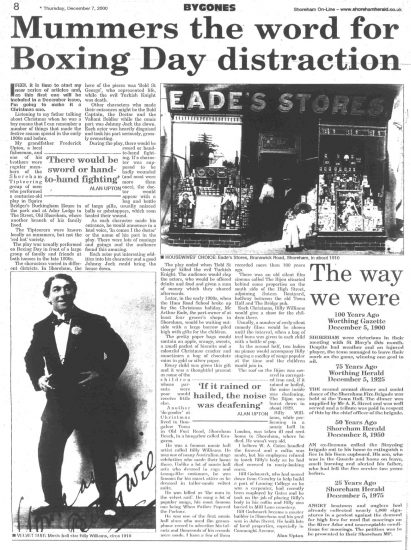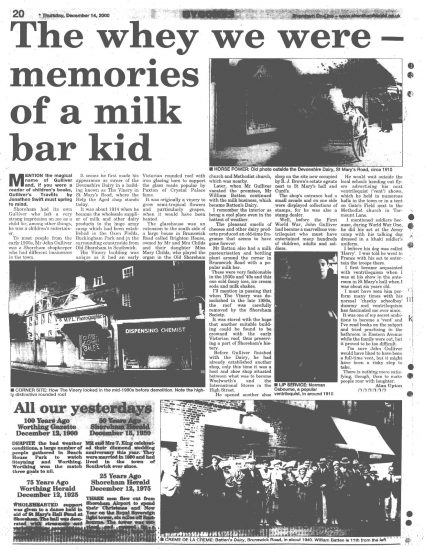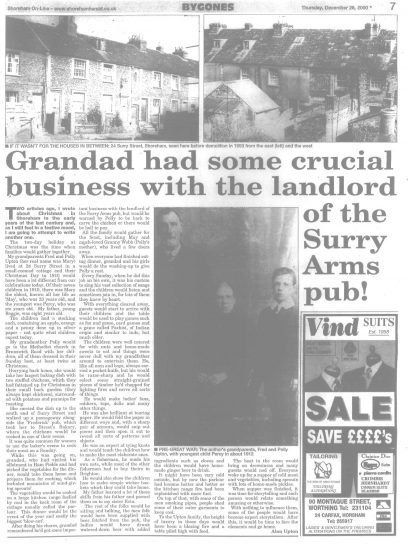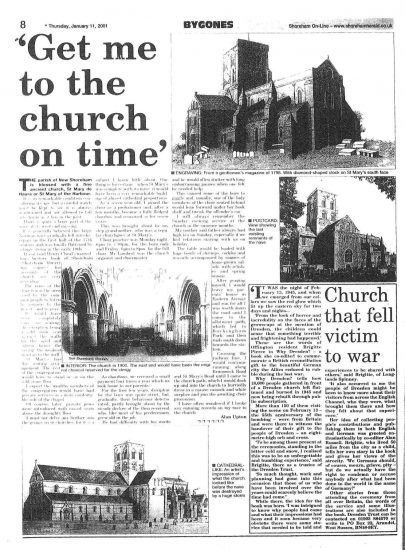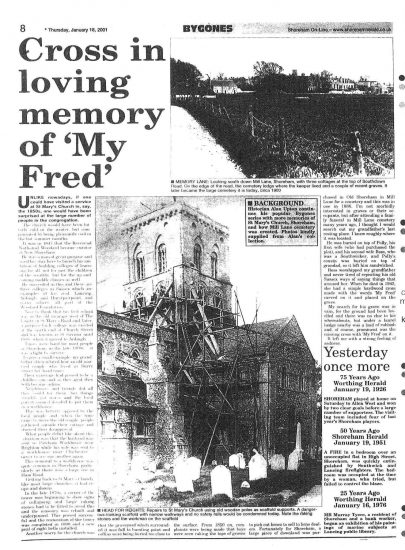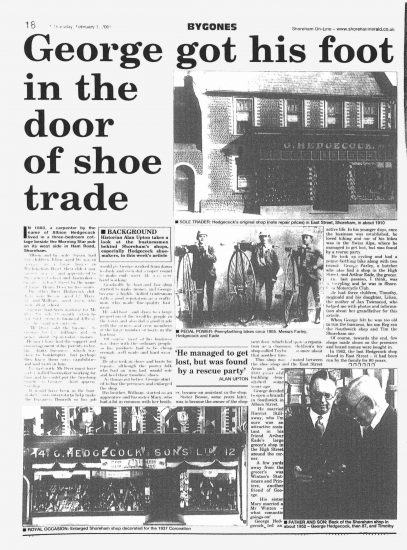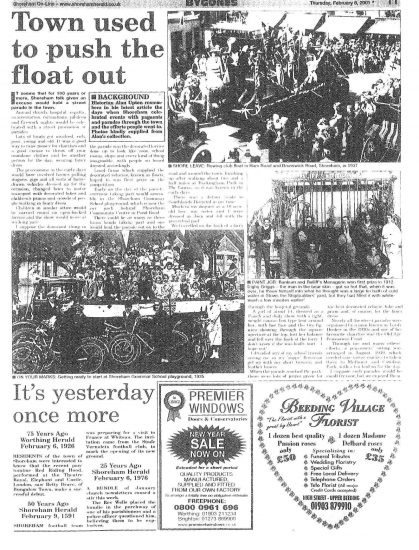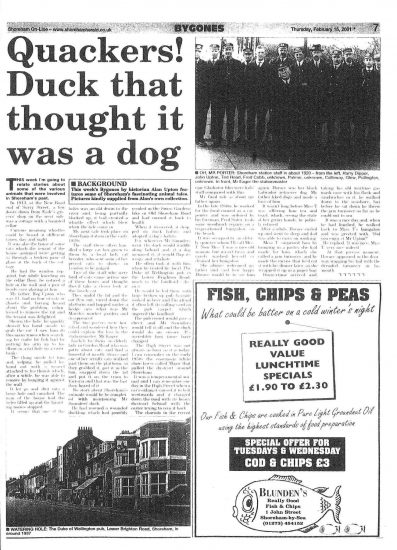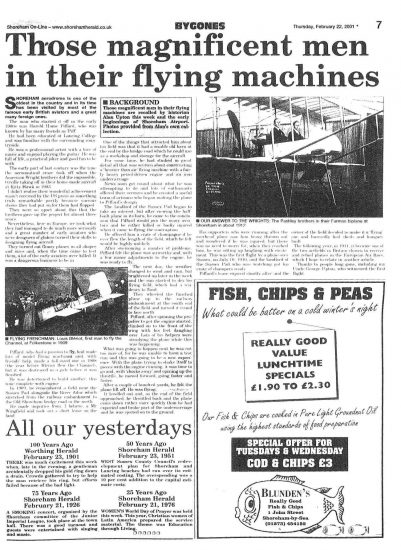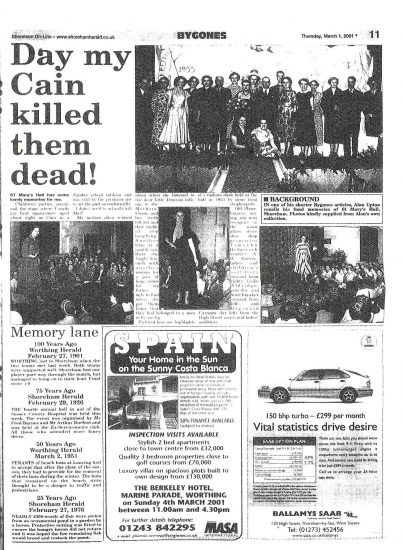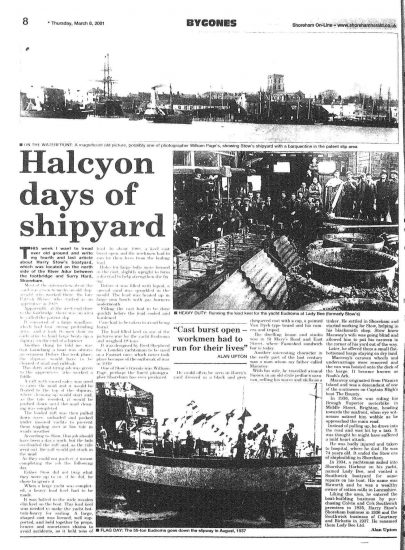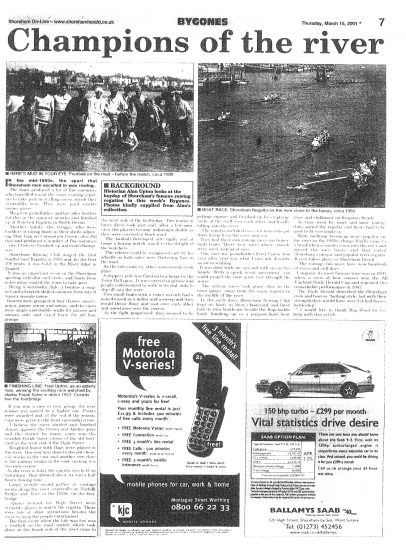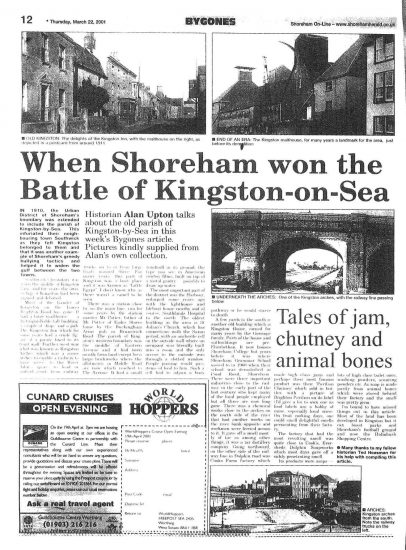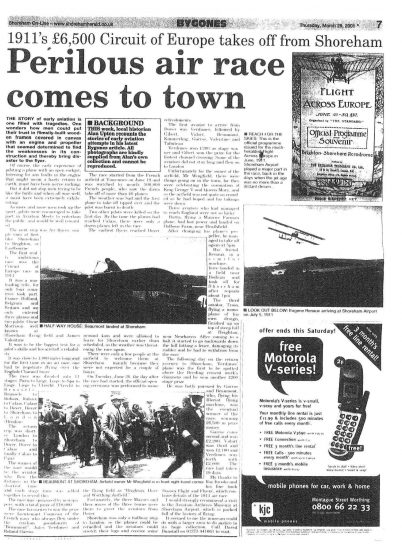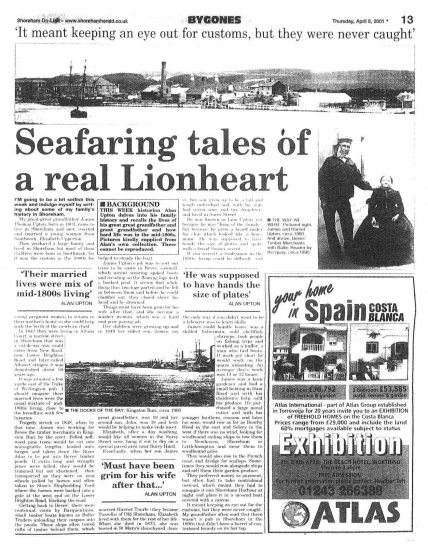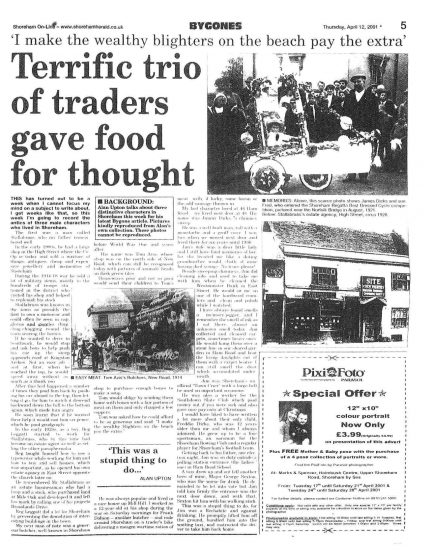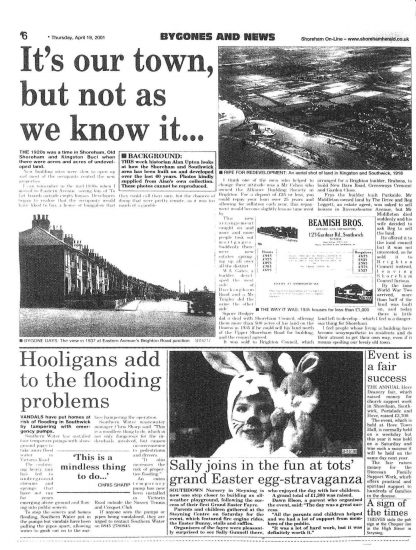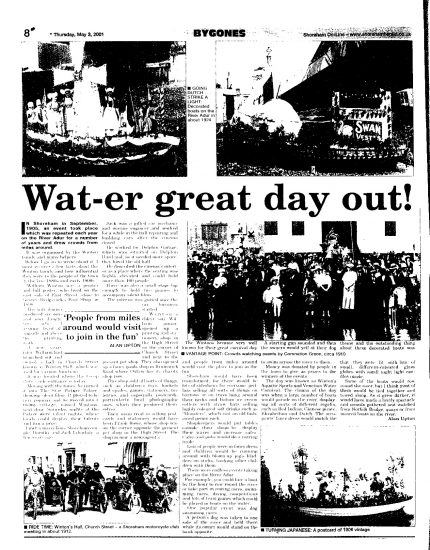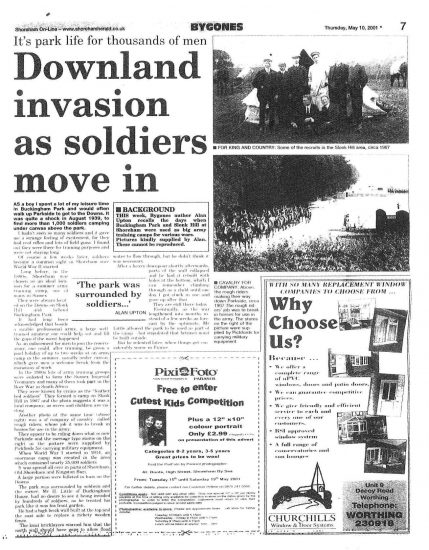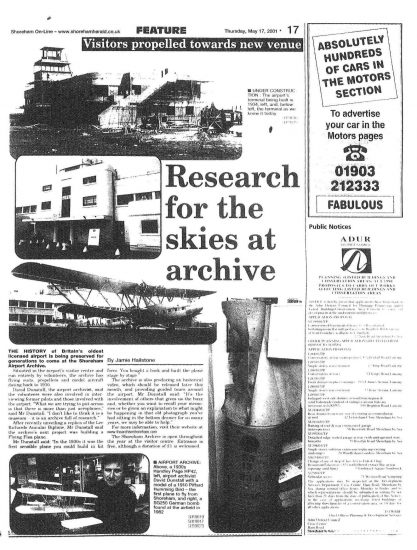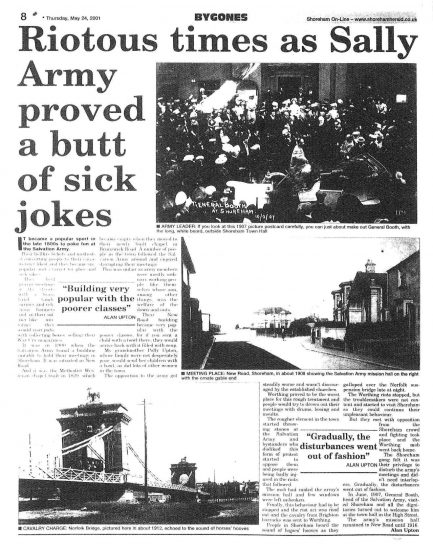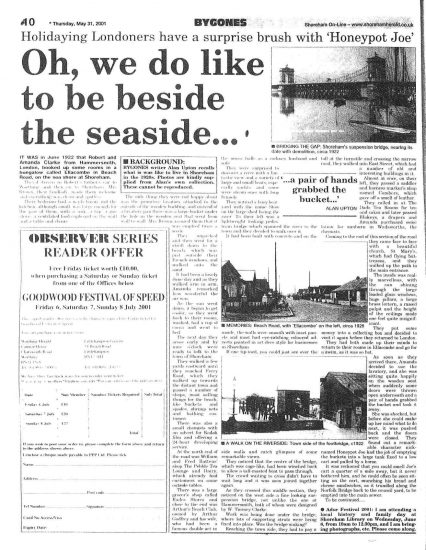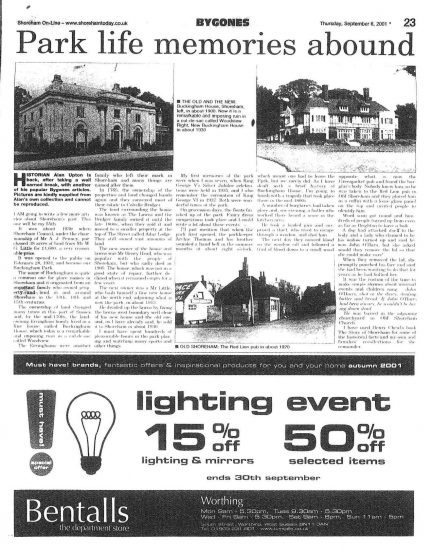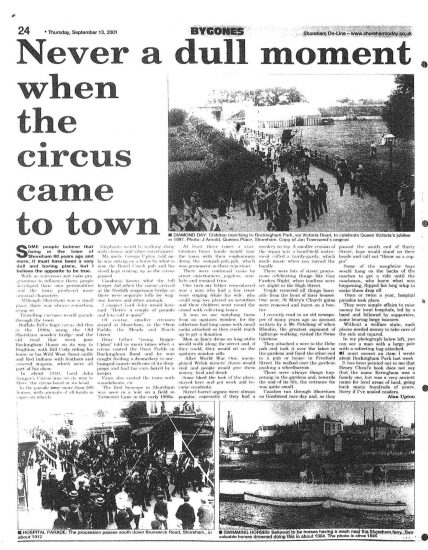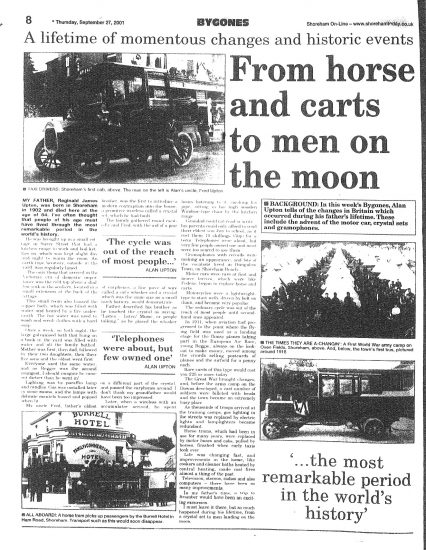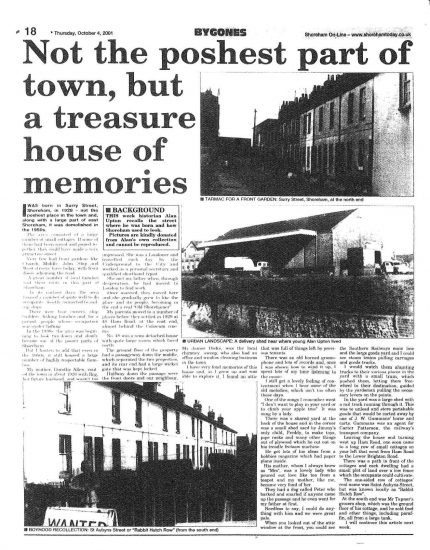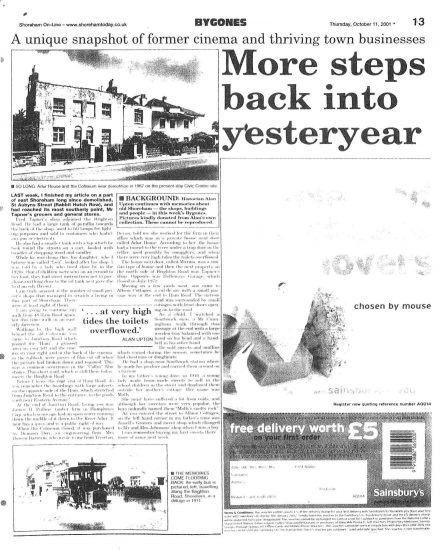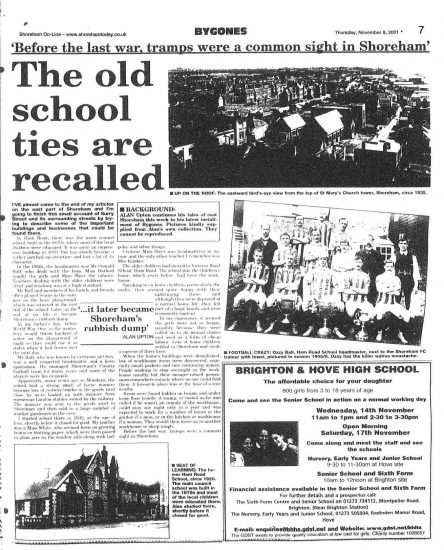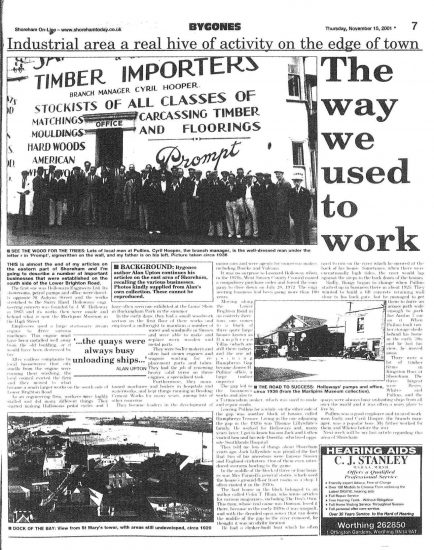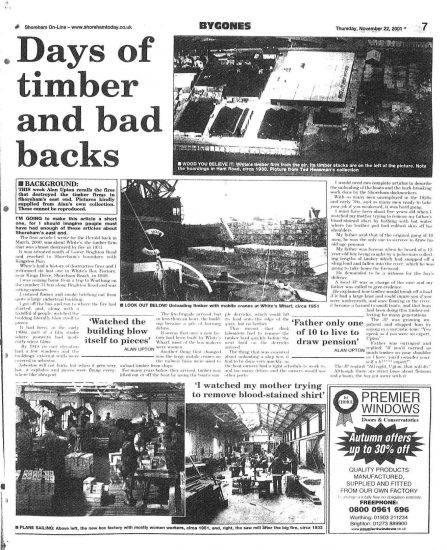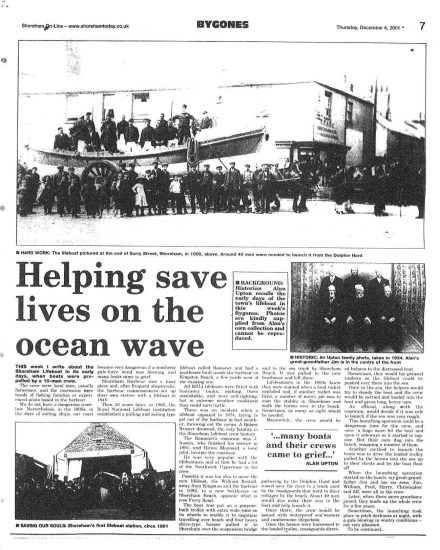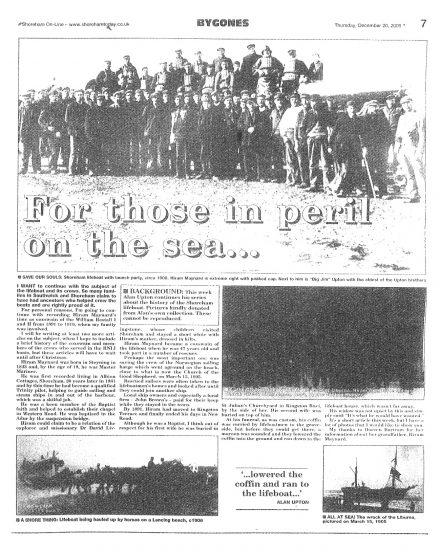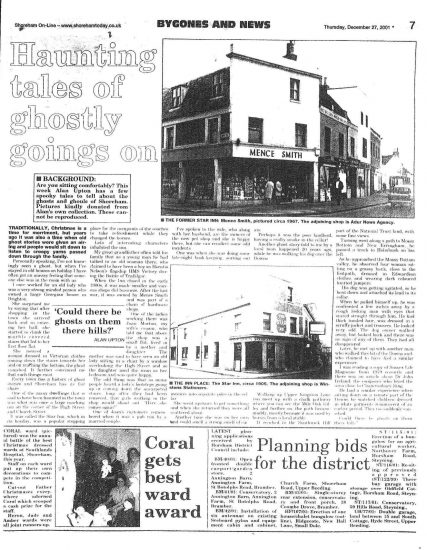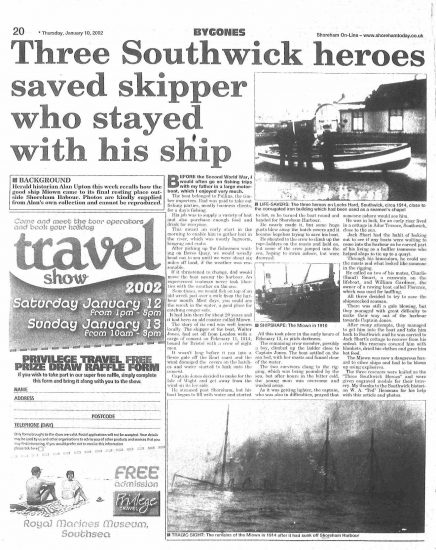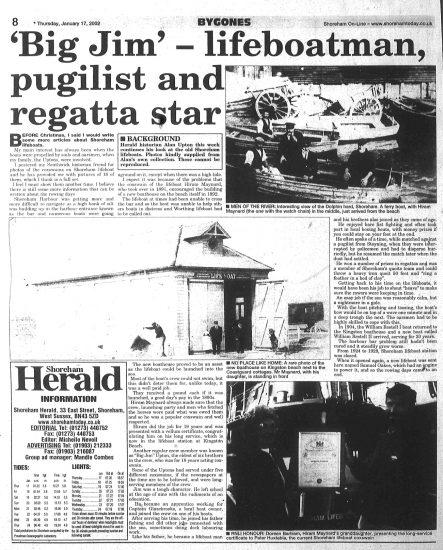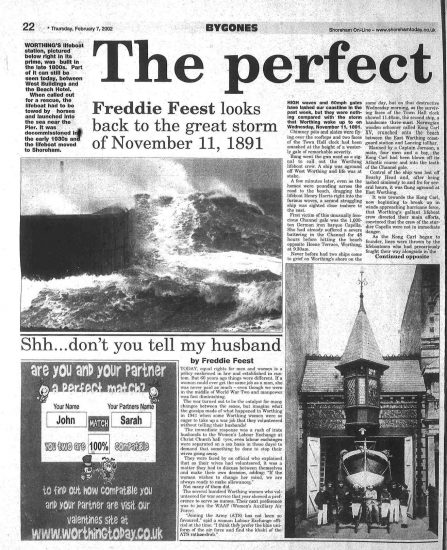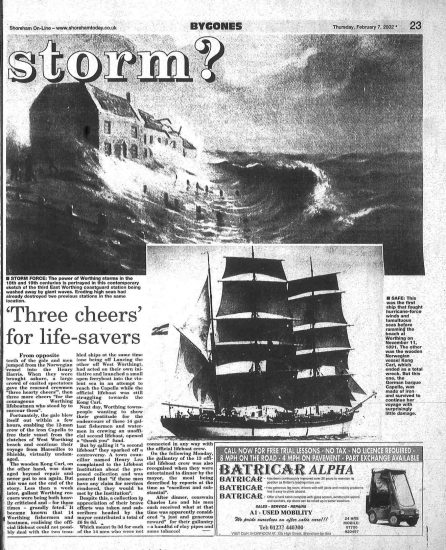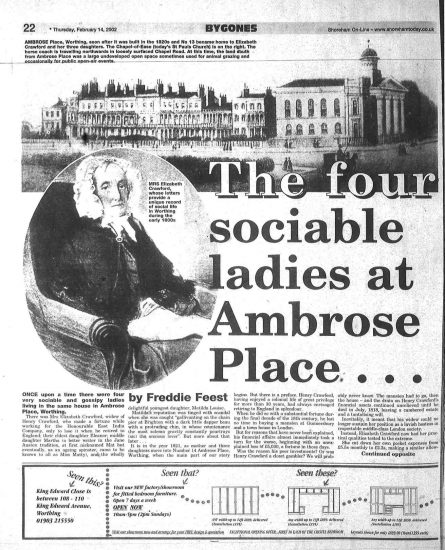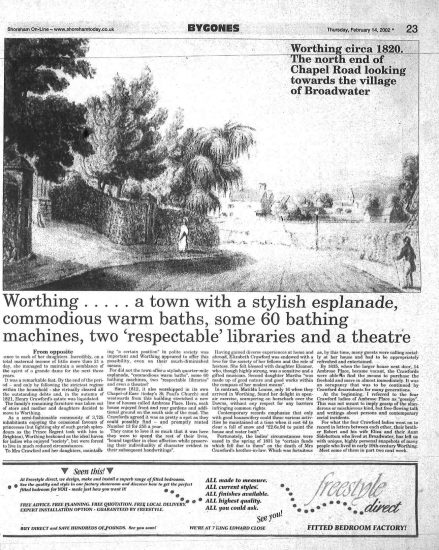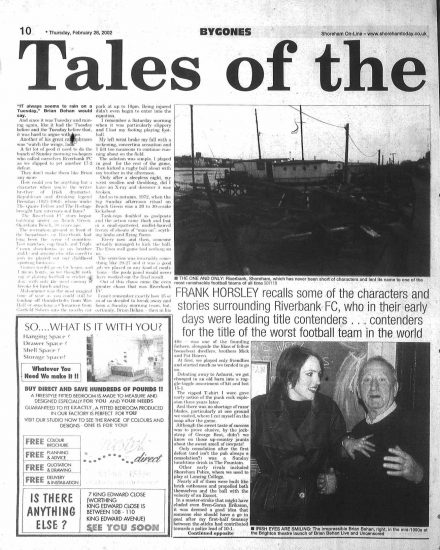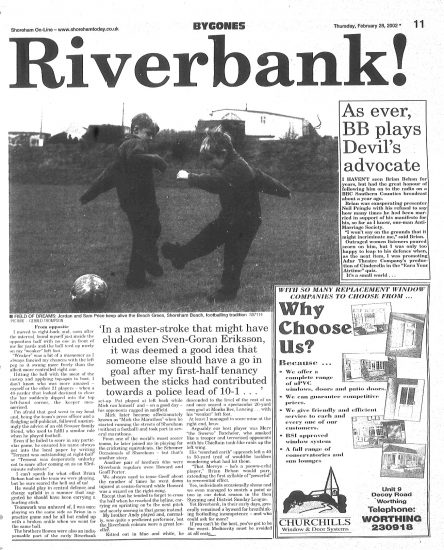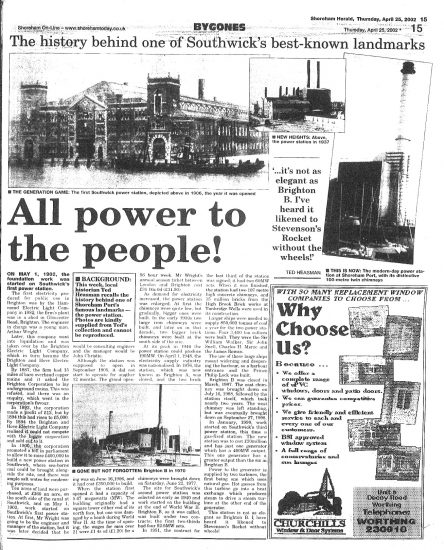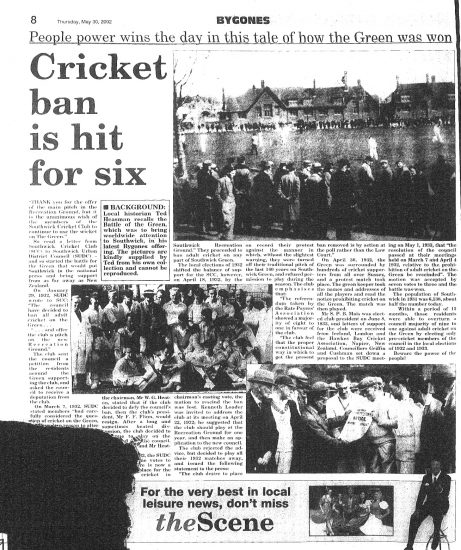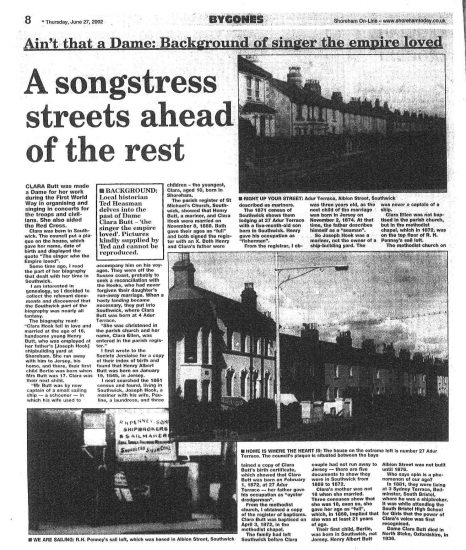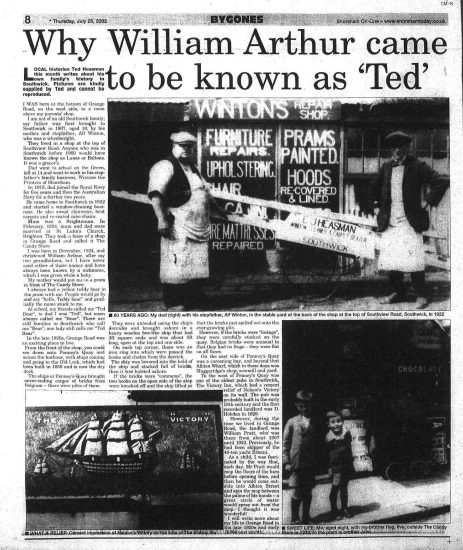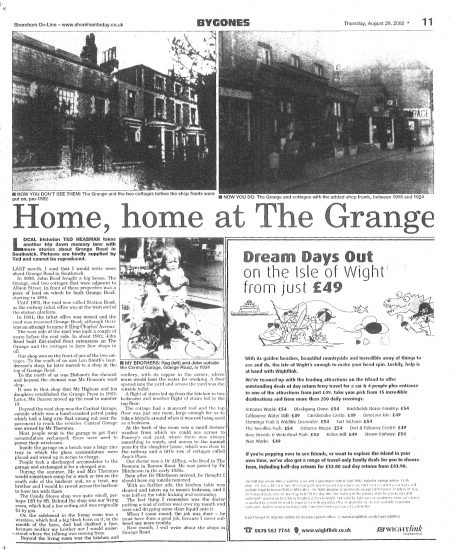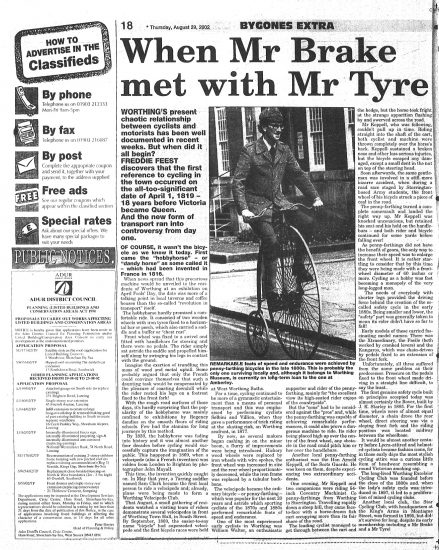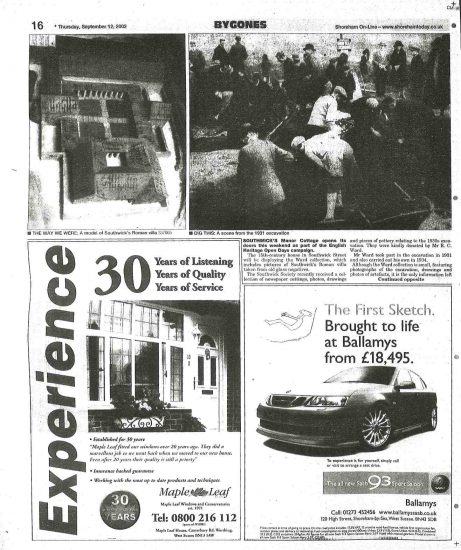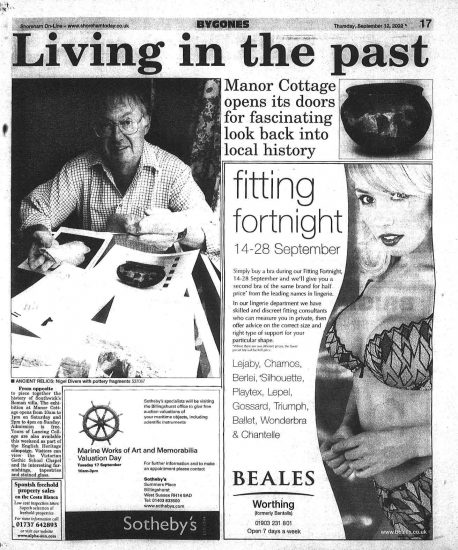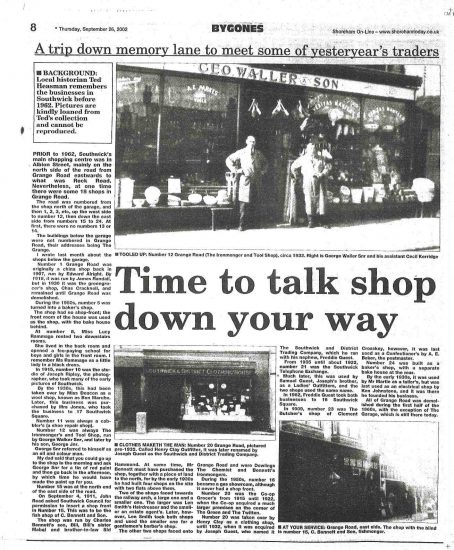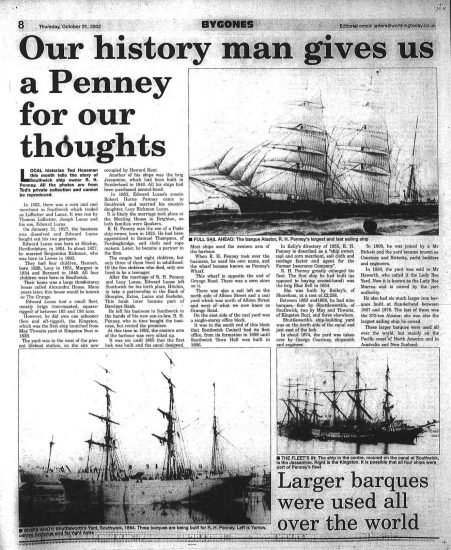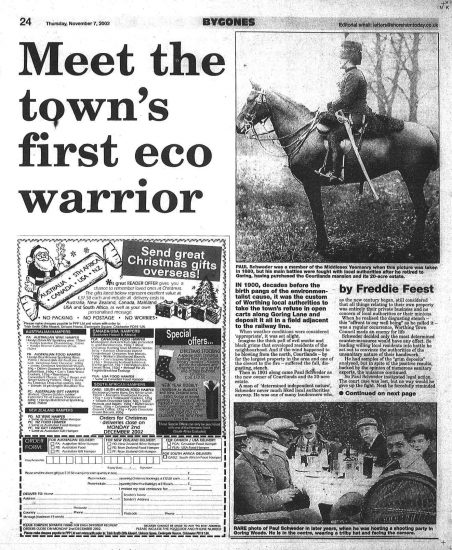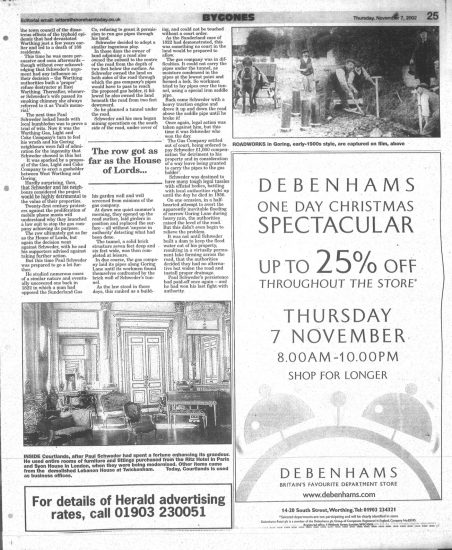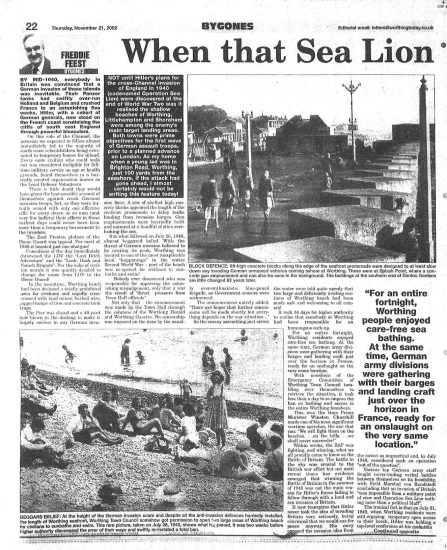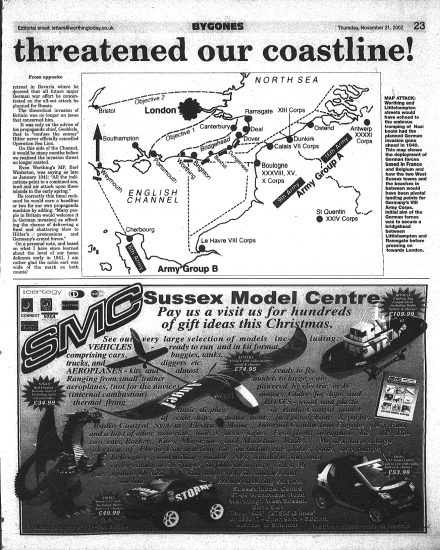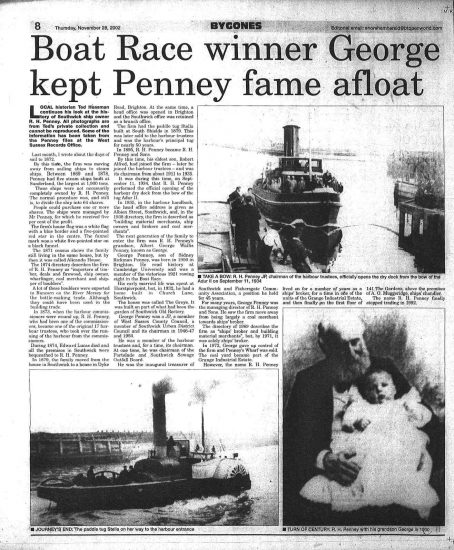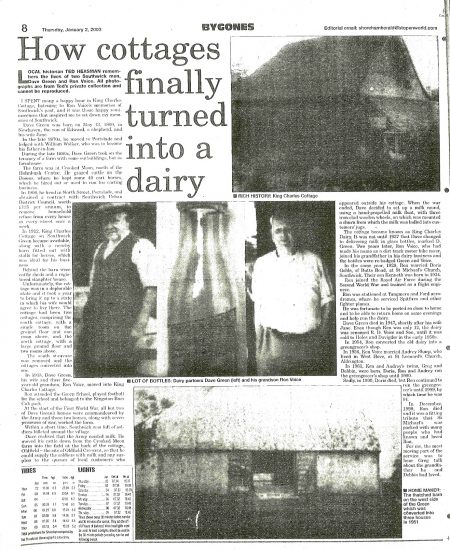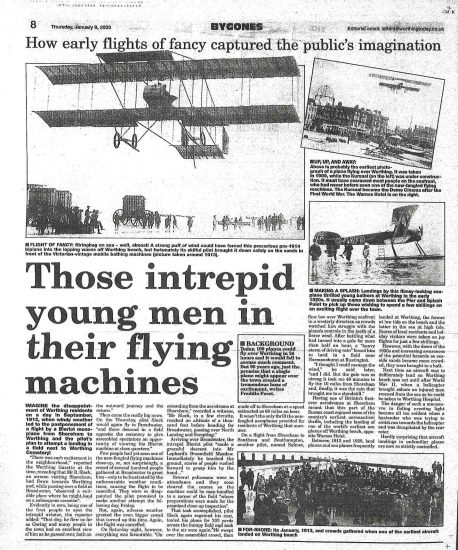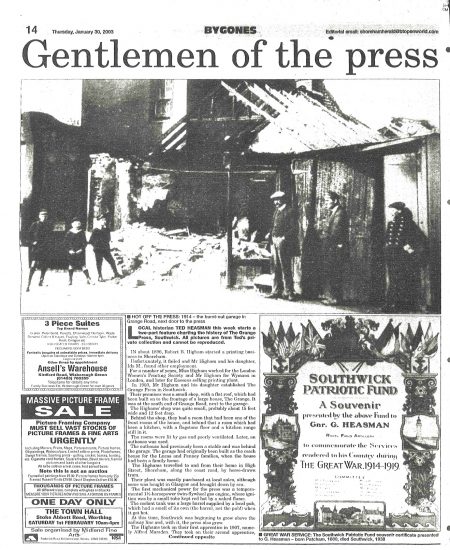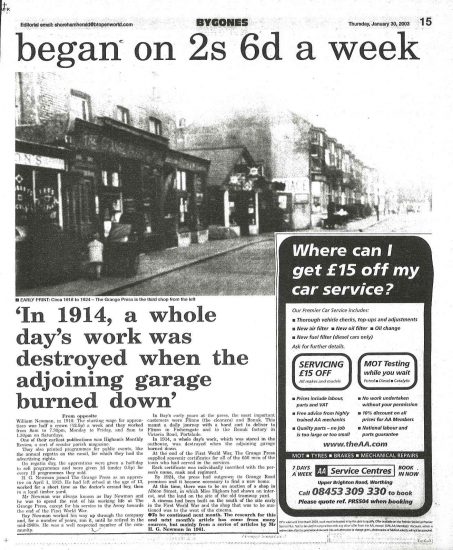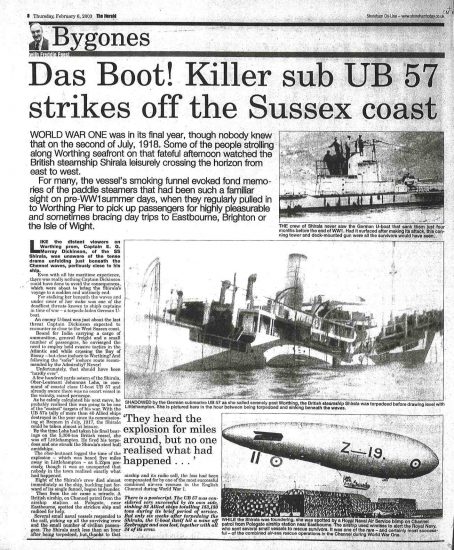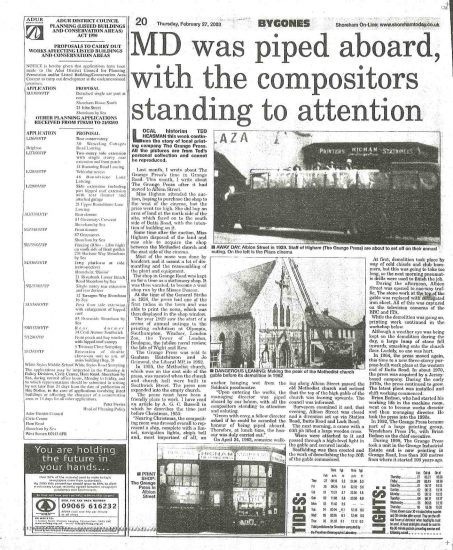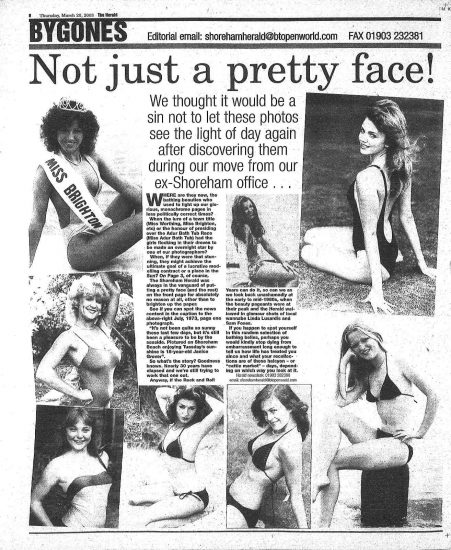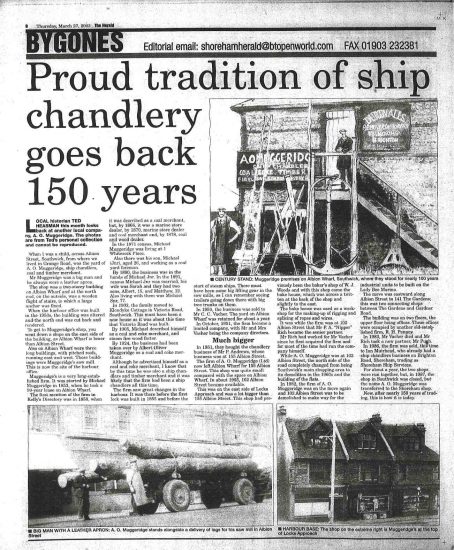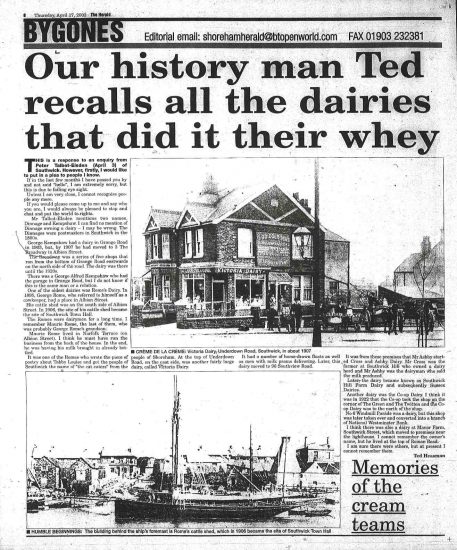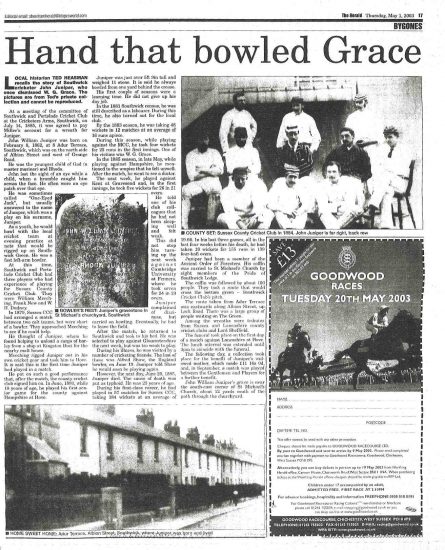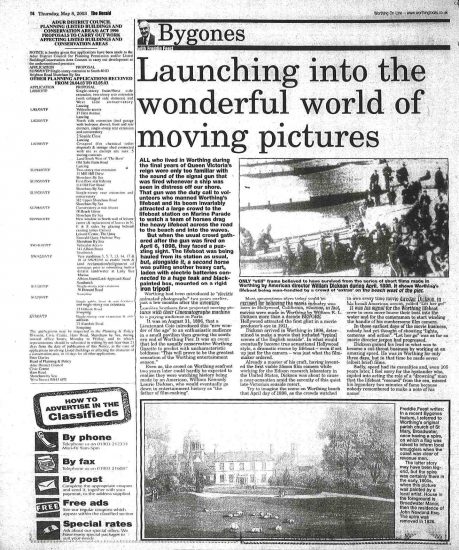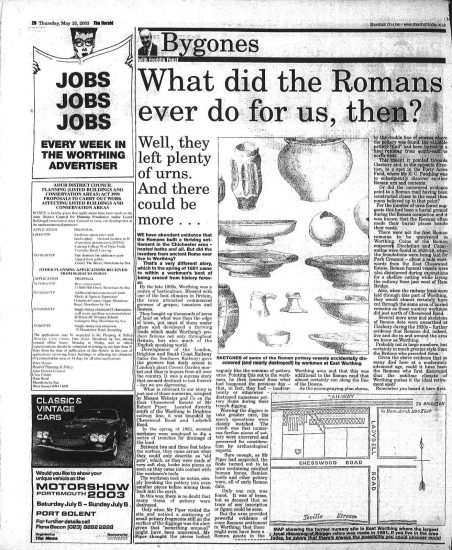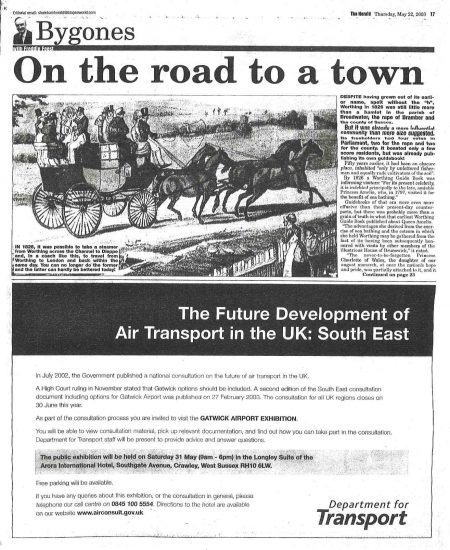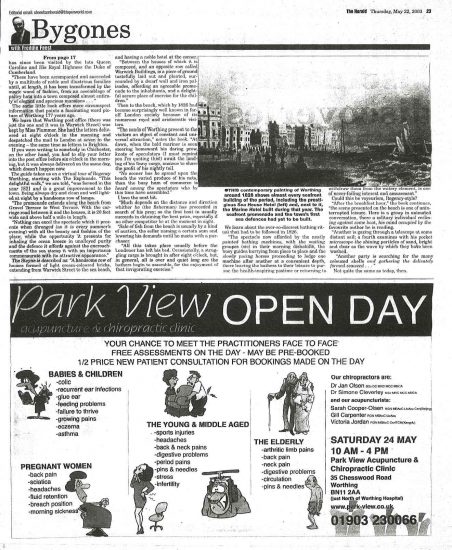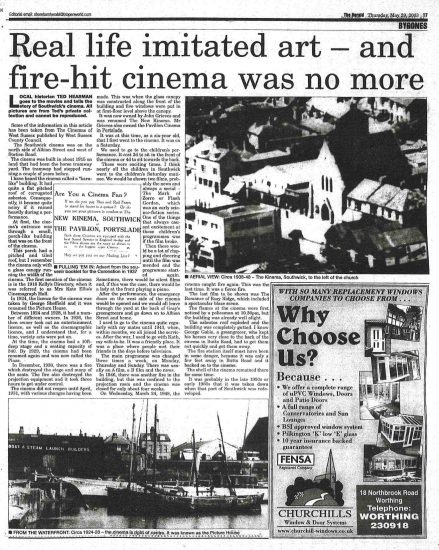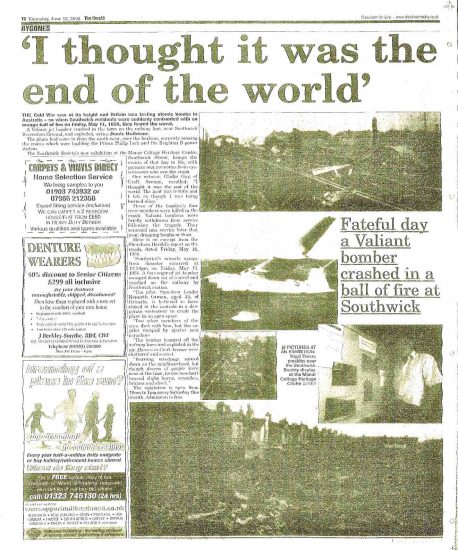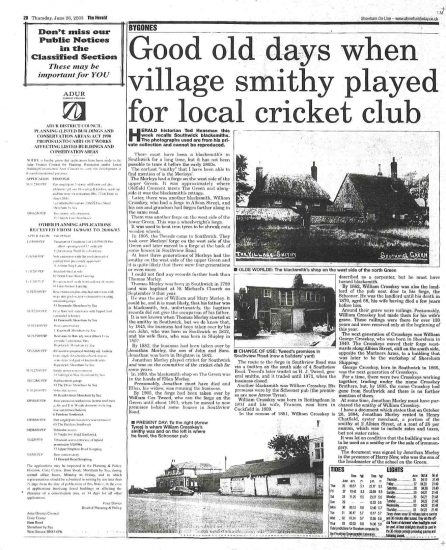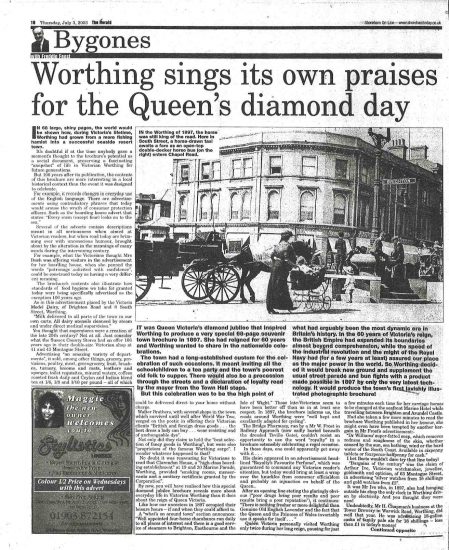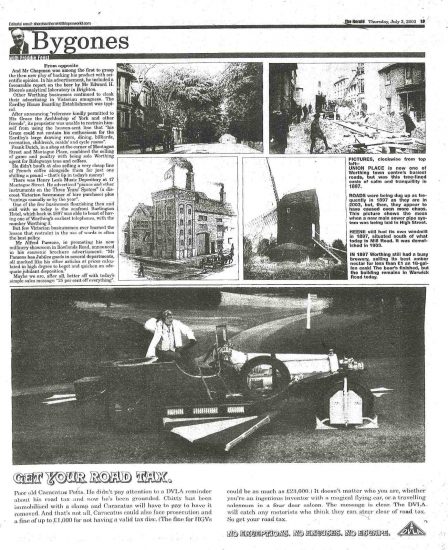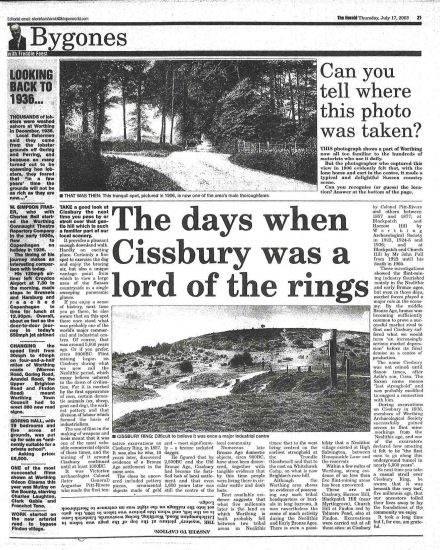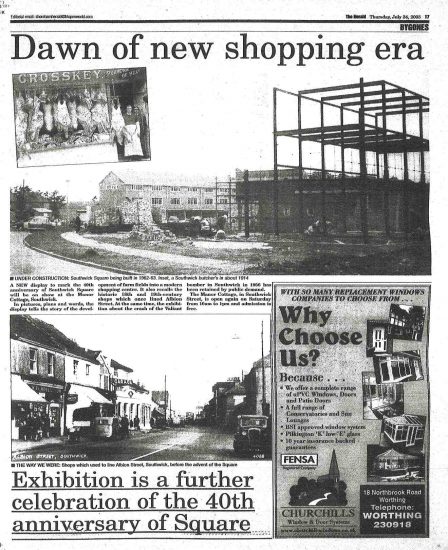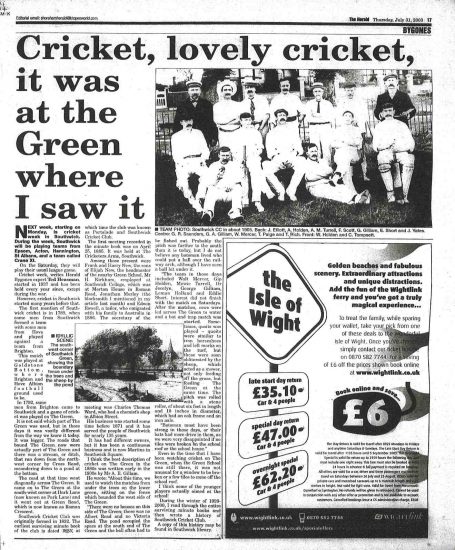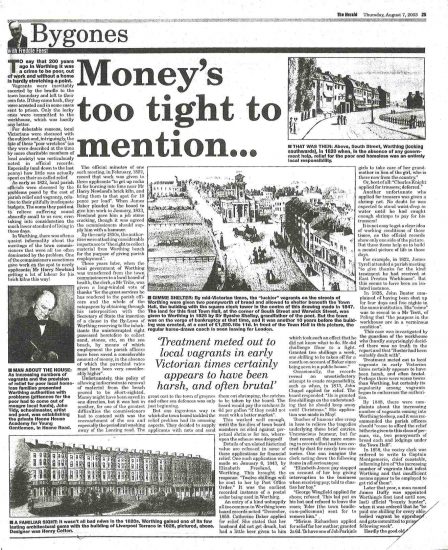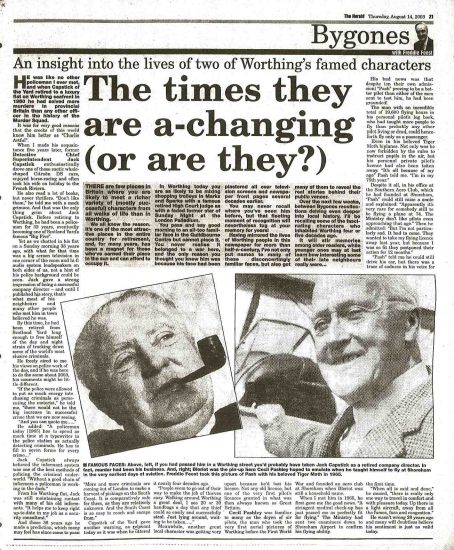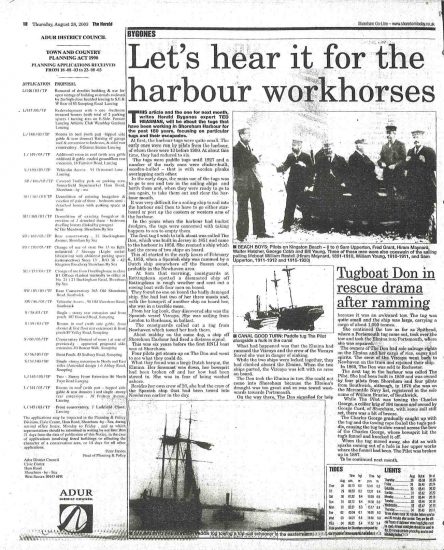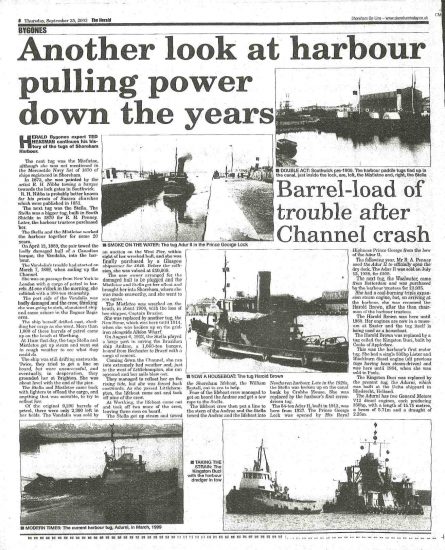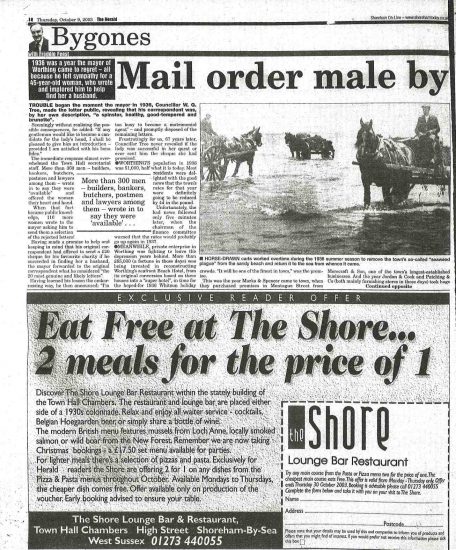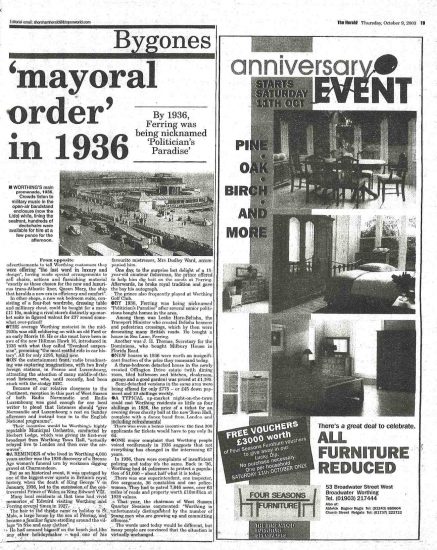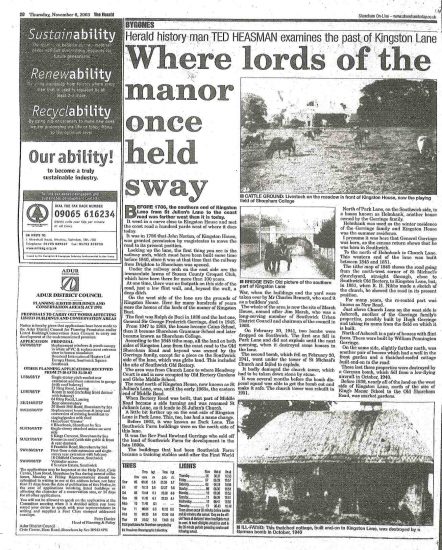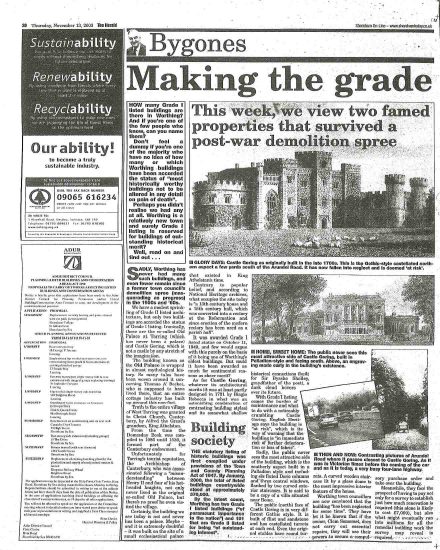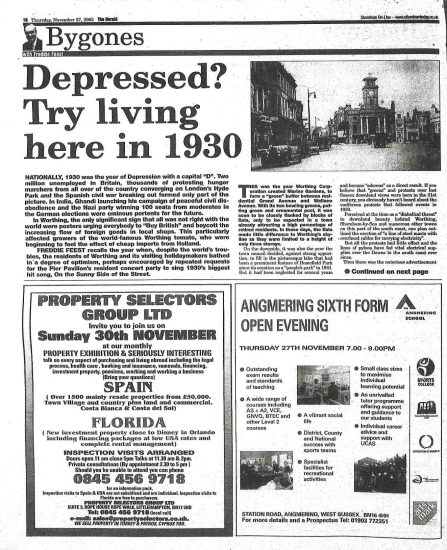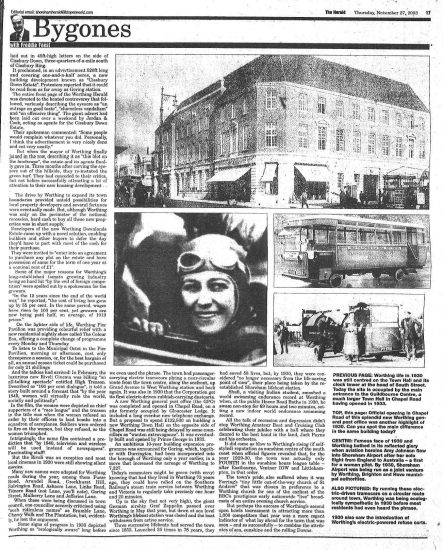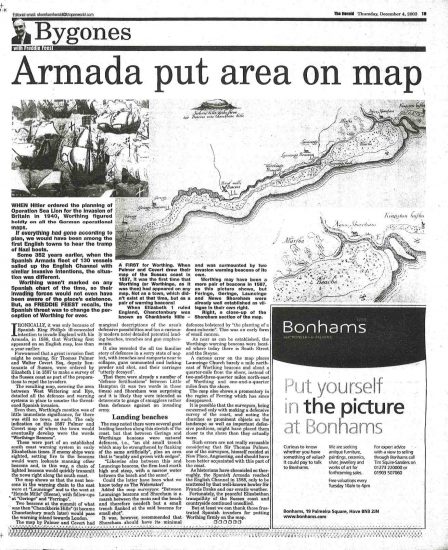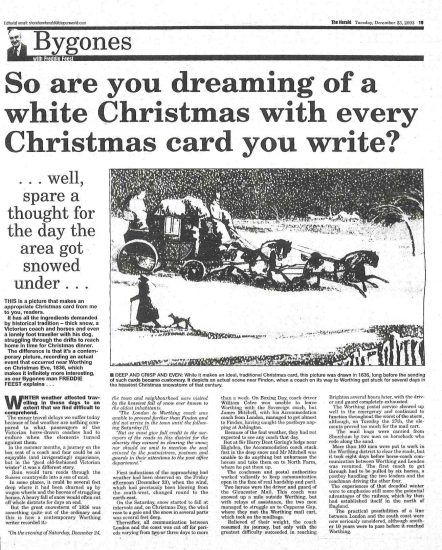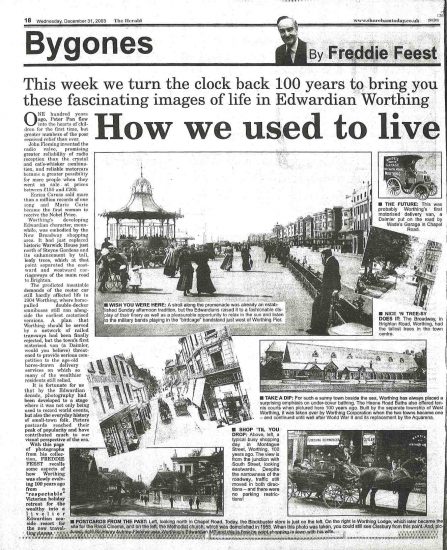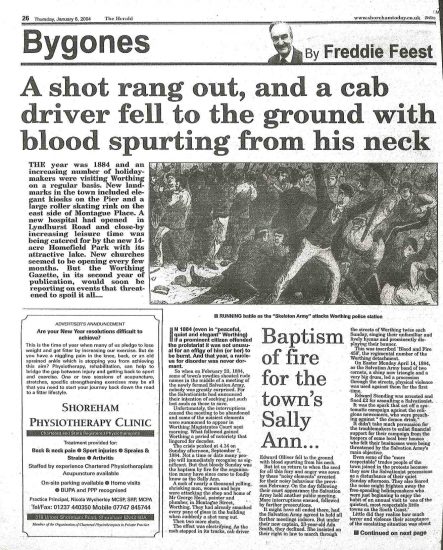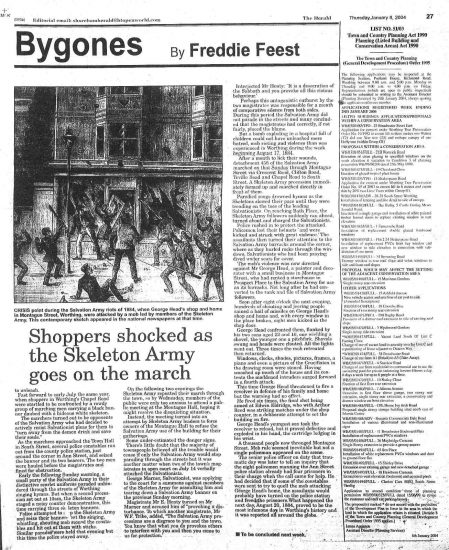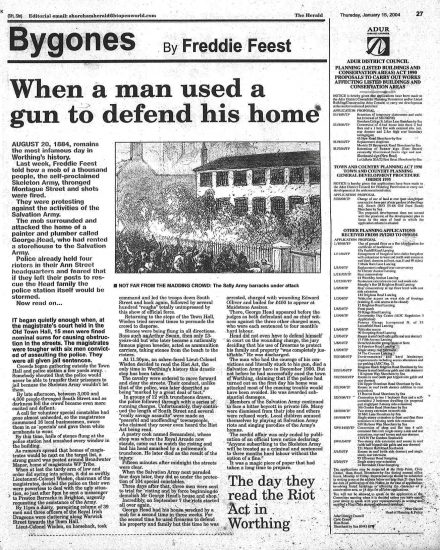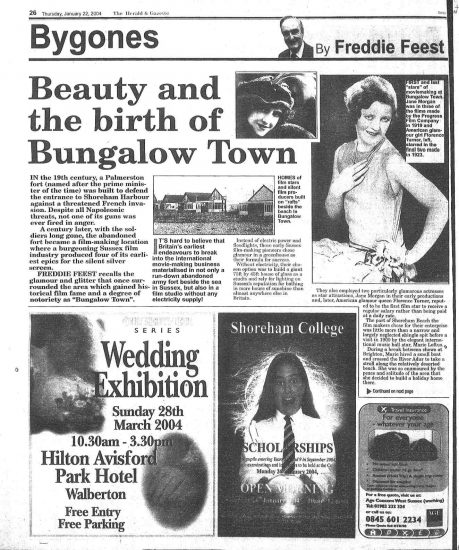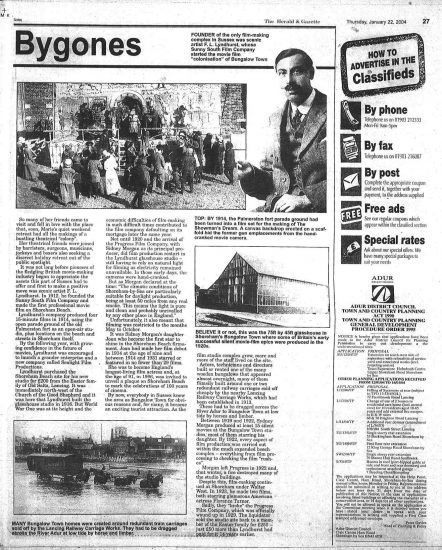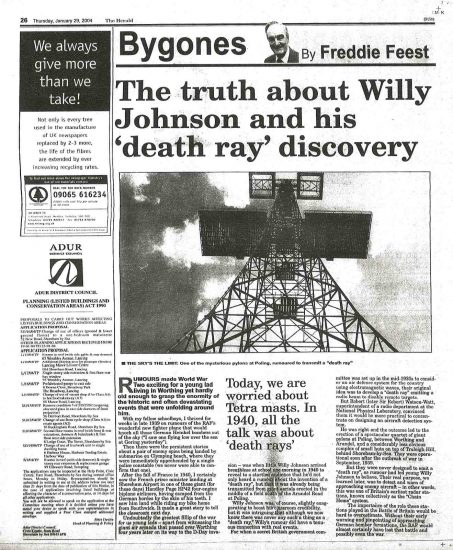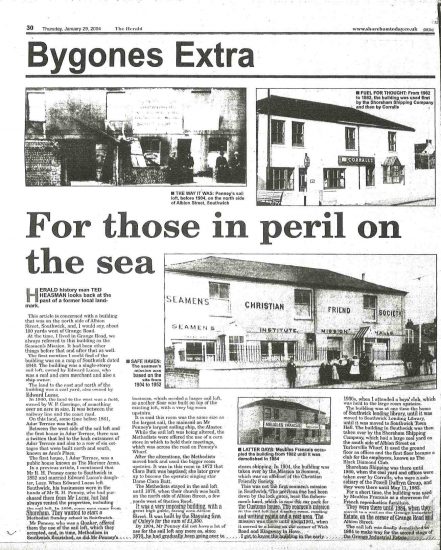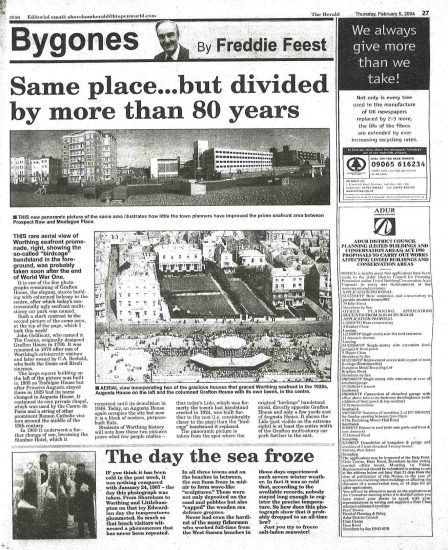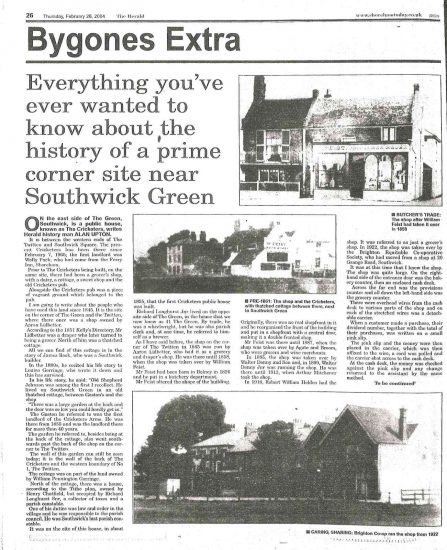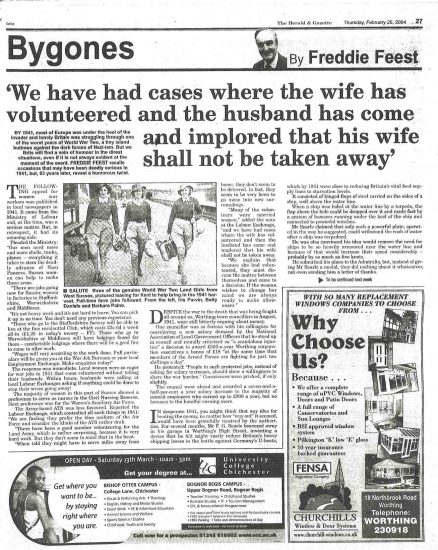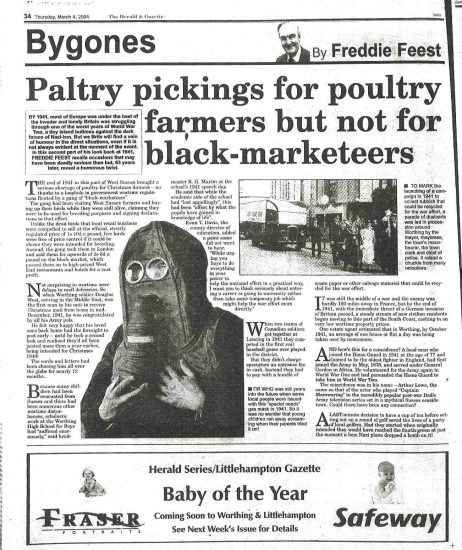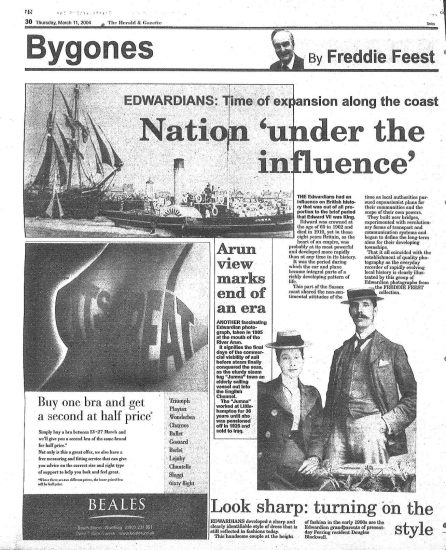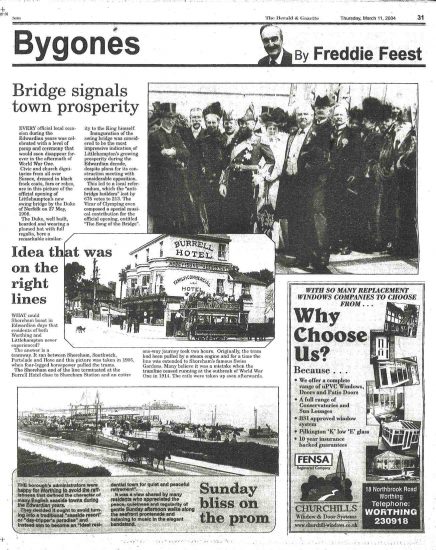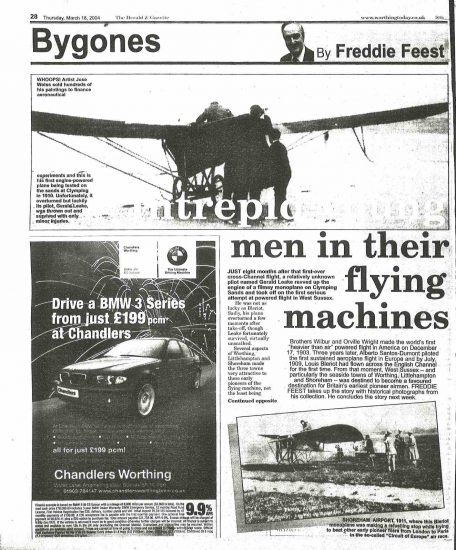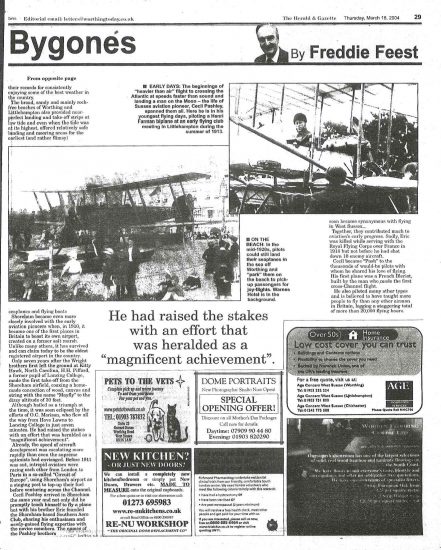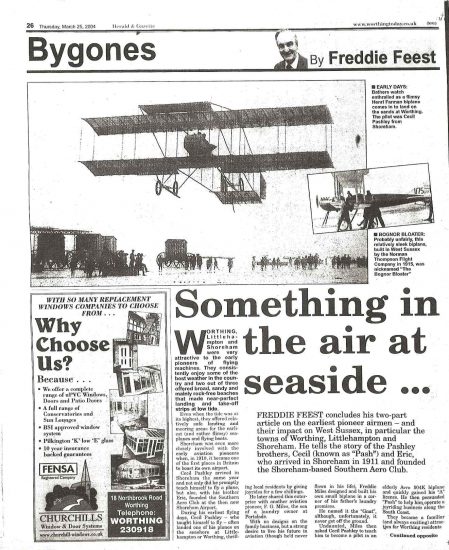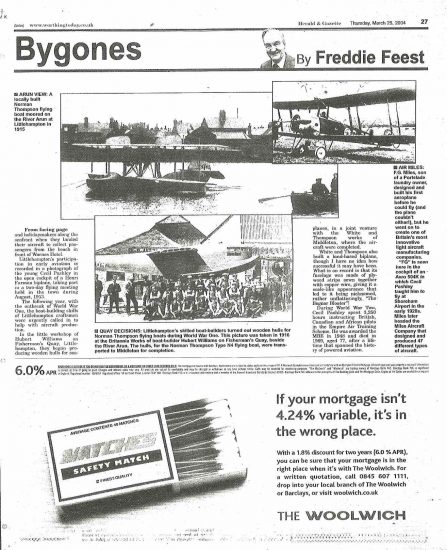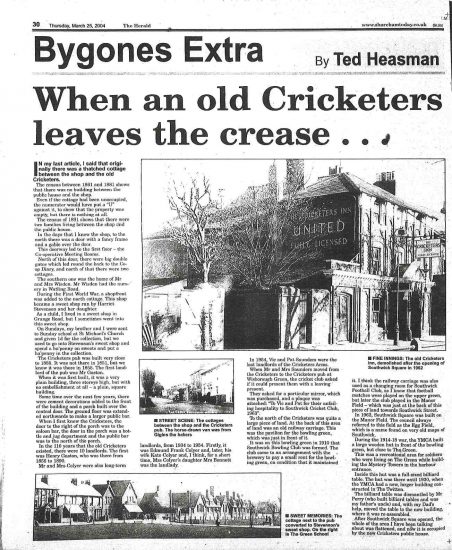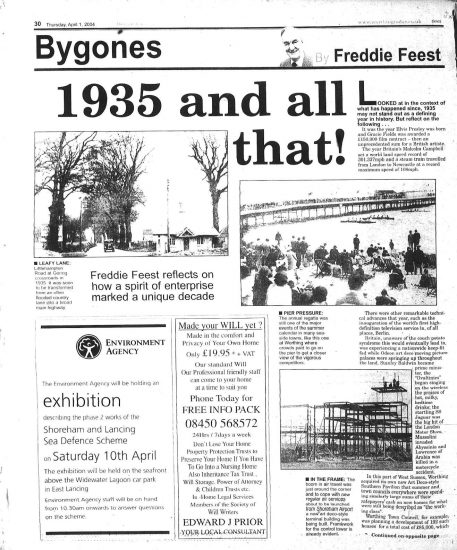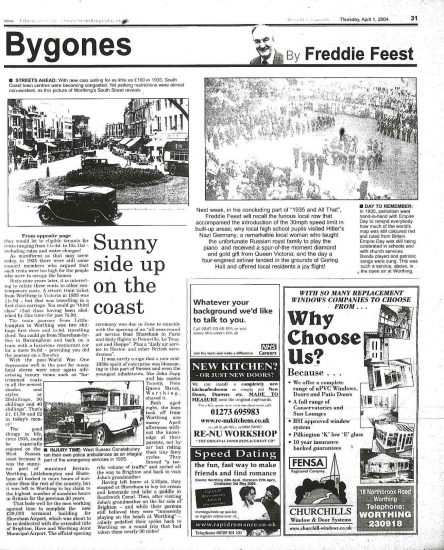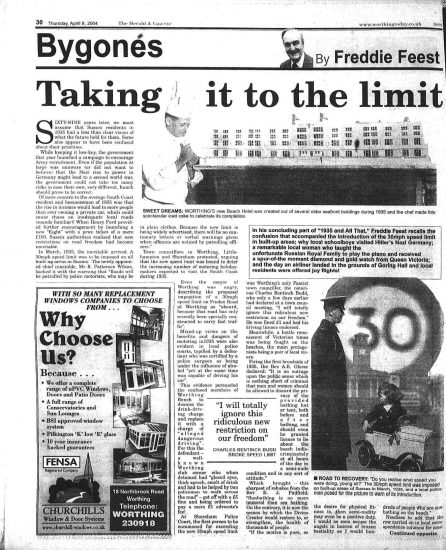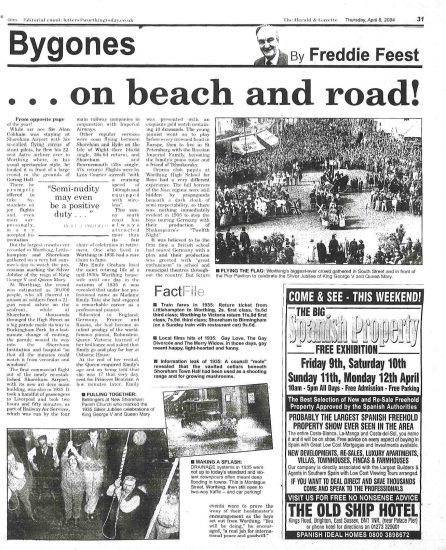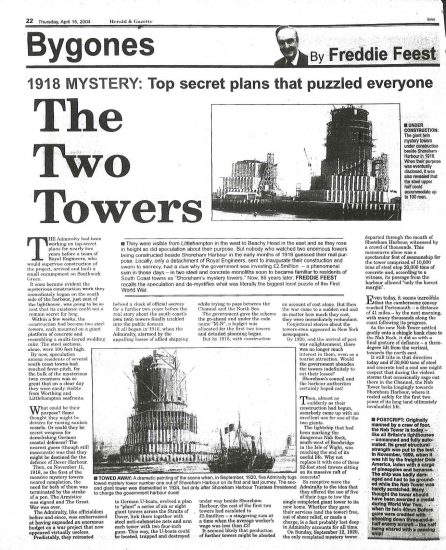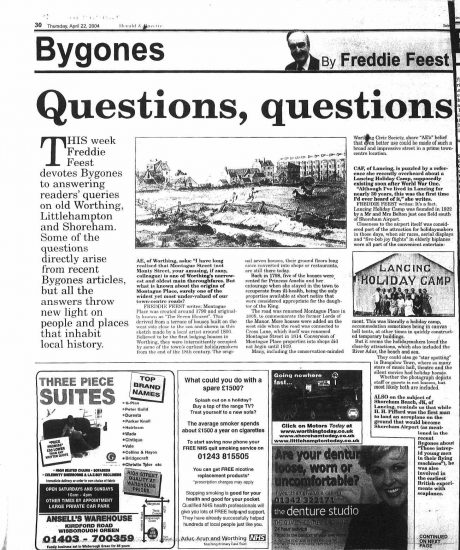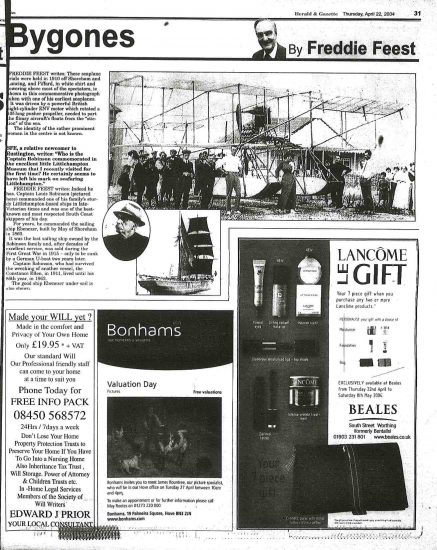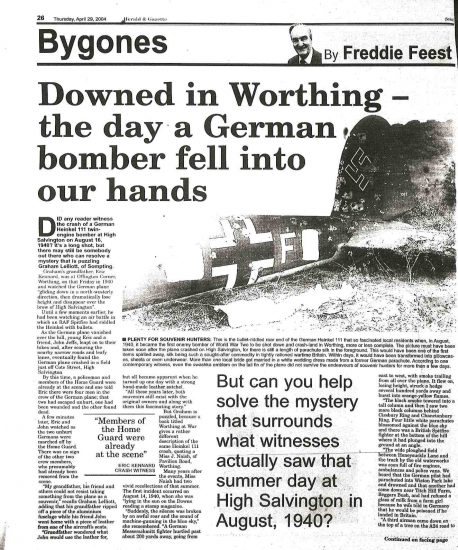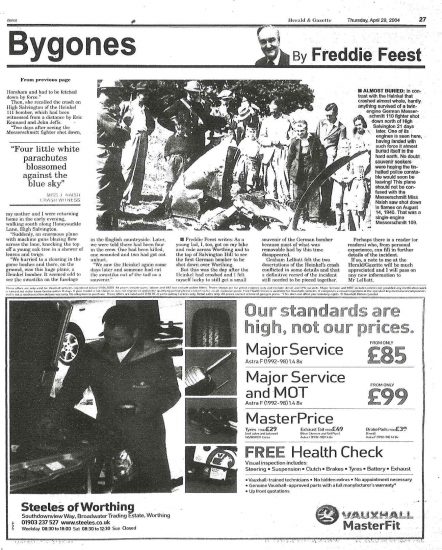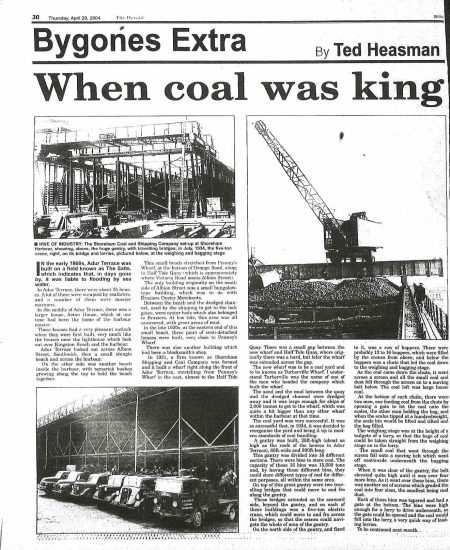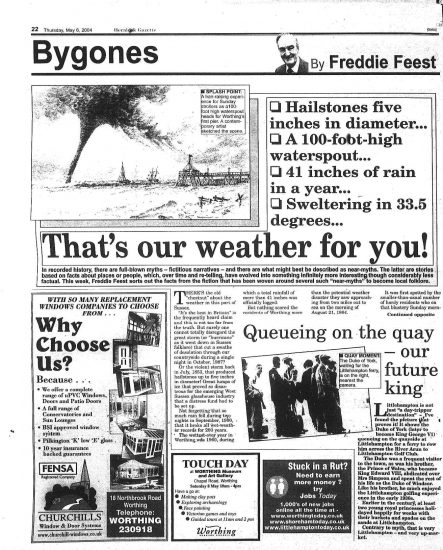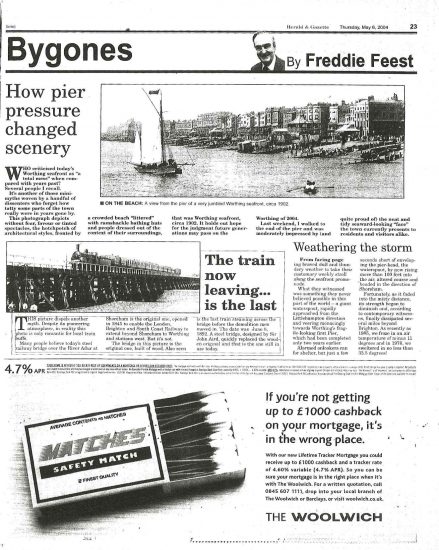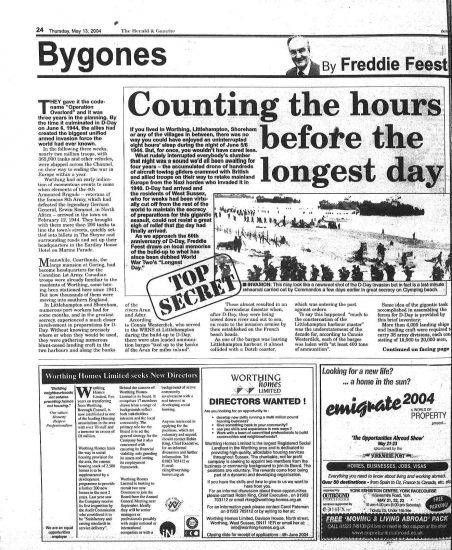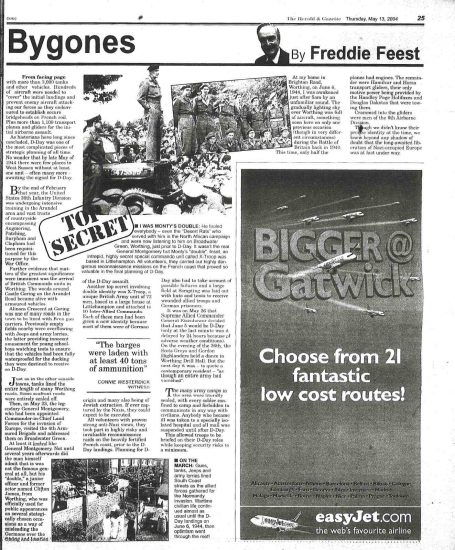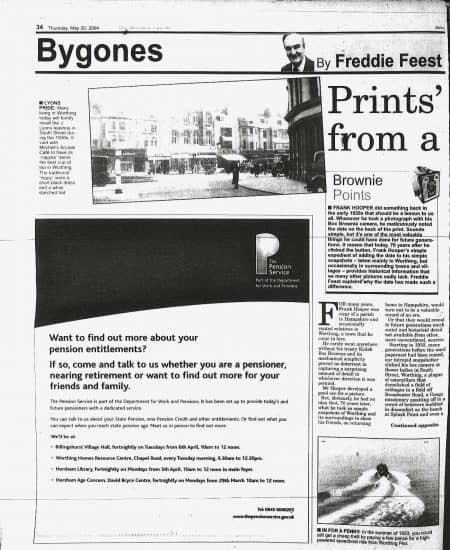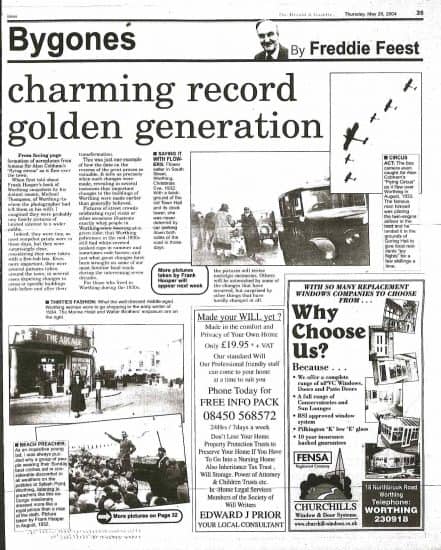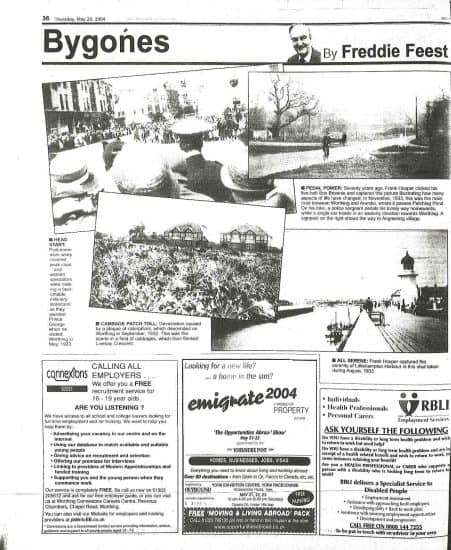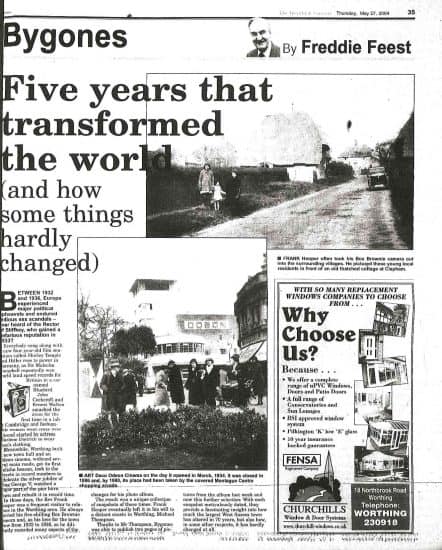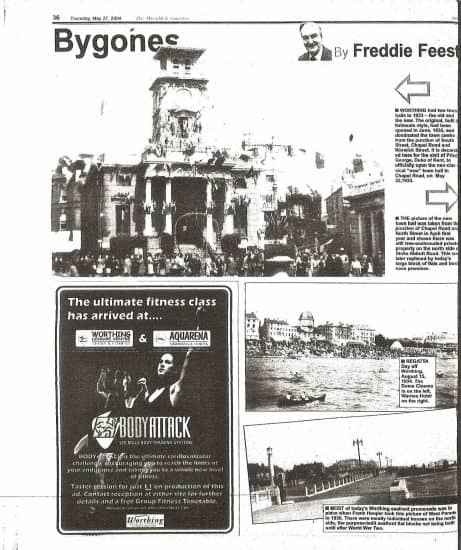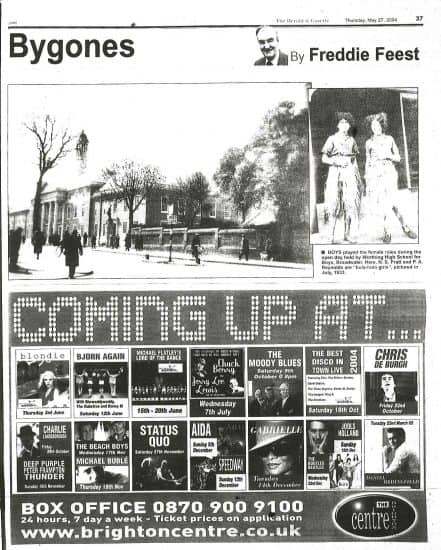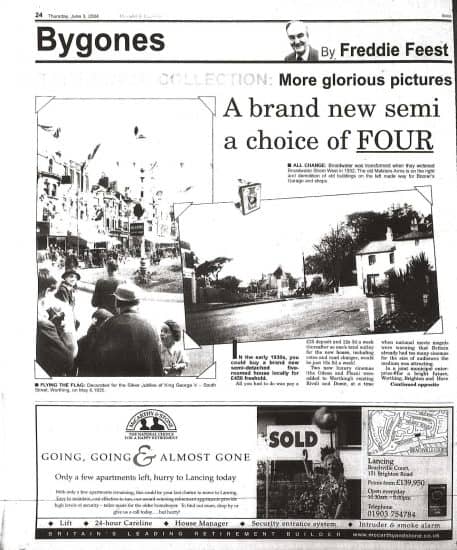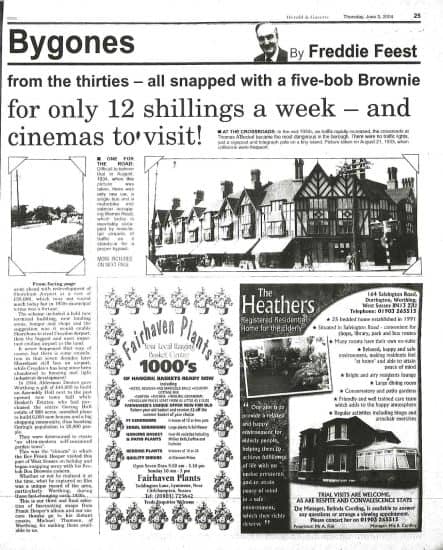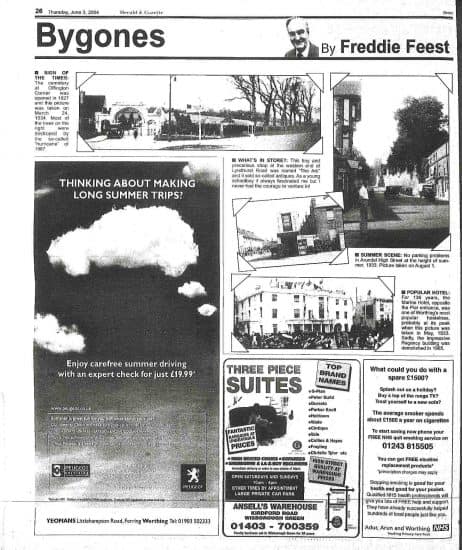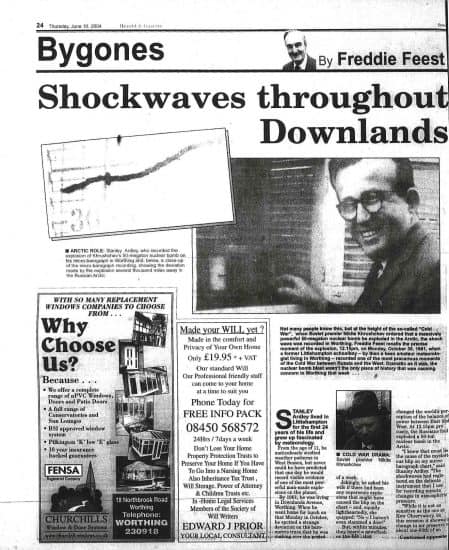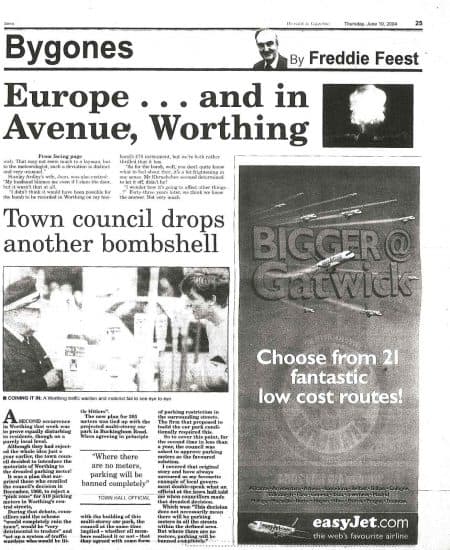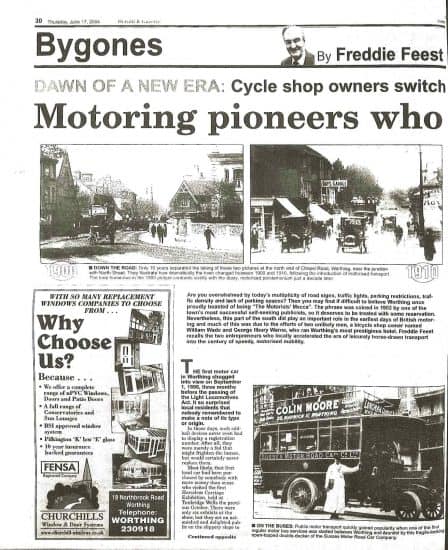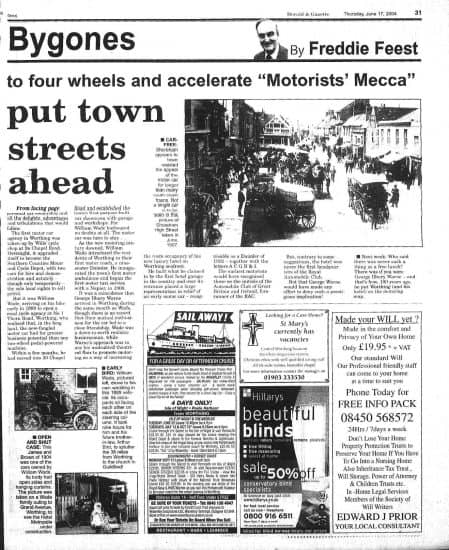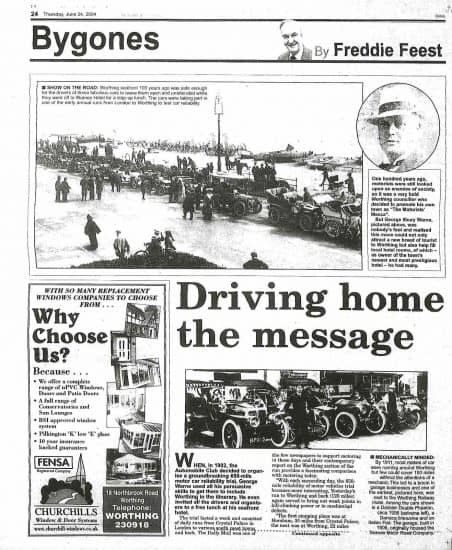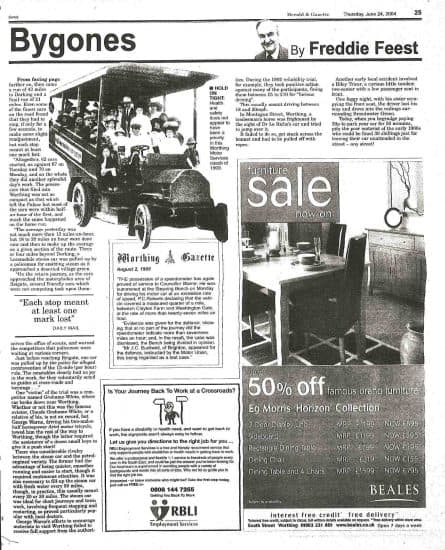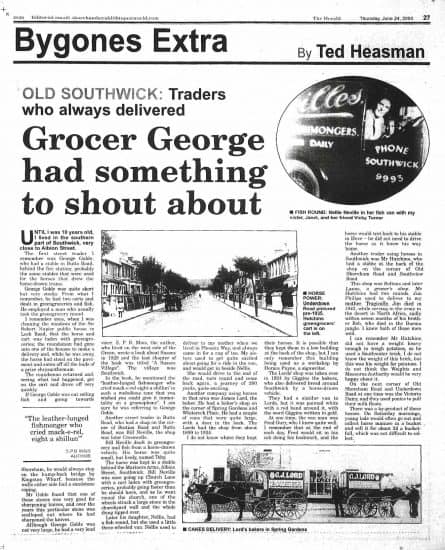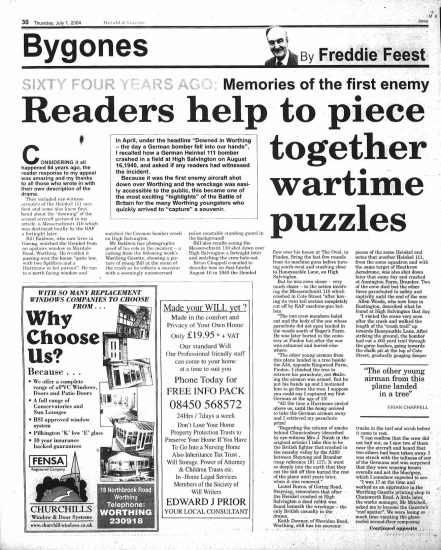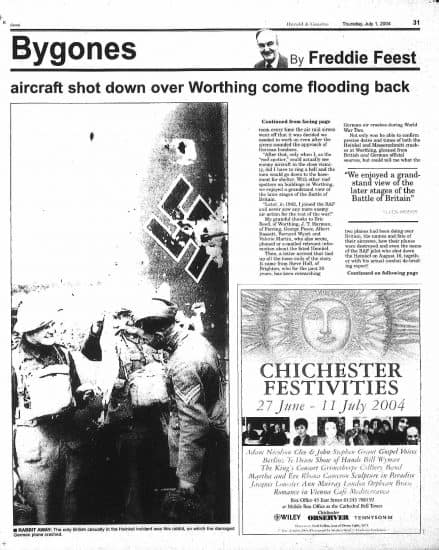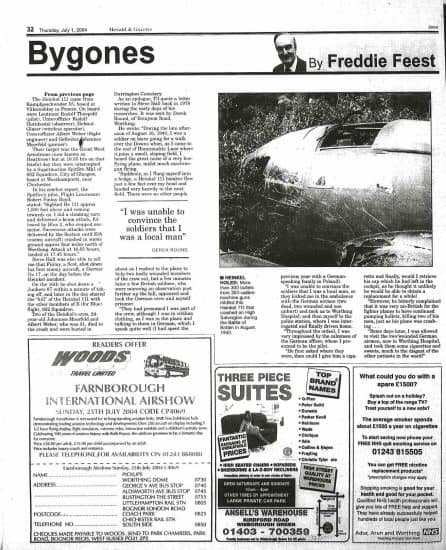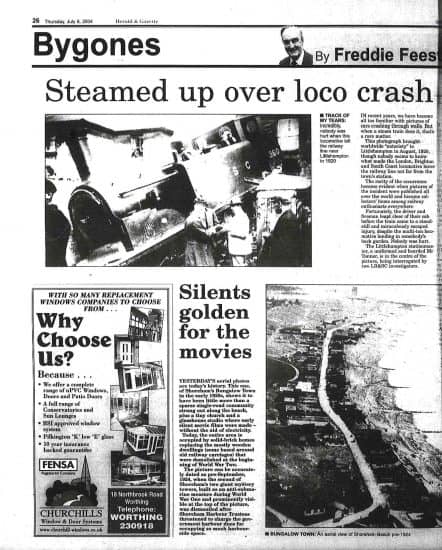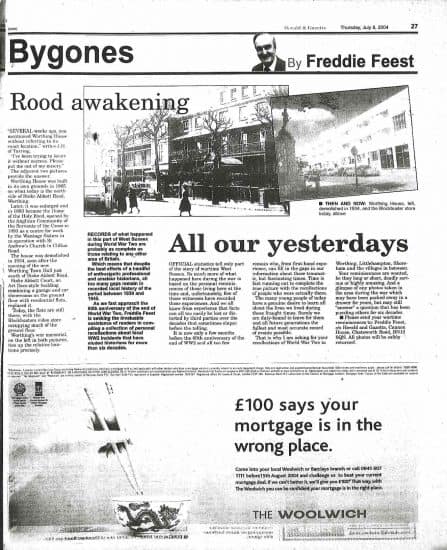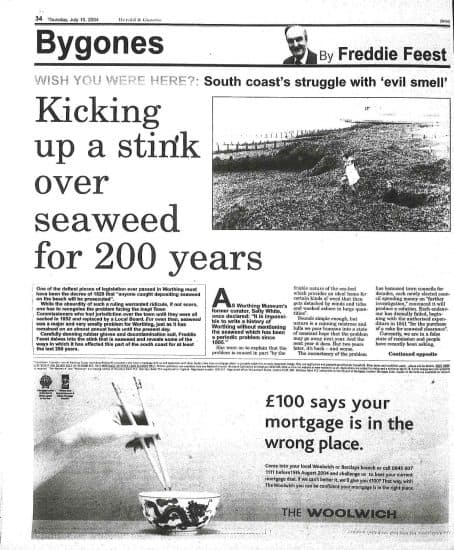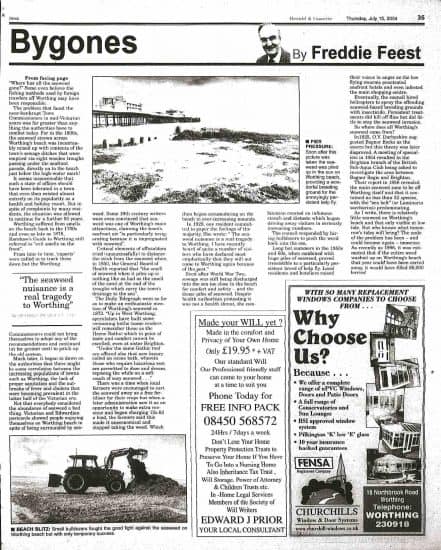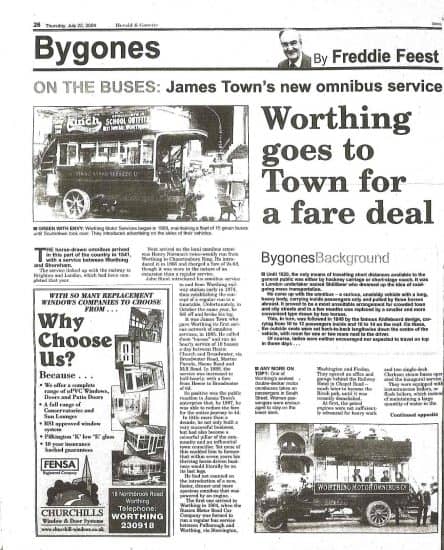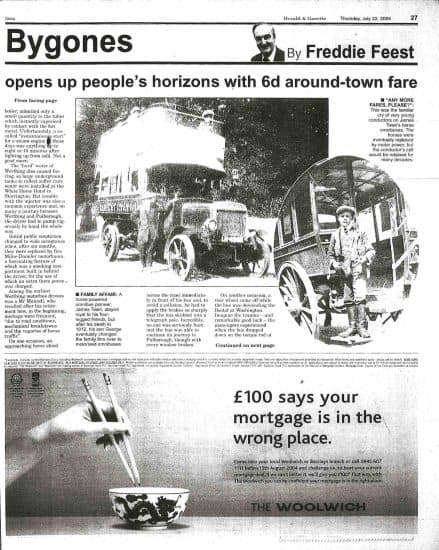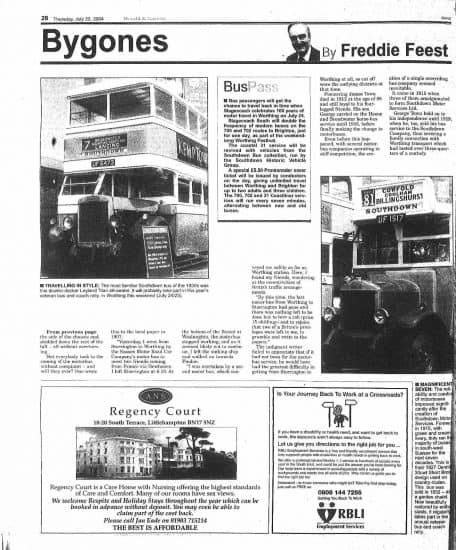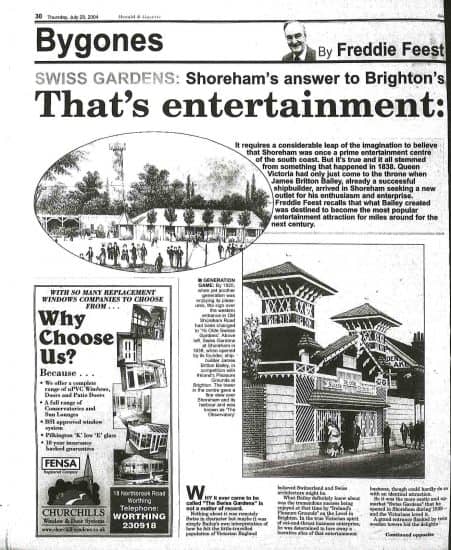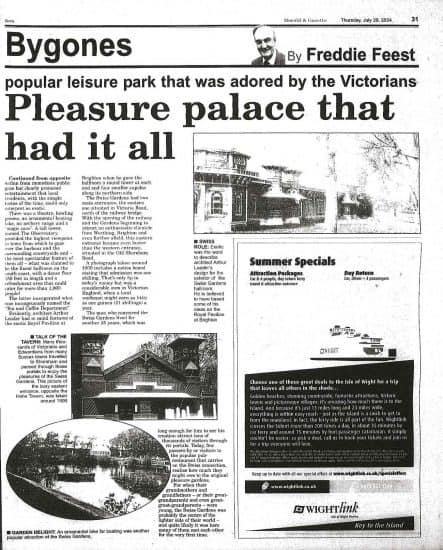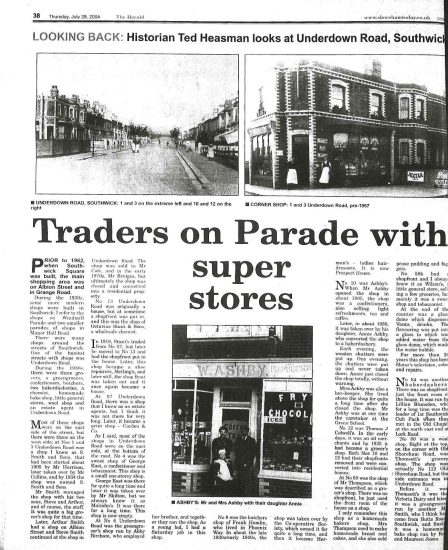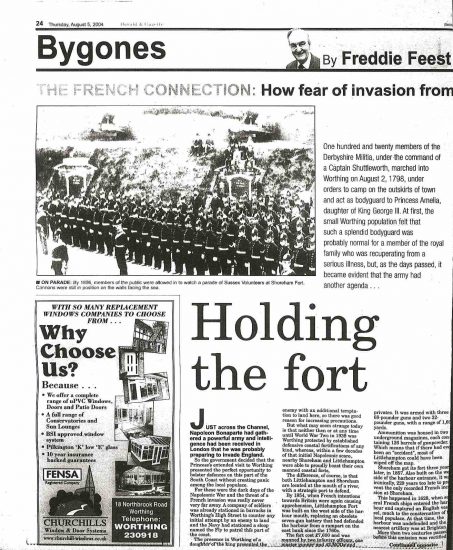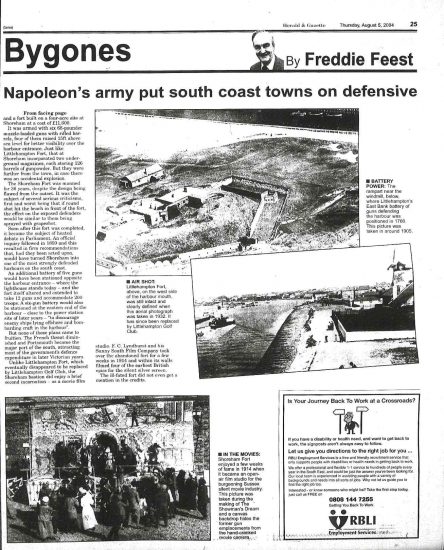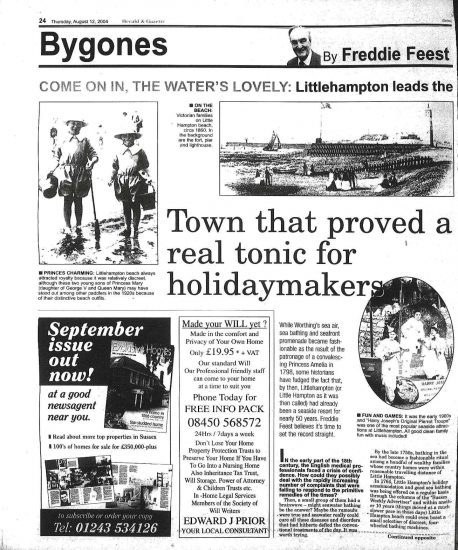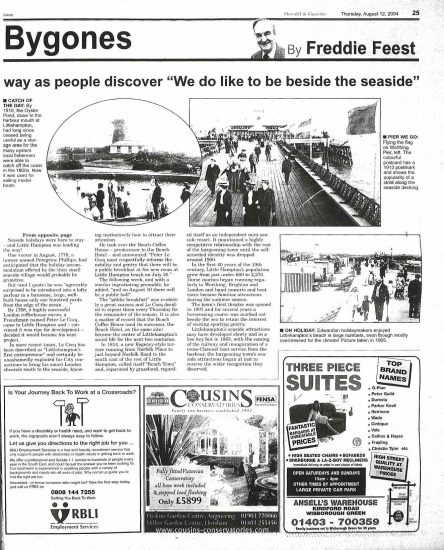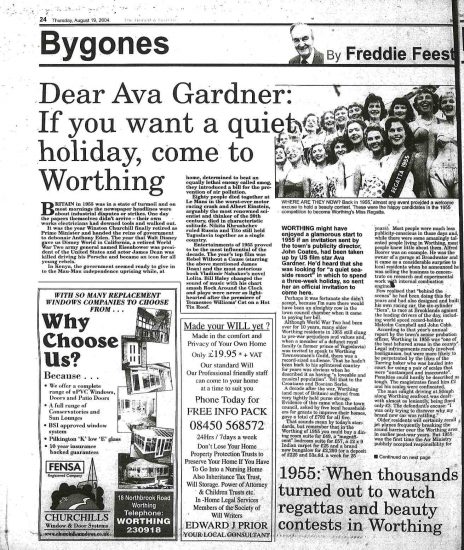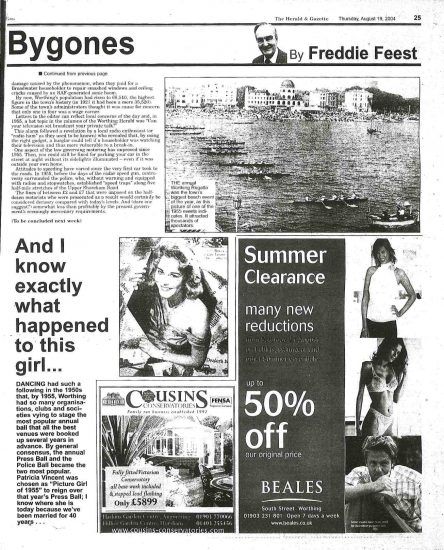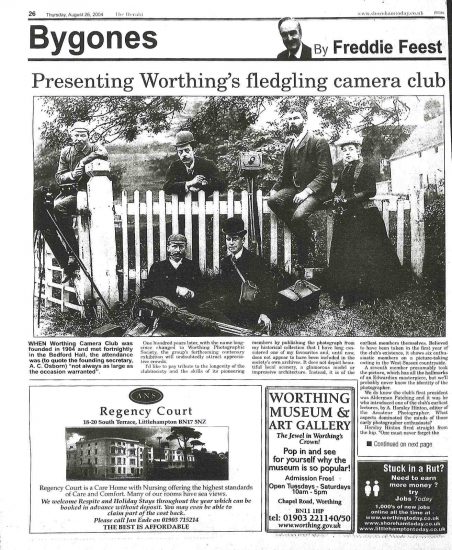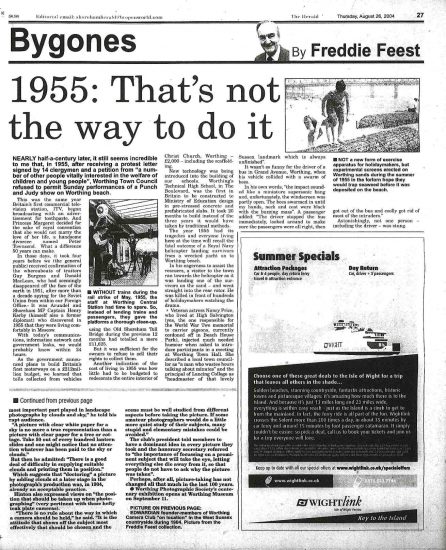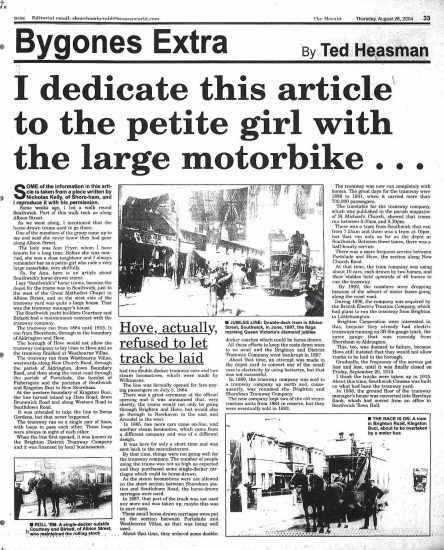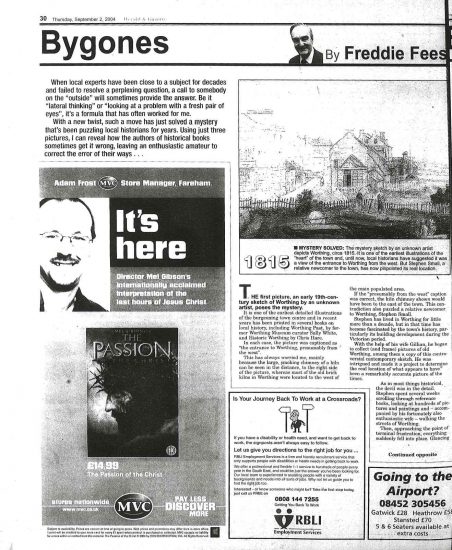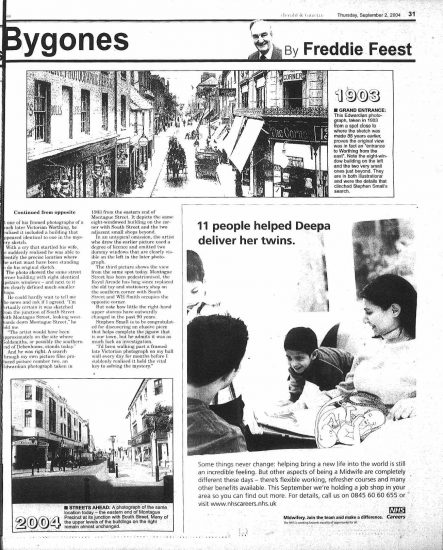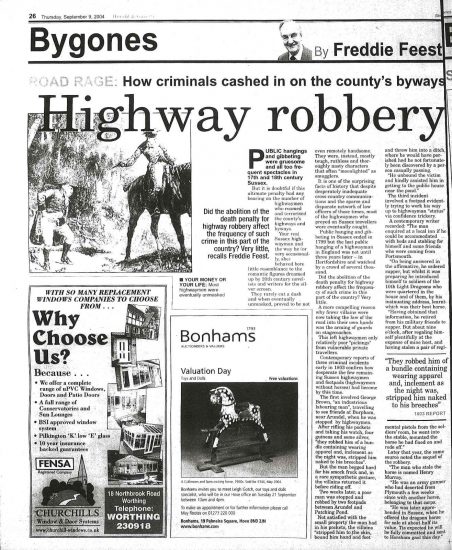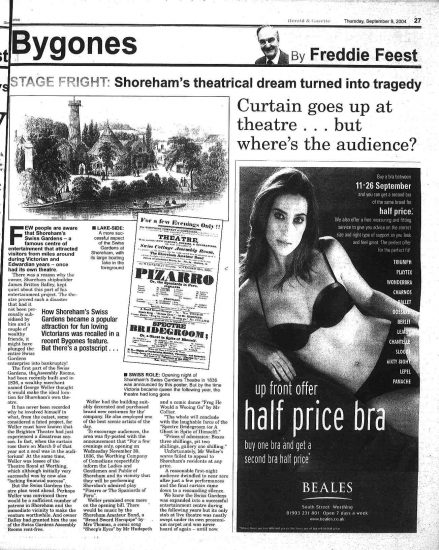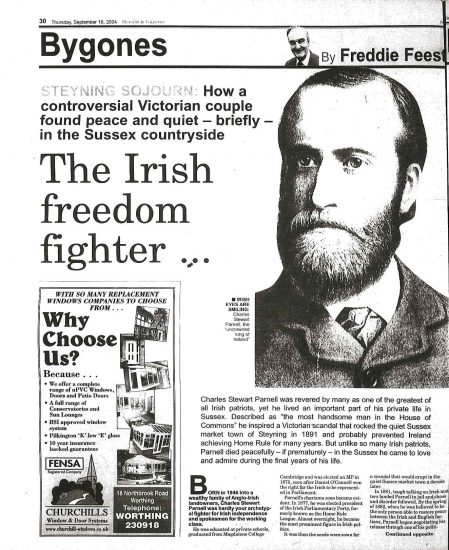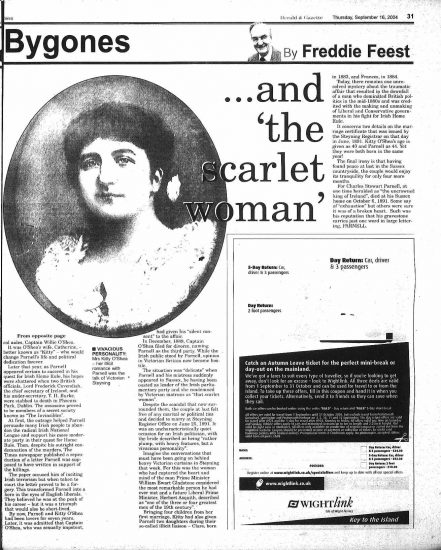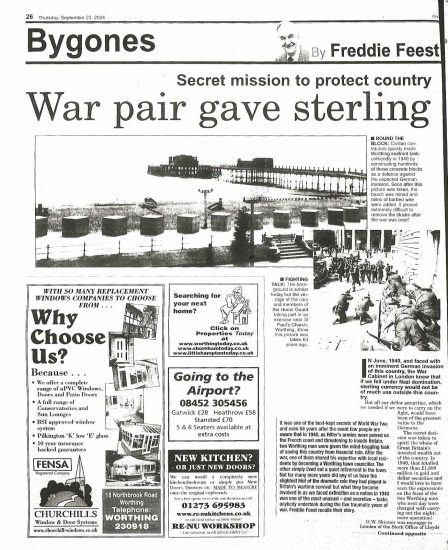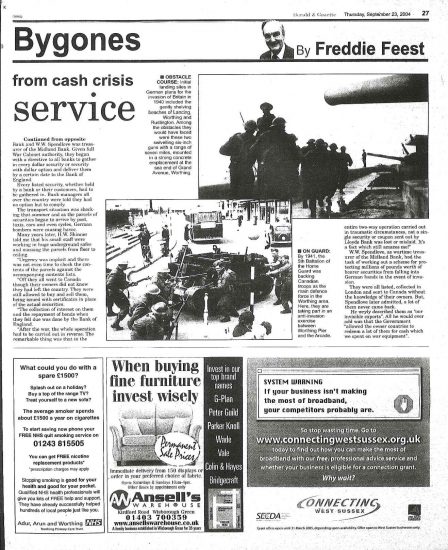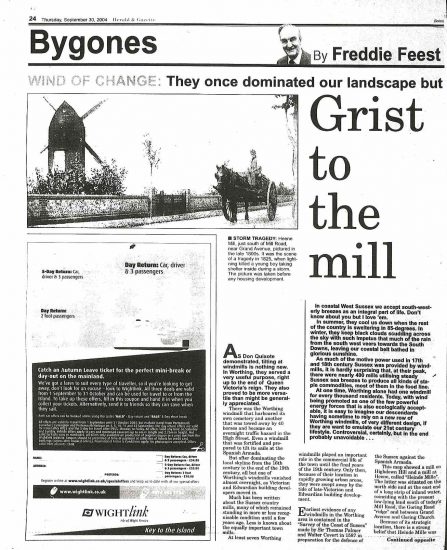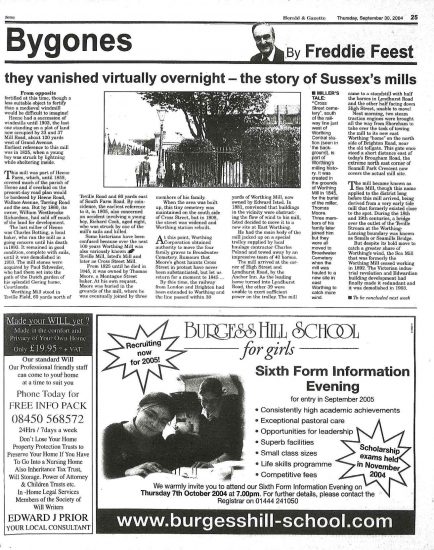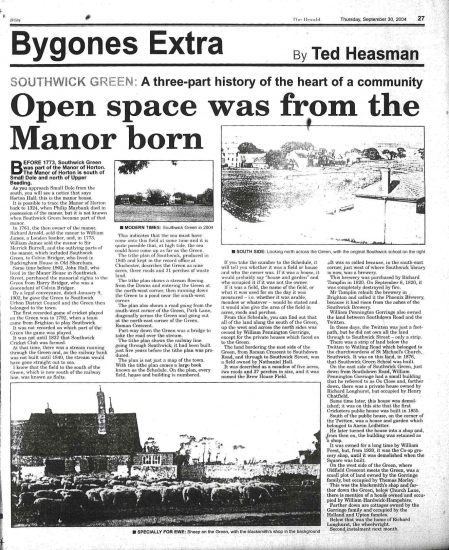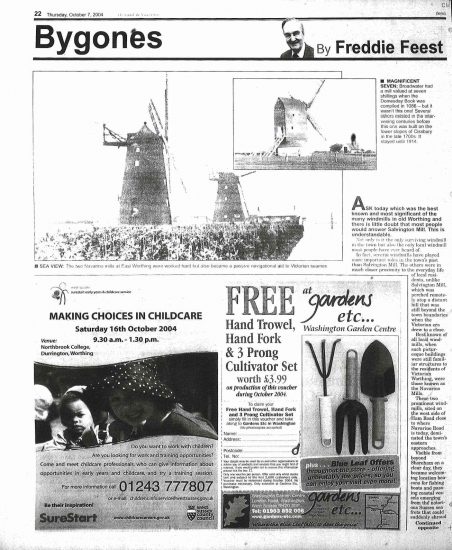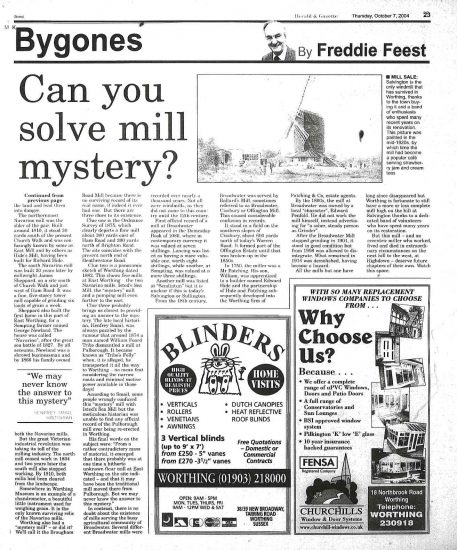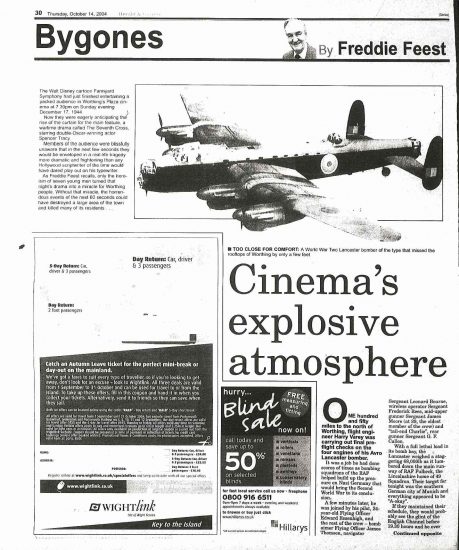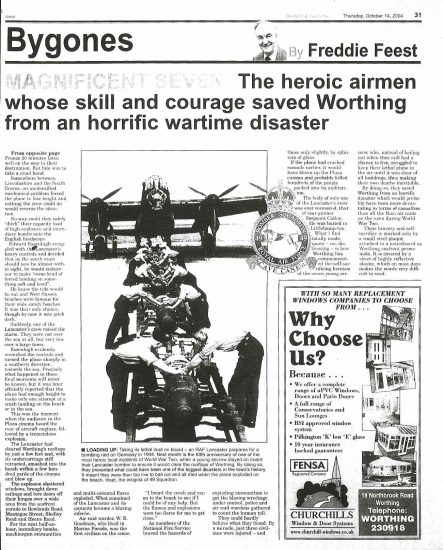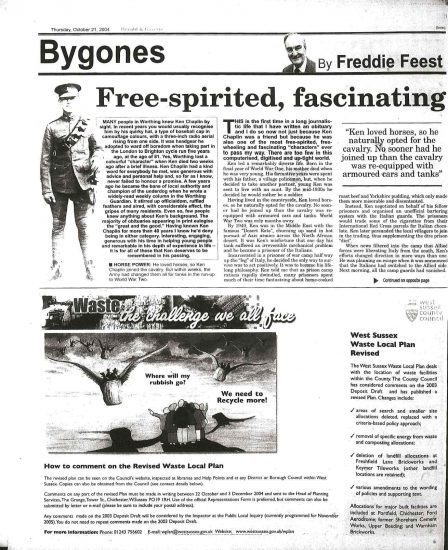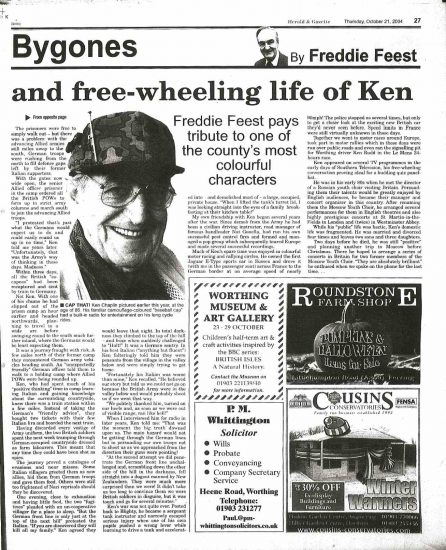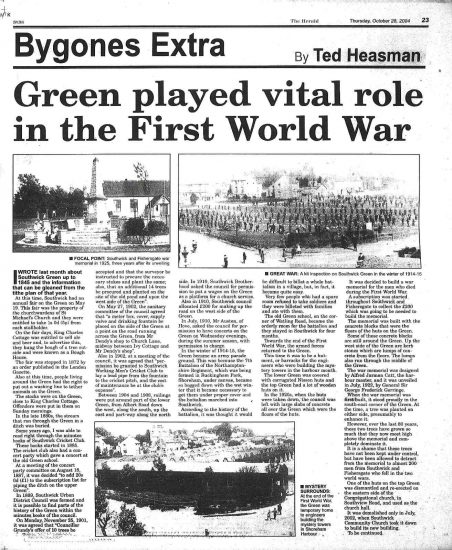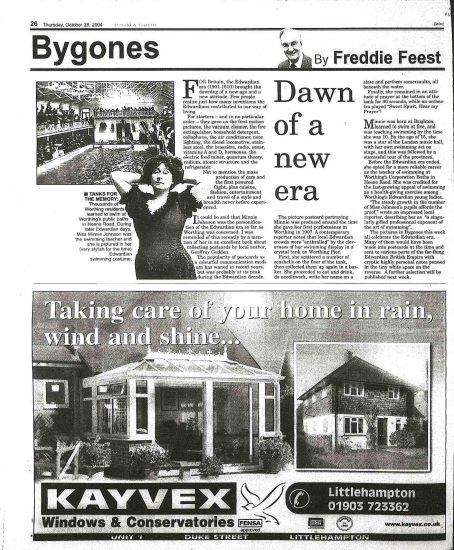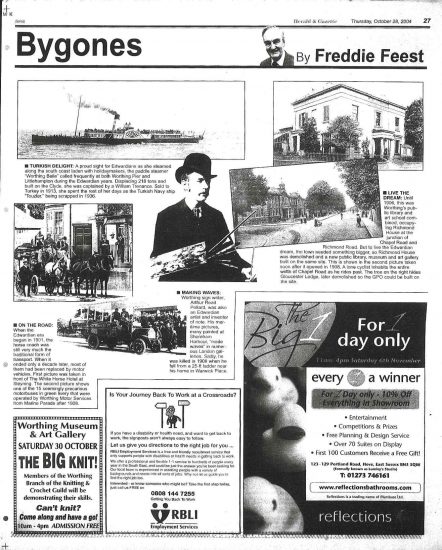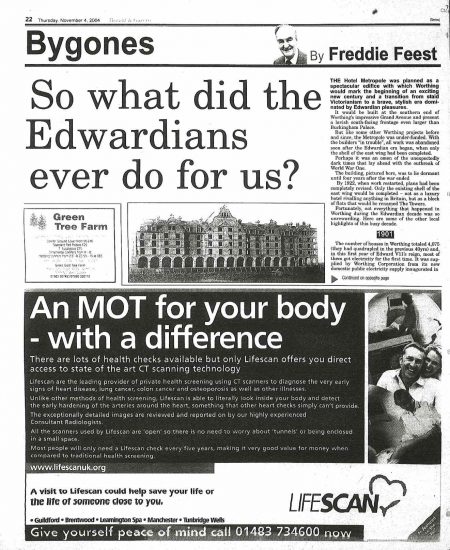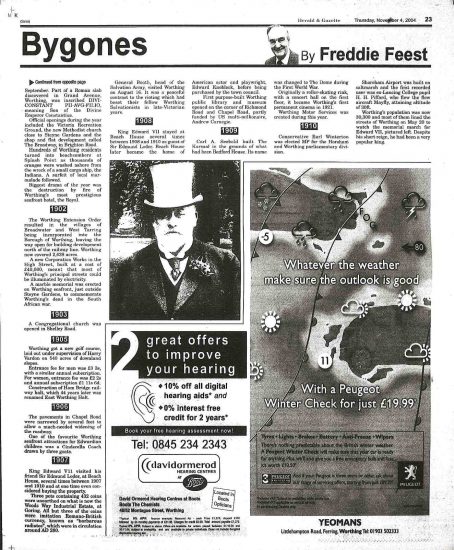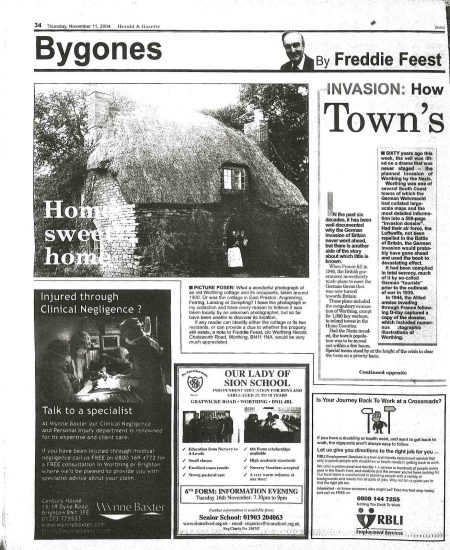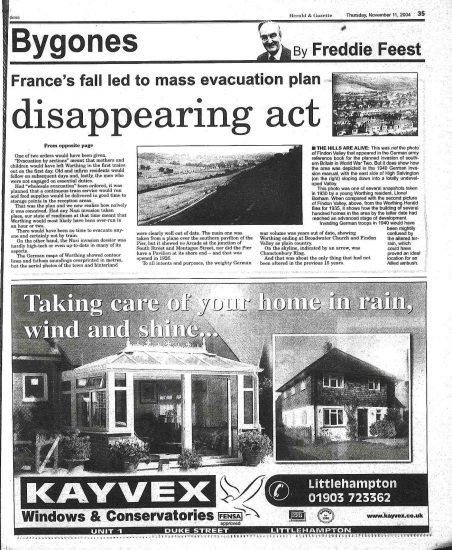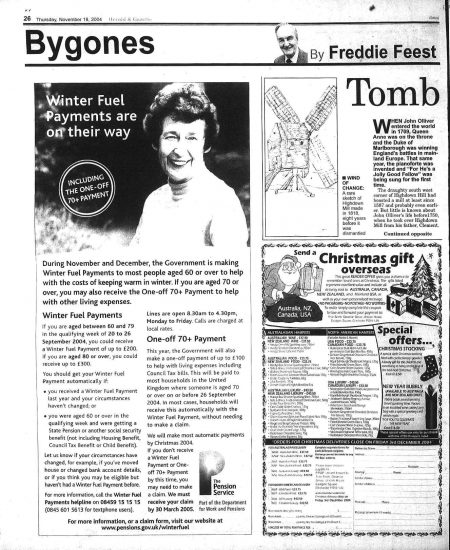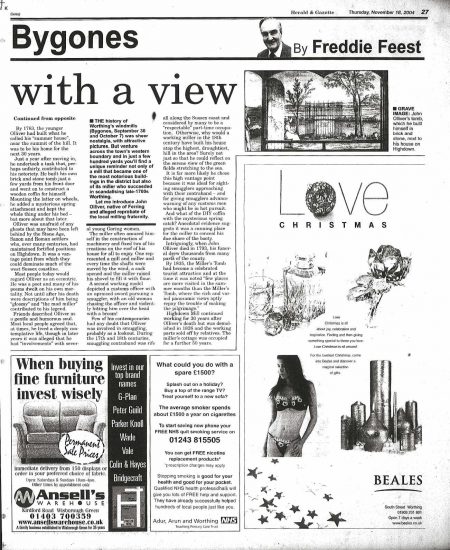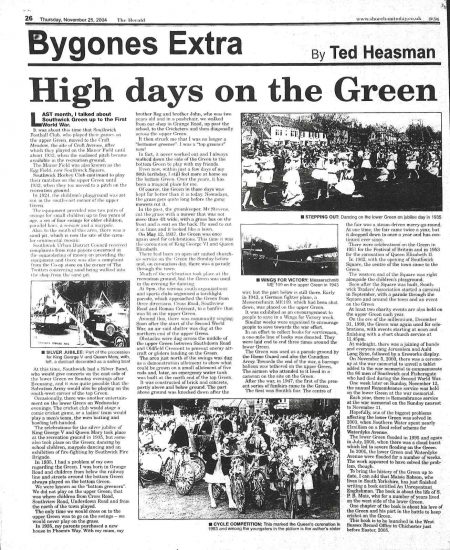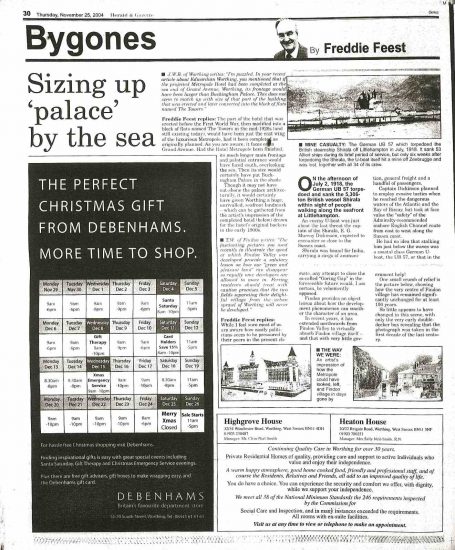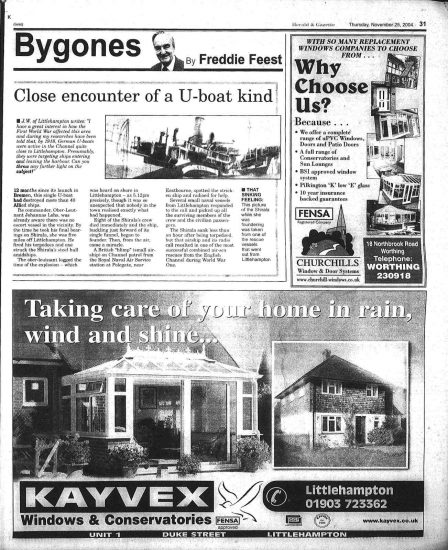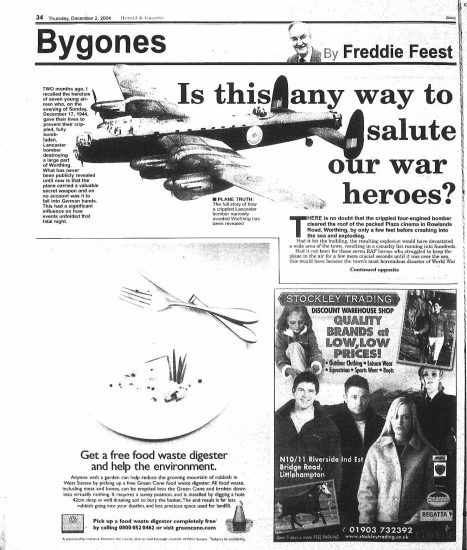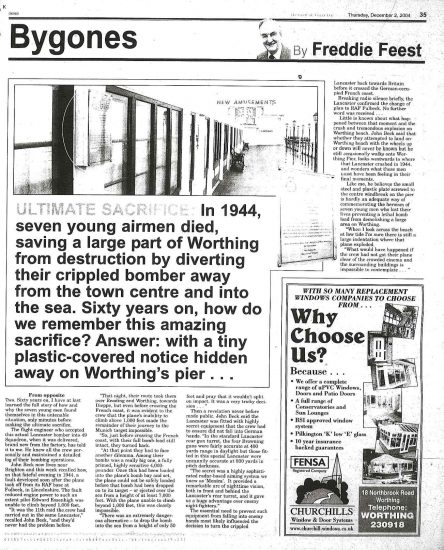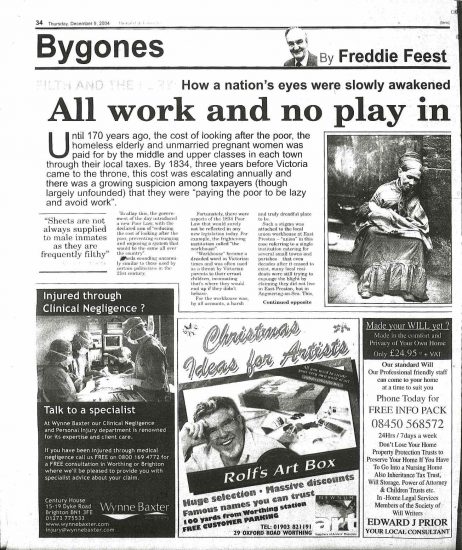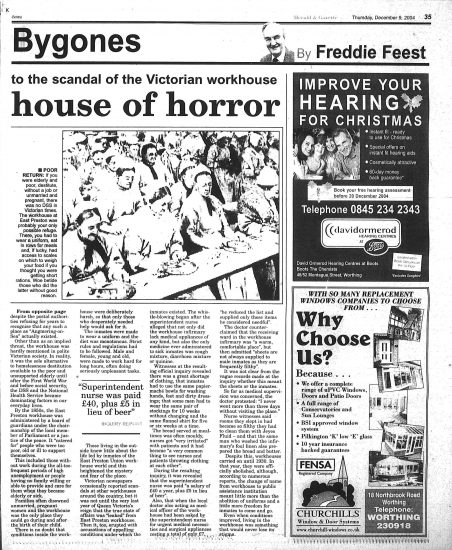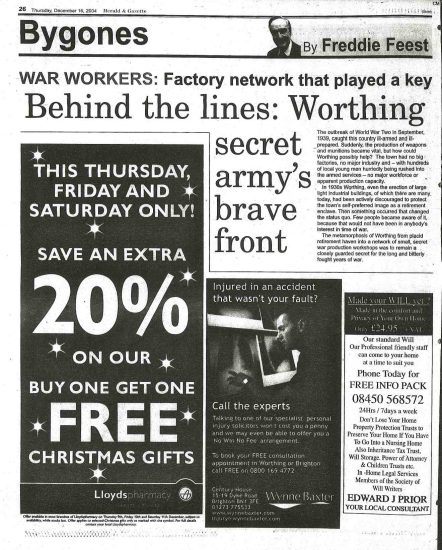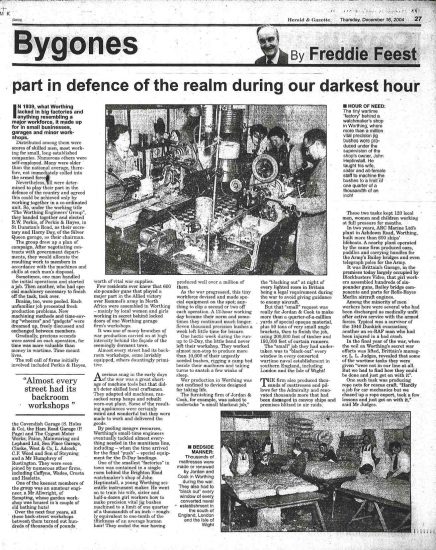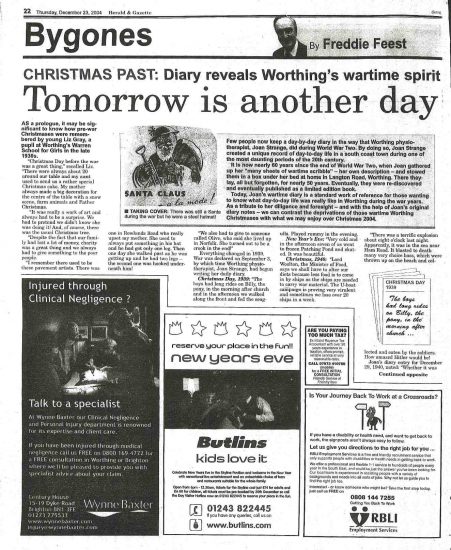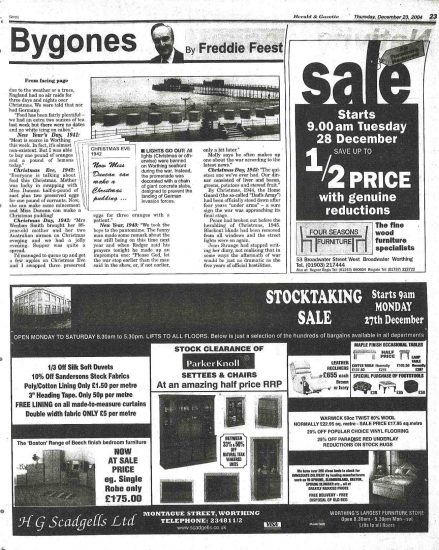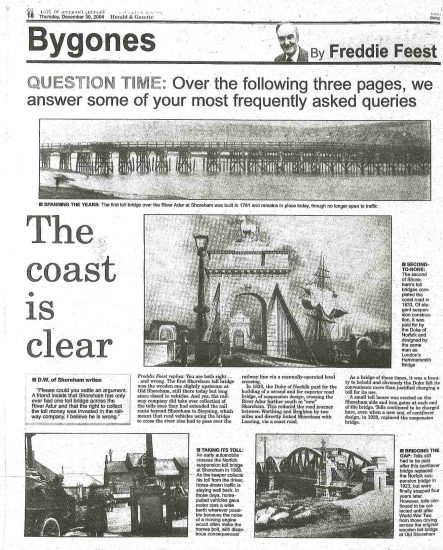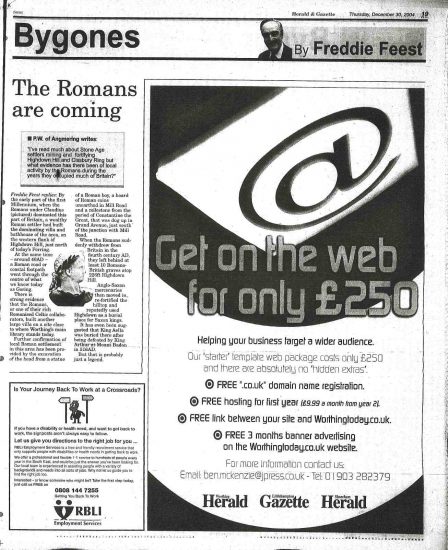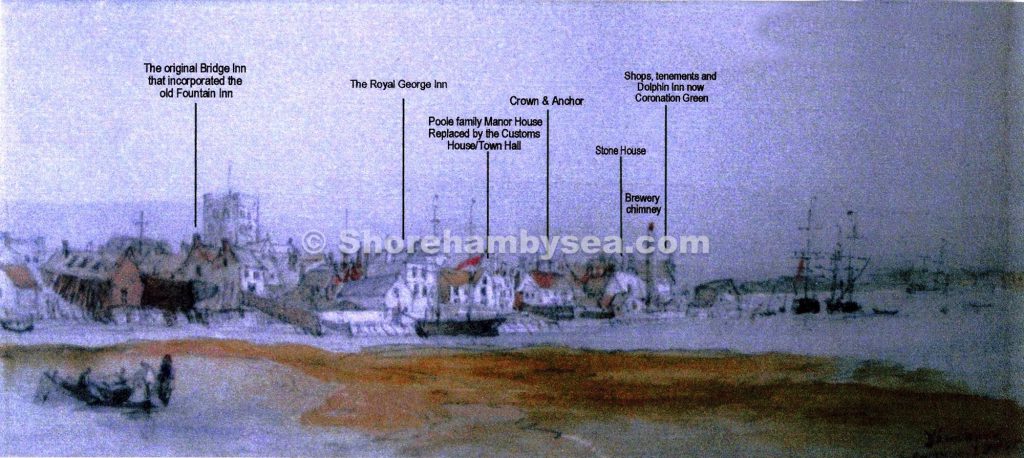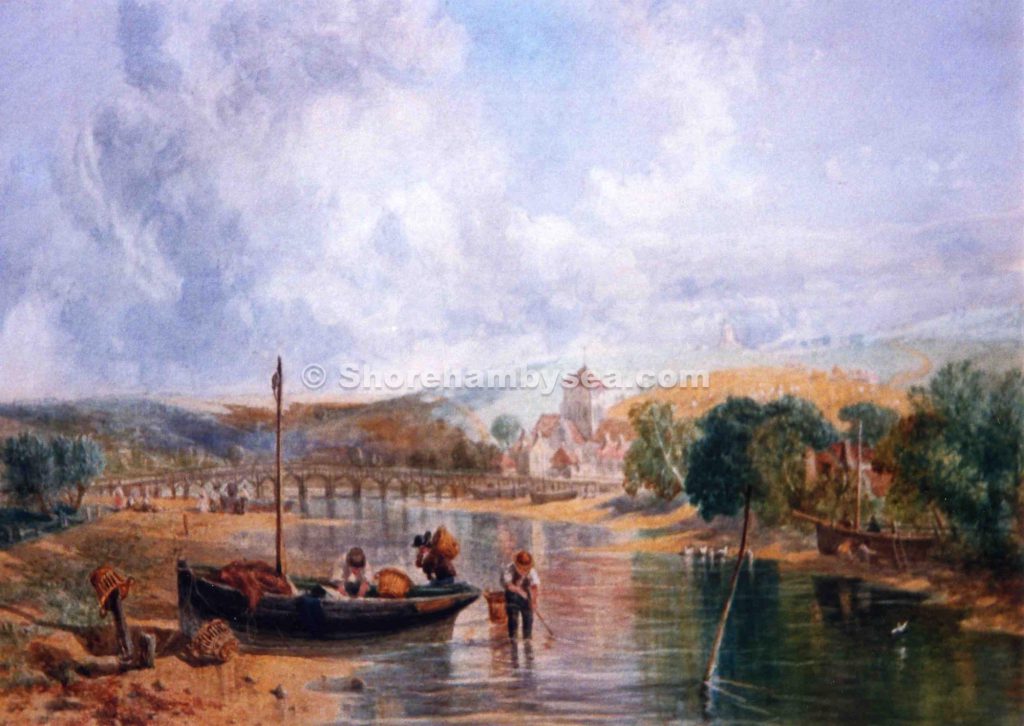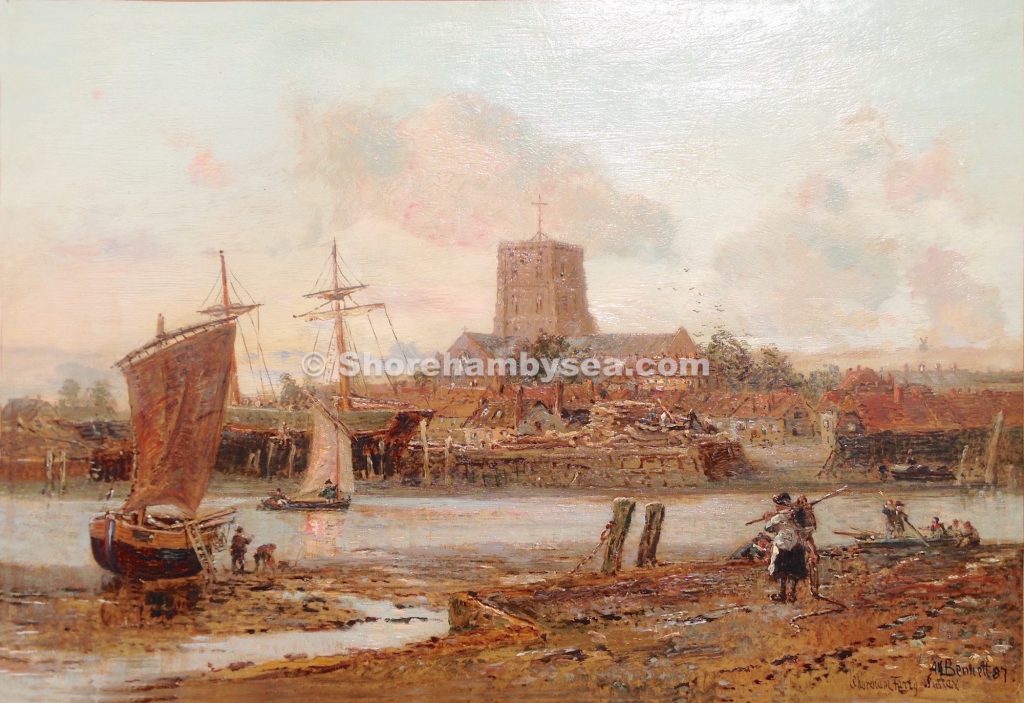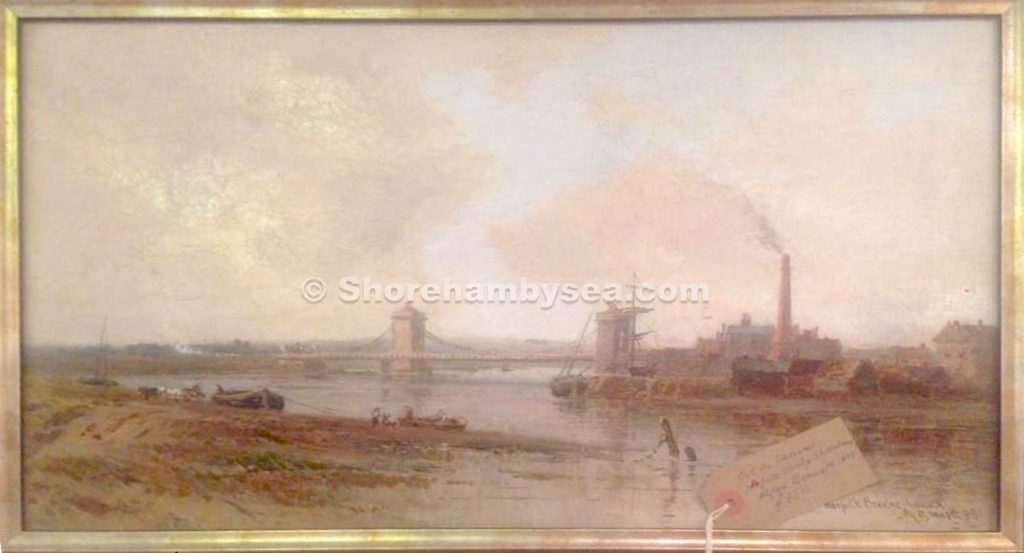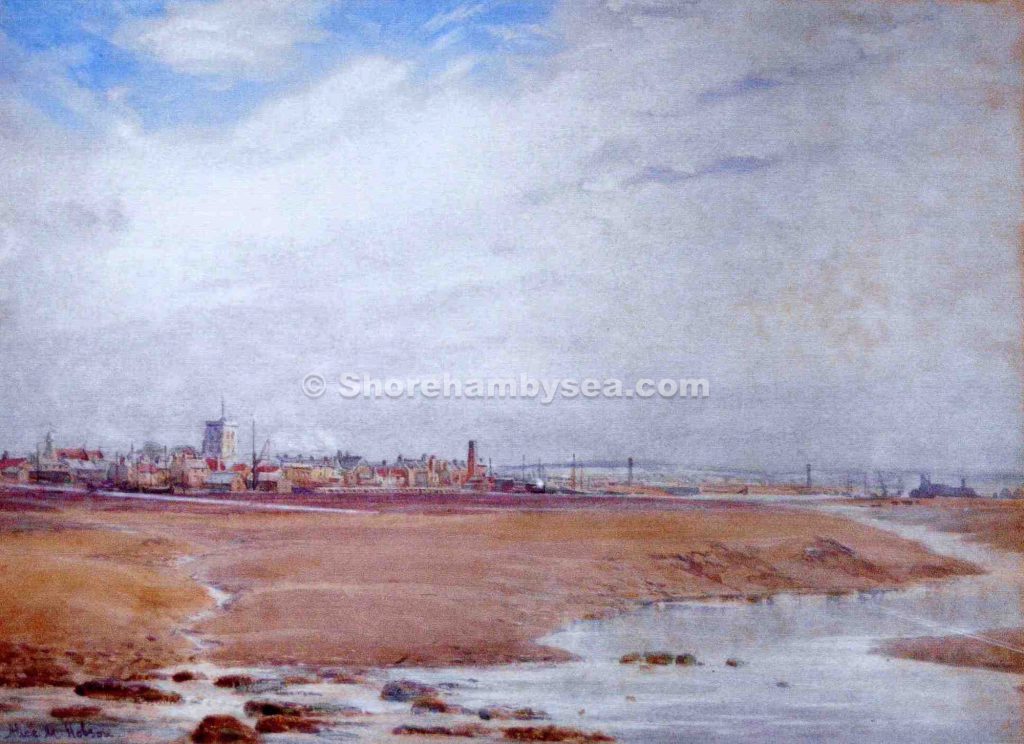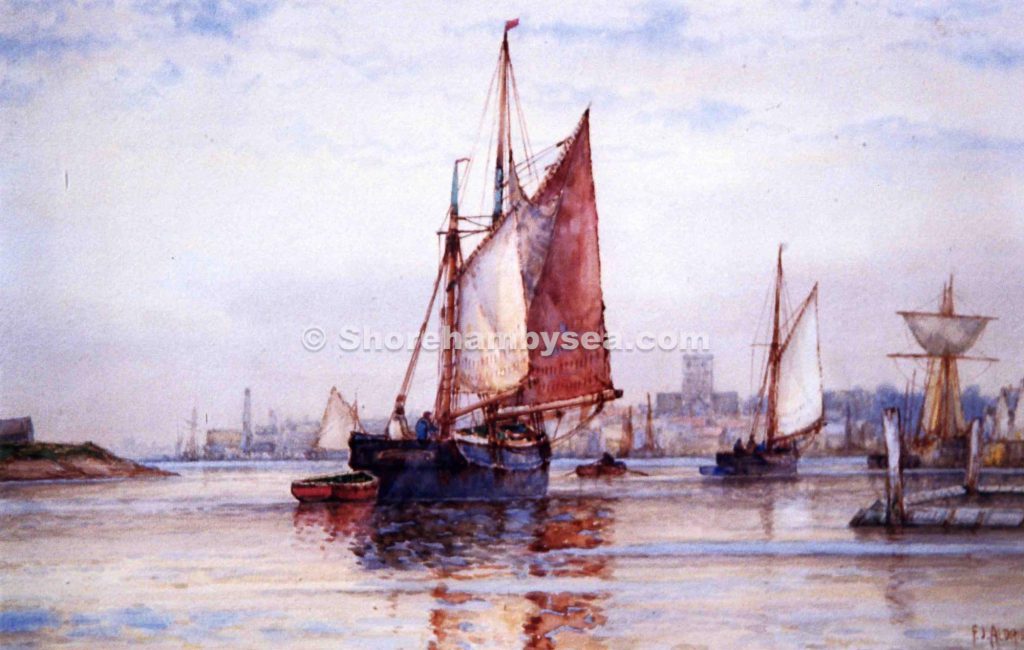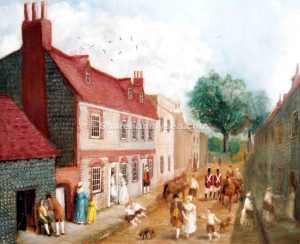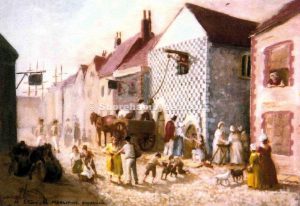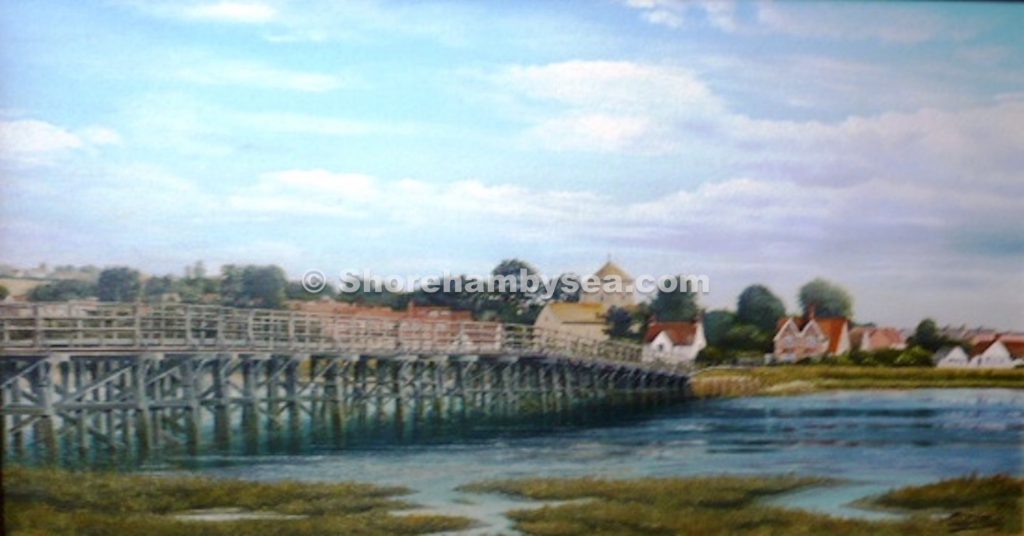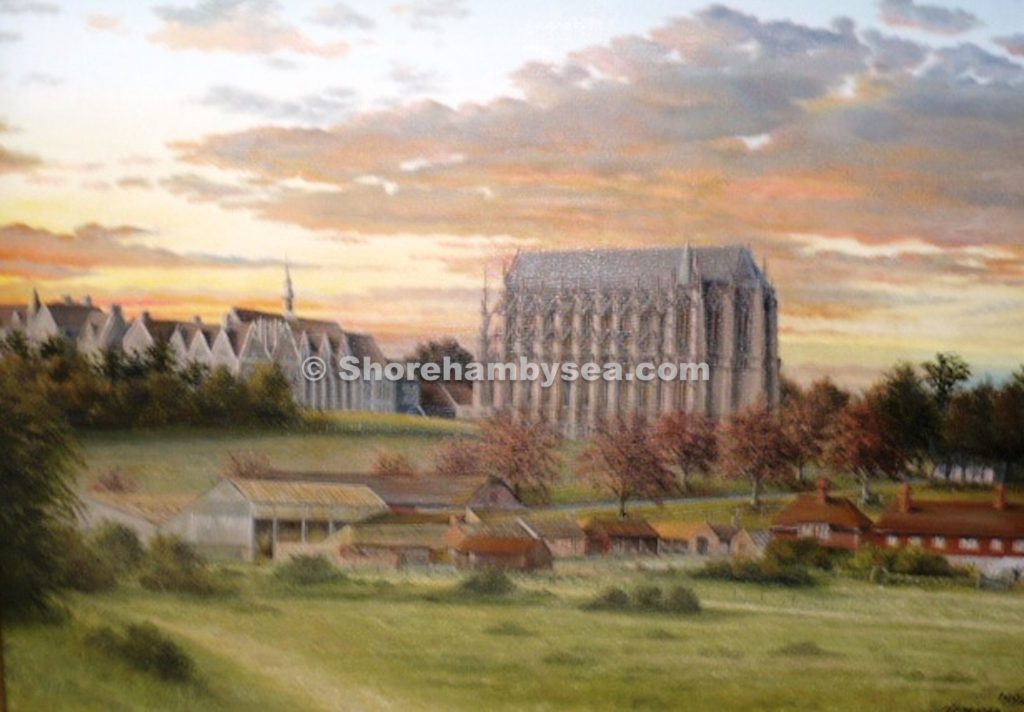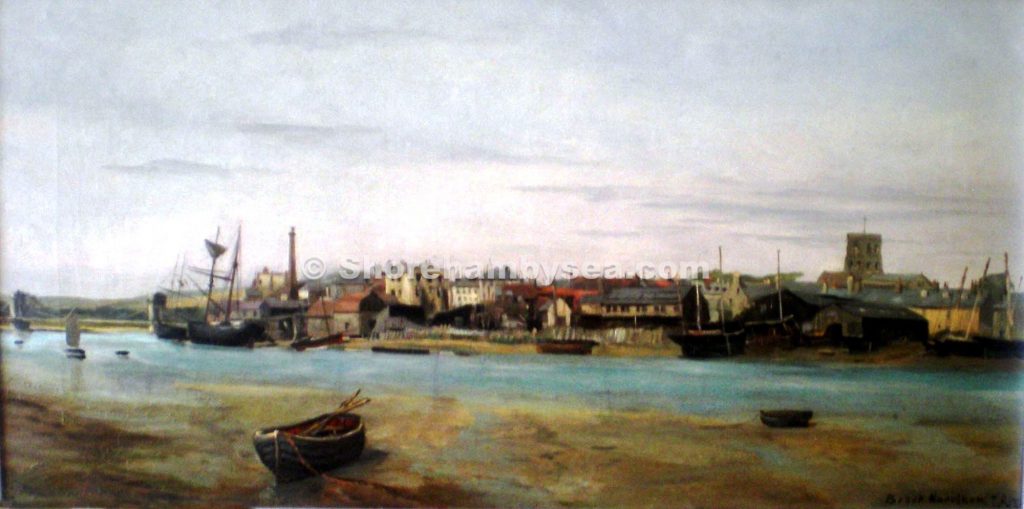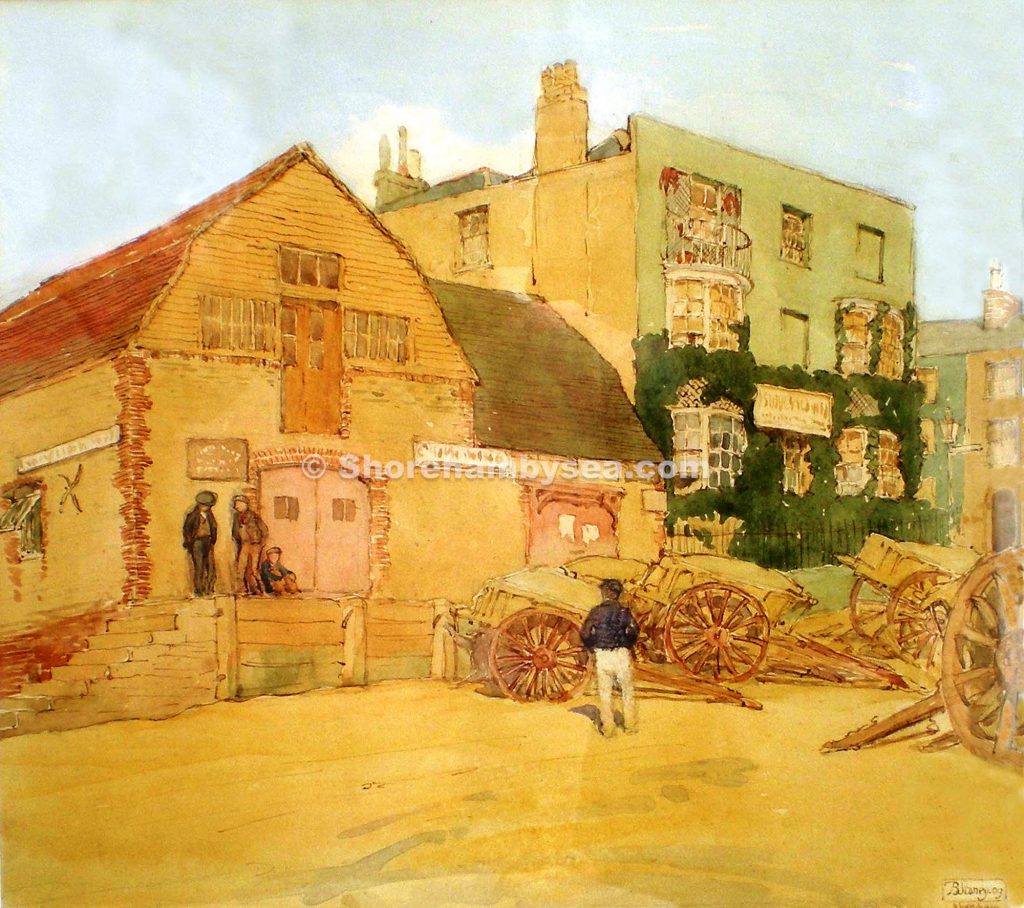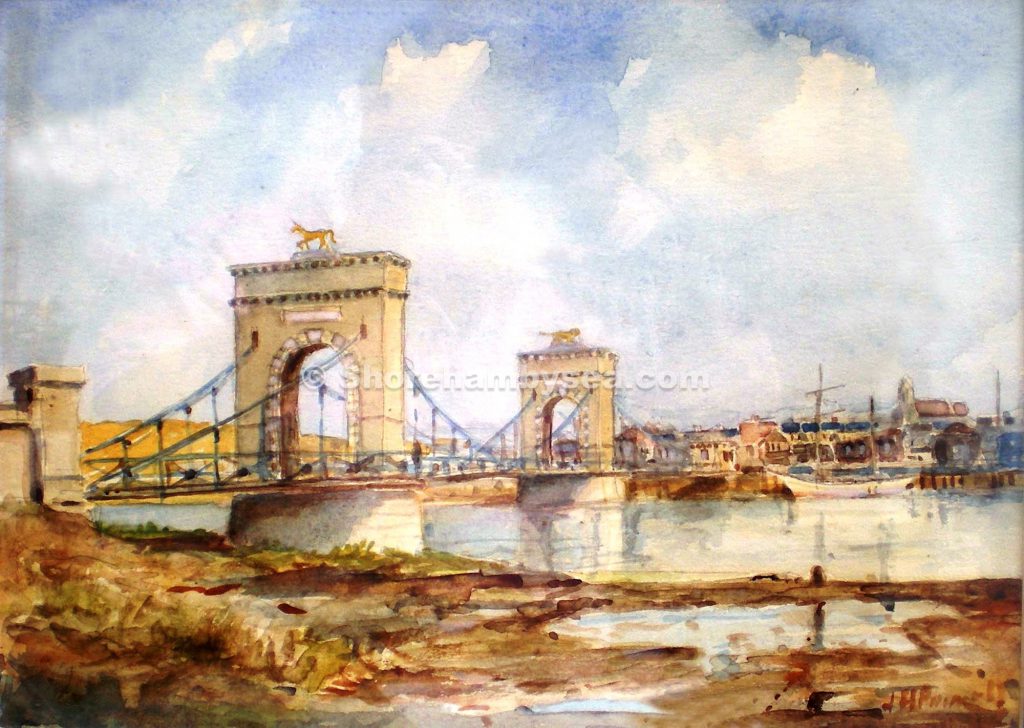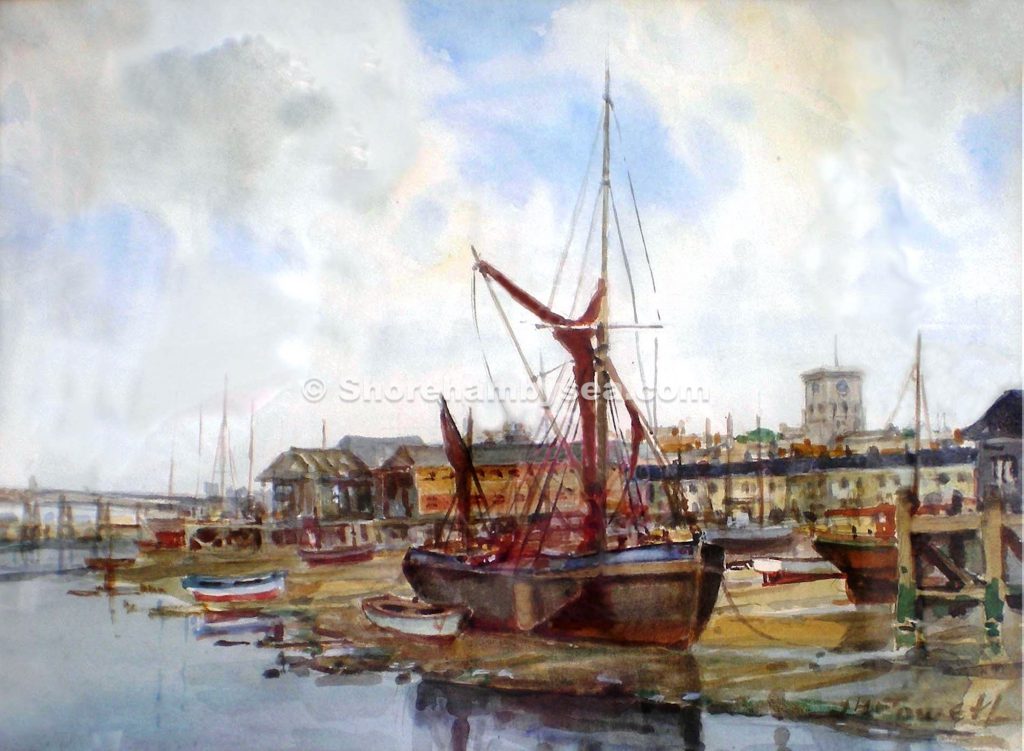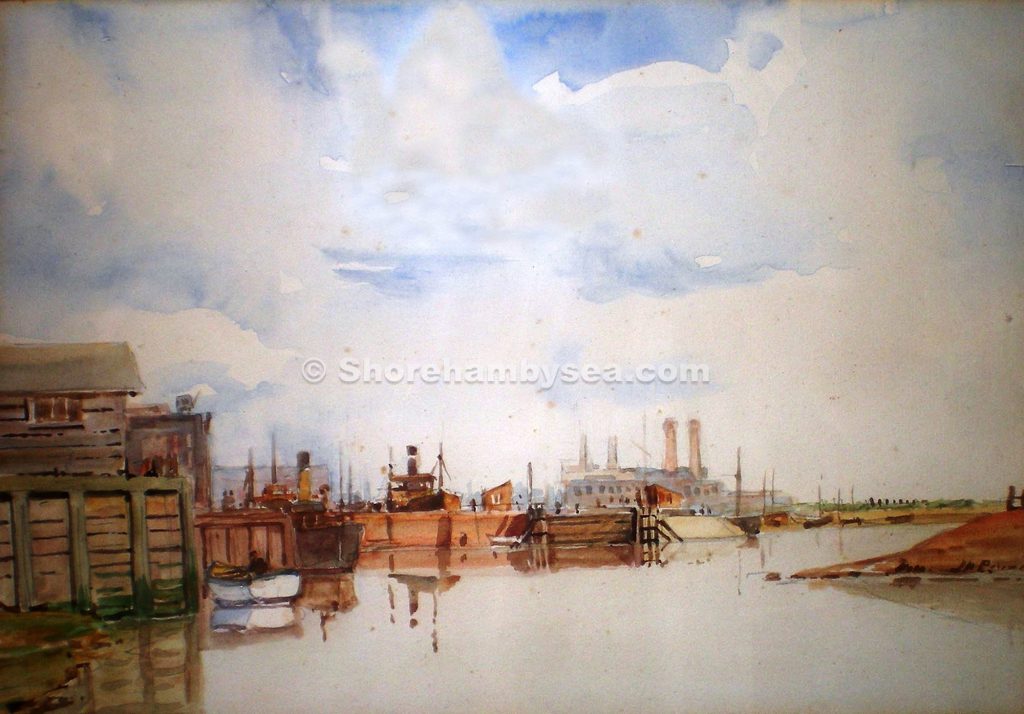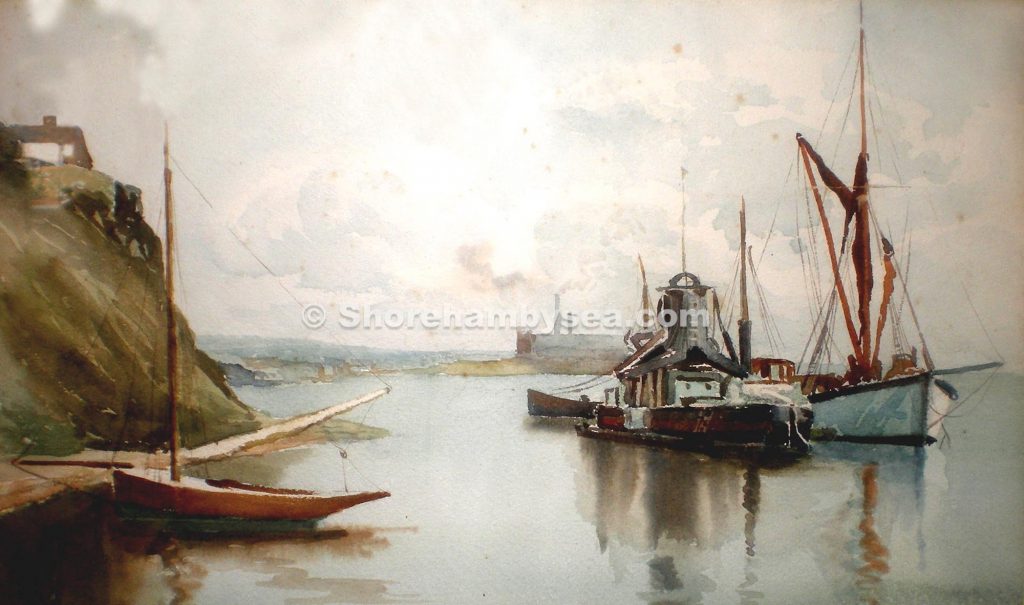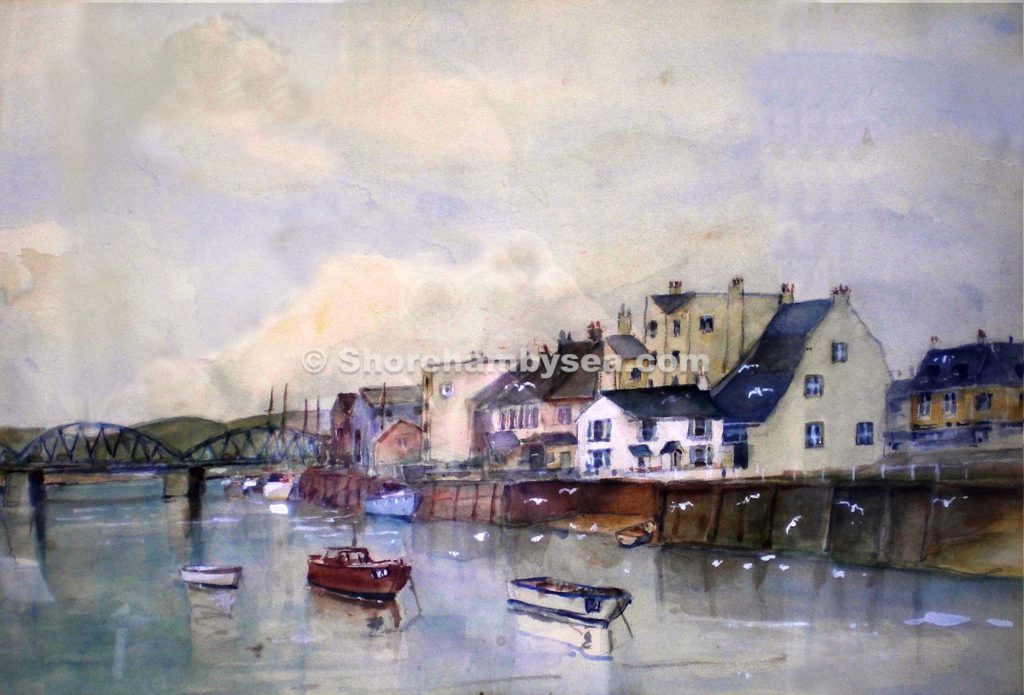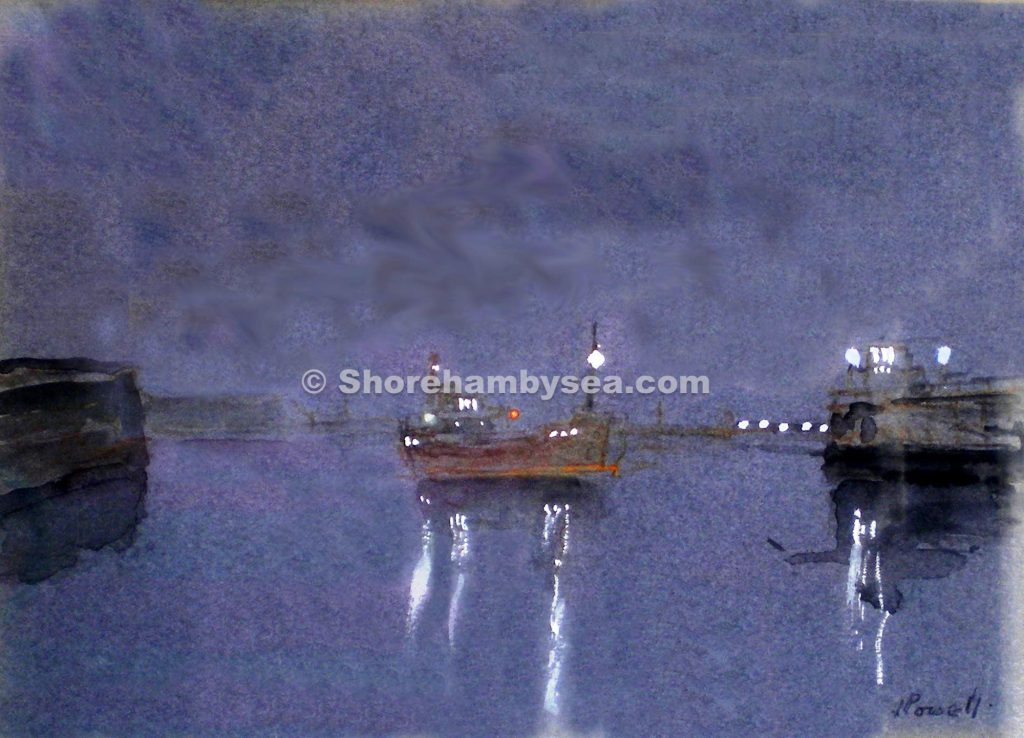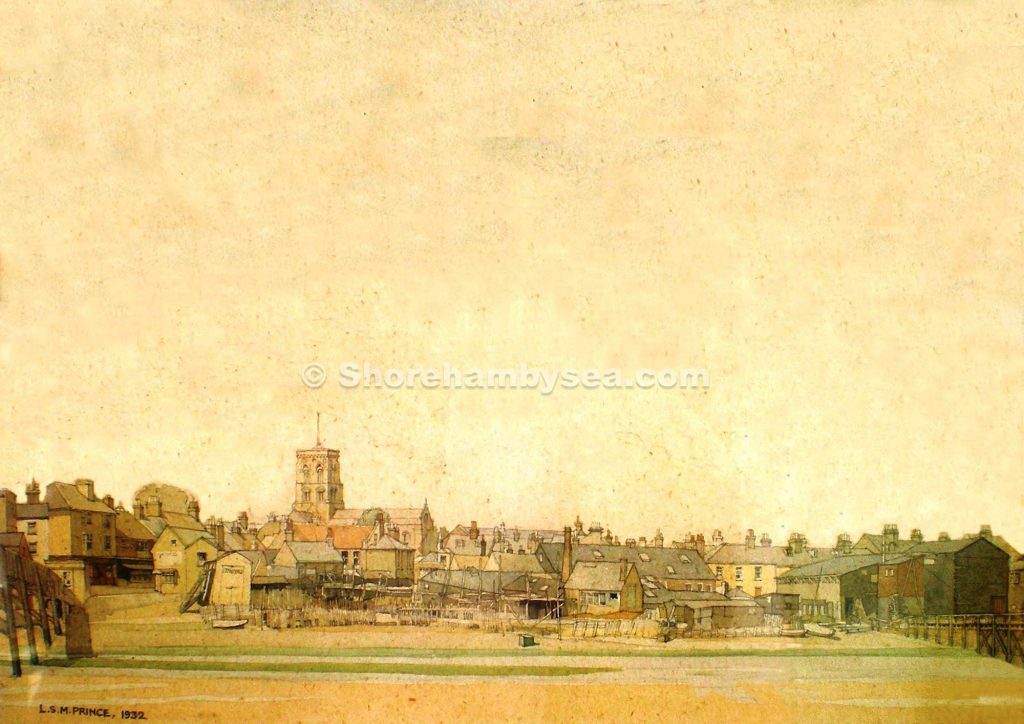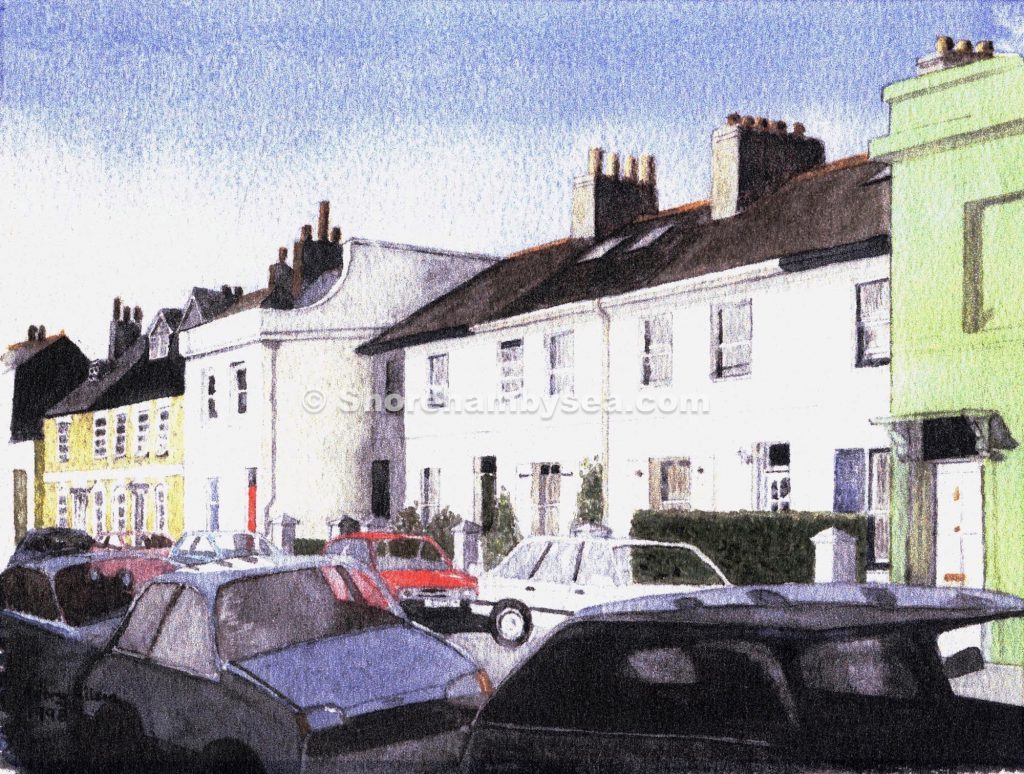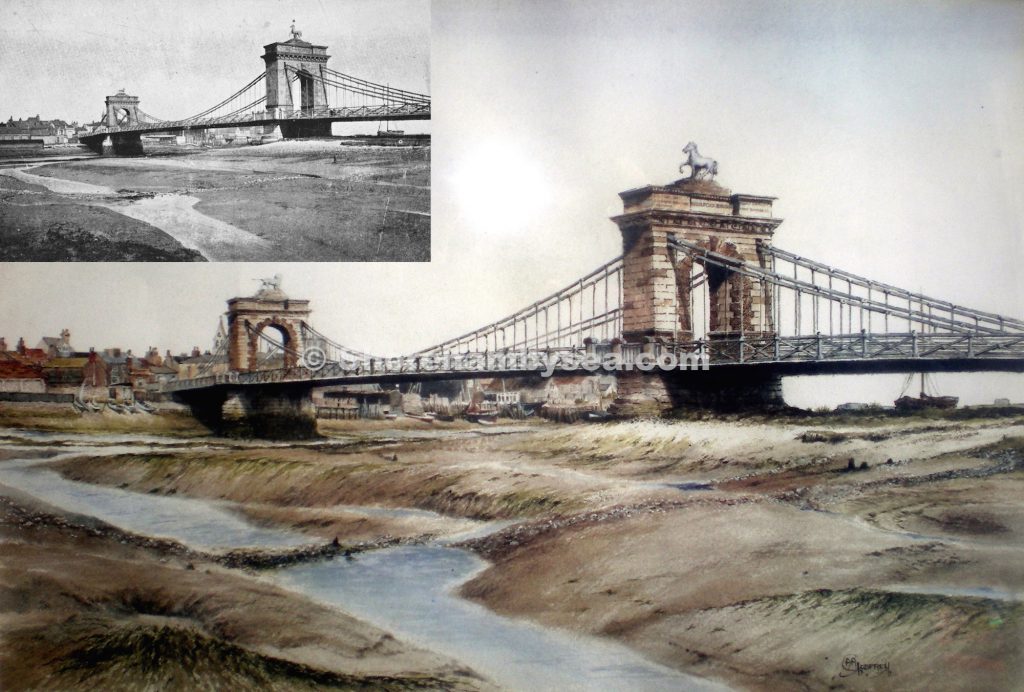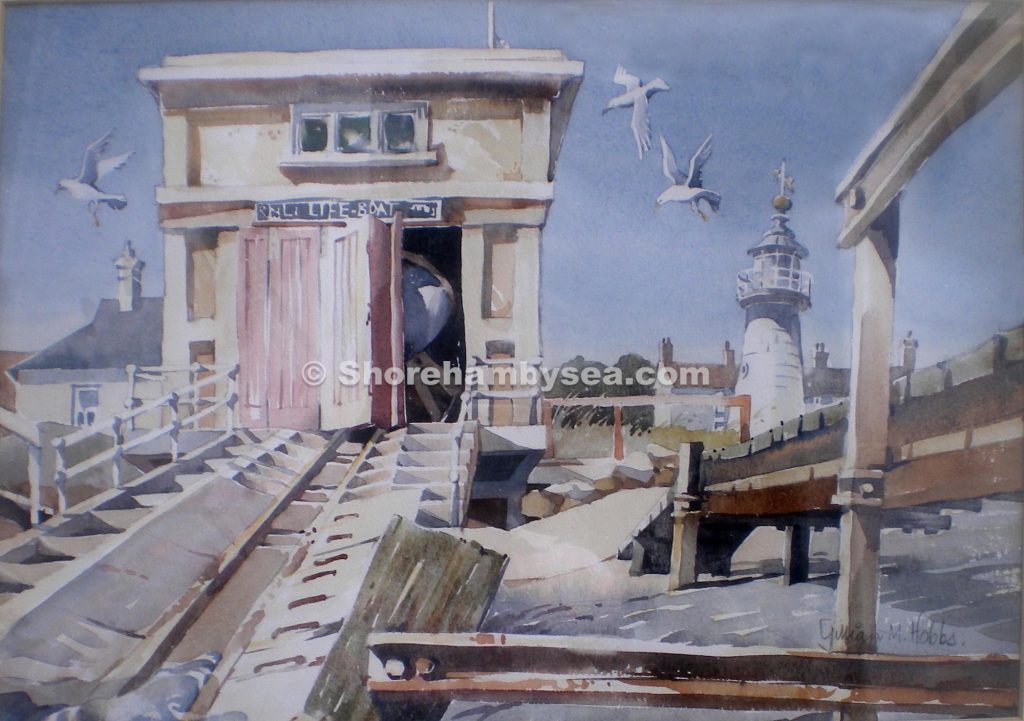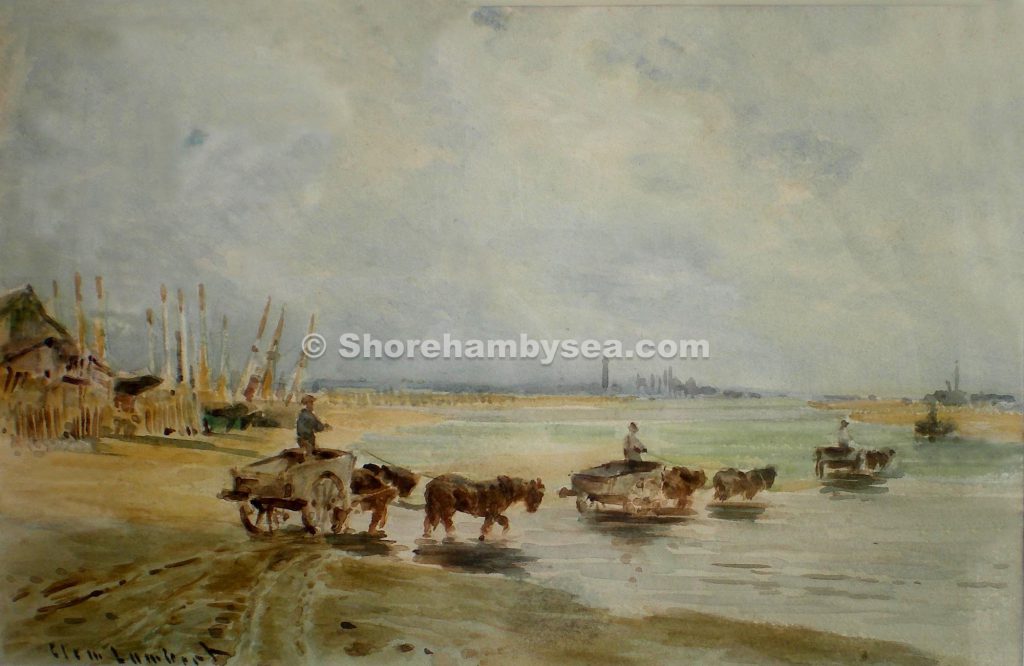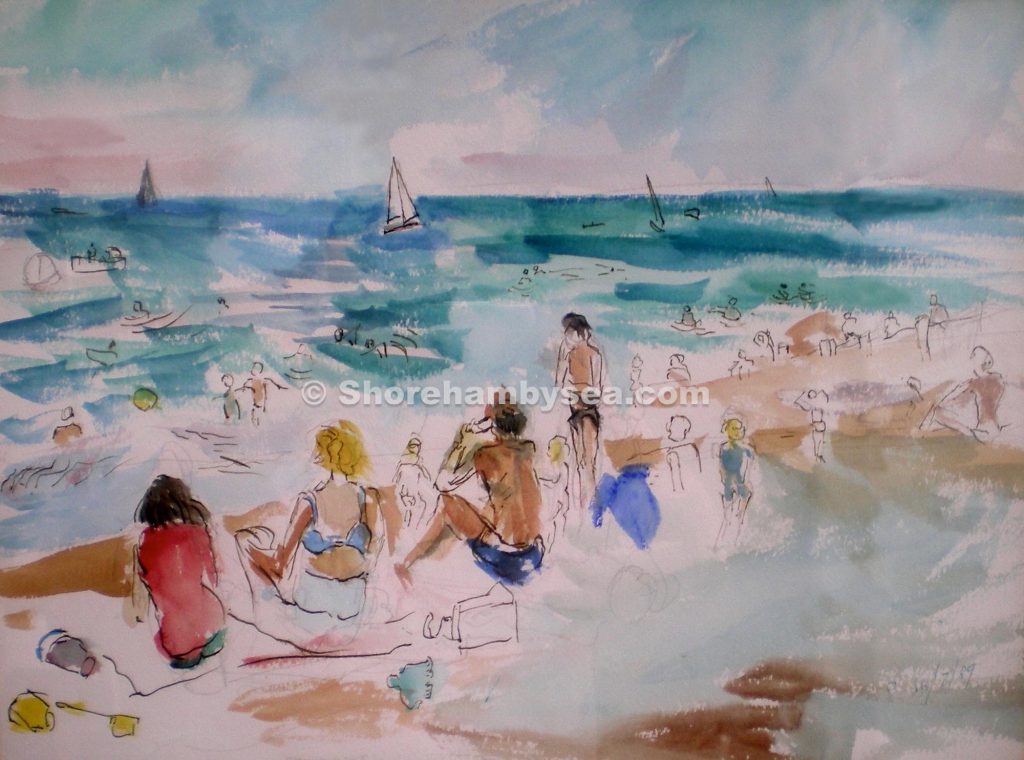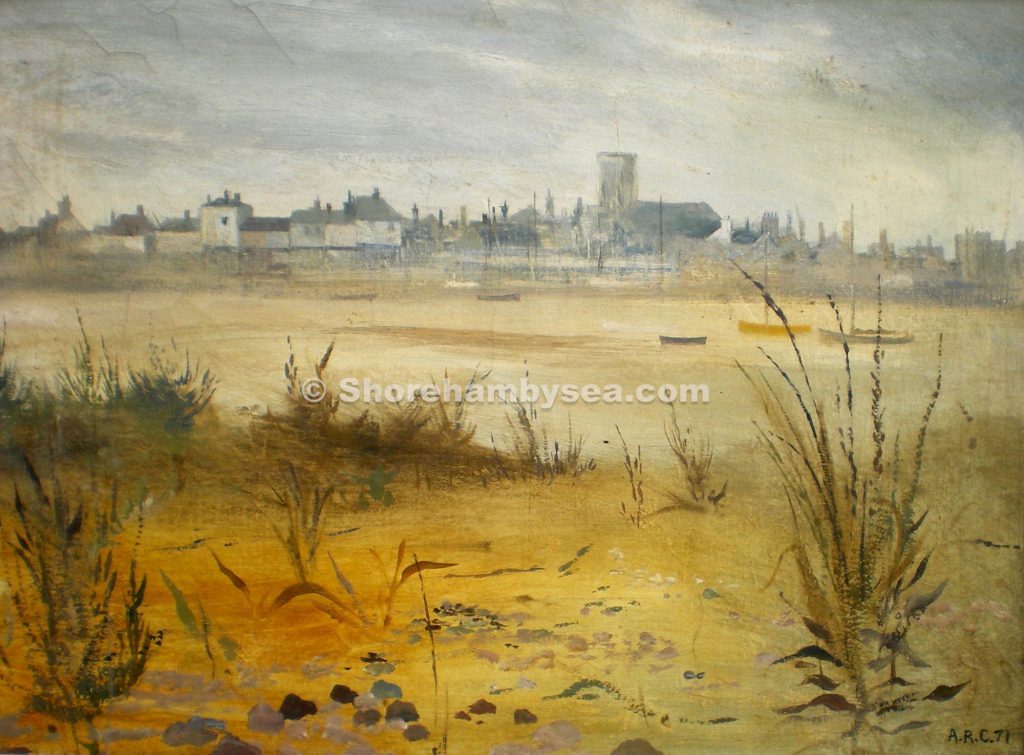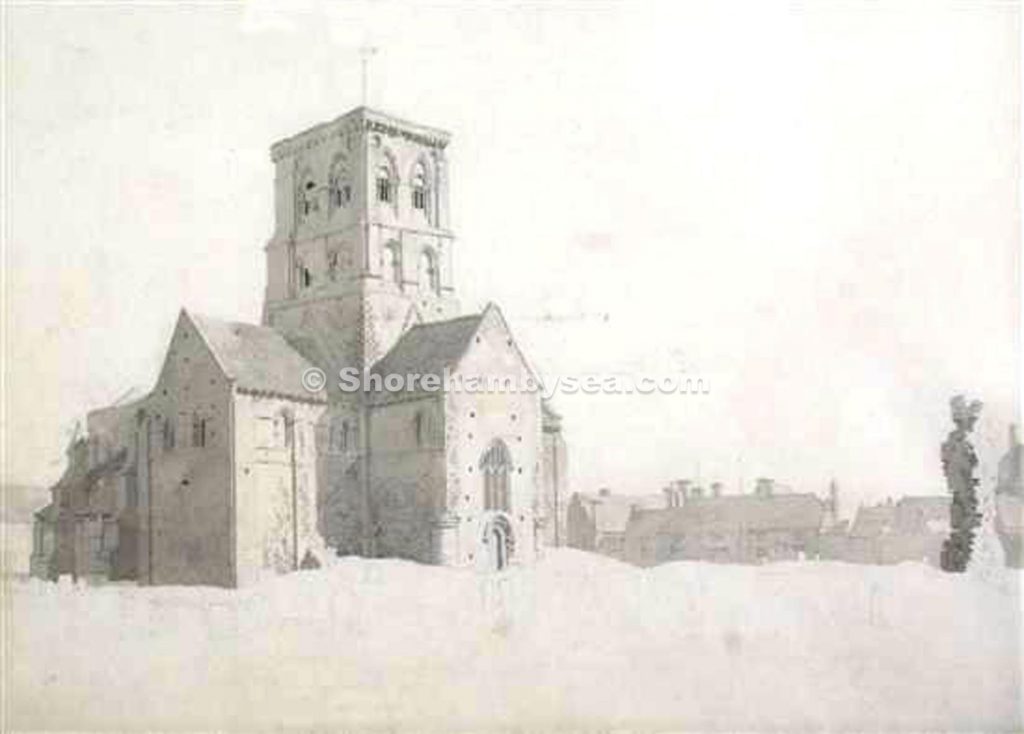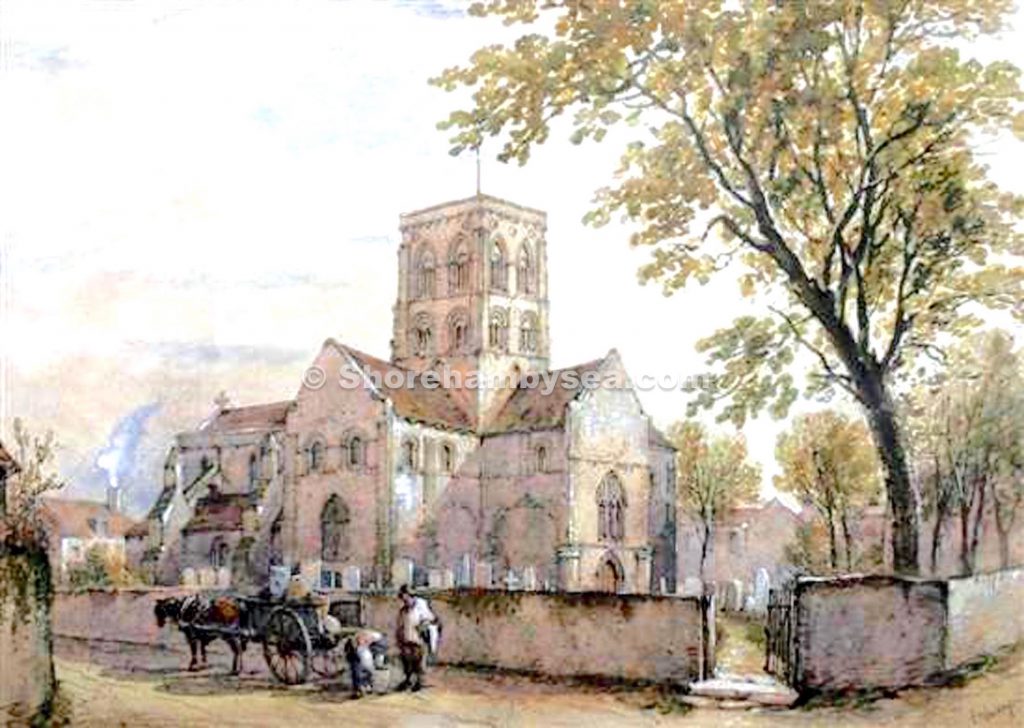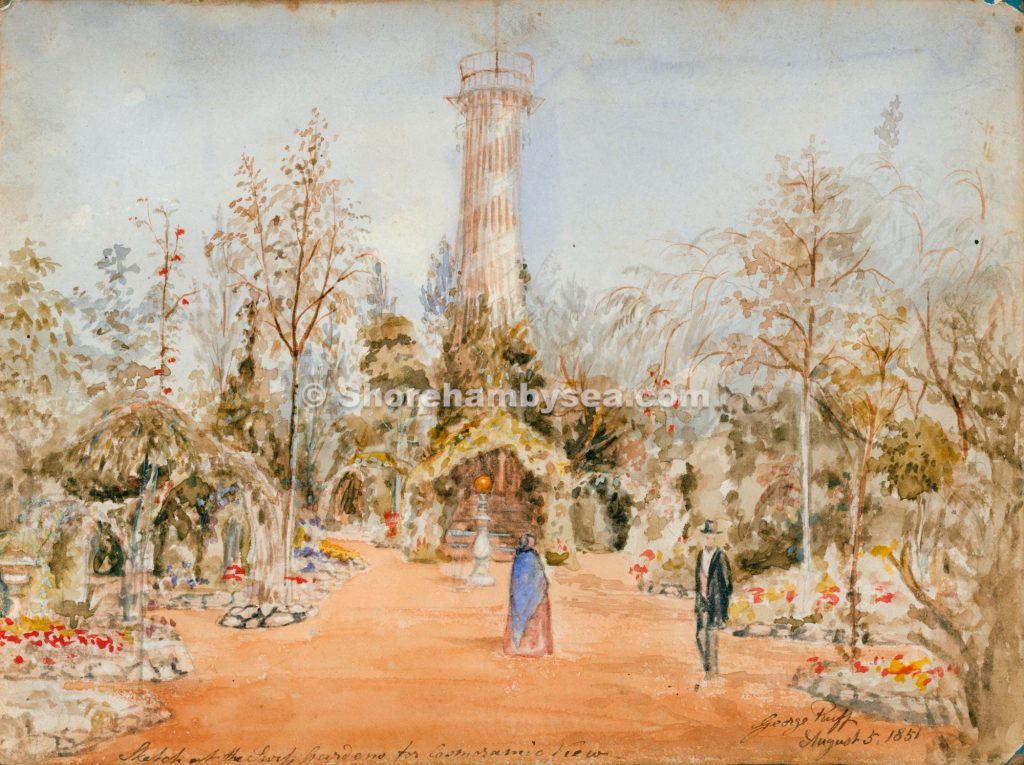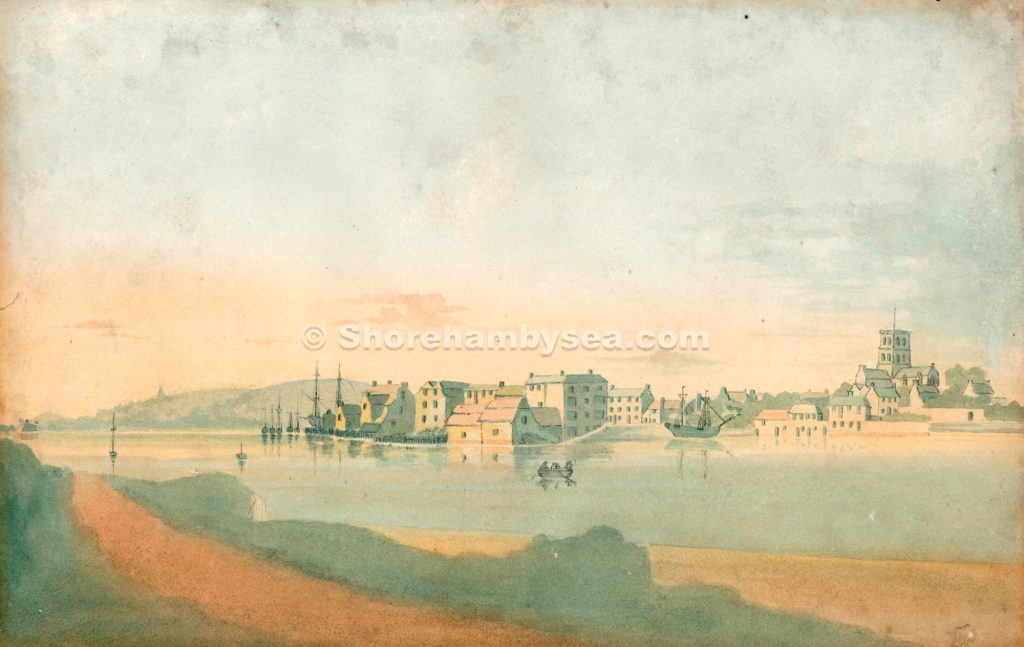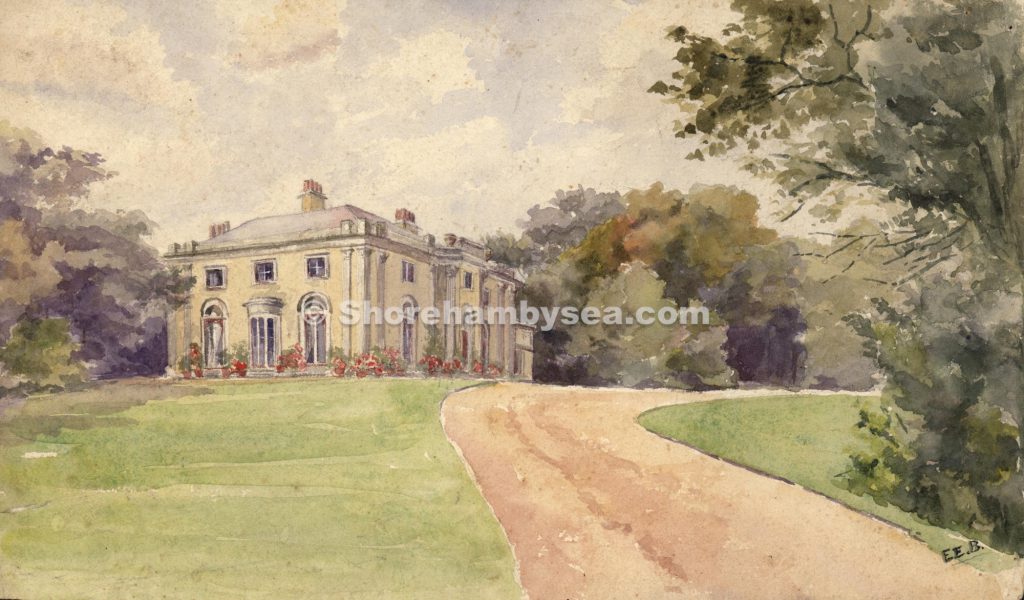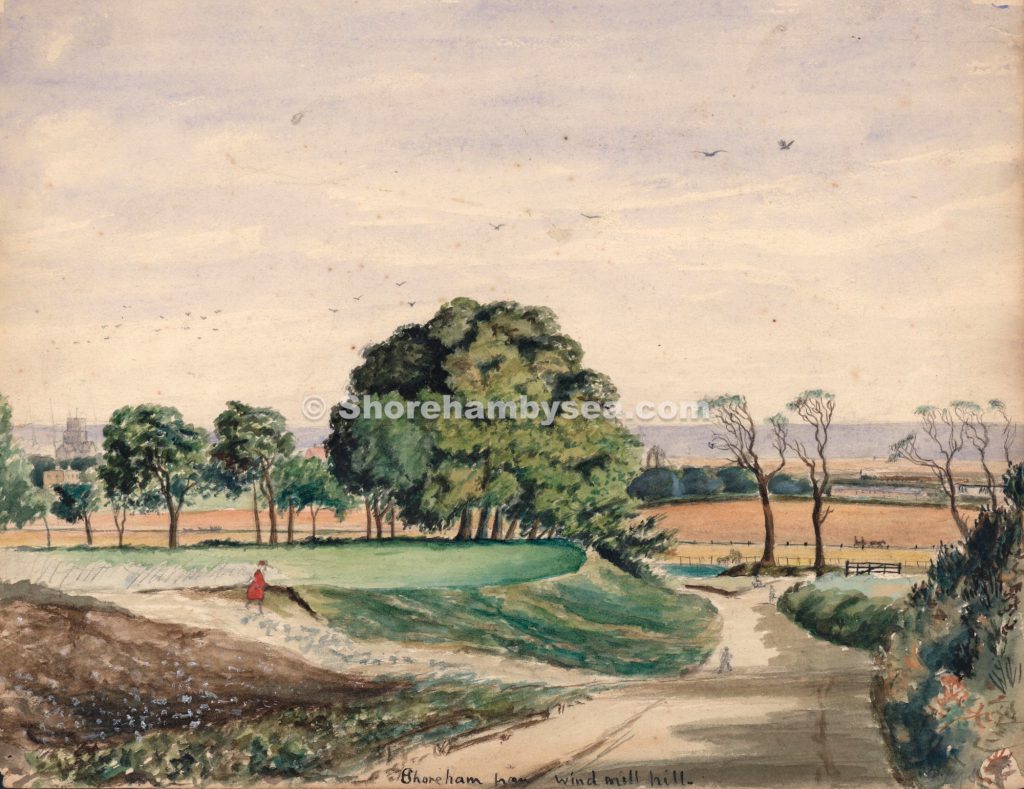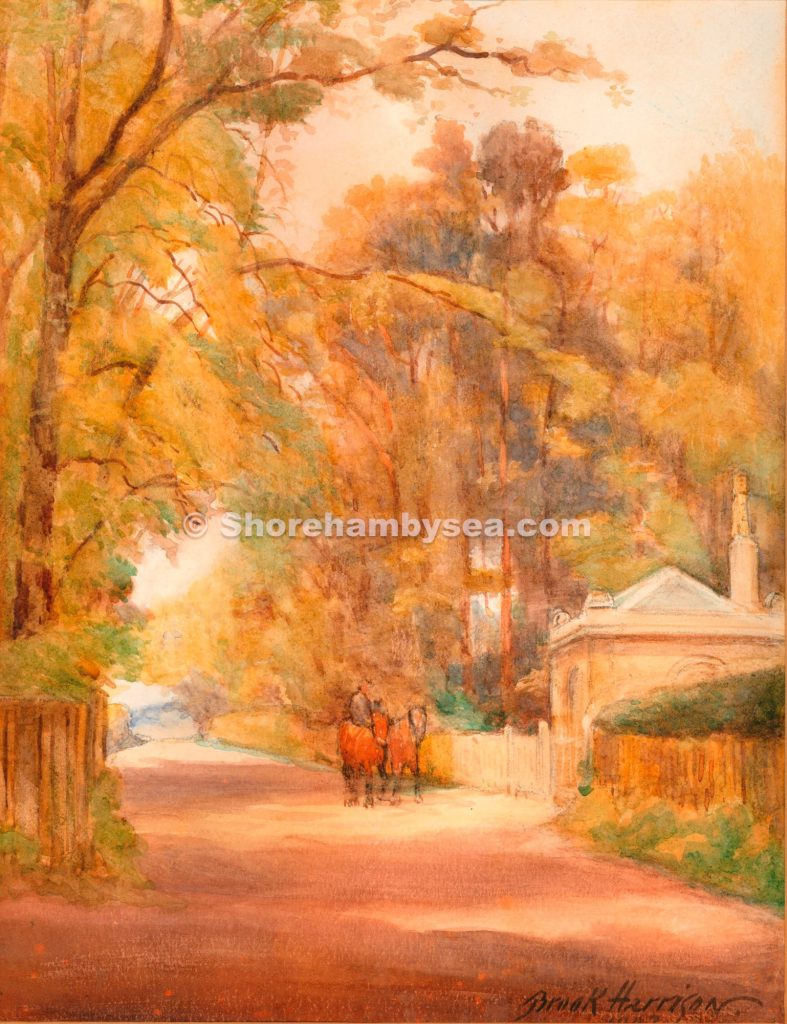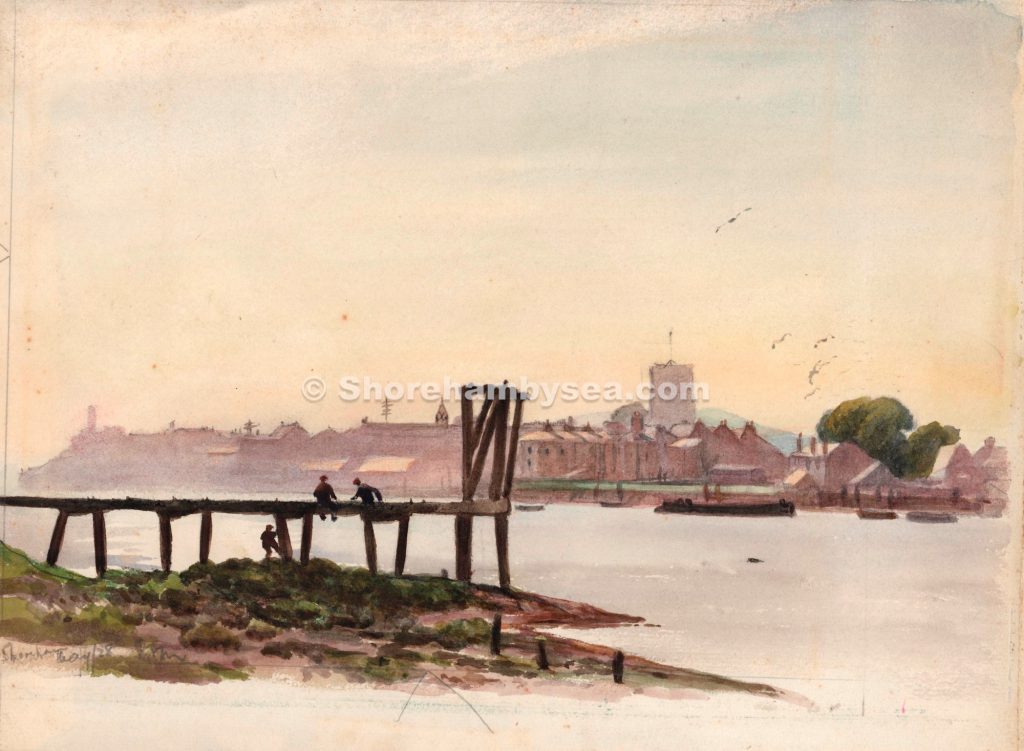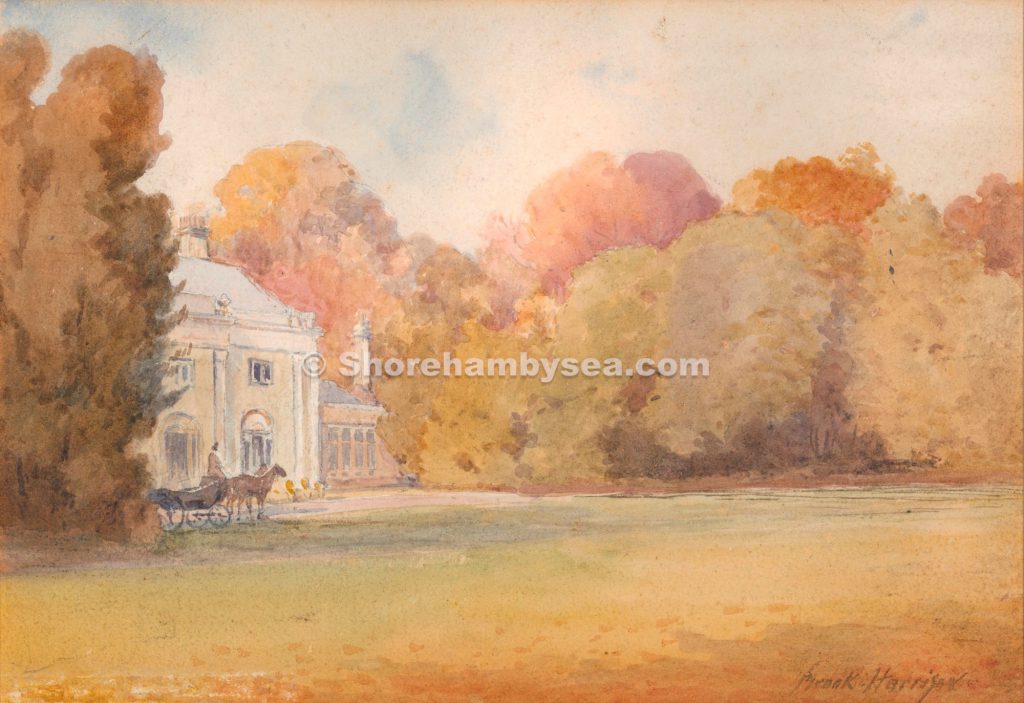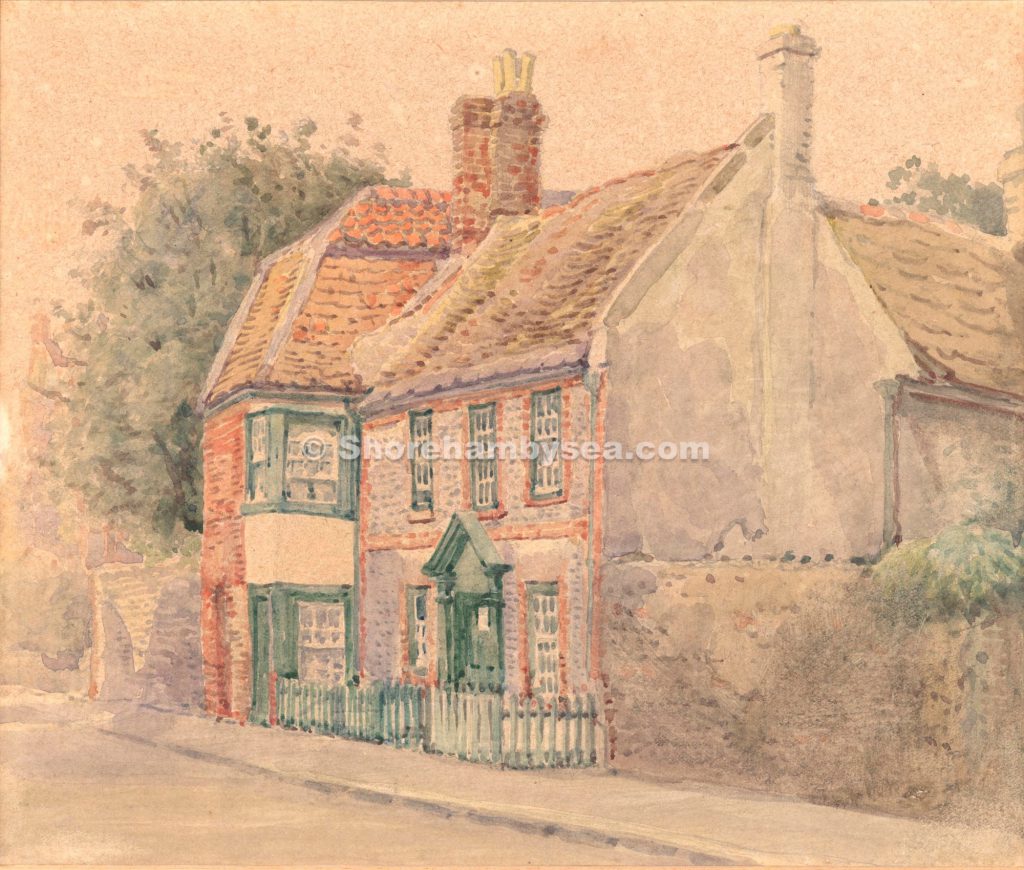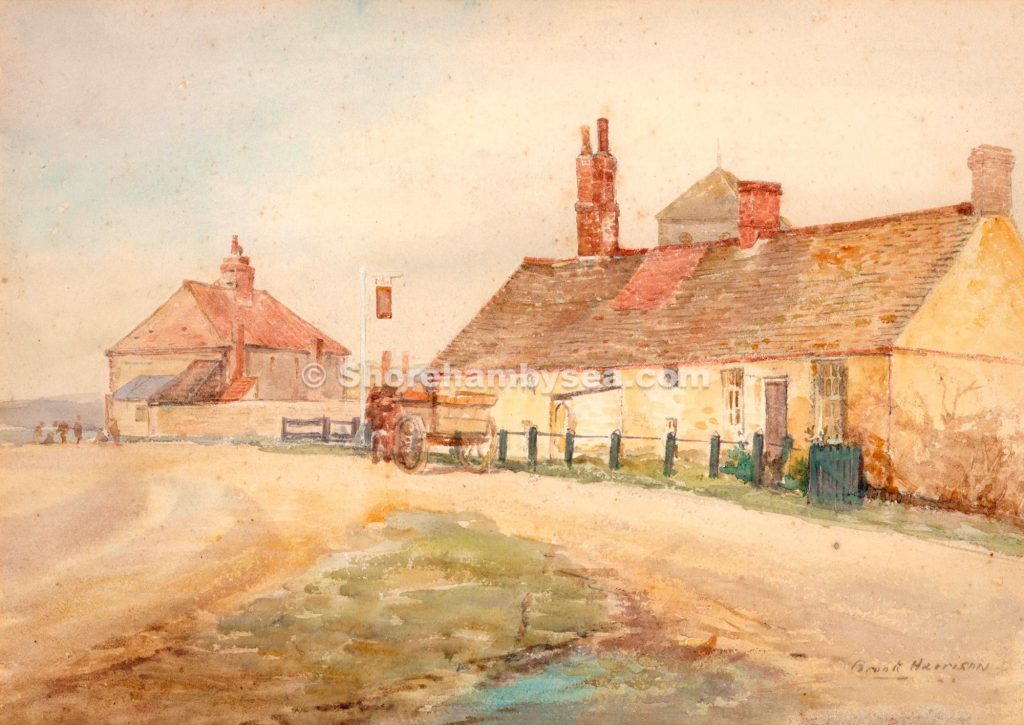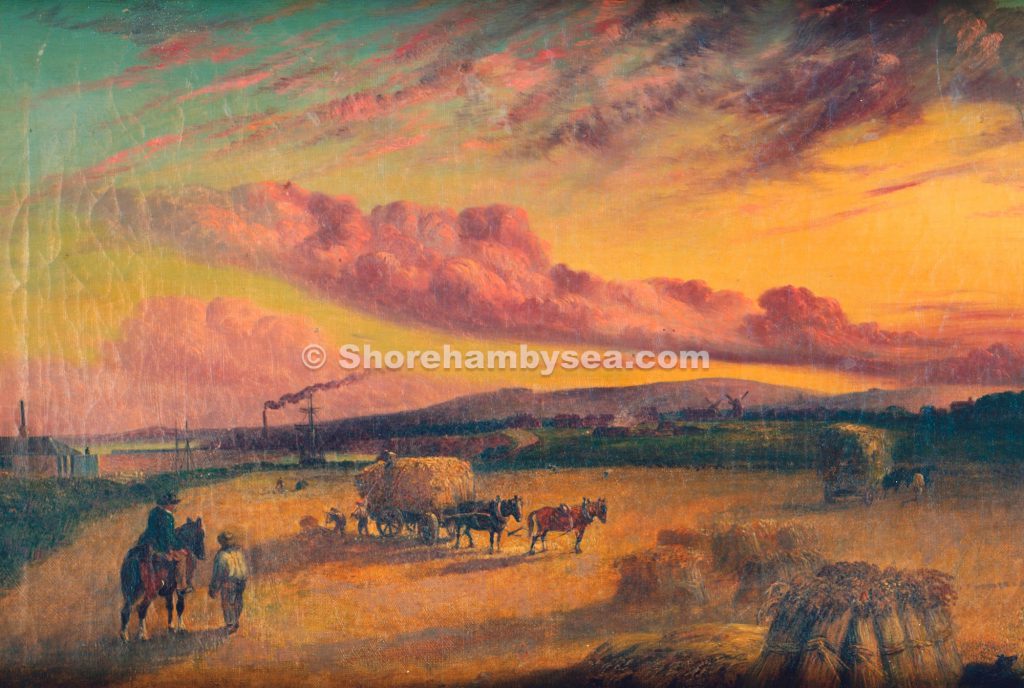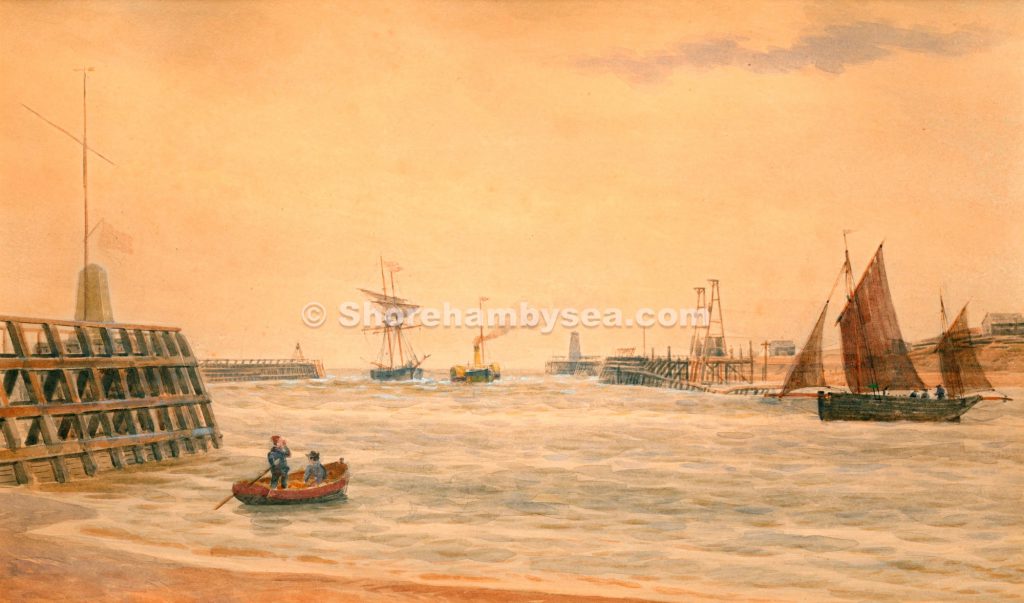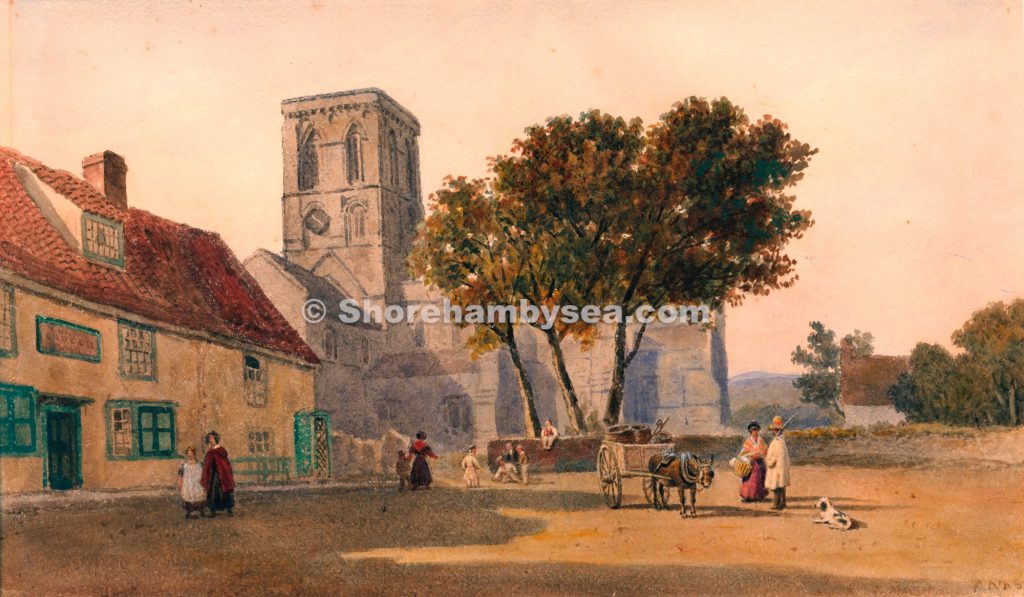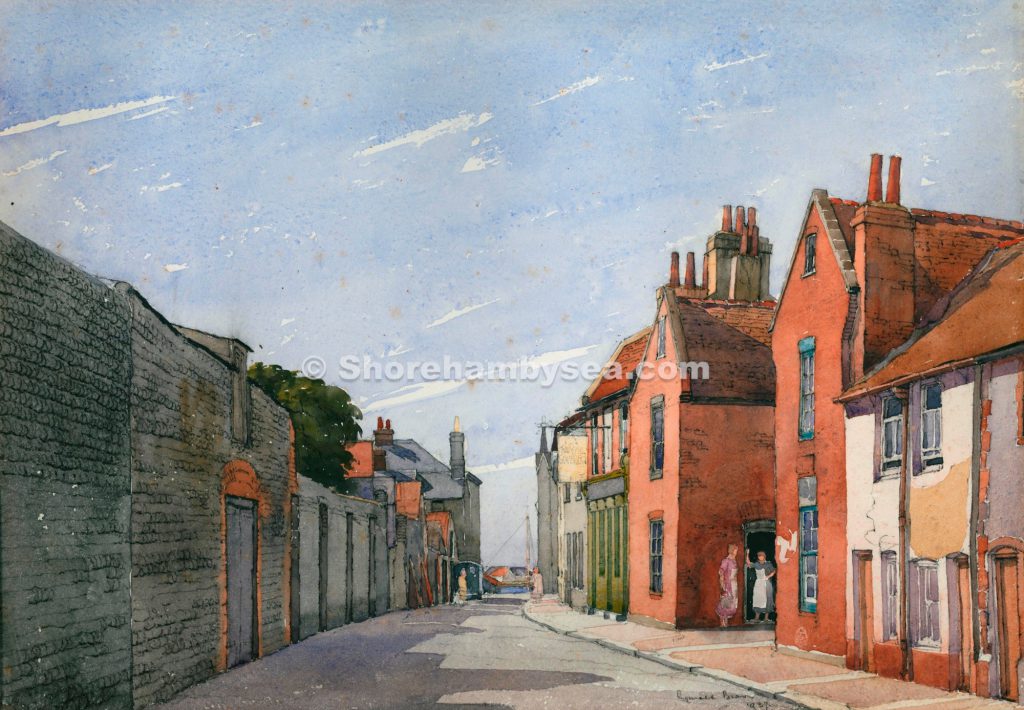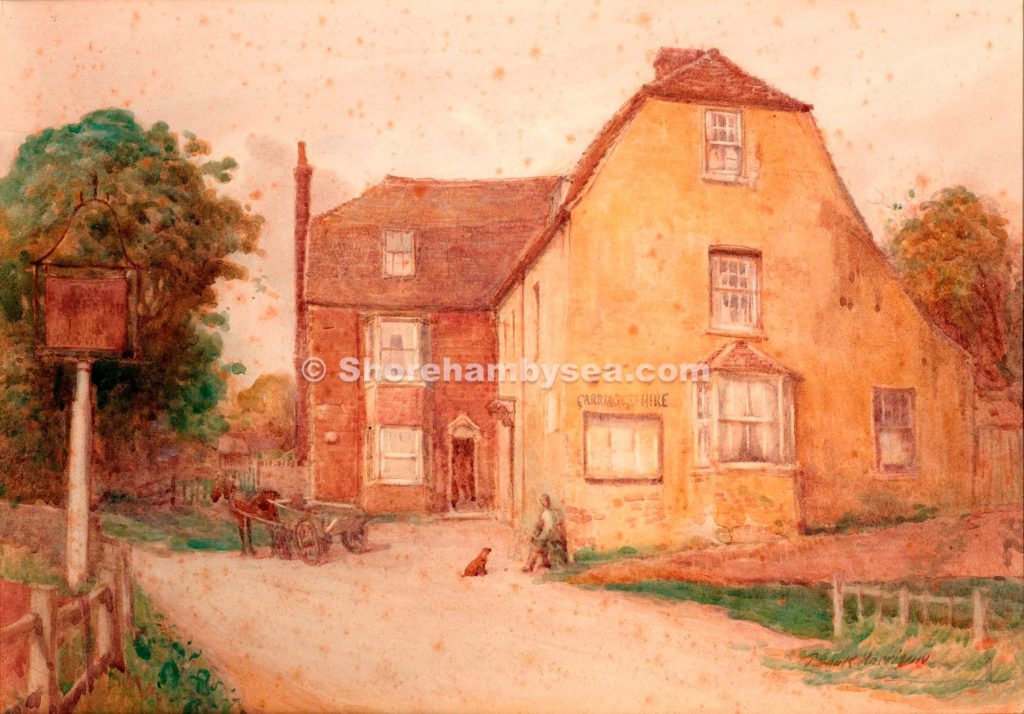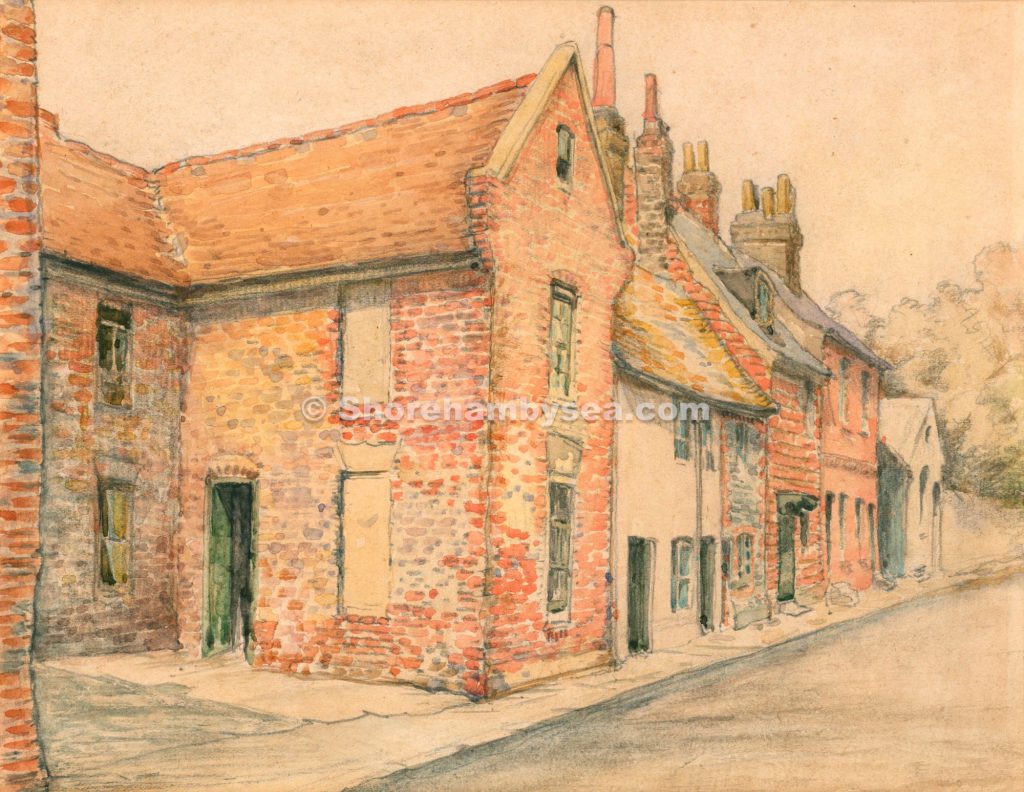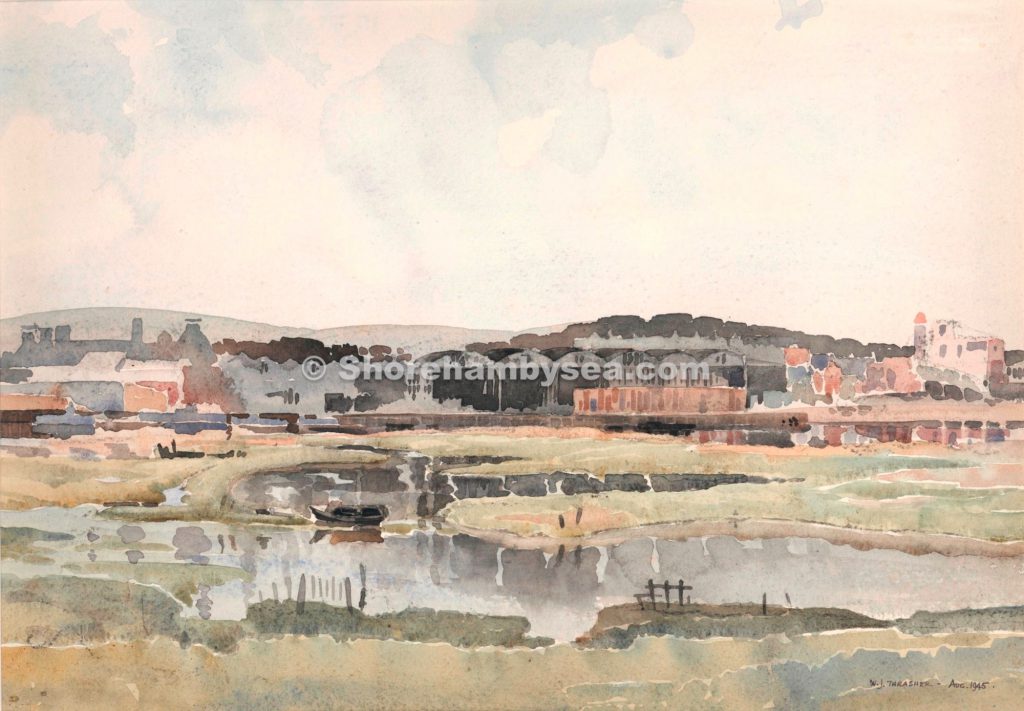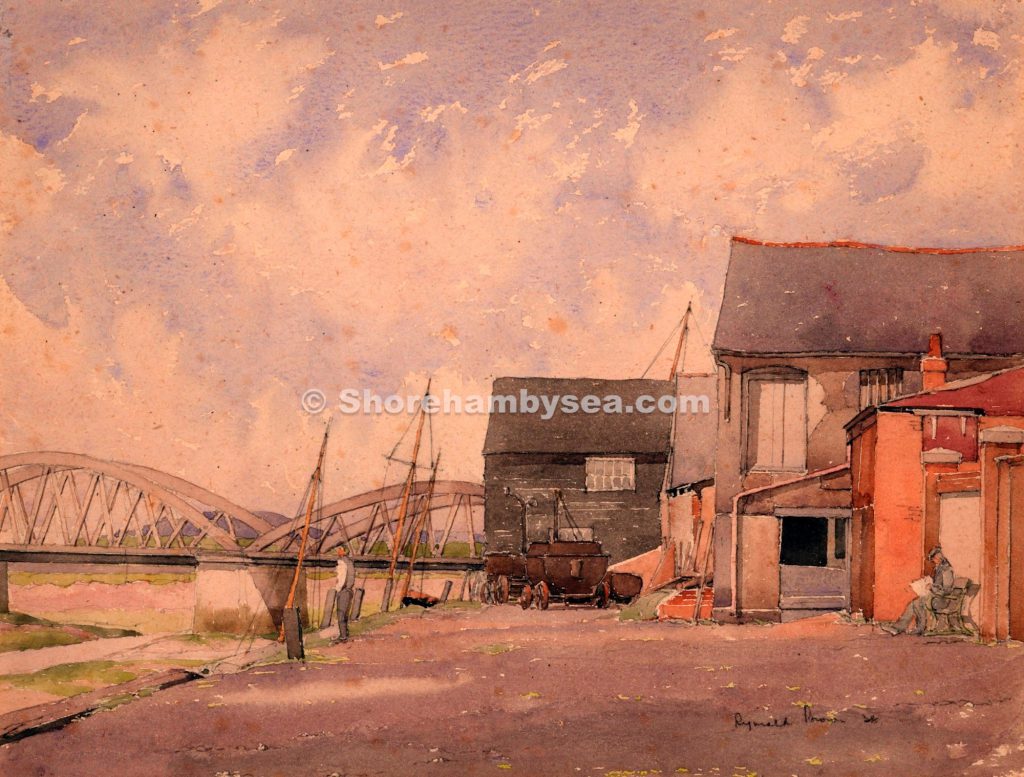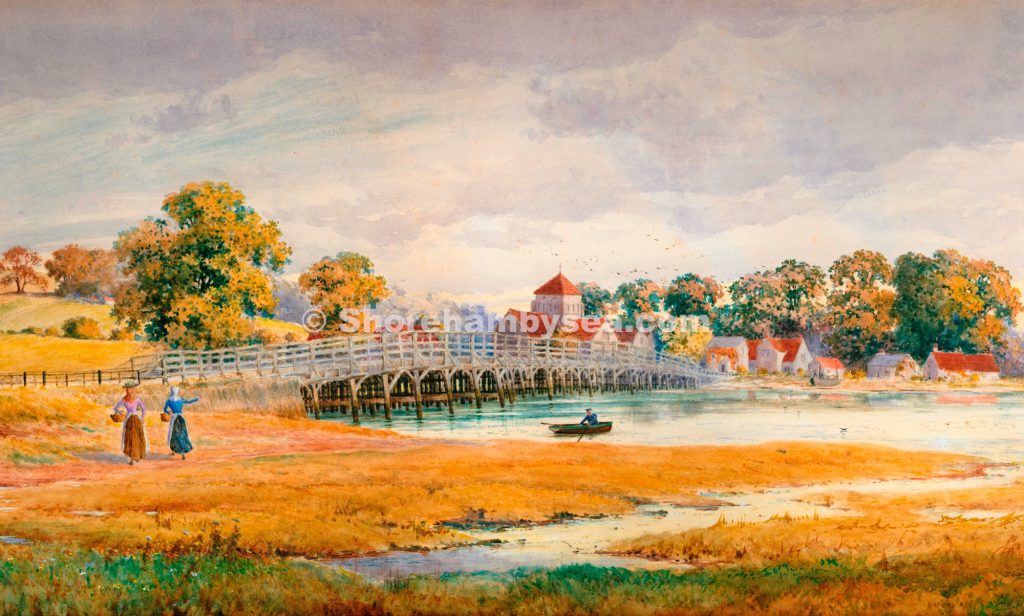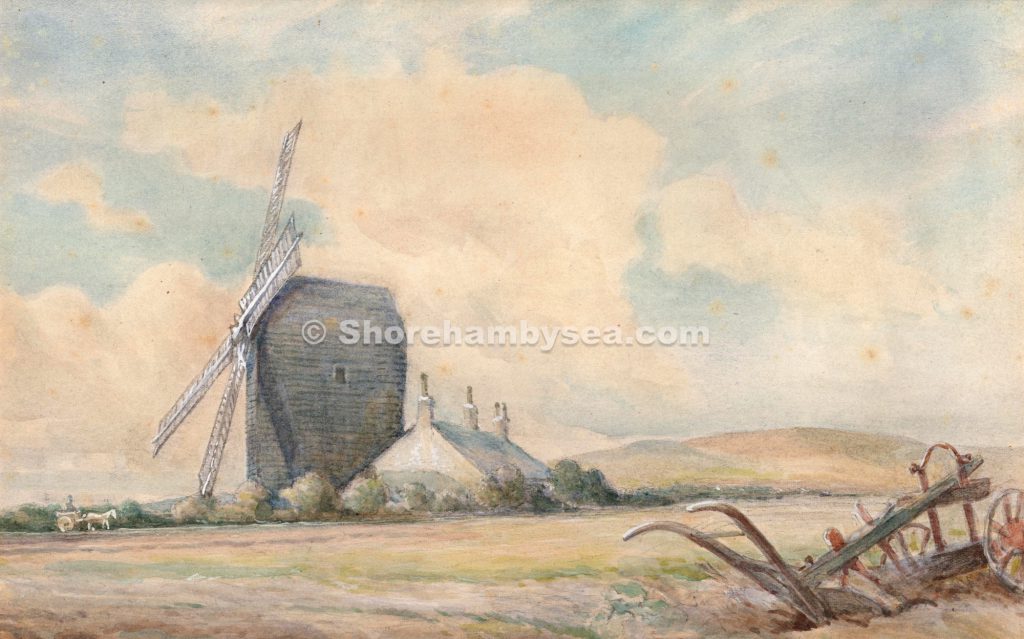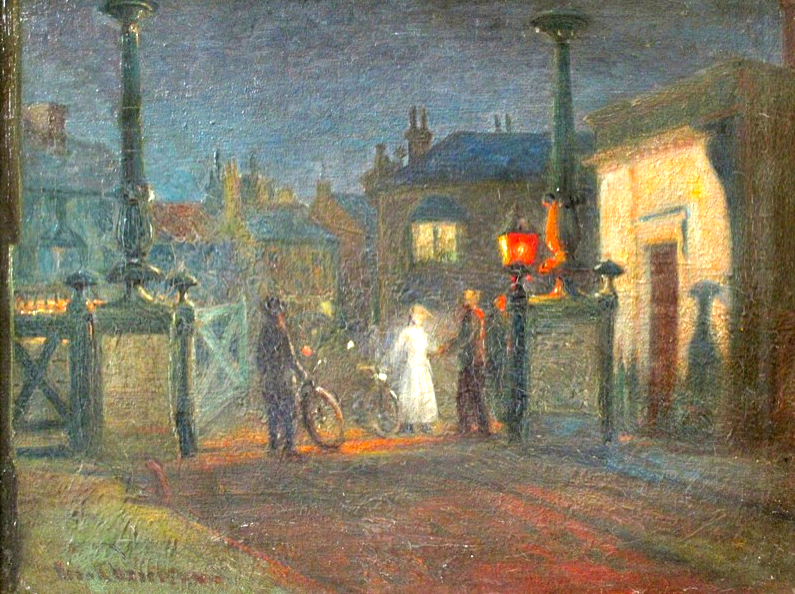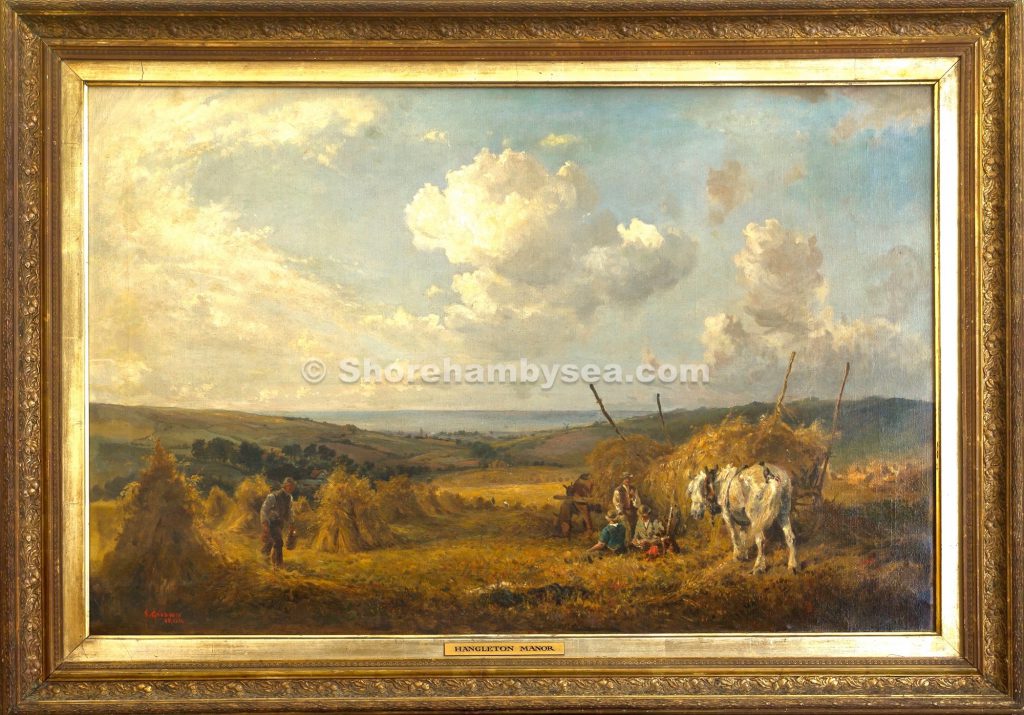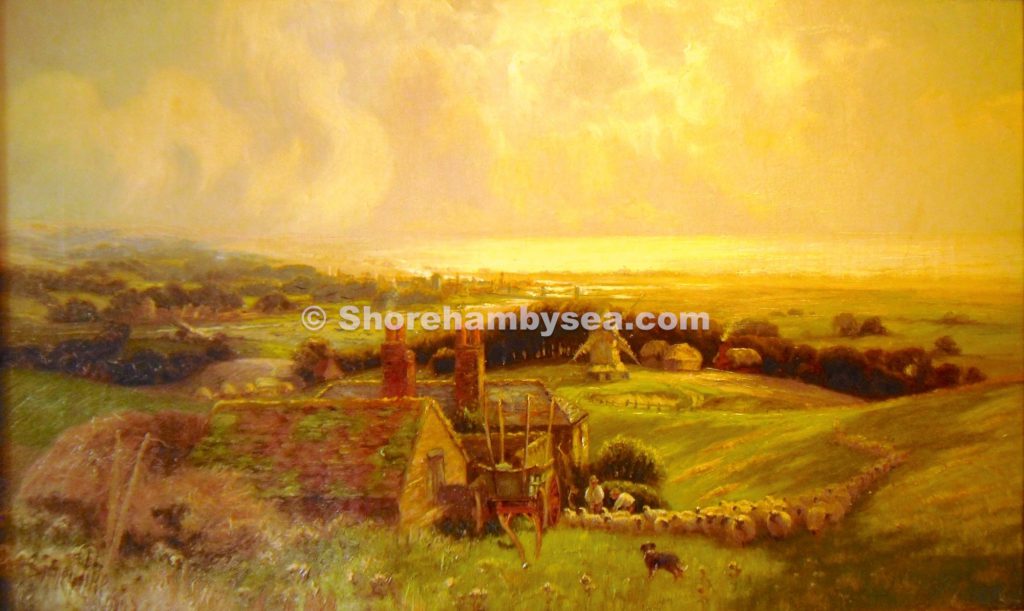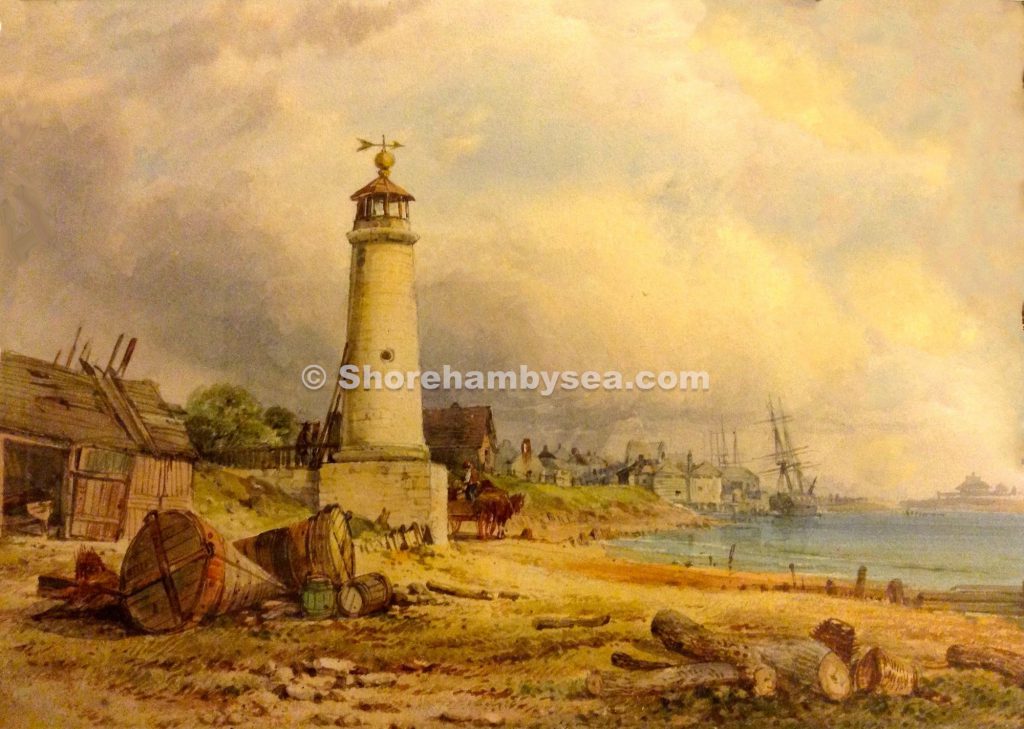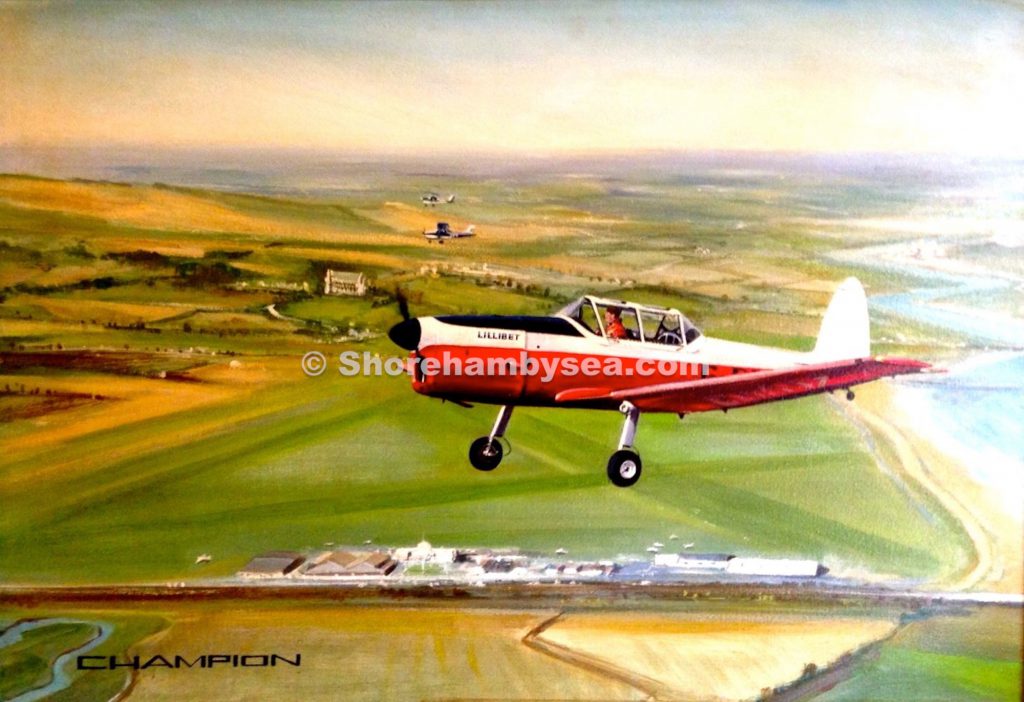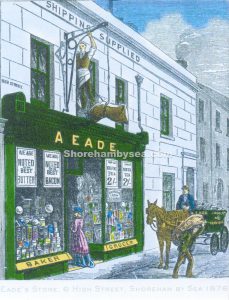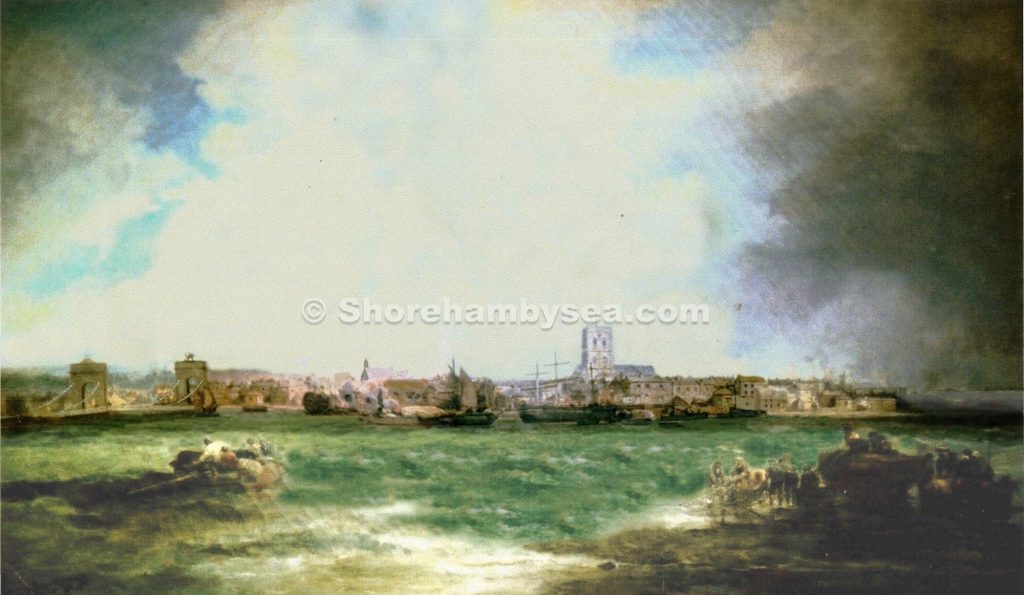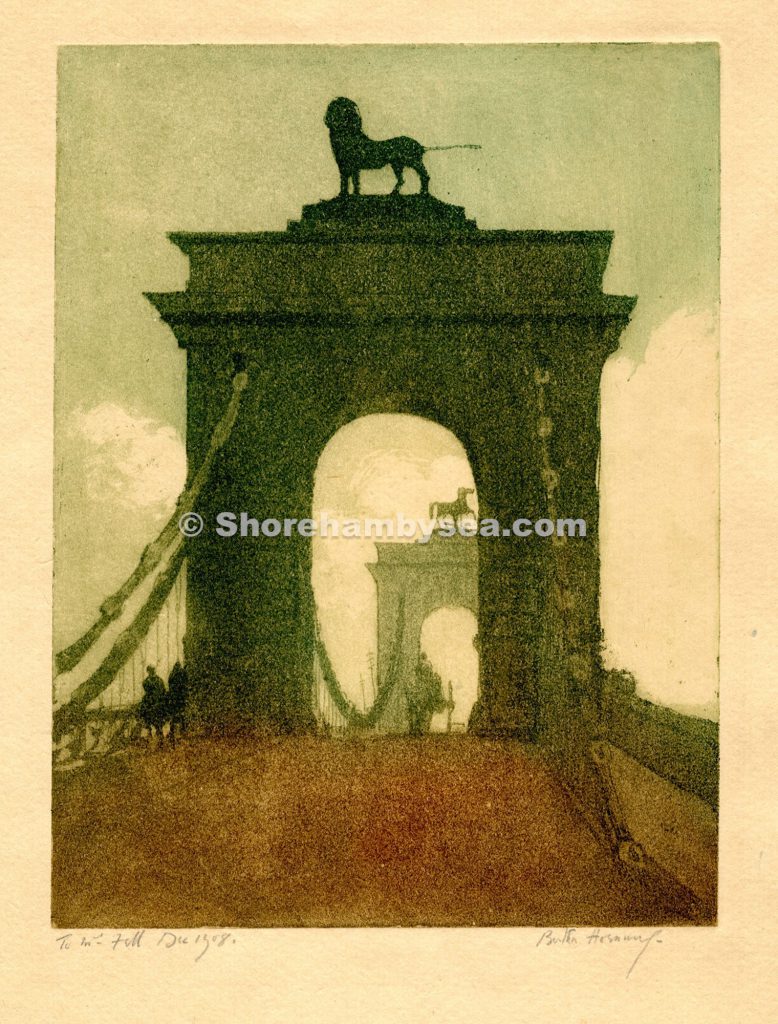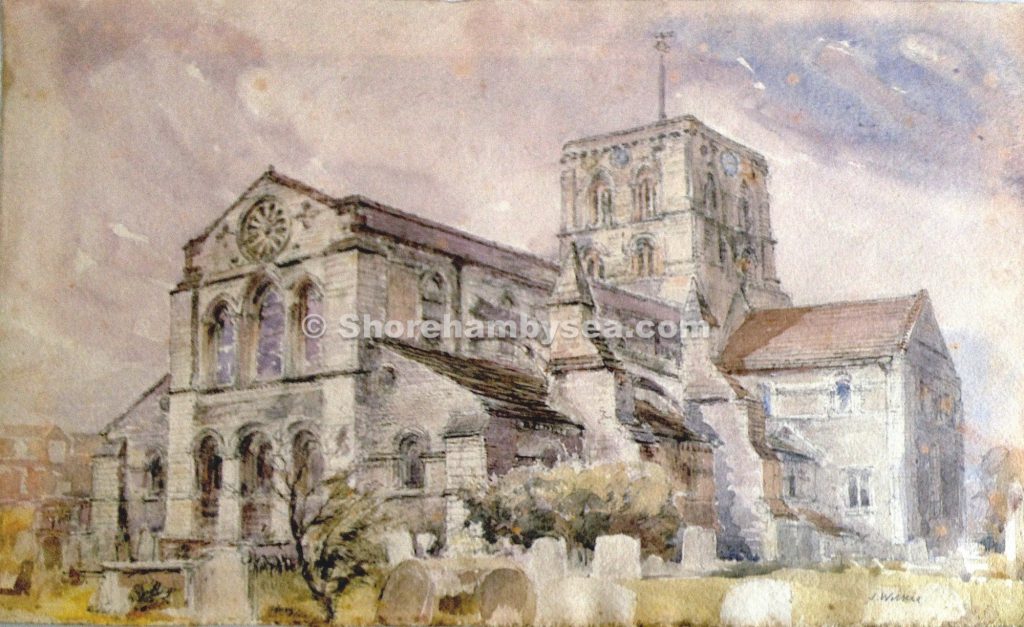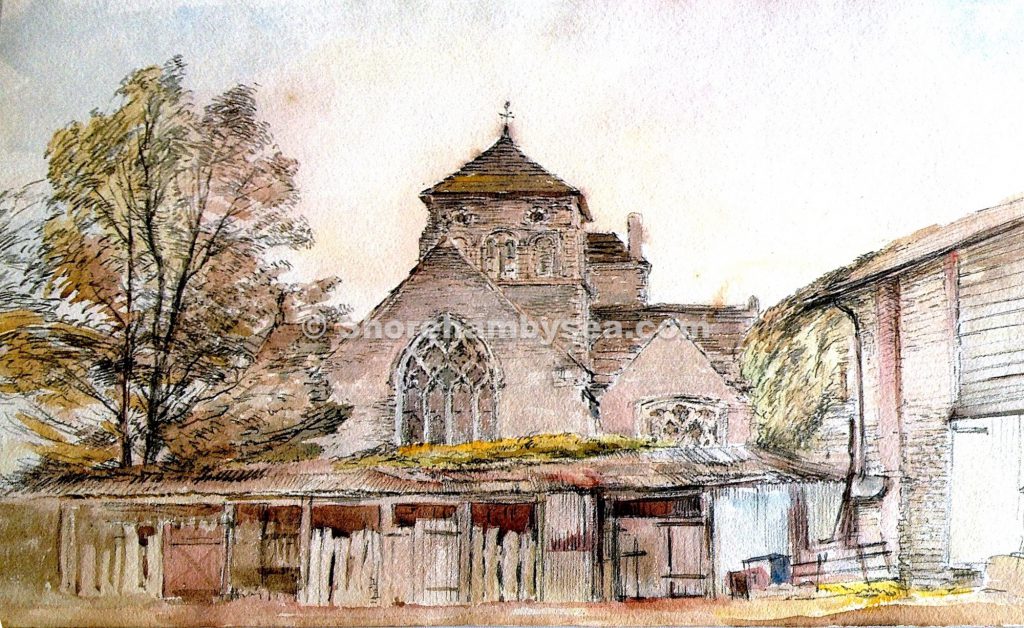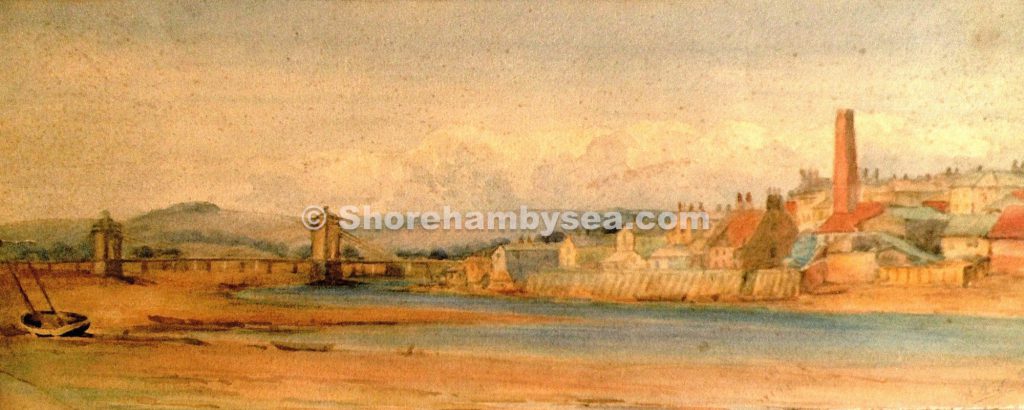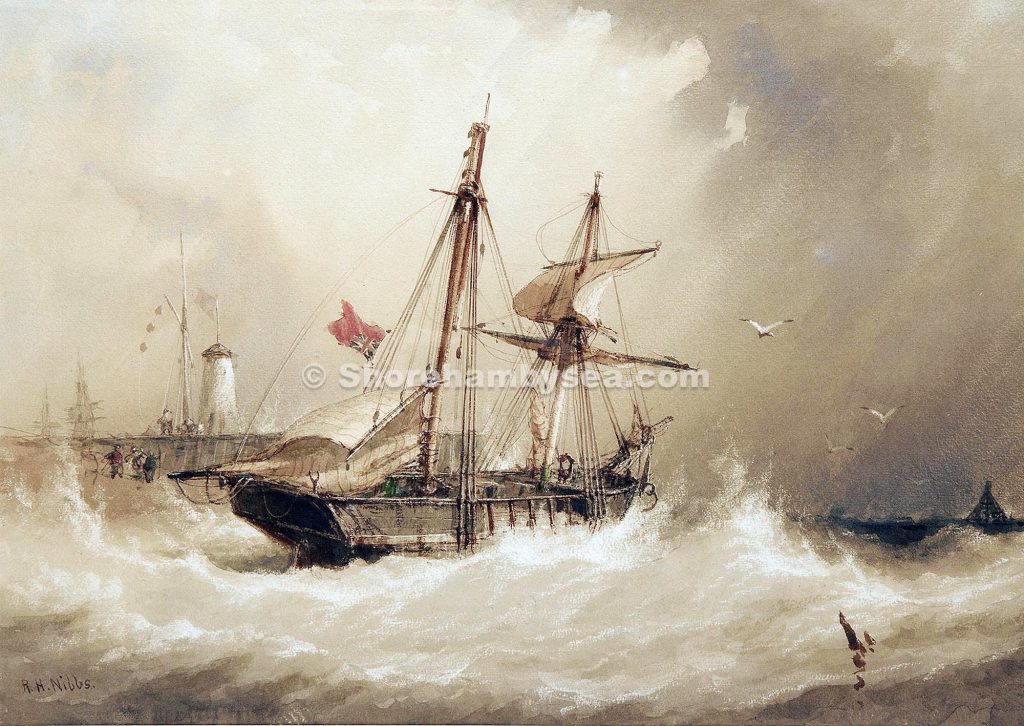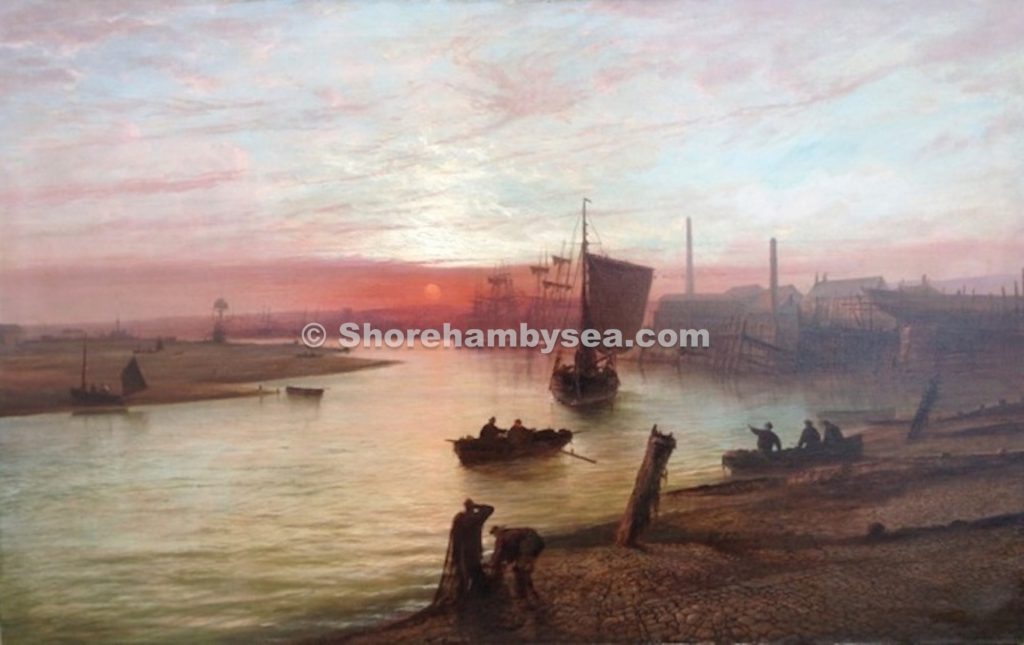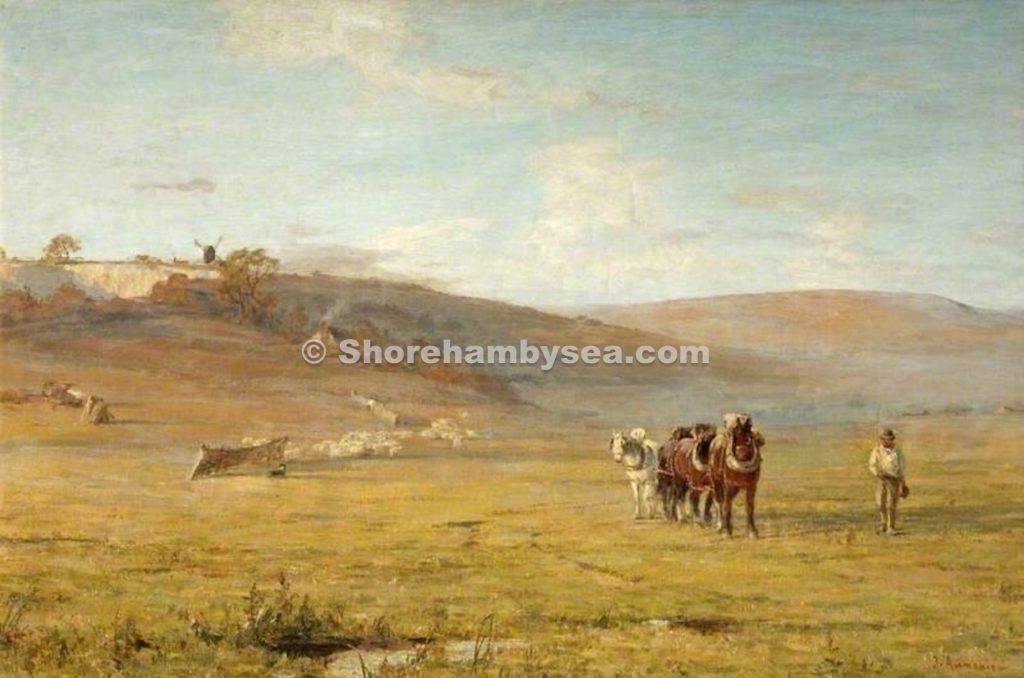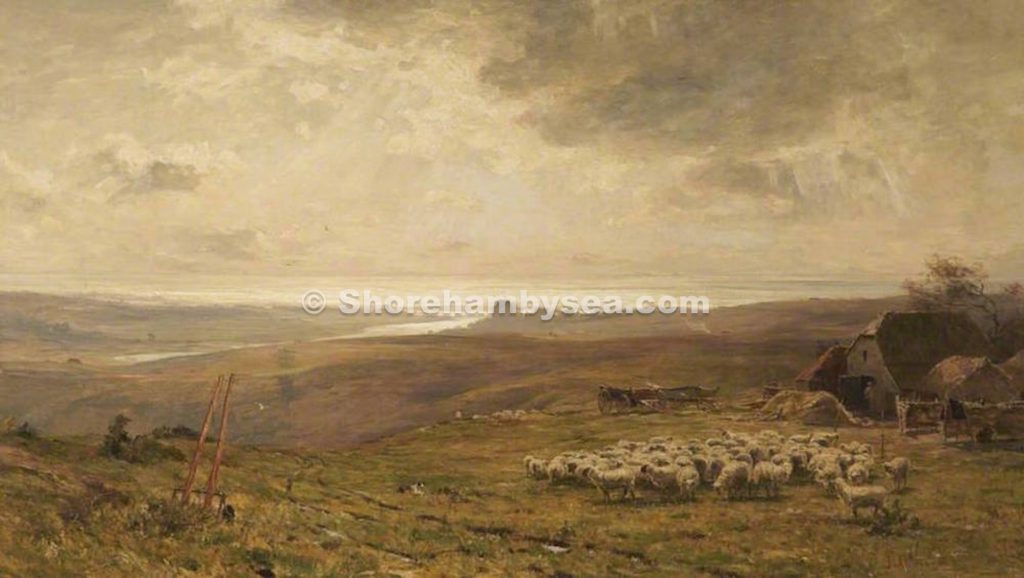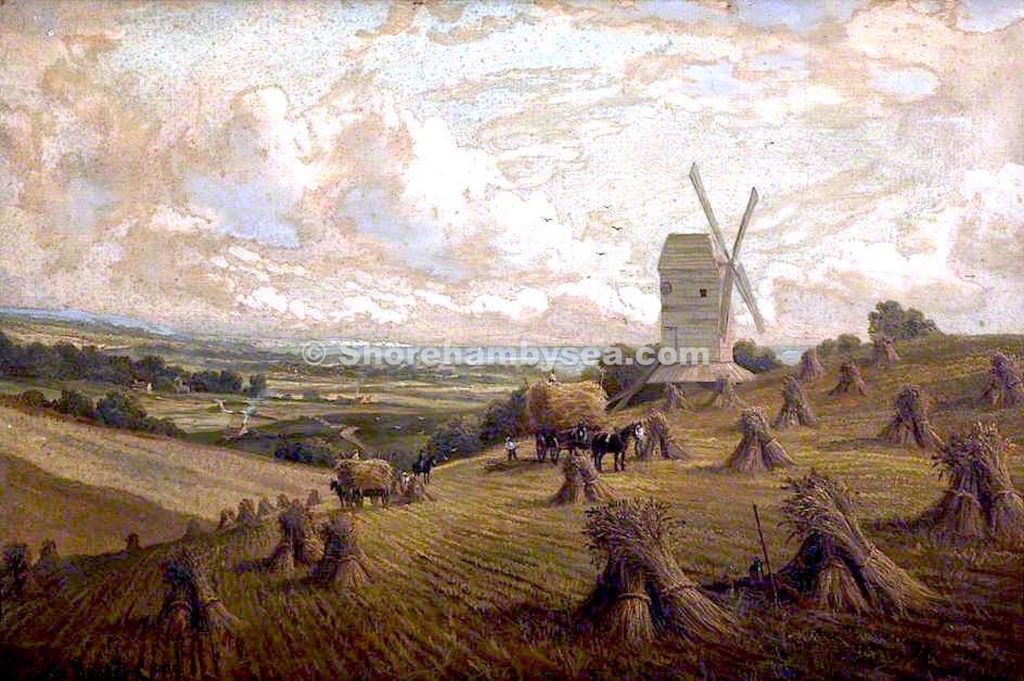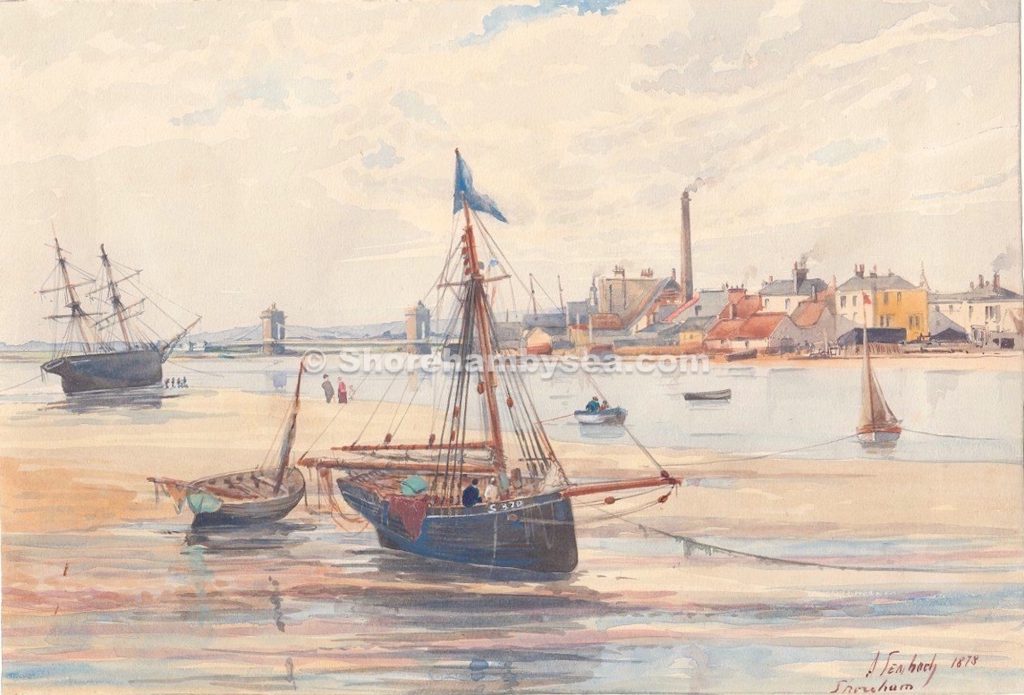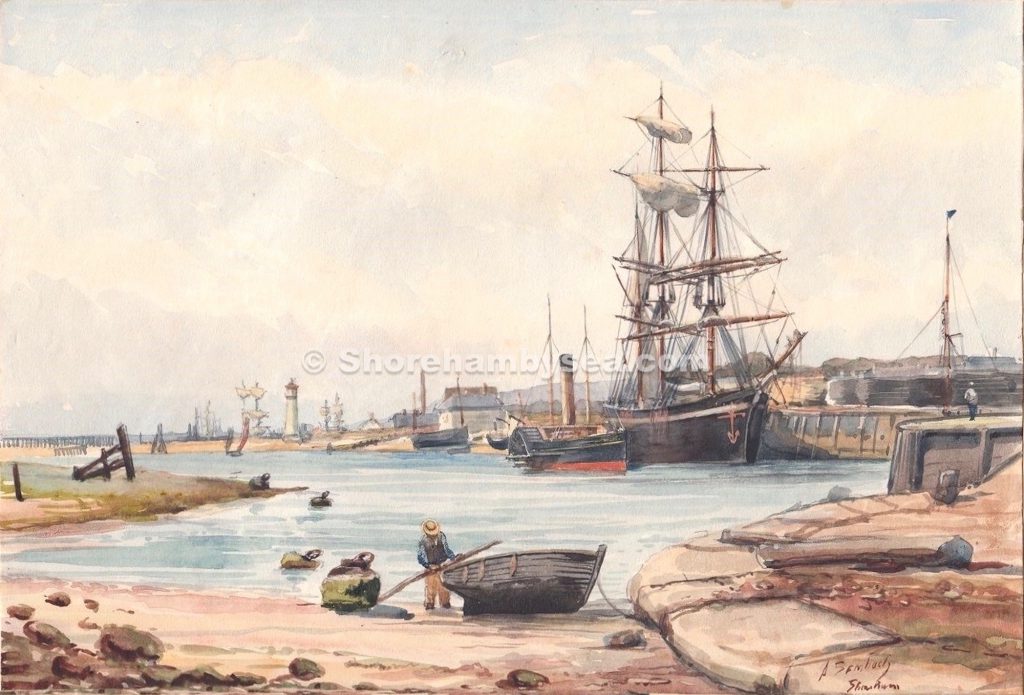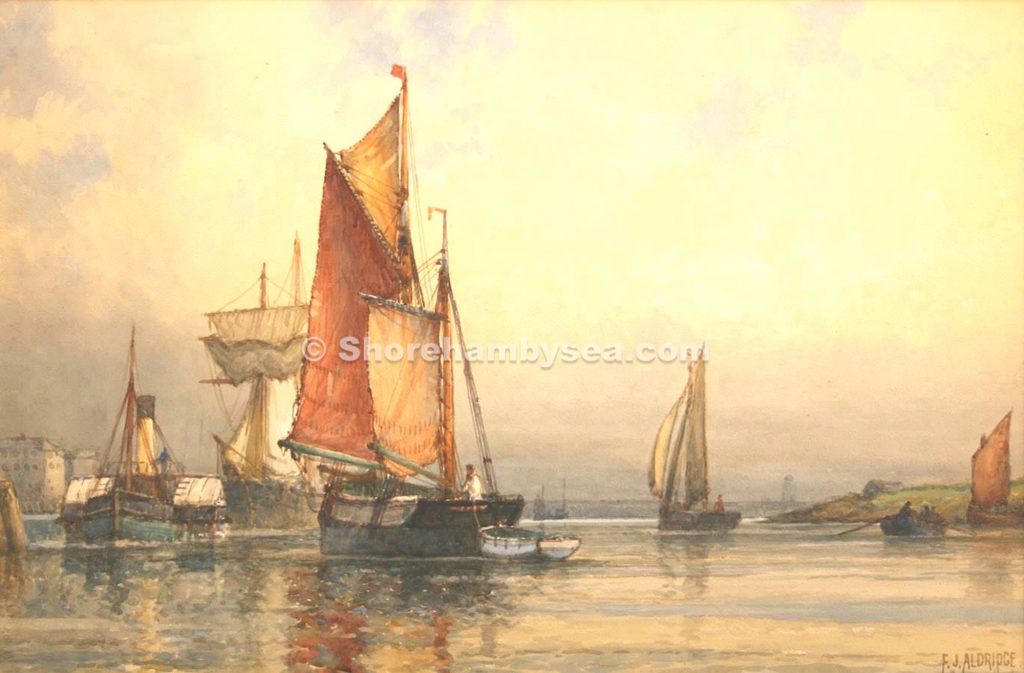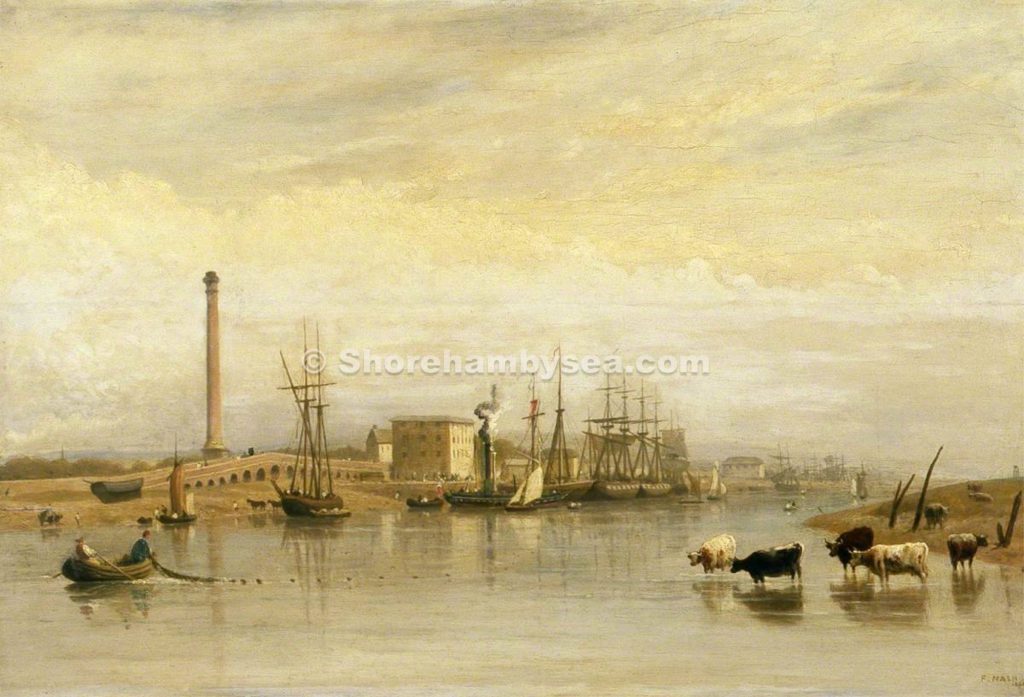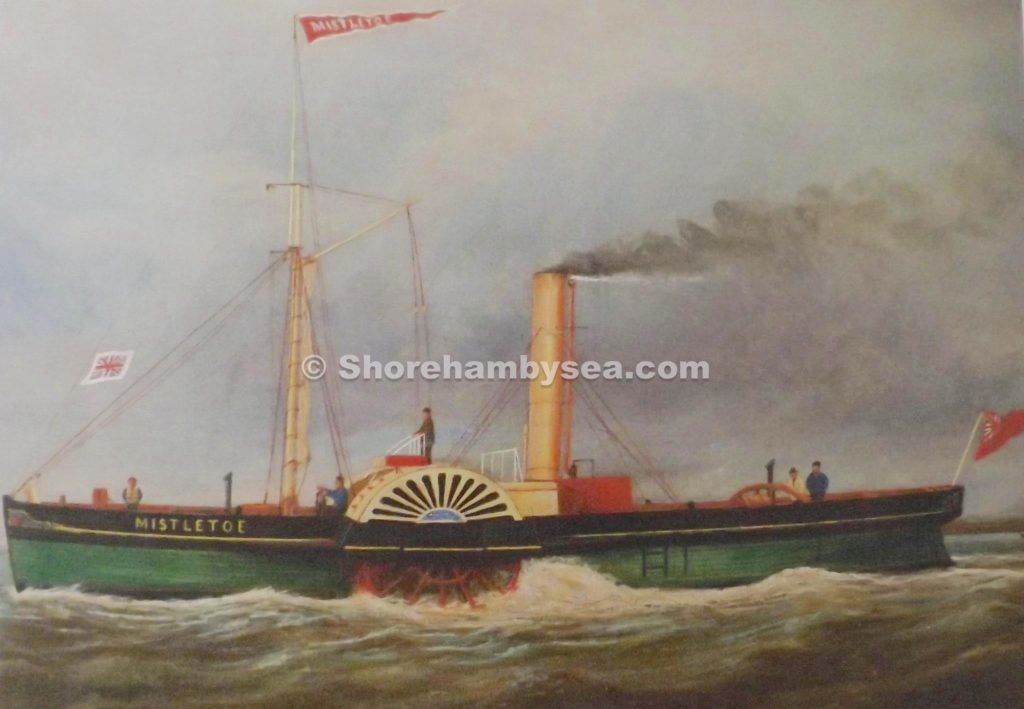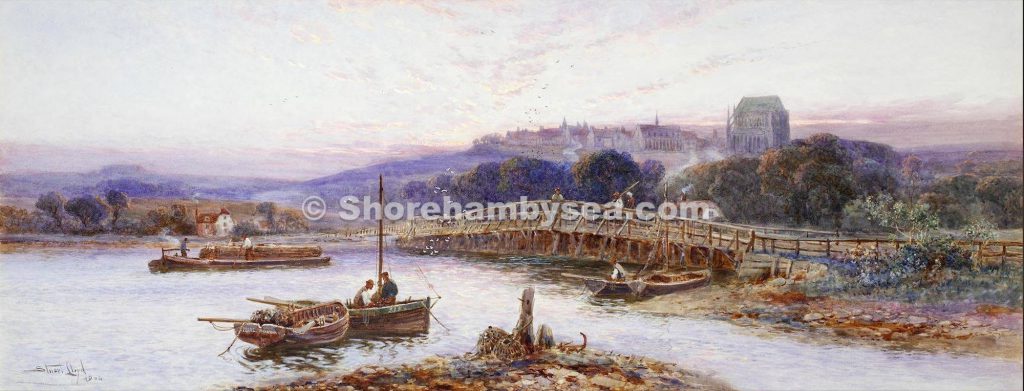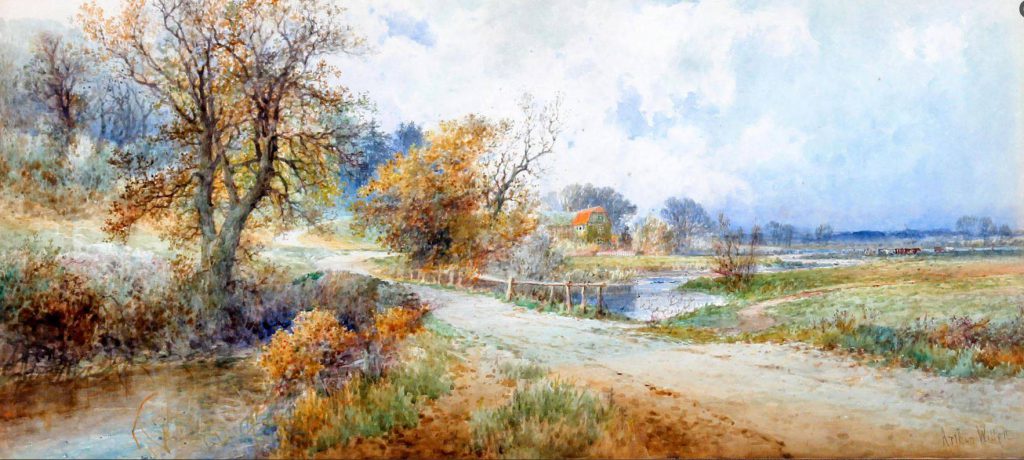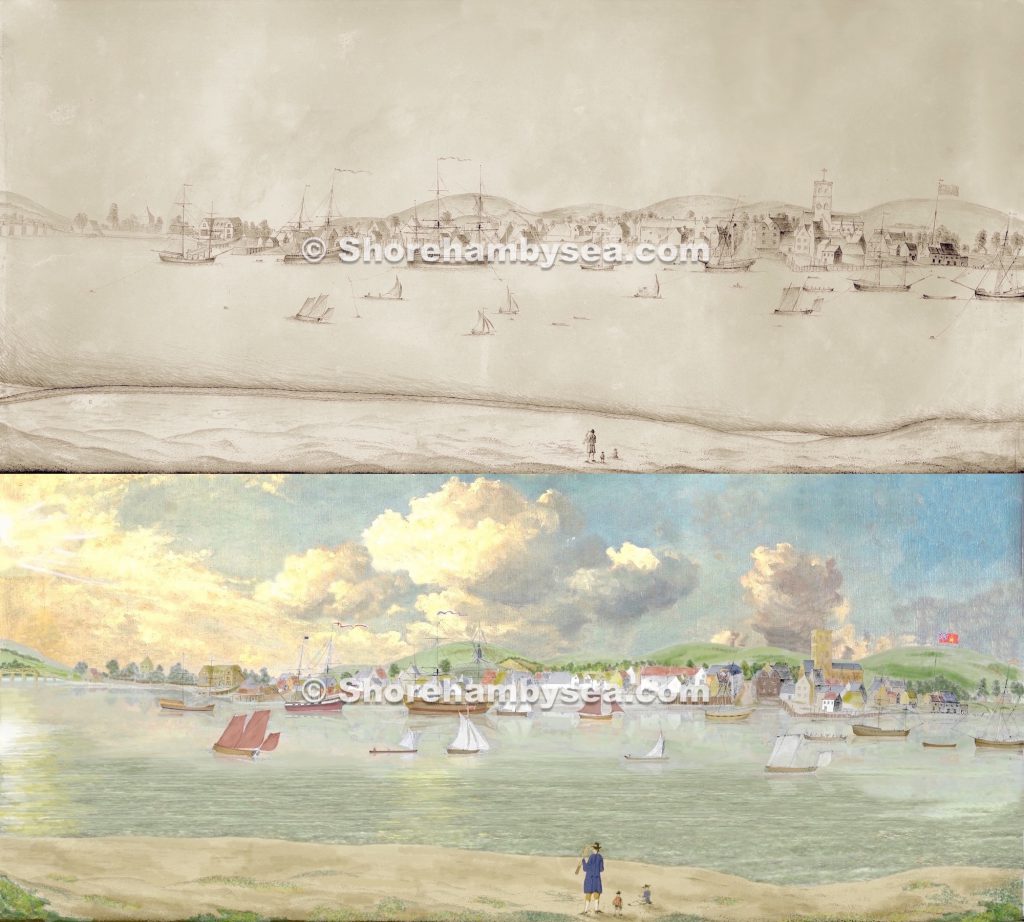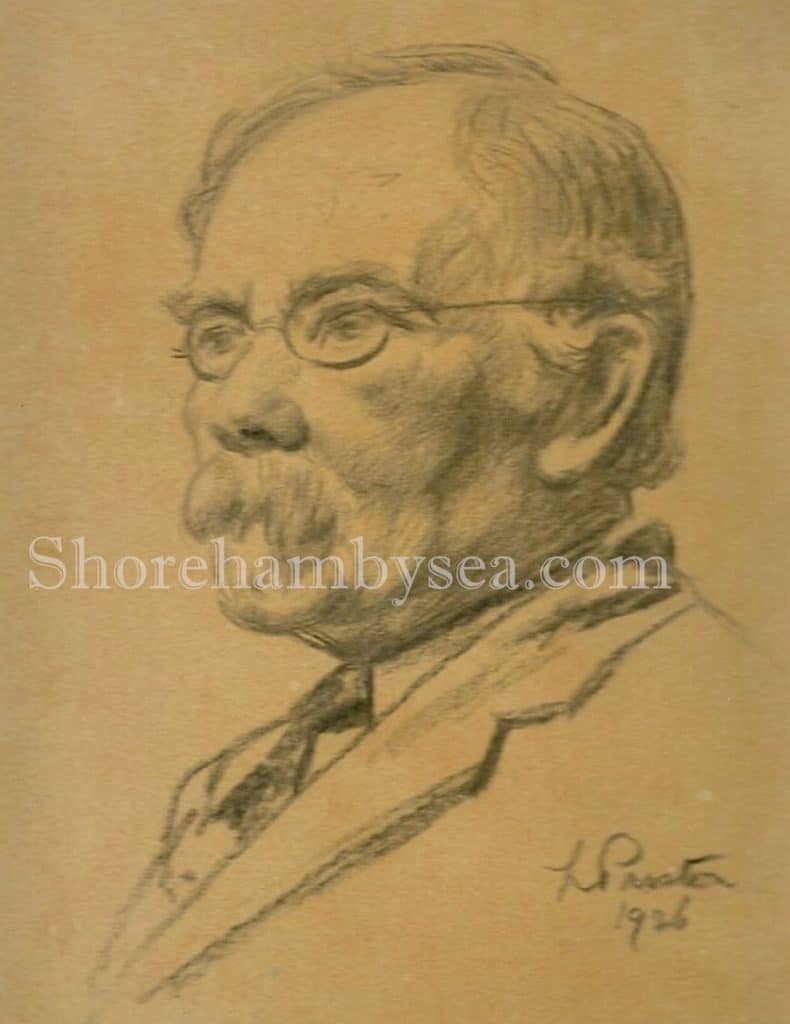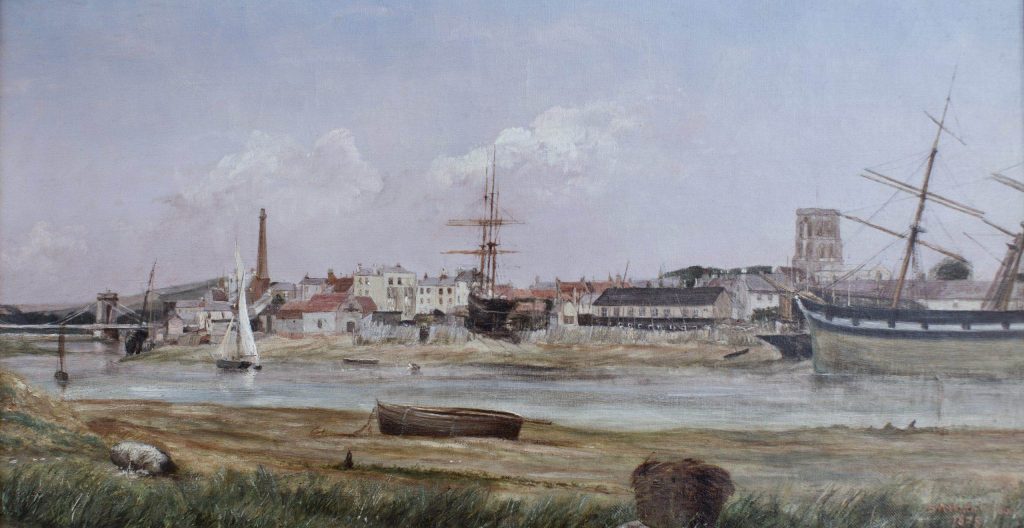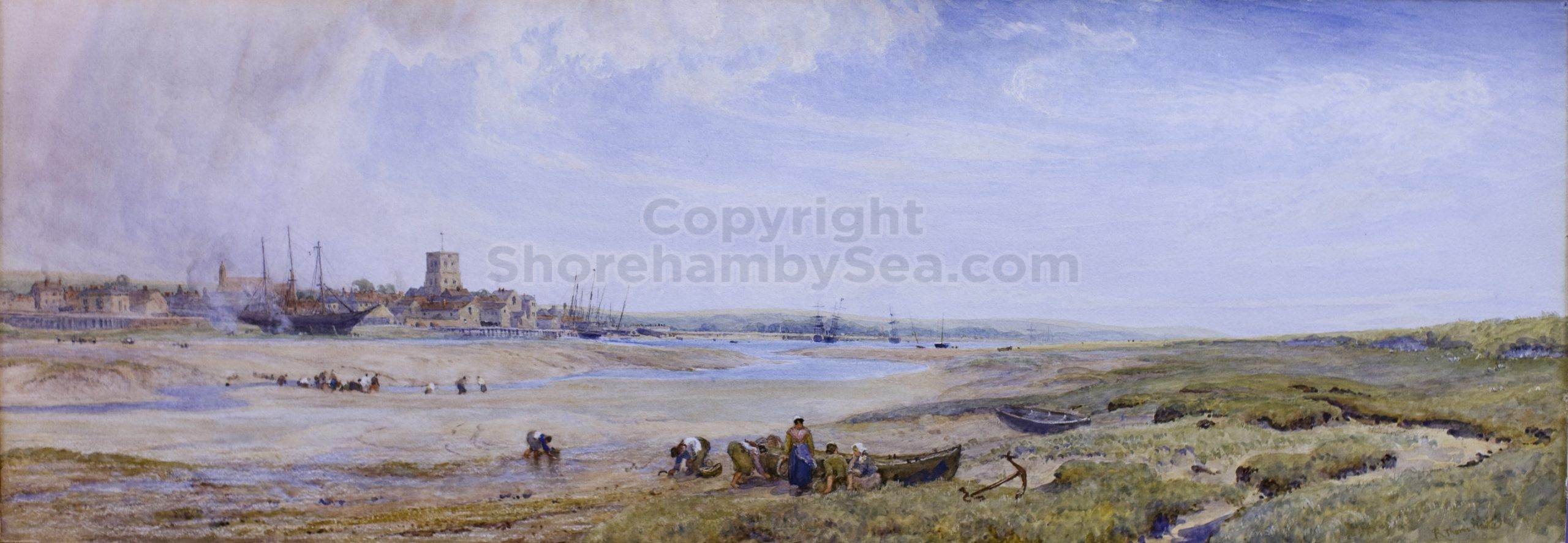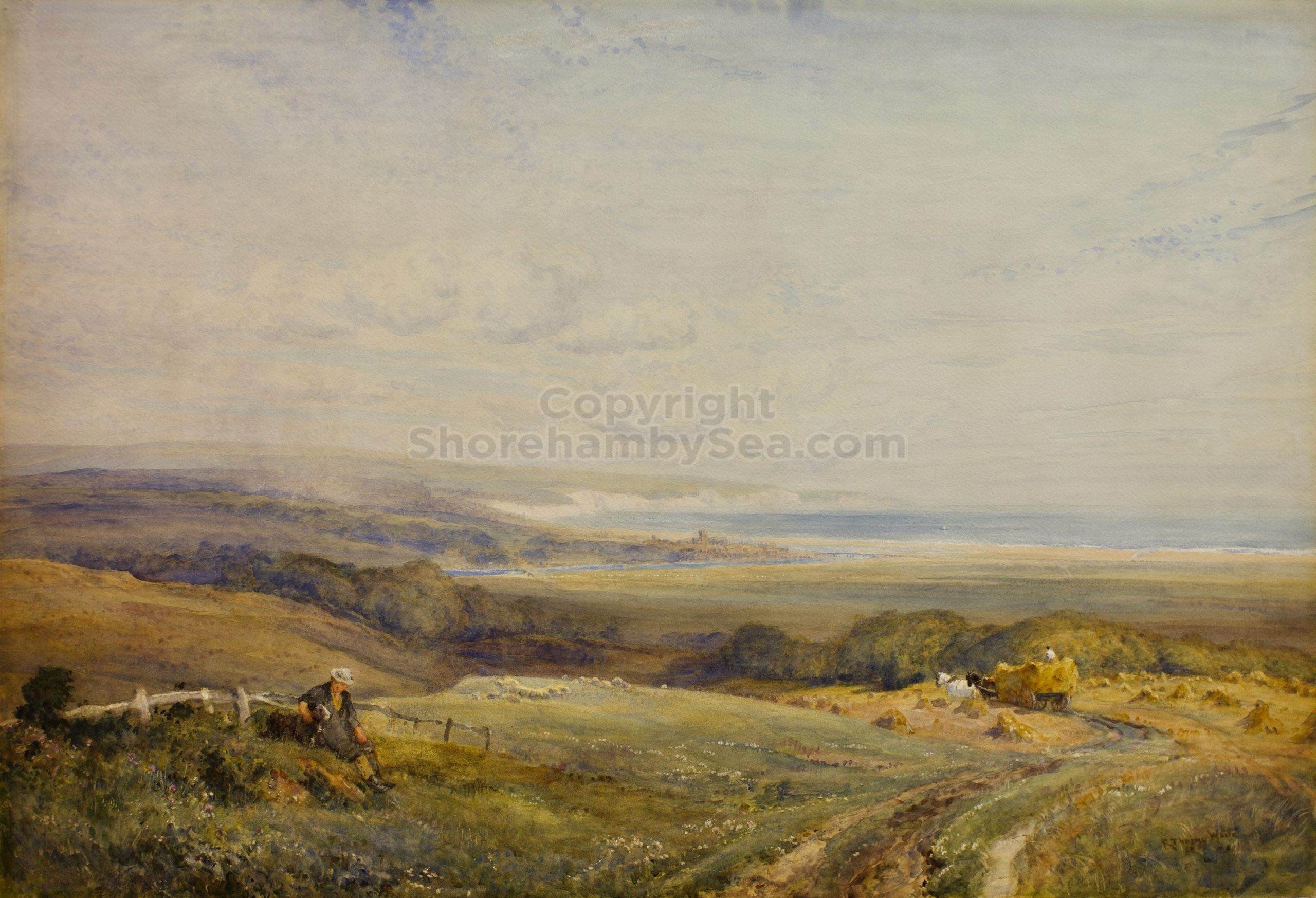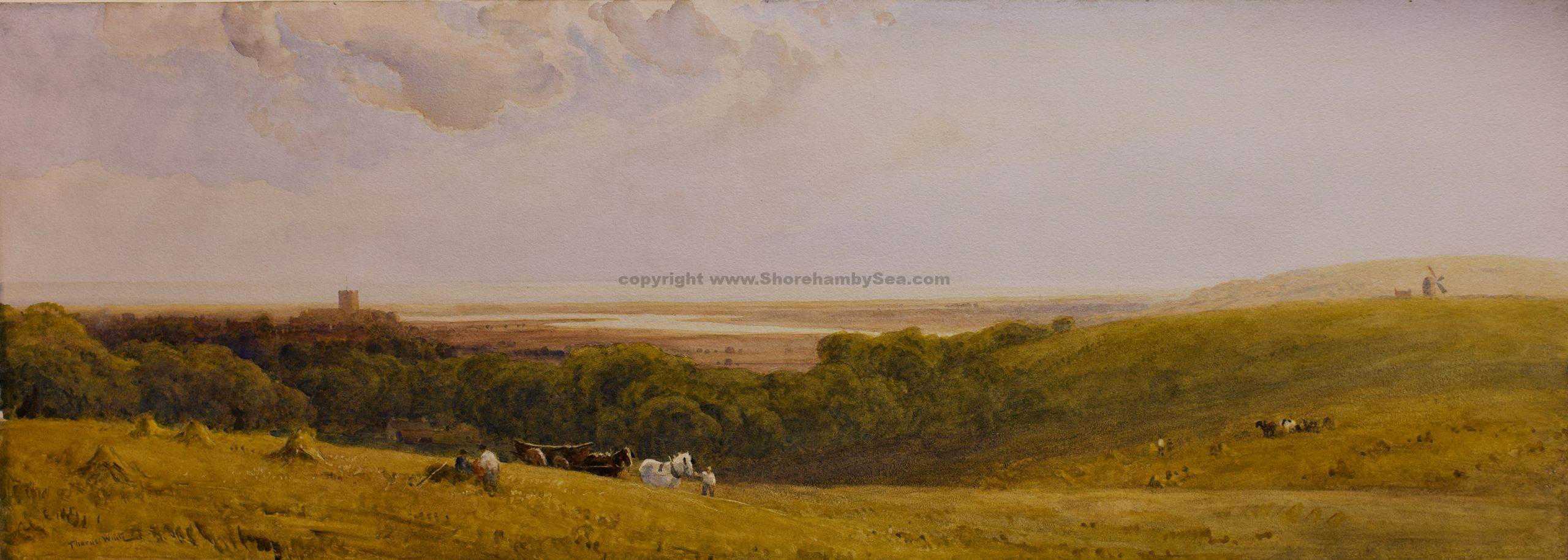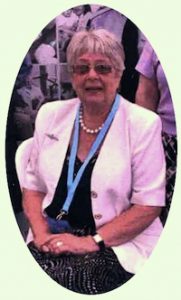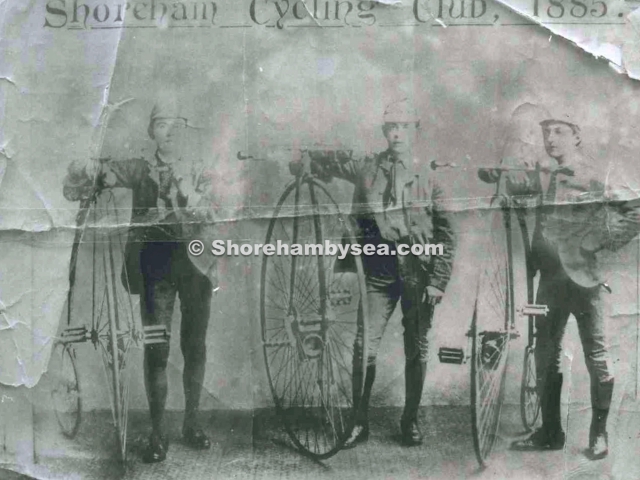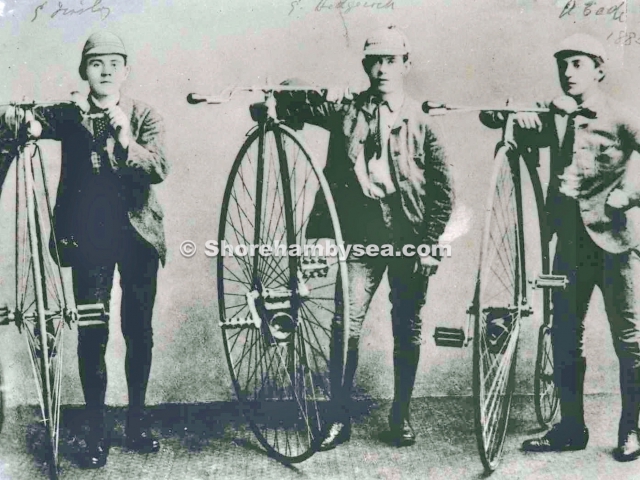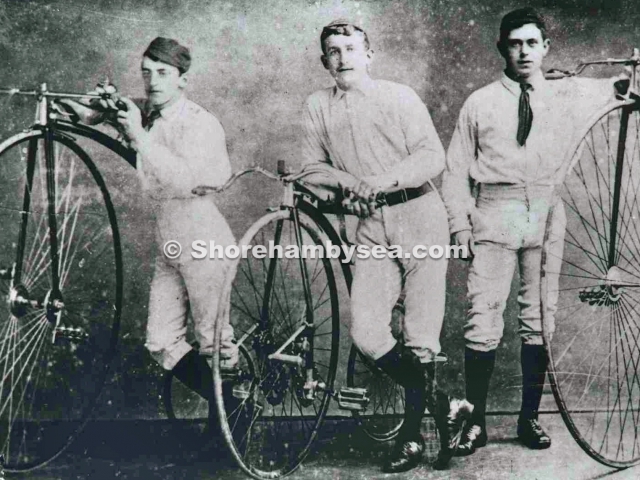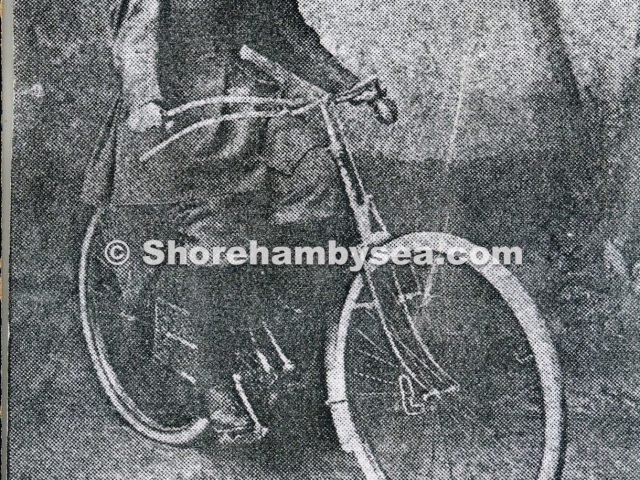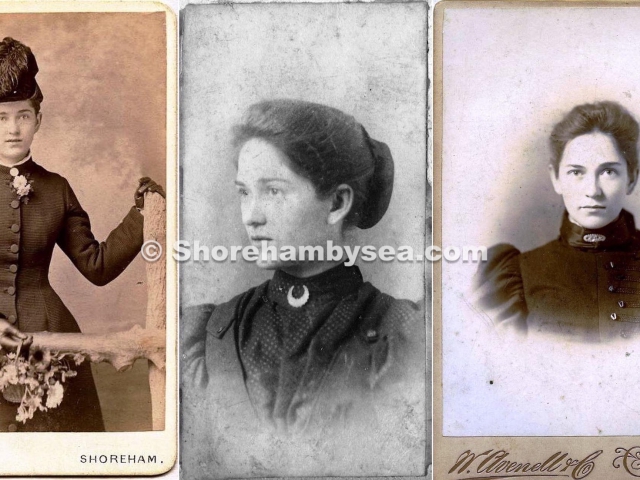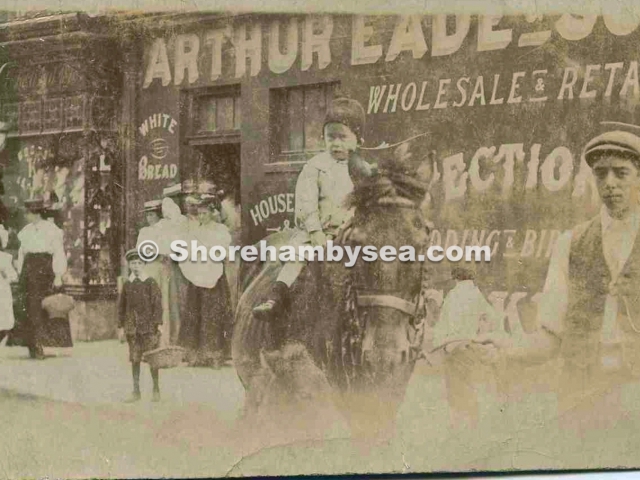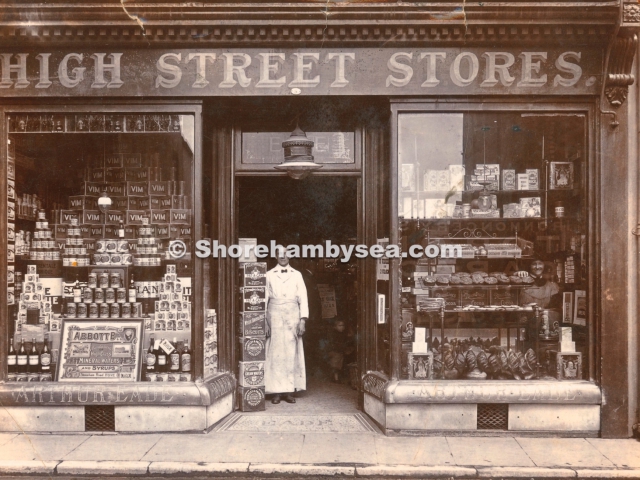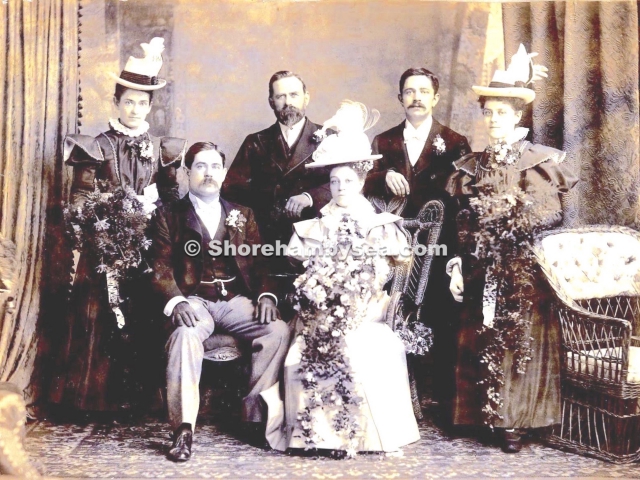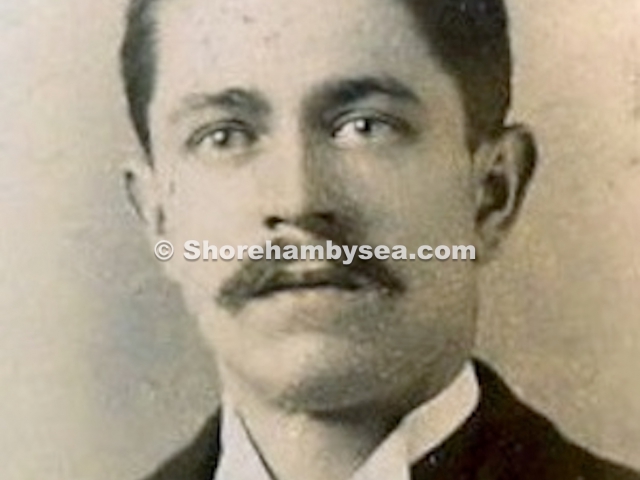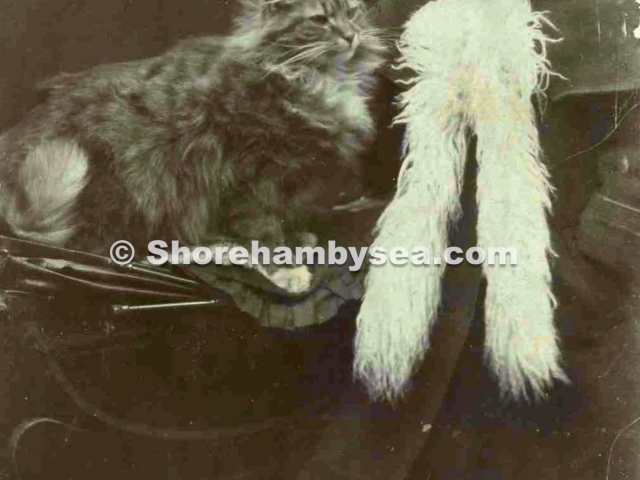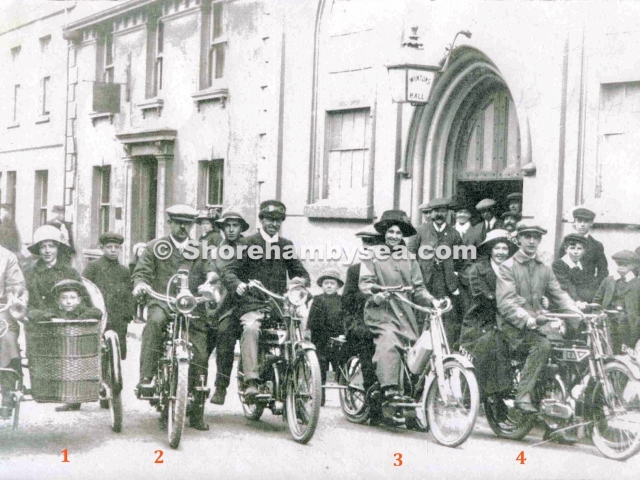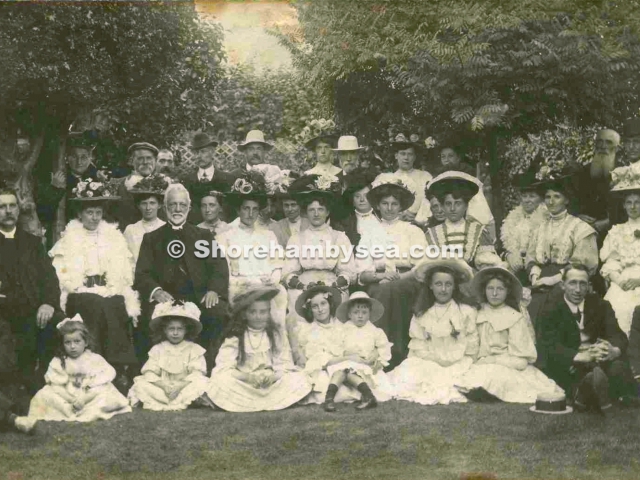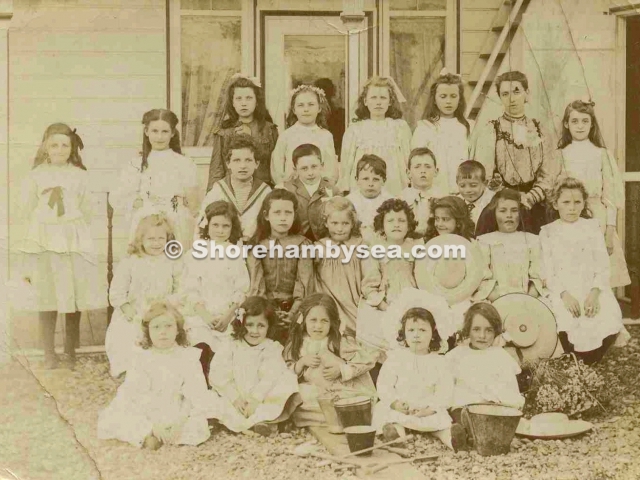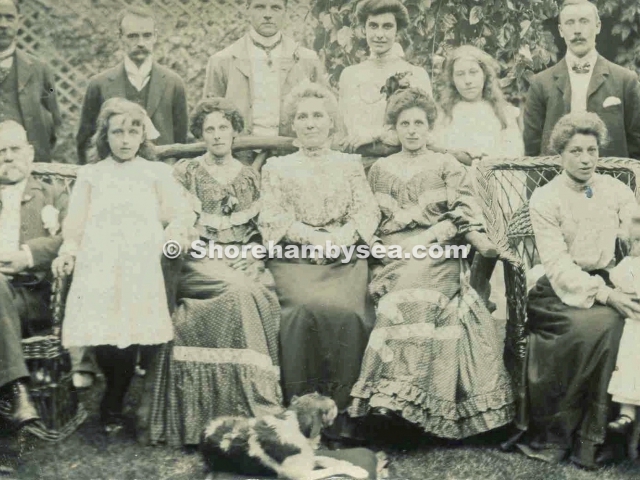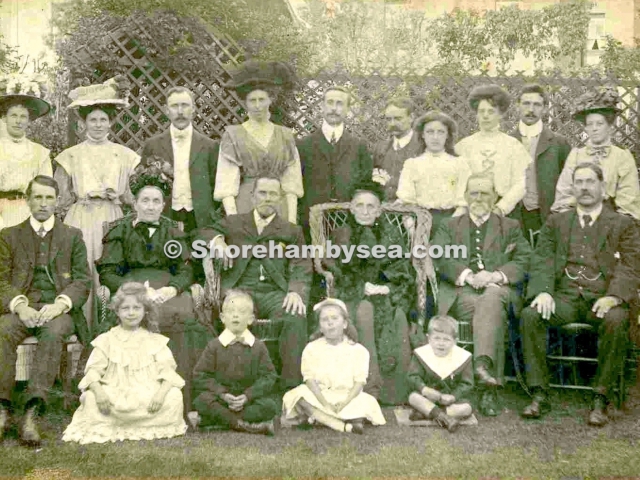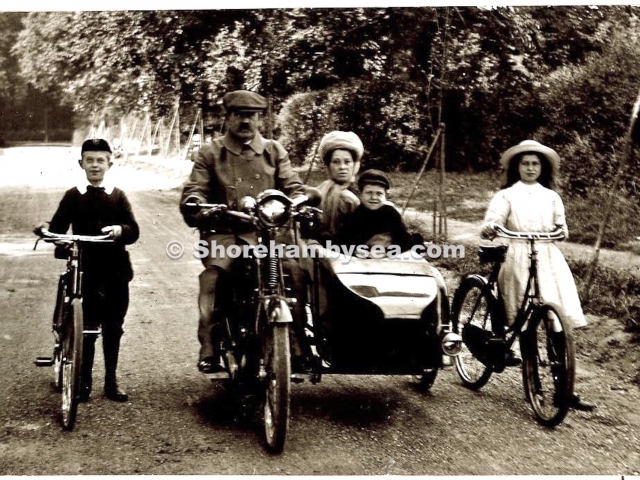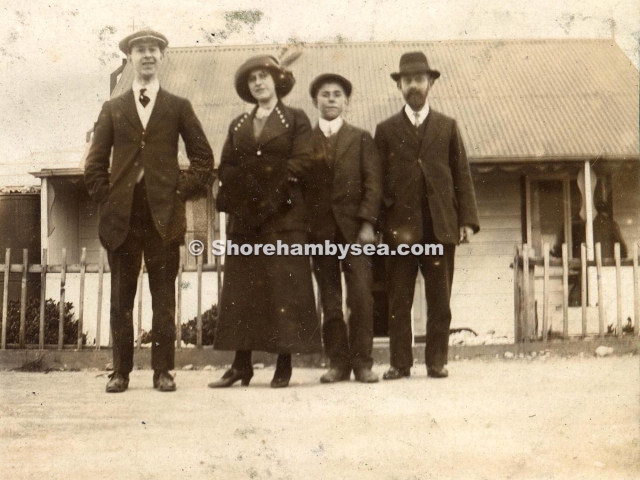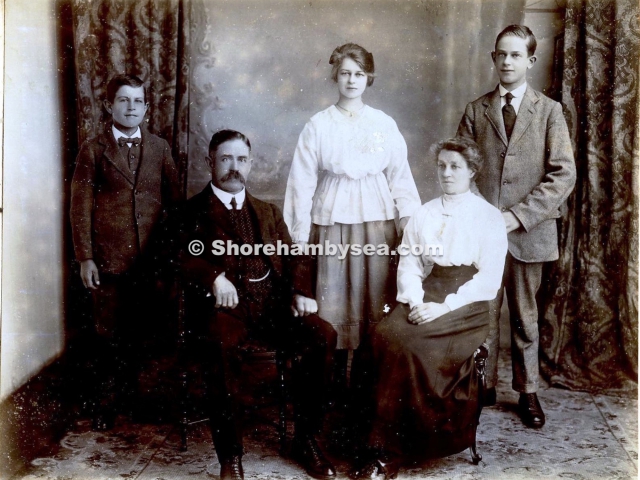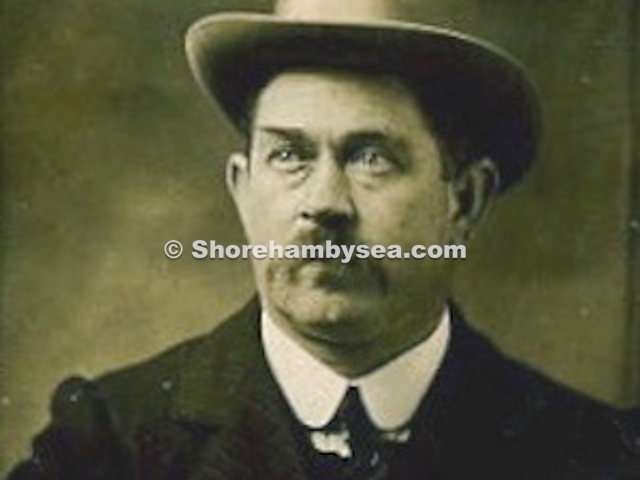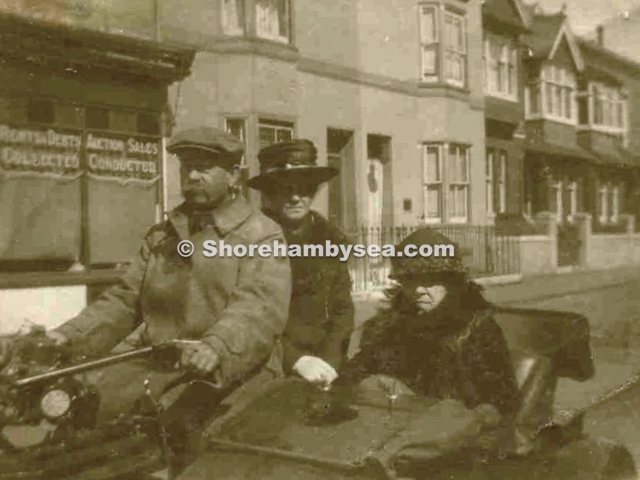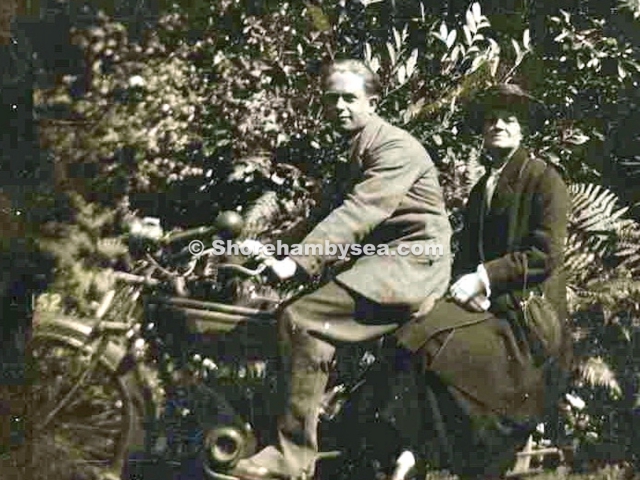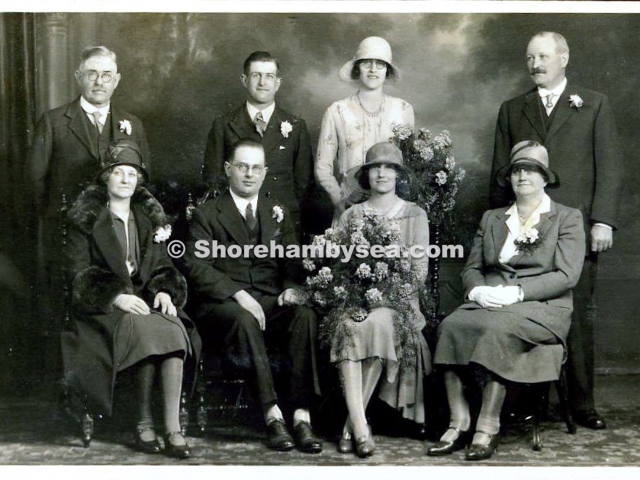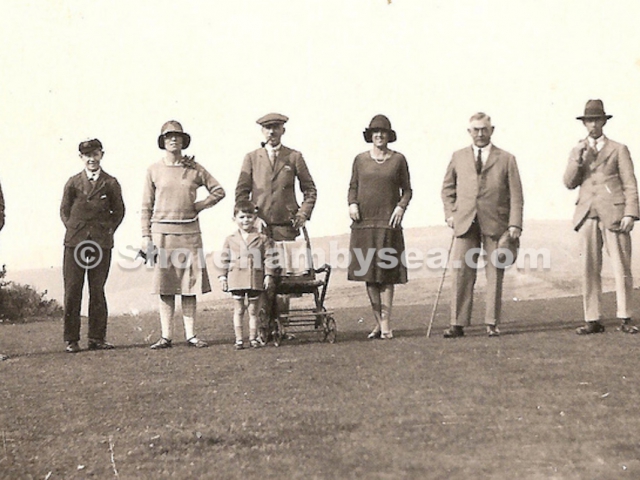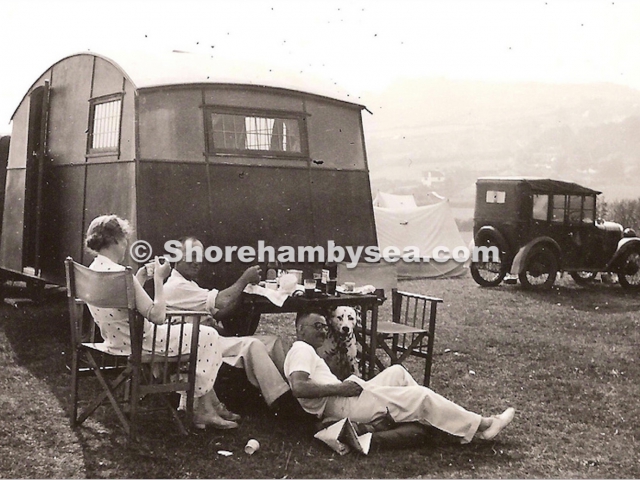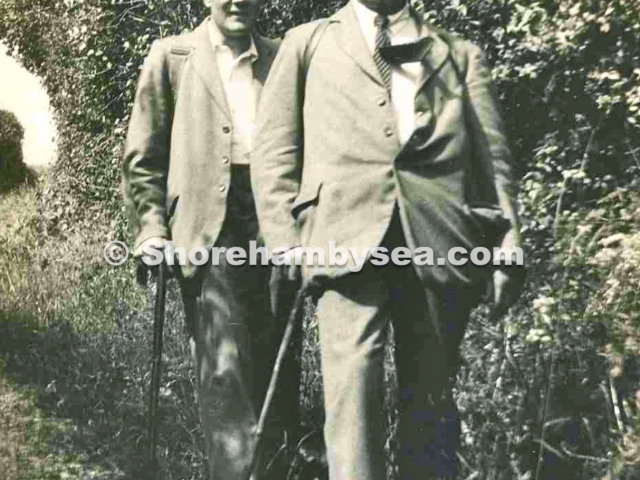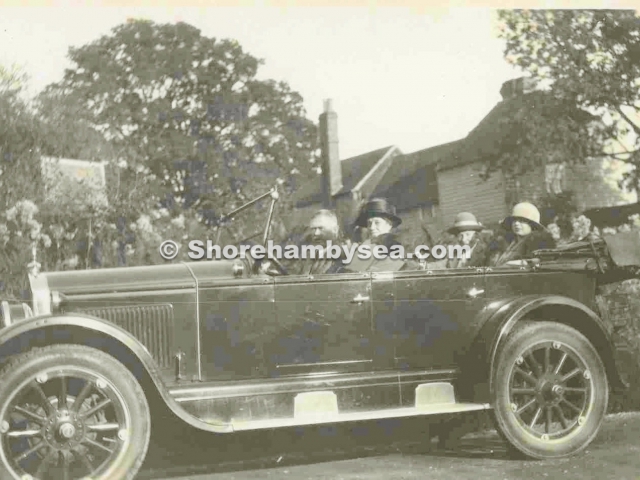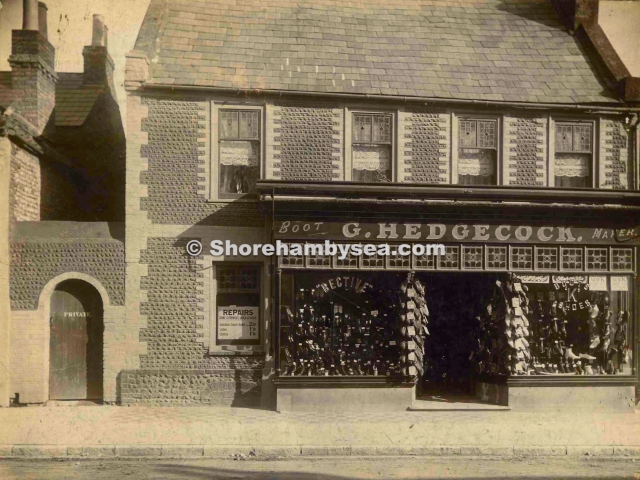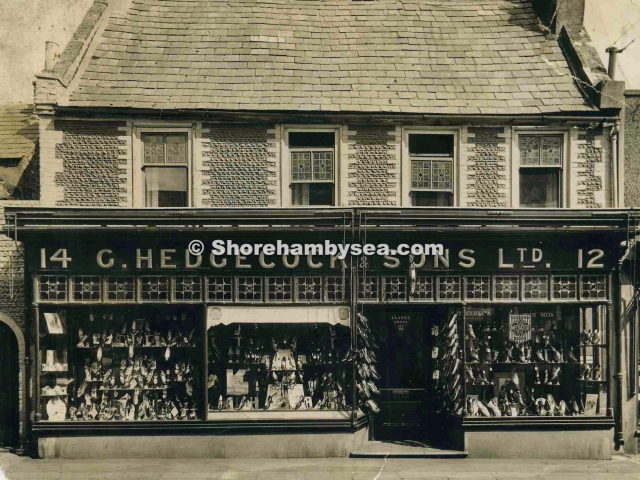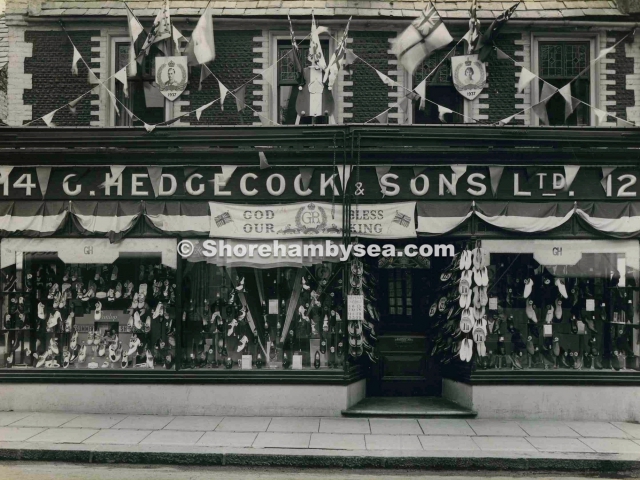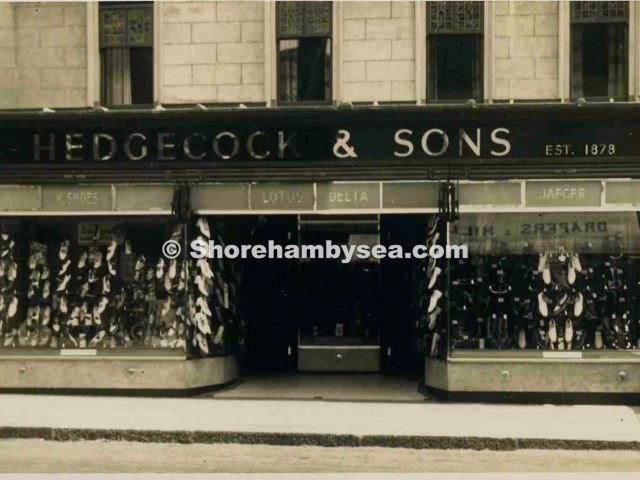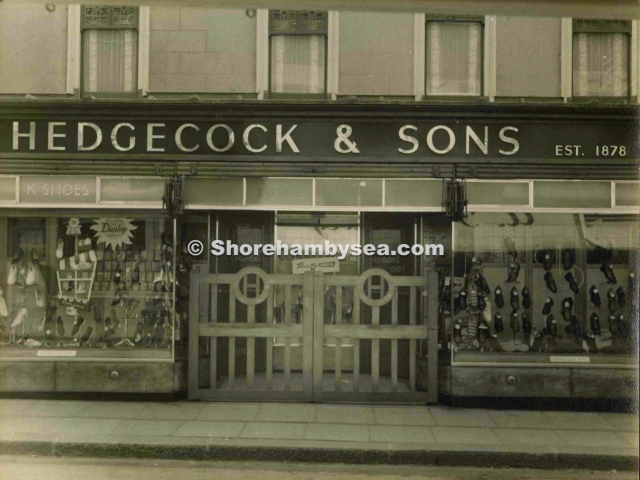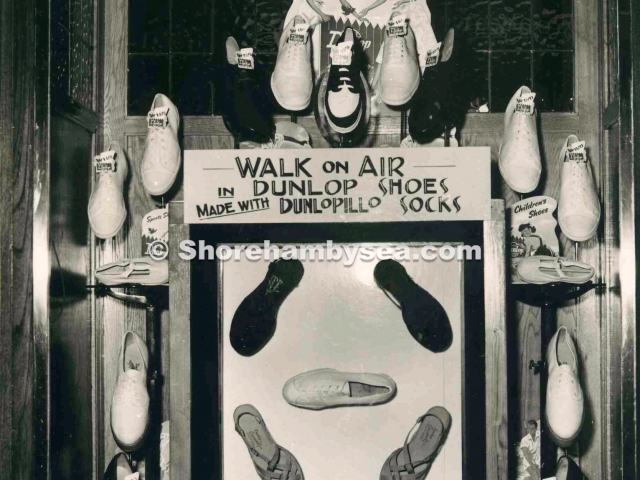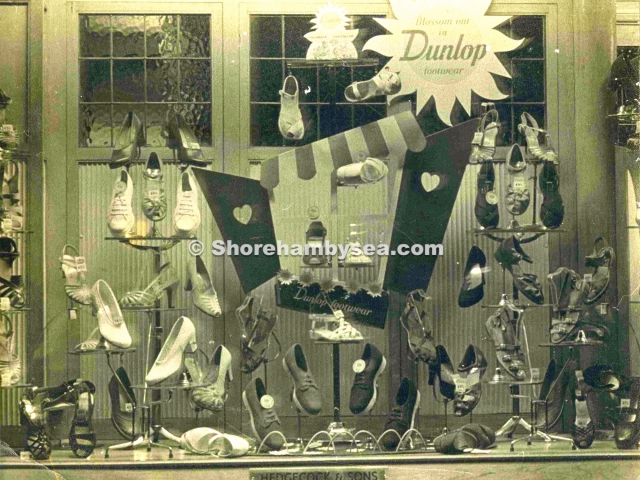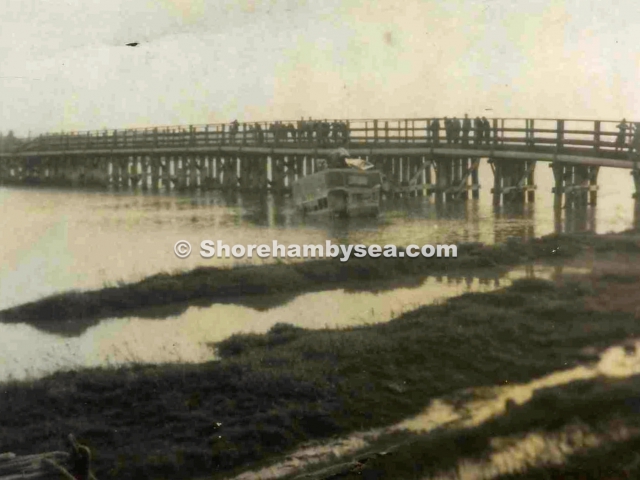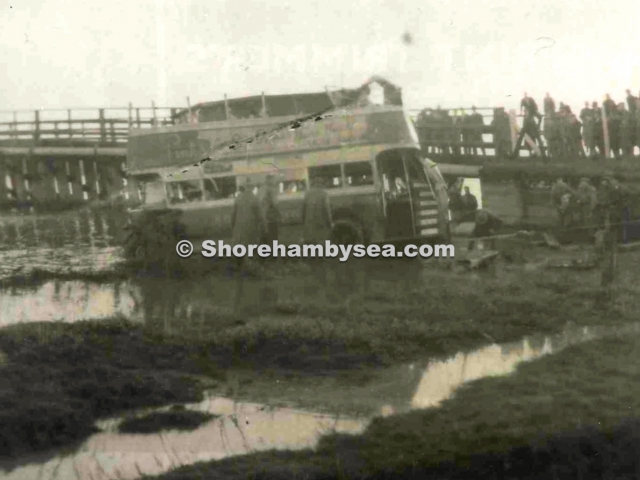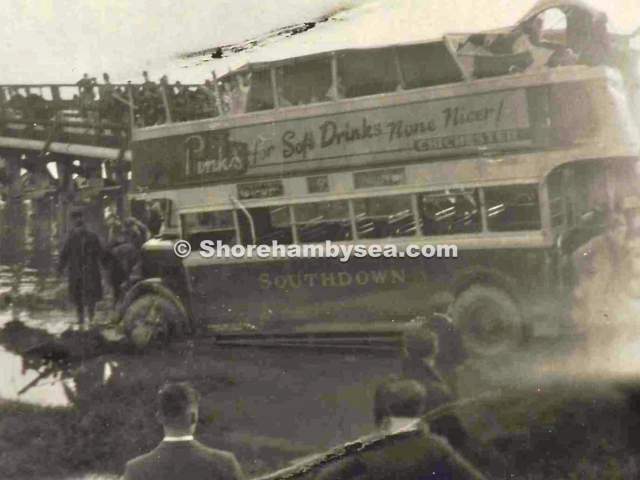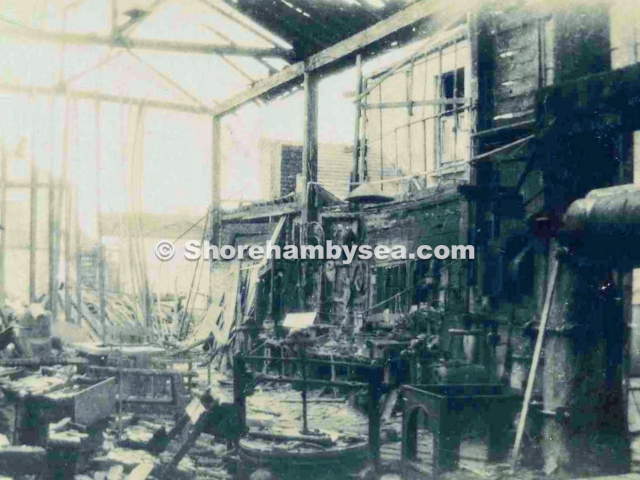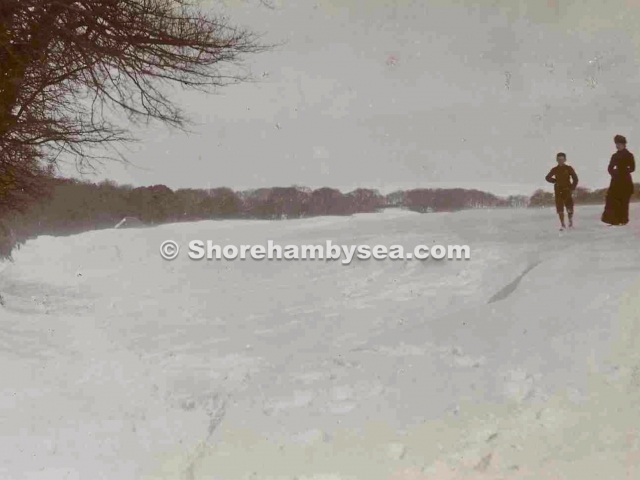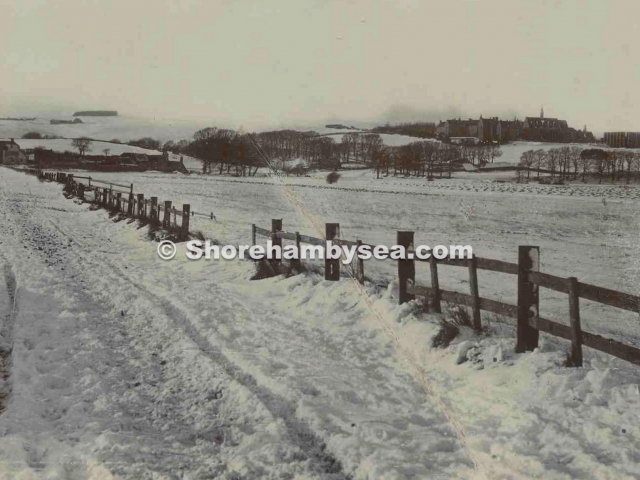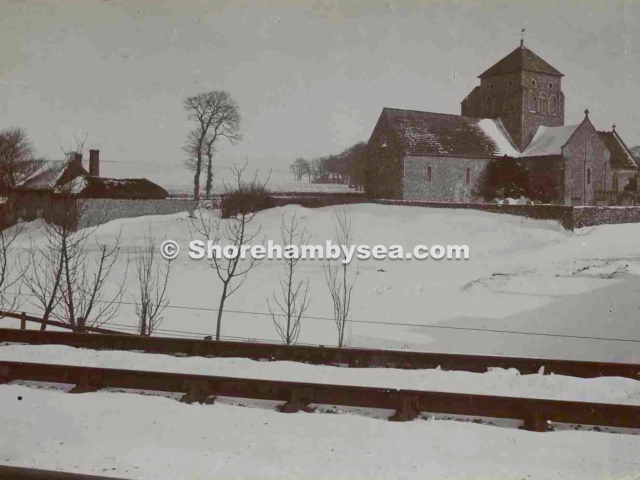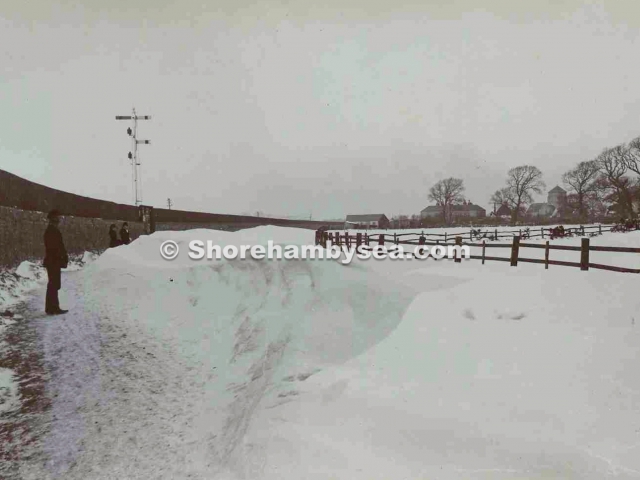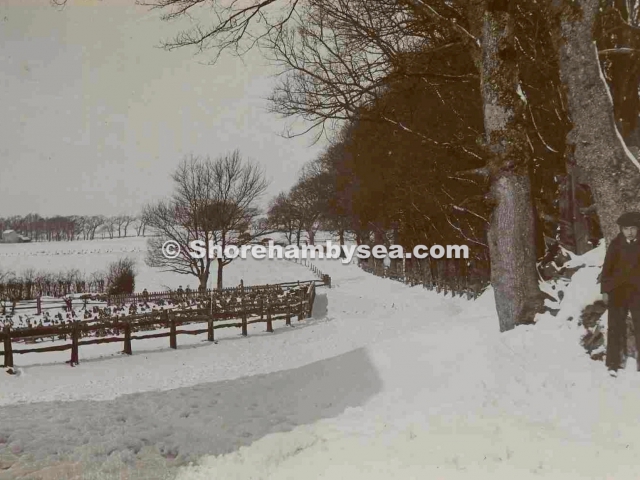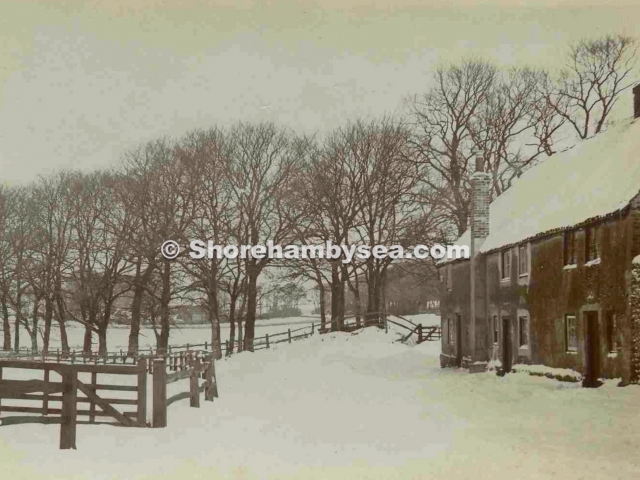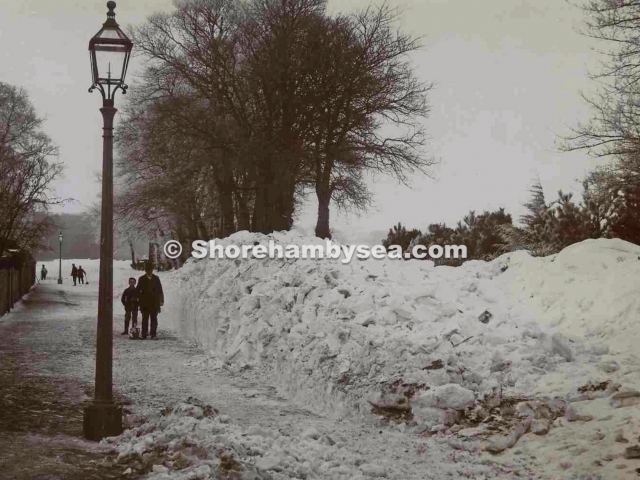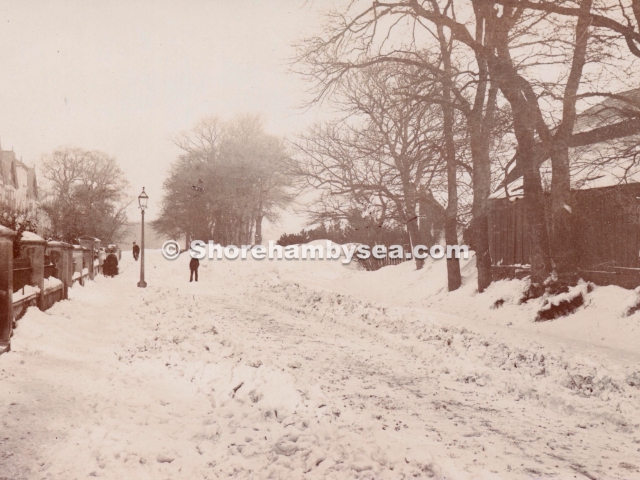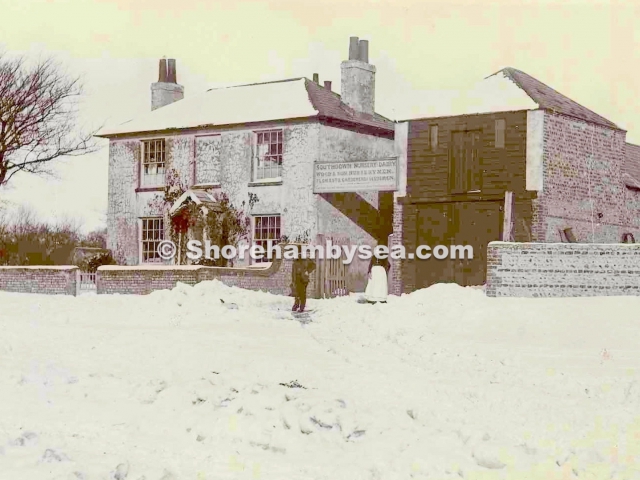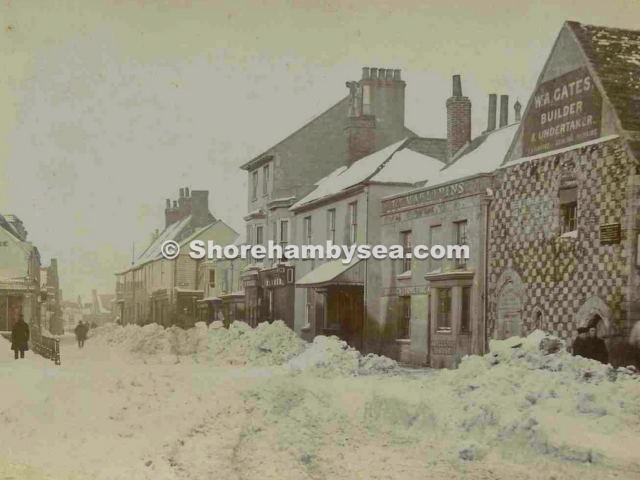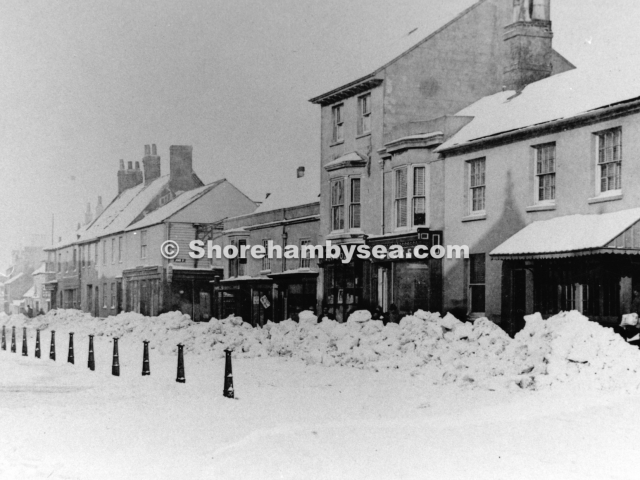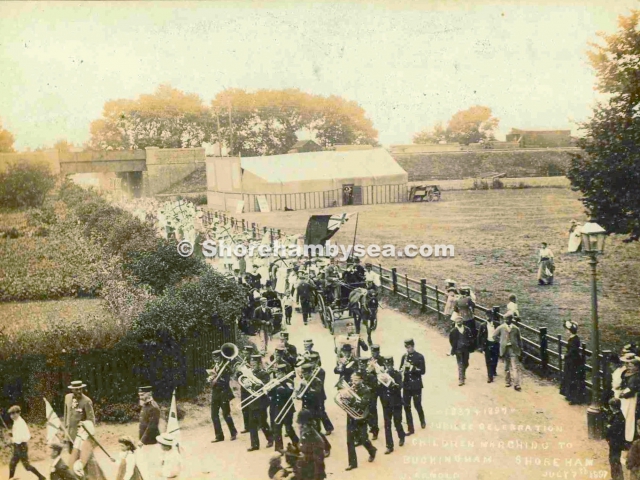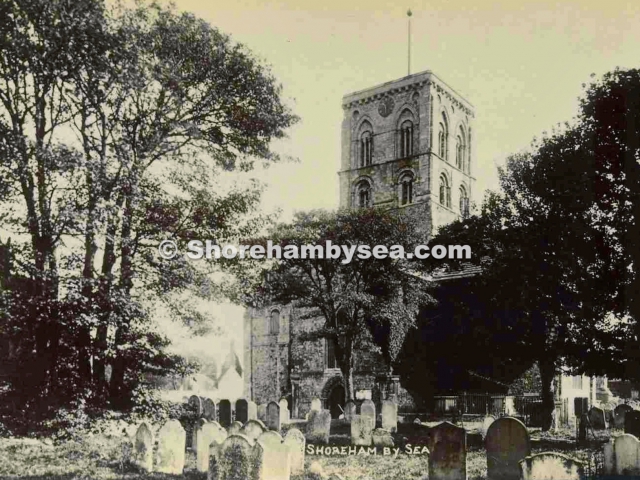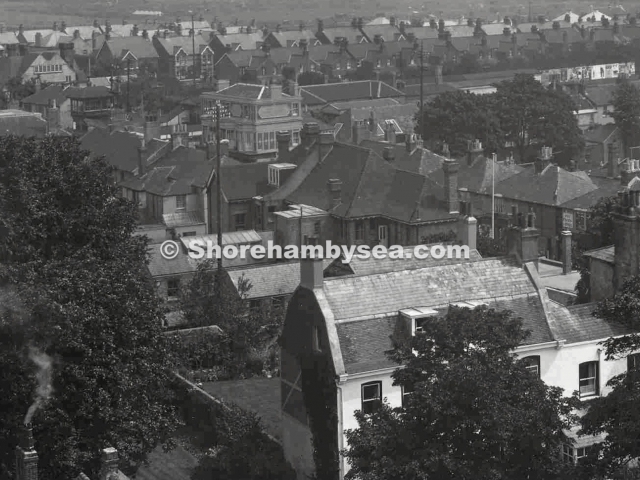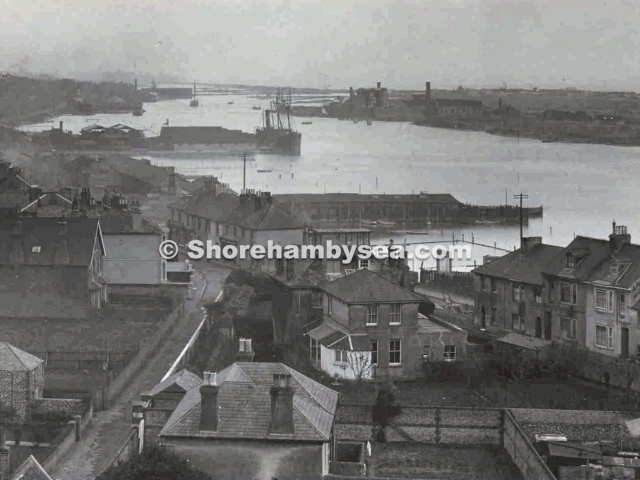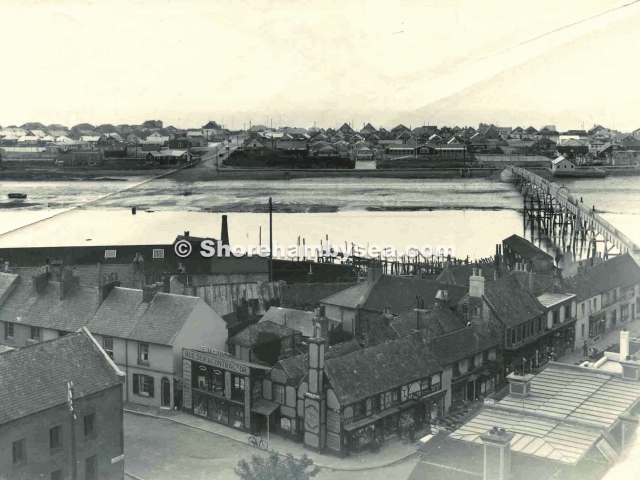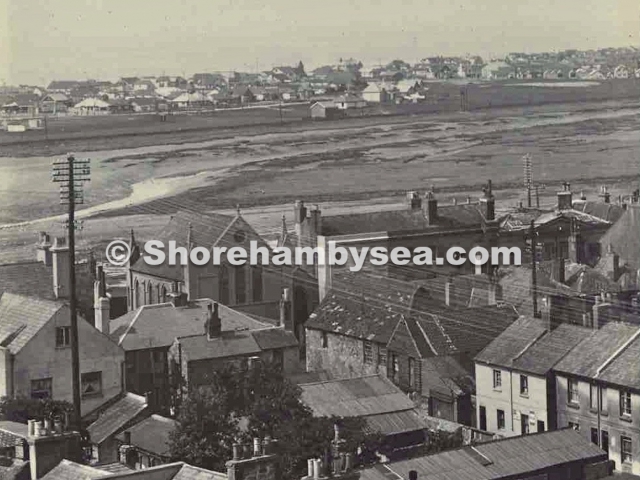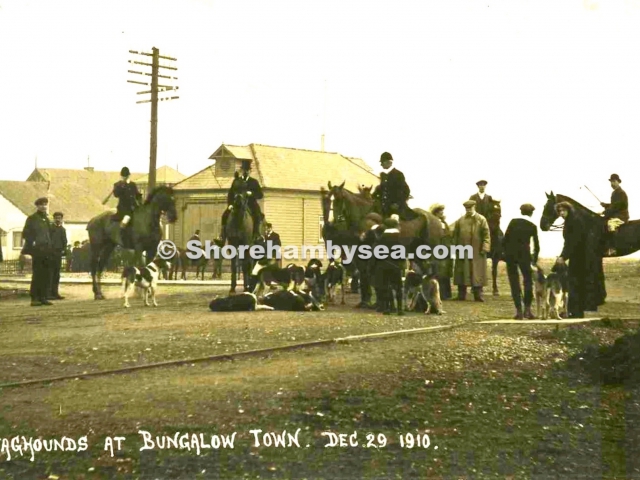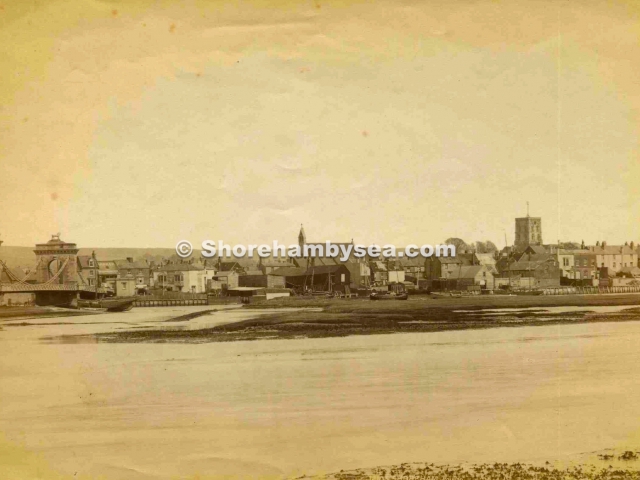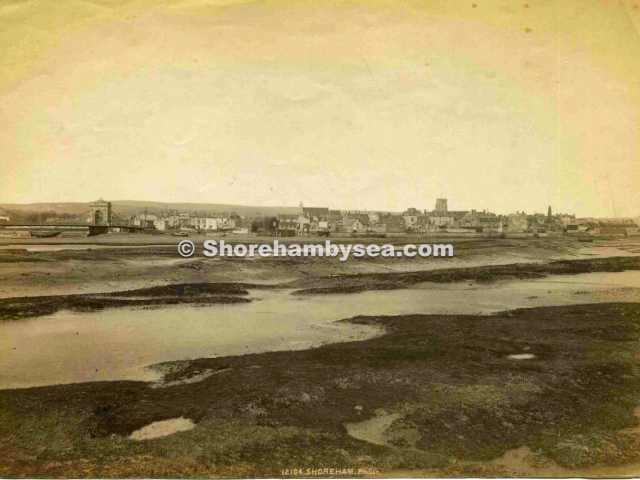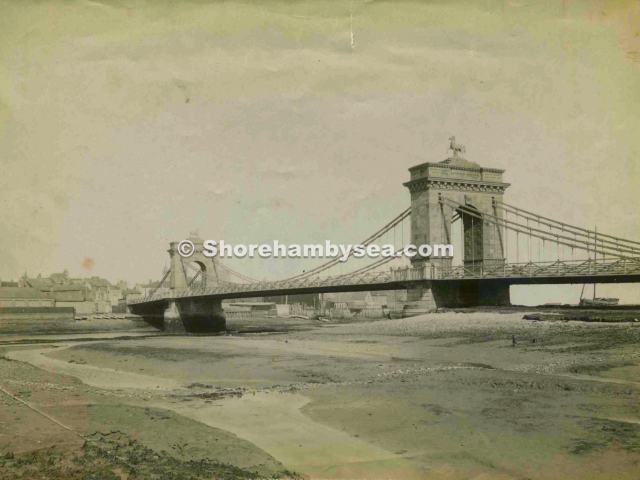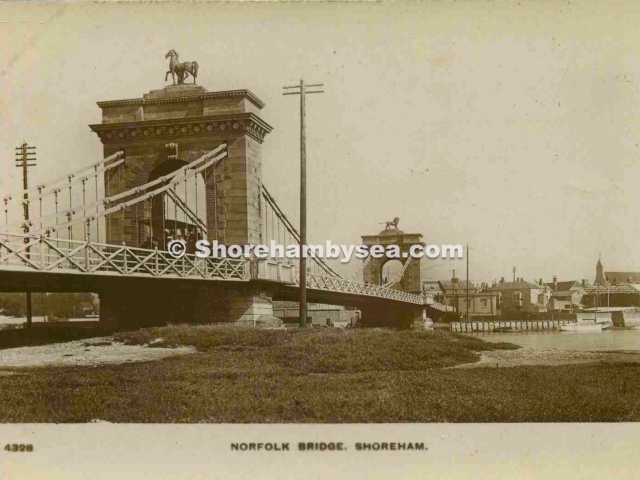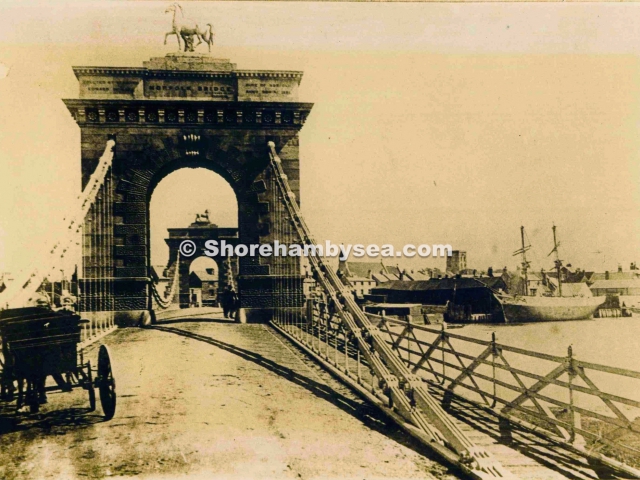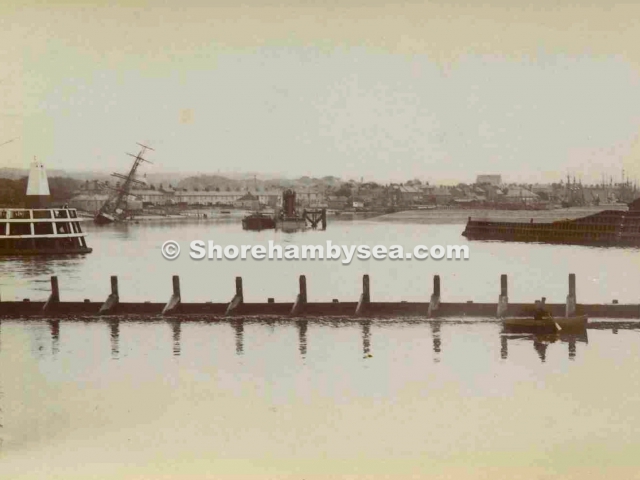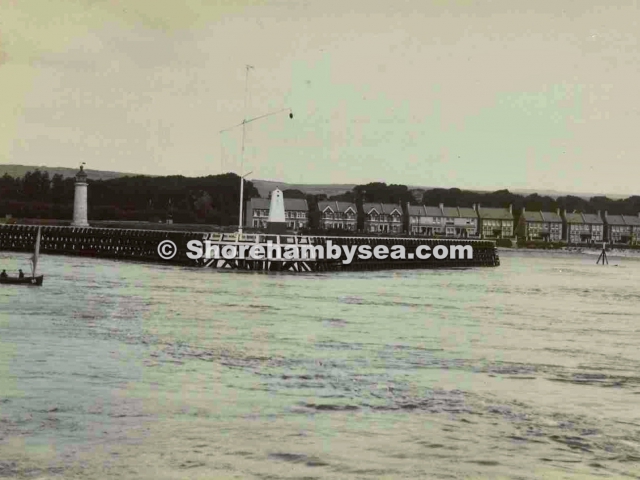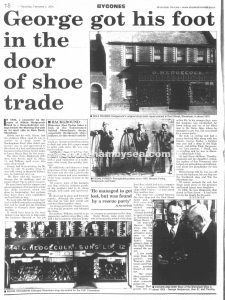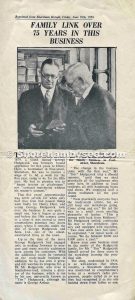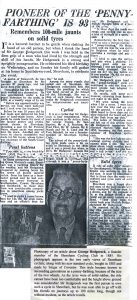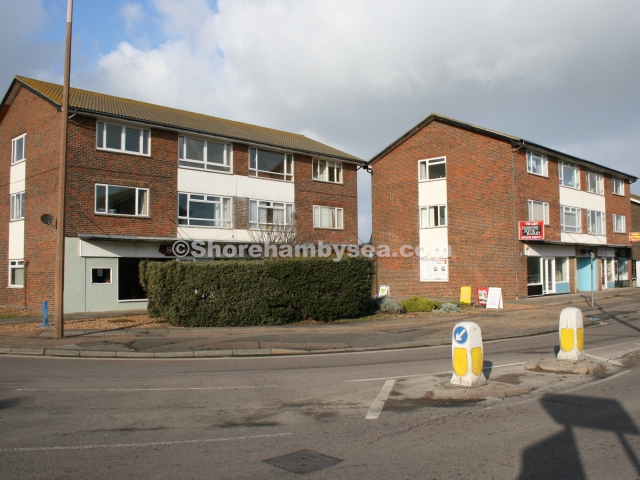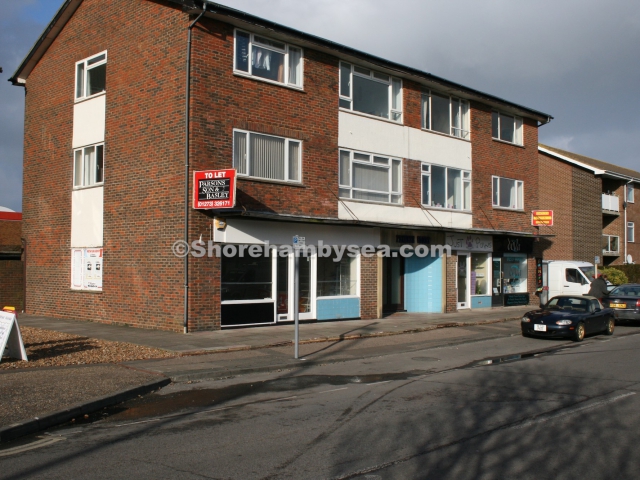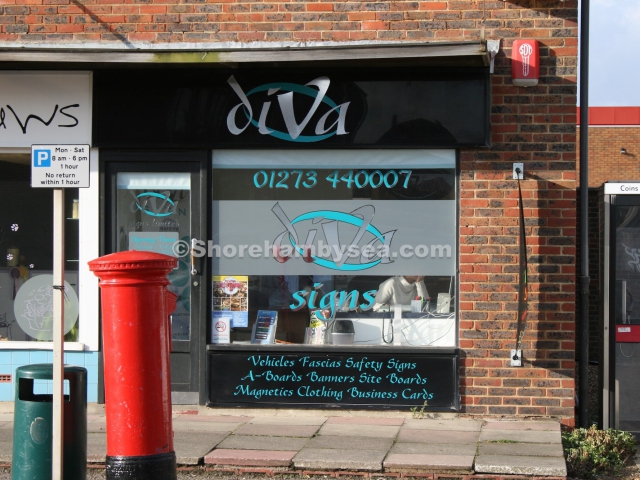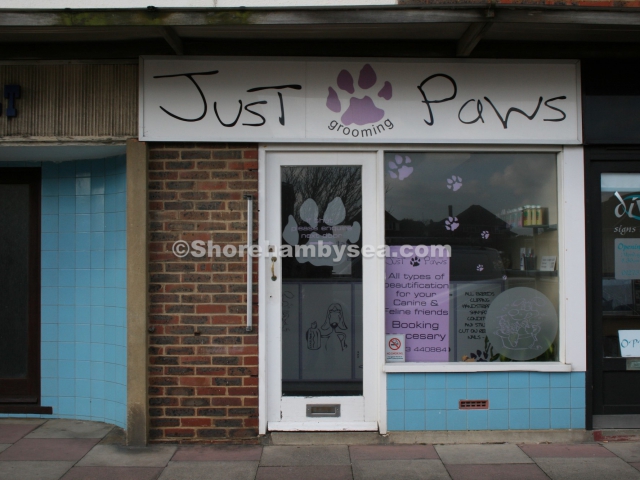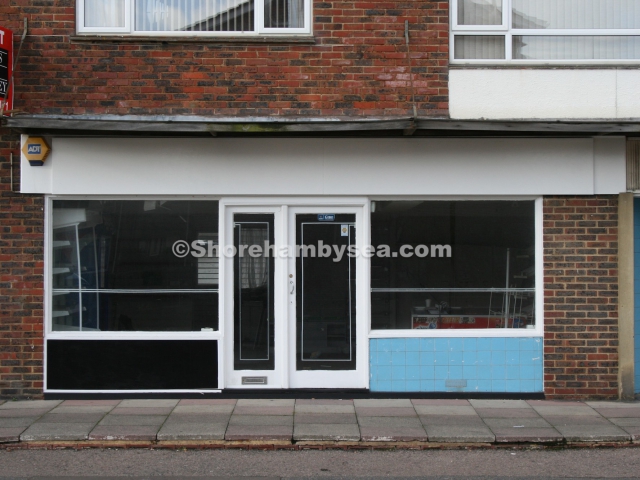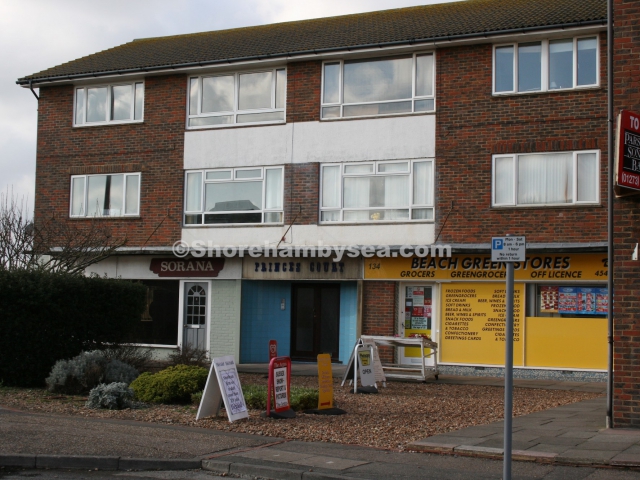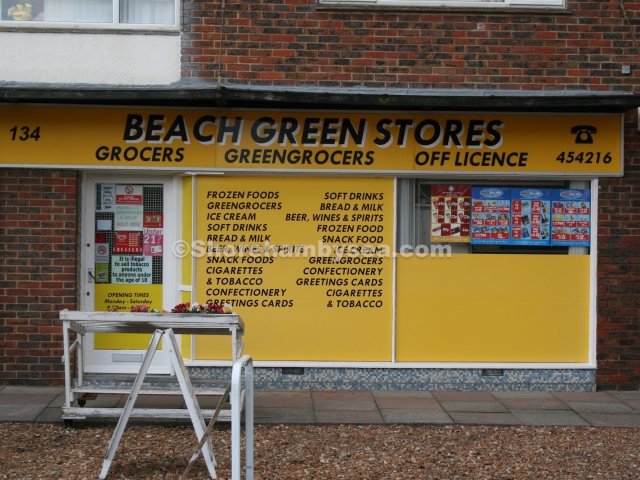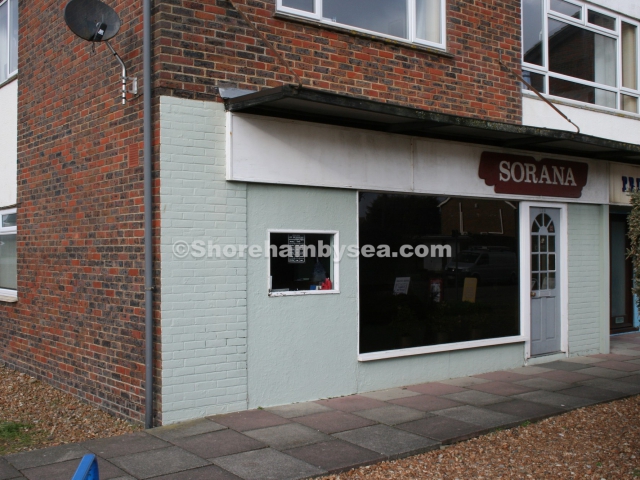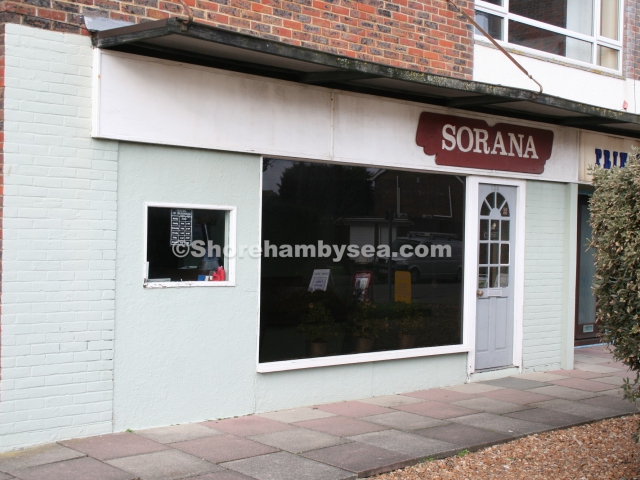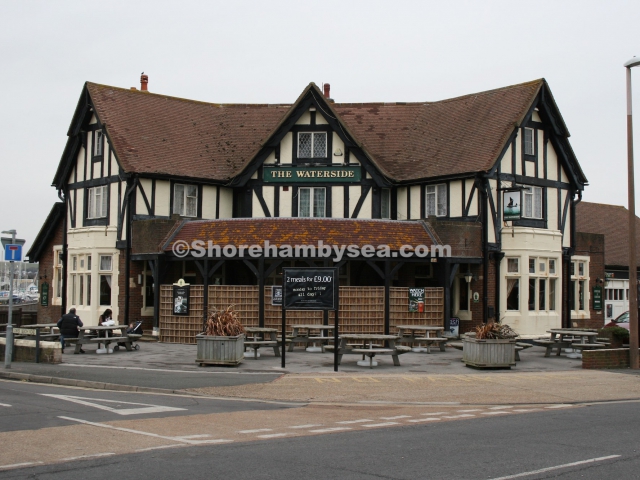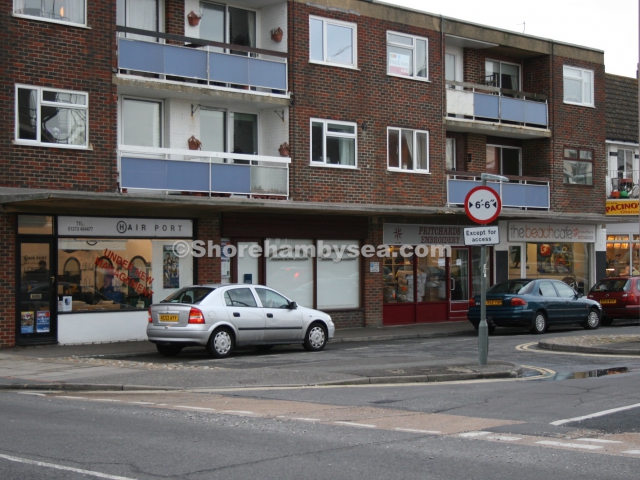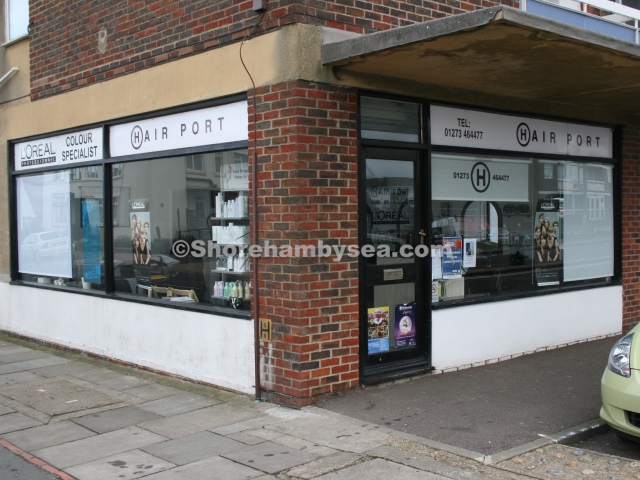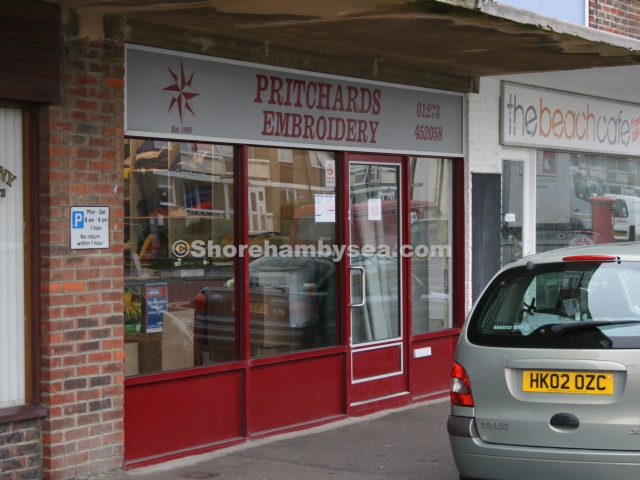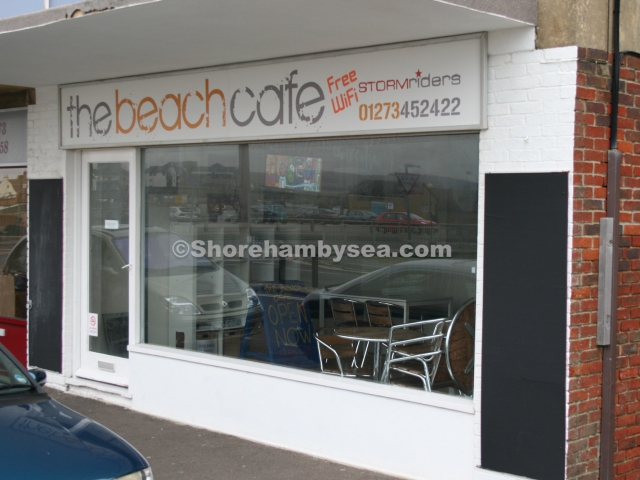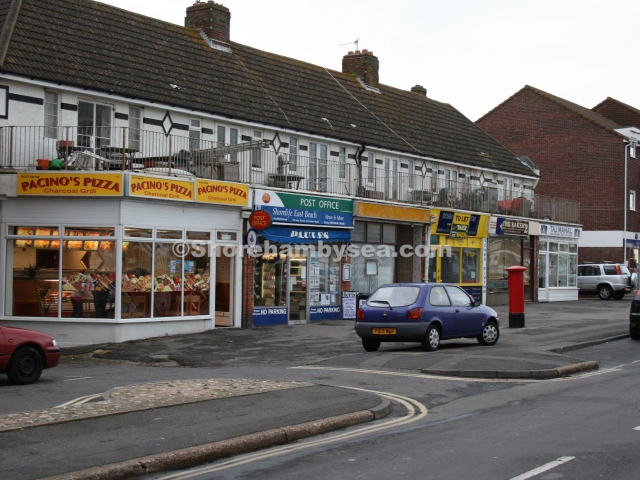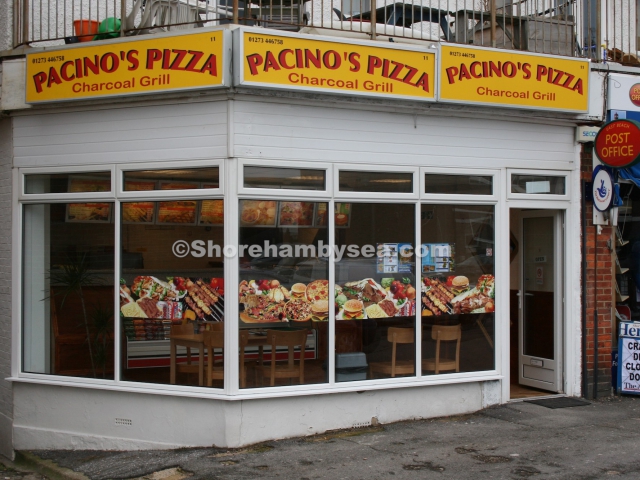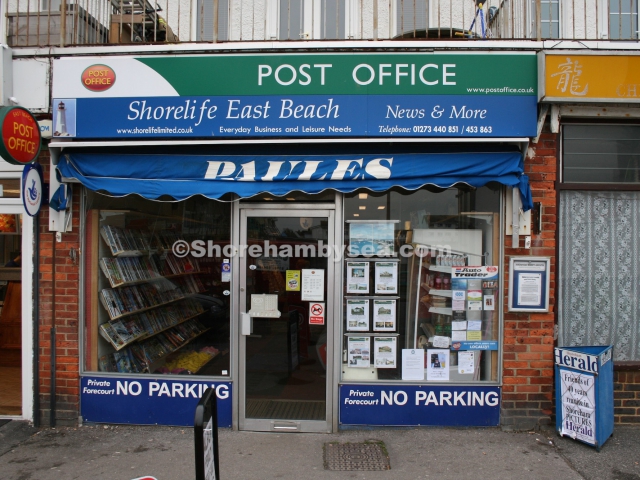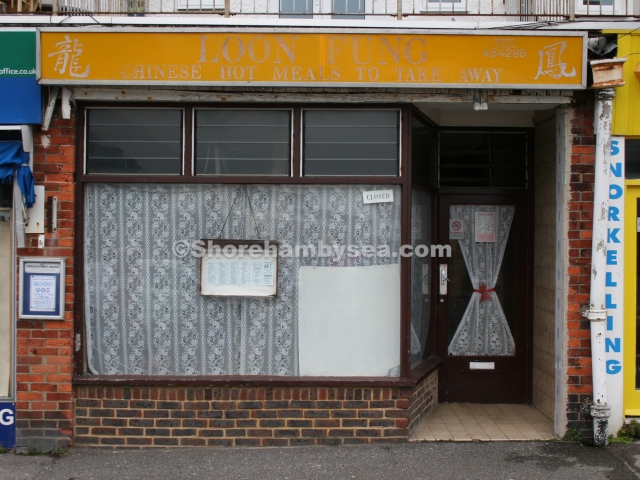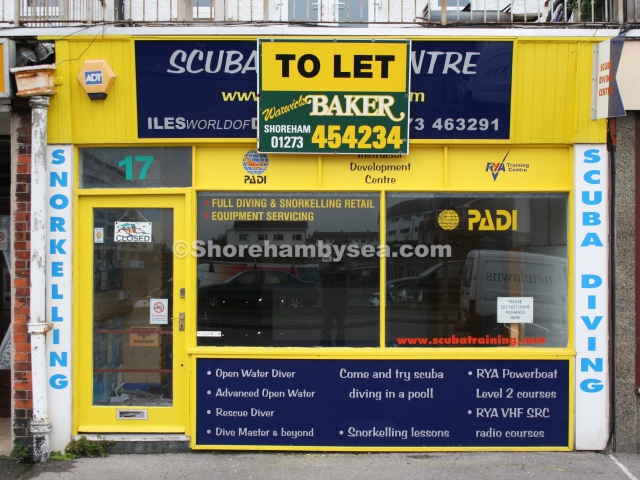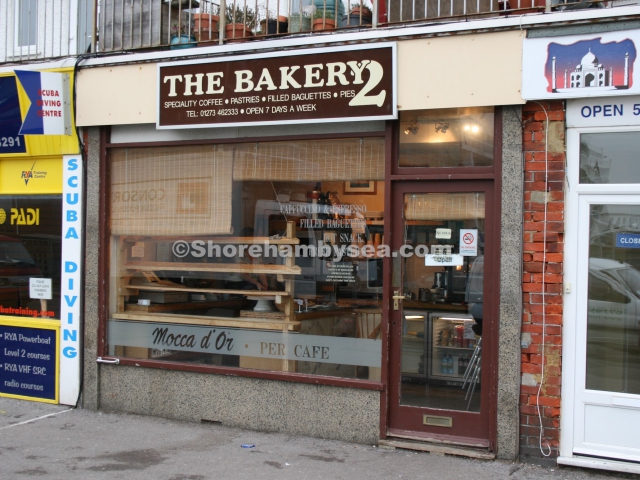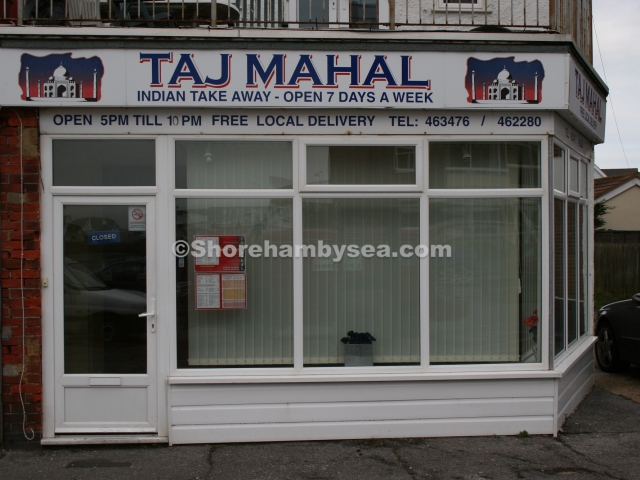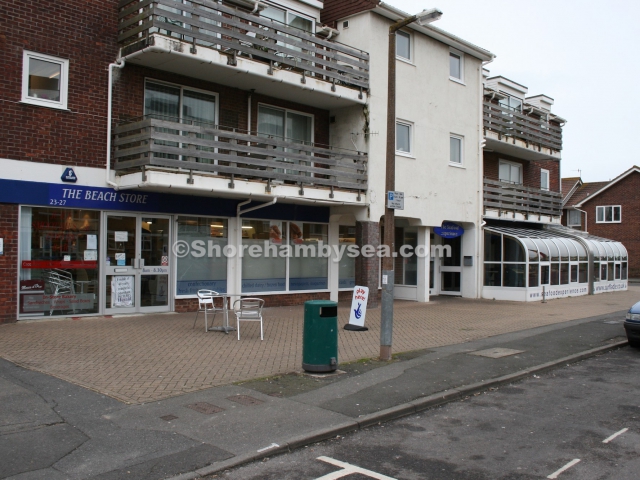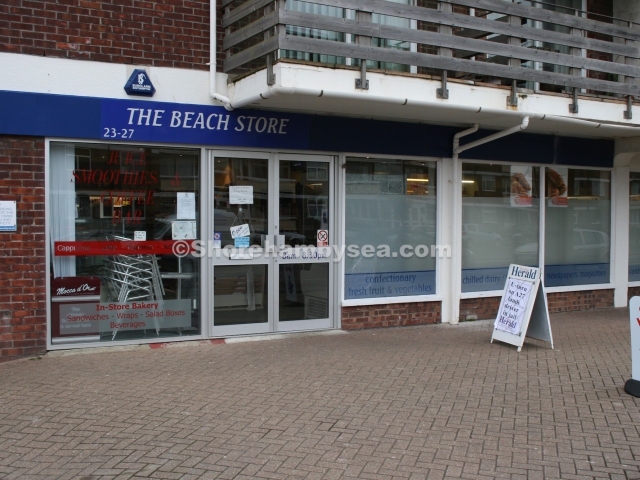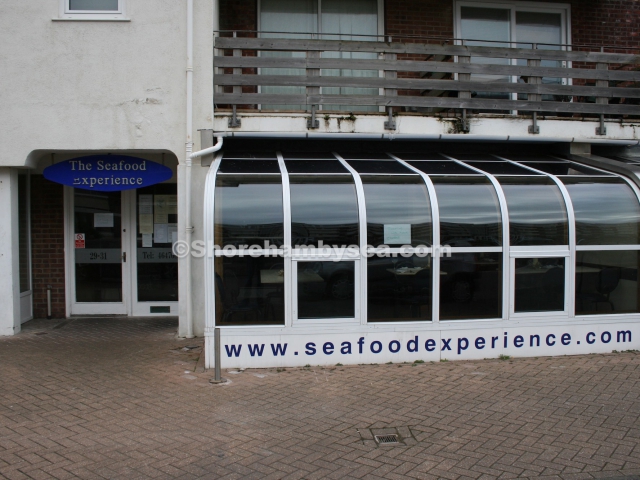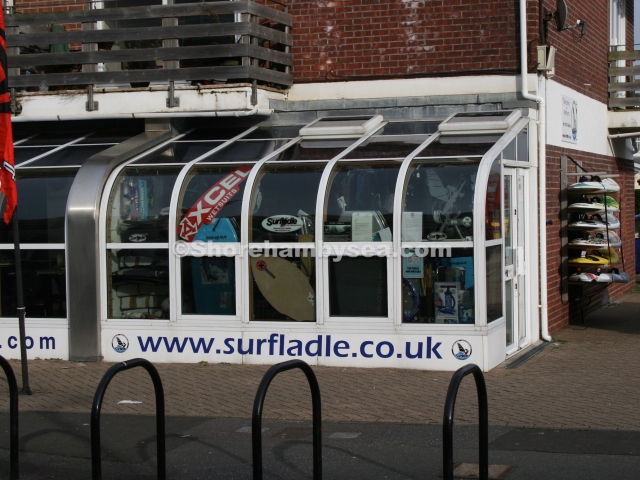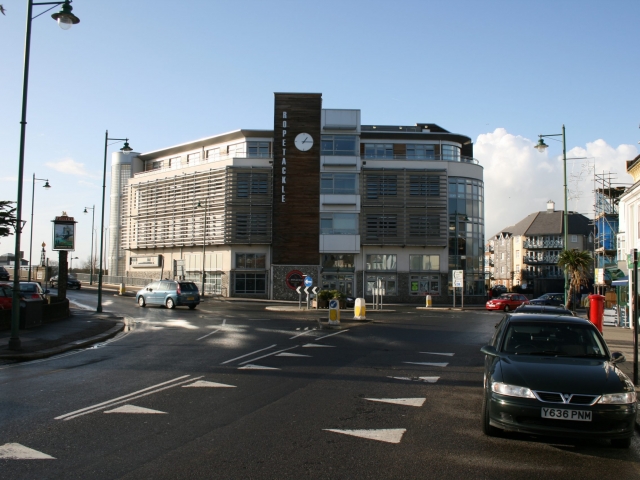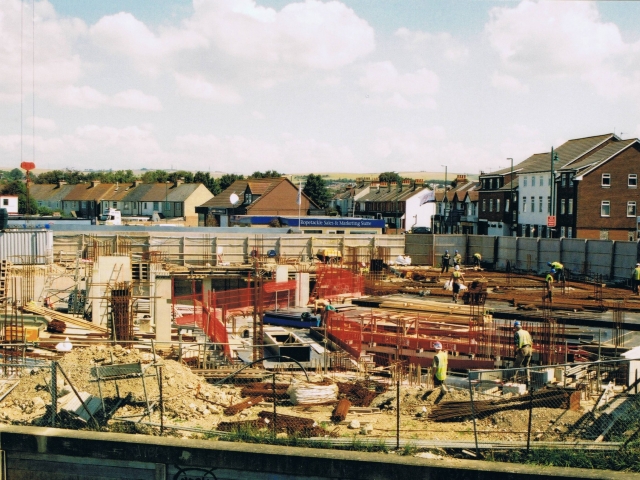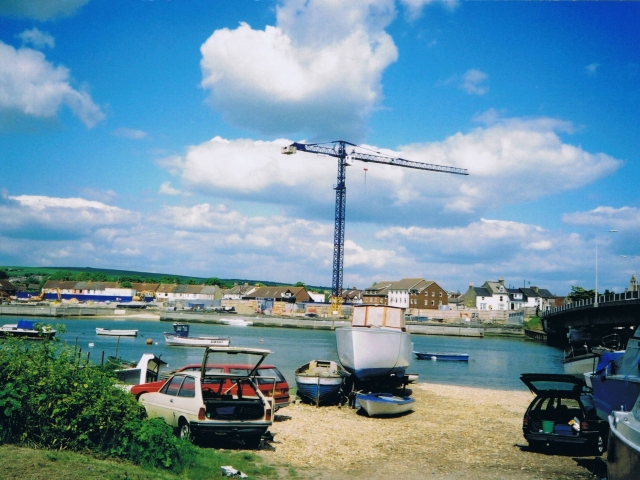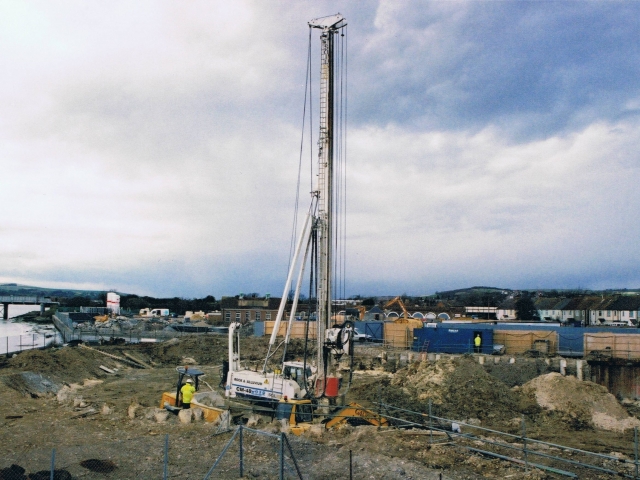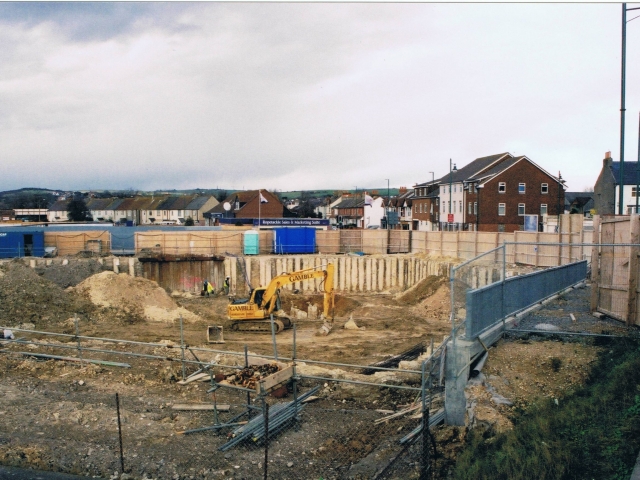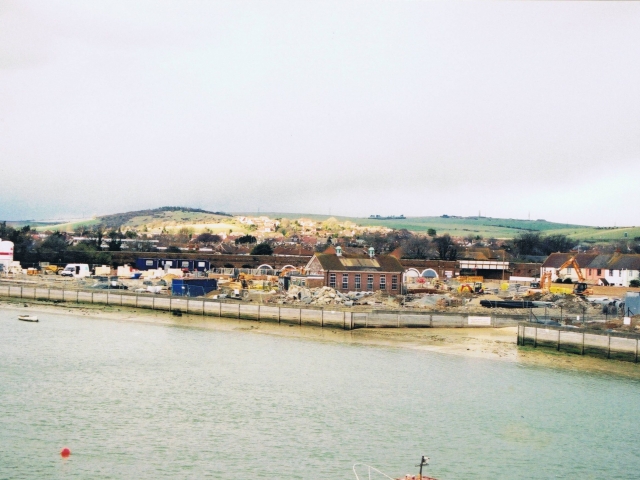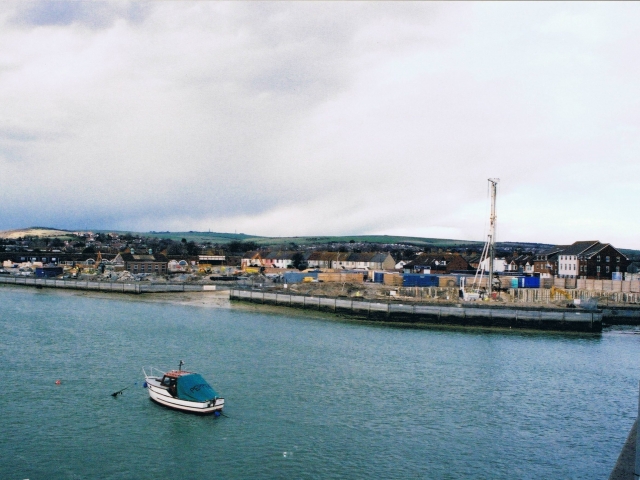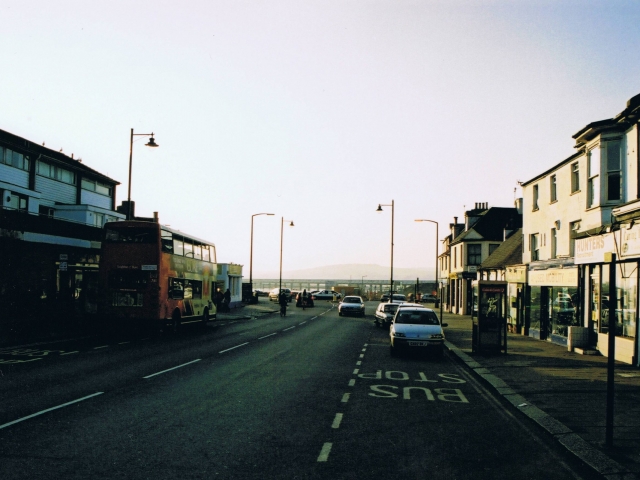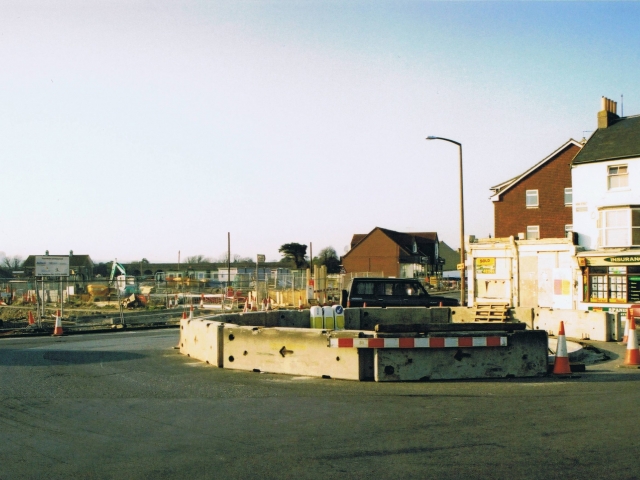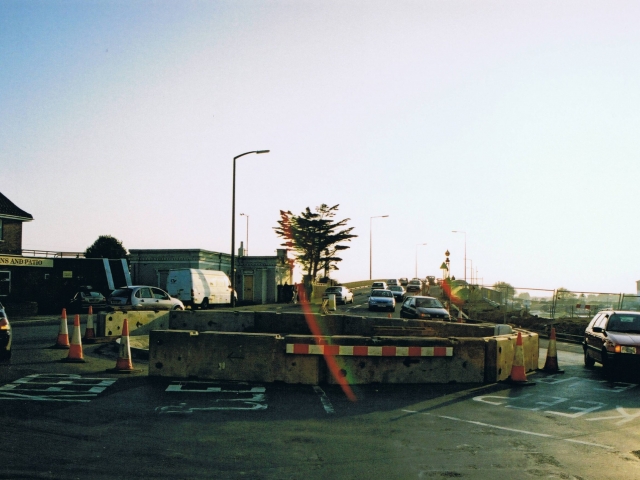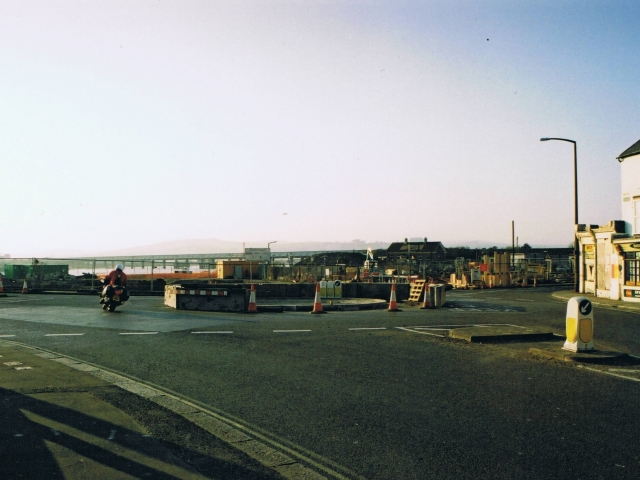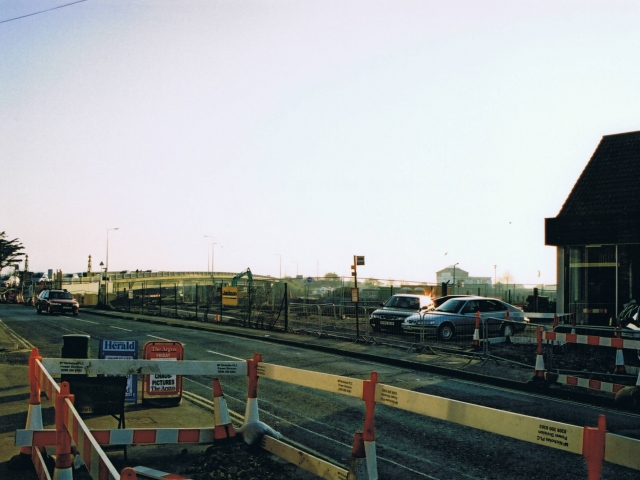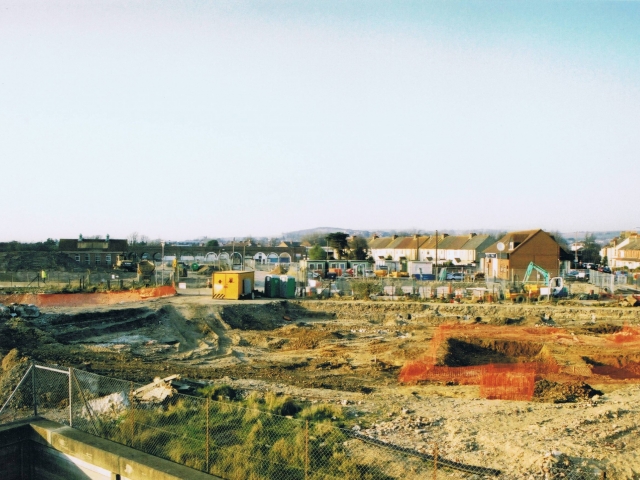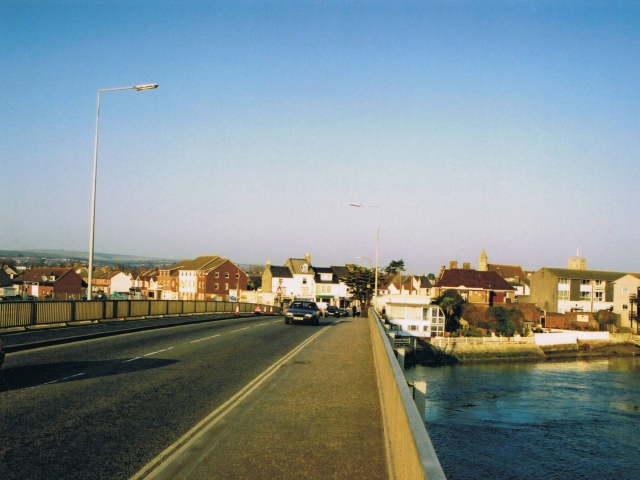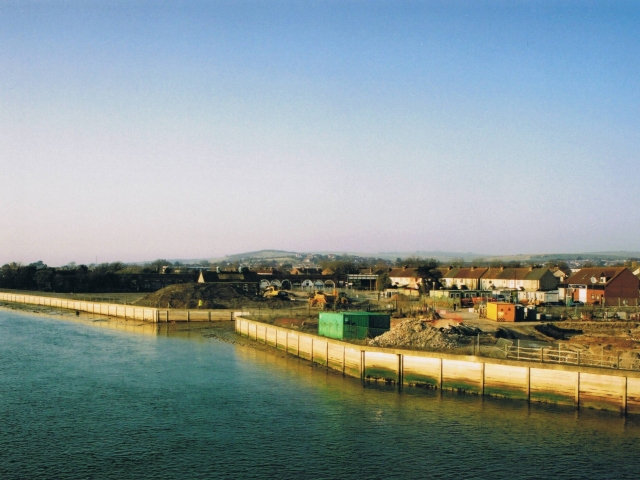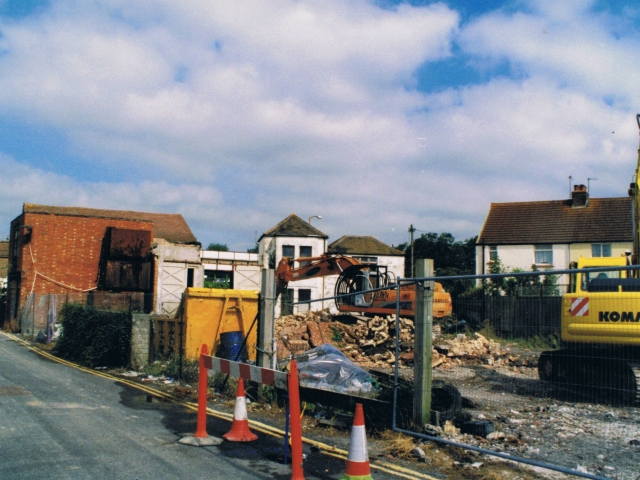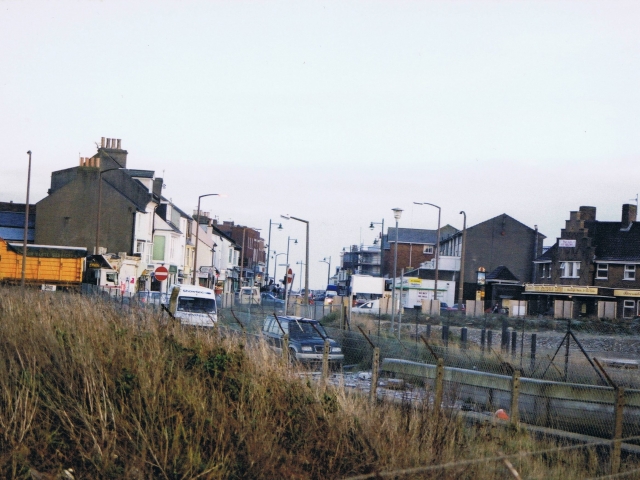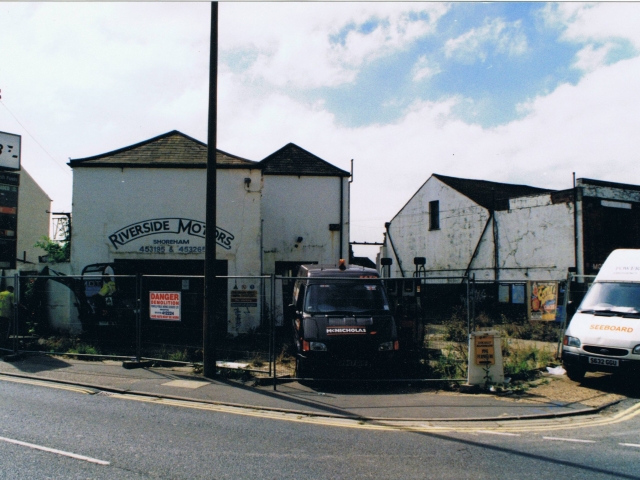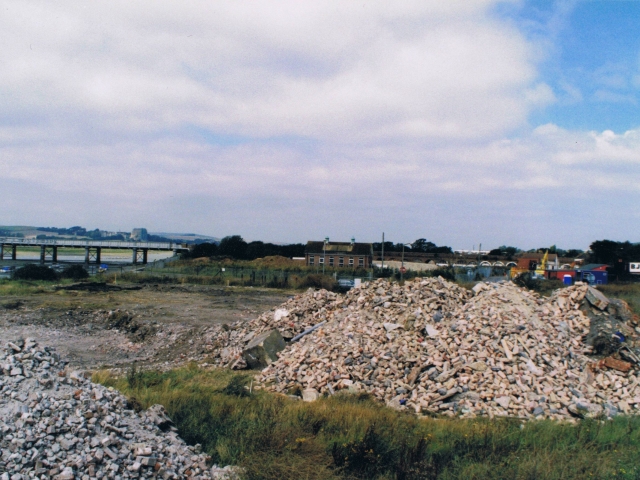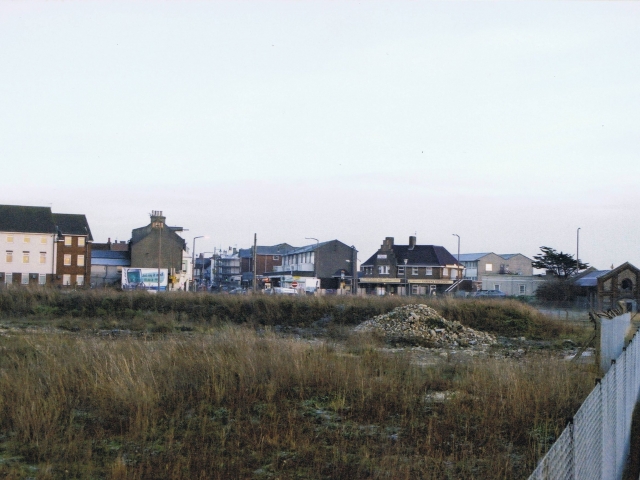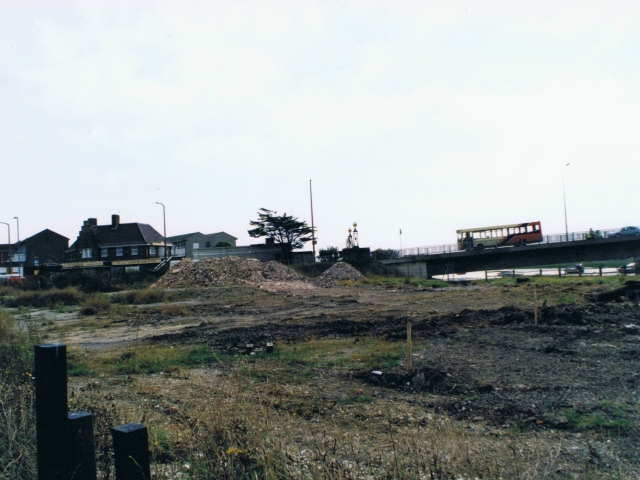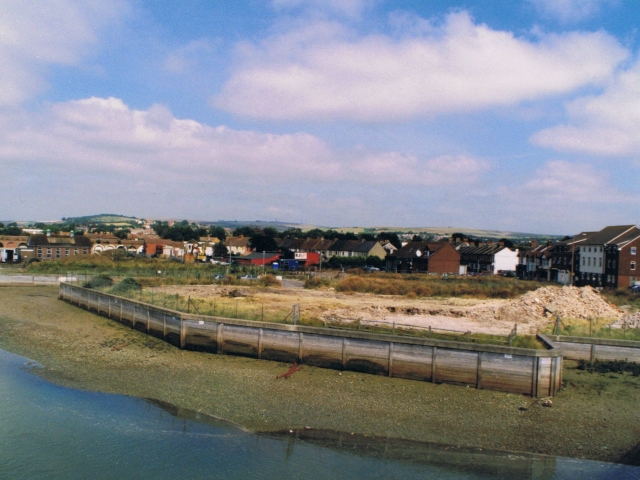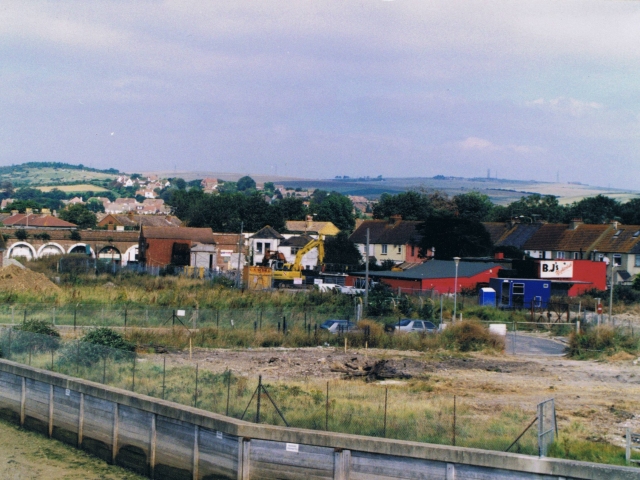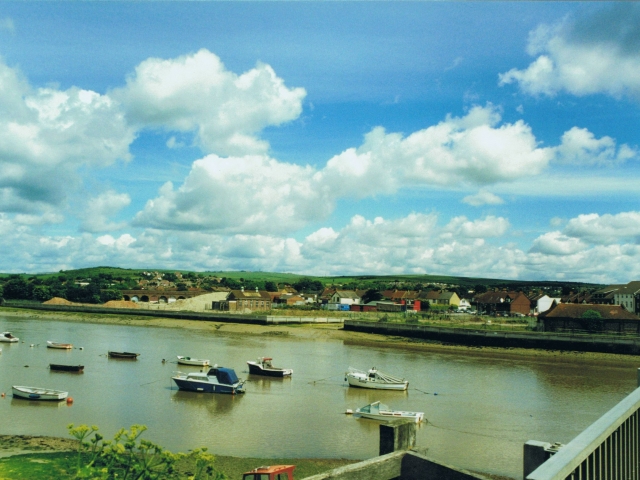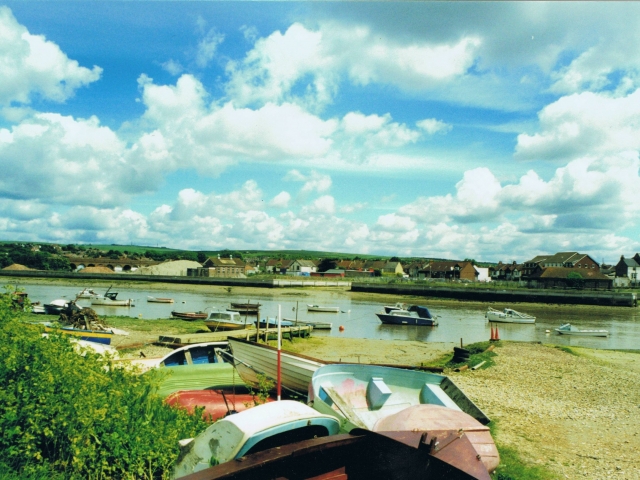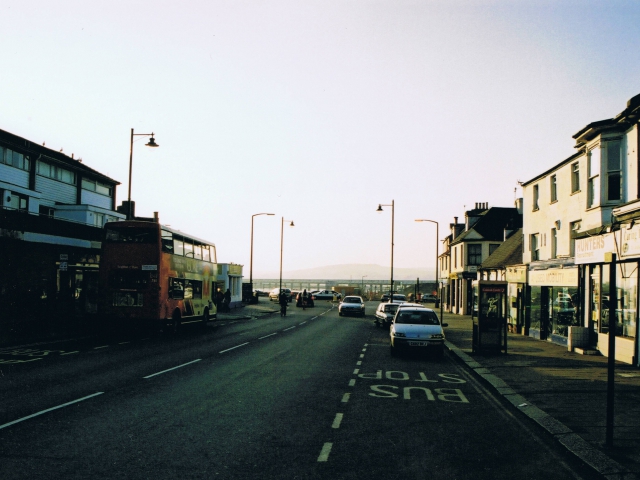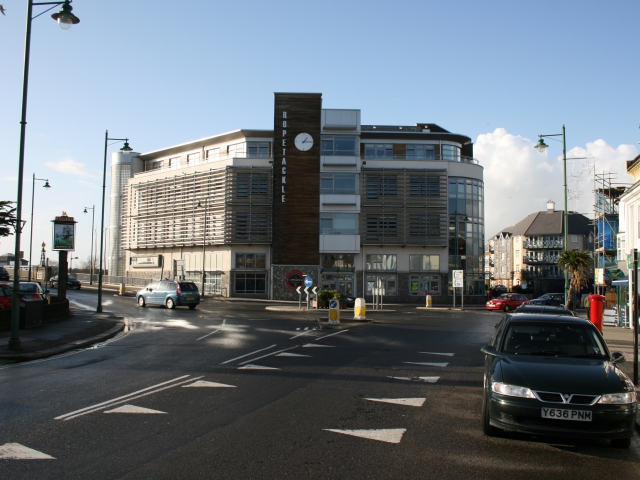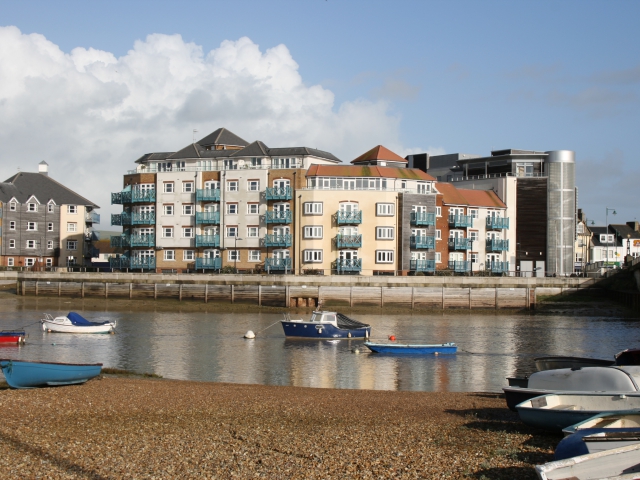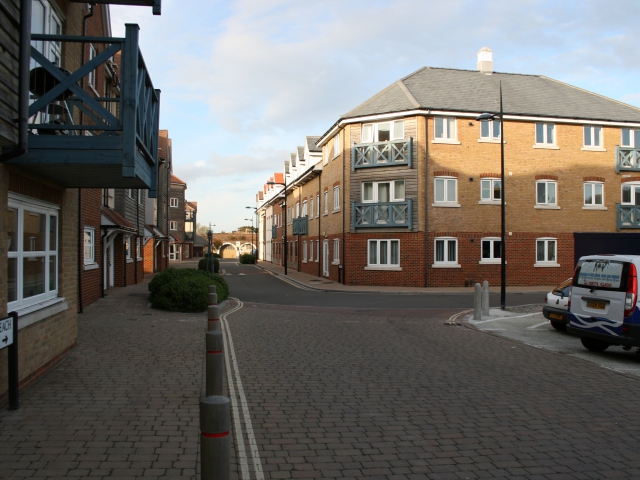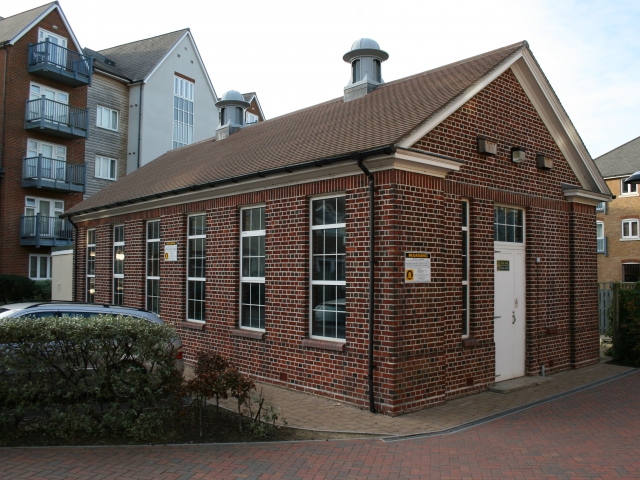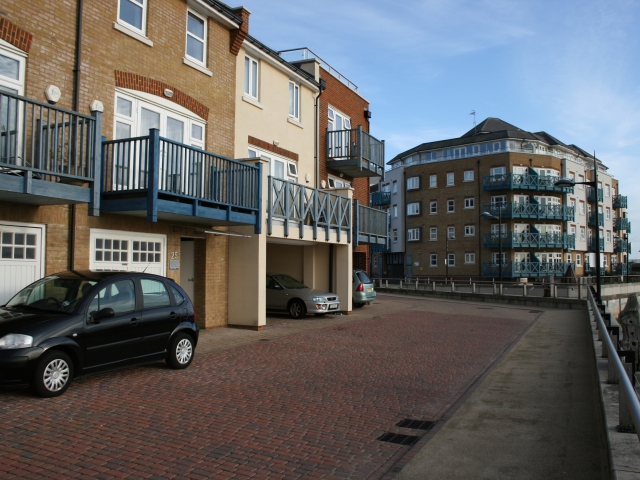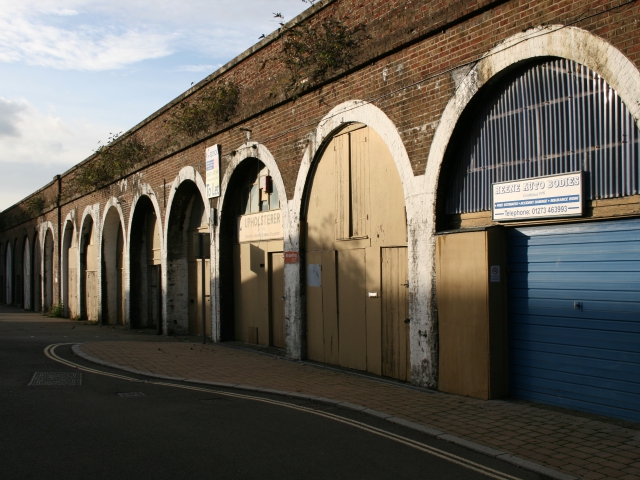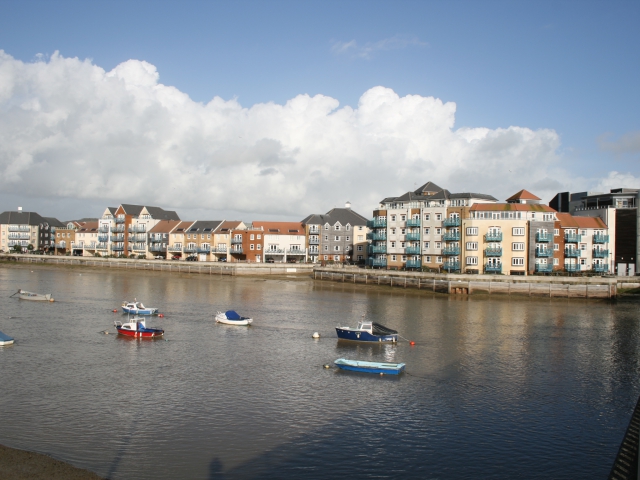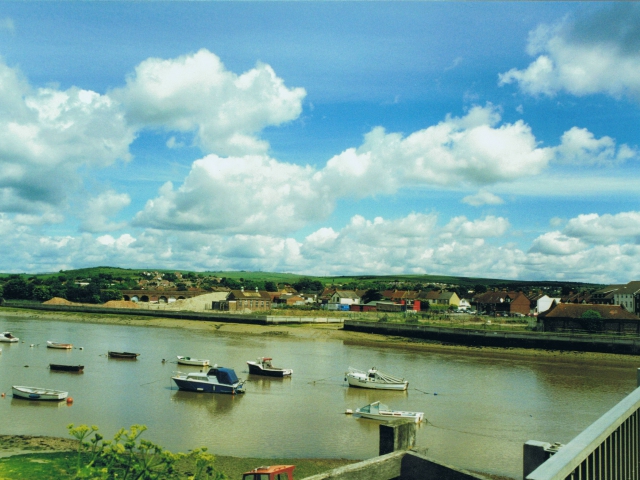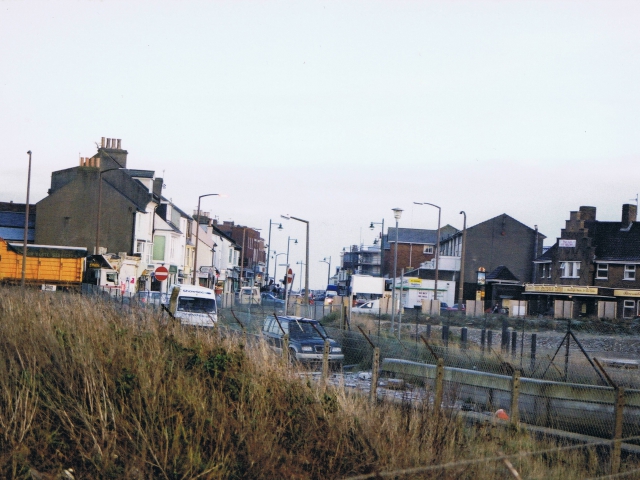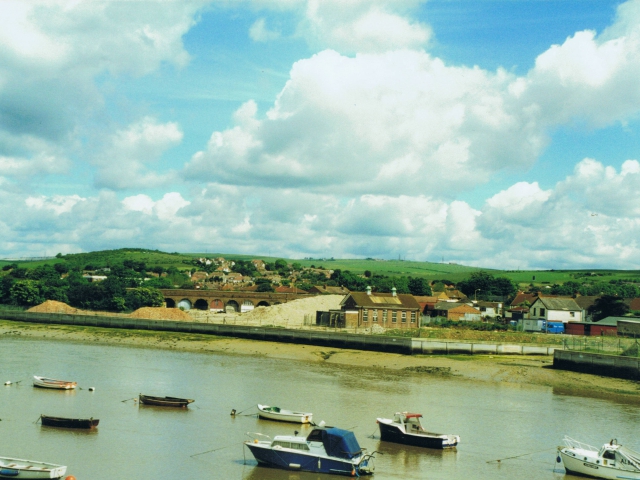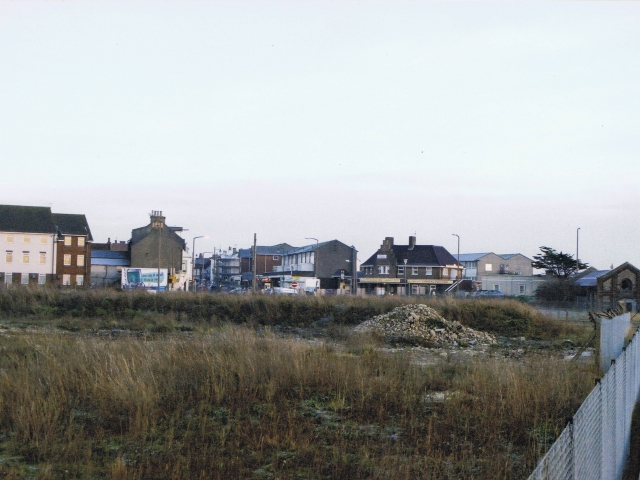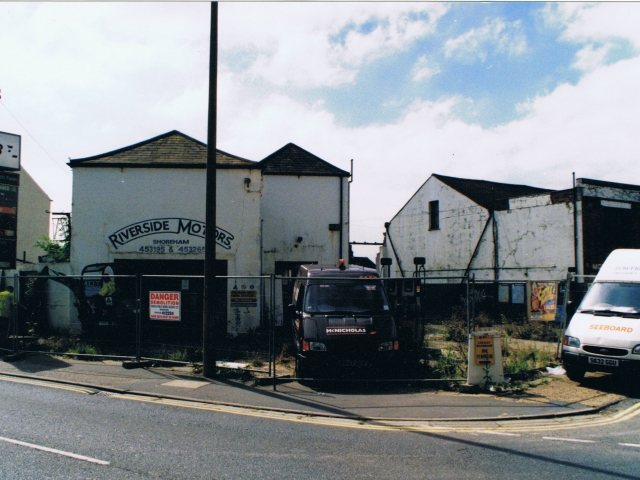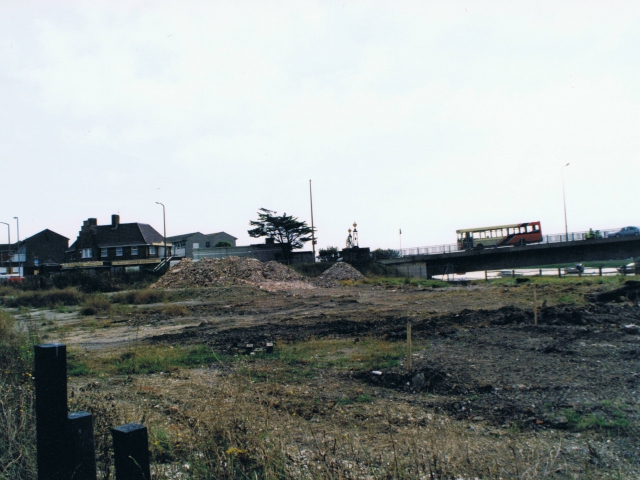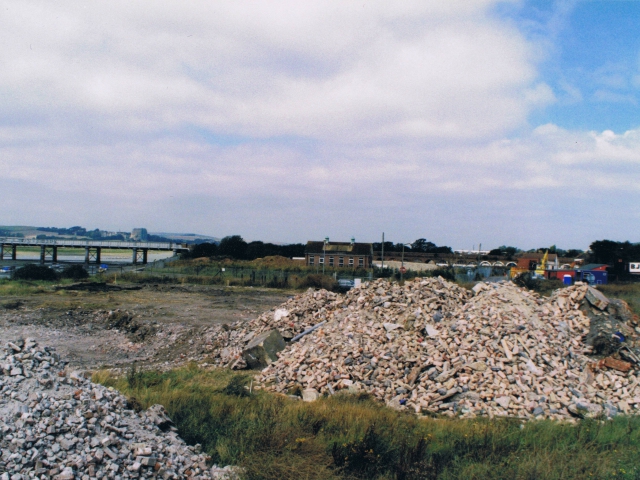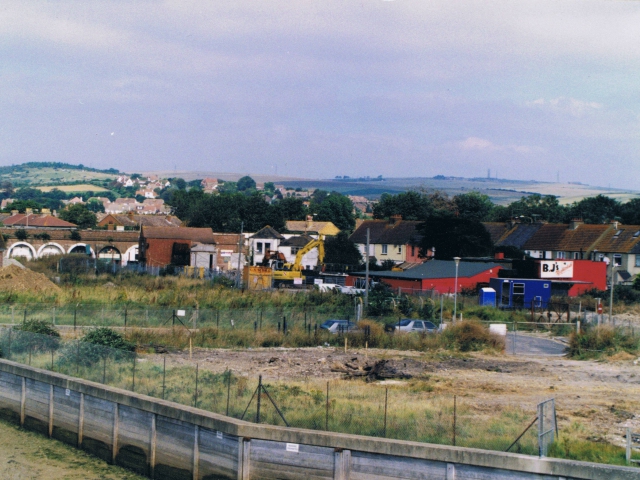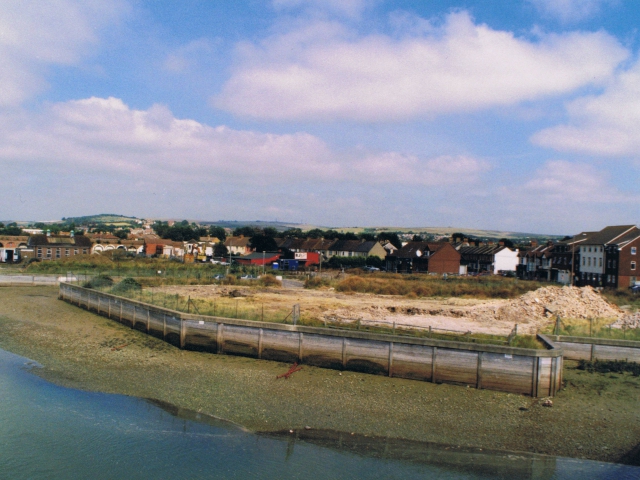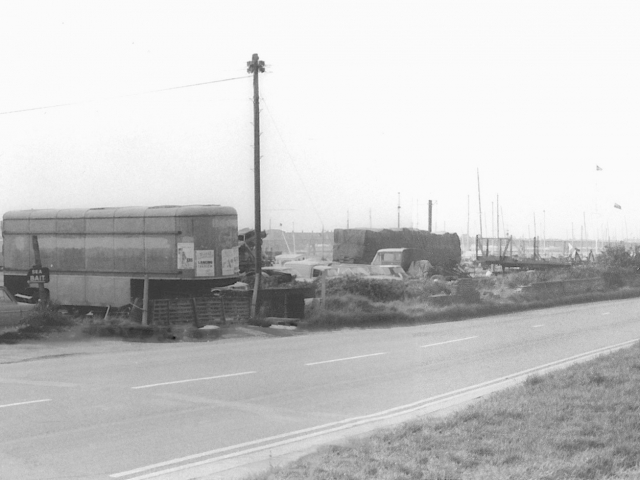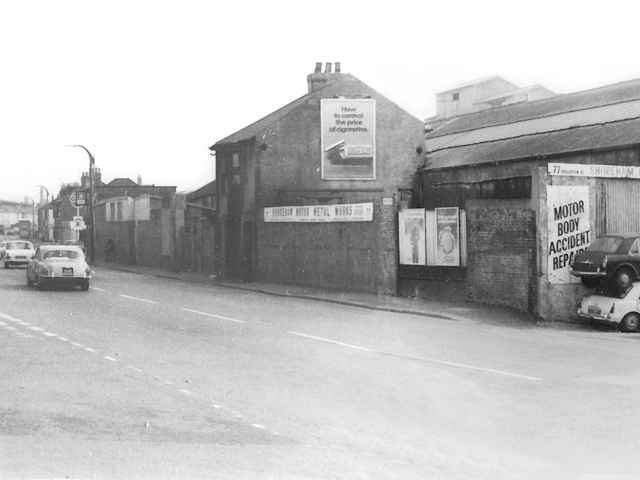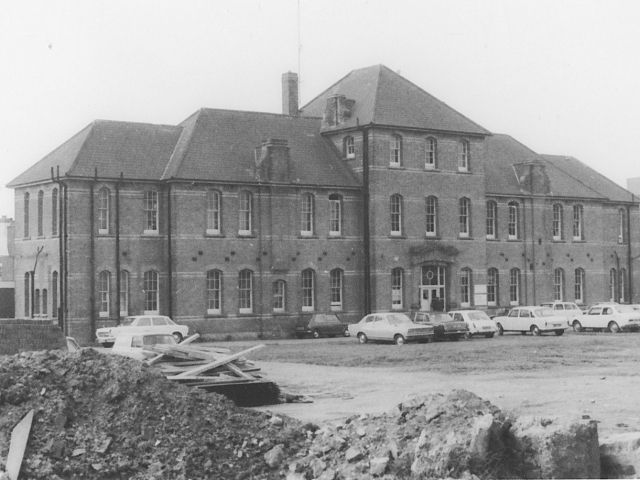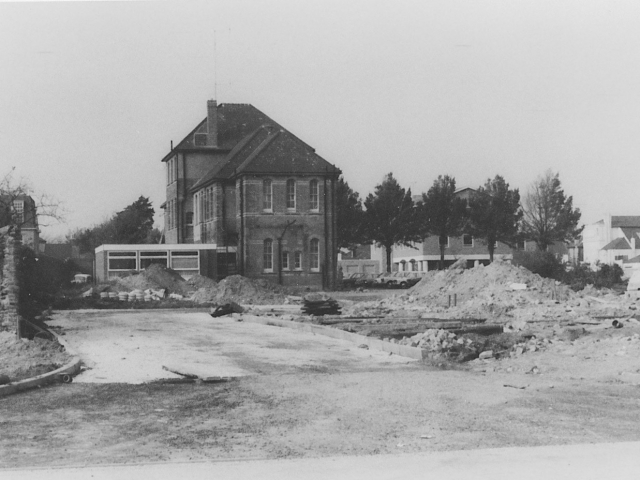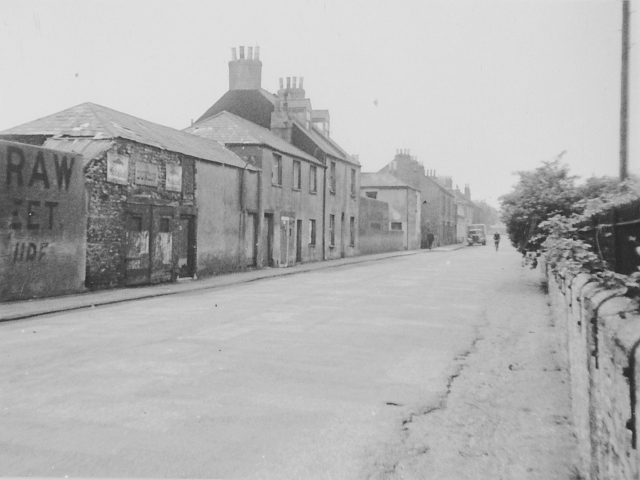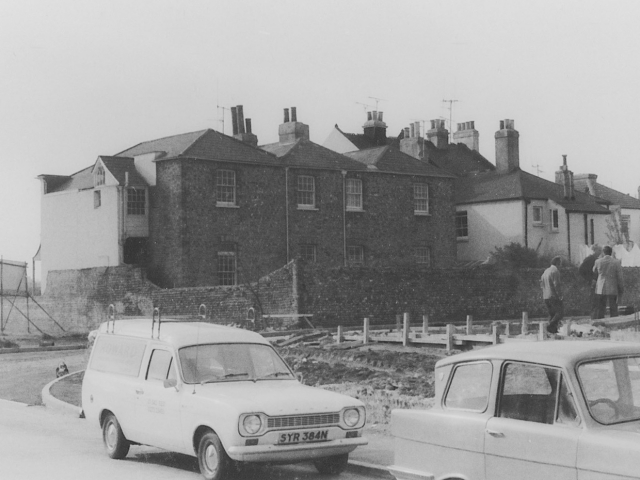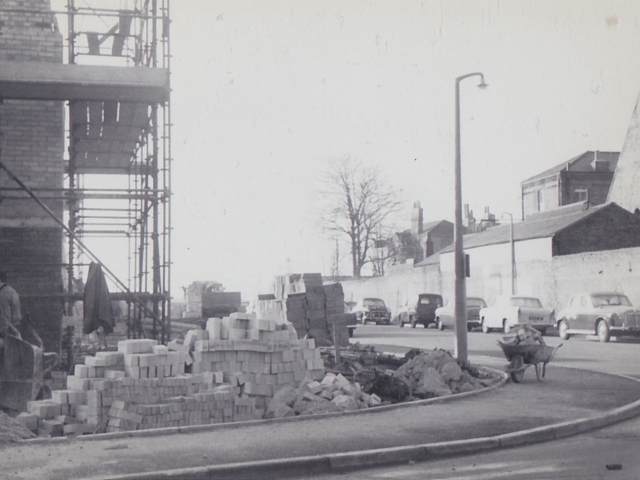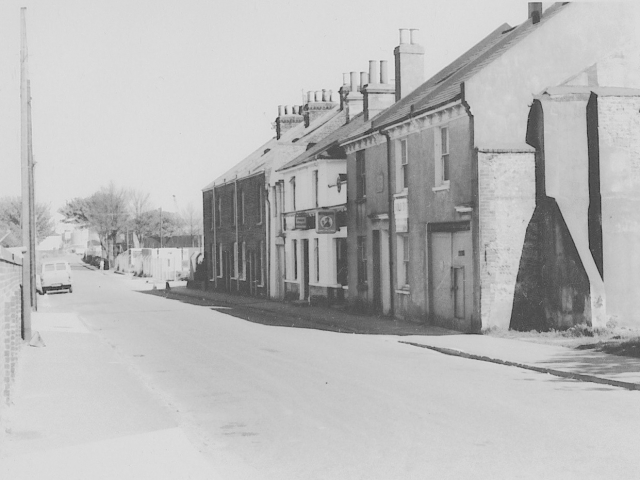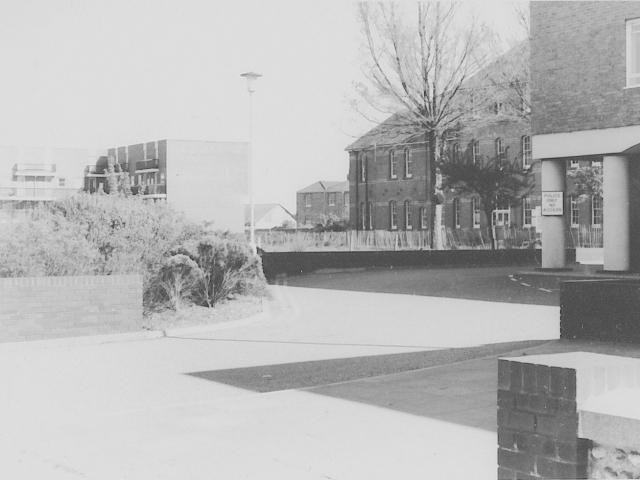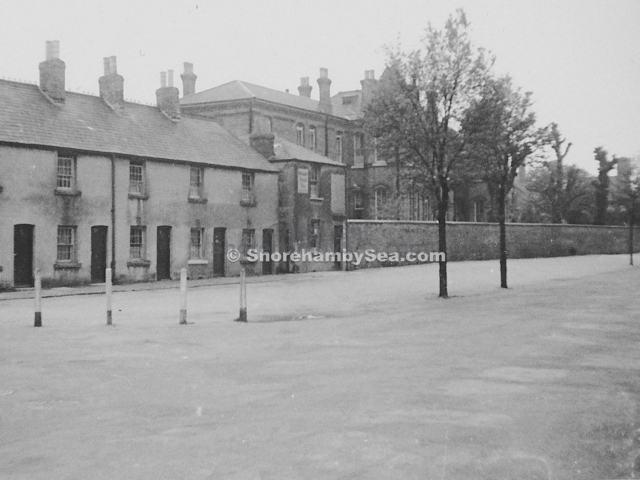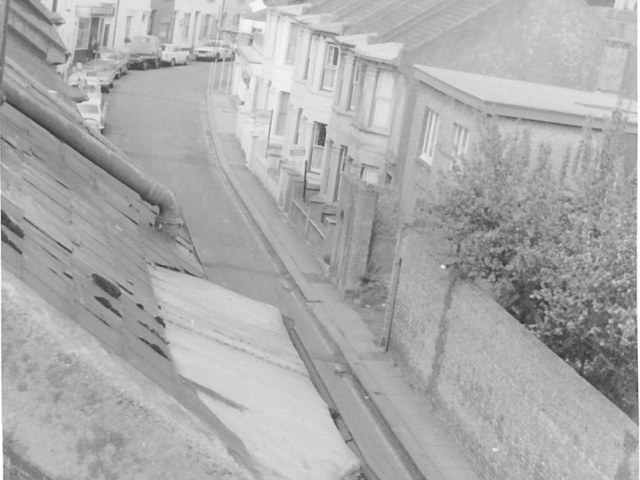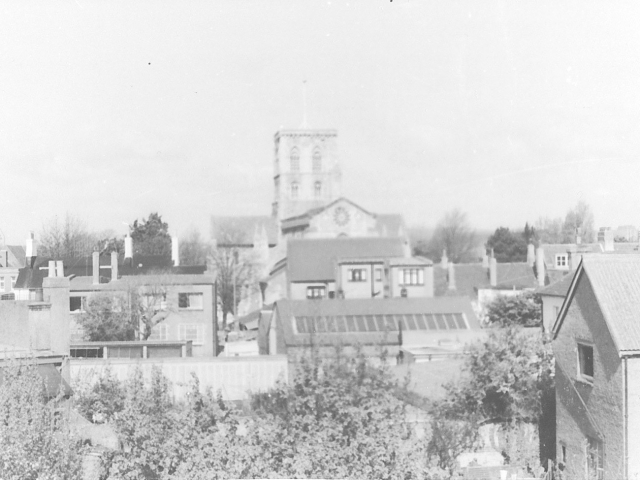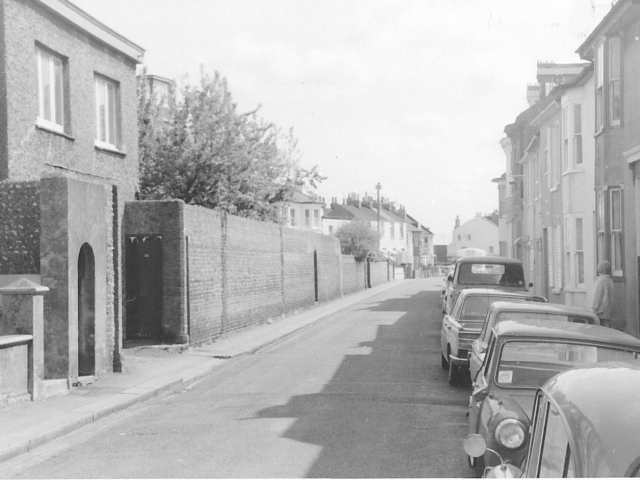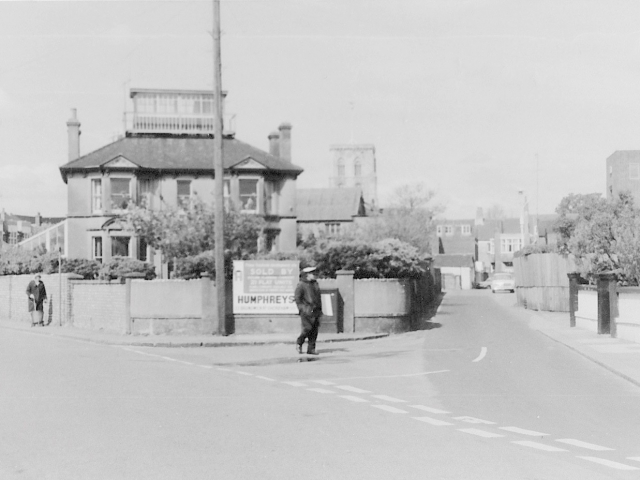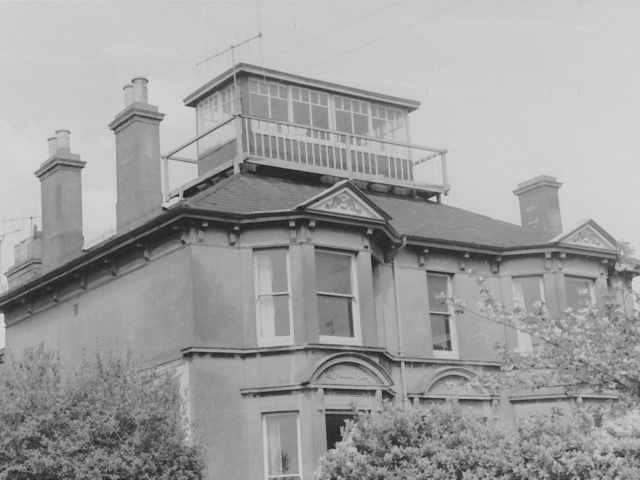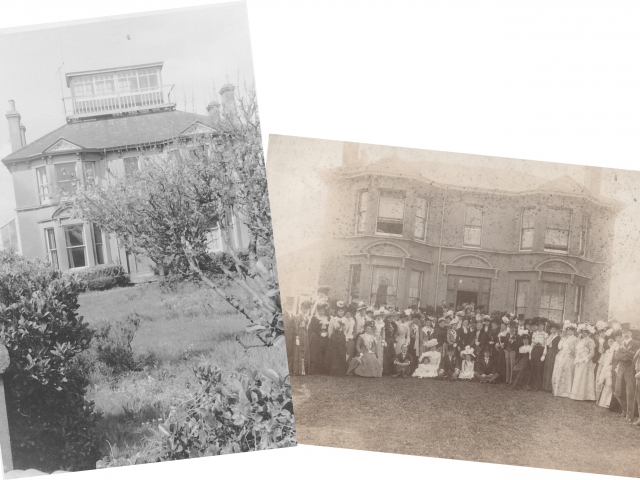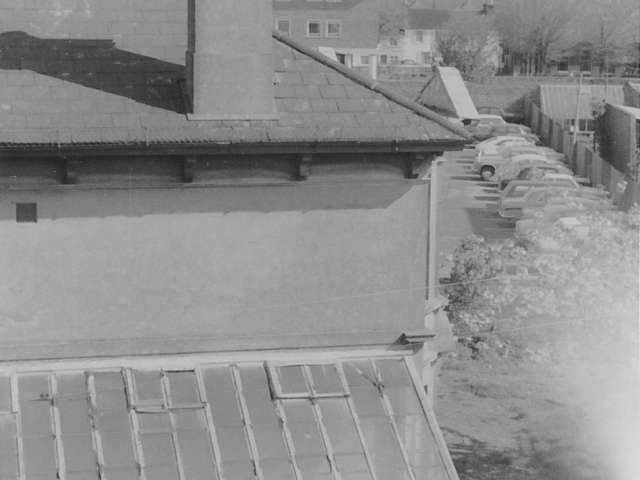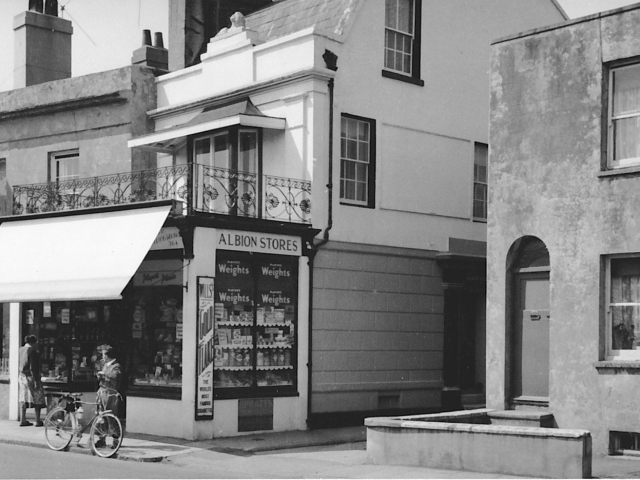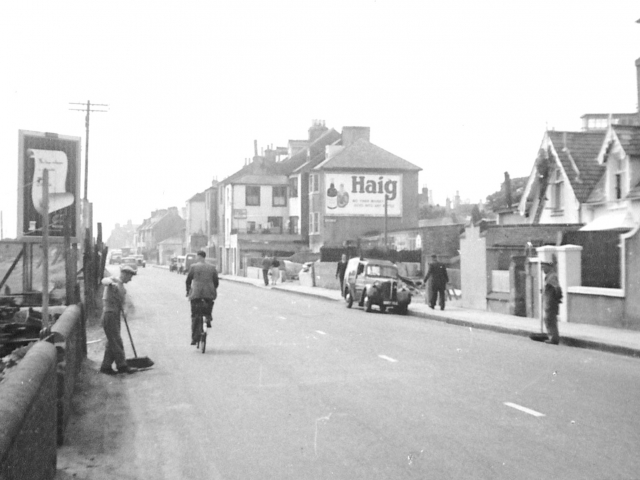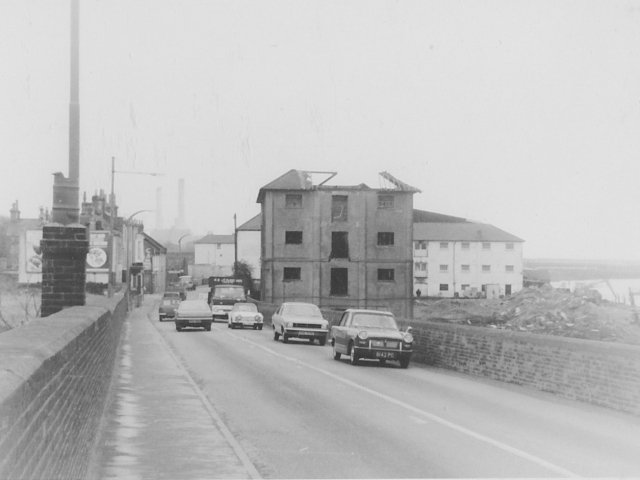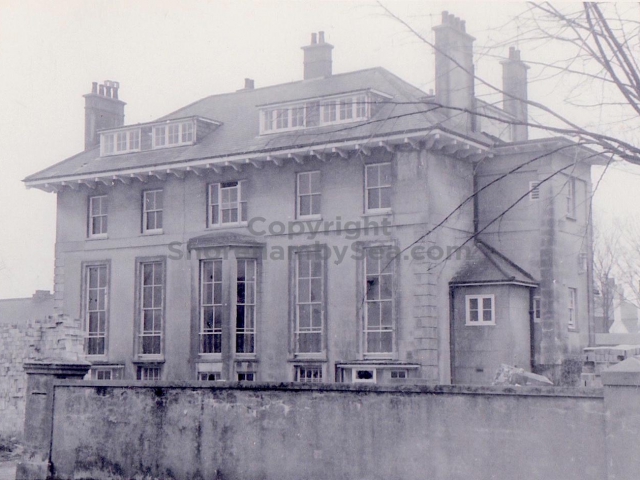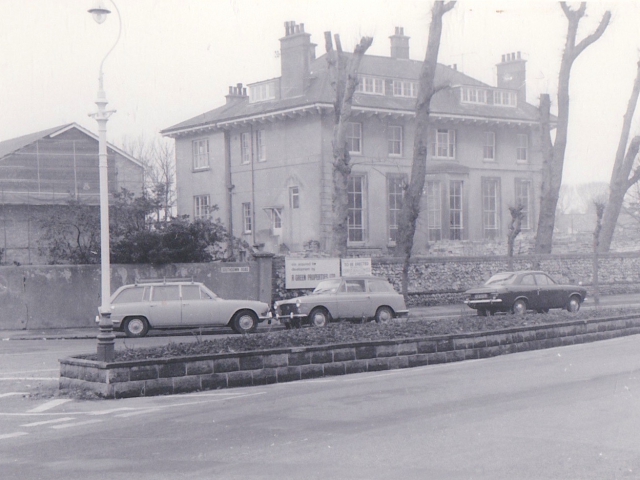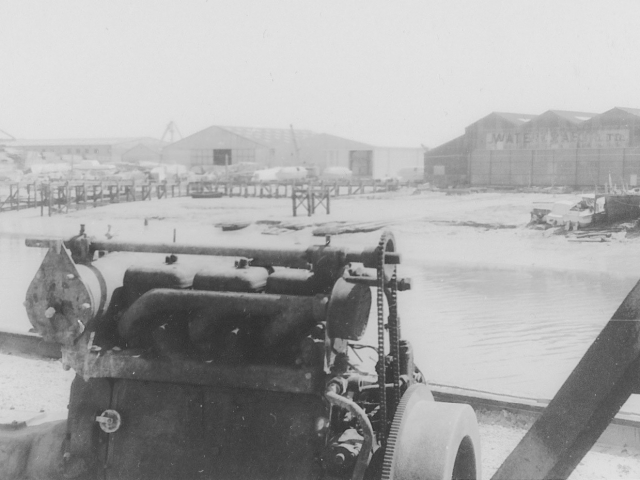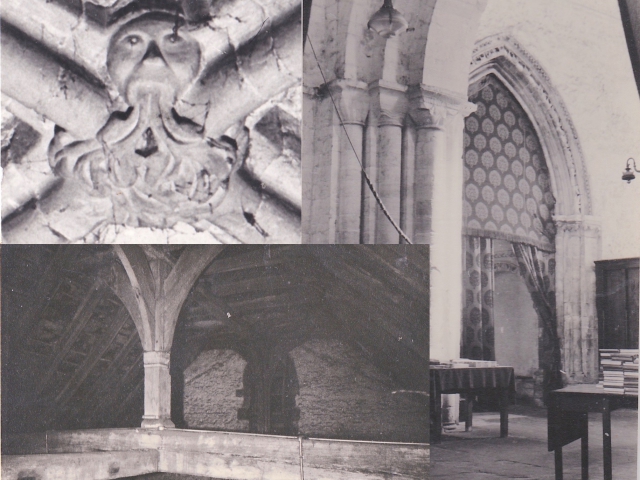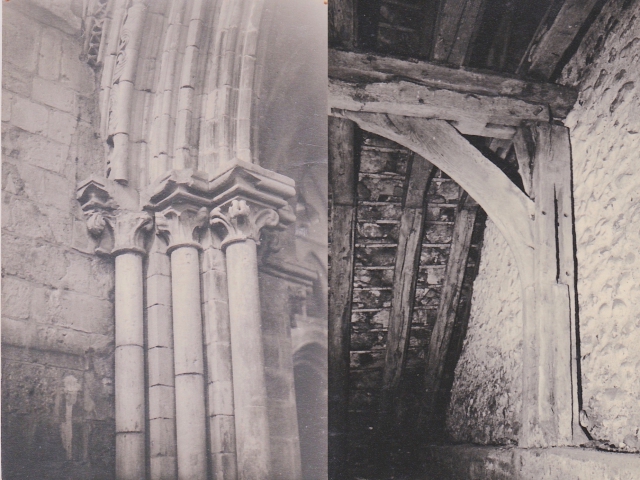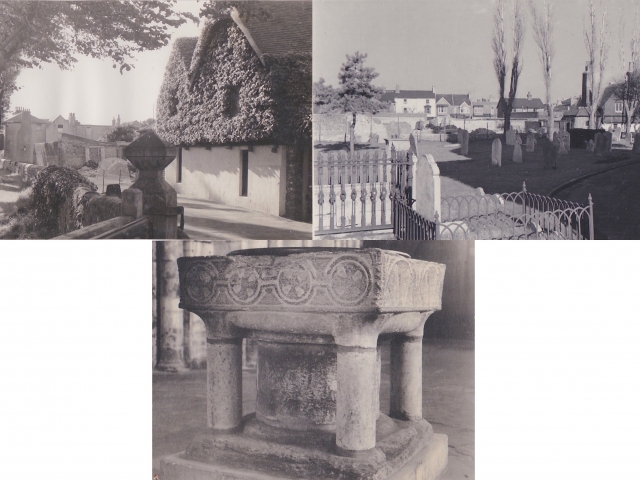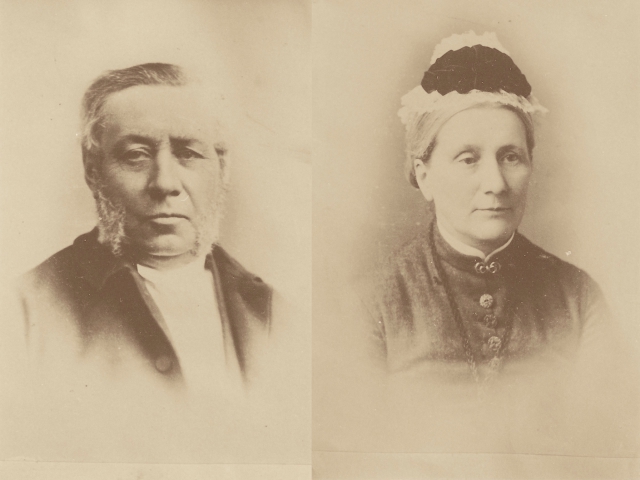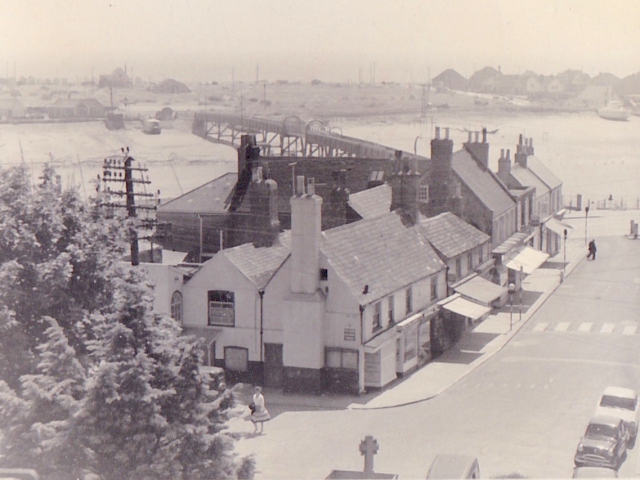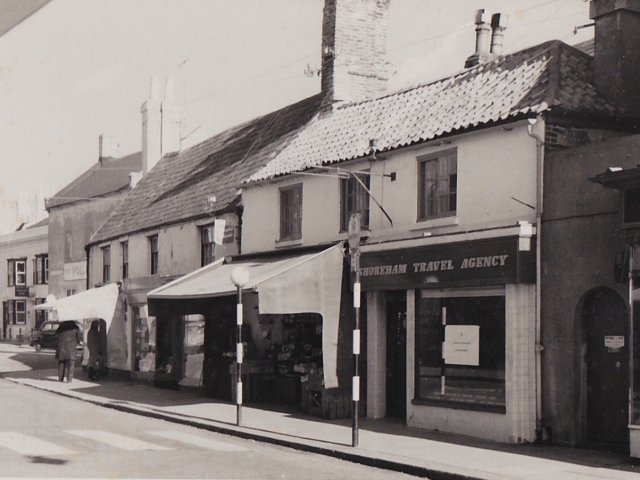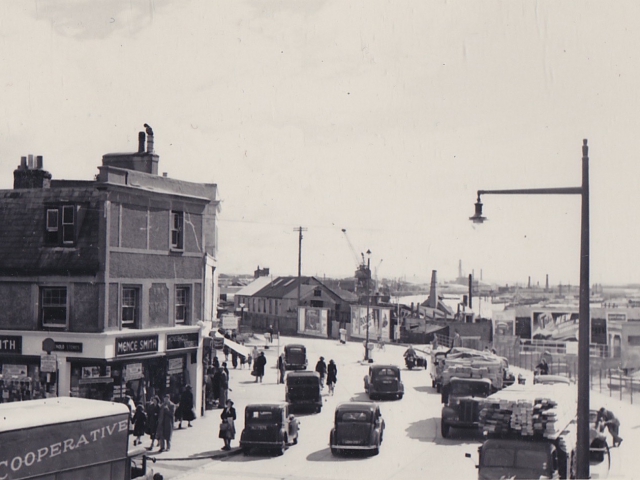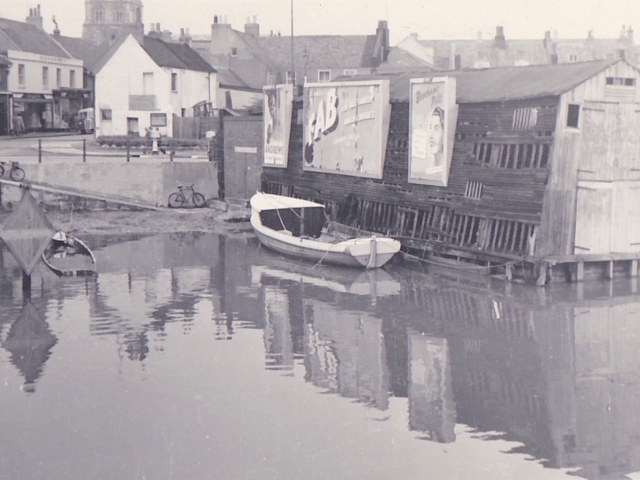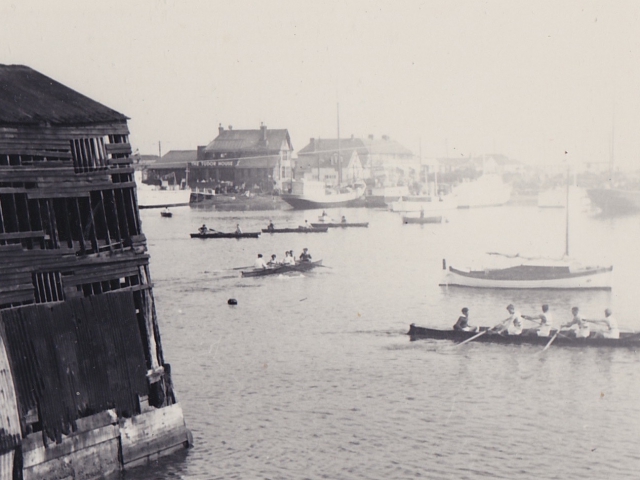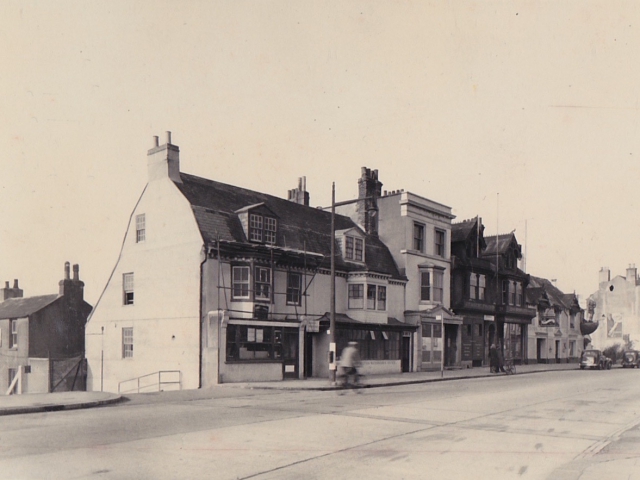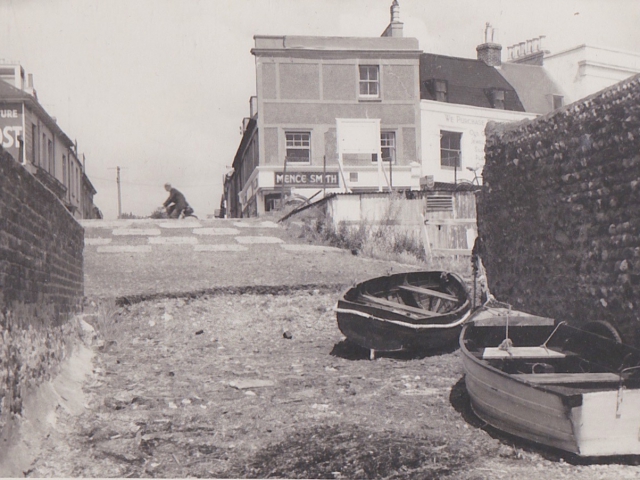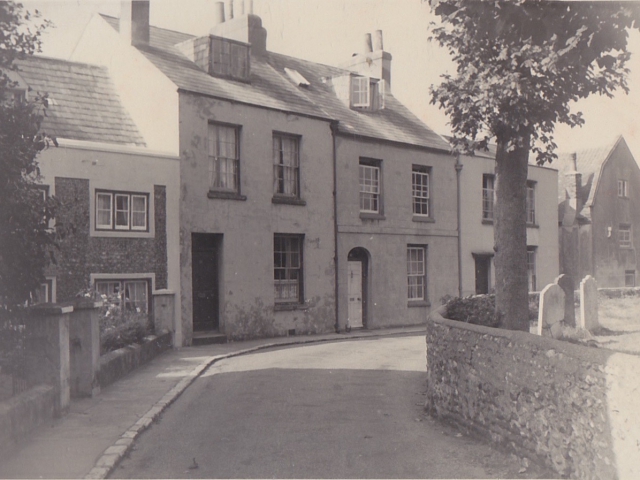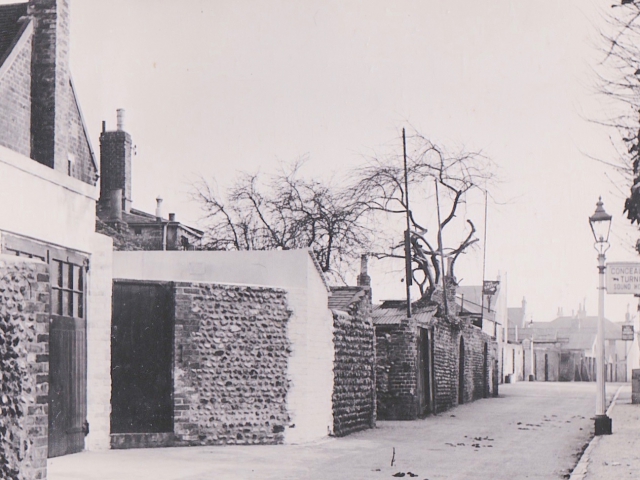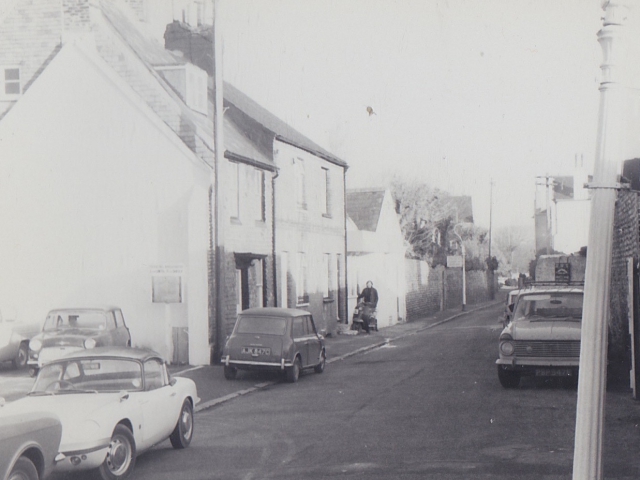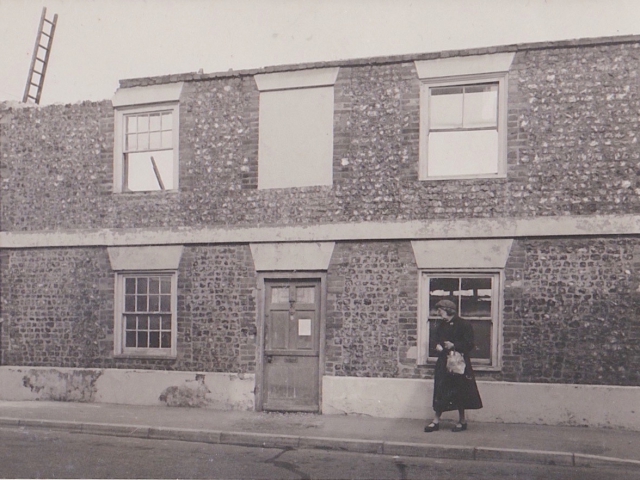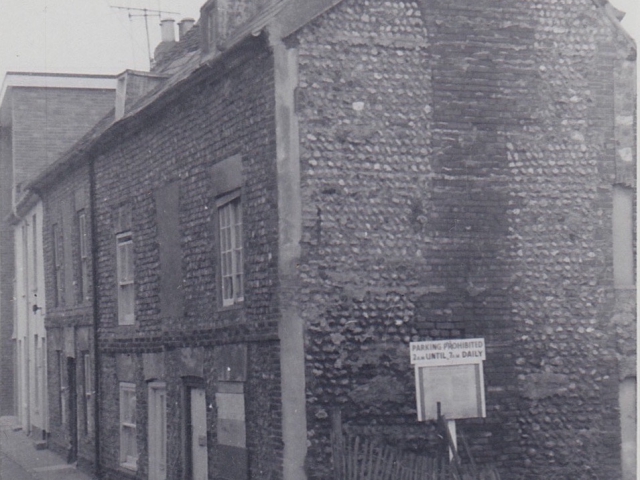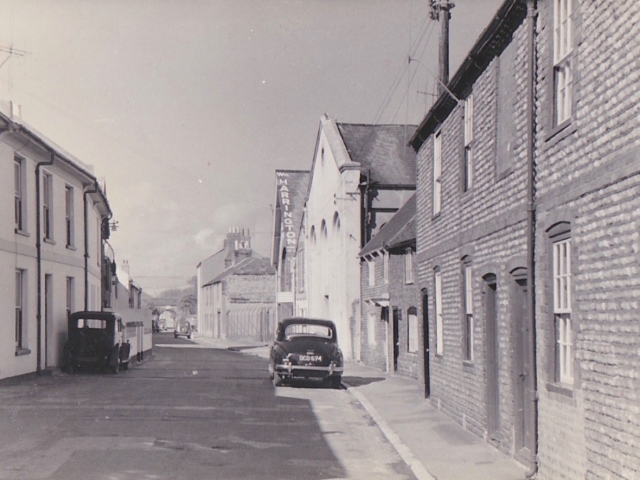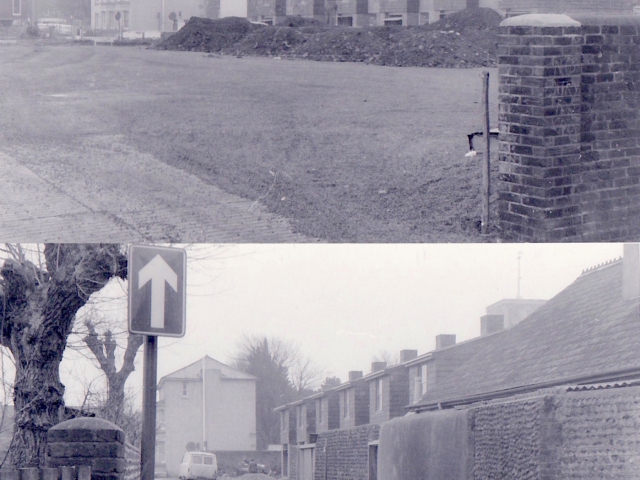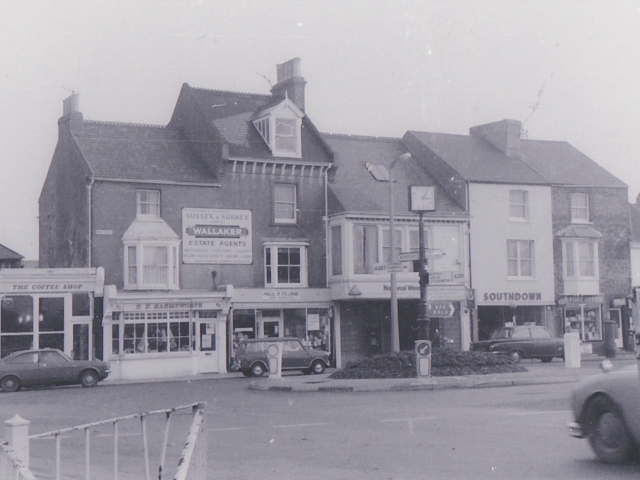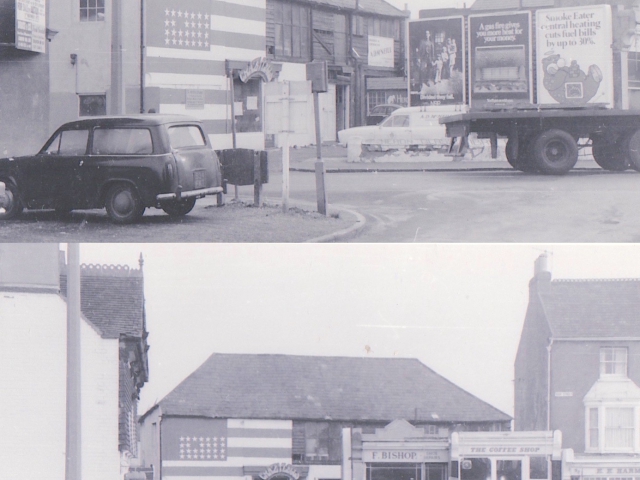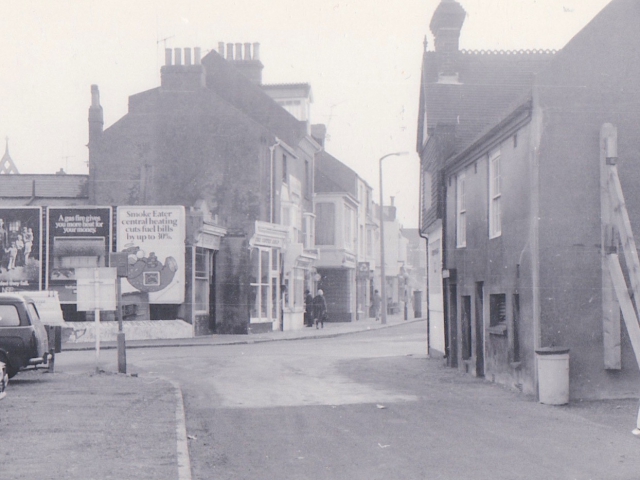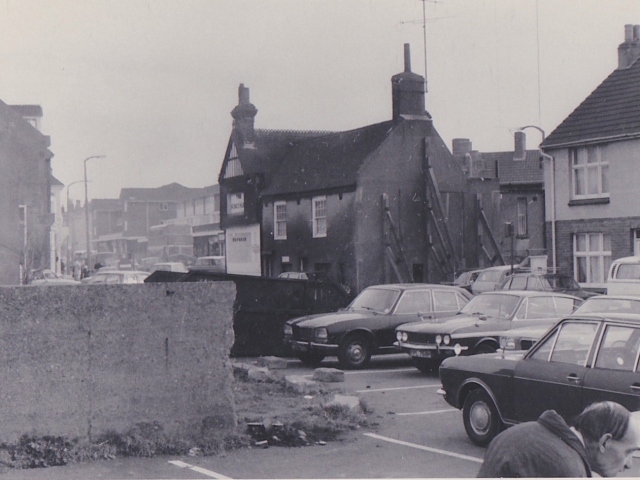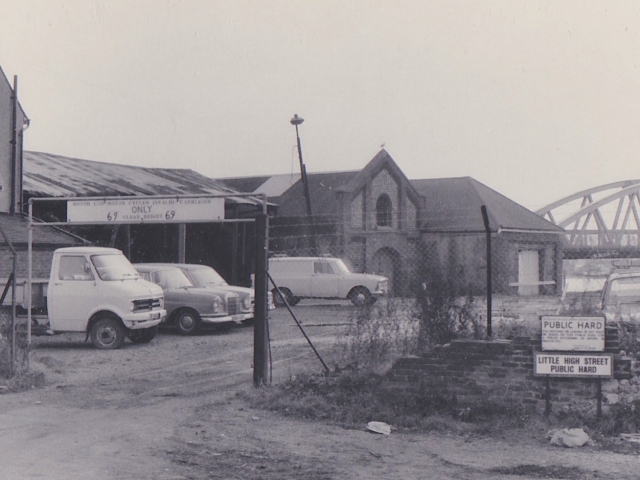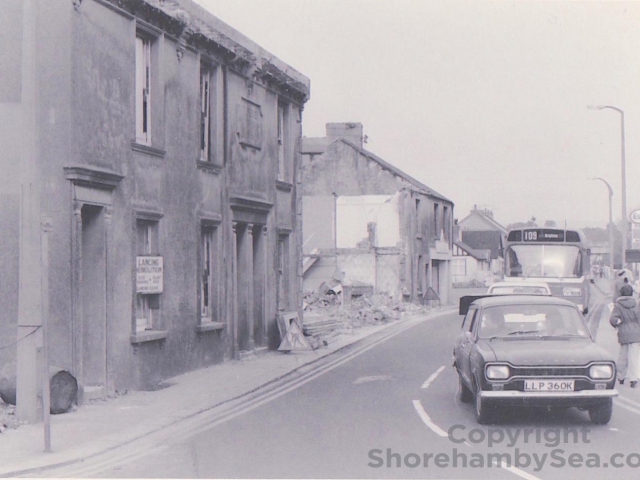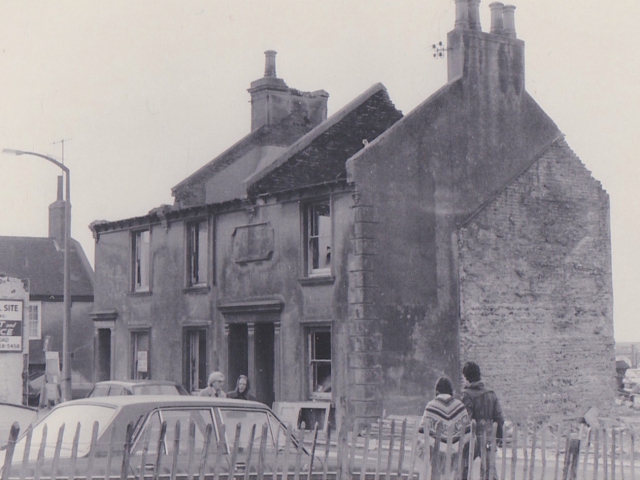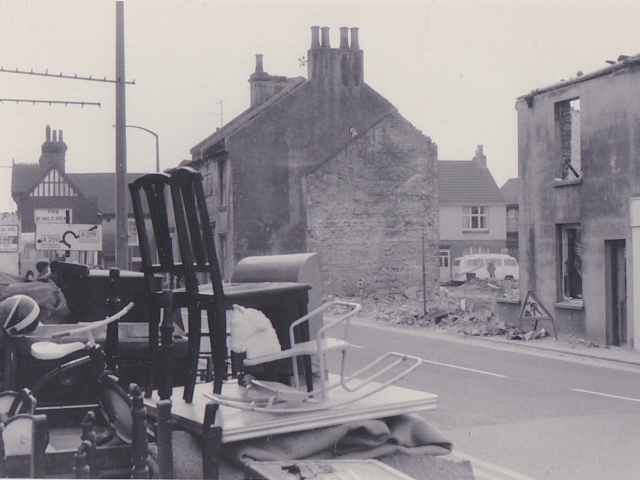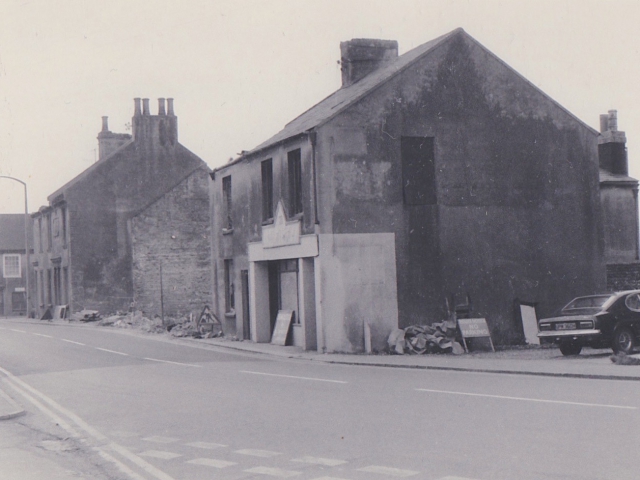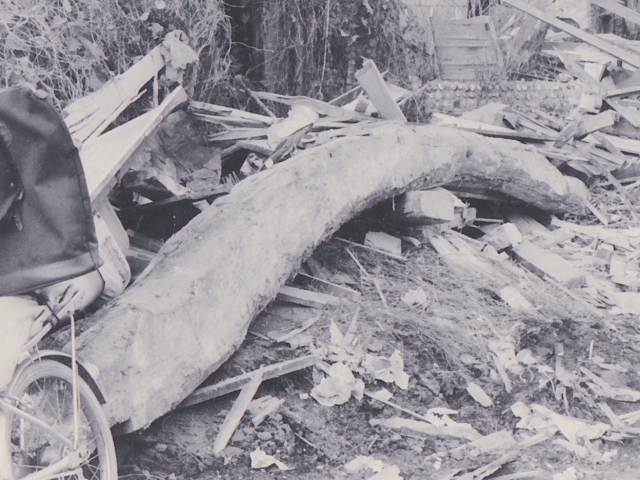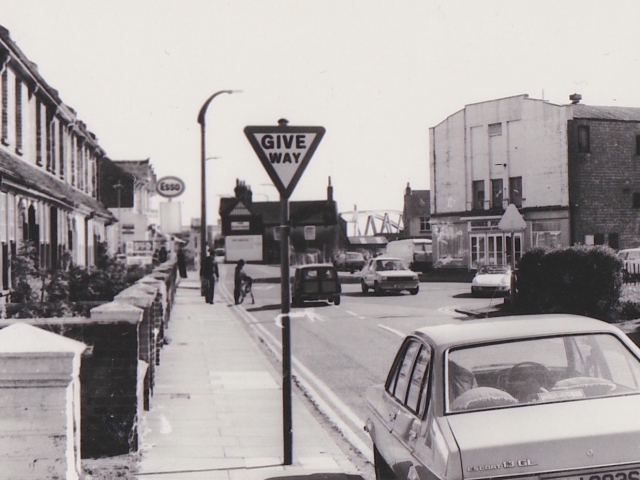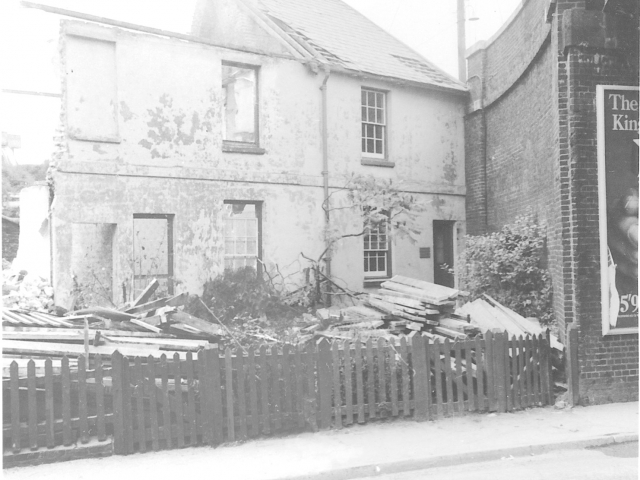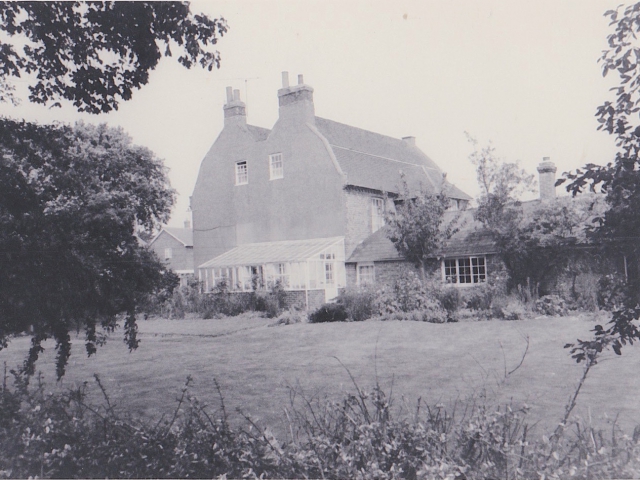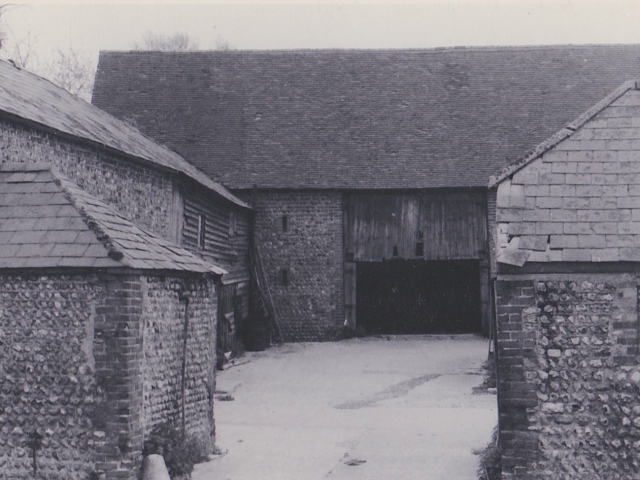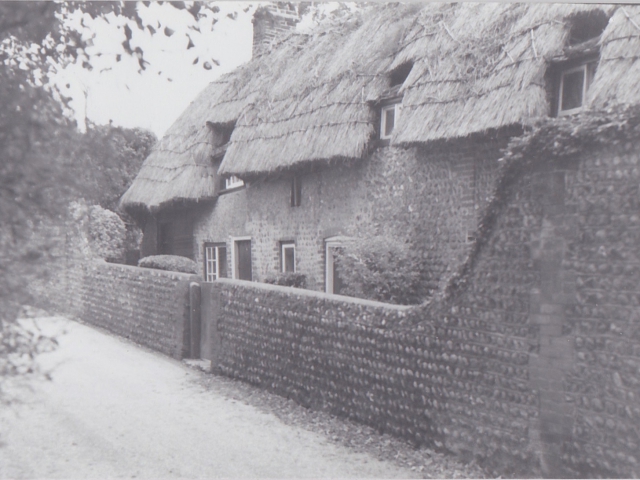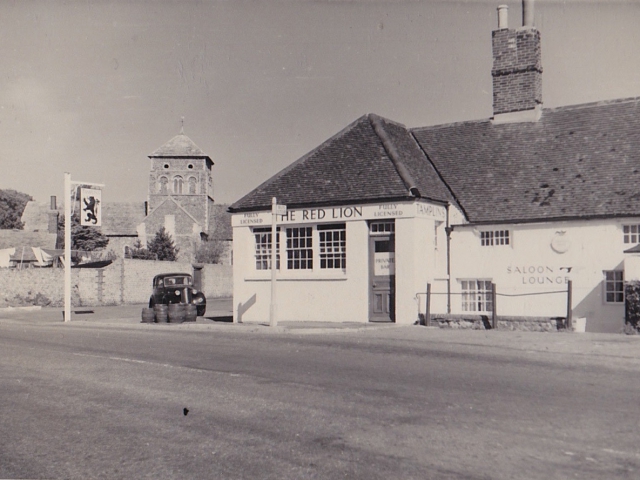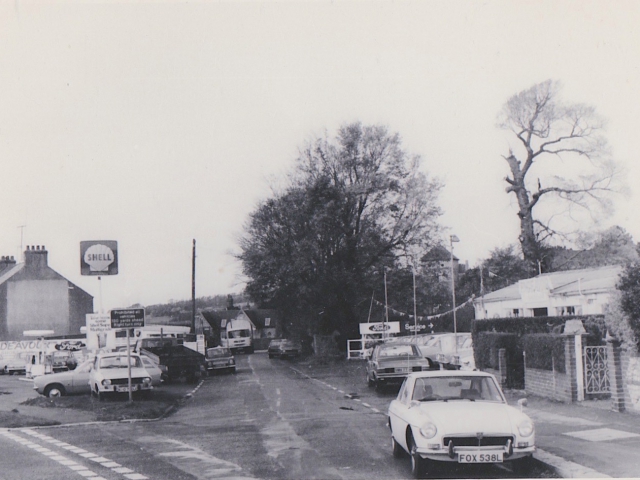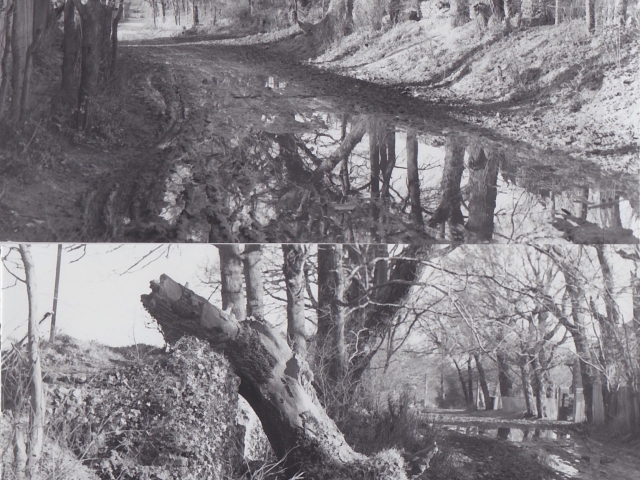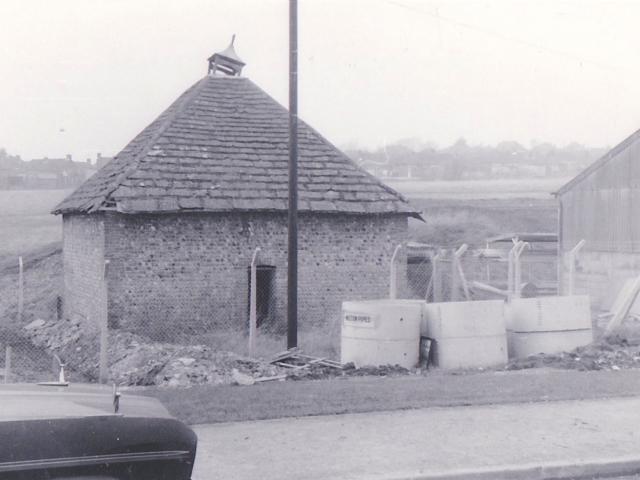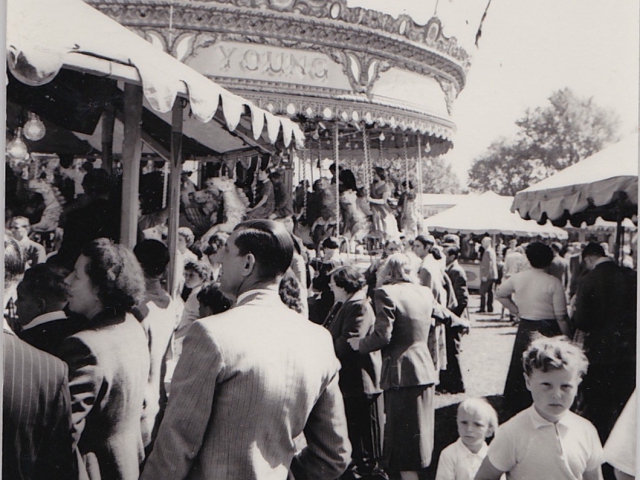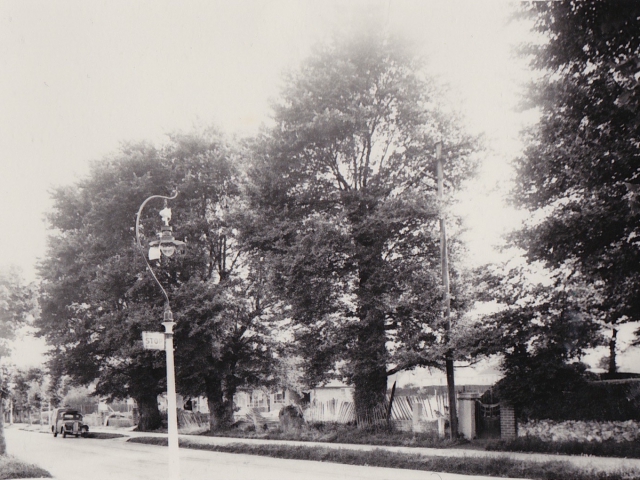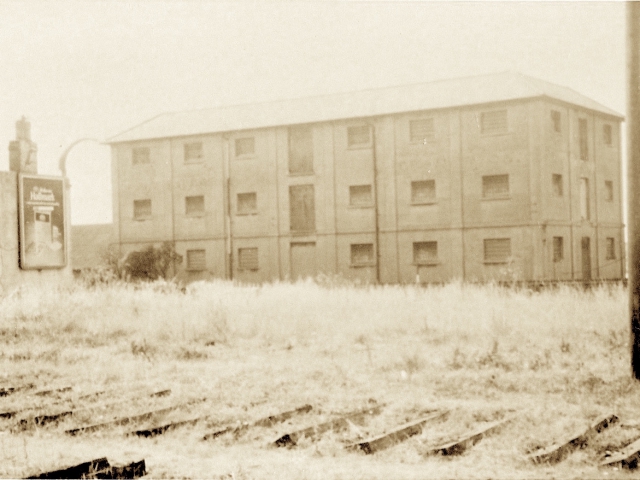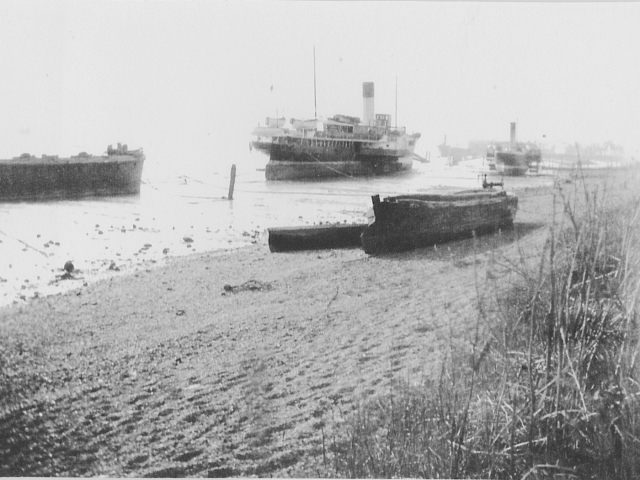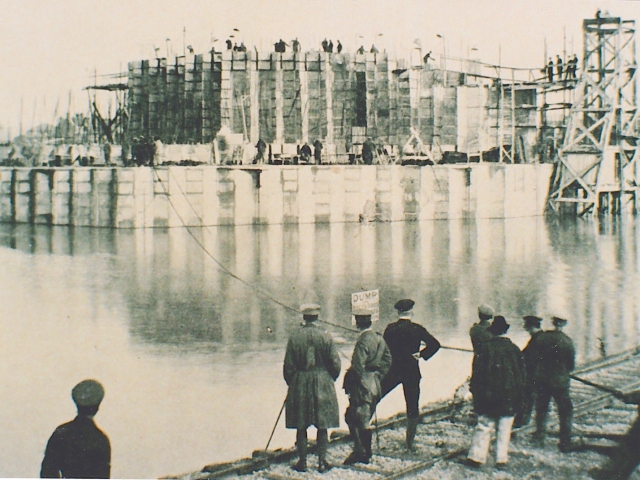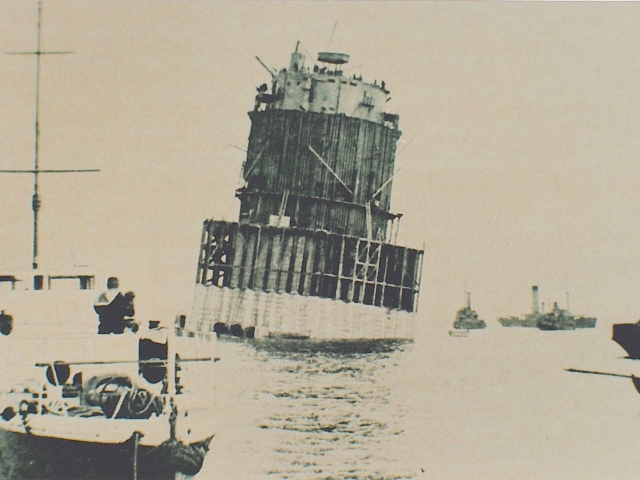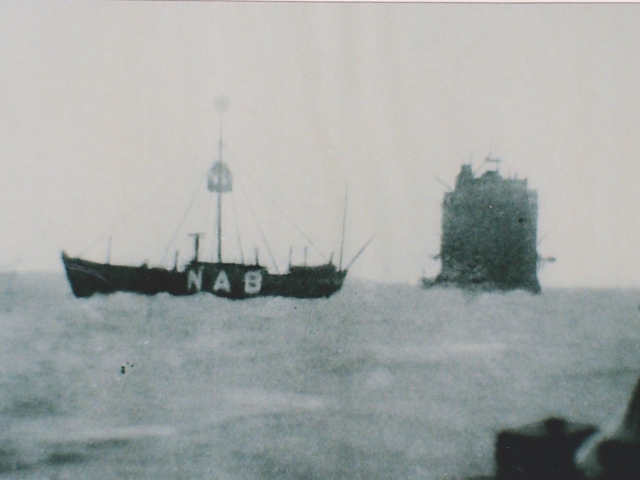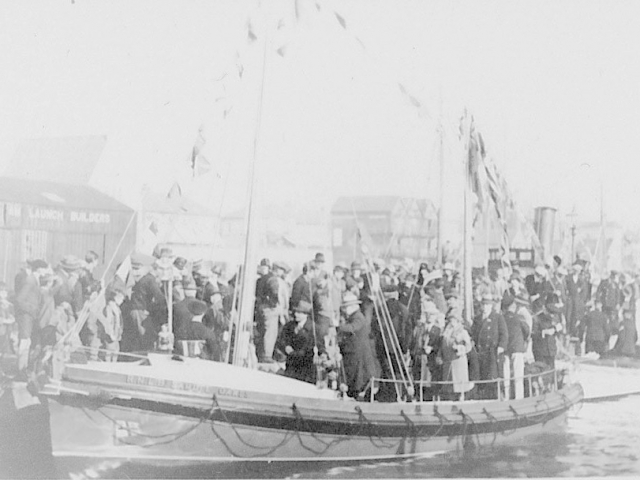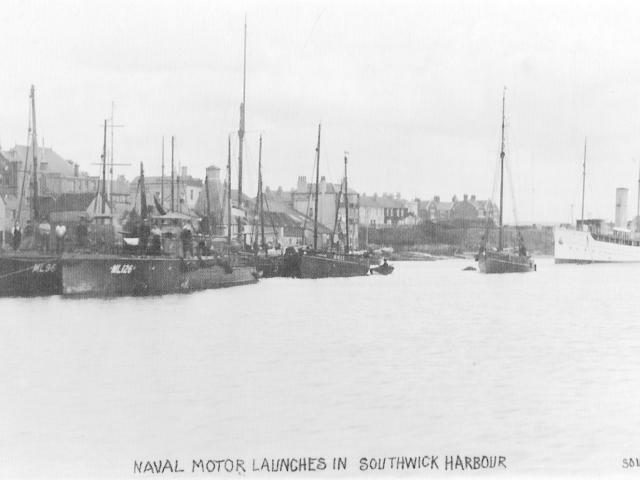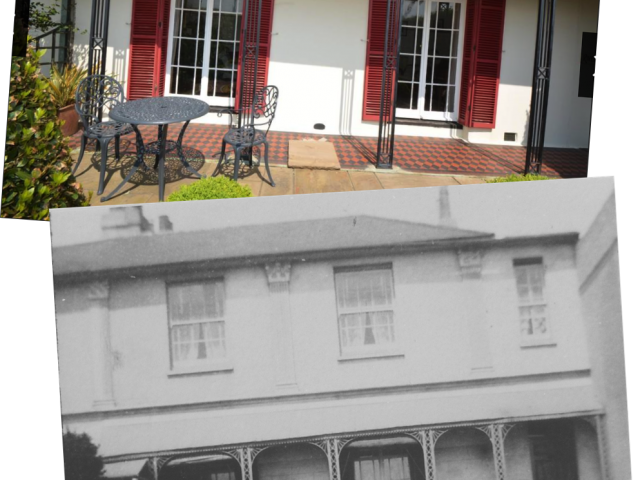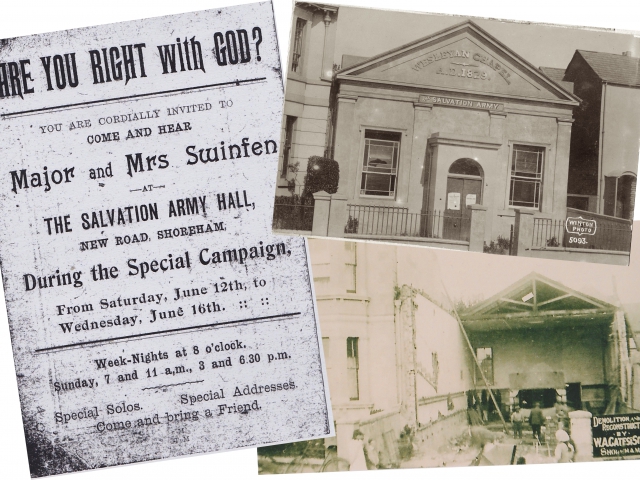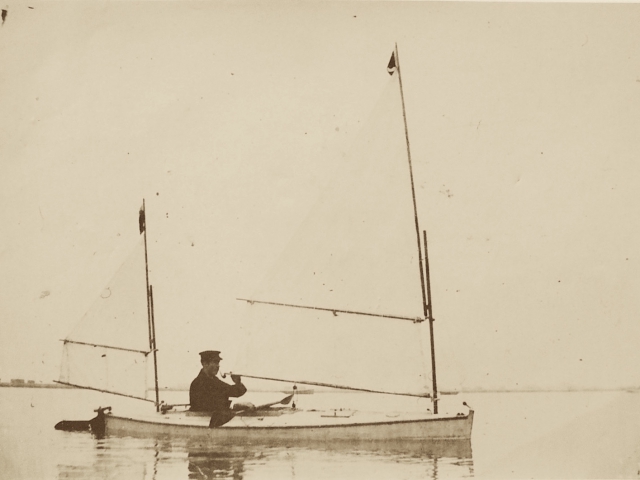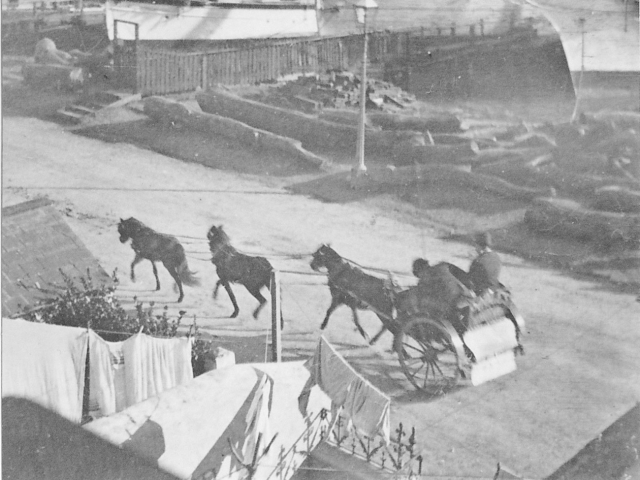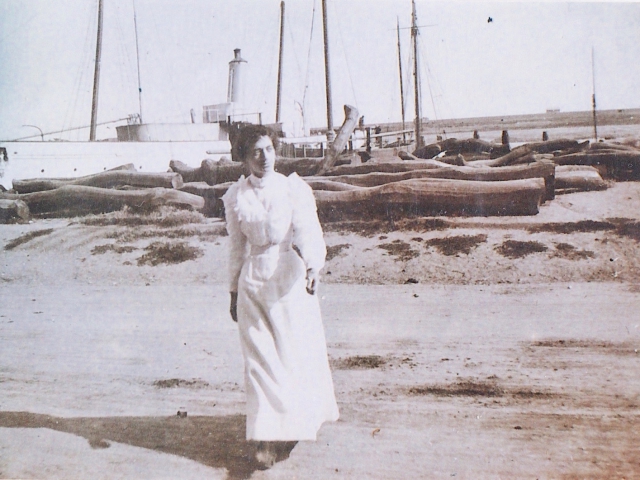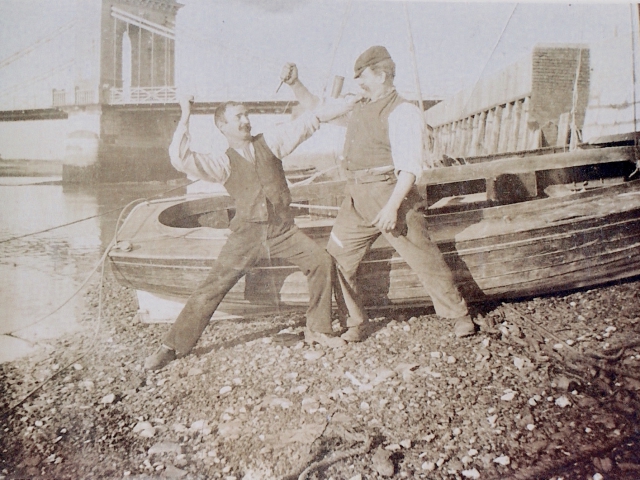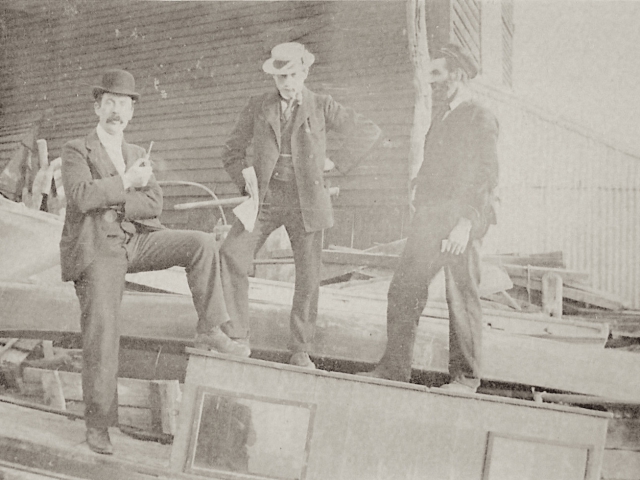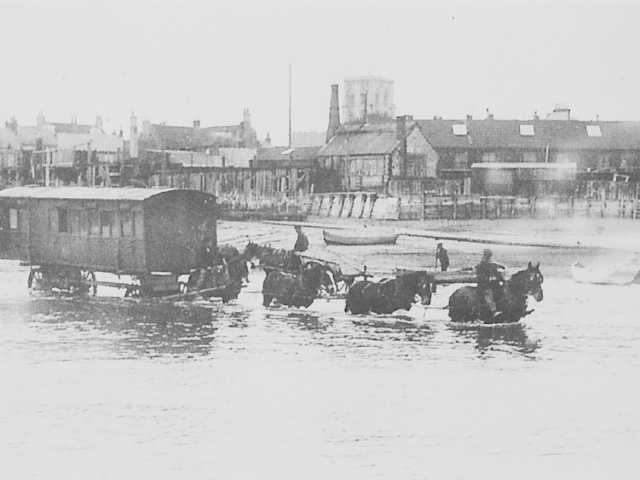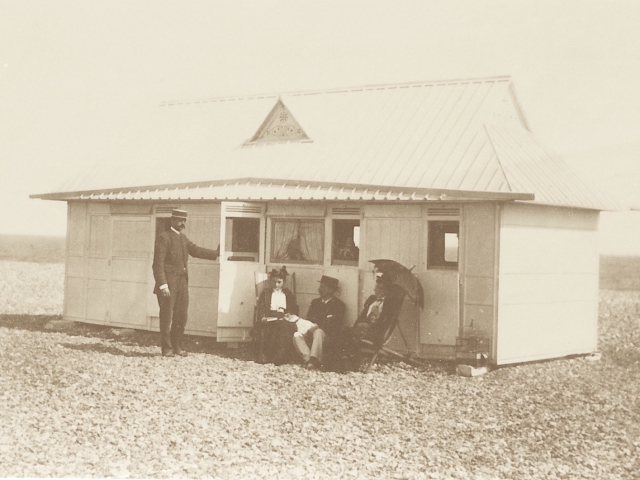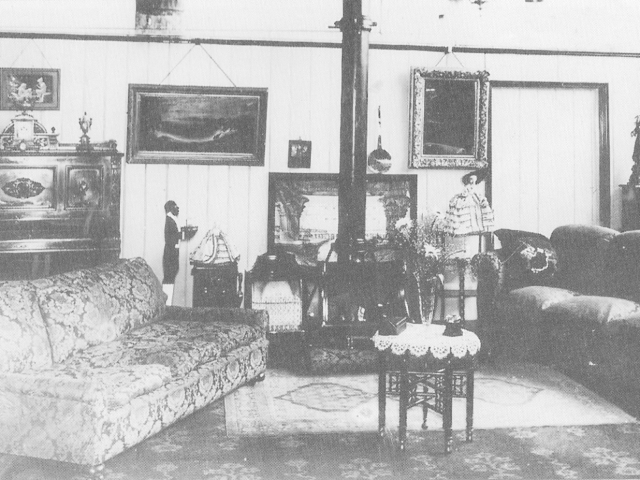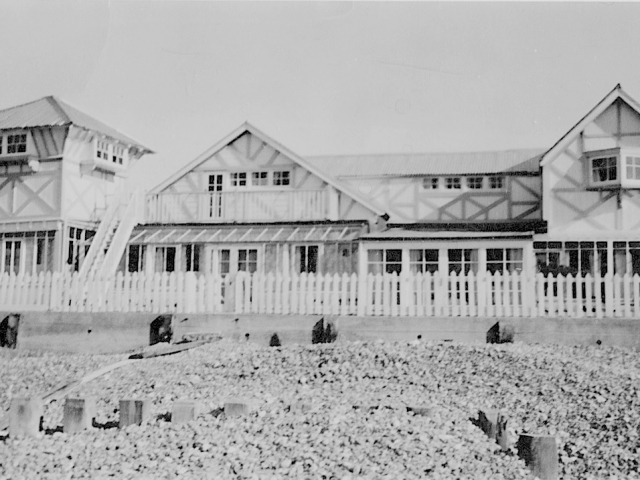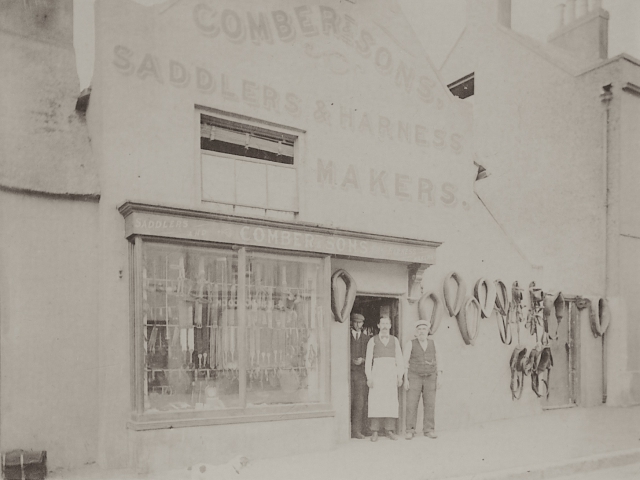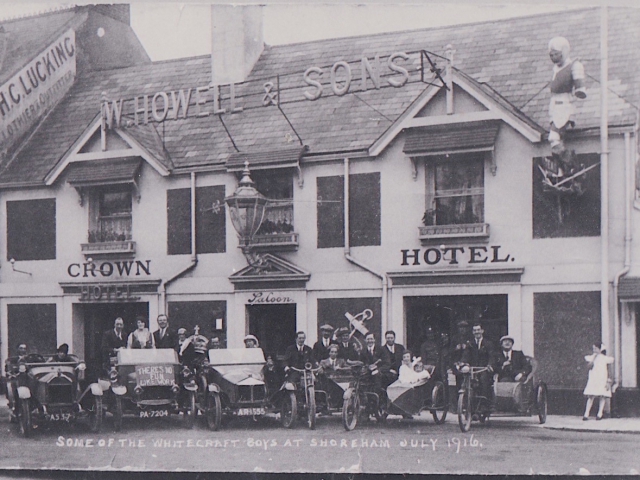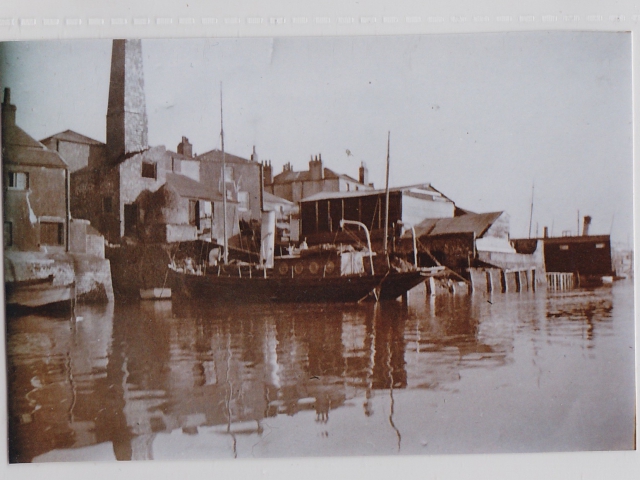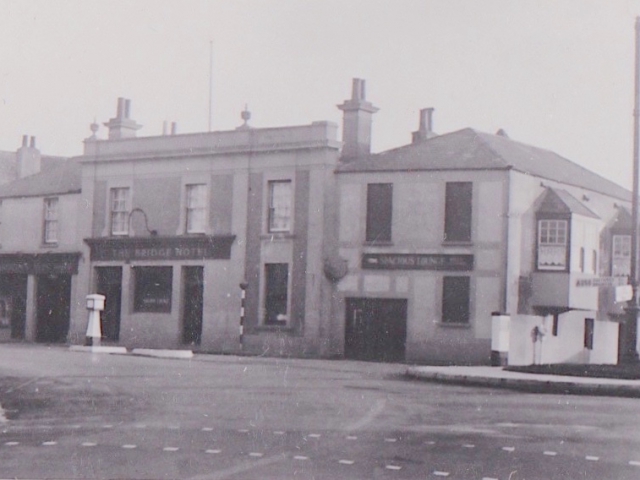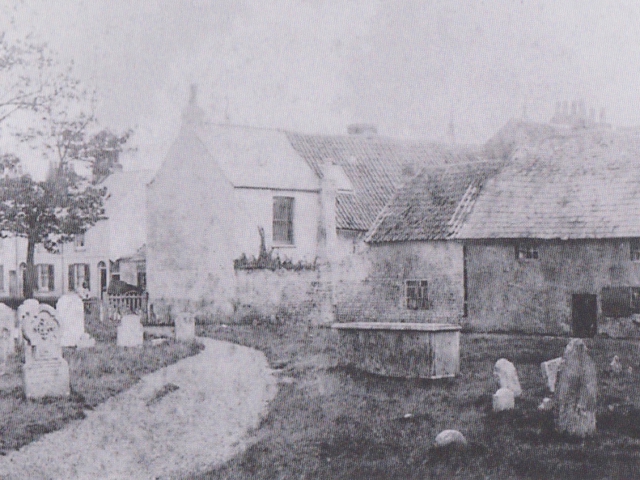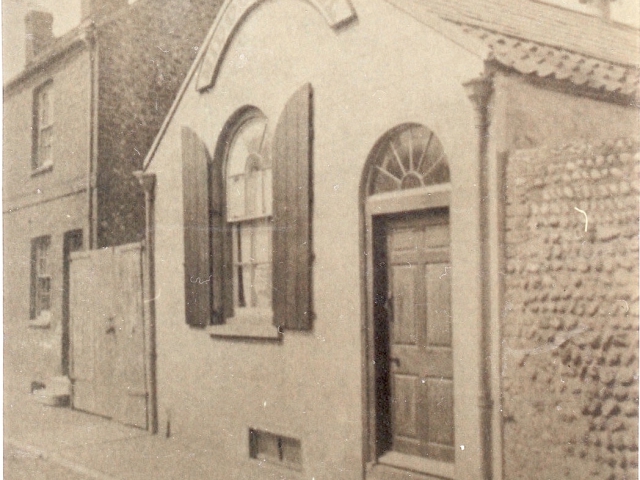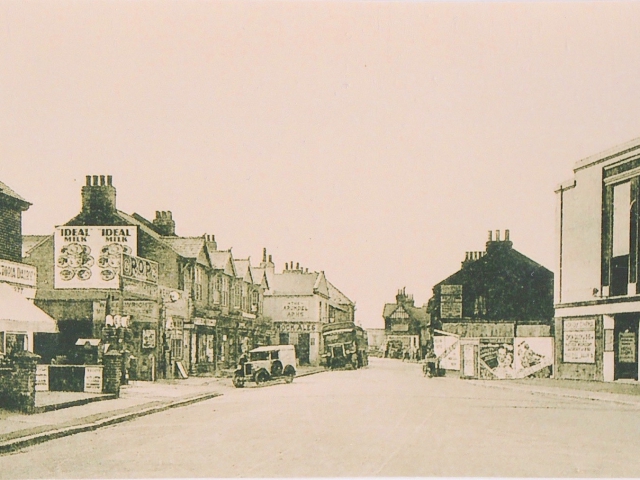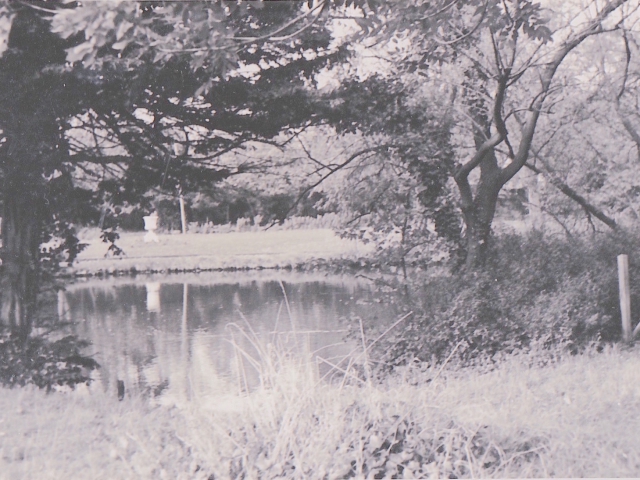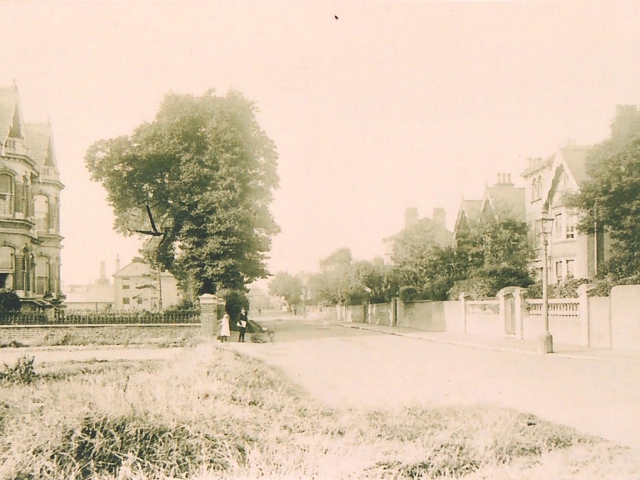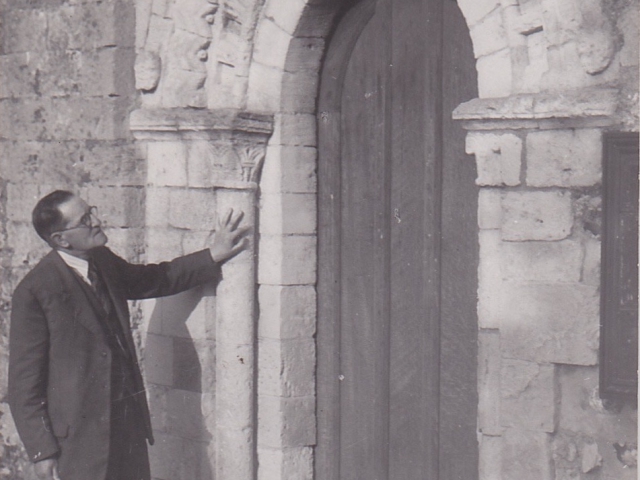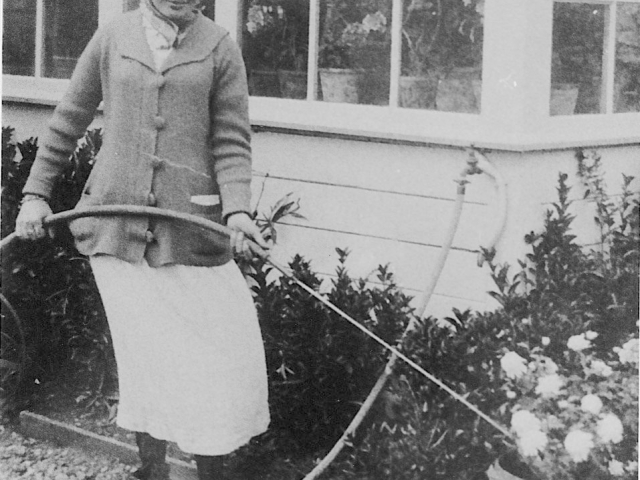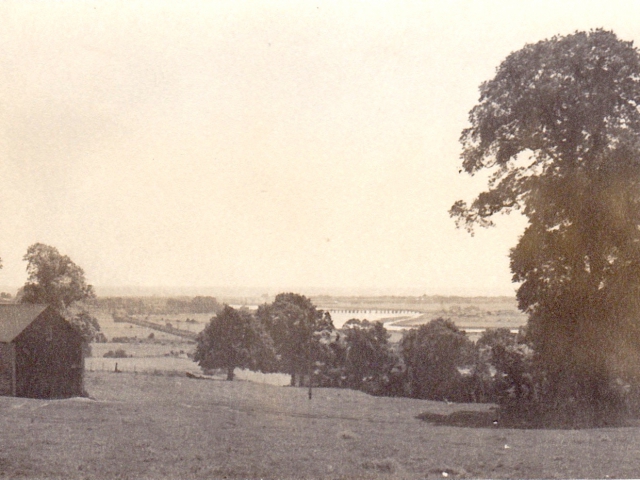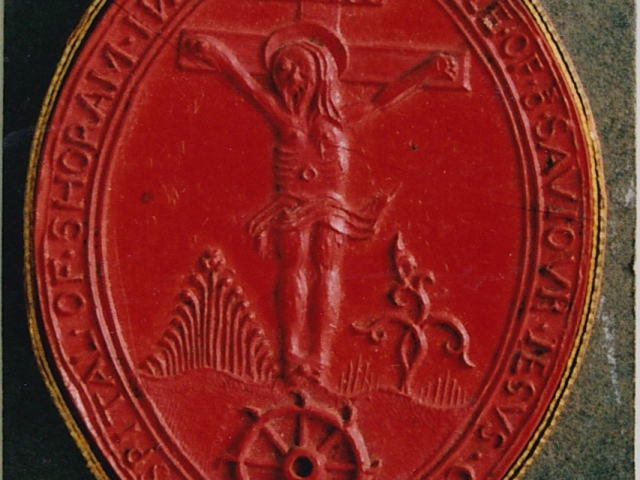A project carried out in 2010 combining the ghosts of buildings and people from original photographs within their current day surroundings to help provide an appreciation of Shoreham’s past.
You can see each image in more detail simply by clicking on it. A plus sign will then appear on your cursor – click again to enlarge the image. To return to viewing all the images in normal size just click the return arrow at the top left of the screen on your computer.
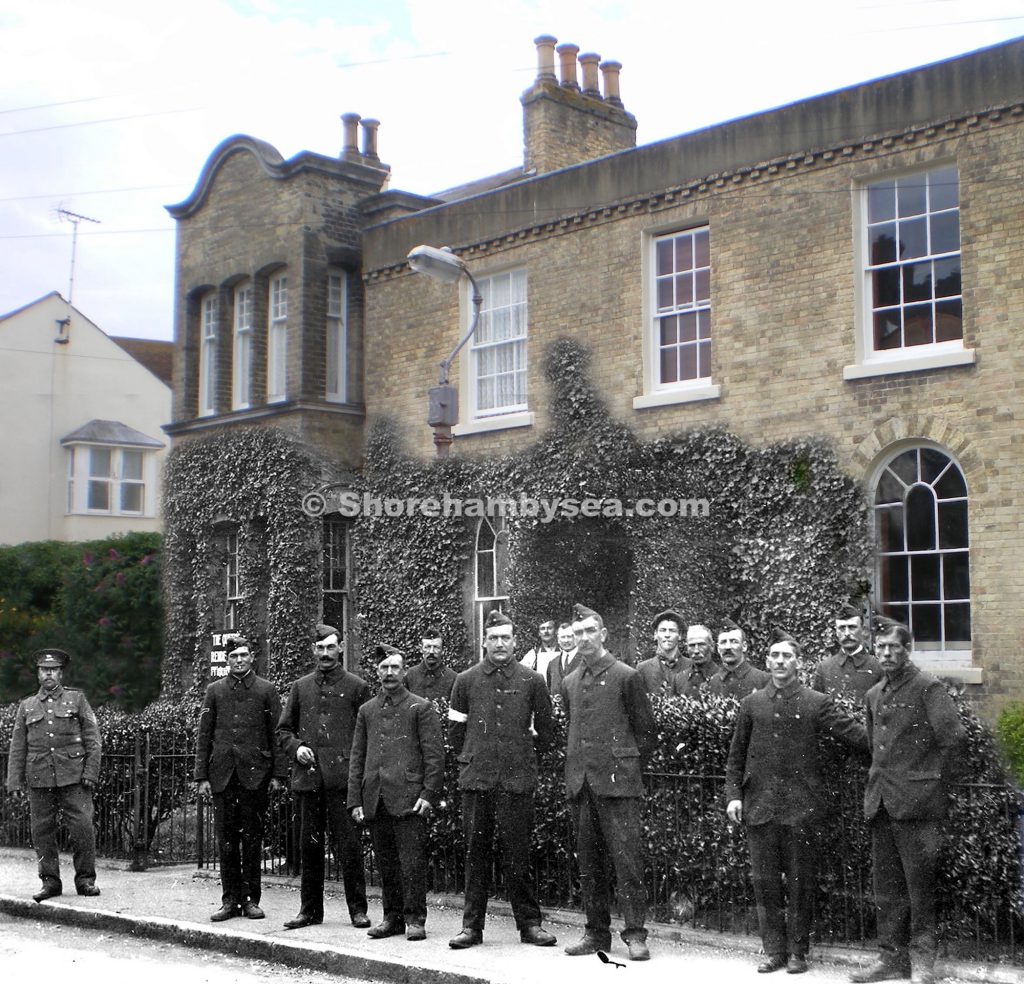
Shoreham House, John Street This circa 1916 photo outside William Winton junior’s house shows it then to have been clad in ivy. Bill Winton made part of his house available to the army either as a recruitment point or for somewhere to relax for soldiers from the camp north of Shoreham whilst in town
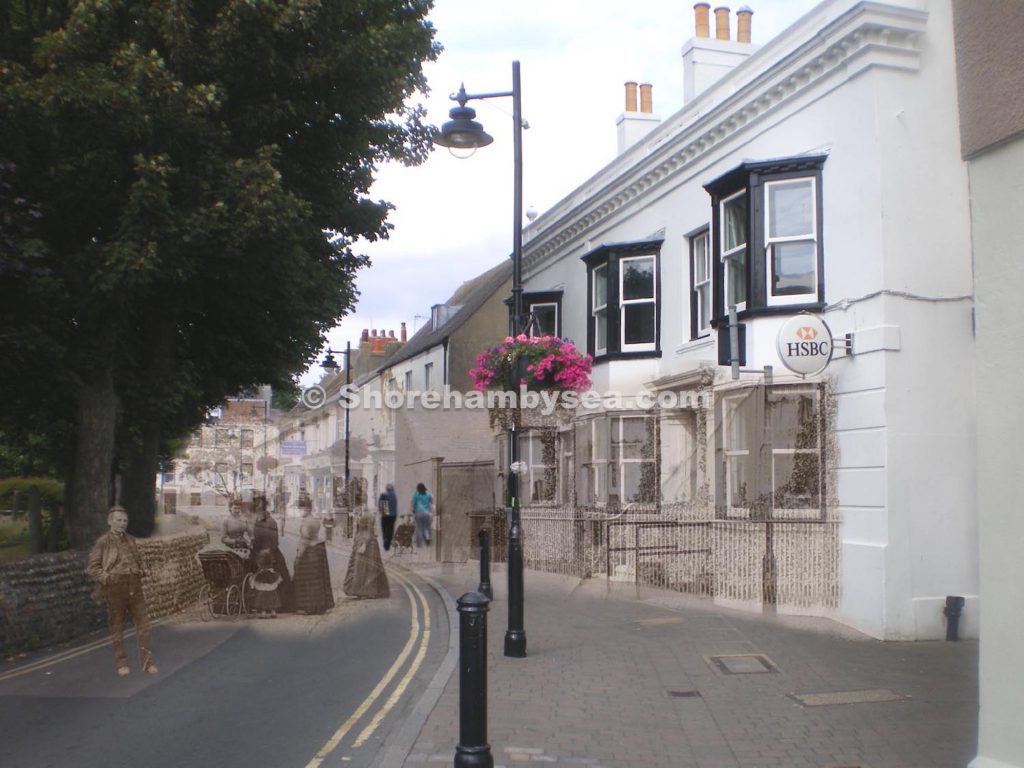 East Street Looking North Today’s scene ghosts into Chantry House when it was a doctor’s surgery during the late 19th century. The group of women around the pram are likely to have been stage managed by the photographer William Winton and probably include members of his family.
East Street Looking North Today’s scene ghosts into Chantry House when it was a doctor’s surgery during the late 19th century. The group of women around the pram are likely to have been stage managed by the photographer William Winton and probably include members of his family.
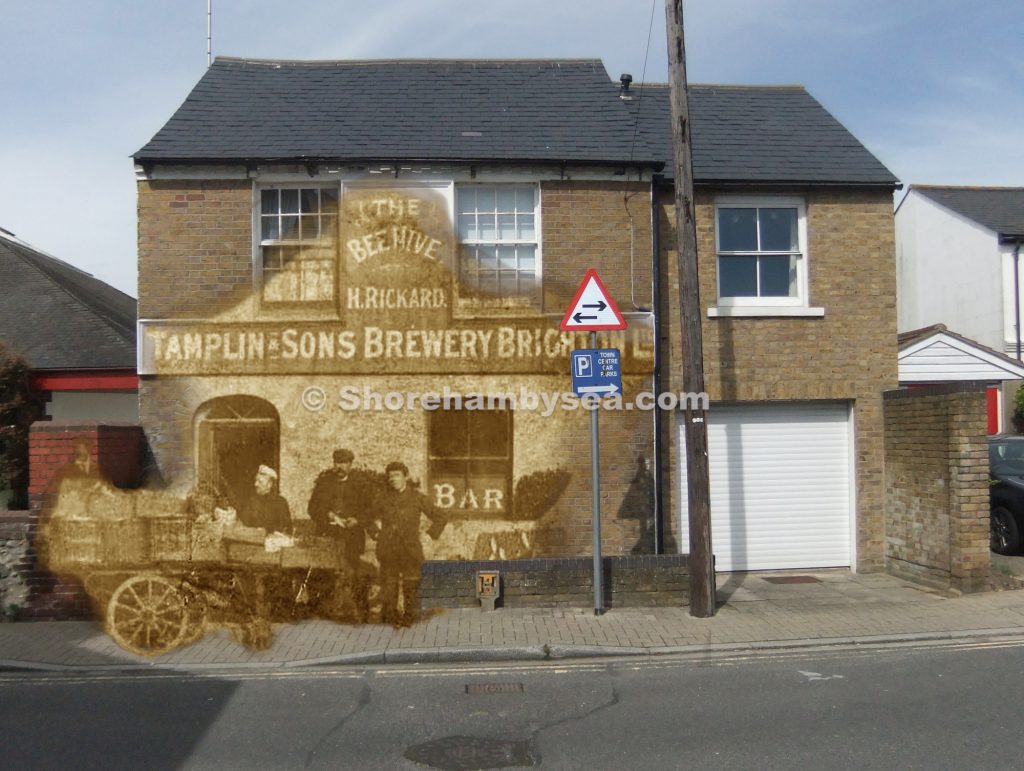 The Beehive Inn, North Street The early 20th century breaks through the walls of the Beehive to reveal the pub’s old lettering. Harriett Rickard, the septegenarian landlady appears in the doorway to purchase provisions from a passing vendor. In fact the photo was again set up by the photographer William Winton before the pub fell victim to the mass closures enforced by the council of half of all Shoreham’s pubs due to the excessive drinking problem in the town.
The Beehive Inn, North Street The early 20th century breaks through the walls of the Beehive to reveal the pub’s old lettering. Harriett Rickard, the septegenarian landlady appears in the doorway to purchase provisions from a passing vendor. In fact the photo was again set up by the photographer William Winton before the pub fell victim to the mass closures enforced by the council of half of all Shoreham’s pubs due to the excessive drinking problem in the town.
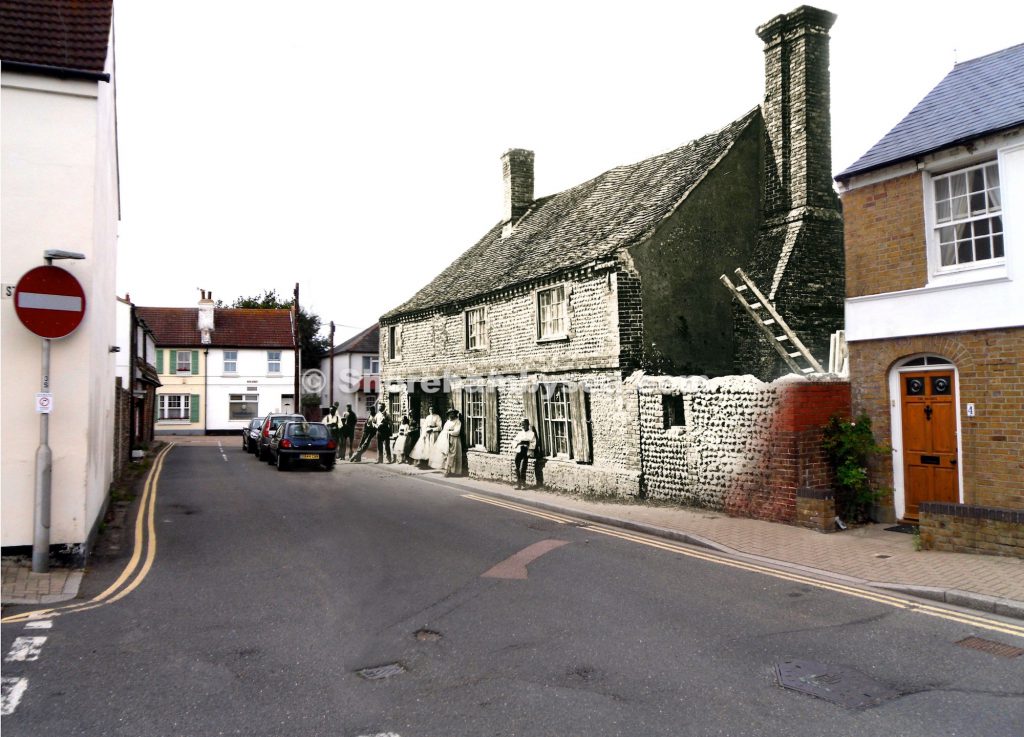 The Old Cottage, North Street One of the oldest cottages in Shoreham that once stood next to the Beehive and was demolished to make way for the Roman Catholic school in turn replaced by today’s church. Click on the photo to enlarge it and look particularly at the man leaning against the wall and his partner – they both have guns, probably hunting guns, which lends an air of the wild west and lawlessness to the photo.
The Old Cottage, North Street One of the oldest cottages in Shoreham that once stood next to the Beehive and was demolished to make way for the Roman Catholic school in turn replaced by today’s church. Click on the photo to enlarge it and look particularly at the man leaning against the wall and his partner – they both have guns, probably hunting guns, which lends an air of the wild west and lawlessness to the photo.
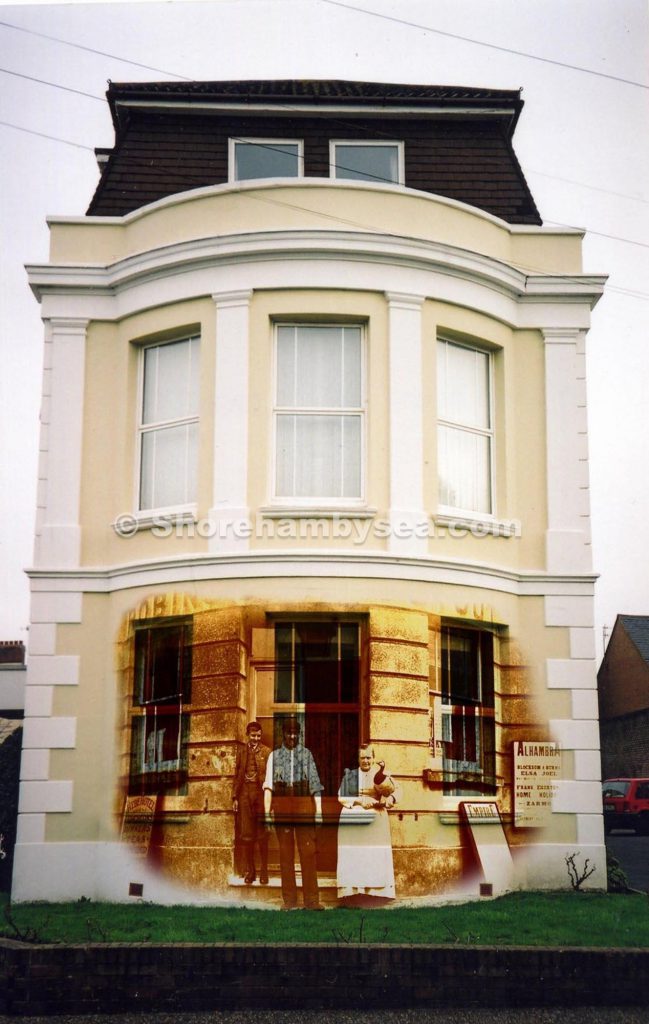 Hebe Hotel, Hebe Road Now part of a block of flats the Hebe Hotel once provided rest and refreshment for visitors to the nearby Swiss Gardens. The 1890’s landlord John Starcombe, his wife and son stand at the door of the original entrance.
Hebe Hotel, Hebe Road Now part of a block of flats the Hebe Hotel once provided rest and refreshment for visitors to the nearby Swiss Gardens. The 1890’s landlord John Starcombe, his wife and son stand at the door of the original entrance.
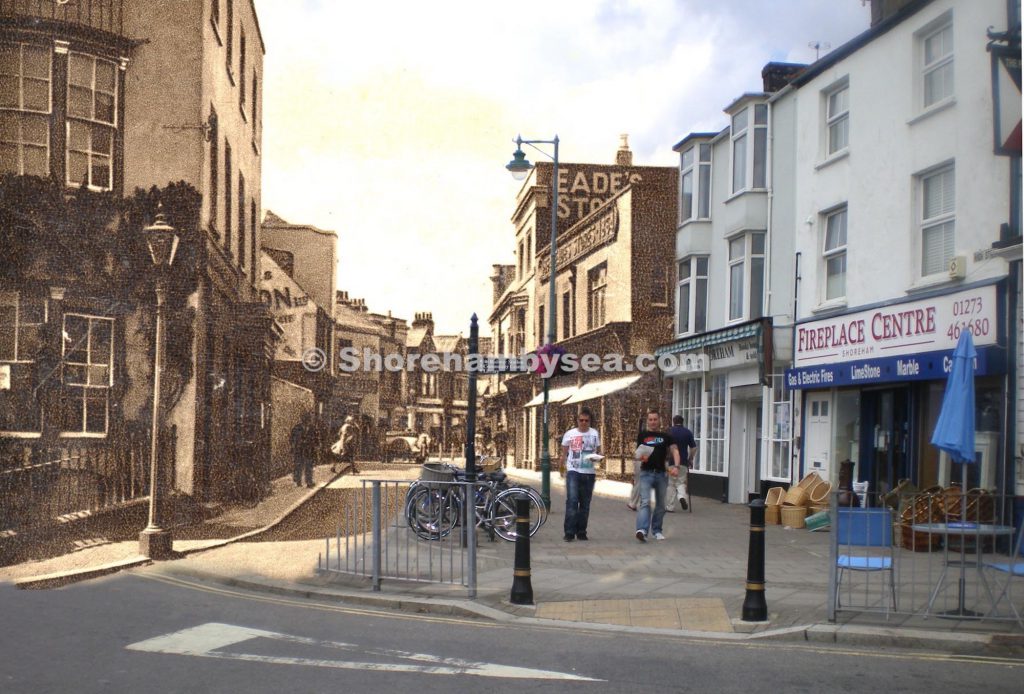 High Street looking west Pictured from the junction with East Street, the addition of the 1920’s photo shows just how narrow this part of the High Street once was.
High Street looking west Pictured from the junction with East Street, the addition of the 1920’s photo shows just how narrow this part of the High Street once was.
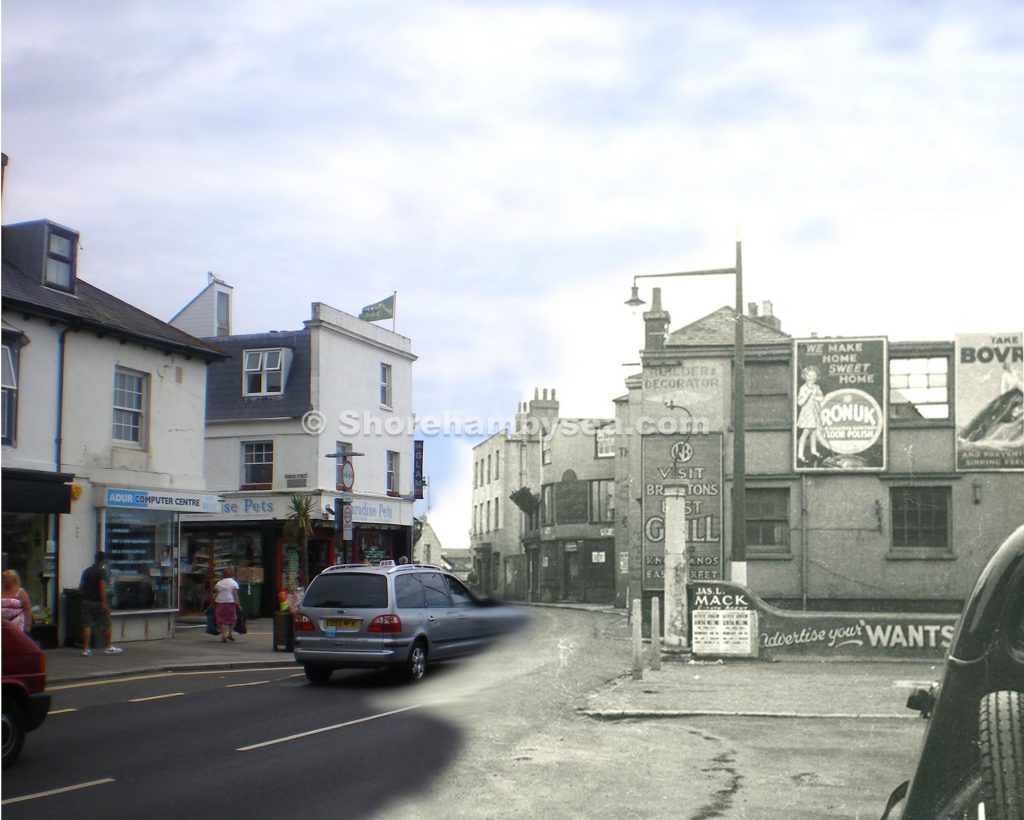 High Street Looking East With the Church Street junction on the left and the car disappearing into the past, the old Dolphin Buildings on the right have now been replaced by Coronation Green.
High Street Looking East With the Church Street junction on the left and the car disappearing into the past, the old Dolphin Buildings on the right have now been replaced by Coronation Green.
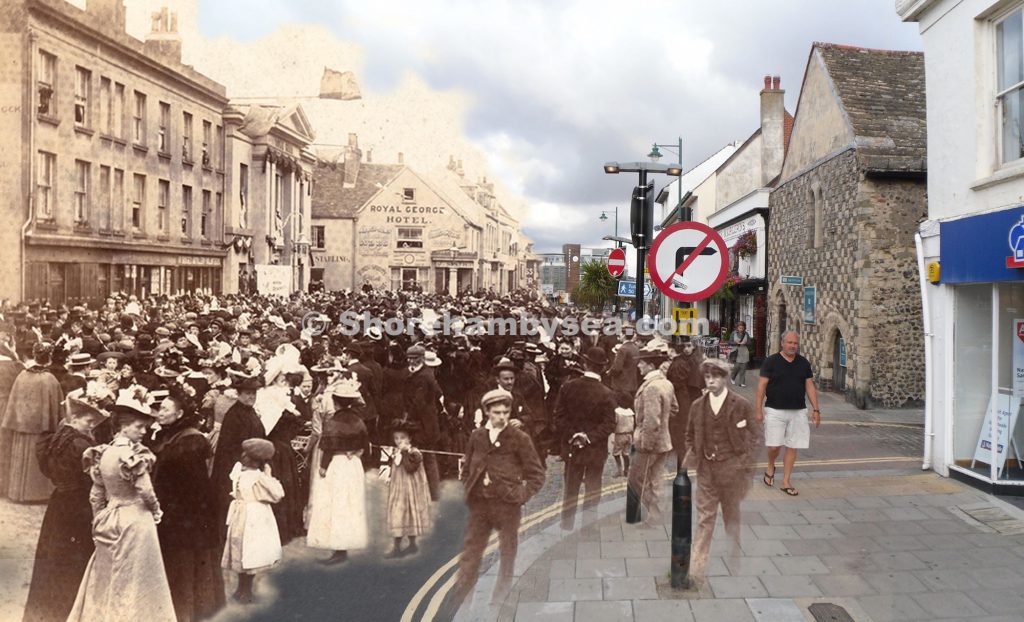 High Street 1897 Crowds in the High Street celebrate Queen Victoria’s 1897 diamond jubilee as today’s pedestrian passes by them.
High Street 1897 Crowds in the High Street celebrate Queen Victoria’s 1897 diamond jubilee as today’s pedestrian passes by them.
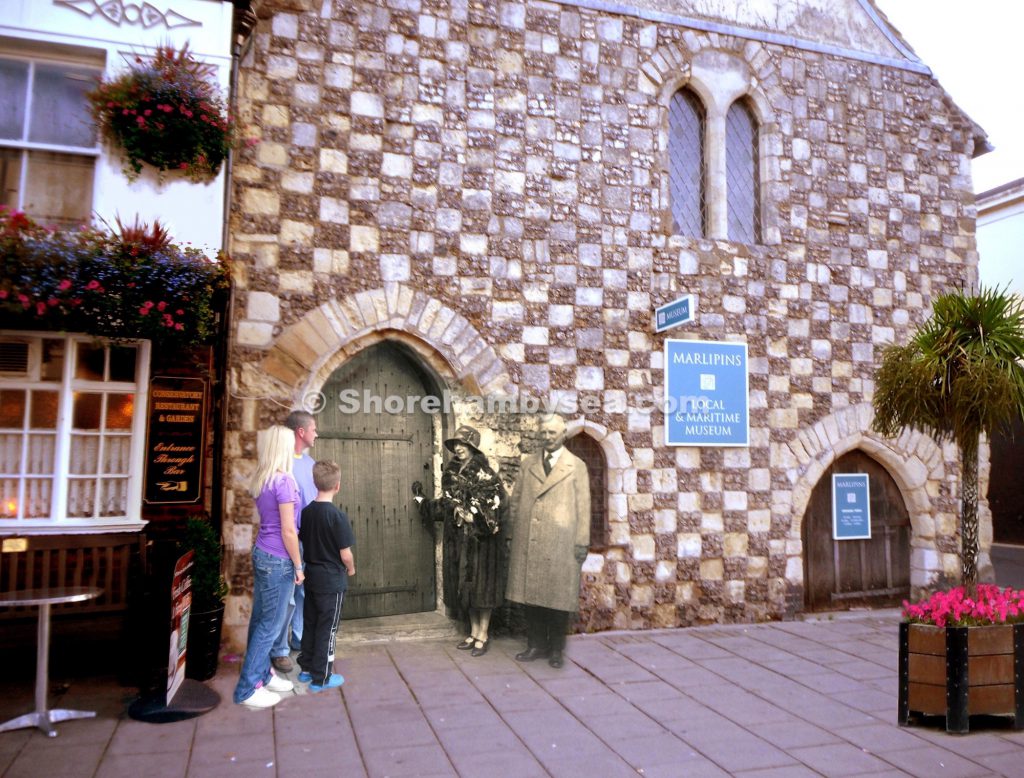 Marlipins Museum, High Street Lady Harmsworth and Capt. H.R. Hooper relive the opening of the museum after refurbishment in 1928
Marlipins Museum, High Street Lady Harmsworth and Capt. H.R. Hooper relive the opening of the museum after refurbishment in 1928
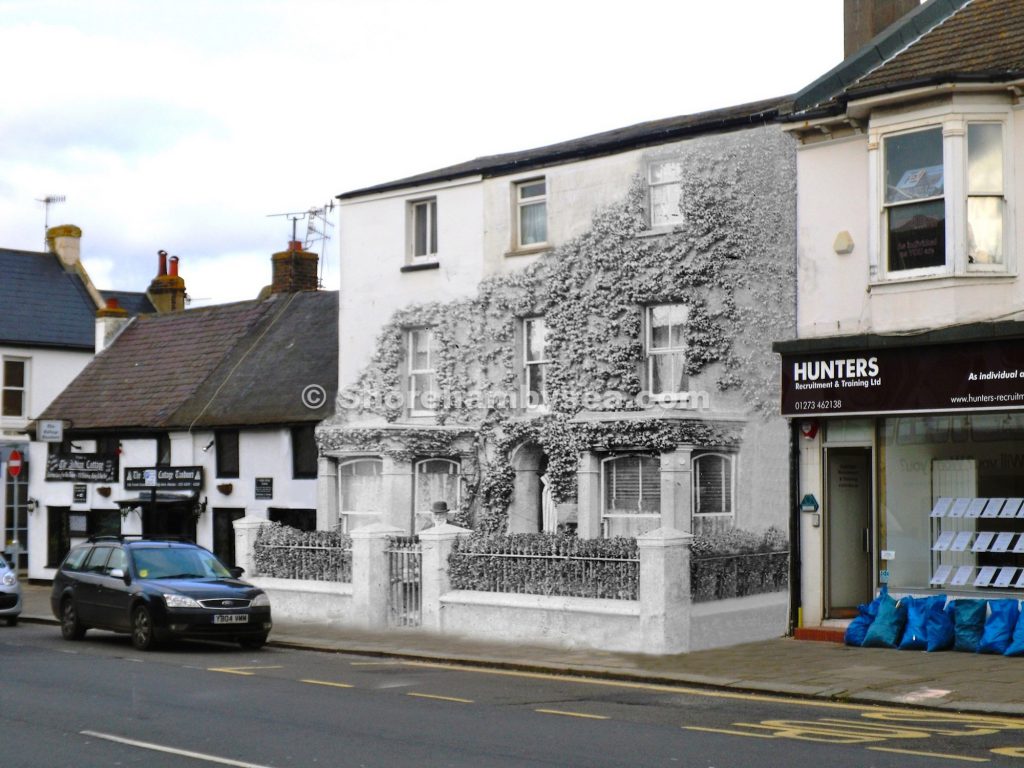 High Street Fred Wood, town carter, stands by the gate of his house – the last surviving front garden in the High Street
High Street Fred Wood, town carter, stands by the gate of his house – the last surviving front garden in the High Street
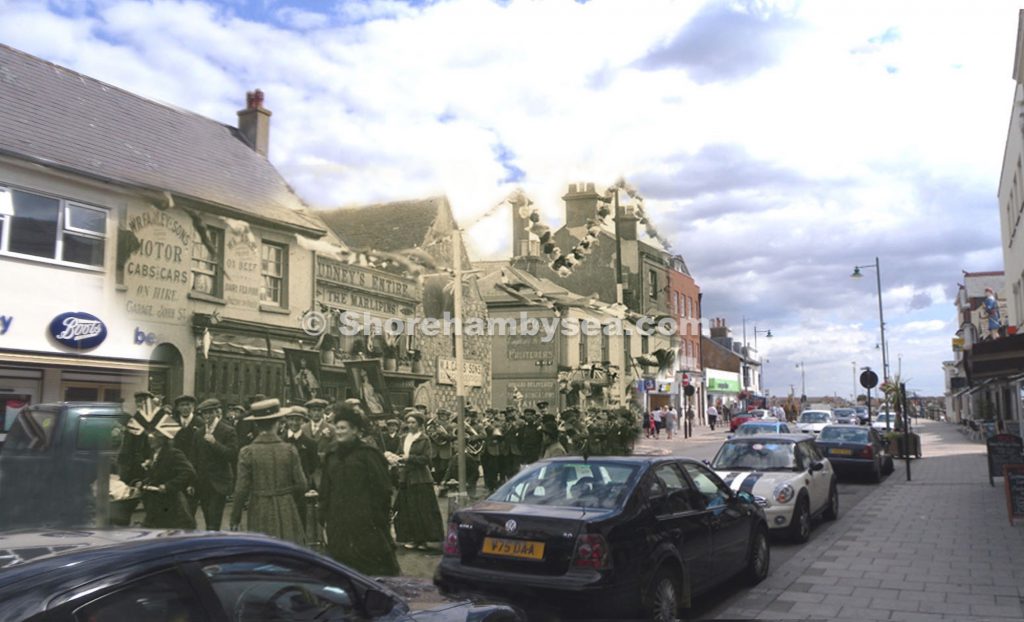 High Street Procession 1911 The 1911 procession to celebrate the coronation of King George V marches past the parked cars in the High Street
High Street Procession 1911 The 1911 procession to celebrate the coronation of King George V marches past the parked cars in the High Street
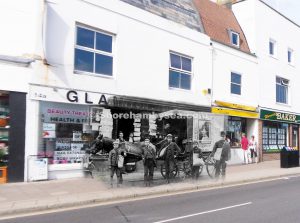 Winton’s 1890’s High Street shop This late 19th century photo shows William Winton in his delivery cart surrounded by his newspaper boys. His newsagent’s shop in the High Street once covered the entire premises now split into two – a beauticians and a jewellers.
Winton’s 1890’s High Street shop This late 19th century photo shows William Winton in his delivery cart surrounded by his newspaper boys. His newsagent’s shop in the High Street once covered the entire premises now split into two – a beauticians and a jewellers.
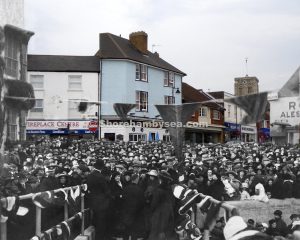 Footbridge Opening 1921 The 1921 pennants flap in the breeze as crowds attend the opening of the footbridge with modern East Steet in the background
Footbridge Opening 1921 The 1921 pennants flap in the breeze as crowds attend the opening of the footbridge with modern East Steet in the background
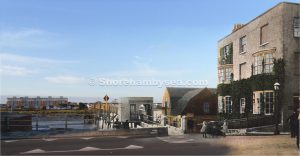 Footbridge and Dolphin Hotel A composite of three photos showing the hotel, work and boat sheds, and the original toll booth blended into the footbridge (as it was in 2010) and Pacific Court on the other side of the river.
Footbridge and Dolphin Hotel A composite of three photos showing the hotel, work and boat sheds, and the original toll booth blended into the footbridge (as it was in 2010) and Pacific Court on the other side of the river.
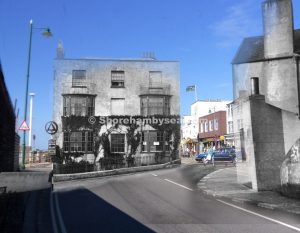 Dolphin Hotel Demolition On the High Street near the junction with East Street the ghost (Dolphin Hotel) is already a ghost when pictured here shortly before demolition in the late 1930’s.
Dolphin Hotel Demolition On the High Street near the junction with East Street the ghost (Dolphin Hotel) is already a ghost when pictured here shortly before demolition in the late 1930’s.
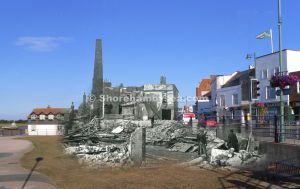 Demolition of Dolphin Buildings, High Street With the Dolphin Hotel and Dolphin Chambers already toppled and rubble where Coronation Green is now, only the old brewery chimney and buildings alongside it remain to be demolished.
Demolition of Dolphin Buildings, High Street With the Dolphin Hotel and Dolphin Chambers already toppled and rubble where Coronation Green is now, only the old brewery chimney and buildings alongside it remain to be demolished.
 Crown & Anchor, High Street Modern day Crown & Anchor ghosts into it’s 1880’s past at a time when it looked more in keeping with it’s ancient origins.
Crown & Anchor, High Street Modern day Crown & Anchor ghosts into it’s 1880’s past at a time when it looked more in keeping with it’s ancient origins.
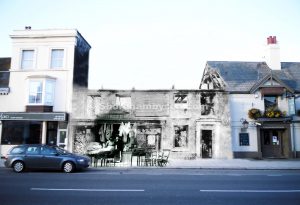 Reed’s Store in the High Street Late in the 19th century Reed’s Stores, next to the Crown & Anchor, burned down. Spencer Reed and his wife are seen here in happier times from a photo ghosted into the burned building. Click on the image to enlarge it and look into the front, right door to see the surviving fireplace and through the window next to it the massive ceiling beam that also survived.
Reed’s Store in the High Street Late in the 19th century Reed’s Stores, next to the Crown & Anchor, burned down. Spencer Reed and his wife are seen here in happier times from a photo ghosted into the burned building. Click on the image to enlarge it and look into the front, right door to see the surviving fireplace and through the window next to it the massive ceiling beam that also survived.
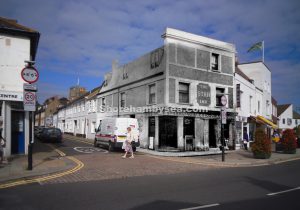 Star Inn In the 18th century the Star Inn on the corner of Church Street with the High Street was the once town’s main coaching inn and had stables stretching to East Street from the main building. The early 1900’s photo here was taken shortly after a face lift which, sadly, hides for ever its earlier heritage.
Star Inn In the 18th century the Star Inn on the corner of Church Street with the High Street was the once town’s main coaching inn and had stables stretching to East Street from the main building. The early 1900’s photo here was taken shortly after a face lift which, sadly, hides for ever its earlier heritage.
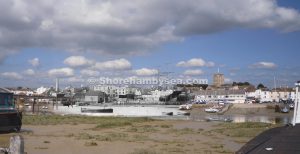 Town and Riverside The footbridge disappears into oblivion and the newly built, newly rigged Osman Pasha awaits launching from Shoreham’s last shipyard on the 1870’s riverside.
Town and Riverside The footbridge disappears into oblivion and the newly built, newly rigged Osman Pasha awaits launching from Shoreham’s last shipyard on the 1870’s riverside.
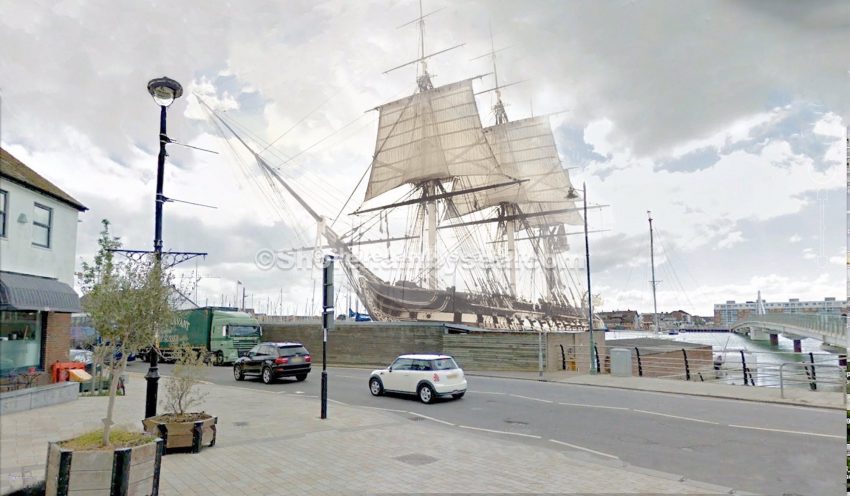
The Last Shipyard At the end of East Street next to today’s footbridge was the last working shipyard in Shoreham. This is the opposite view to the previous picture. Dyer & Son were using this shipyard during the 1870’s building ships of this size, the ‘Osman Pasha’ being the last, before it was taken over by Henry Stow and Sons then the Sussex Yacht Club
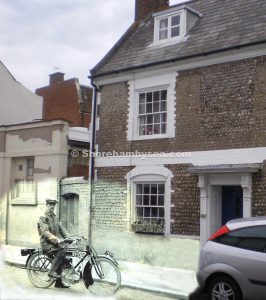 Church Street Outside the Winton family house in Church Street Reg Eley, husband of Myrtle Winton, sits on one of his Singer motorcycles a few years prior to the First World War.
Church Street Outside the Winton family house in Church Street Reg Eley, husband of Myrtle Winton, sits on one of his Singer motorcycles a few years prior to the First World War.
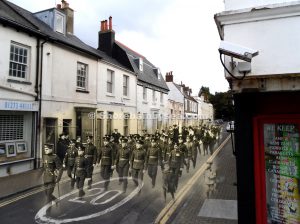 Church Street 1910 Men of the Shoreham Section of the 3rd Sussex Battery Home Counties Brigade, Royal Field Artillery re-enact their homage to King Edward V11’s funeral on 20th May 1910
Church Street 1910 Men of the Shoreham Section of the 3rd Sussex Battery Home Counties Brigade, Royal Field Artillery re-enact their homage to King Edward V11’s funeral on 20th May 1910

Star Cinema 1920 Now the Co-op goods delivery entrance the building was once a chapel and then a cinema. William Winton, who lived in the house next door also ran the cinema and often took moving pictures of which this is a ‘still’ from one reel.
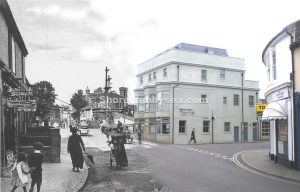
Brunswick Road Looking North Houses on the left were still residential with small front gardens in the old photo and the present day restaurant in the centre is little changed from the Burrells Hotel it once was.
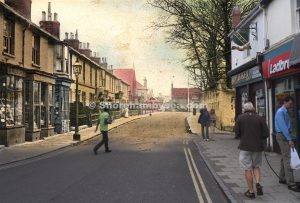 Brunswick Road Looking South A couple (middle distance, right) emerge from the somewhat neater looking Brunswick Road of 100 years ago.
Brunswick Road Looking South A couple (middle distance, right) emerge from the somewhat neater looking Brunswick Road of 100 years ago.
 Patchings Shop, High Street/West Street Corner James Patching’s hardware shop and delivery van. His horse had the rather unimaginative name of ‘Dobbin’ and was stabled in the old ropemaker’s hemp store on the corner of West Street with North Street.
Patchings Shop, High Street/West Street Corner James Patching’s hardware shop and delivery van. His horse had the rather unimaginative name of ‘Dobbin’ and was stabled in the old ropemaker’s hemp store on the corner of West Street with North Street.
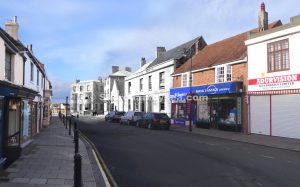 East Street looking south A photo that illustrates just how much history has been lost to the town. The Collegiate School building is no more, the ancient medieval saddlery (the gable end building) was demolished in favour of Luckings outfitters, and the Dolphin Hotel in the distance disappeared during the 1930’s road widening of the High Street – only the Ferry Inn remains.
East Street looking south A photo that illustrates just how much history has been lost to the town. The Collegiate School building is no more, the ancient medieval saddlery (the gable end building) was demolished in favour of Luckings outfitters, and the Dolphin Hotel in the distance disappeared during the 1930’s road widening of the High Street – only the Ferry Inn remains.
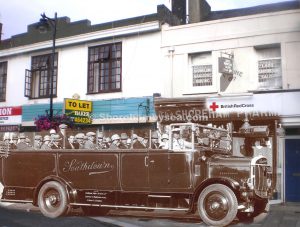 Charabanc in East Street When searching for locations of the old photos it was thought this image may have been taken in the High Street but the Shoreham Pharmacy turned out to have been in East Street
Charabanc in East Street When searching for locations of the old photos it was thought this image may have been taken in the High Street but the Shoreham Pharmacy turned out to have been in East Street
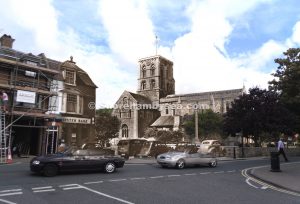 St.Mary’s from East Street Today’s cars pass by the 1950’s church – the old cars parked by the memorial would command high prices to collectors now.
St.Mary’s from East Street Today’s cars pass by the 1950’s church – the old cars parked by the memorial would command high prices to collectors now.
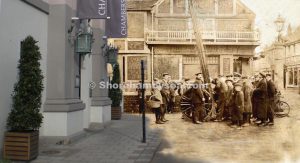 Town Hall/Royal George, High Street The ghost of the Royal George pub looks back from the past at the old town hall, now a restaurant. A new extendable ladder on wheels is being demonstrated to a fireman and onlookers – the fire station was down the access road on the left in the side of the town hall.
Town Hall/Royal George, High Street The ghost of the Royal George pub looks back from the past at the old town hall, now a restaurant. A new extendable ladder on wheels is being demonstrated to a fireman and onlookers – the fire station was down the access road on the left in the side of the town hall.
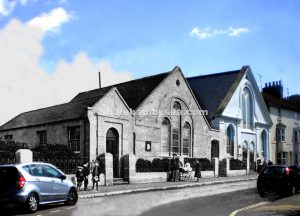 Western Road Methodist Church The early 1900’s Western Road church ghosts into the blue washed building of today.
Western Road Methodist Church The early 1900’s Western Road church ghosts into the blue washed building of today.
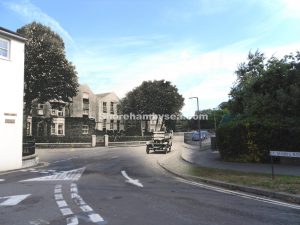 Shoreham Grammar School, Pond Road
Shoreham Grammar School, Pond Road
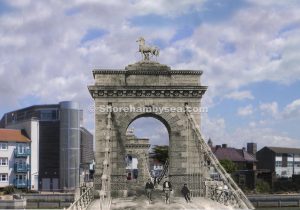 Norfolk Bridge The first Norfolk Bridge against the backdrop of modern Ropetackle and Shoreham High Street.
Norfolk Bridge The first Norfolk Bridge against the backdrop of modern Ropetackle and Shoreham High Street.
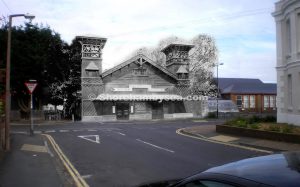 Swiss Gardens Entrance, Victoria Road The main entrance to the Gardens stood along Victoria Road opposite Hebe Road at the junction with Swiss Gardens – the school is on the right.
Swiss Gardens Entrance, Victoria Road The main entrance to the Gardens stood along Victoria Road opposite Hebe Road at the junction with Swiss Gardens – the school is on the right.
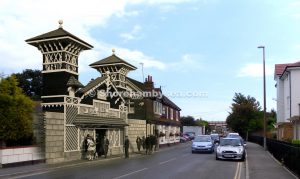 Swiss Gardens Old Shoreham Road Entrance The second entrance to the Gardens shown here in the 1920’s when it was part of the Swiss Cottage pub. Looking in pristine condition then it must have been recently refurbished. Since then it became neglected and later demolished as unsafe.
Swiss Gardens Old Shoreham Road Entrance The second entrance to the Gardens shown here in the 1920’s when it was part of the Swiss Cottage pub. Looking in pristine condition then it must have been recently refurbished. Since then it became neglected and later demolished as unsafe.
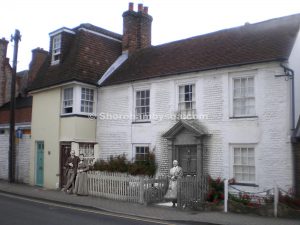 John Street Local legend has it that the protruding end of these houses in John Street was built when smuggling was common to provide the occupants watching out for Excise Men with a clear view down the street. Even if that is true the late 19th century occupants shown here were more upright members of Shoreham society.
John Street Local legend has it that the protruding end of these houses in John Street was built when smuggling was common to provide the occupants watching out for Excise Men with a clear view down the street. Even if that is true the late 19th century occupants shown here were more upright members of Shoreham society.
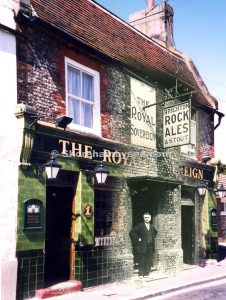 Royal Sovereign, Middle Street The diminutive figure of 1920’s landlord Harry Bish looks out from beneath the old pub sign. The centre door and porch has since been replaced with a window.
Royal Sovereign, Middle Street The diminutive figure of 1920’s landlord Harry Bish looks out from beneath the old pub sign. The centre door and porch has since been replaced with a window.
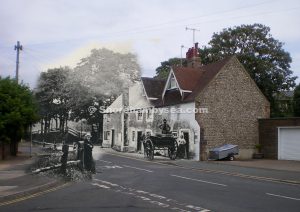 Trinity Cottages, Southdown Road The cottages were used as a barracks for a few years by officers of the 1st Regiment of the King’s Dragoon Guards during the Napoleonic Wars when fears of a French invasion was rife. More usually they have accommodated agricultural workers and their families who worked on the surrounding land that was still fields and open countryside until well into the 20th century.
Trinity Cottages, Southdown Road The cottages were used as a barracks for a few years by officers of the 1st Regiment of the King’s Dragoon Guards during the Napoleonic Wars when fears of a French invasion was rife. More usually they have accommodated agricultural workers and their families who worked on the surrounding land that was still fields and open countryside until well into the 20th century.
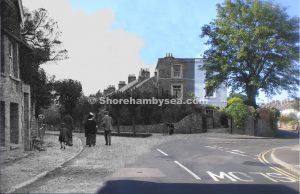 Southdown Road Looking South The end of Trinity Cottages are on the left and this view down Southdown Road has not altered much except that the newly planted street trees then are now much larger as the modern picture shows.
Southdown Road Looking South The end of Trinity Cottages are on the left and this view down Southdown Road has not altered much except that the newly planted street trees then are now much larger as the modern picture shows.
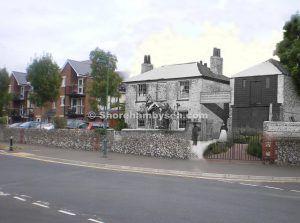
Southdown Nurseries, Southdown Road Near the bottom of Southdown Road where the St.Pauls apartments are now the Peake family ran Southdown Nursery and Dairy. Charles Peake and his wife stand out in the snow whilst another member of the family looks out of the top, right window.
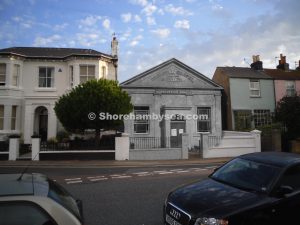 Wesleyan Chapel, New Road The Wesleyan Chapel was built in 1829 and later used by the Salvation Army. Shown here nearer the time of it’s demolition with one window already broken.
Wesleyan Chapel, New Road The Wesleyan Chapel was built in 1829 and later used by the Salvation Army. Shown here nearer the time of it’s demolition with one window already broken.
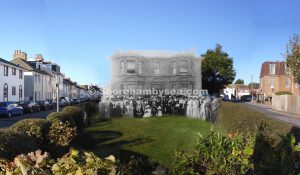 Athol House, New Road/Tarmount Lane In between New Road and Tarmount Lane where the Swanborough Court apartments are now once stood Athol House. Originally built for the owner of the Derby winner ‘Blair Athol’ it reappears here during a 1904 party held by the then owner Major. T.B. Gates, one of Shoreham’s largest shipowners.
Athol House, New Road/Tarmount Lane In between New Road and Tarmount Lane where the Swanborough Court apartments are now once stood Athol House. Originally built for the owner of the Derby winner ‘Blair Athol’ it reappears here during a 1904 party held by the then owner Major. T.B. Gates, one of Shoreham’s largest shipowners.
 Lifeboat at Surrey Street The lifeboat William Restell II where New Road meets Surrey Street circa 1905.
Lifeboat at Surrey Street The lifeboat William Restell II where New Road meets Surrey Street circa 1905.
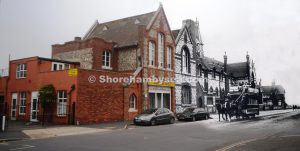 Ham Road School and Horse Drawn Tram c.1900
Ham Road School and Horse Drawn Tram c.1900
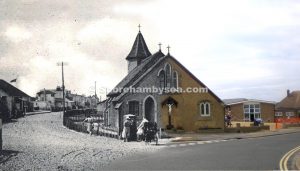 Church of the Good Shepherd, Shoreham Beach The church itself is still much as it was in the 1920’s before the Beach was cleared of most of it’s other buildings during WW2 – pebbles on the roads must have made it difficult to walk on.
Church of the Good Shepherd, Shoreham Beach The church itself is still much as it was in the 1920’s before the Beach was cleared of most of it’s other buildings during WW2 – pebbles on the roads must have made it difficult to walk on.
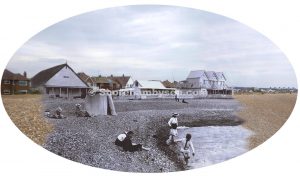 Bungalows on the Beach, Kings Walk La Vague, Mona and Villa Lido were named bungalows that stood on the pebbles of the beach itself where King’s Walk is now – in the distance the distinctive roof of today’s Atlantic Court can be seen
Bungalows on the Beach, Kings Walk La Vague, Mona and Villa Lido were named bungalows that stood on the pebbles of the beach itself where King’s Walk is now – in the distance the distinctive roof of today’s Atlantic Court can be seen
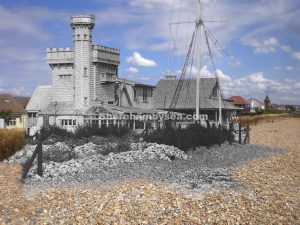 Rhodesia Bungalow, West Beach Road , Shoreham Beach Probably the best known and most photographed of all the old bungalows is ‘Rhodesia’ which stood on what is now West Beach Road just west of the church seen here in the distance. Burnt down in 1923 it was replaced with a much smaller, mundane looking bungalow that was named ‘Castledene’ in memory of its predecessor. The story of Rhodesia can be seen in the article:-http://www.shorehambysea.com/rhodesia-special-bungalow/
Rhodesia Bungalow, West Beach Road , Shoreham Beach Probably the best known and most photographed of all the old bungalows is ‘Rhodesia’ which stood on what is now West Beach Road just west of the church seen here in the distance. Burnt down in 1923 it was replaced with a much smaller, mundane looking bungalow that was named ‘Castledene’ in memory of its predecessor. The story of Rhodesia can be seen in the article:-http://www.shorehambysea.com/rhodesia-special-bungalow/
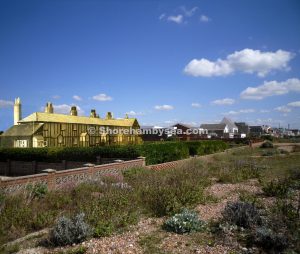 Blockhouse, Shoreham Beach By the Ferry Road entrance to the beach there once stood a terrace of houses originally built to house officers and their families during the anti smuggling blockade days shortly after the Napoleonic Wars. Demolished in the 1920’s.
Blockhouse, Shoreham Beach By the Ferry Road entrance to the beach there once stood a terrace of houses originally built to house officers and their families during the anti smuggling blockade days shortly after the Napoleonic Wars. Demolished in the 1920’s.
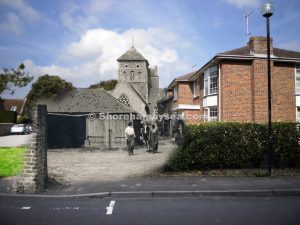 Frampton Farm, Old Shoreham The area of the old stables of the farm are now occupied by these houses in St.Nicolas Lane.
Frampton Farm, Old Shoreham The area of the old stables of the farm are now occupied by these houses in St.Nicolas Lane.
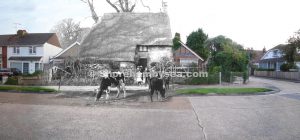 Slater’s Cottage, Connaught Avenue, Old Shoreham When Connaught Avenue was just a cinder track this old thatched cottage stood on the north-east corner of the Avenue with Colvill Avenue. Demolished in the 1930’s.
Slater’s Cottage, Connaught Avenue, Old Shoreham When Connaught Avenue was just a cinder track this old thatched cottage stood on the north-east corner of the Avenue with Colvill Avenue. Demolished in the 1930’s.
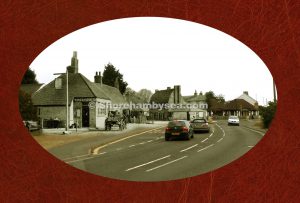 Red Lion & Amsterdam, Old Shoreham Constant traffic is now a regular feature of what was once a tranquil part of Old Shoreham.
Red Lion & Amsterdam, Old Shoreham Constant traffic is now a regular feature of what was once a tranquil part of Old Shoreham.
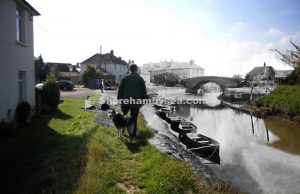 Beeding/Bramber Bridge A walker and his dog from the present approach the locals of the early 1900’s – then a popular venue where boats could be hired.
Beeding/Bramber Bridge A walker and his dog from the present approach the locals of the early 1900’s – then a popular venue where boats could be hired.
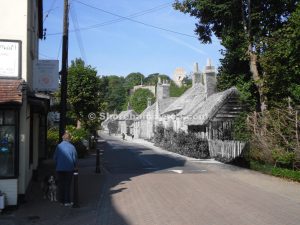 The Street, Bramber Bramber has been much less touched than Shoreham by the devastating demolition policies of past councils. Of the buildings on the right, only the wooden barn nearest the camera has been replaced but with a dwelling very similar in appearance to the barn.
The Street, Bramber Bramber has been much less touched than Shoreham by the devastating demolition policies of past councils. Of the buildings on the right, only the wooden barn nearest the camera has been replaced but with a dwelling very similar in appearance to the barn.
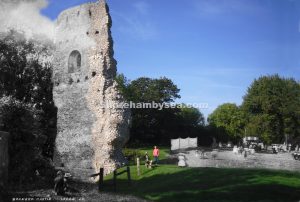 Bramber Castle A small fair with swings and side-stalls was once a regular attraction in the castle grounds. The woman and her dog look round at the victorian ghost girl running excitedly towards her father and brother sitting by the ruined tower.
Bramber Castle A small fair with swings and side-stalls was once a regular attraction in the castle grounds. The woman and her dog look round at the victorian ghost girl running excitedly towards her father and brother sitting by the ruined tower.
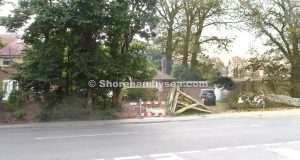 Kingston Lane, Southwick The entrance to New Field once stood at the modern day entrance to Old Rectory Gardens. A place then surrounded by fields with St.Michael’s just visible in the distance where once a Southwick girl knelt down to read a story to her young charges.
Kingston Lane, Southwick The entrance to New Field once stood at the modern day entrance to Old Rectory Gardens. A place then surrounded by fields with St.Michael’s just visible in the distance where once a Southwick girl knelt down to read a story to her young charges.
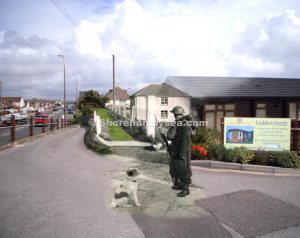 Golden Sands, Lancing A WW2 sentry and friend at the entrance to Golden Sands caravan park.
Golden Sands, Lancing A WW2 sentry and friend at the entrance to Golden Sands caravan park.
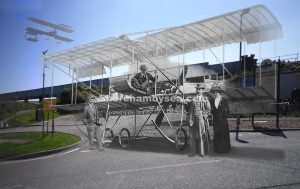 Bristol Box Kite, Shoreham Airport Using this old postcard and aligning the bridge in it to the bridge in the modern photo we can see exactly where this aircraft was standing over 100 years ago. They say each picture tells its own story and this one tells us that the main flying activity then was always in the south-east corner of the airfield. Oscar Morison is the pilot, dressed as if for a stroll down the High Street. Oscar was one of Shoreham’s pioneer aviators and later married a Shoreham girl. Frank Rowe, a Shoreham photographer, newsagent and postcard manufacturer, is on the right with his wife. When WW1 broke out Frank joined the Royal Flying Corps as a photographer in reconnaissance aircraft. He suffered injury when his aircraft was enveloped by a mustard gas cloud during one flight which was ultimately responsible for his death a few years later.
Bristol Box Kite, Shoreham Airport Using this old postcard and aligning the bridge in it to the bridge in the modern photo we can see exactly where this aircraft was standing over 100 years ago. They say each picture tells its own story and this one tells us that the main flying activity then was always in the south-east corner of the airfield. Oscar Morison is the pilot, dressed as if for a stroll down the High Street. Oscar was one of Shoreham’s pioneer aviators and later married a Shoreham girl. Frank Rowe, a Shoreham photographer, newsagent and postcard manufacturer, is on the right with his wife. When WW1 broke out Frank joined the Royal Flying Corps as a photographer in reconnaissance aircraft. He suffered injury when his aircraft was enveloped by a mustard gas cloud during one flight which was ultimately responsible for his death a few years later.
 A Ghost of the Future?
A Ghost of the Future?
You can find more animated ghost images here.
